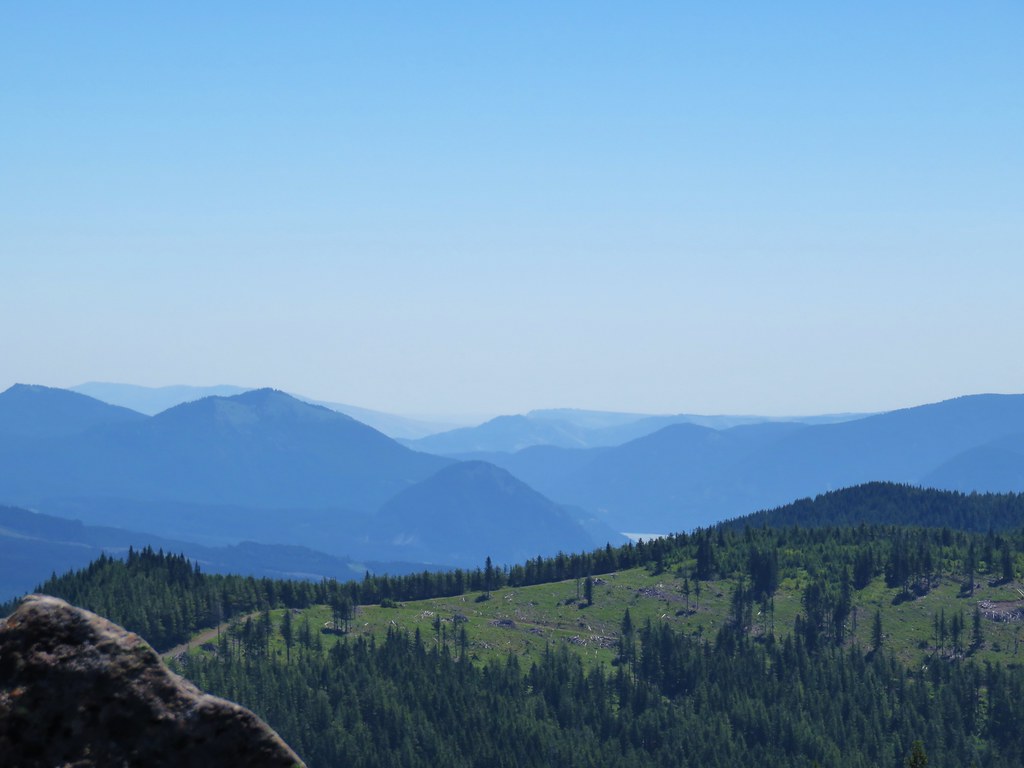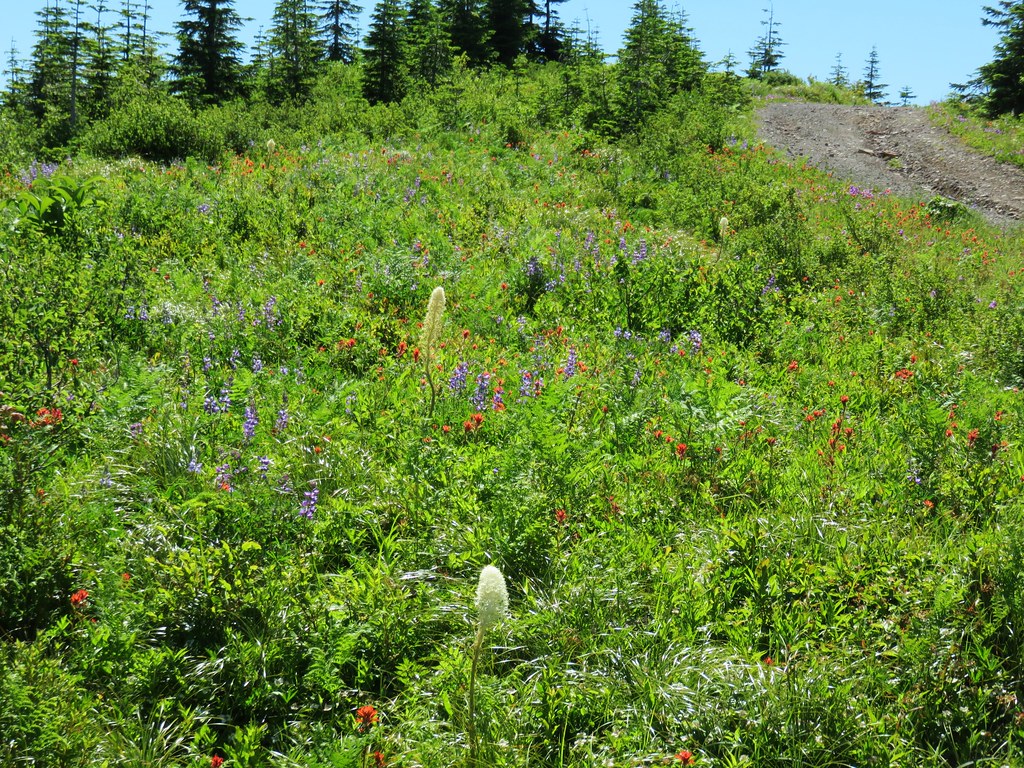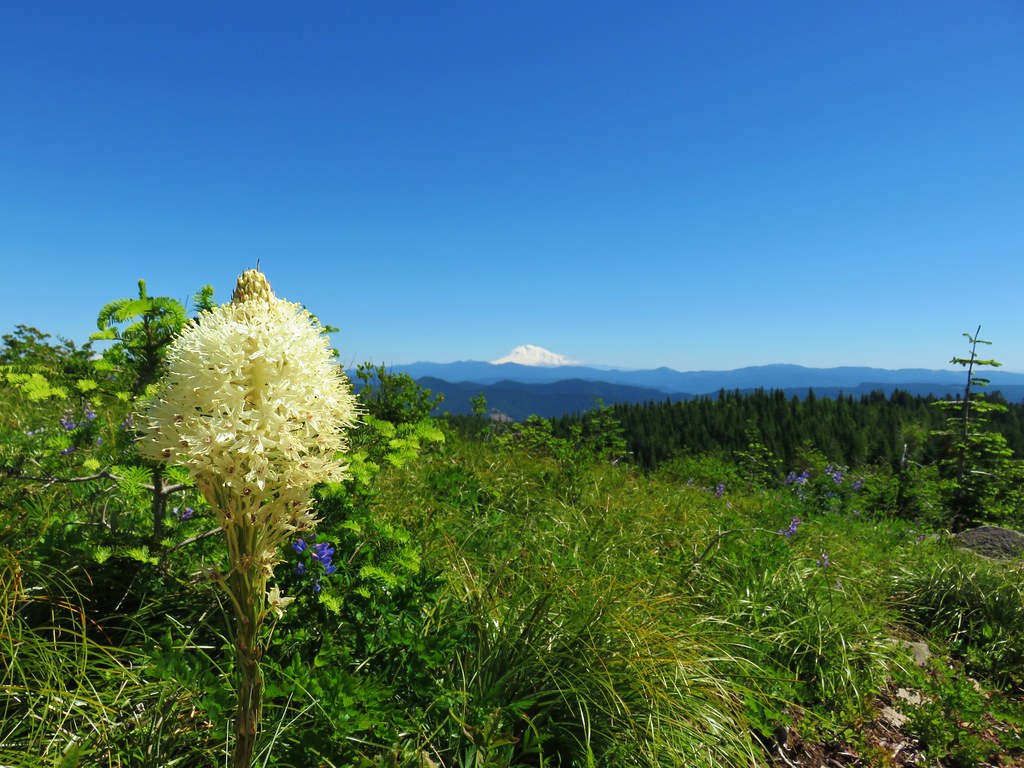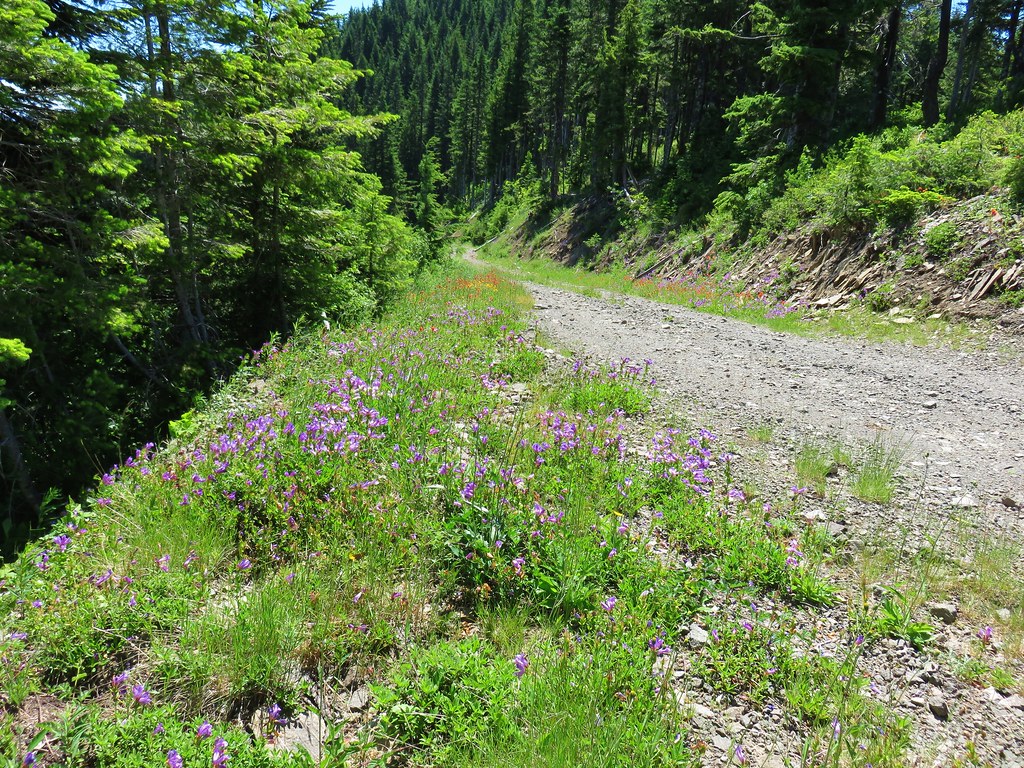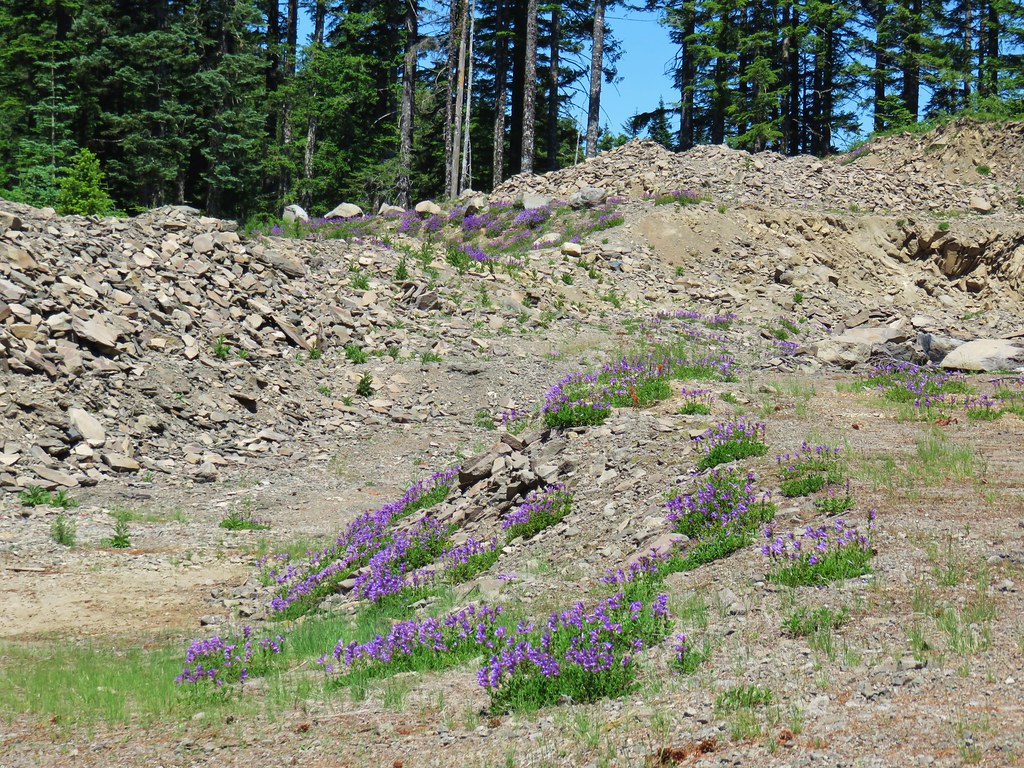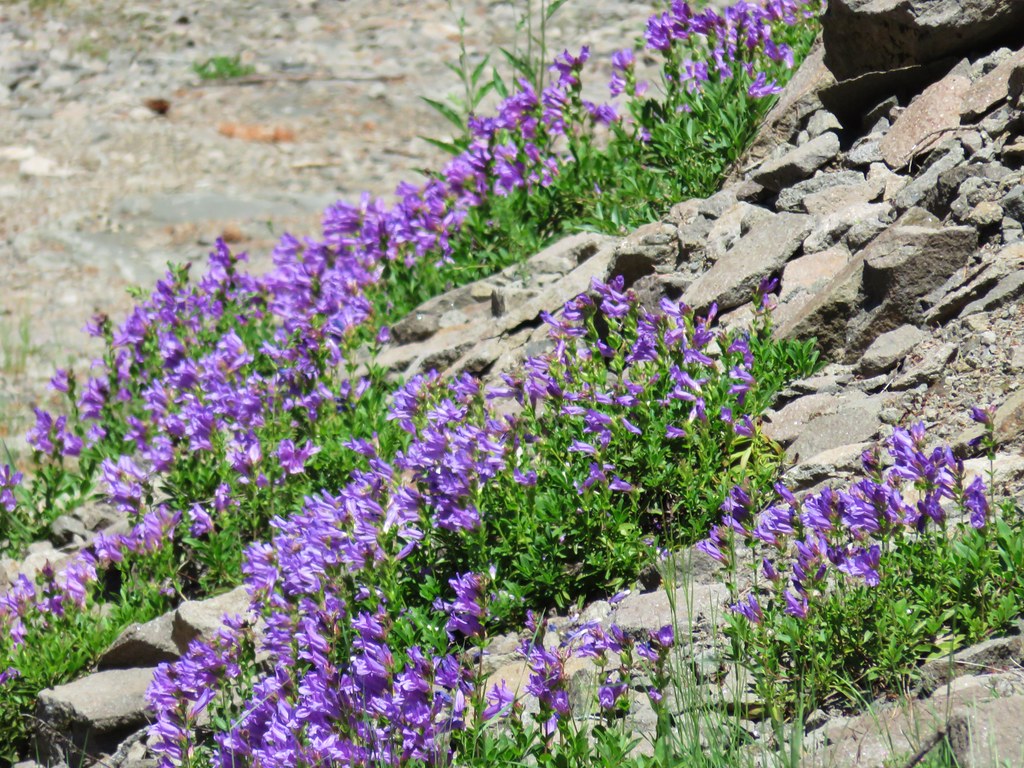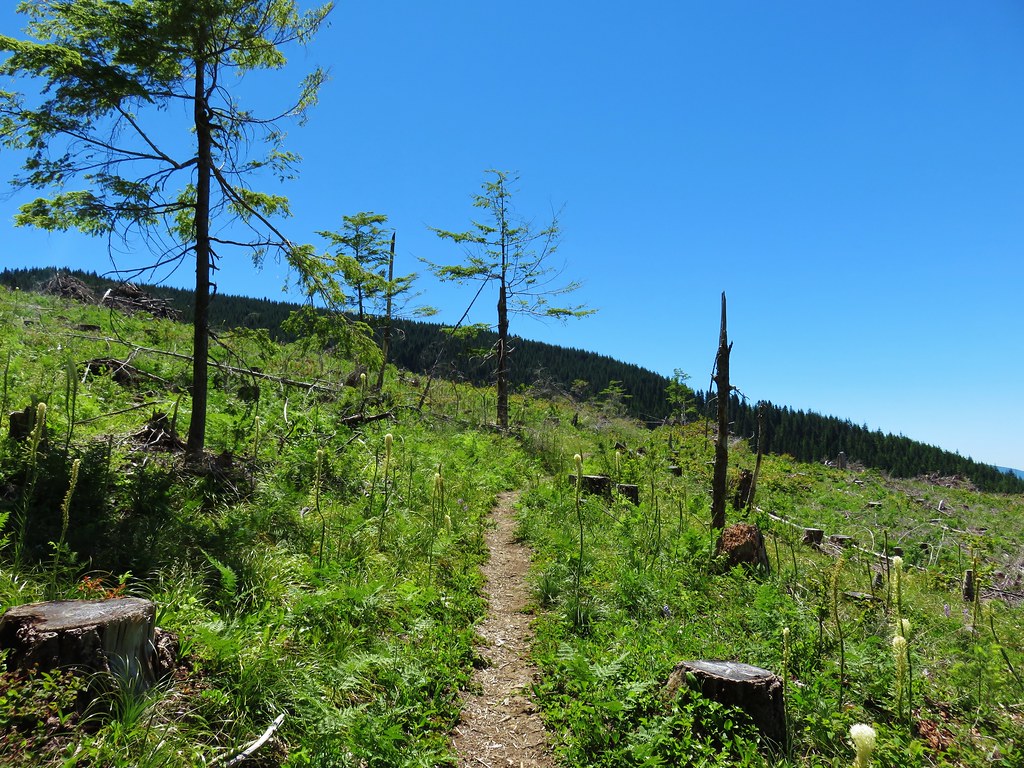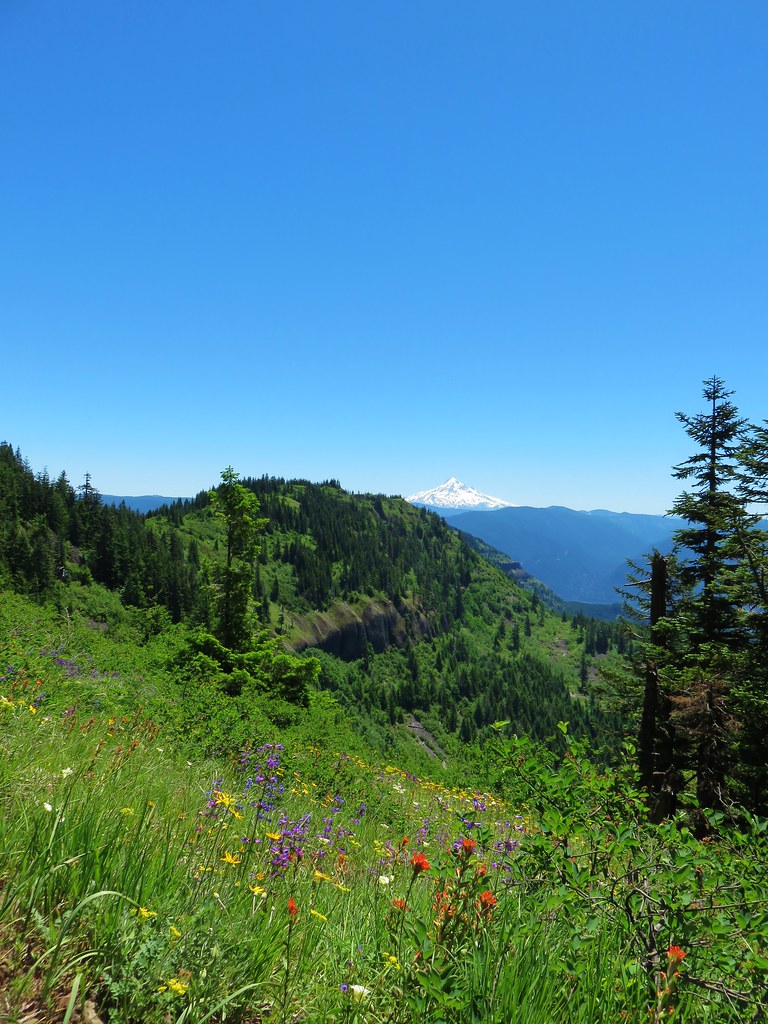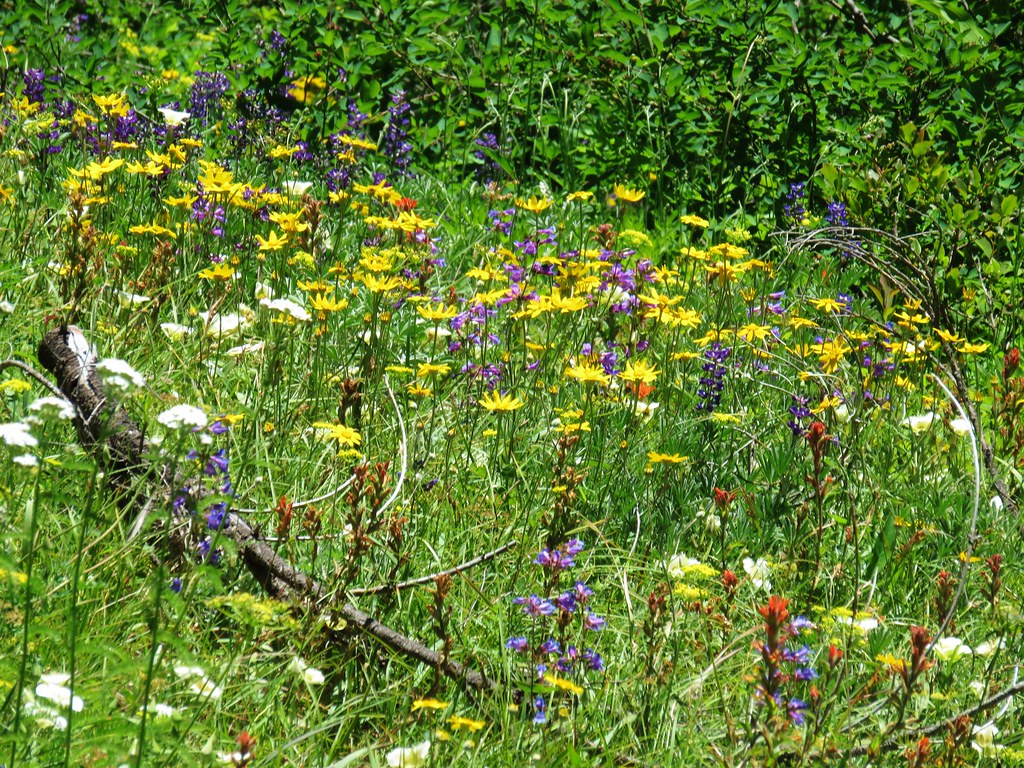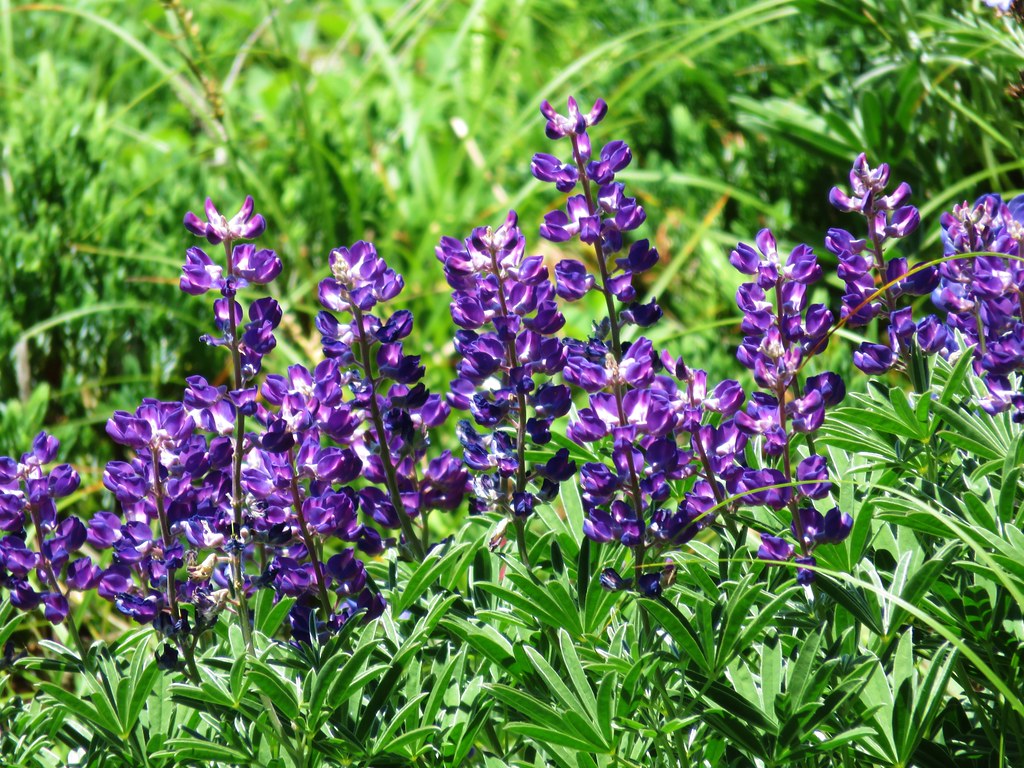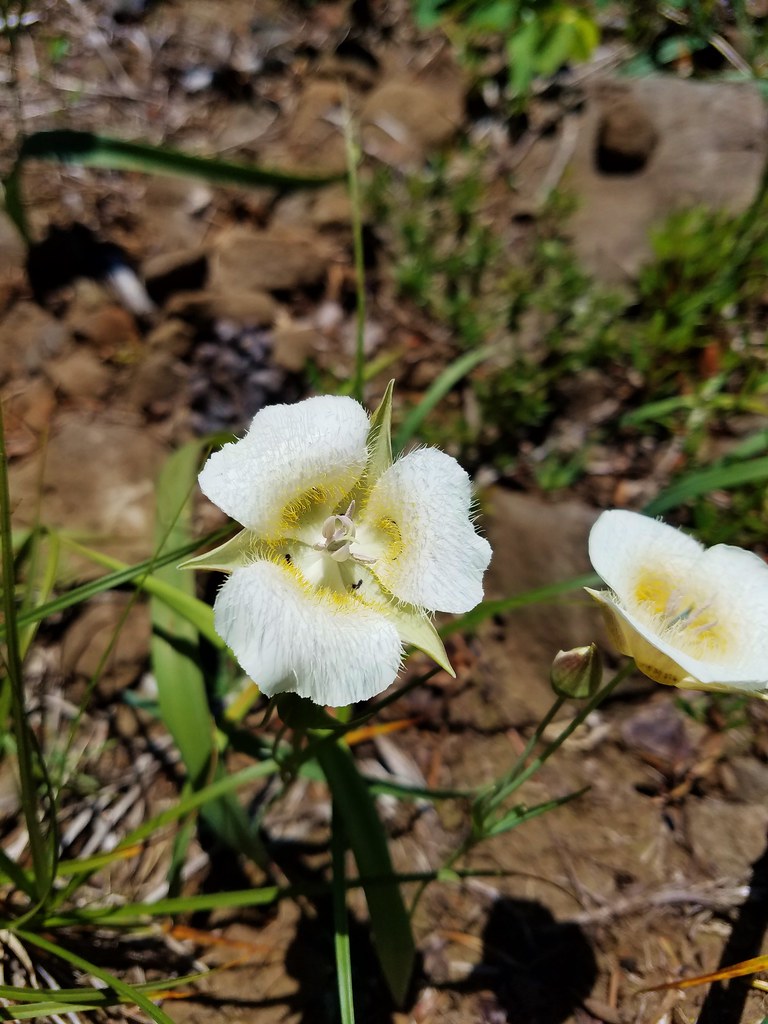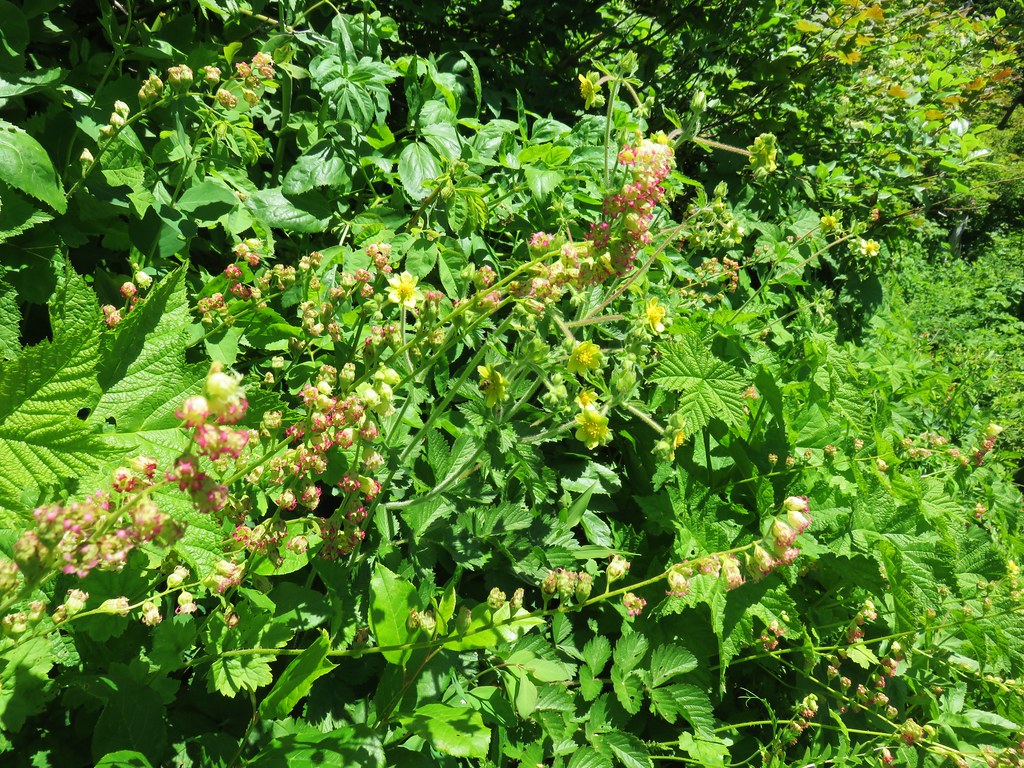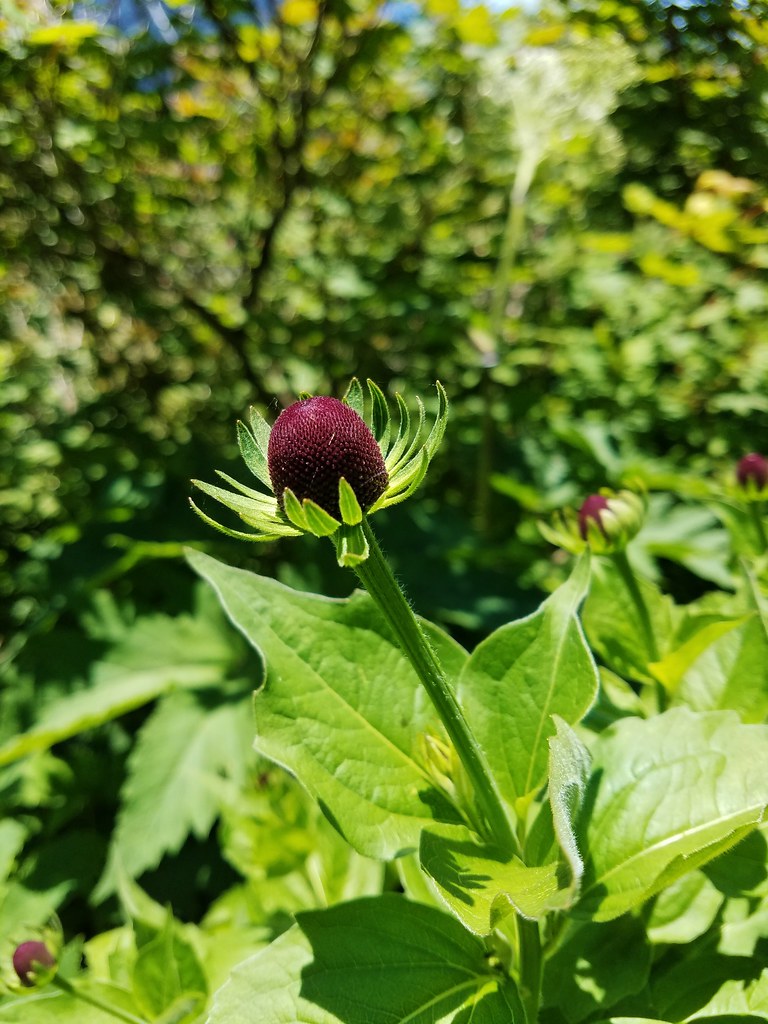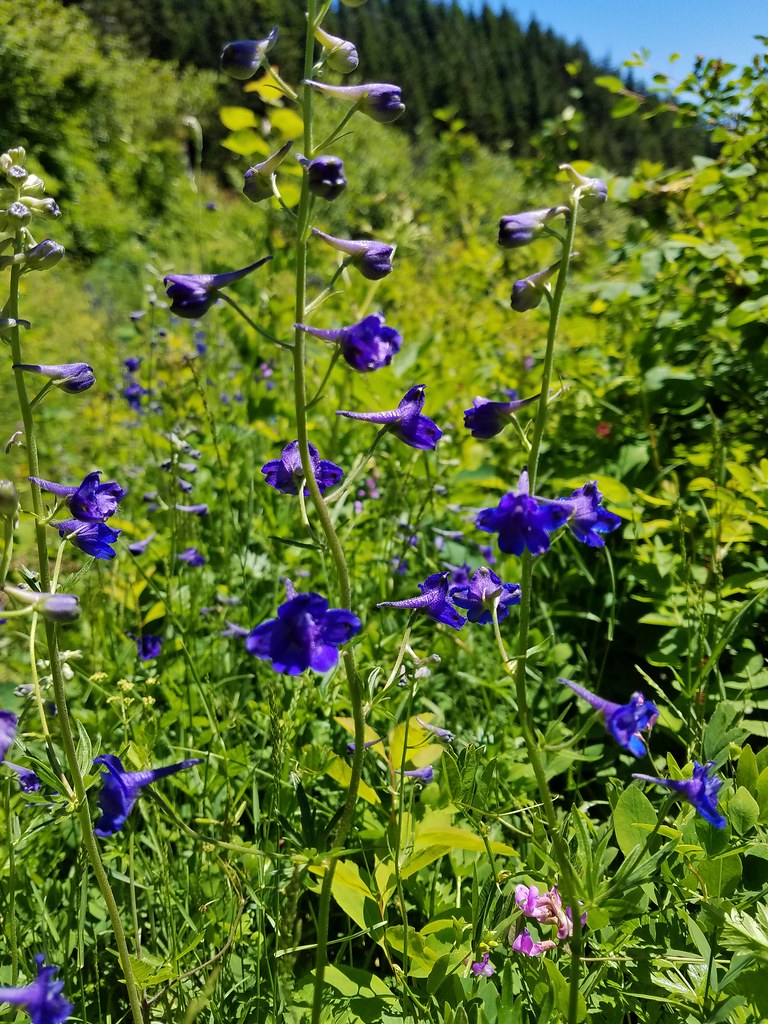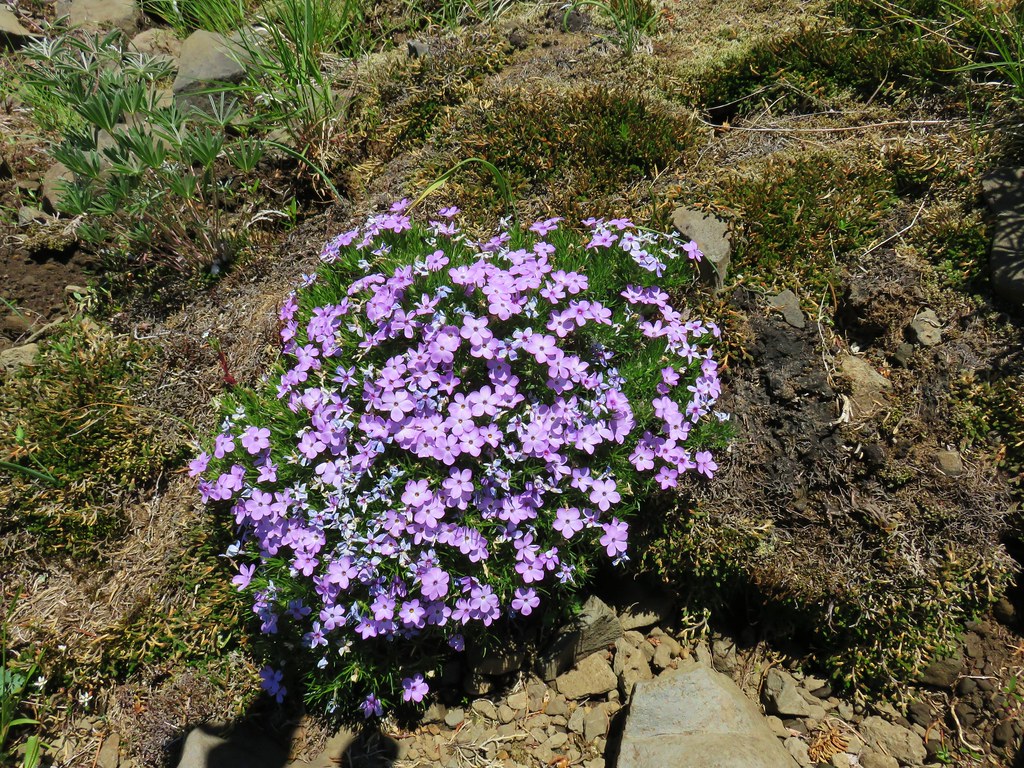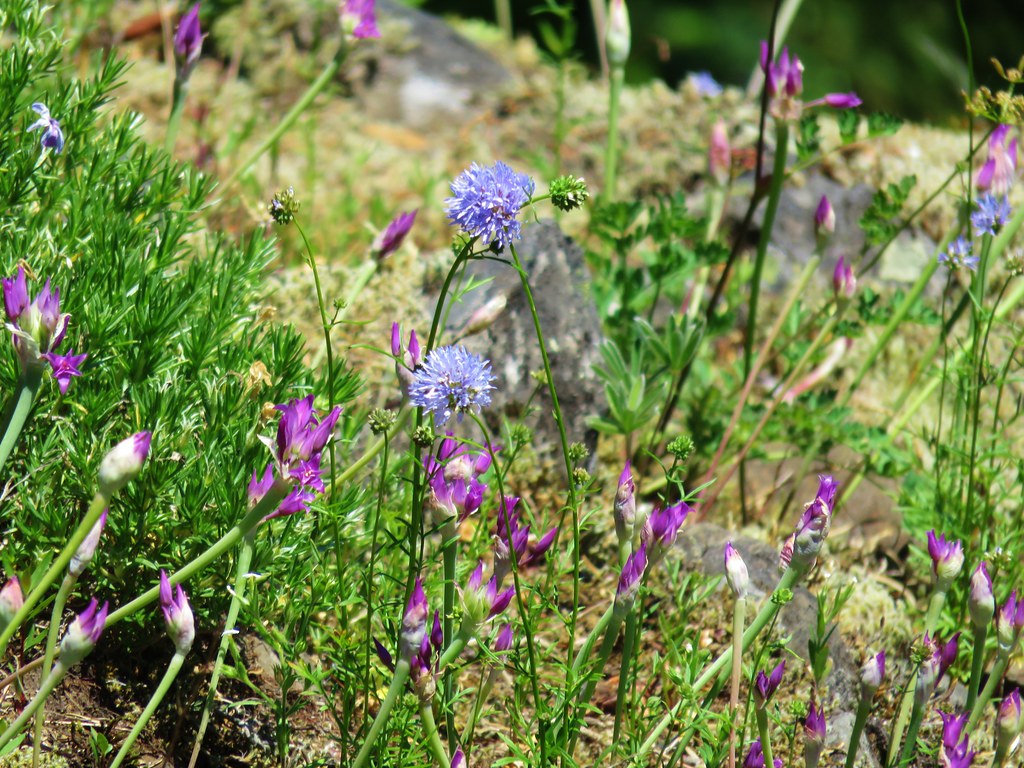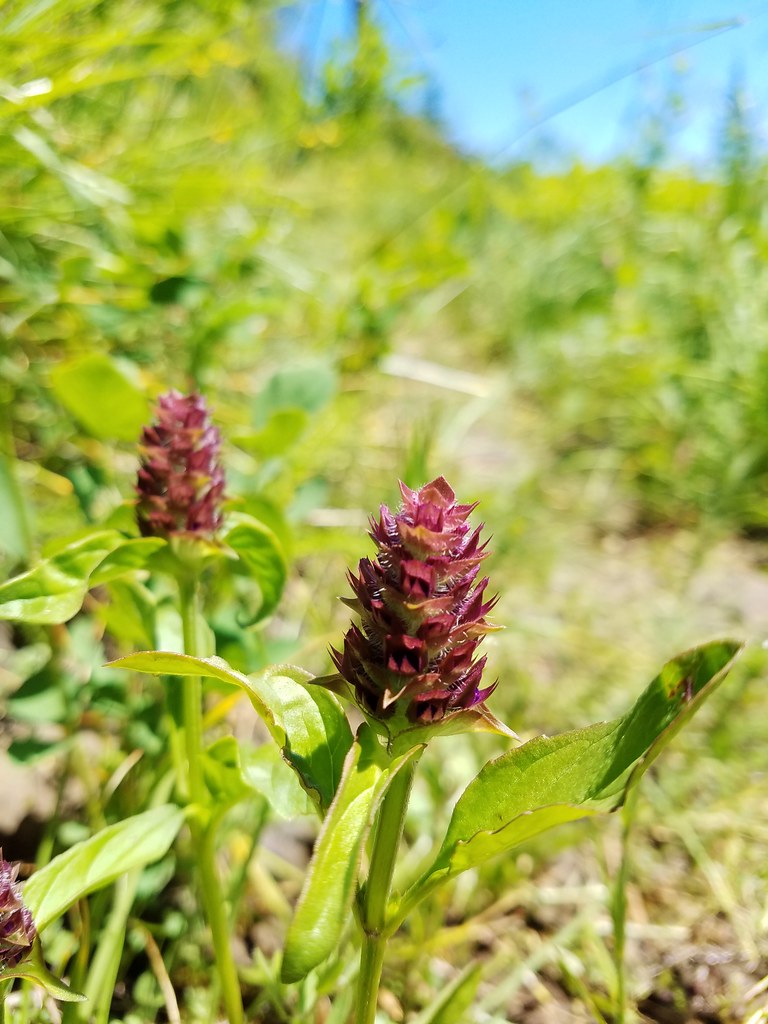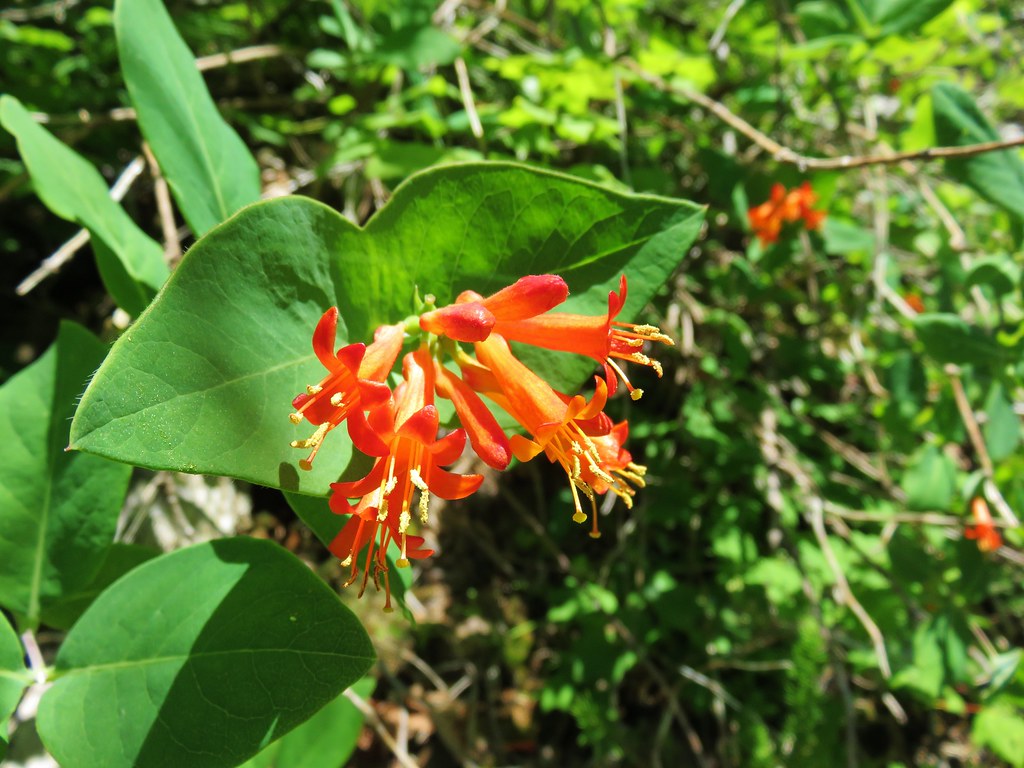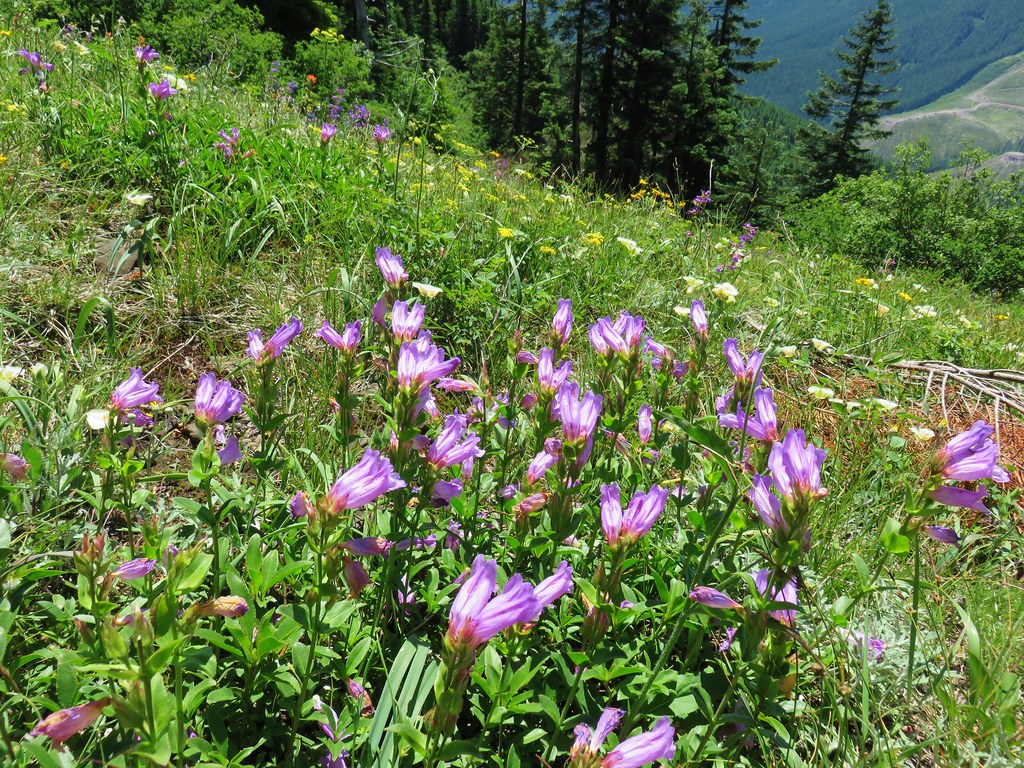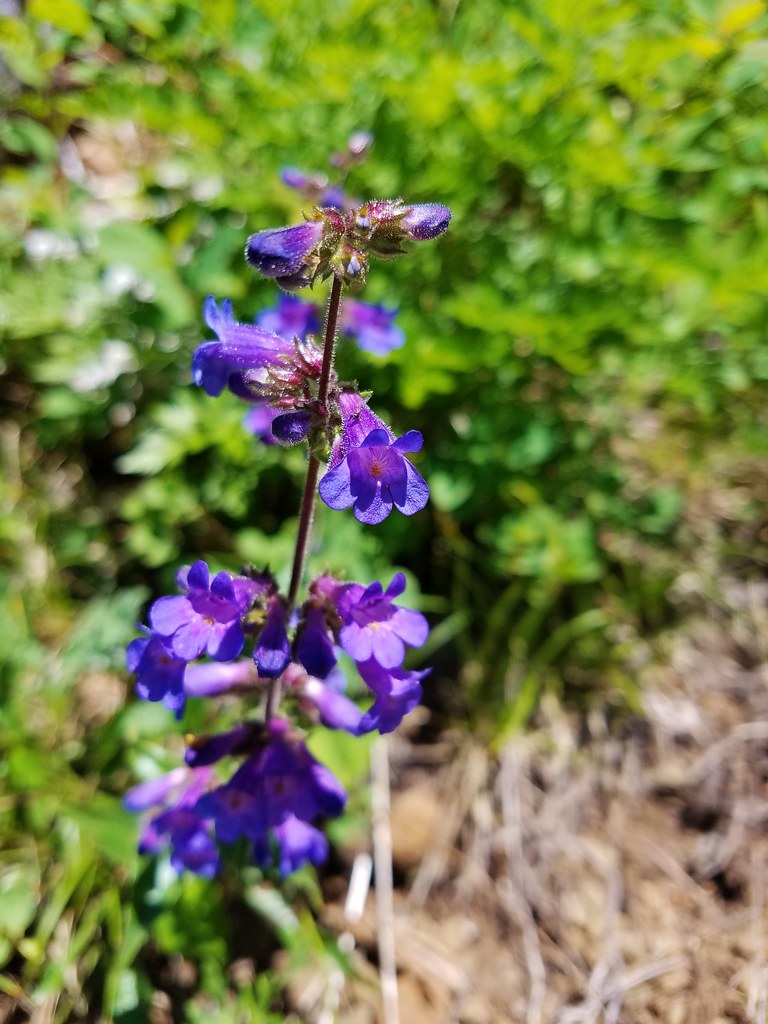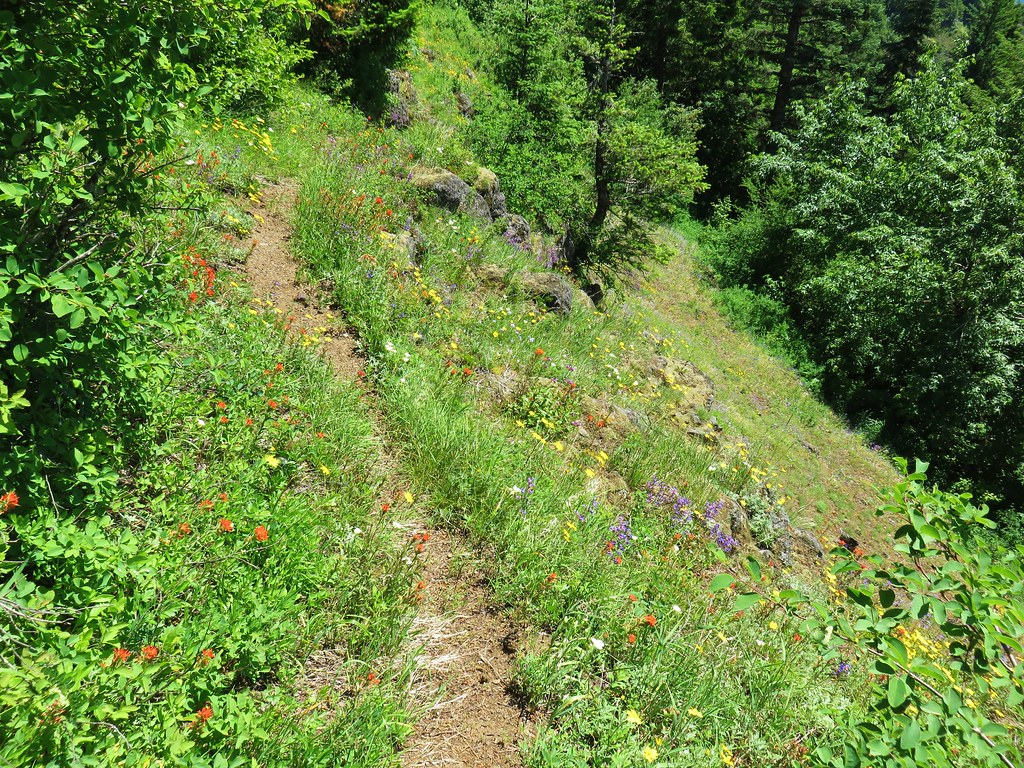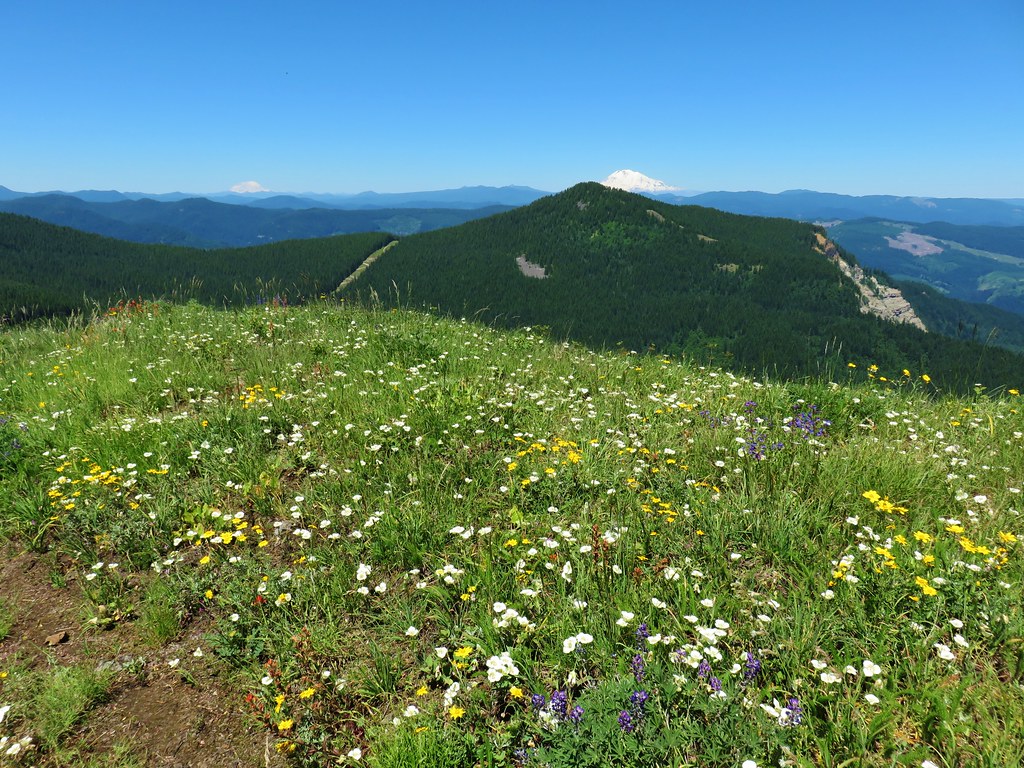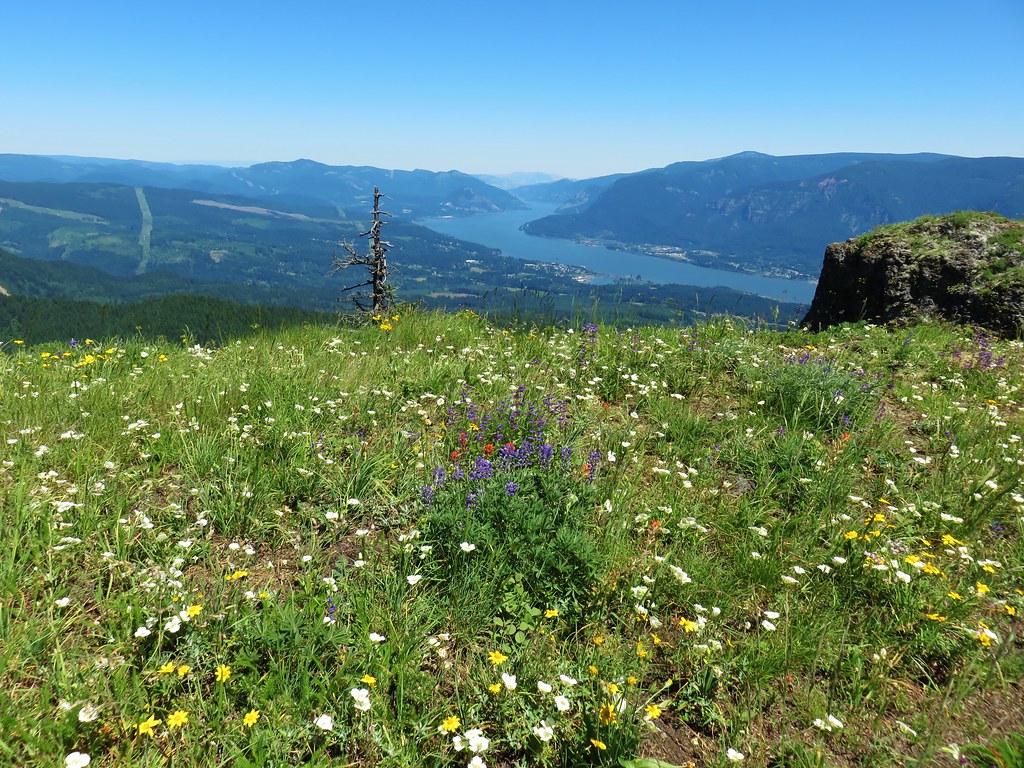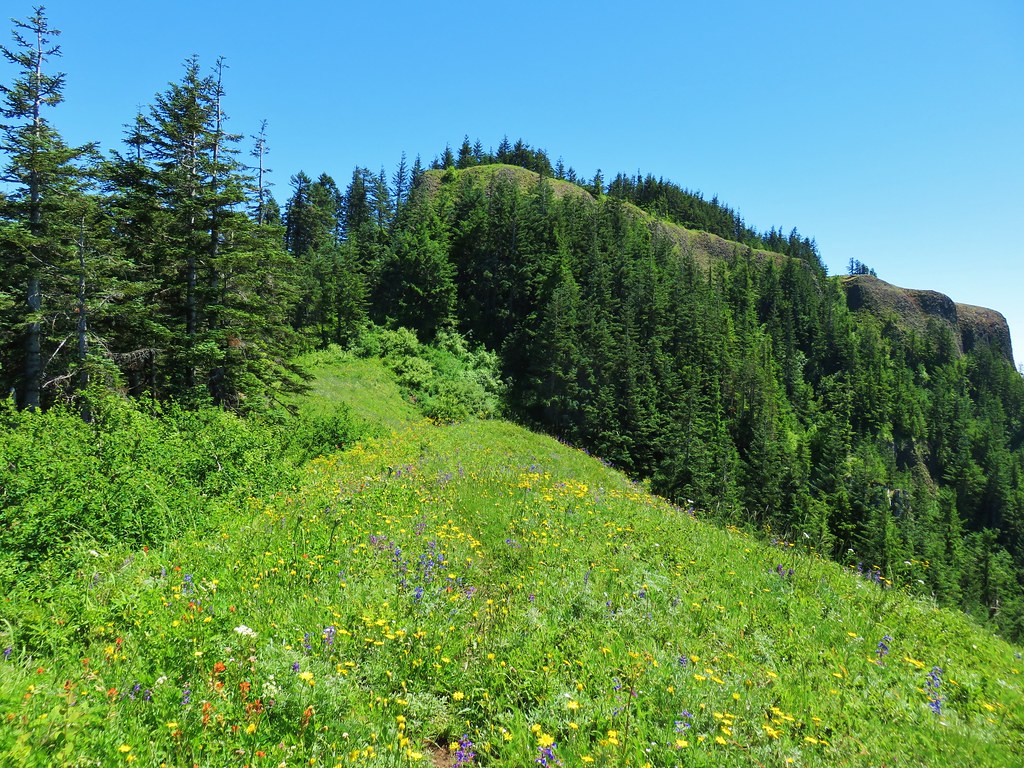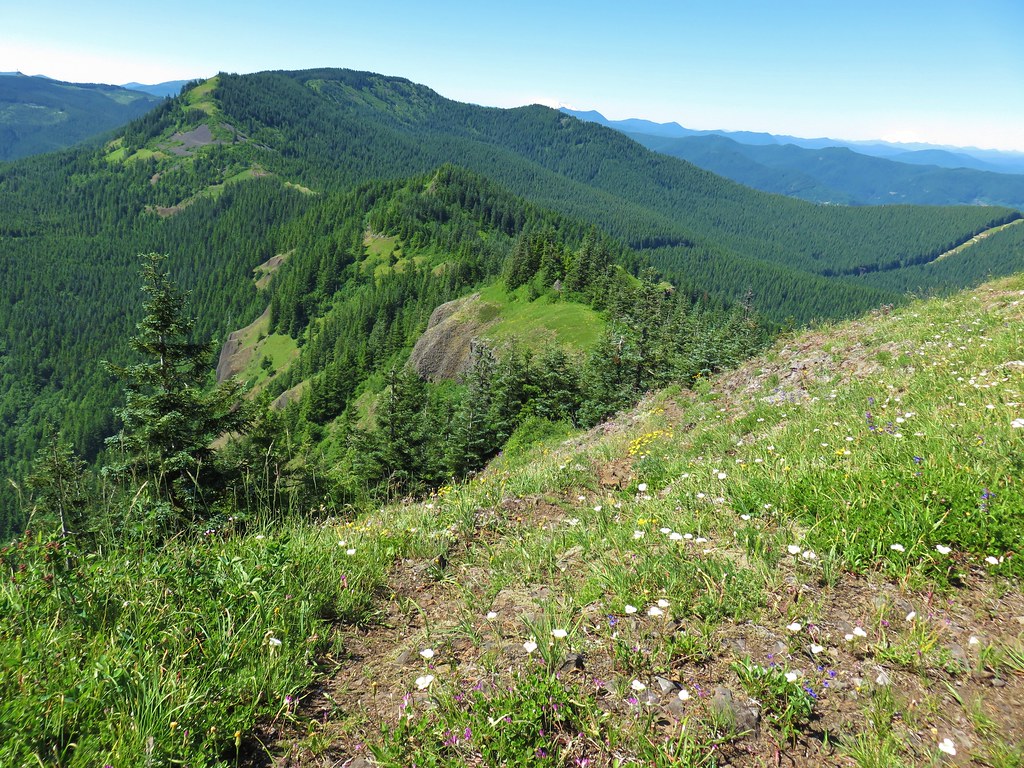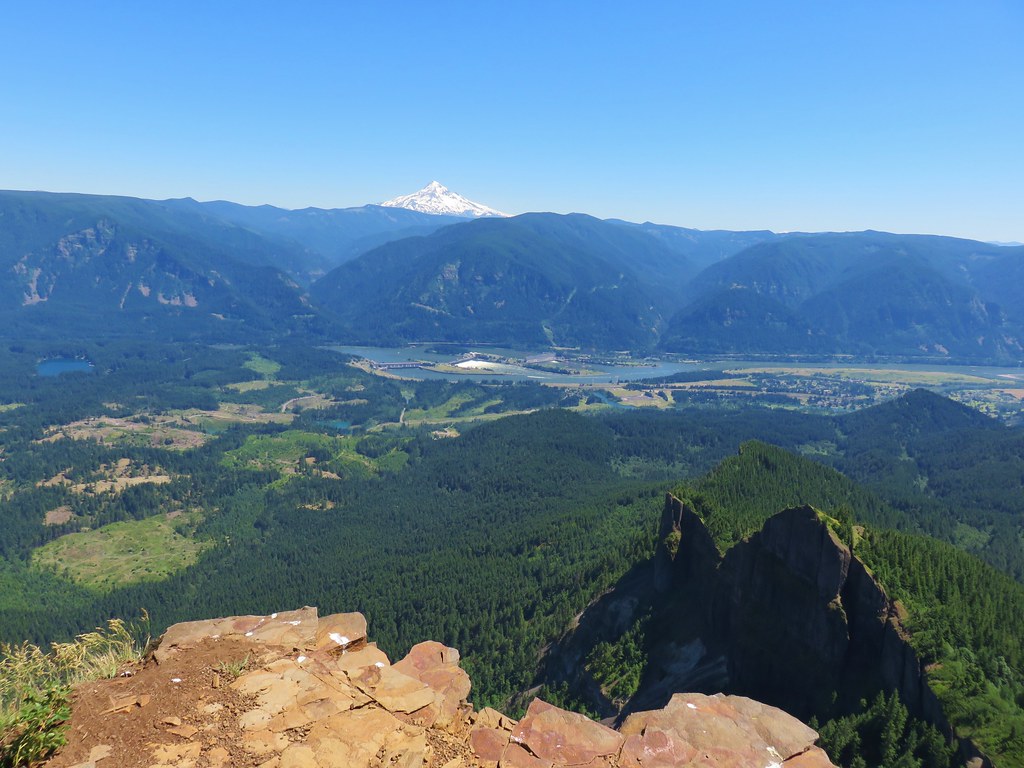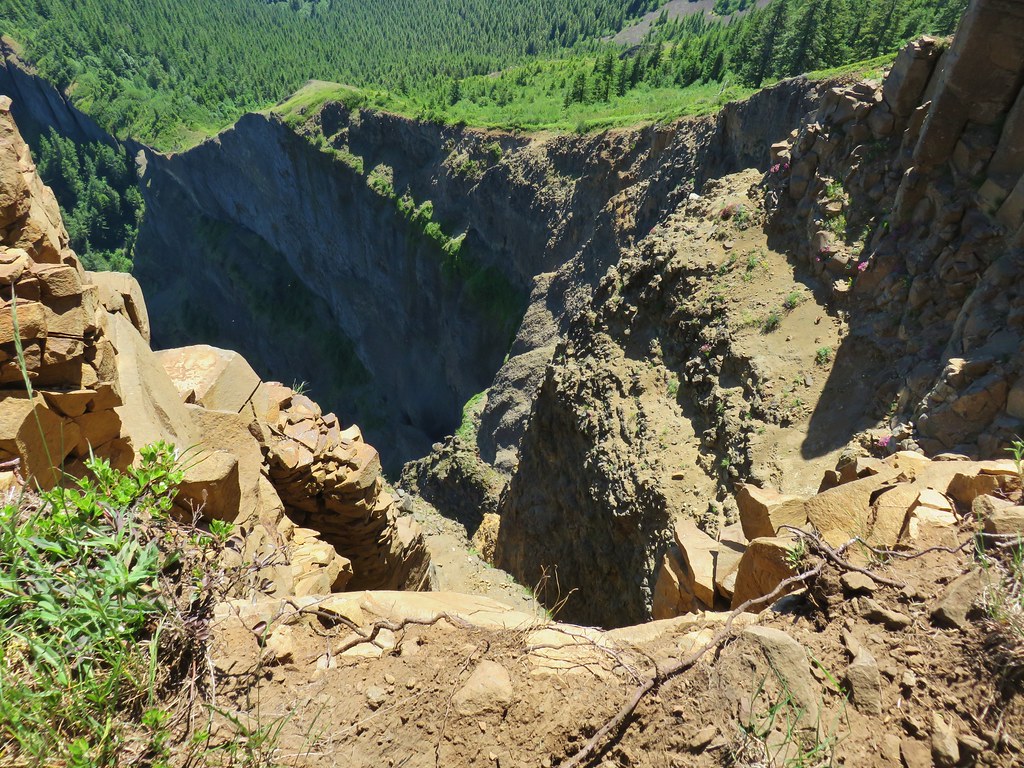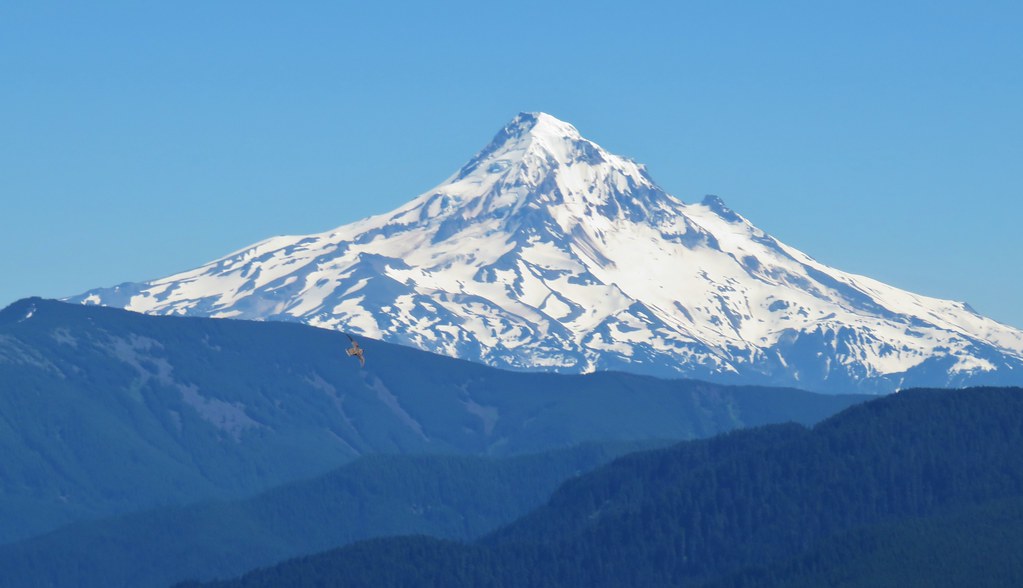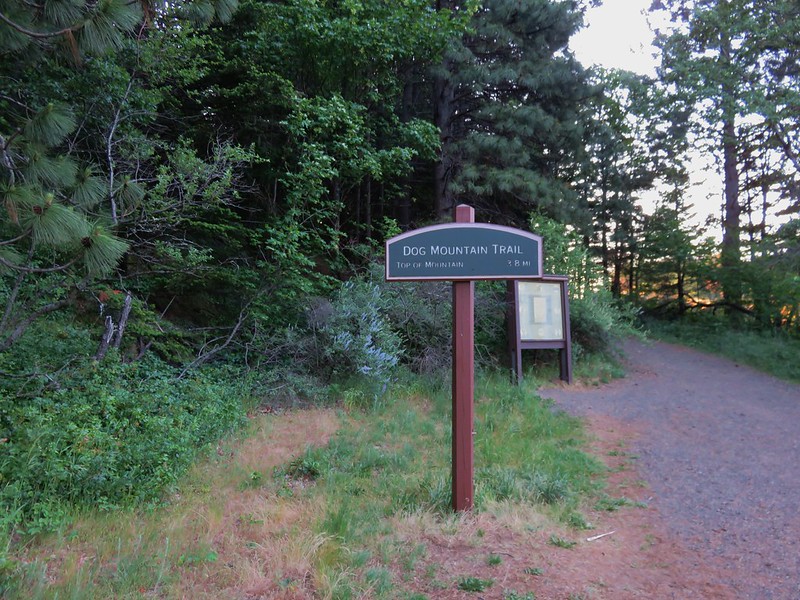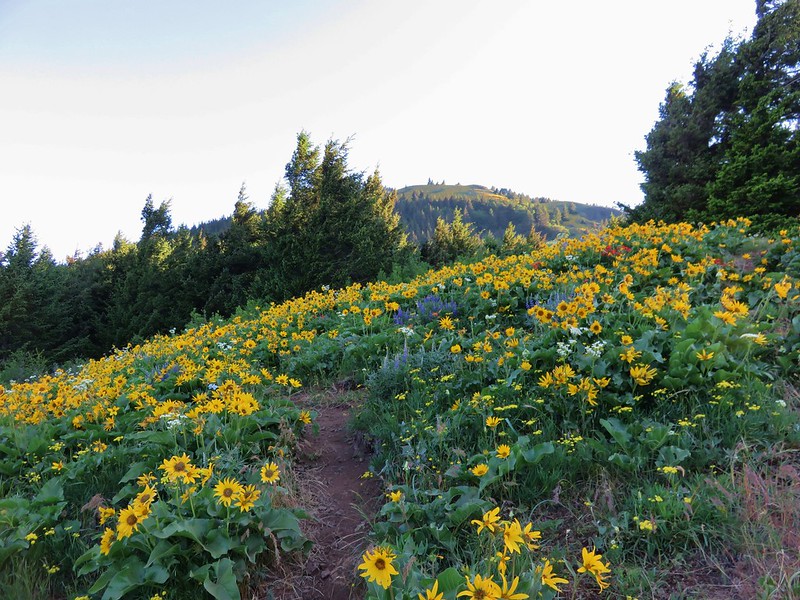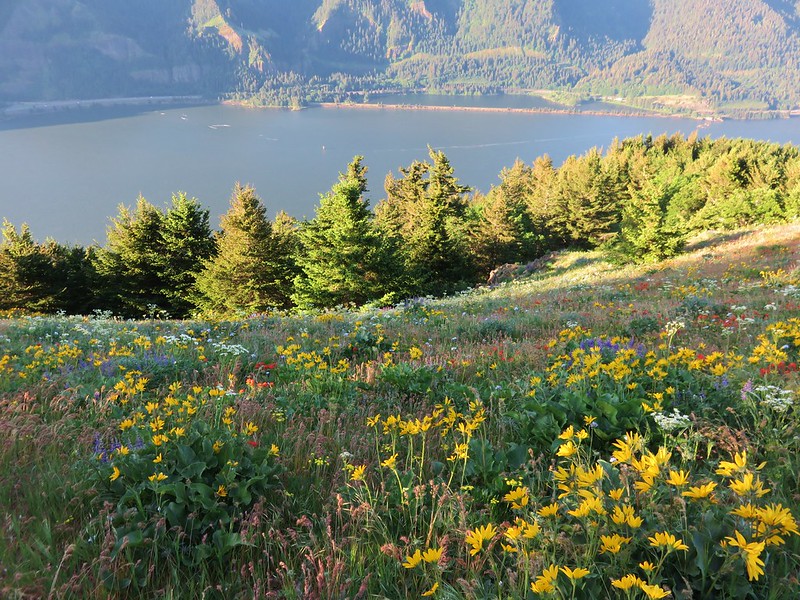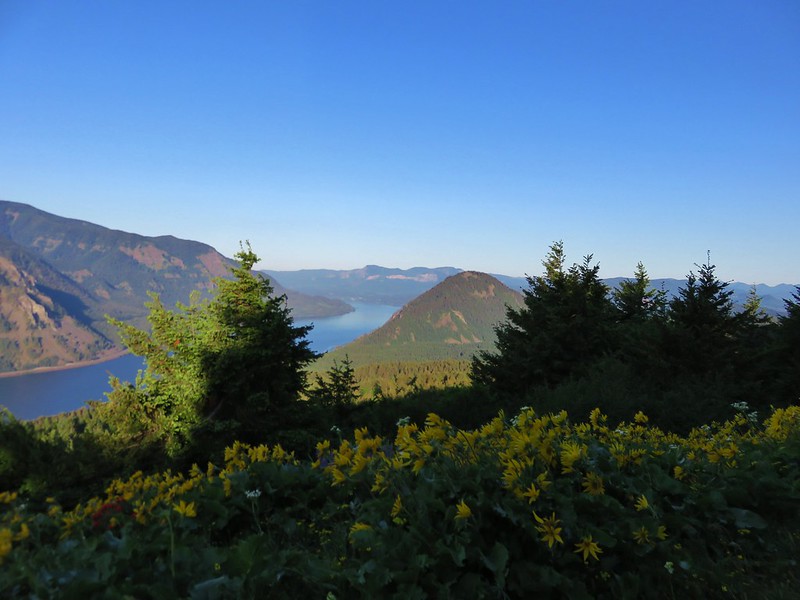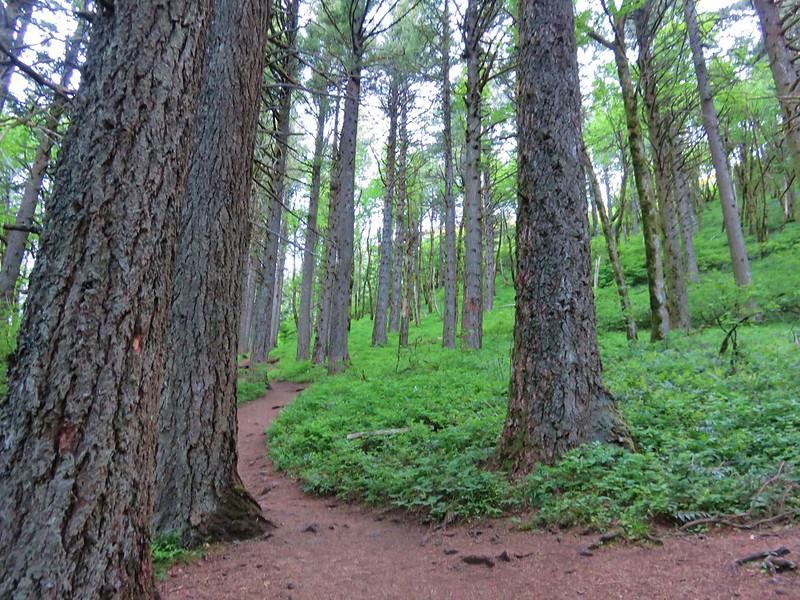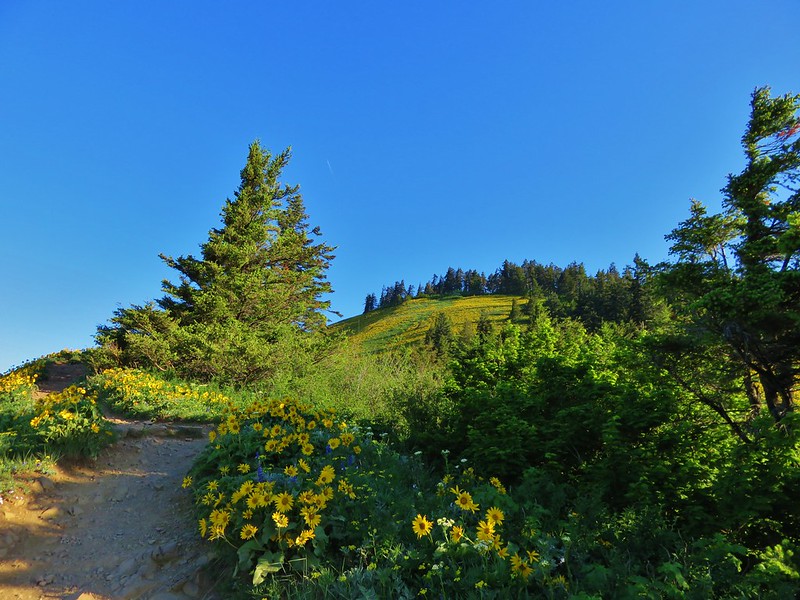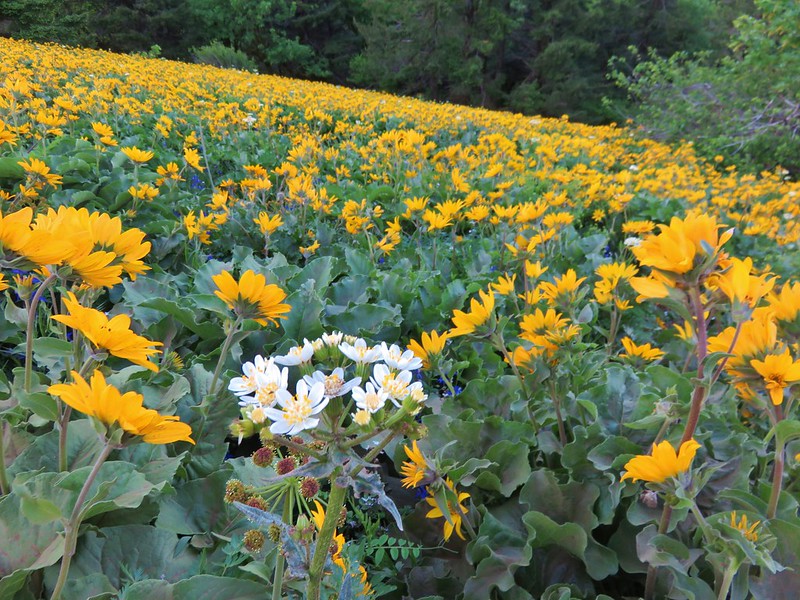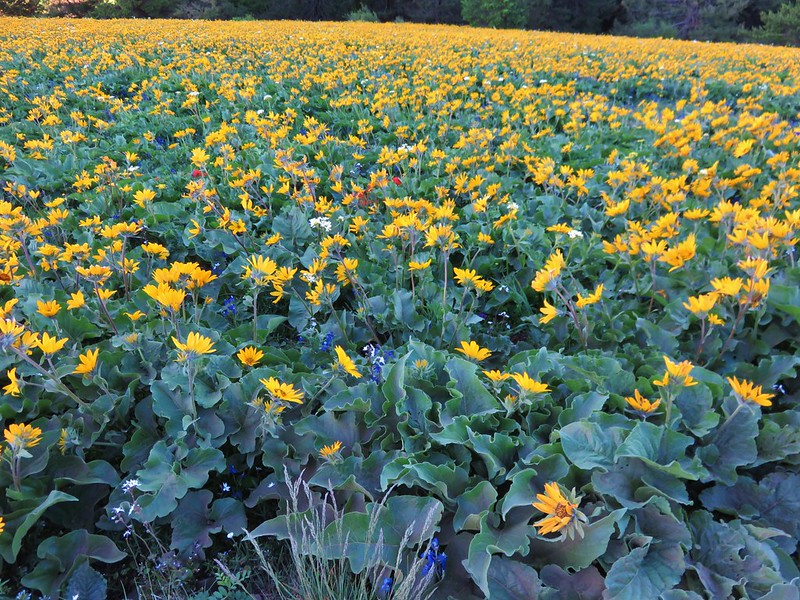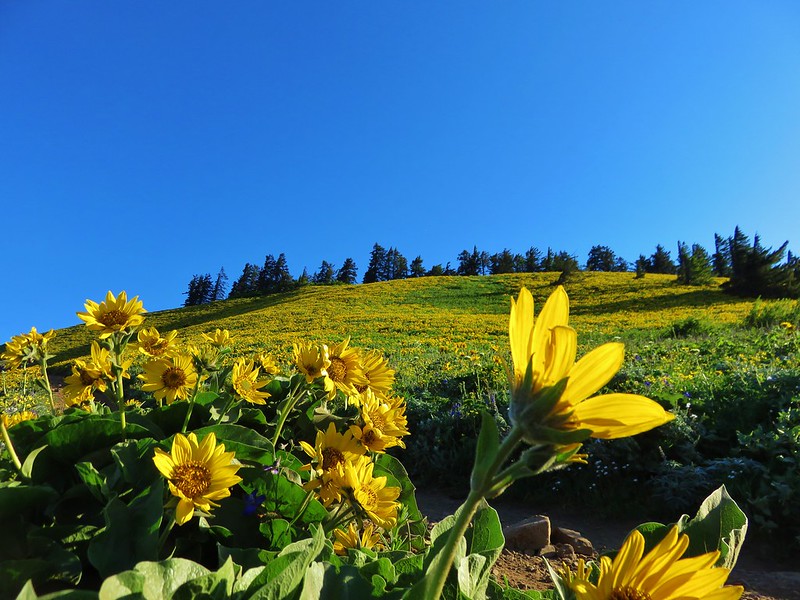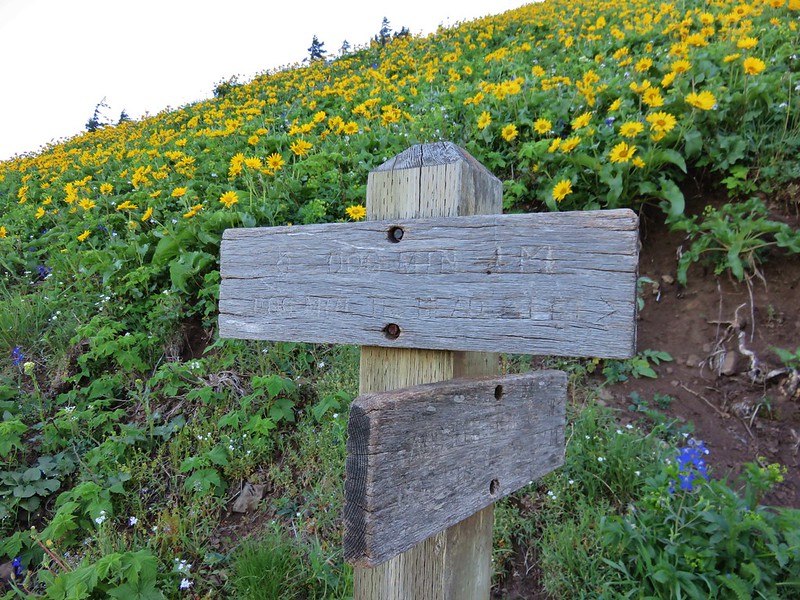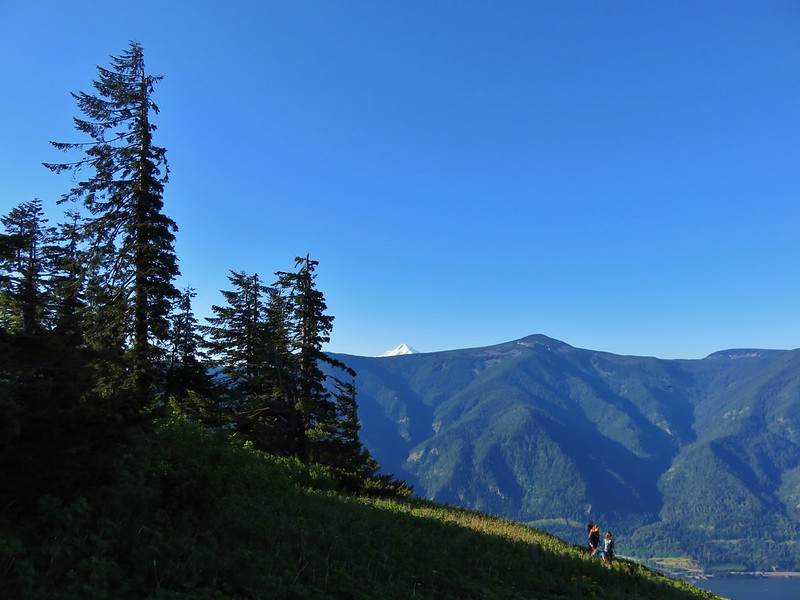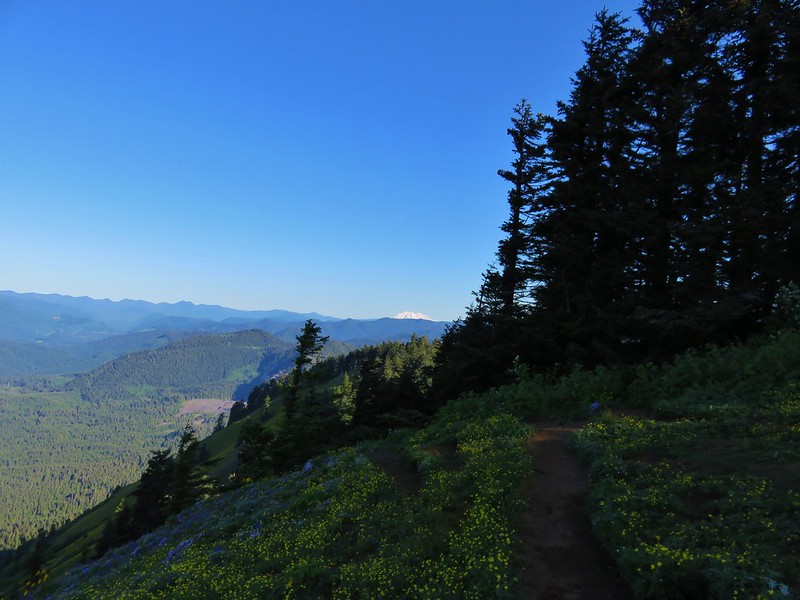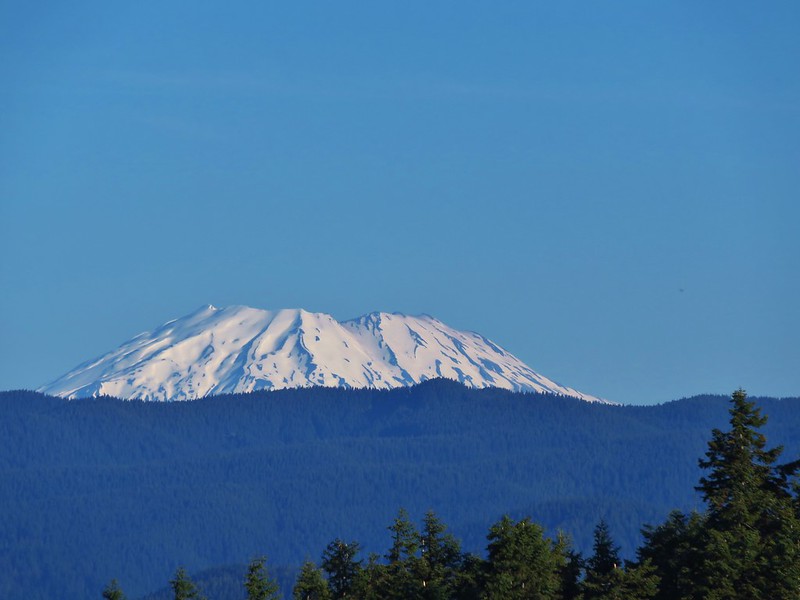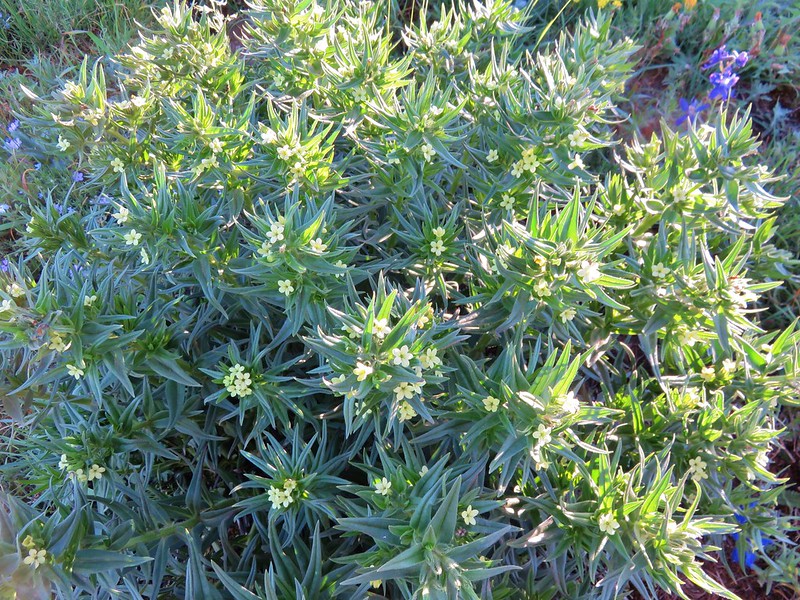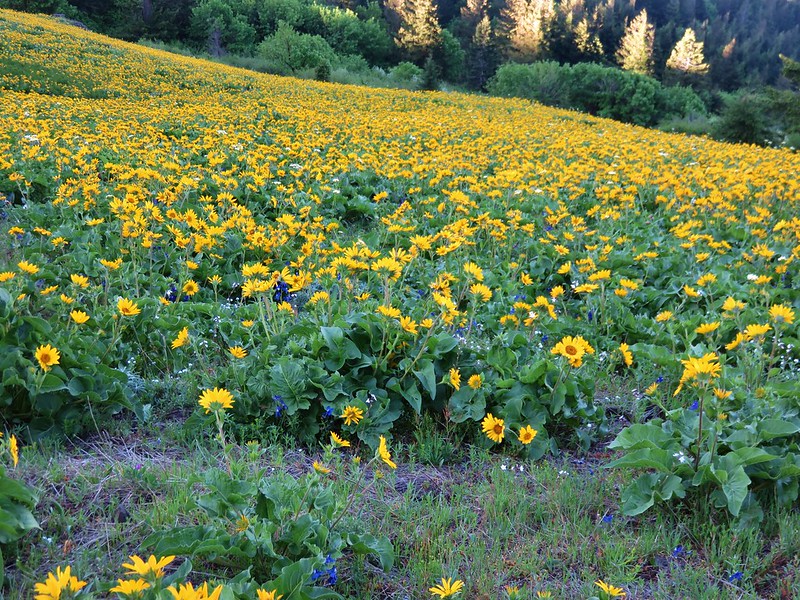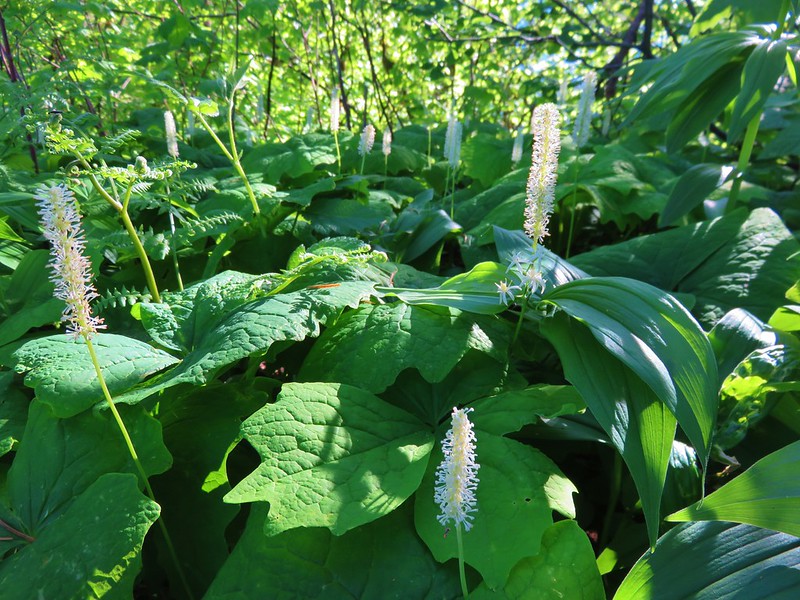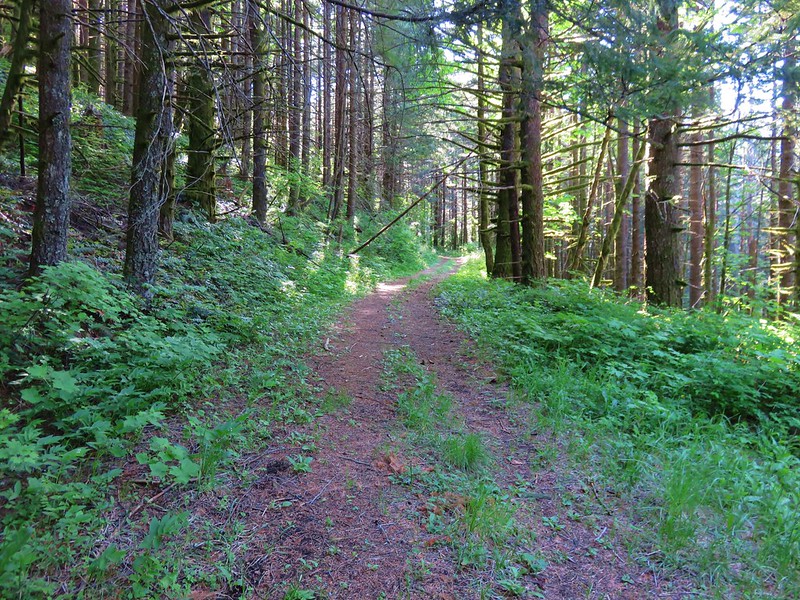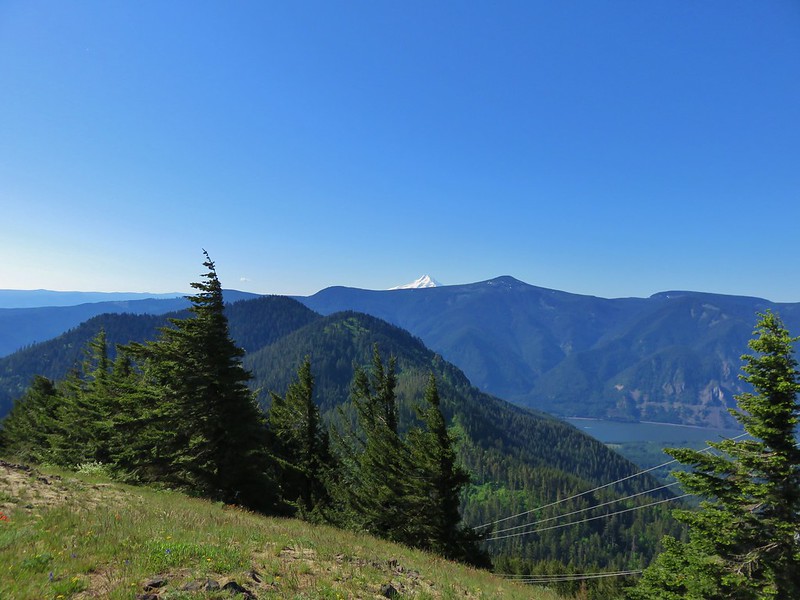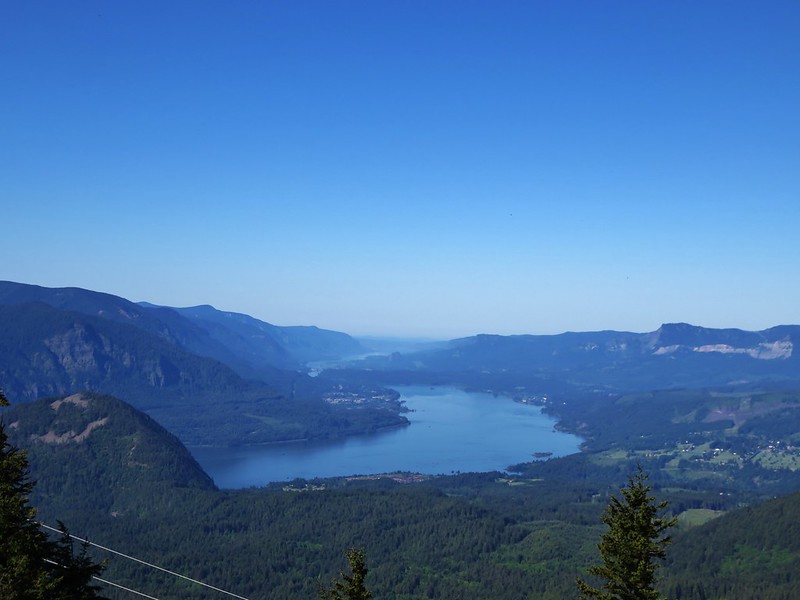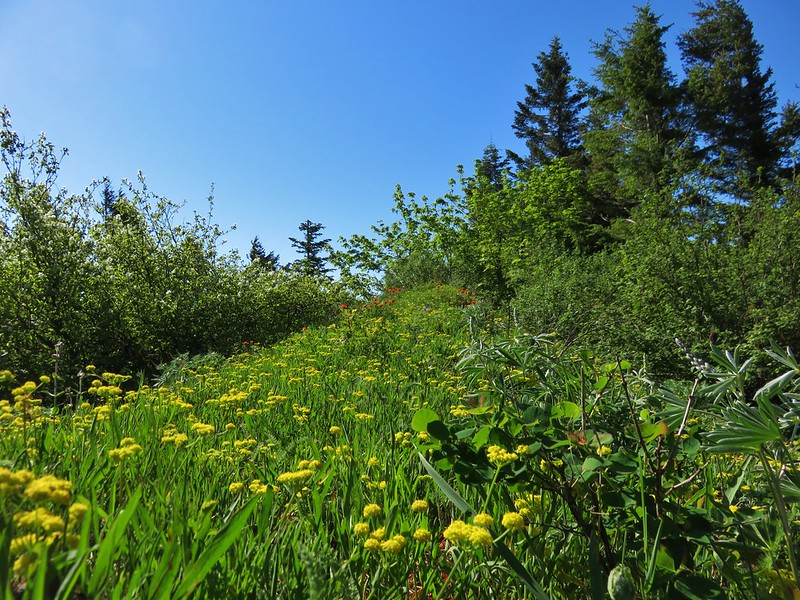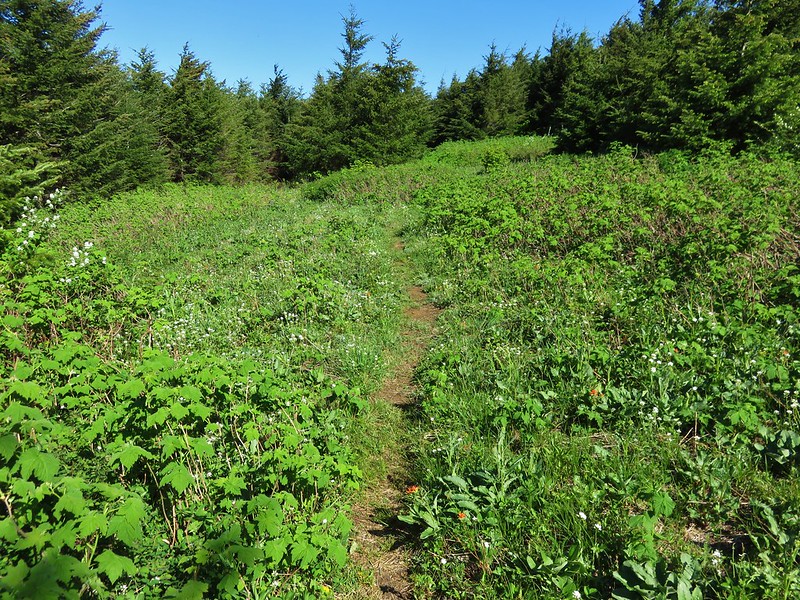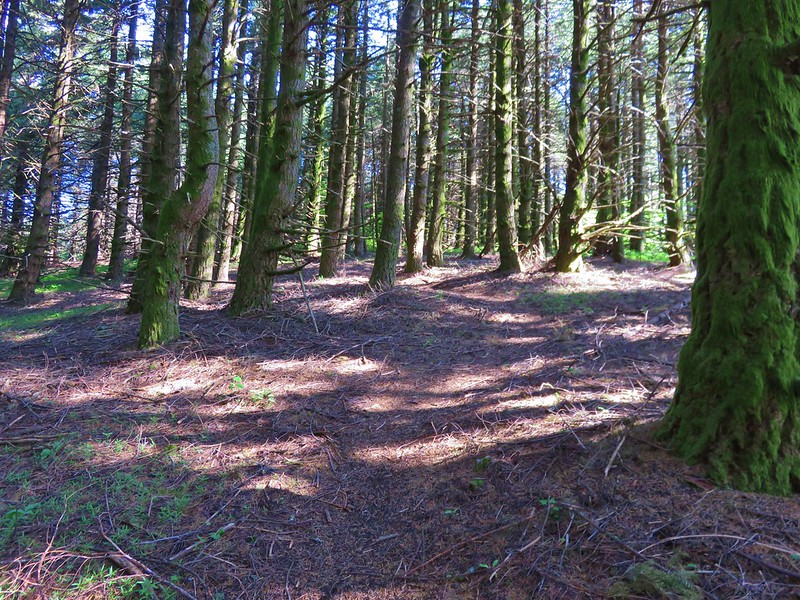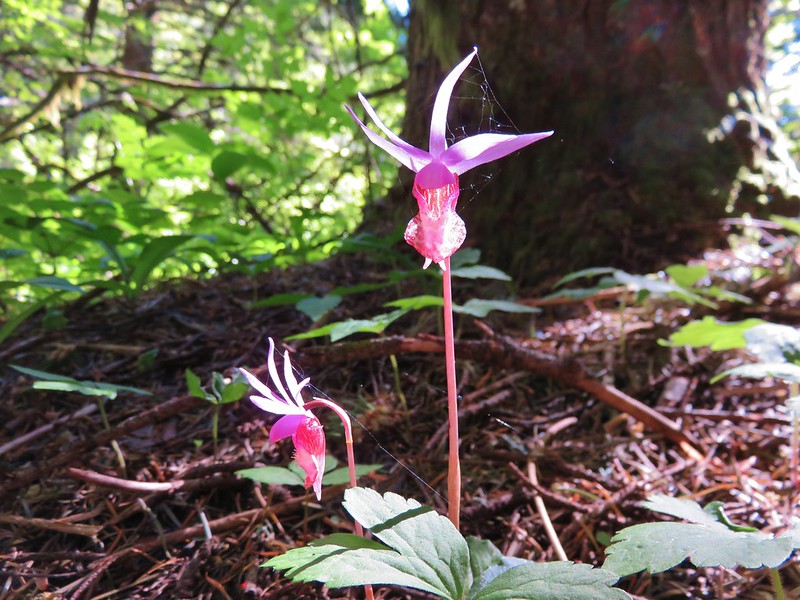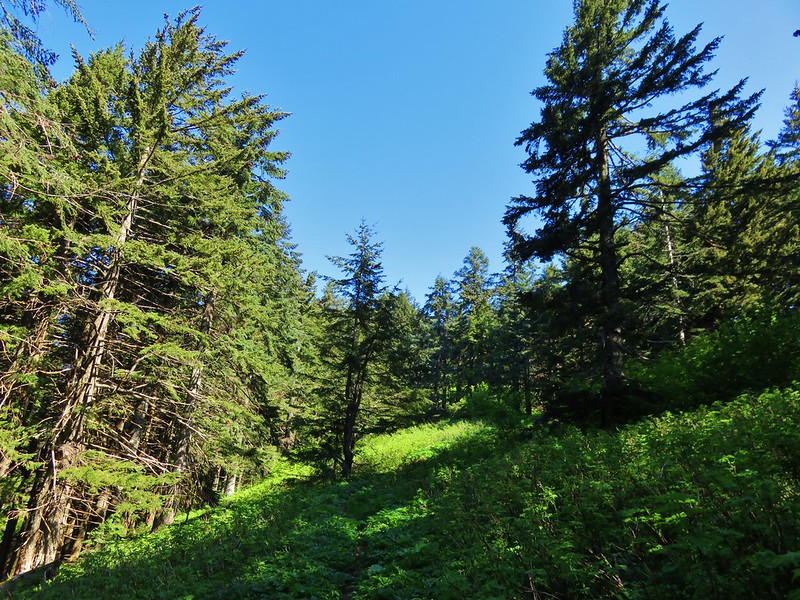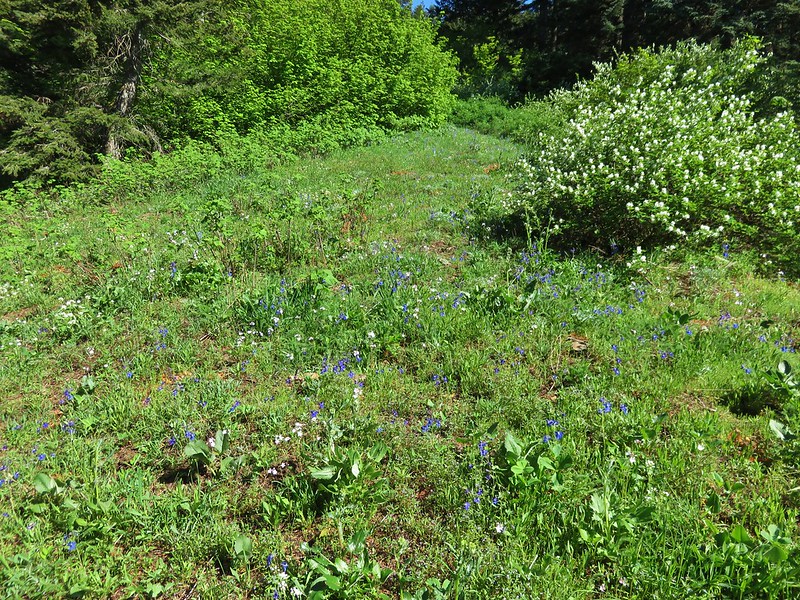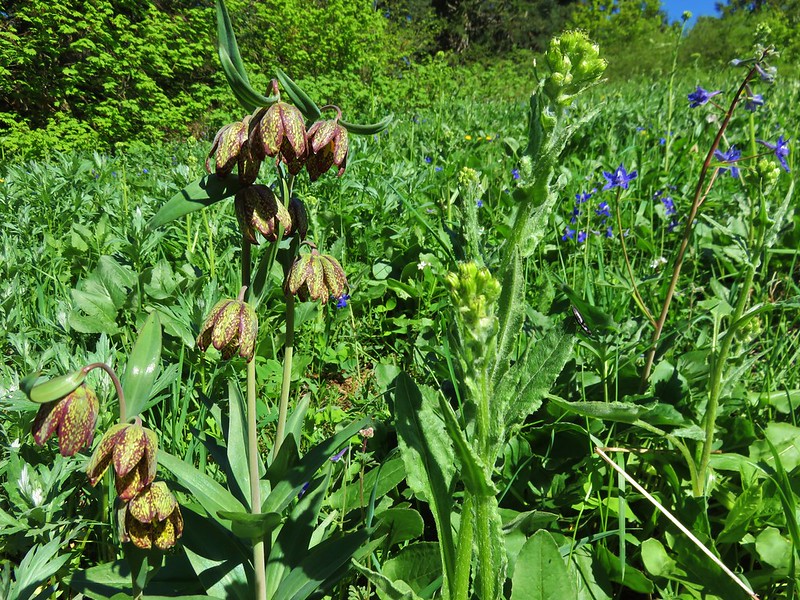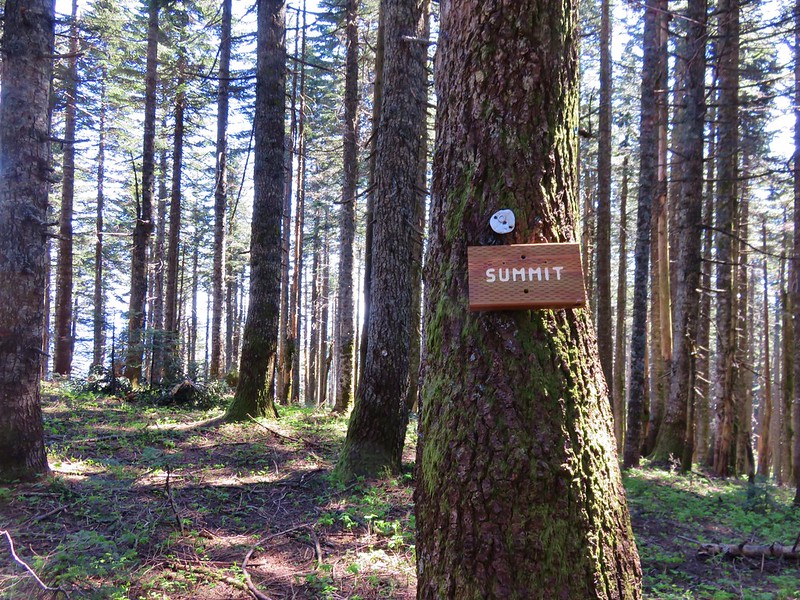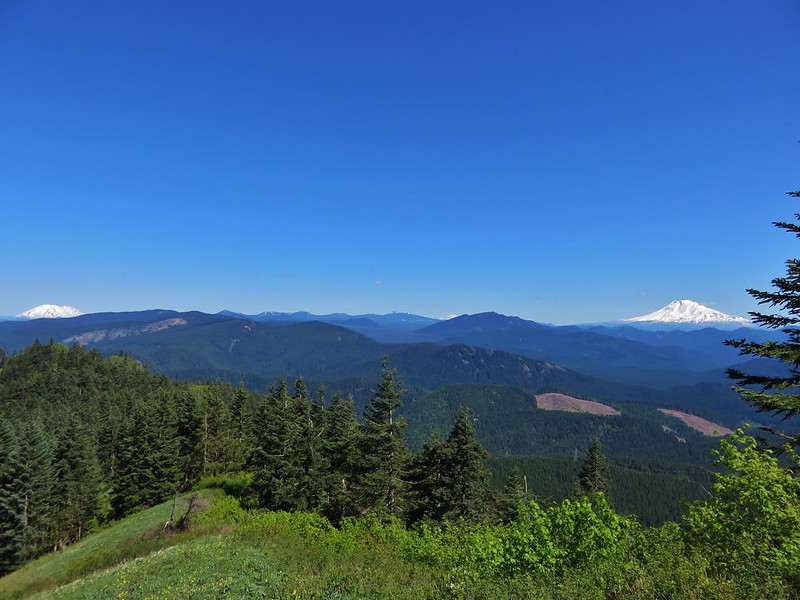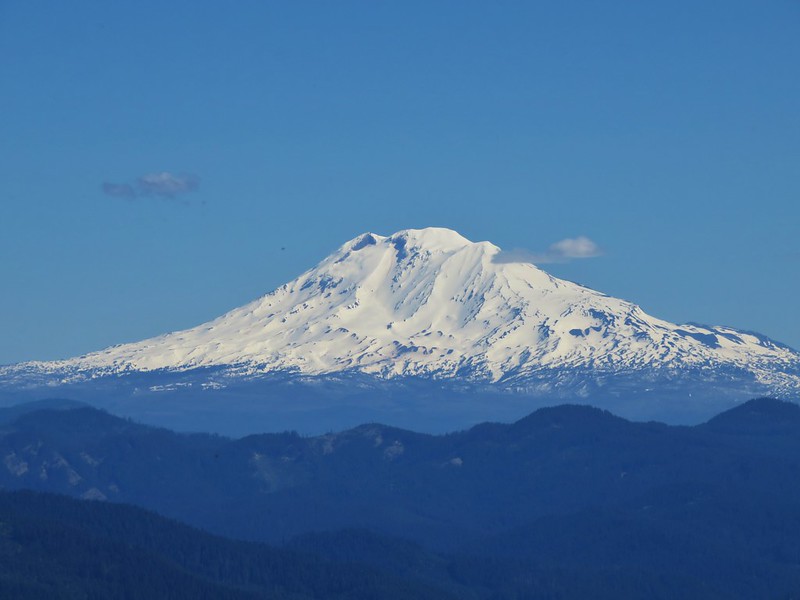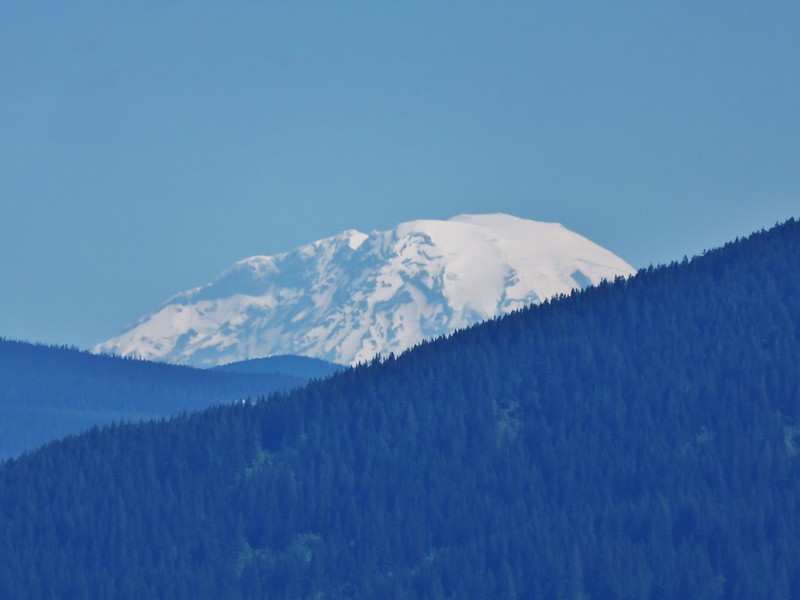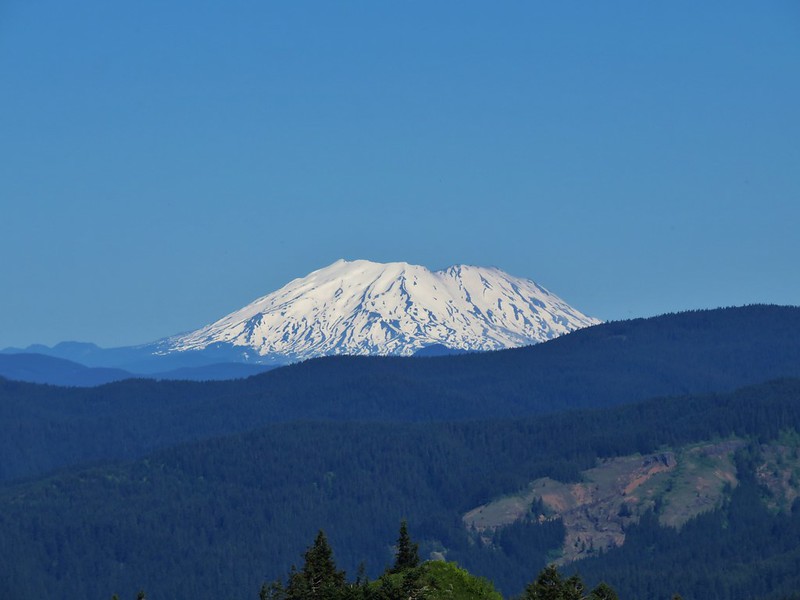Our first April outing was a trip to the Washington side of the Columbia River Gorge to check out four short hikes. These were all new hikes for us located within 23-miles of each other.
We began our day with me realizing that I hadn’t made sure that our NW Forest Pass was in the car since one was needed for two of our planned stops. This despite thinking that I needed to do that several times over the previous several days, including the day before when I was putting the Washington Discovery Pass we needed for Doetsch Ranch in the glovebox. Fortunately we were only in downtown Salem so we weren’t too far from home. Unfortunately the pass wasn’t in the other car or any of the places that I could think (at 5am) of where I might have put it. I decided it would probably quicker and much less stressful to purchase an ePass online for the day and look for the missing annual pass later.
Once we had our pass situation straightened out we drove to our first stop at the St. Cloud Day Use Area.
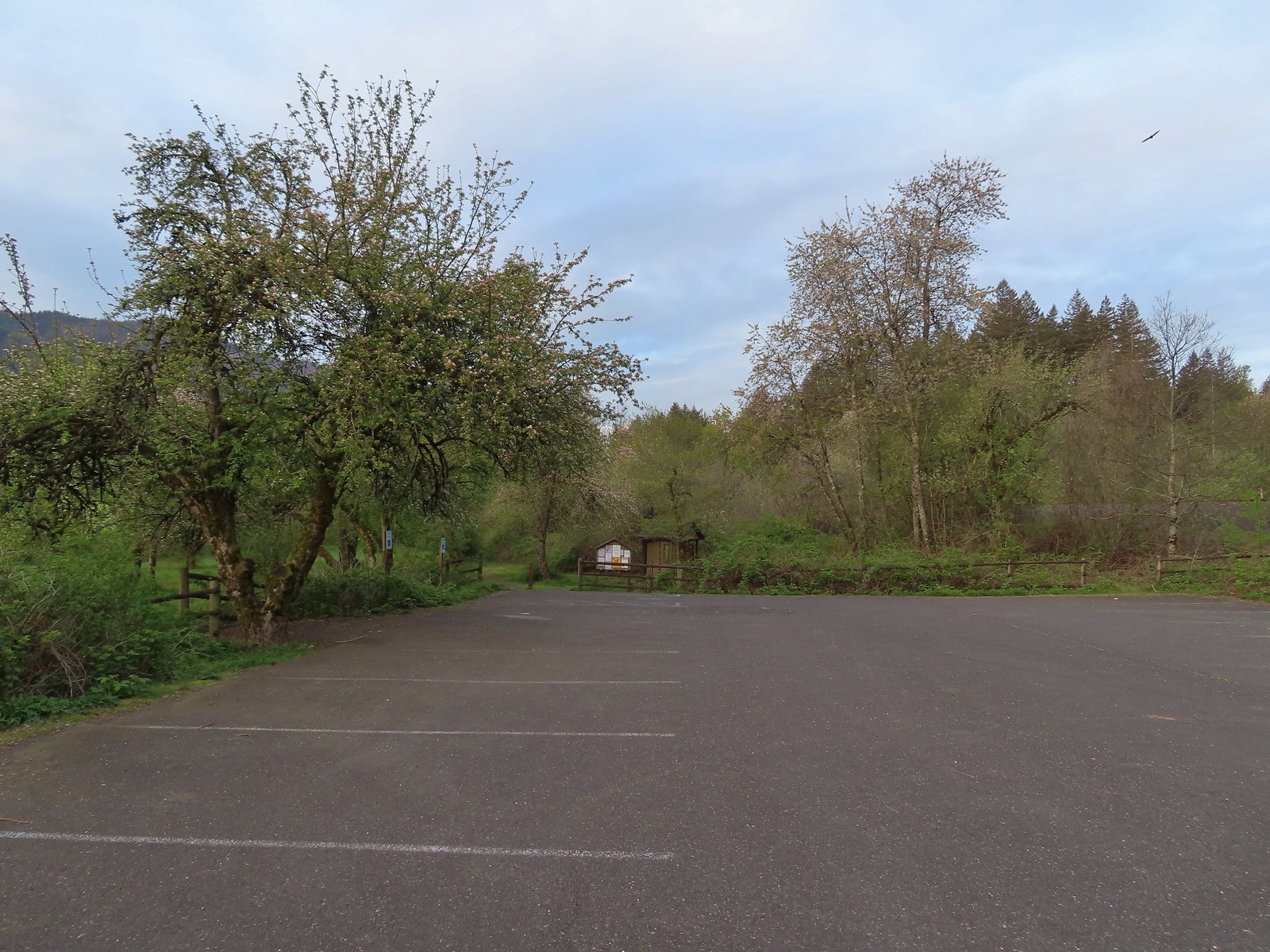
The day use area has picnic tables, a 1-mile loop trail, and a vault toilet (thus the need for a NW Forest Pass). Before exploring the day use area though we wanted to check out nearby Lower Archer Falls. To reach the trail to the falls we walked back to Hwy 14 and crossed to an unsigned trail that lead into overgrown woods. The need to cross the highway was the deciding factor on us starting our day here. We figured that there would be less traffic before 8am than there would be later in the day.
 The brown strip in the grass near the center of the photo is the trail.
The brown strip in the grass near the center of the photo is the trail.
 The trail entering the woods.
The trail entering the woods.
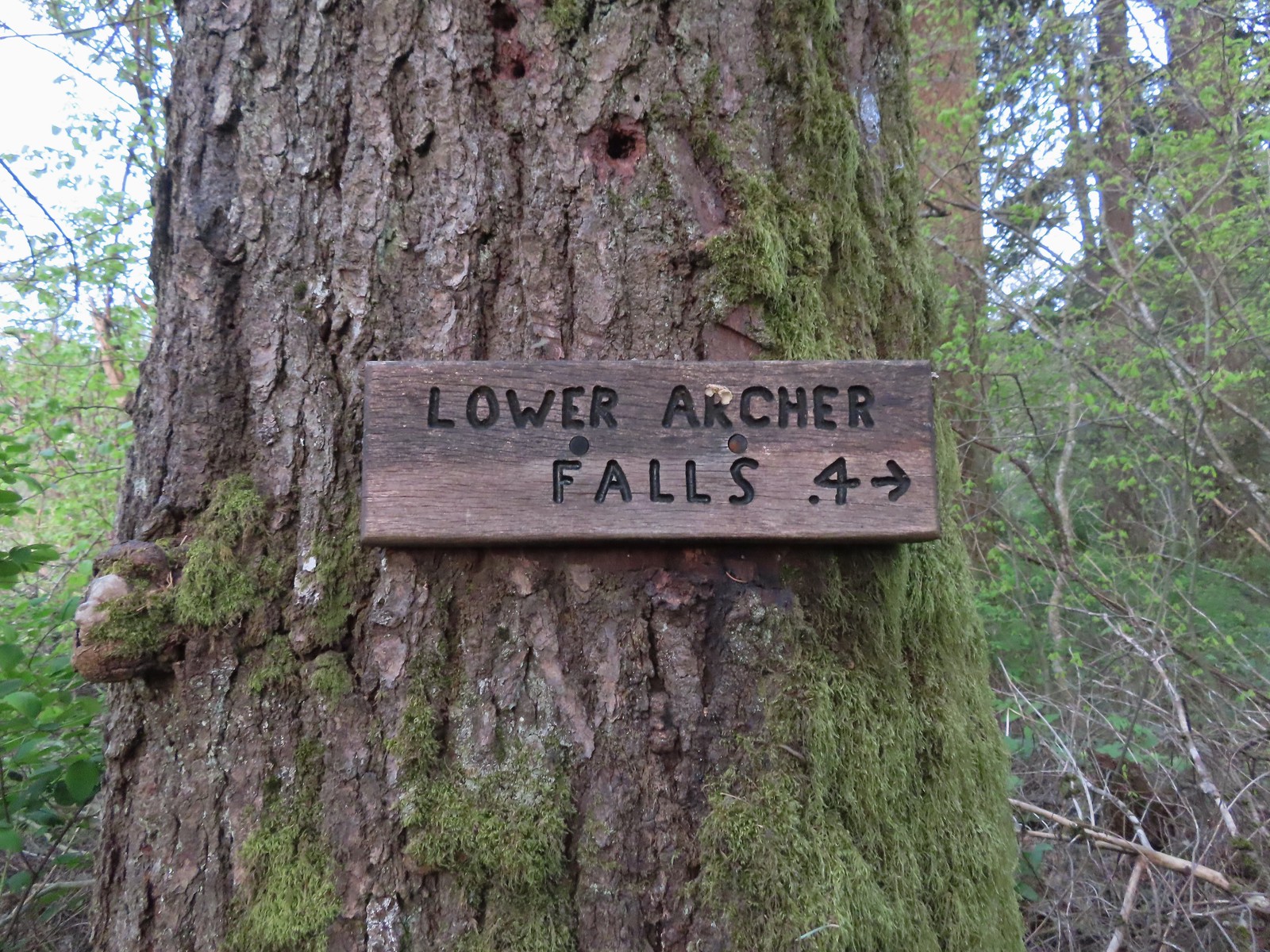 Pointer for Lower Archer Falls.
Pointer for Lower Archer Falls.
The user-maintained trail was in pretty good shape up until just before the falls where a small slide has done a bit of damage and just beyond that one of the make shift bridges seemed a little sketchy.
 Bridges over Gable Creek.
Bridges over Gable Creek.

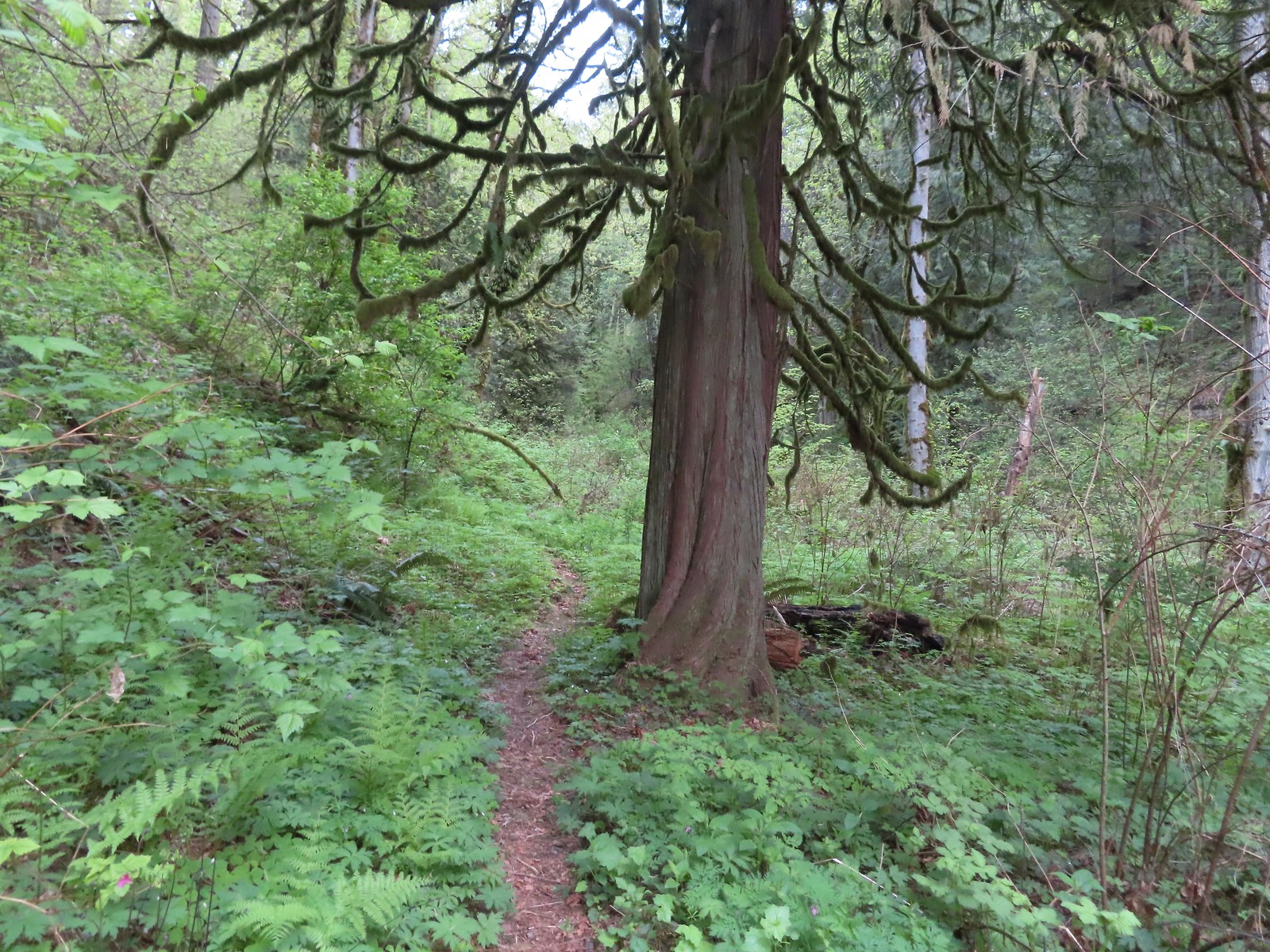
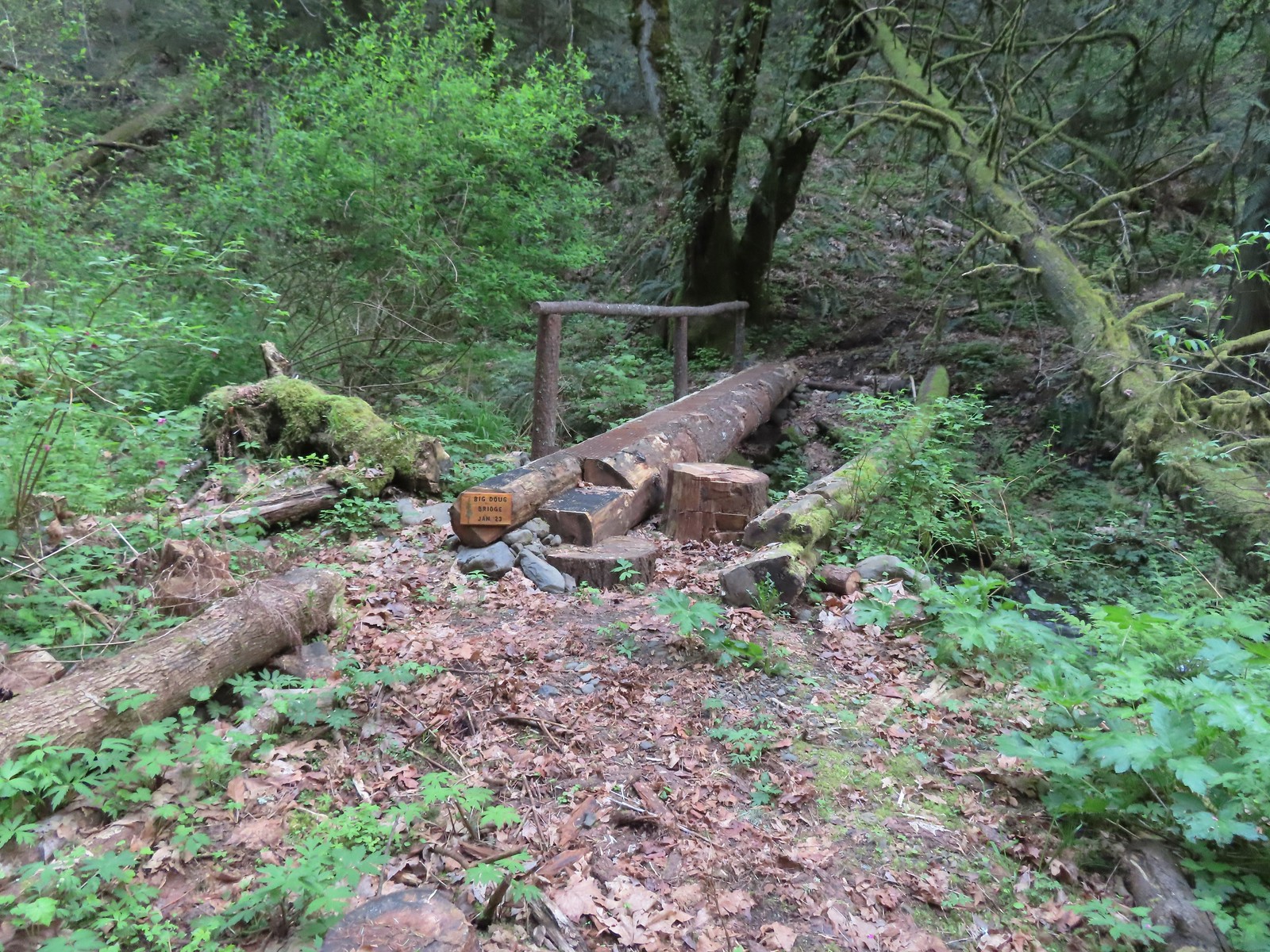 Big Doug Bridge (Jan 23) over Archer Creek.
Big Doug Bridge (Jan 23) over Archer Creek.
 Archer Creek
Archer Creek
 After crossing the creek the trail did a short climb gaining approximately 150′ of elevation.
After crossing the creek the trail did a short climb gaining approximately 150′ of elevation.
 Trillium along the trail.
Trillium along the trail.
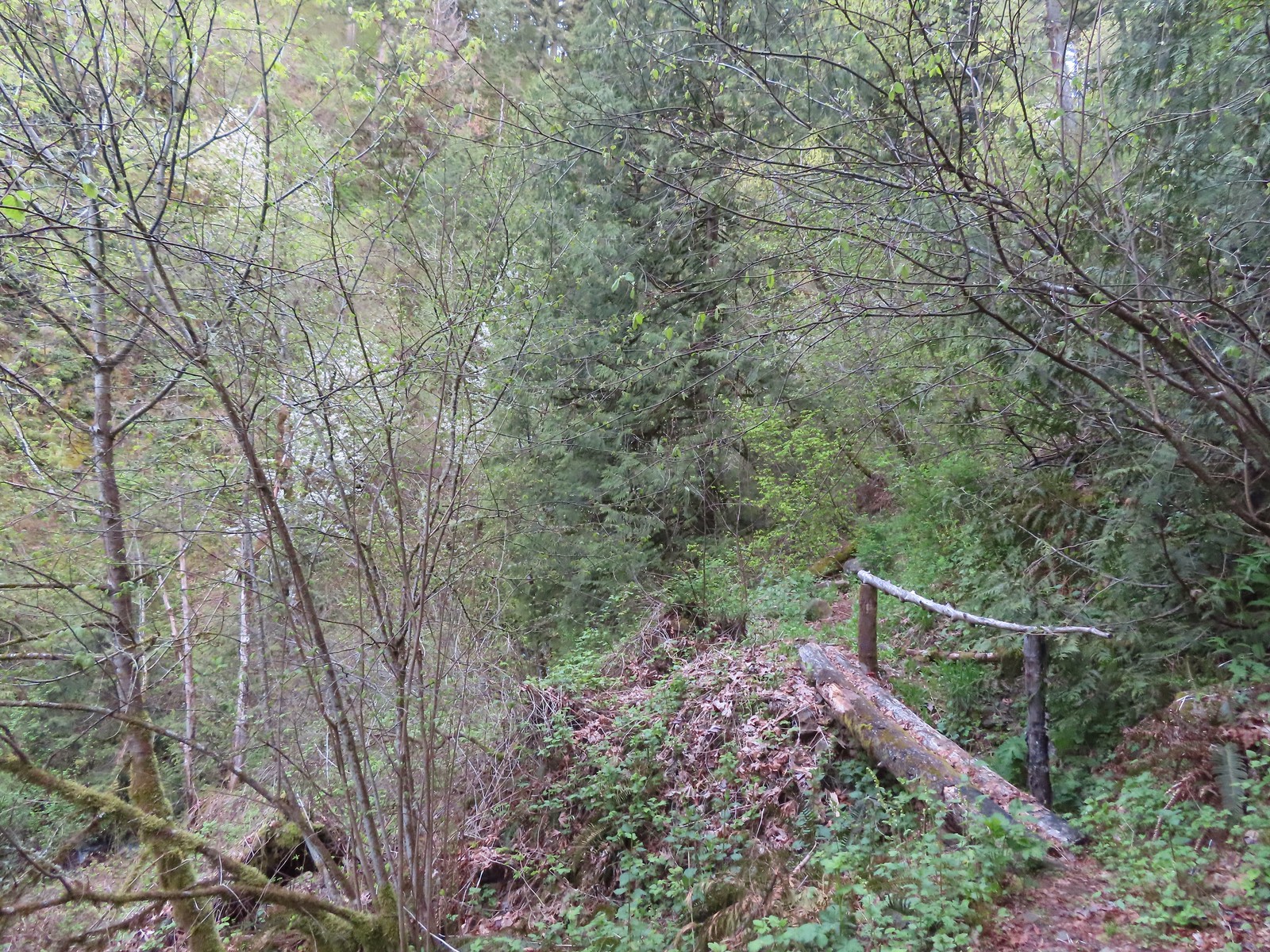 One of several of these style bridges on the way to the falls.
One of several of these style bridges on the way to the falls.
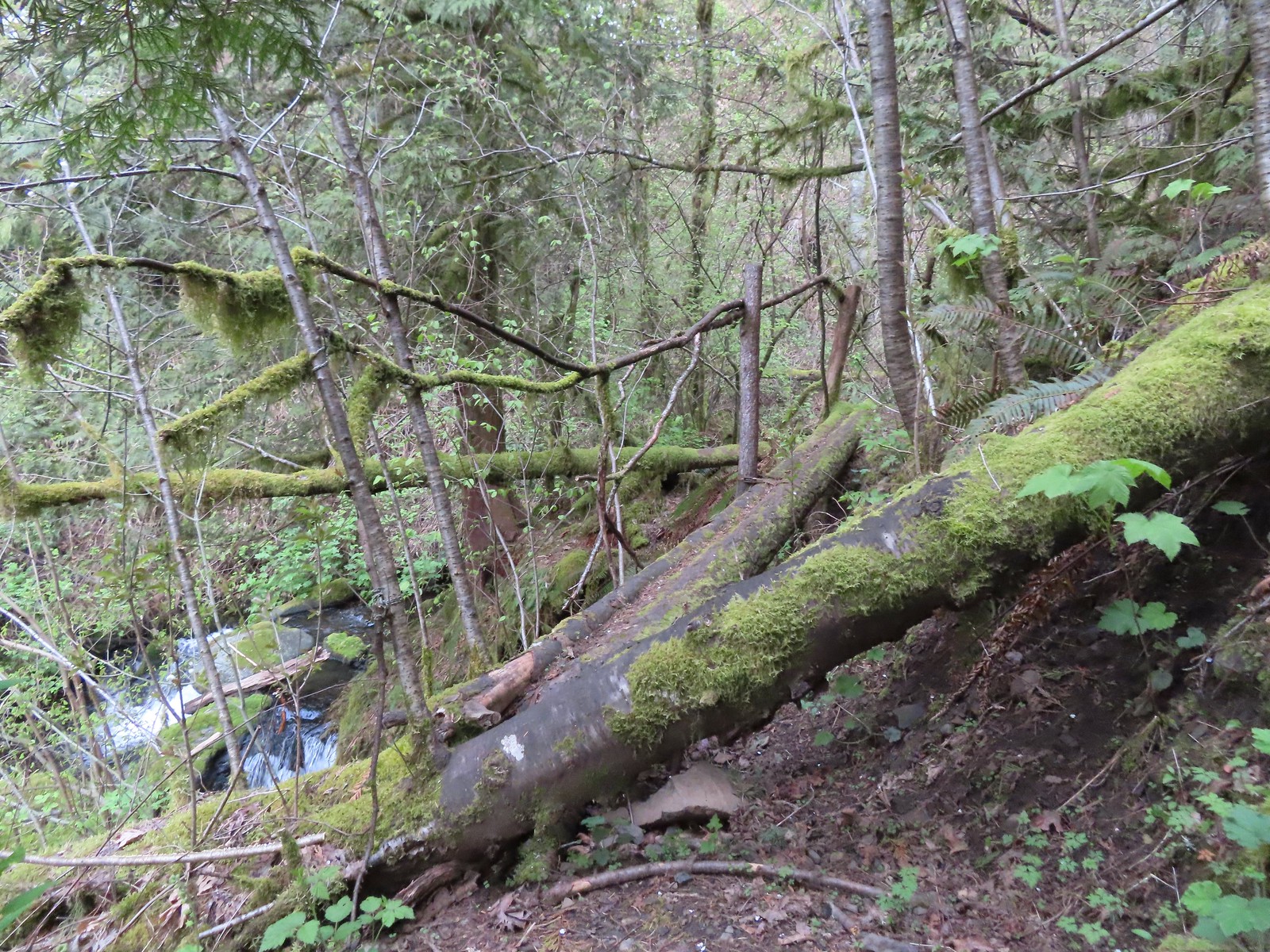 The “sketchy” bridge. It felt pretty solid underfoot, but the rail seemed ornamental only.
The “sketchy” bridge. It felt pretty solid underfoot, but the rail seemed ornamental only.
 The final footbridge before the falls.
The final footbridge before the falls.

The trail extends beyond the falls climbing to a junction with the Archer Mountain Trail, but that route is reportedly less maintained with blackberry, poison oak, and nettles crowding the trail at times. We weren’t interested in that much adventure today so after enjoying the falls we headed back stopping along the way to admire the Spring wildflowers.
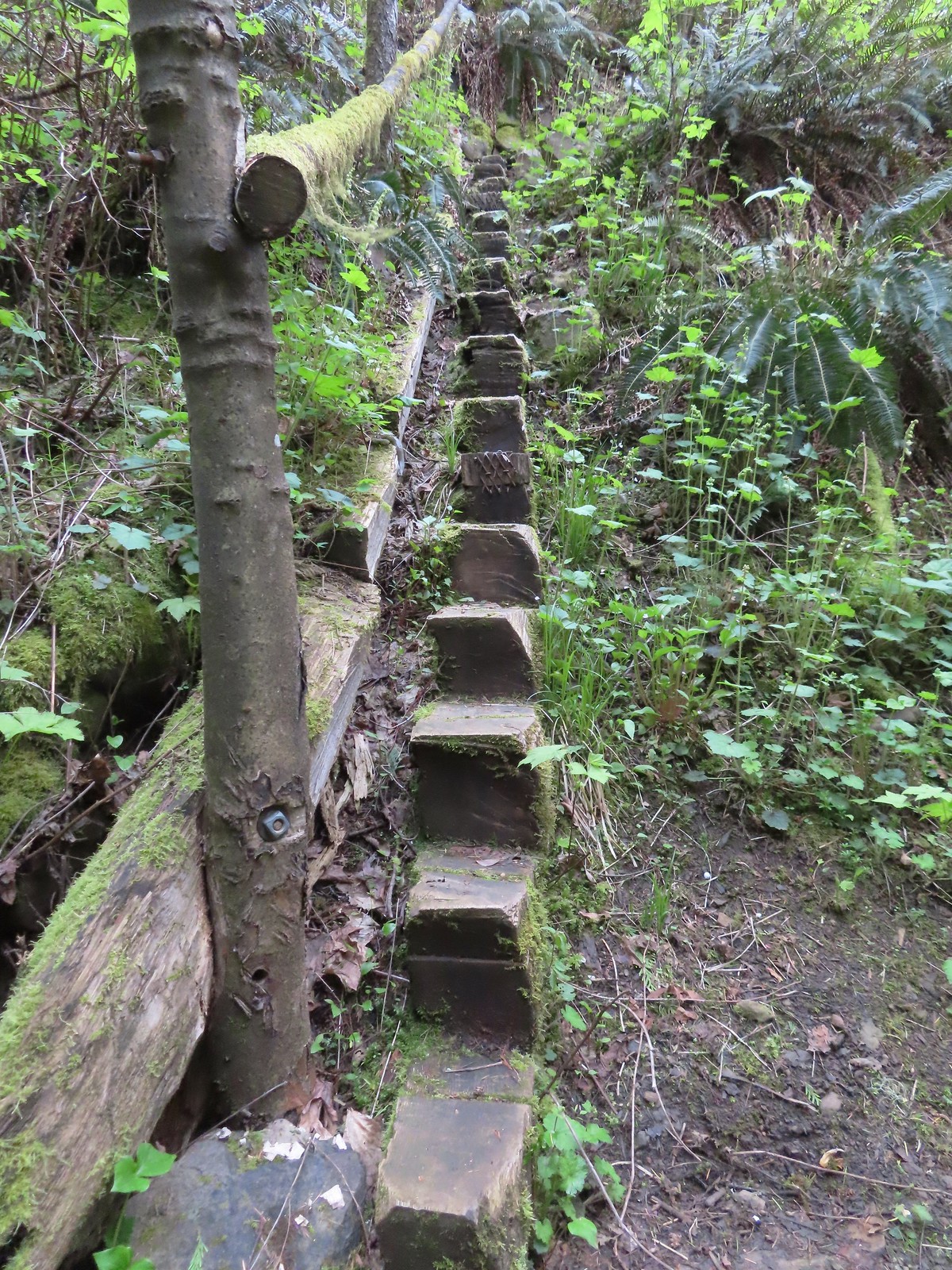 Steps leading up from Lower Archer Falls.
Steps leading up from Lower Archer Falls.
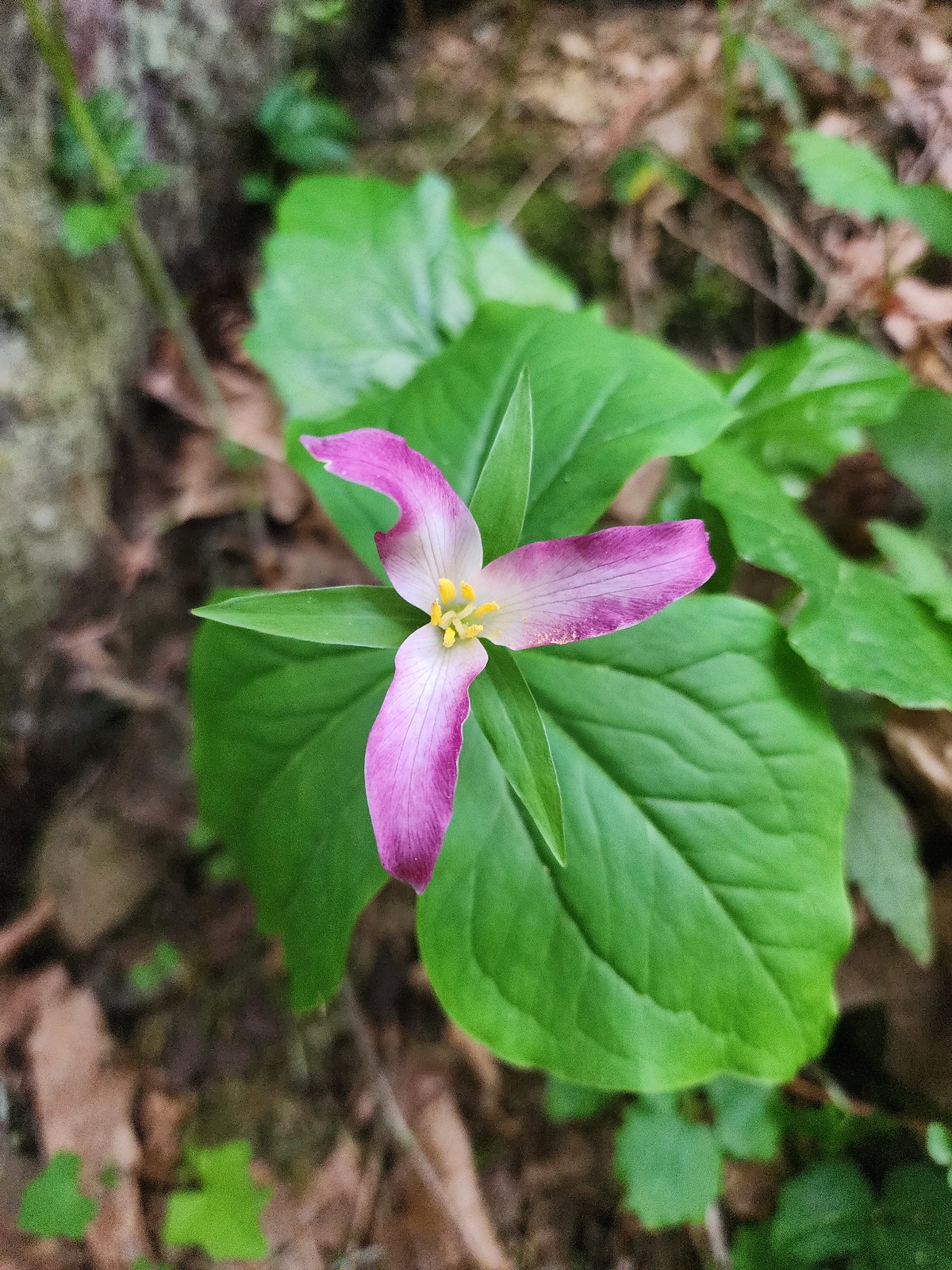 Trillium
Trillium
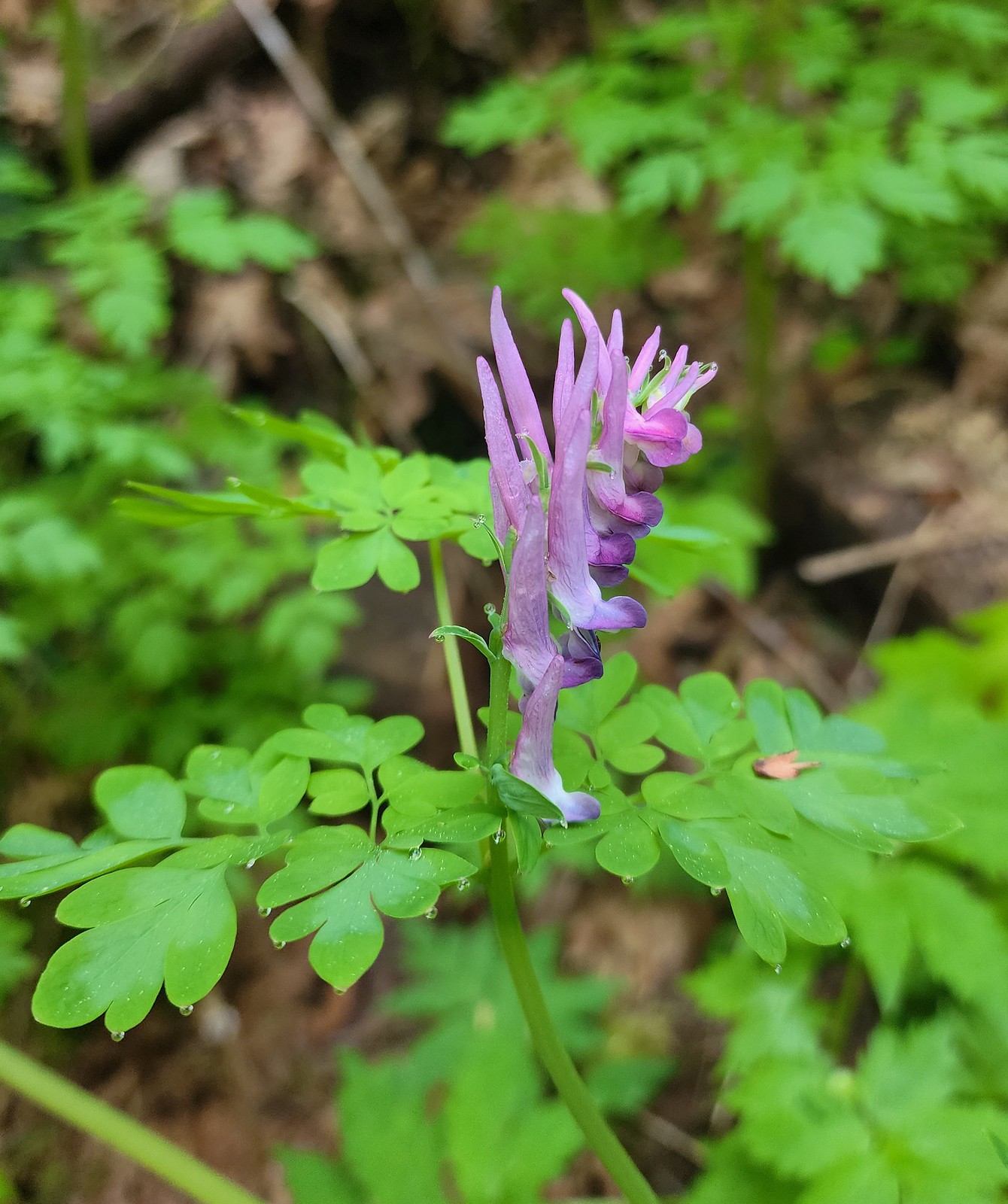 Scouler’s corydalis
Scouler’s corydalis
 Bleeding heart
Bleeding heart
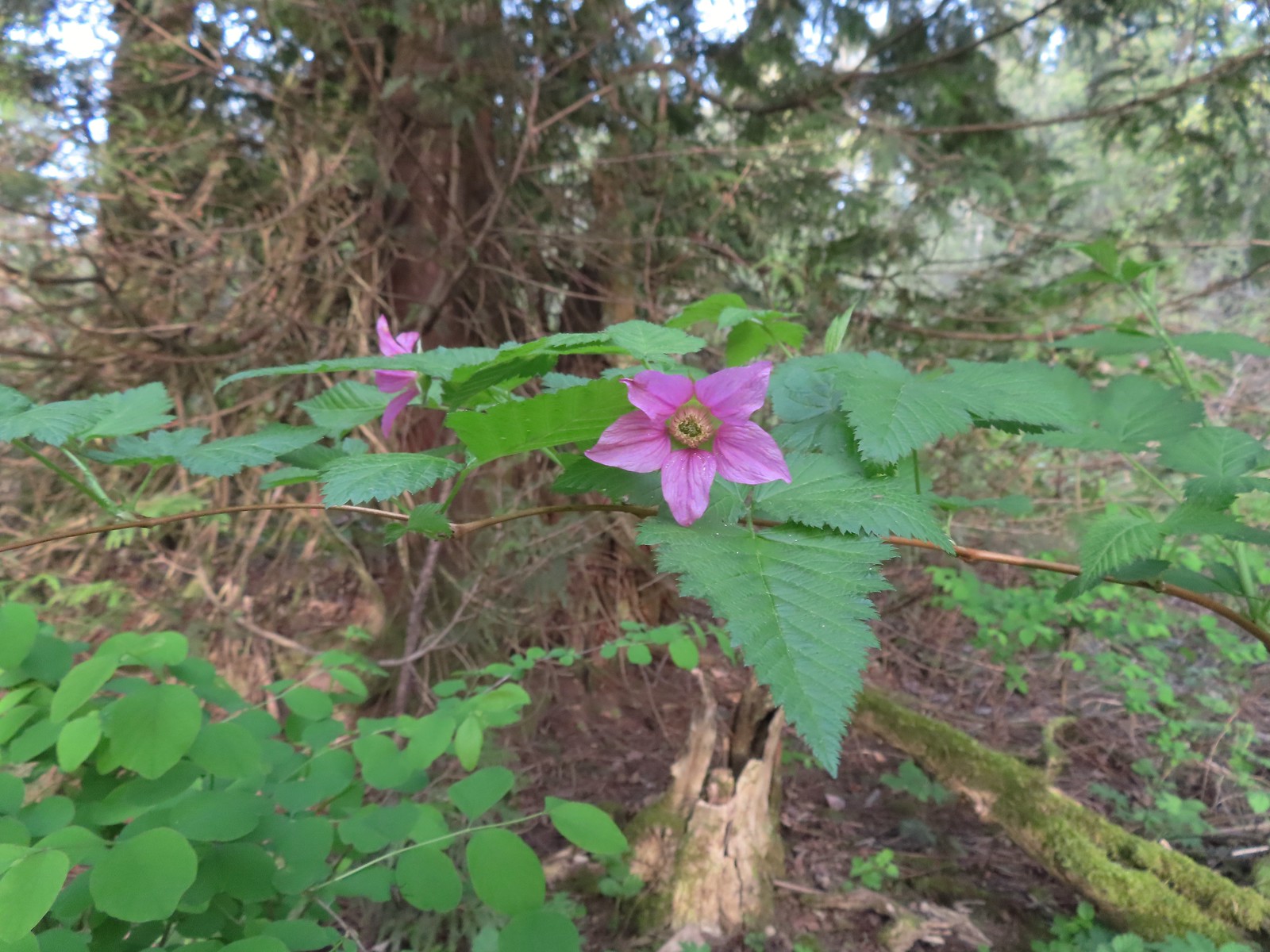 Salmonberry
Salmonberry
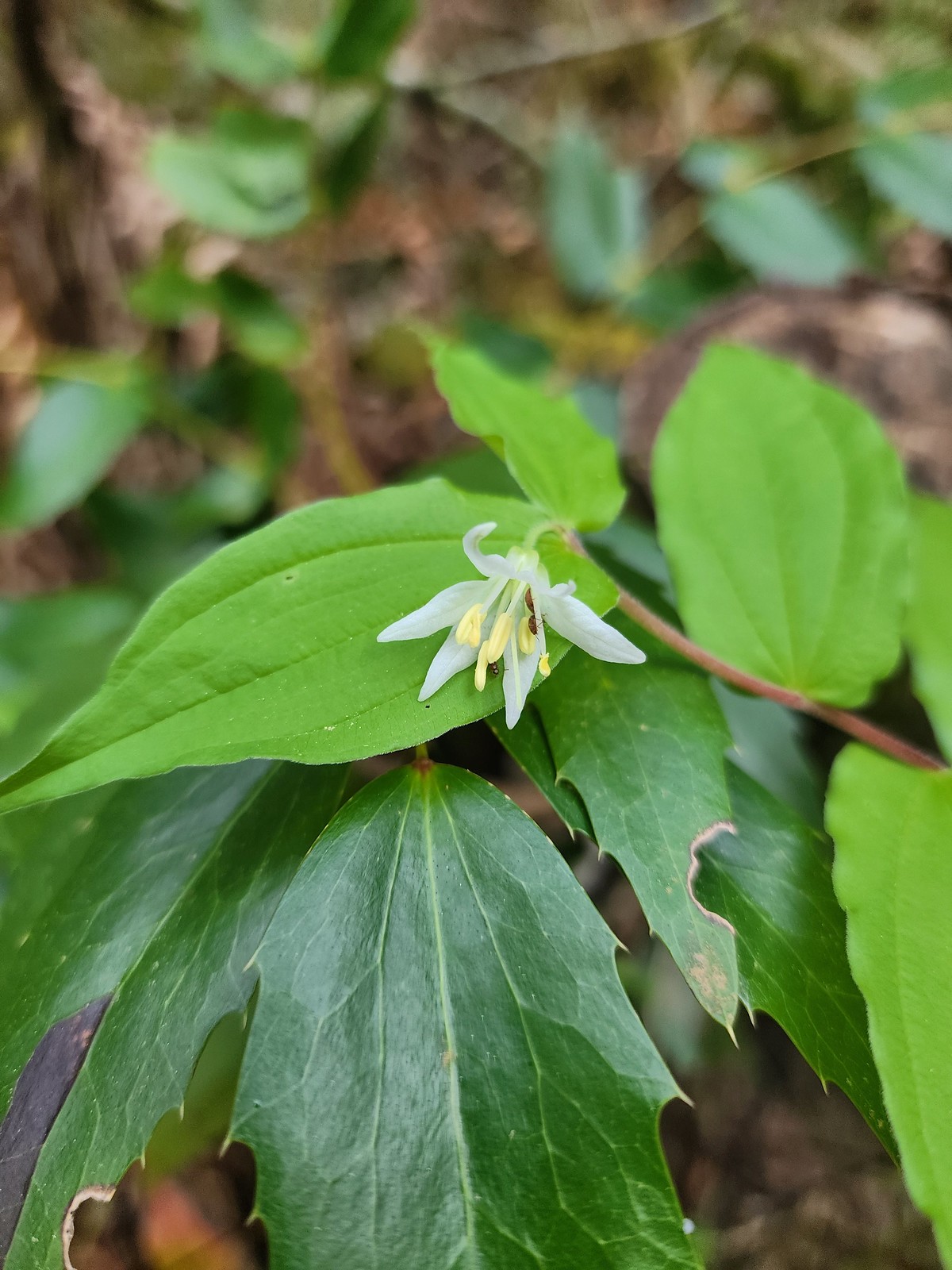 Fairy bell
Fairy bell
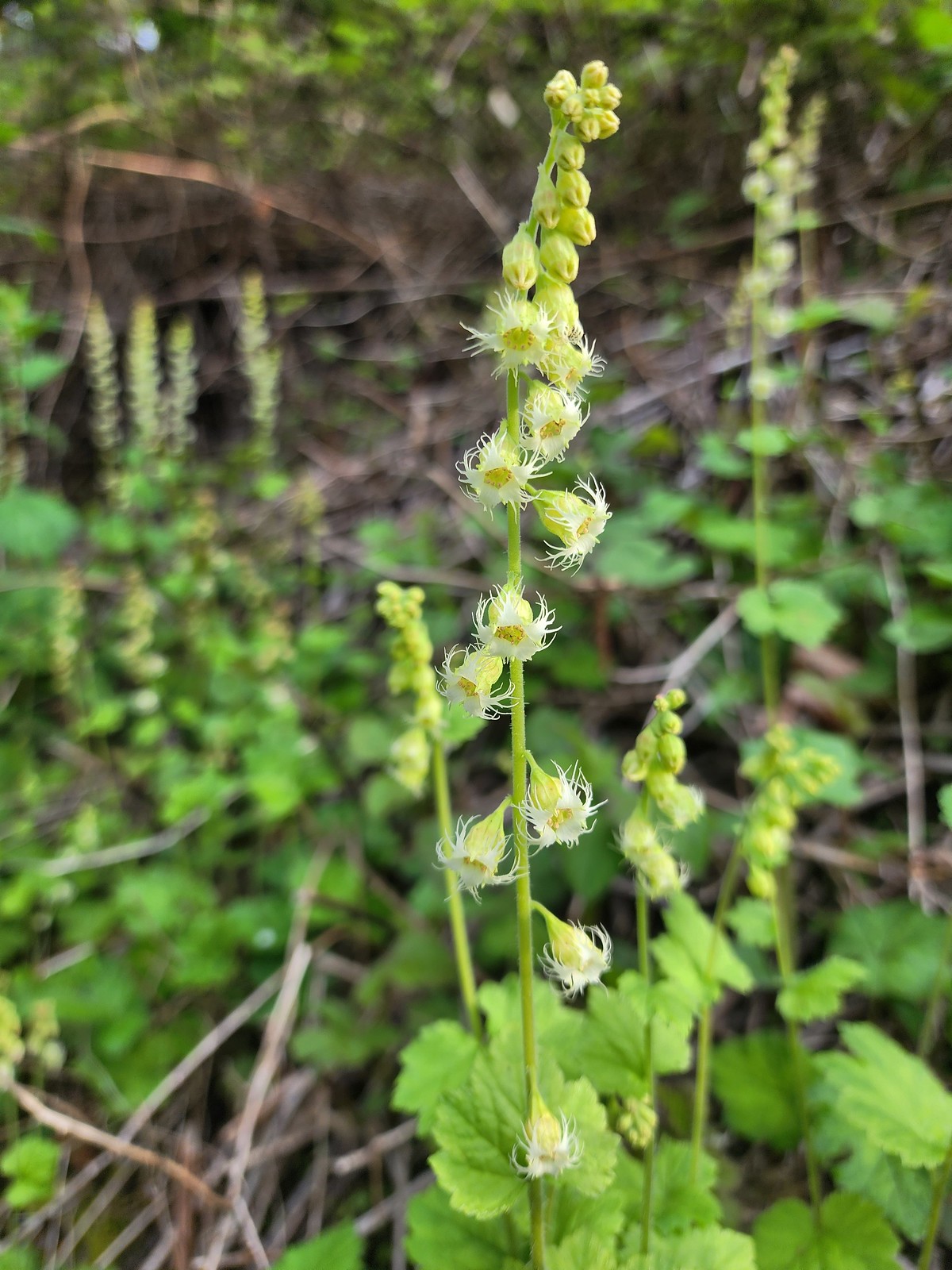 Fringecup
Fringecup
After successfully recrossing the highway we hiked the mile long St. Cloud Loop.
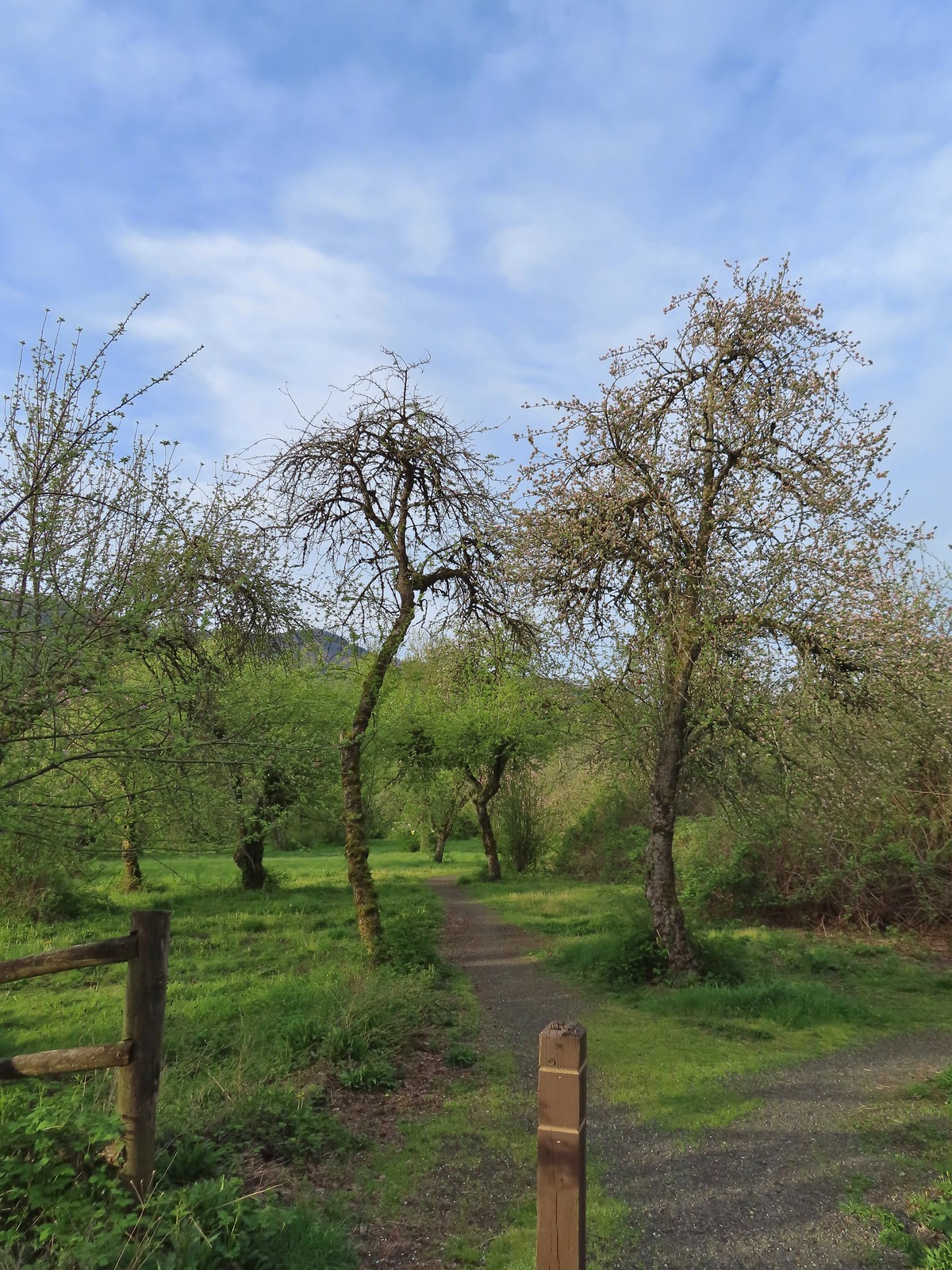 The start of the loop.
The start of the loop.
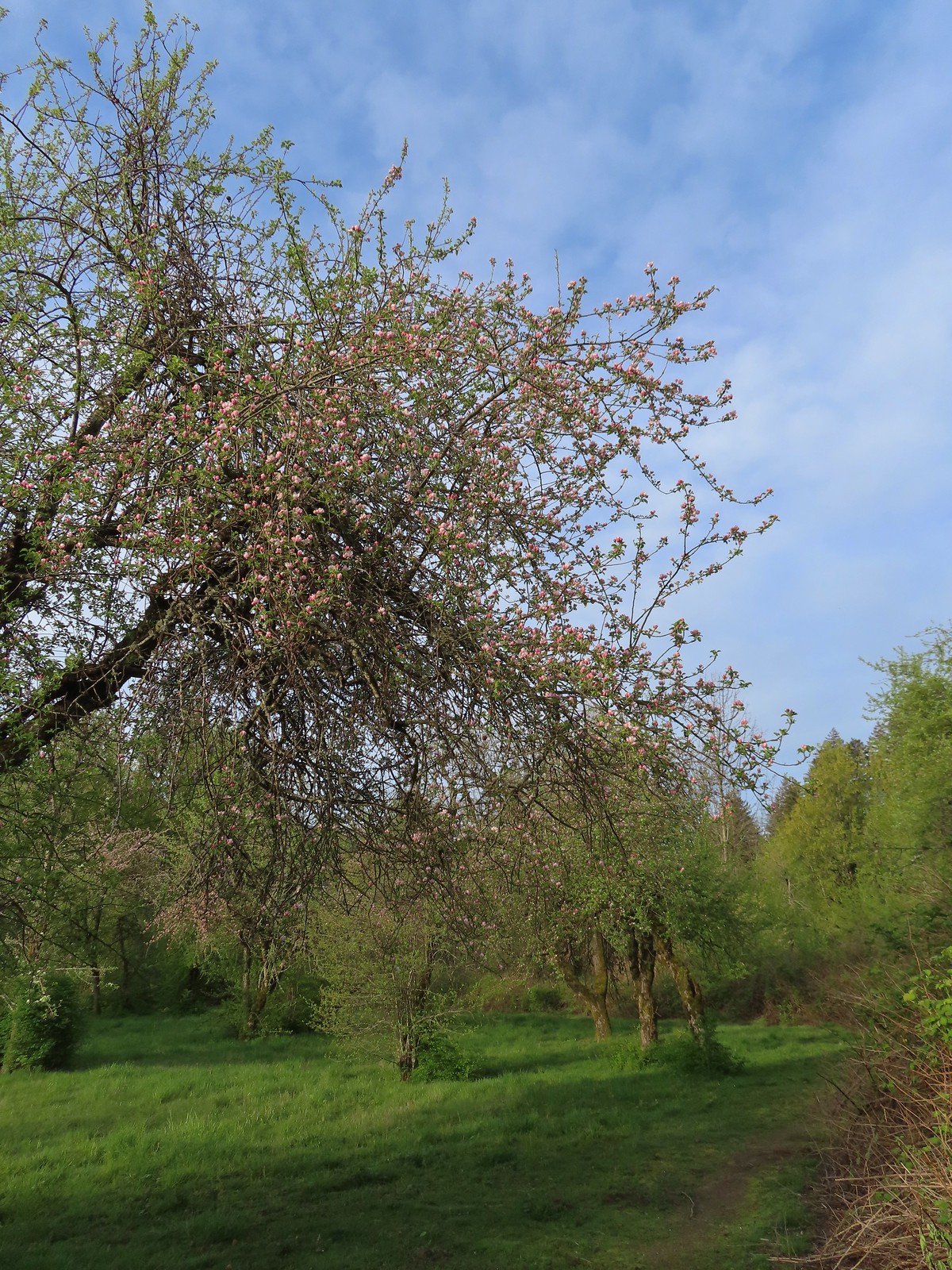 The trail loops around a former apple orchard.
The trail loops around a former apple orchard.
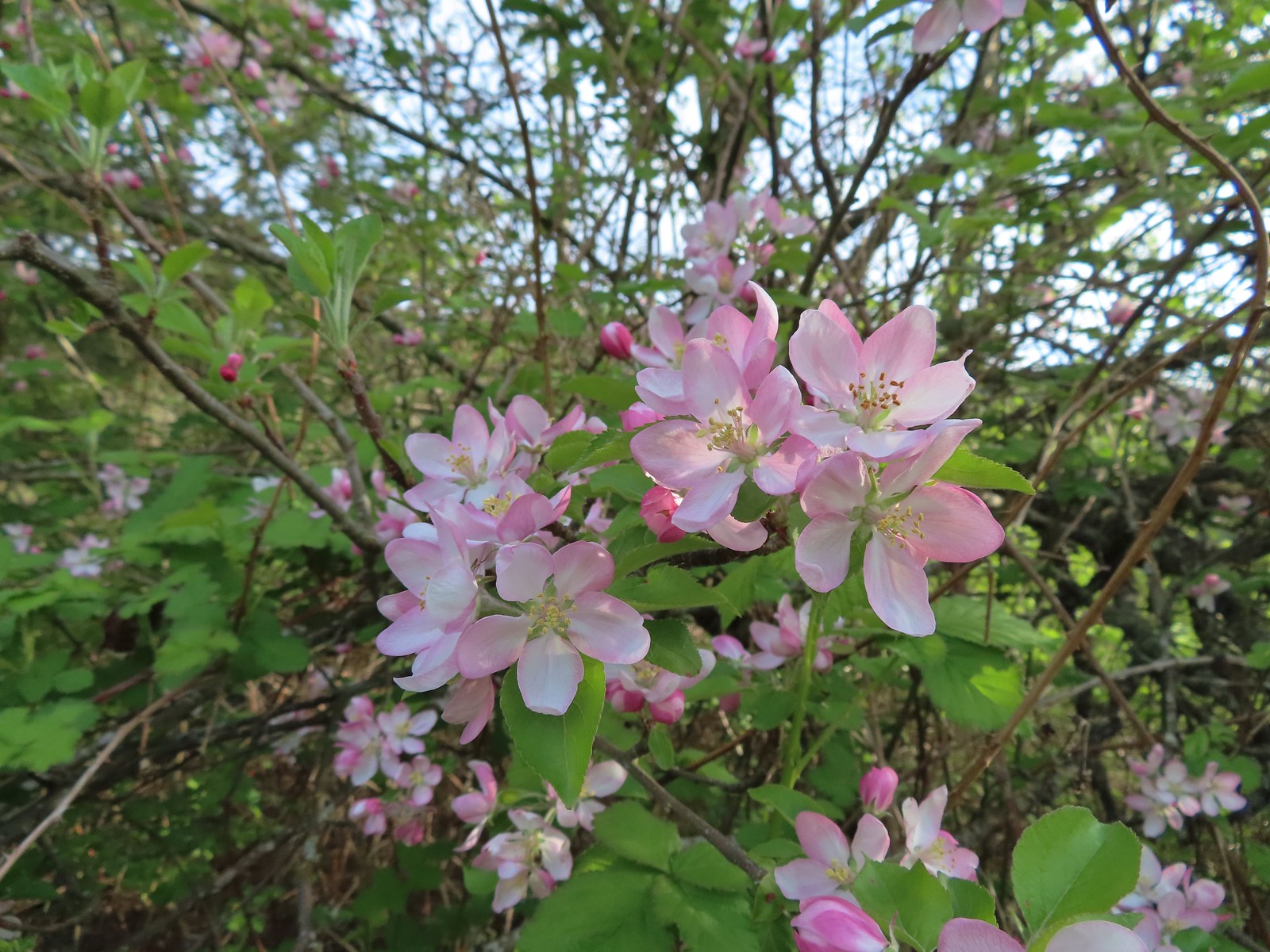 Apple blossoms
Apple blossoms
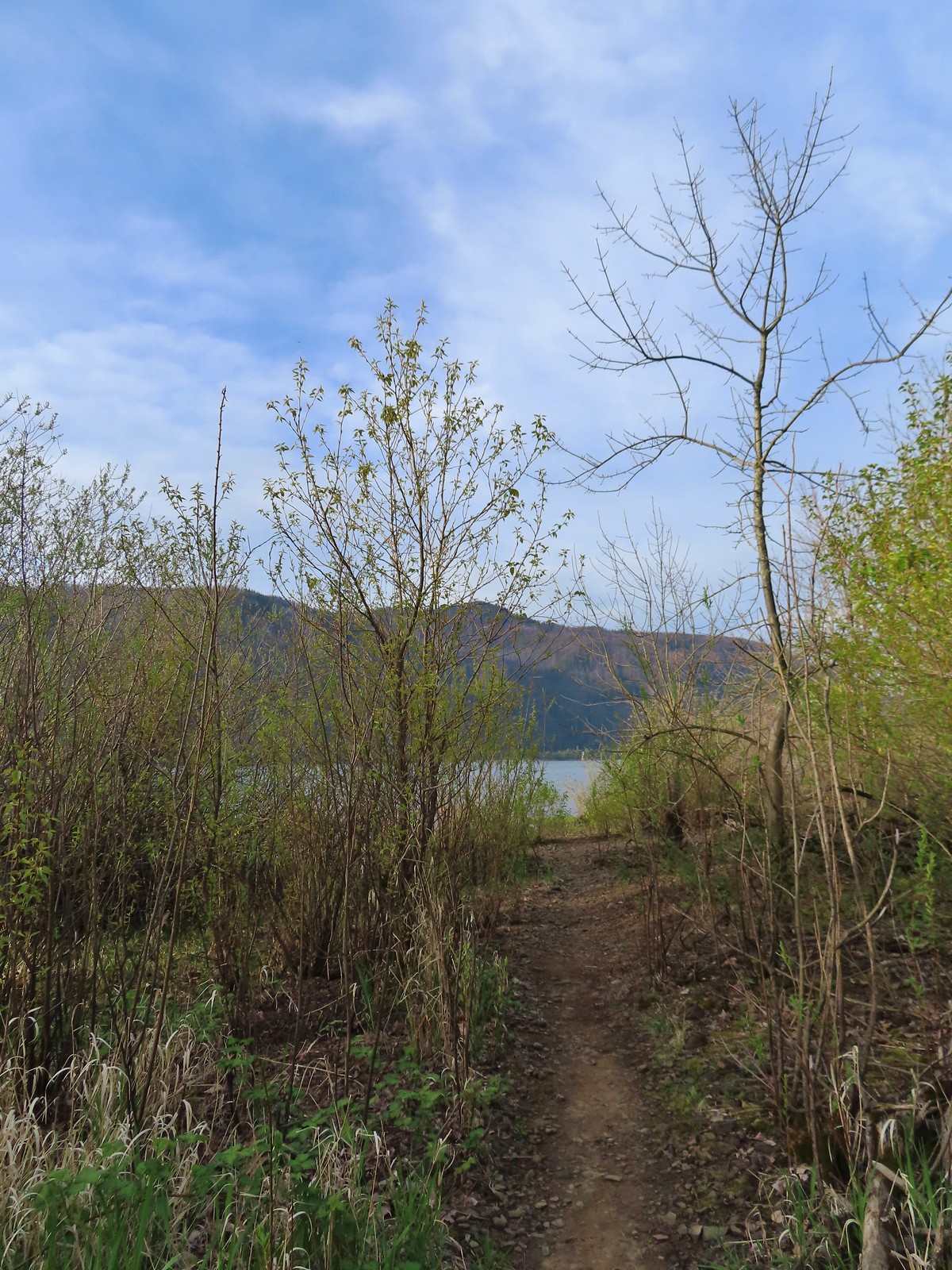 A spur trail leading down to the Columbia River.
A spur trail leading down to the Columbia River.
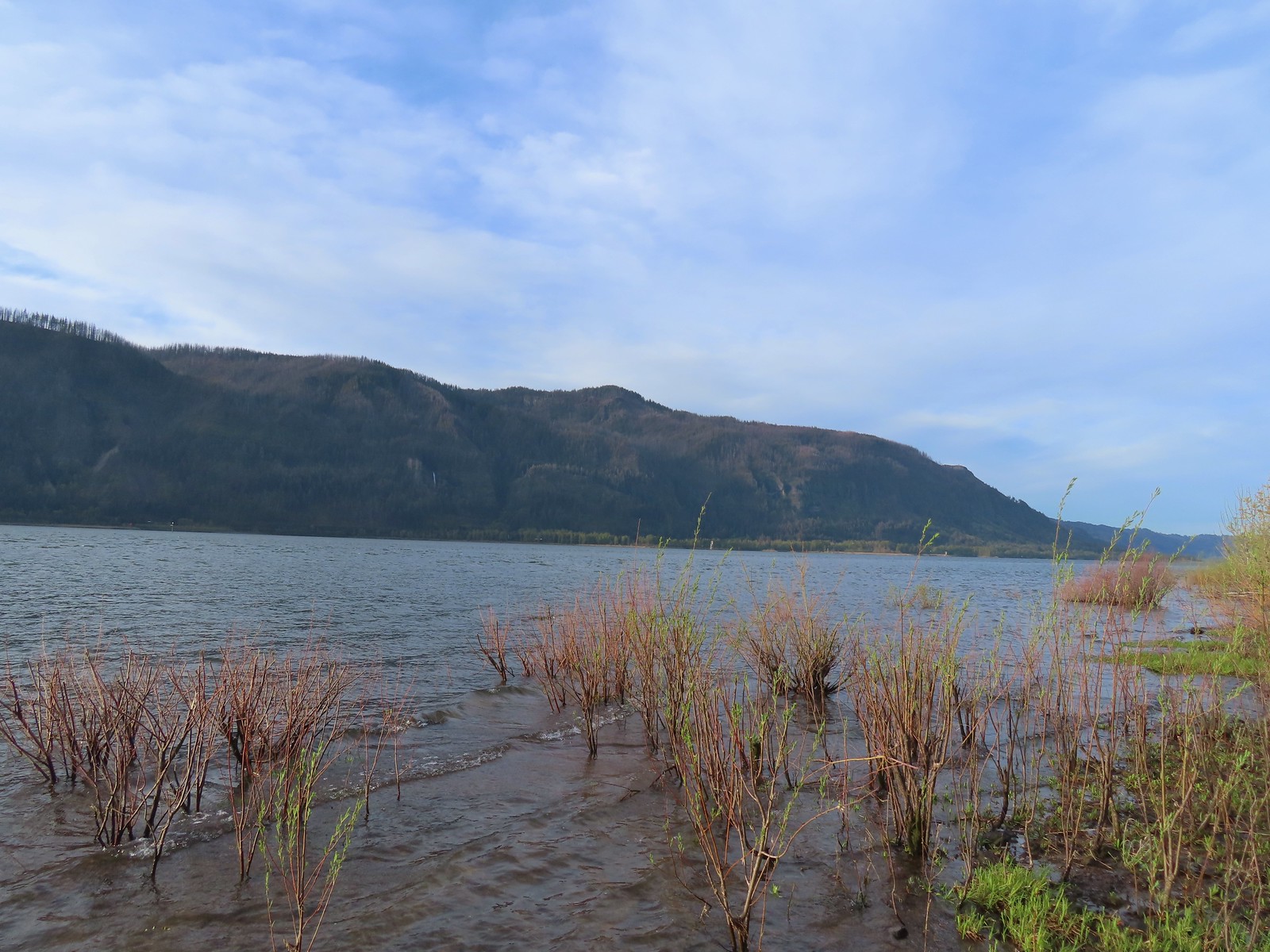 Devil’s Rest and Multnomah Falls (post)
Devil’s Rest and Multnomah Falls (post)
 Multnomah Falls
Multnomah Falls
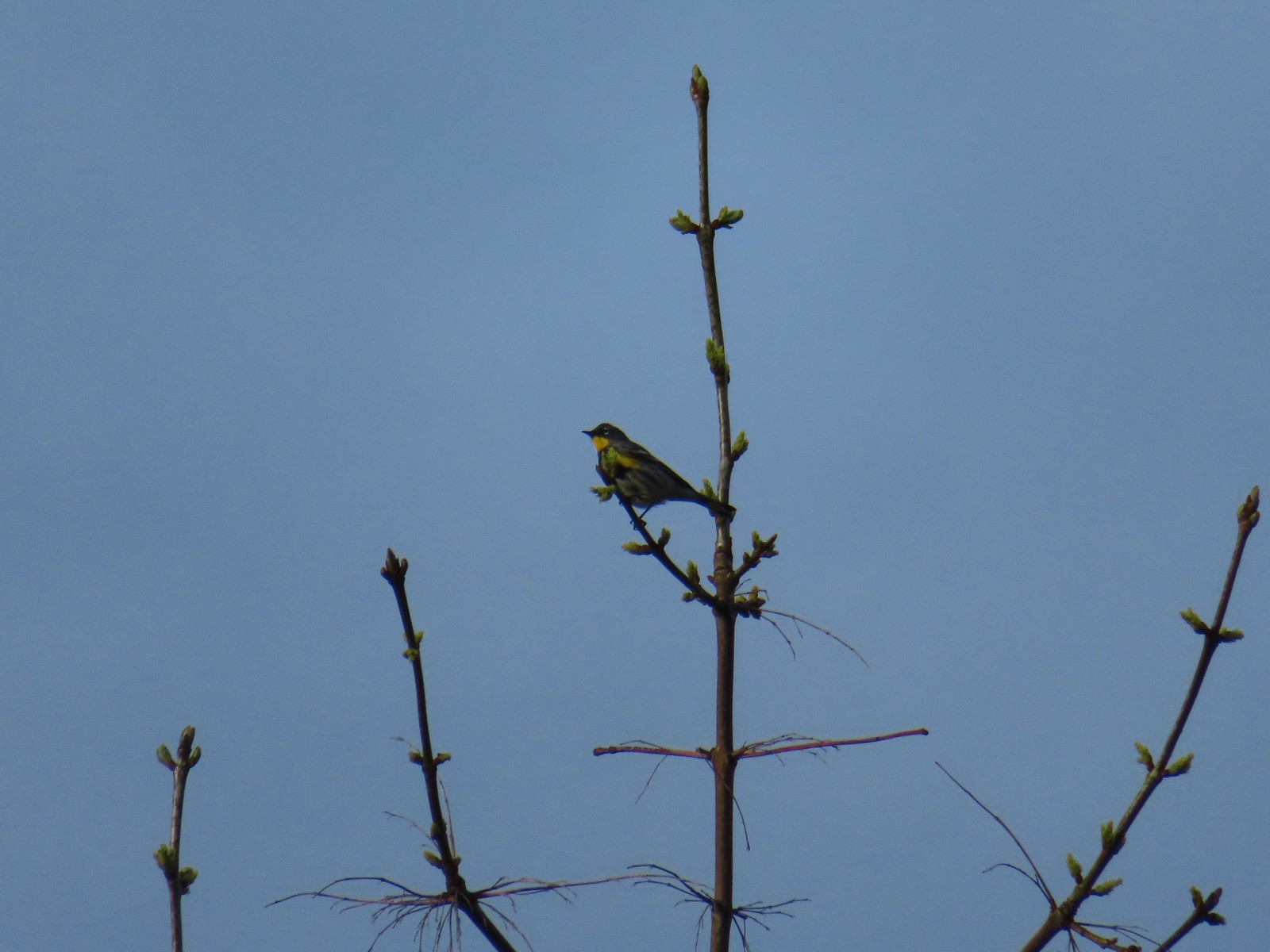 Yellow-rumped warbler.
Yellow-rumped warbler.
The St. Cloud Day Use Area was the westernmost stop of our day, and from there we headed for the easternmost stop at the Wind Mountain Trailhead. The trailhead is approximately a tenth of a mile downhill beyond a quarry. We parked at the quarry where two other vehicles were parked instead of continuing down the narrow, steep, slightly rutted road.
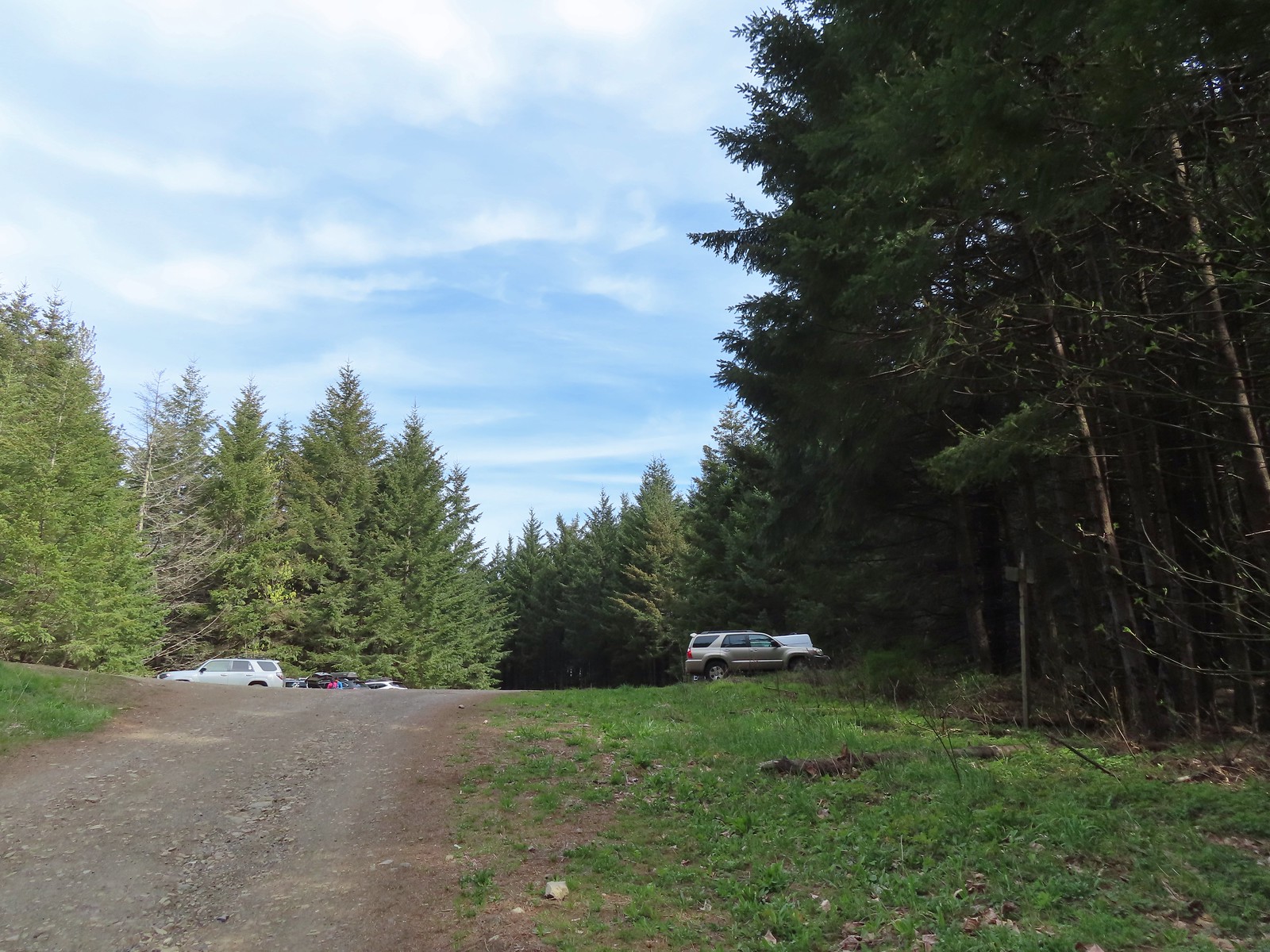 The quarry later in the morning.
The quarry later in the morning.
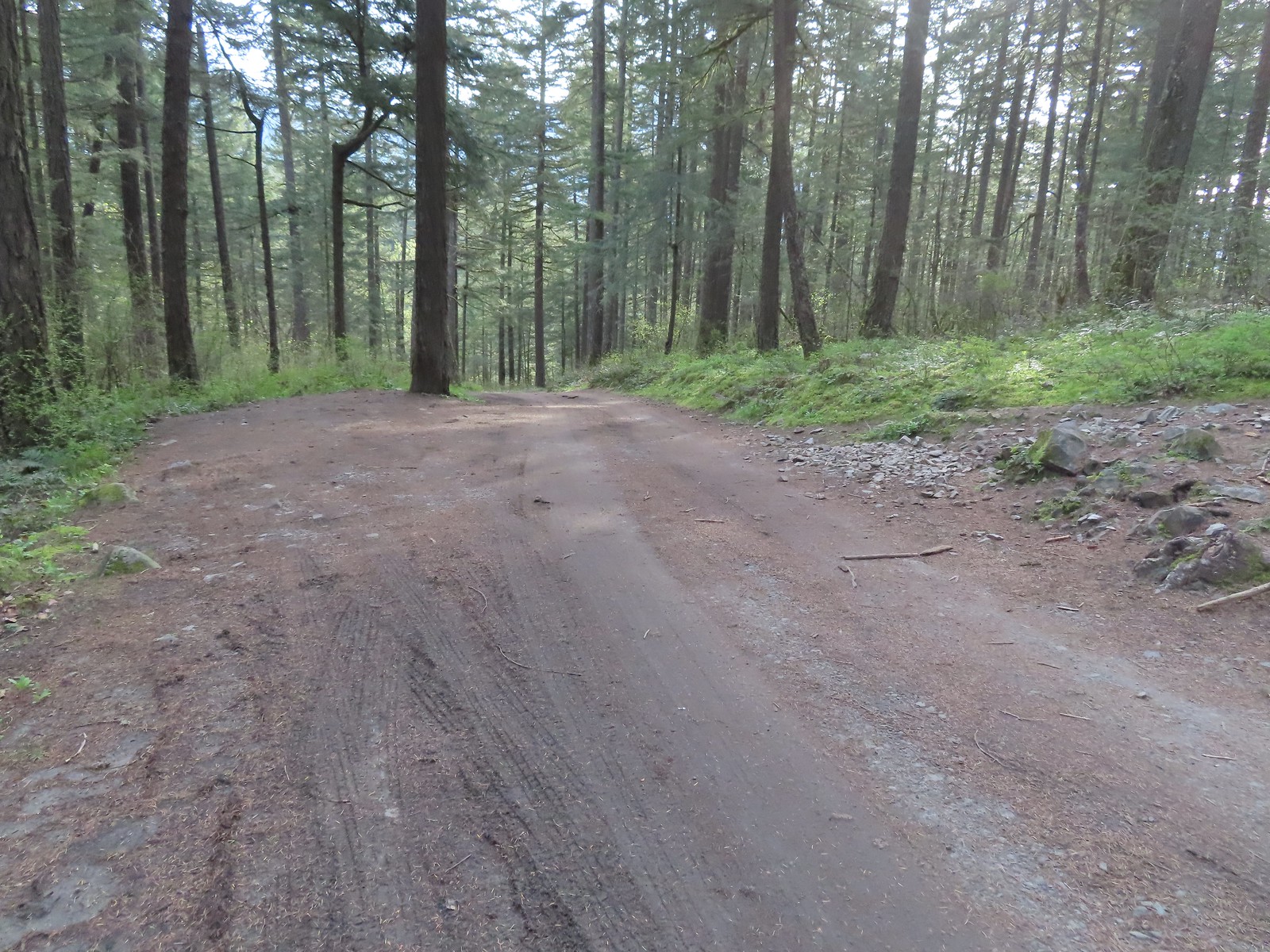 Pullout at the actual trailhead.
Pullout at the actual trailhead.
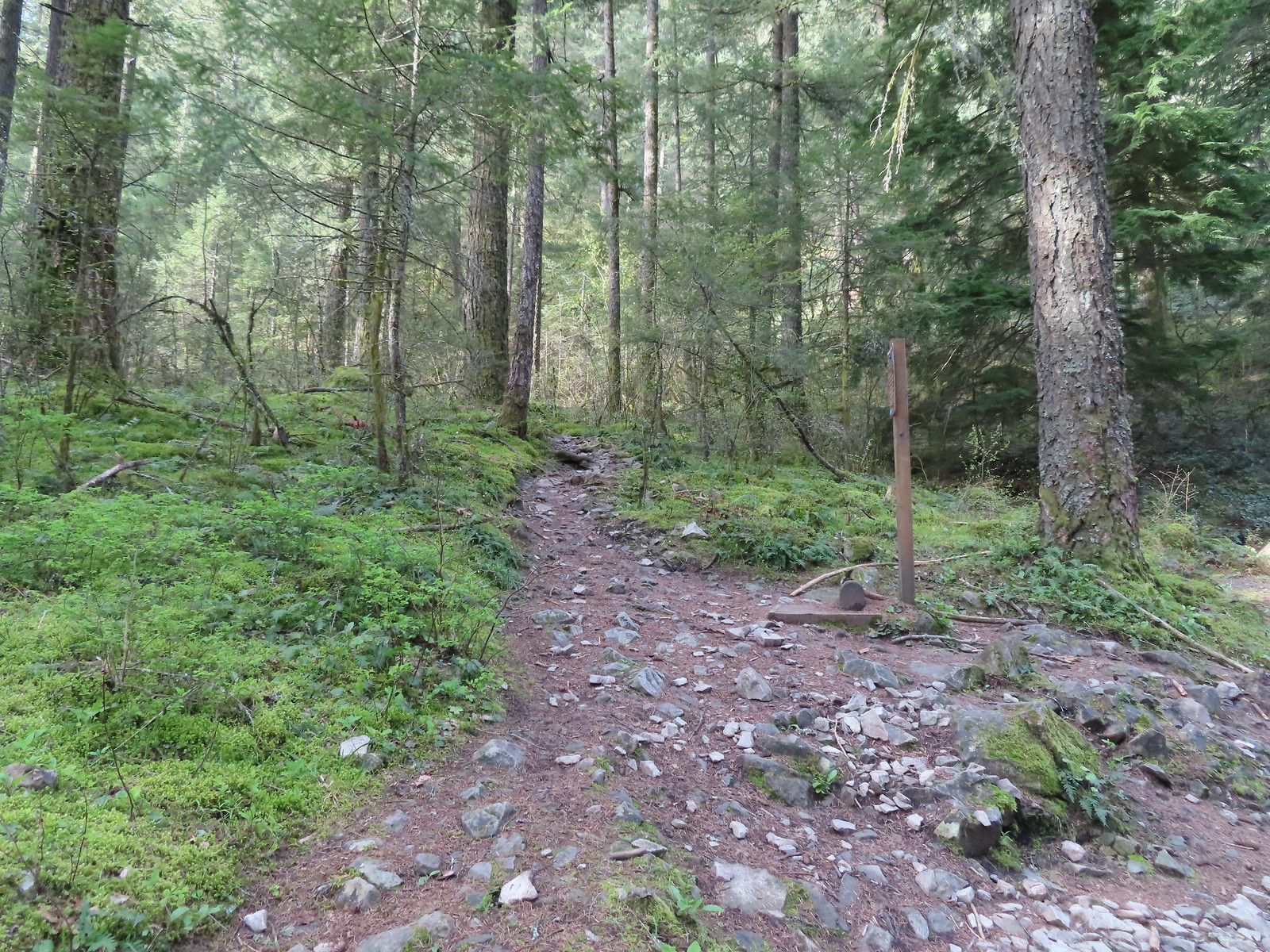 The Wind Mountain Trail at the trailhead.
The Wind Mountain Trail at the trailhead.
The Wind Mountain Trail gains over 1100′ in just over a mile as it climbs to the summit of Wind Mountain. The mountain’s summit is sacred to the area’s Native American tribes and signs near the summit show the areas where hikers are allowed to be.
The climb was a good workout. While the trail didn’t appear to be all that steep our legs reminded us that it was.
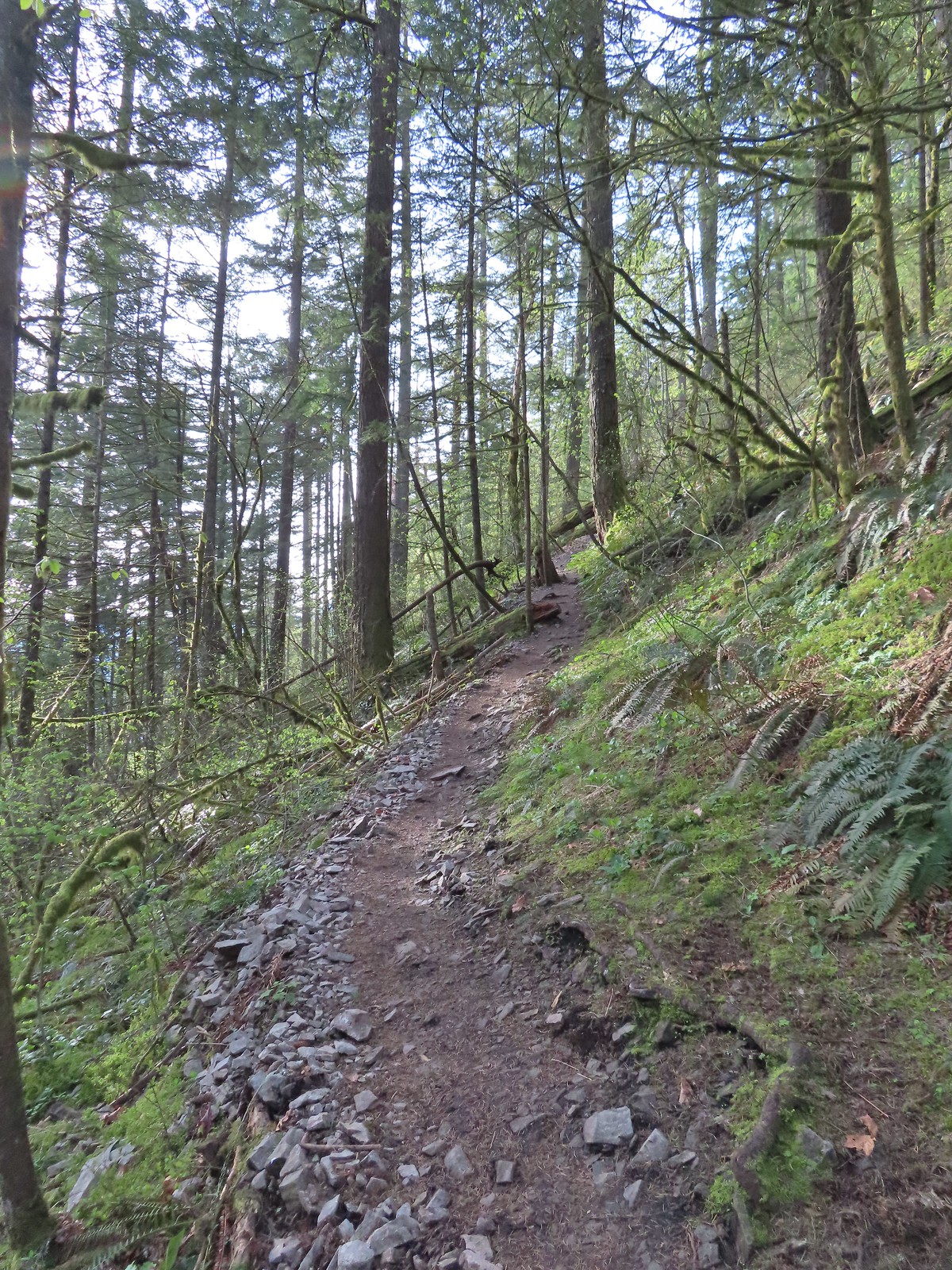
There was a nice variety of wildflowers on display and at the 0.4-mile mark we came to a spur trail leading out to a rock outcrop.
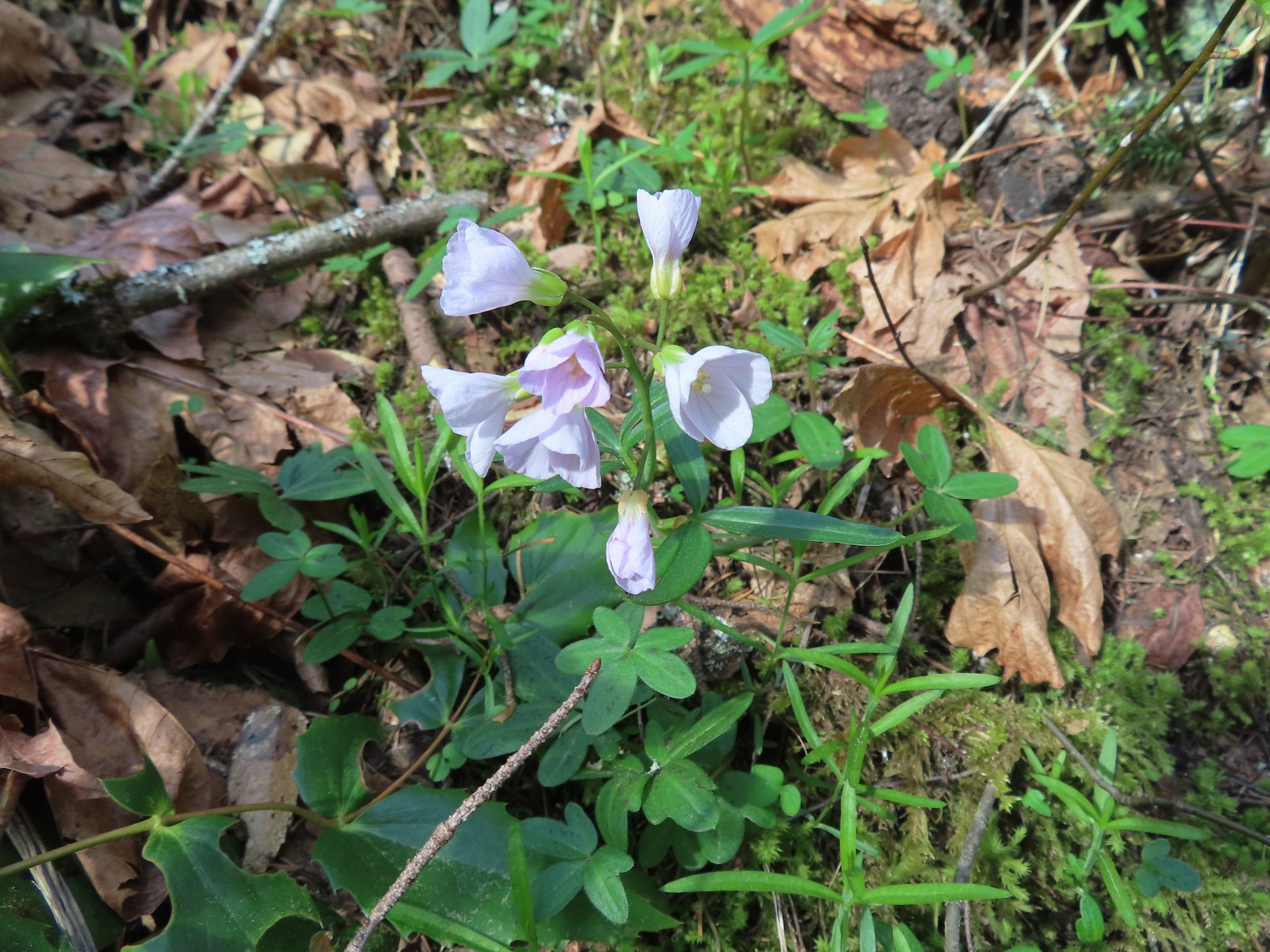 Slender toothwort
Slender toothwort
 Trillium
Trillium
 Red flowering currant
Red flowering currant
 Close up of red flowering currant
Close up of red flowering currant
 Pioneer violet
Pioneer violet
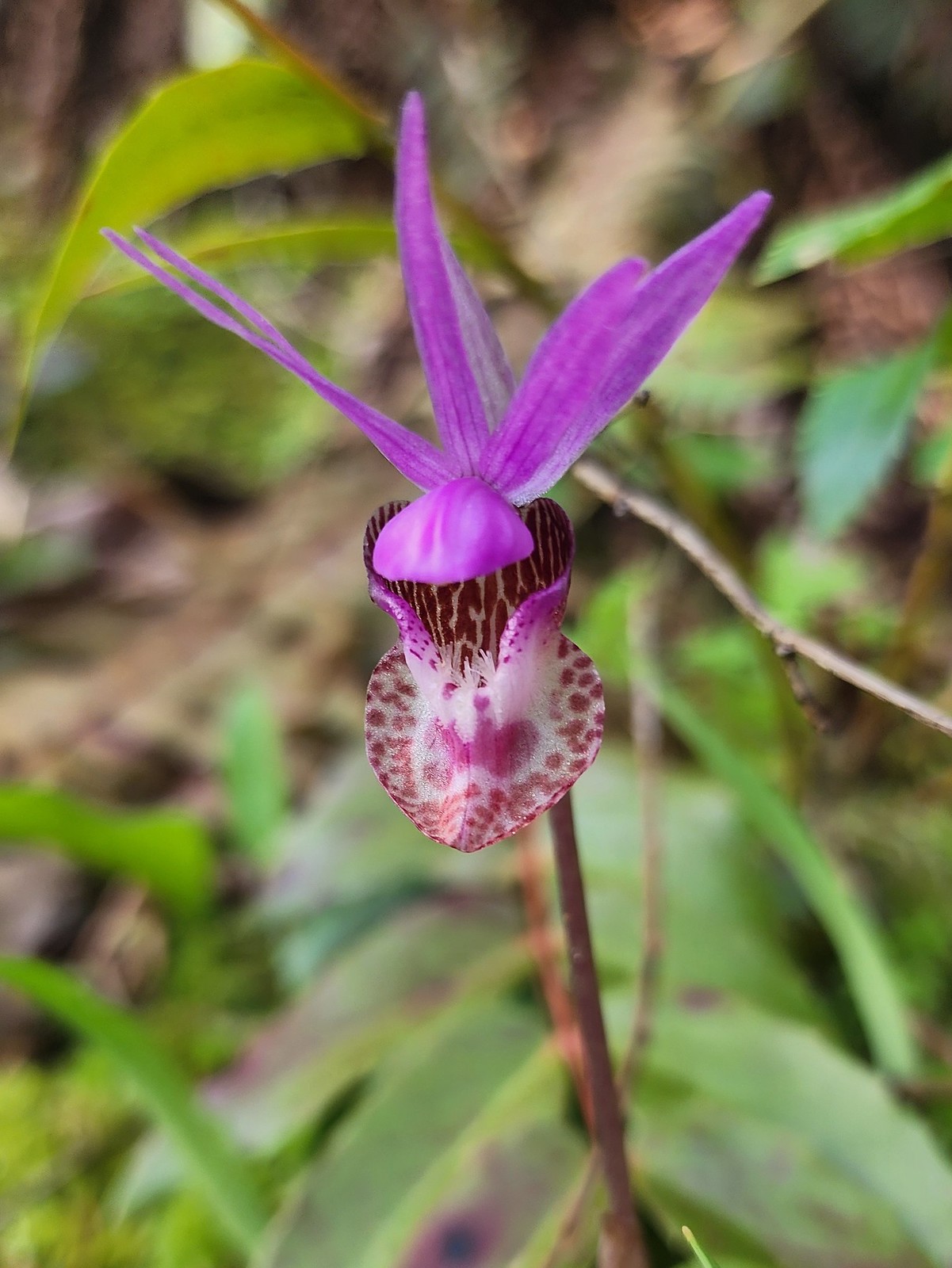 Fairy slipper
Fairy slipper
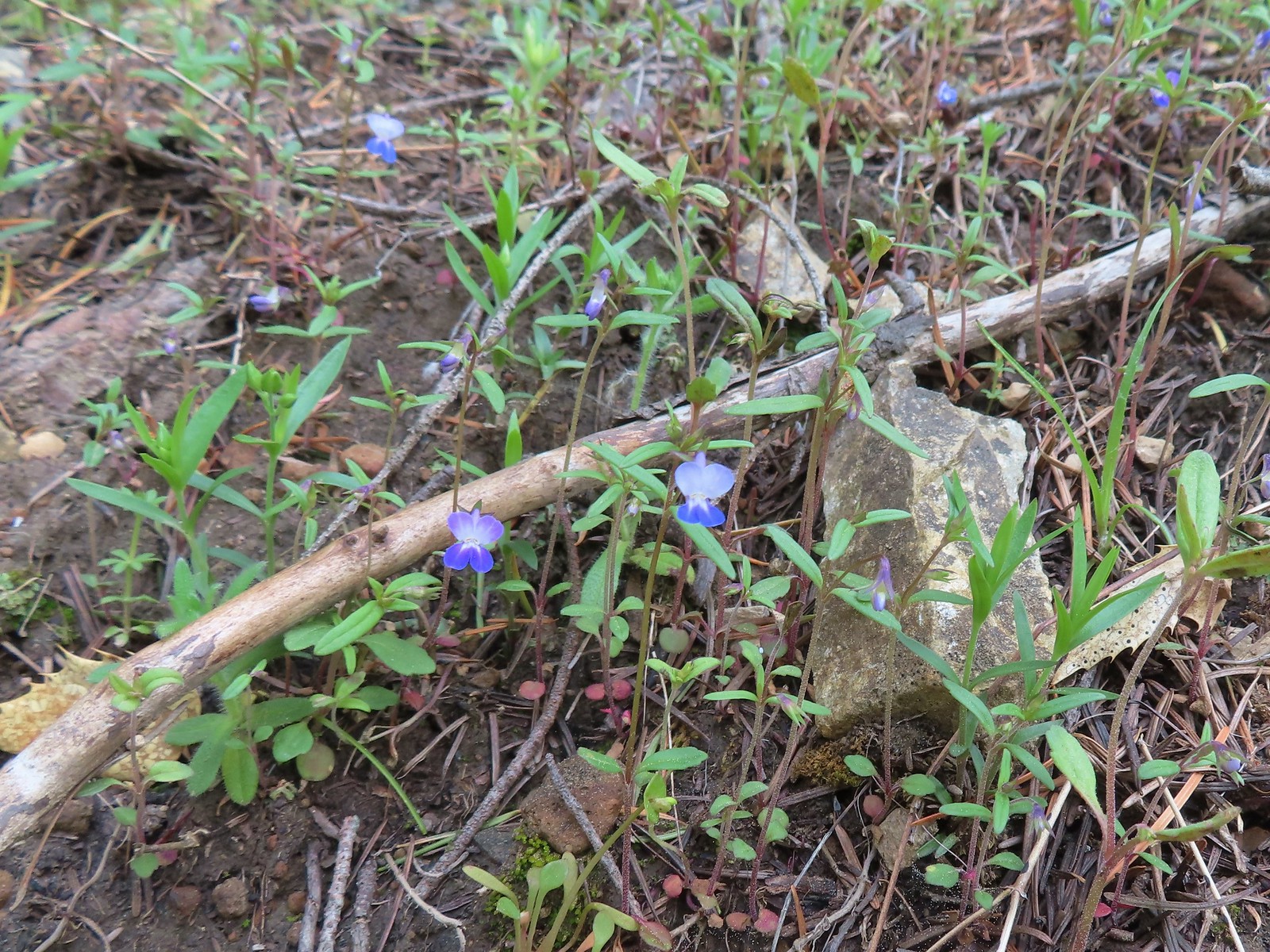 Blue-eyed Mary
Blue-eyed Mary
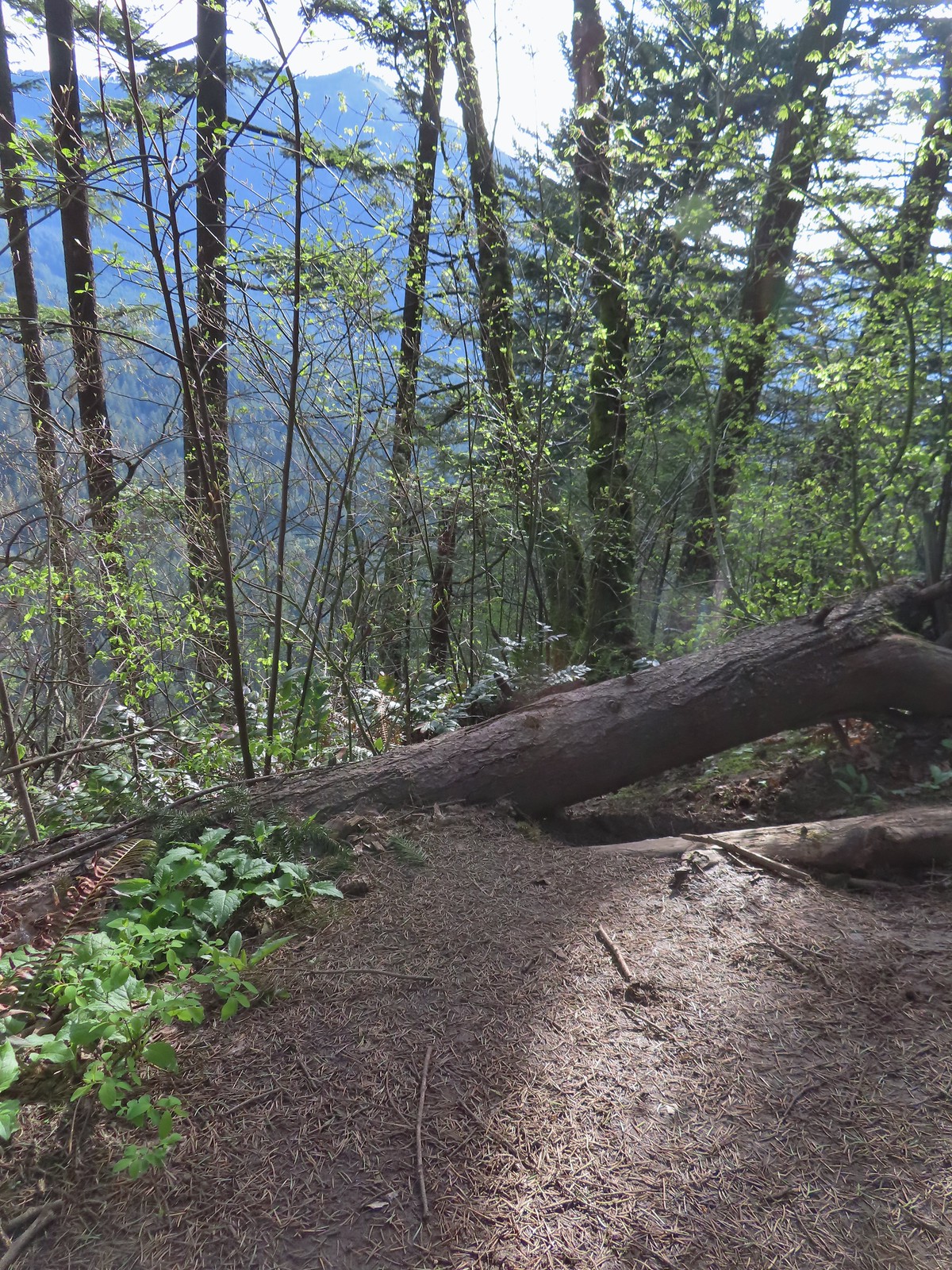 The spur trail down to the outcrop.
The spur trail down to the outcrop.
The spur trail was steep a little sketchy in spots so Heather opted to skip the viewpoint while I carefully made my way down.
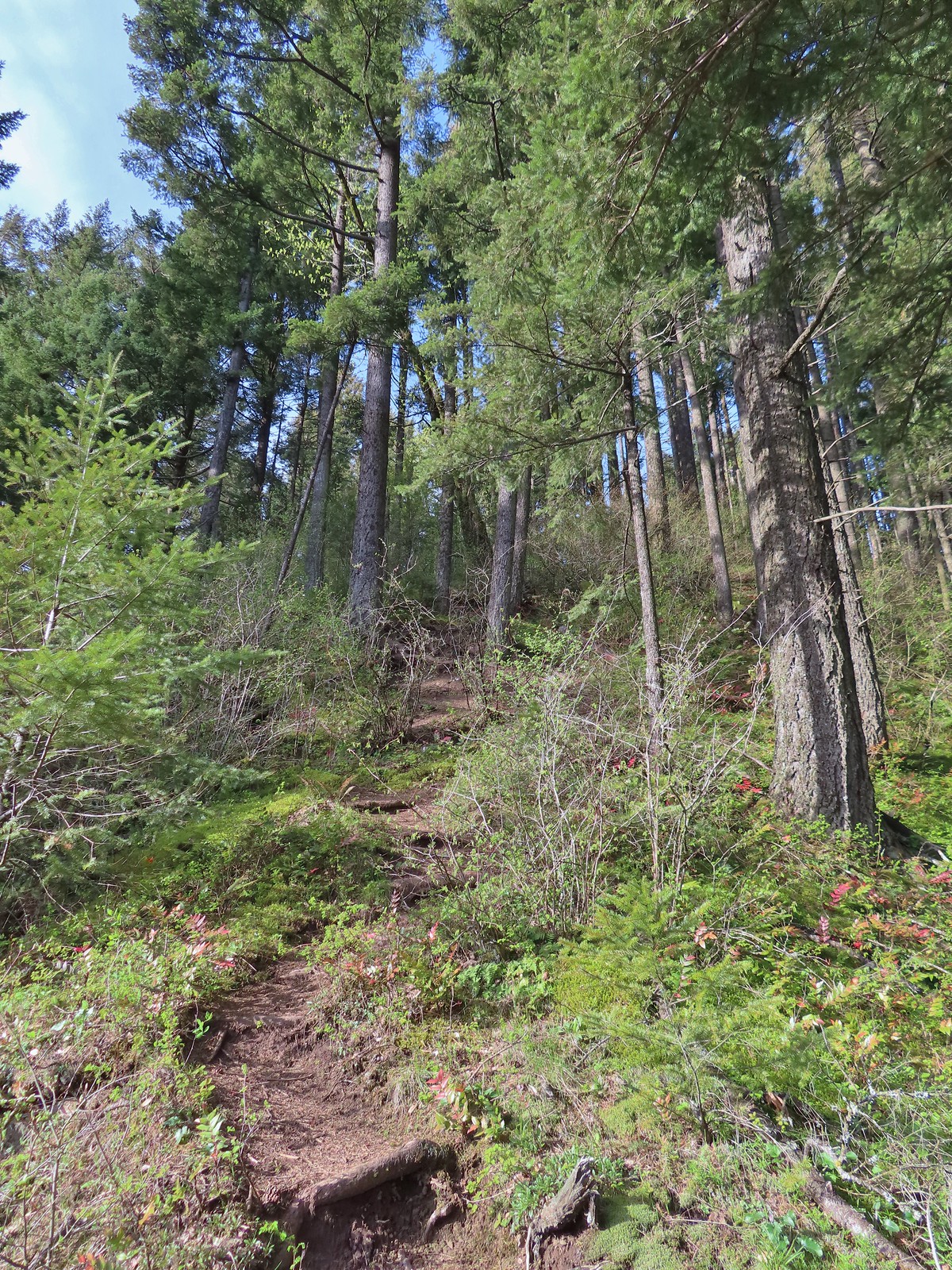 Looking back up the spur trail.
Looking back up the spur trail.
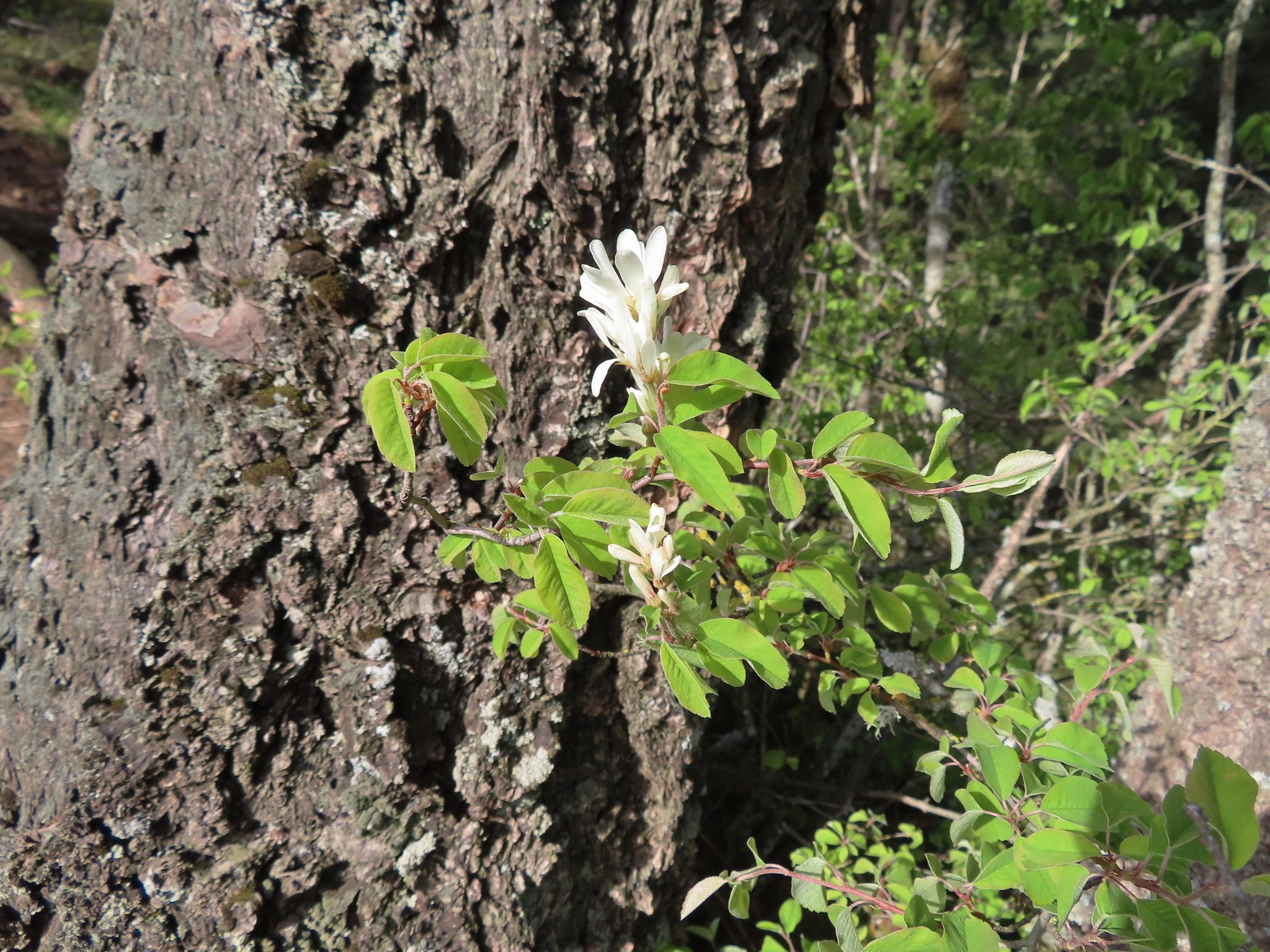 Serviceberry
Serviceberry
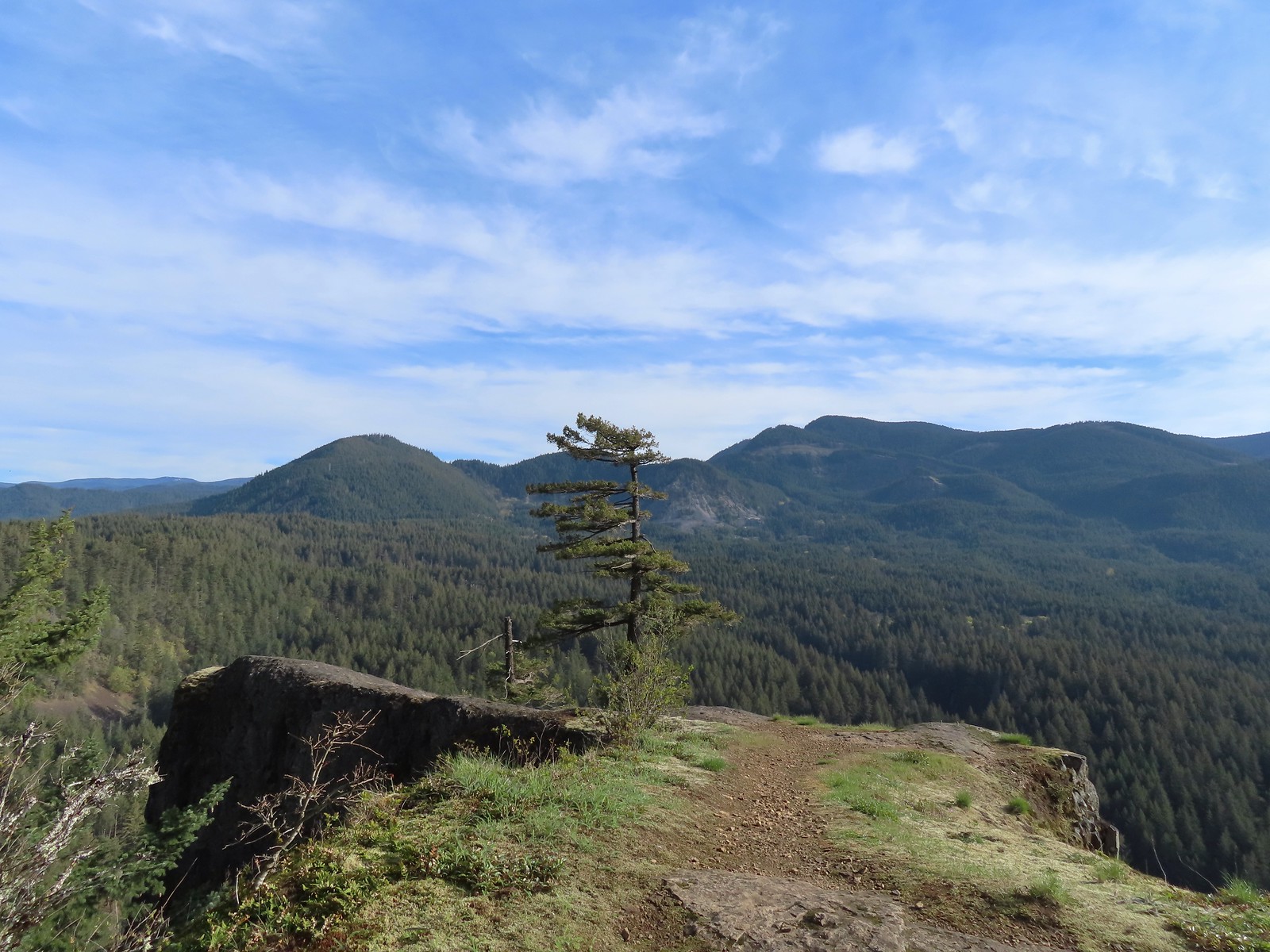 Augspurger Mountain (post) from the outcrop.
Augspurger Mountain (post) from the outcrop.
 Dog Mountain (post)
Dog Mountain (post)
After taking in the view I returned to the trail and continued uphill.
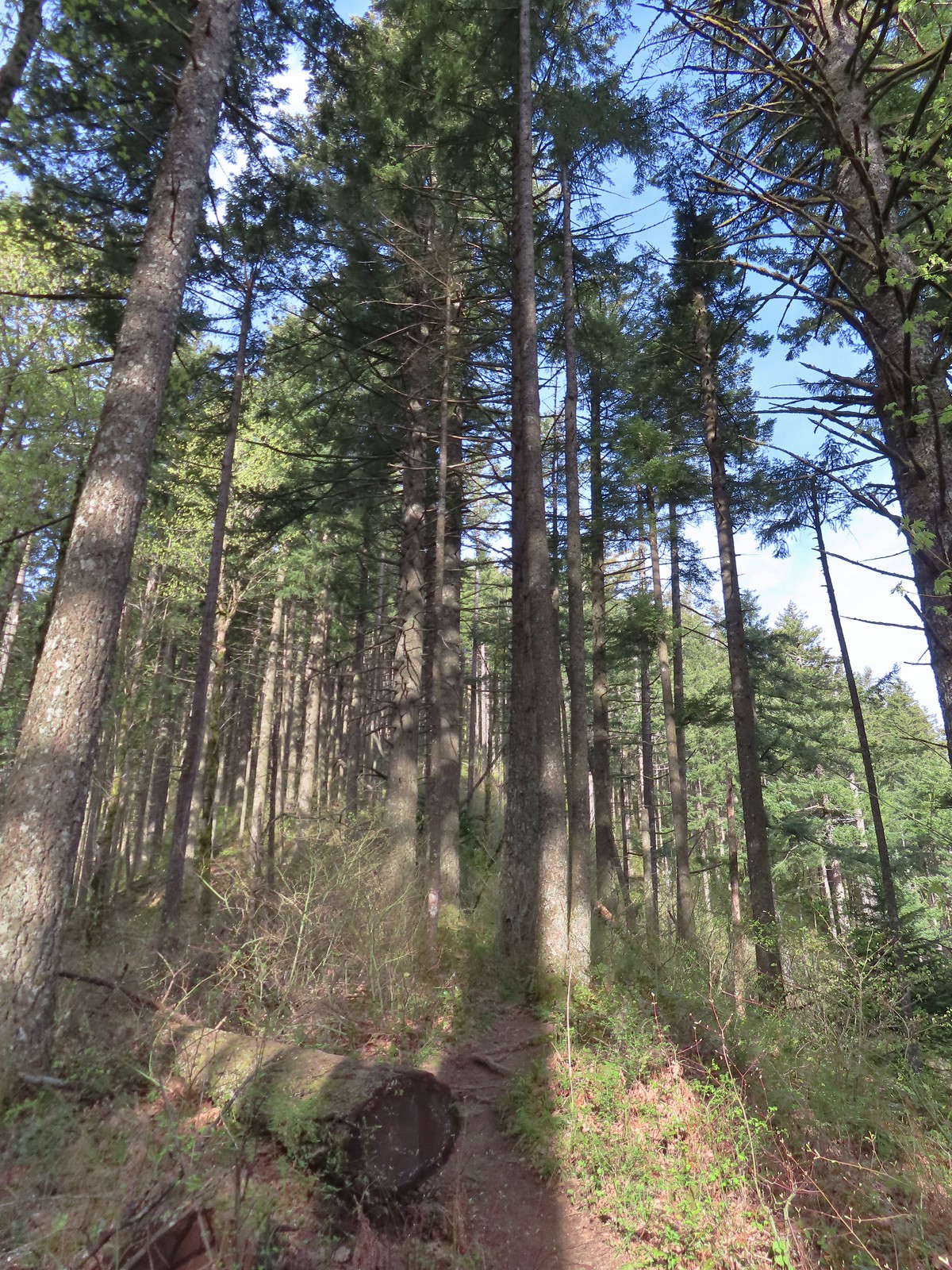
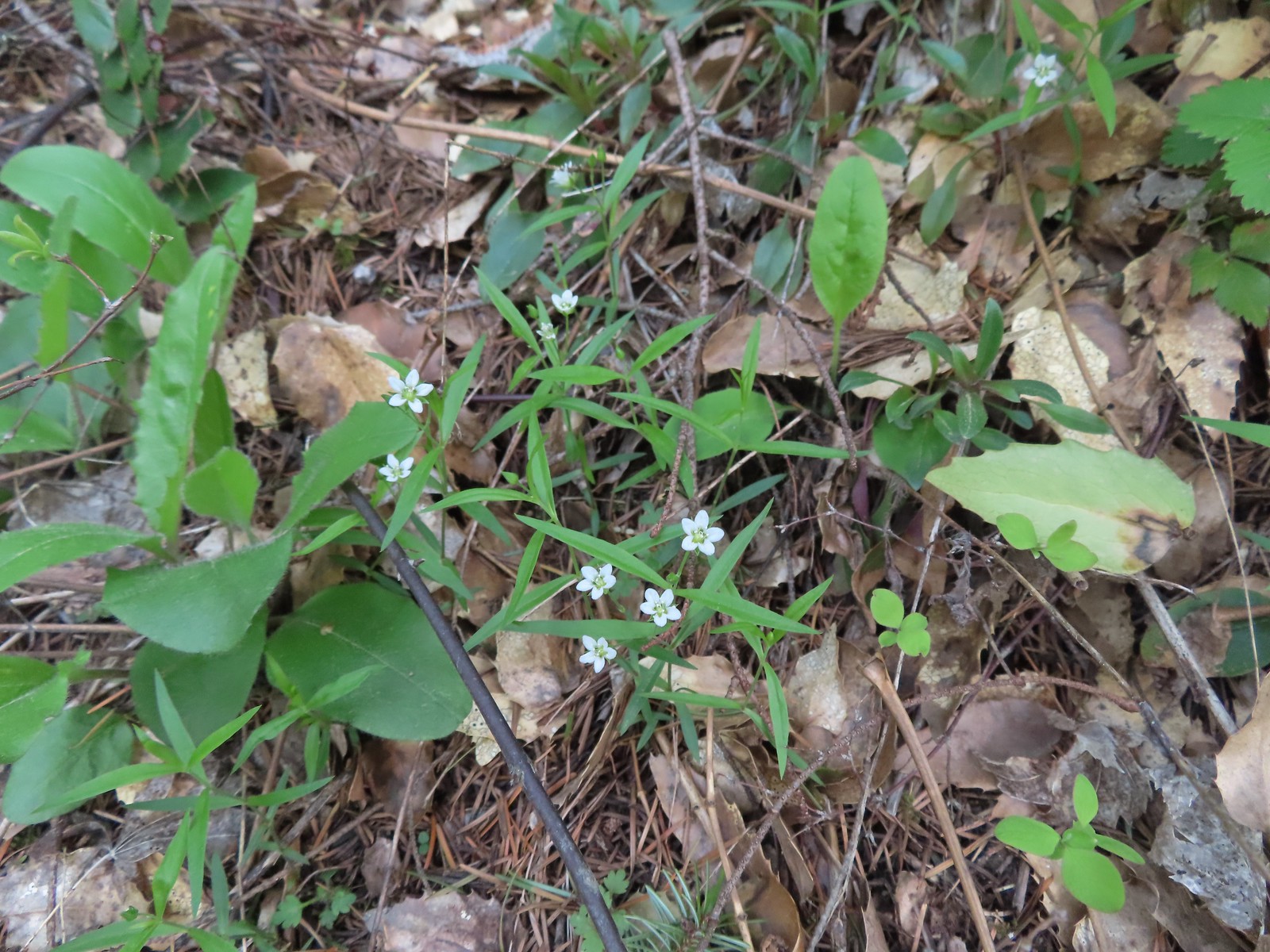 Largeleaf sandwort
Largeleaf sandwort
 Talus slope on Wind Mountain.
Talus slope on Wind Mountain.
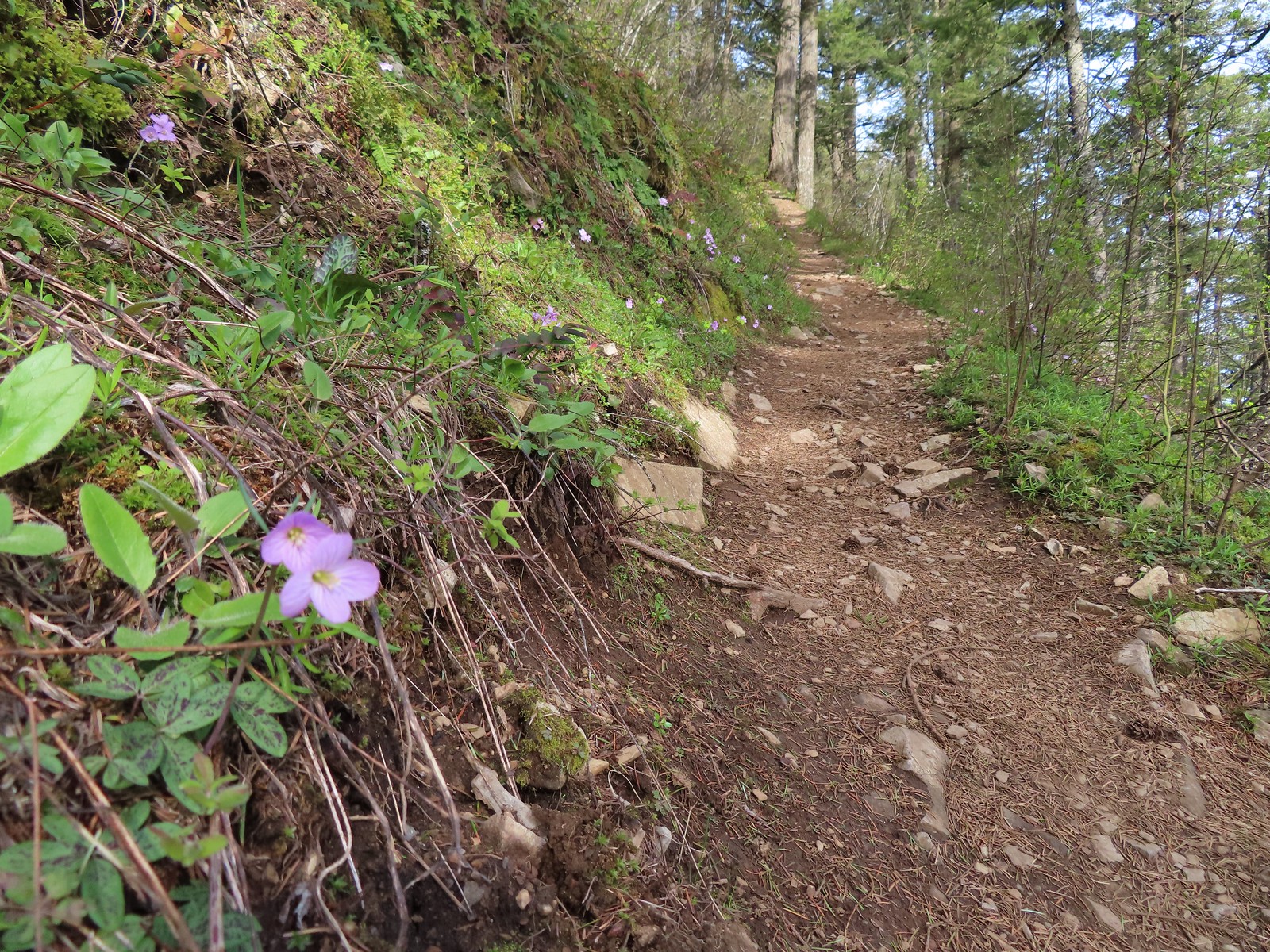 Slender toothwort along the trail.
Slender toothwort along the trail.
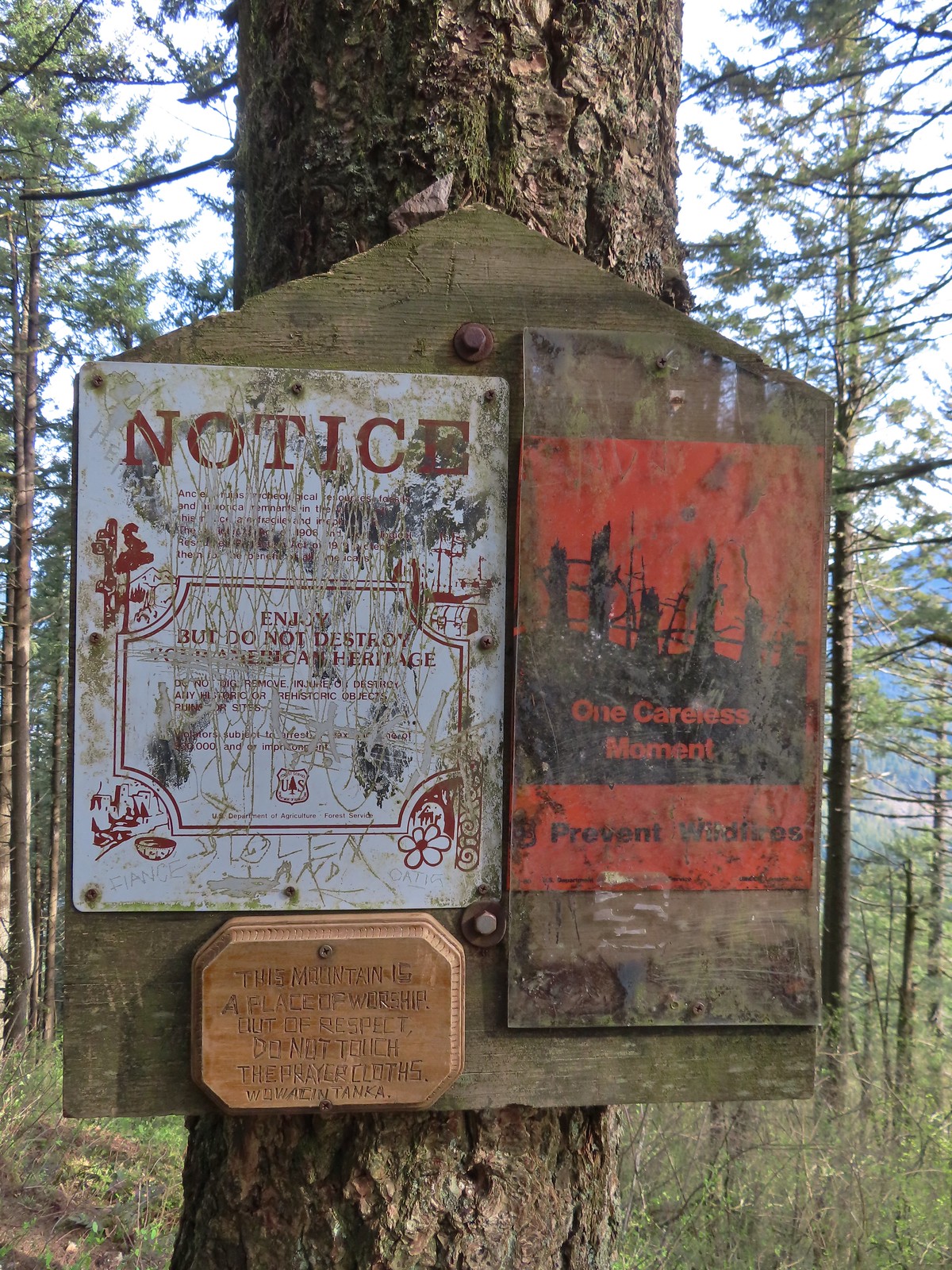 One of the signs near the summit.
One of the signs near the summit.
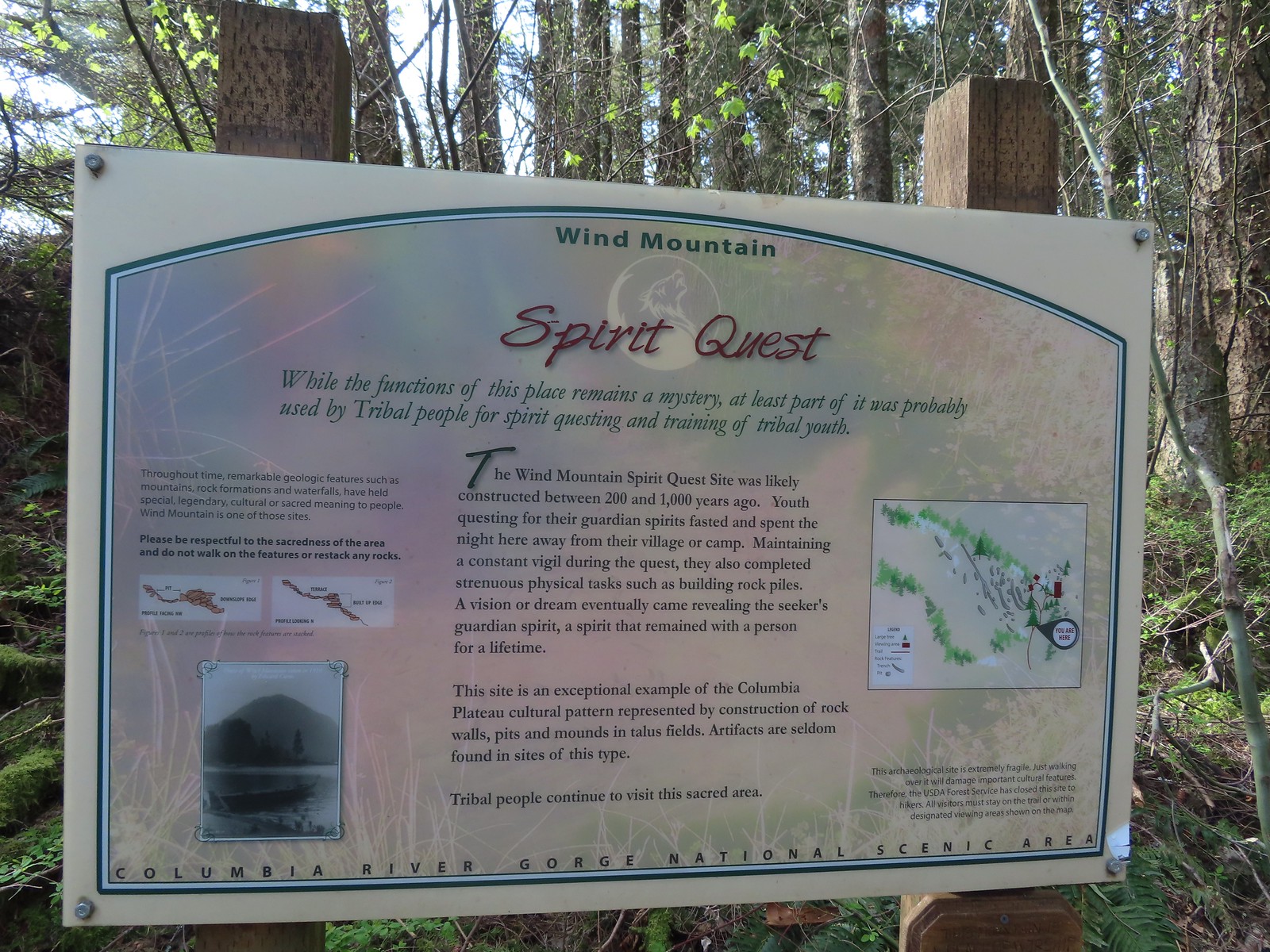 Interpretive sign with a map of the areas open to hikers.
Interpretive sign with a map of the areas open to hikers.
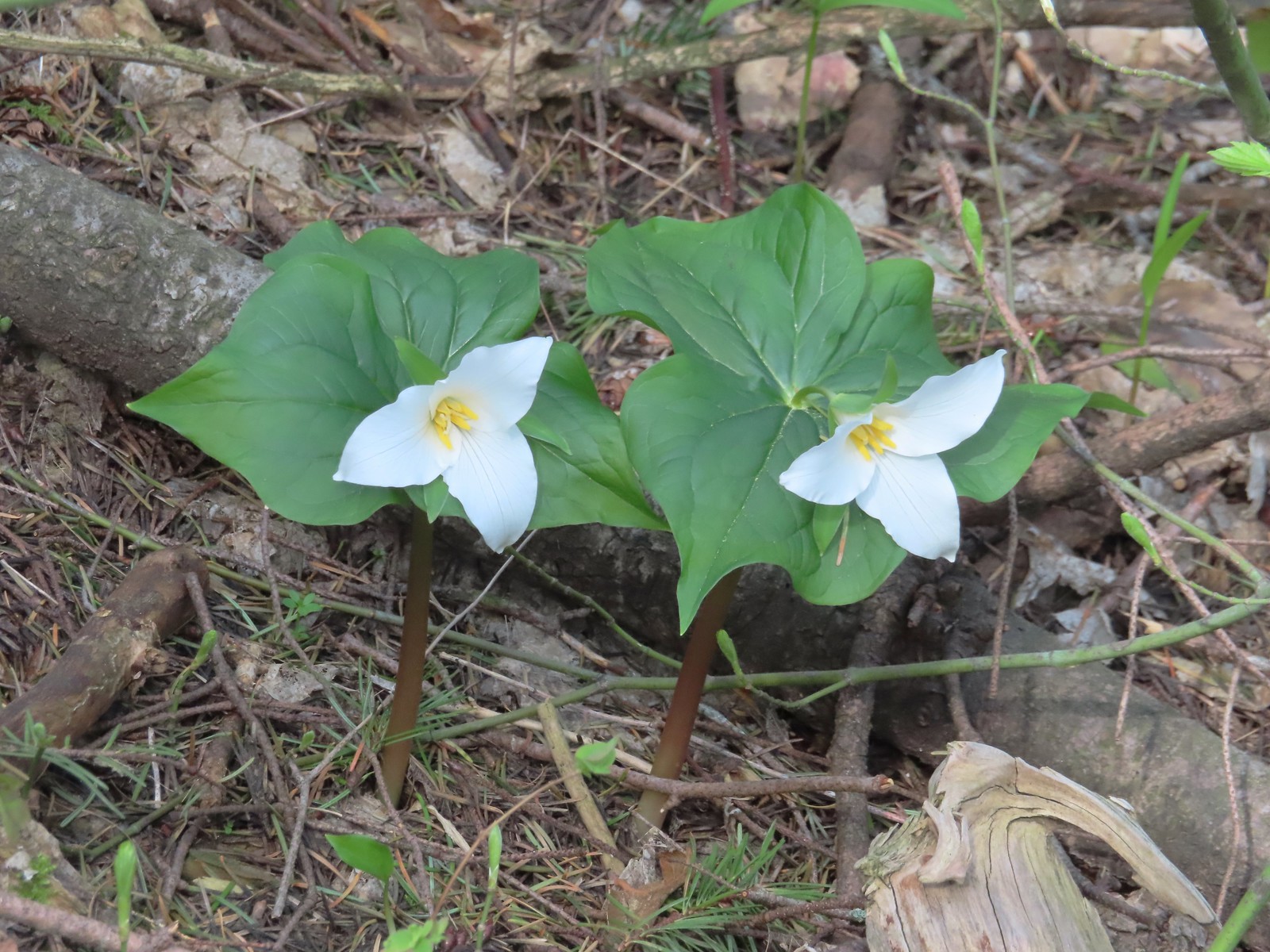 Trillium
Trillium
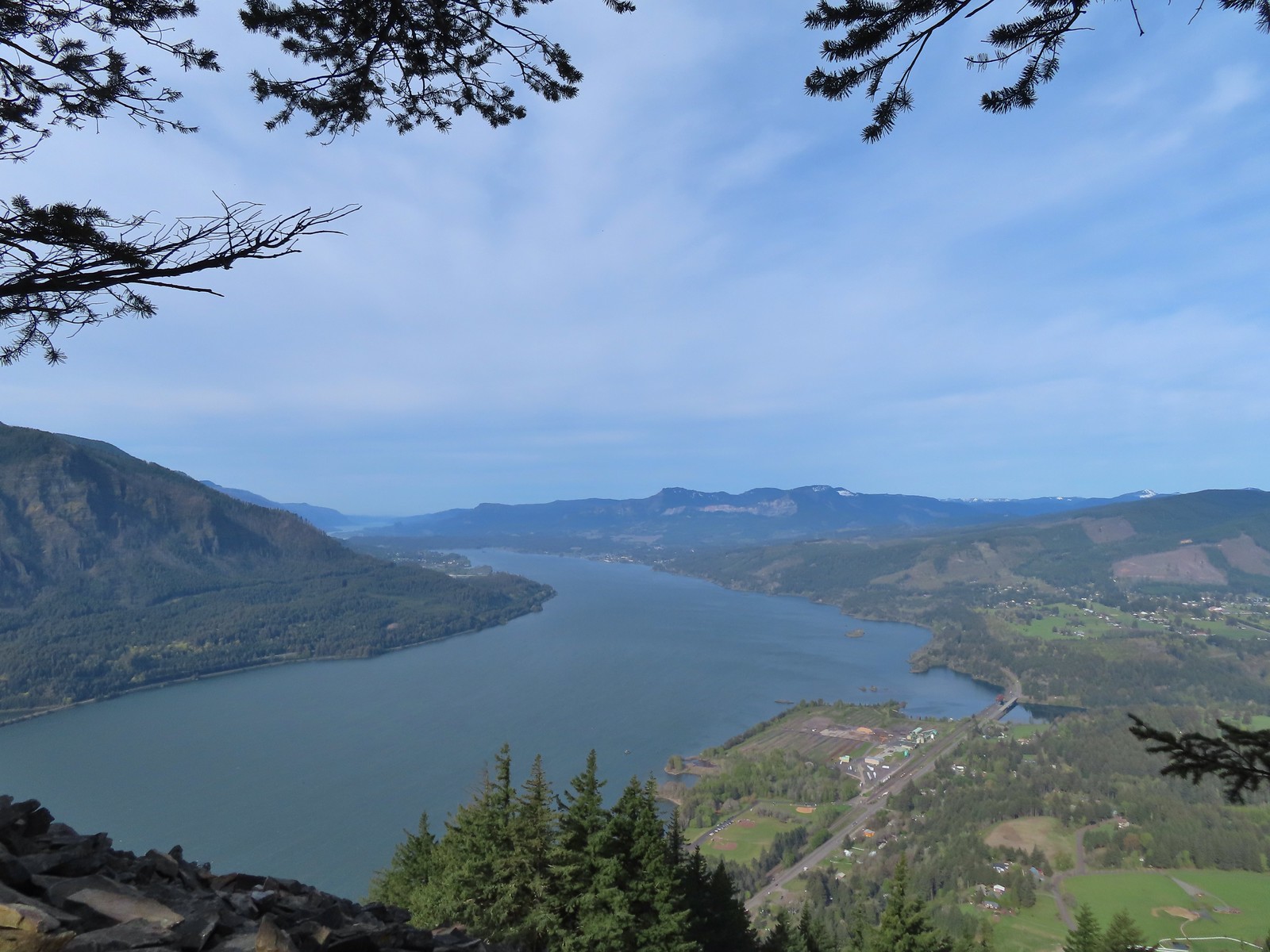 View west down the Columbia River. Hamilton Mountain (post), Table Mountain (post), and Greenleaf Peak (post) from L to R in the center.
View west down the Columbia River. Hamilton Mountain (post), Table Mountain (post), and Greenleaf Peak (post) from L to R in the center.
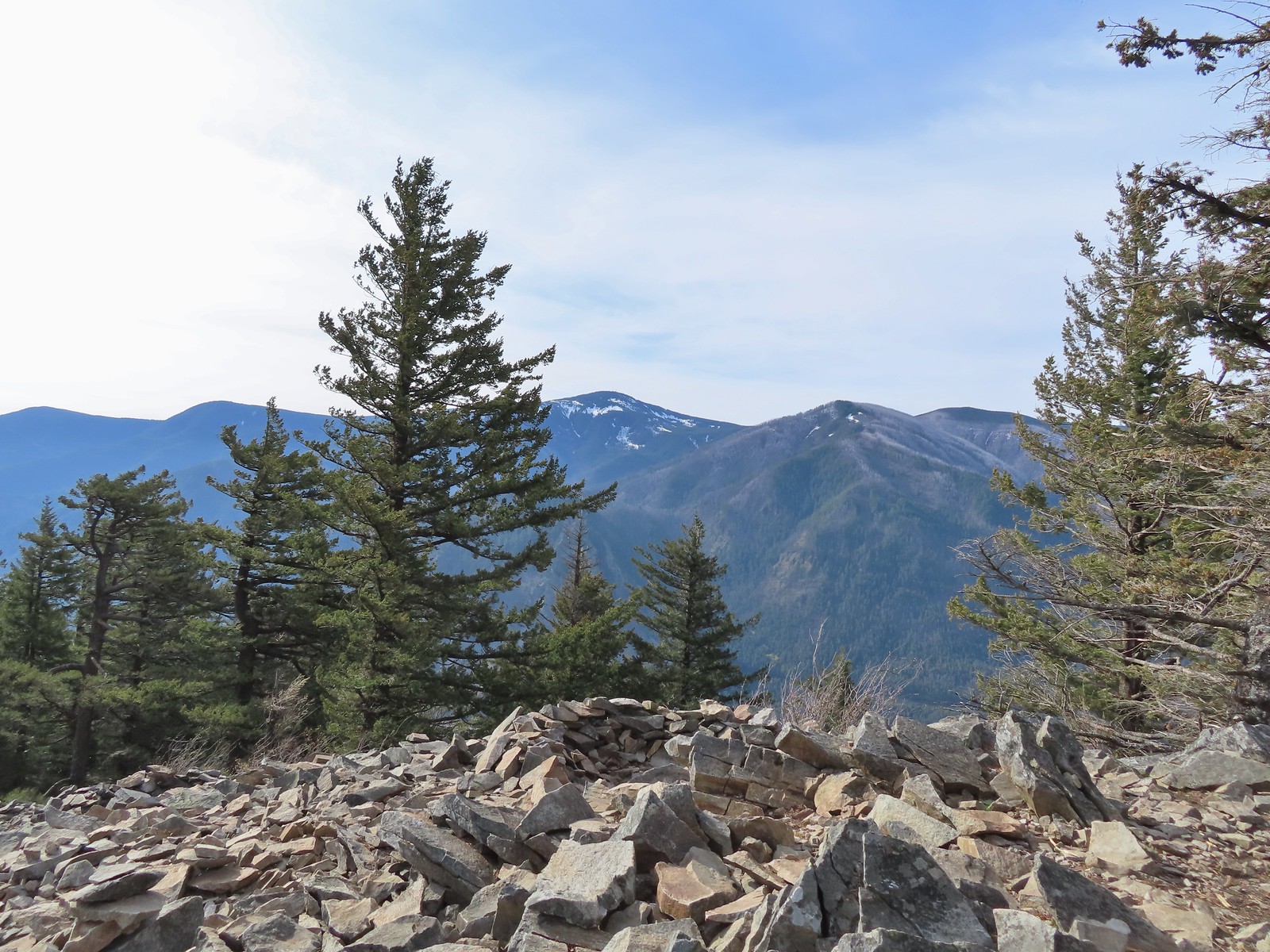 Mt. Defiance (post) from the summit.
Mt. Defiance (post) from the summit.
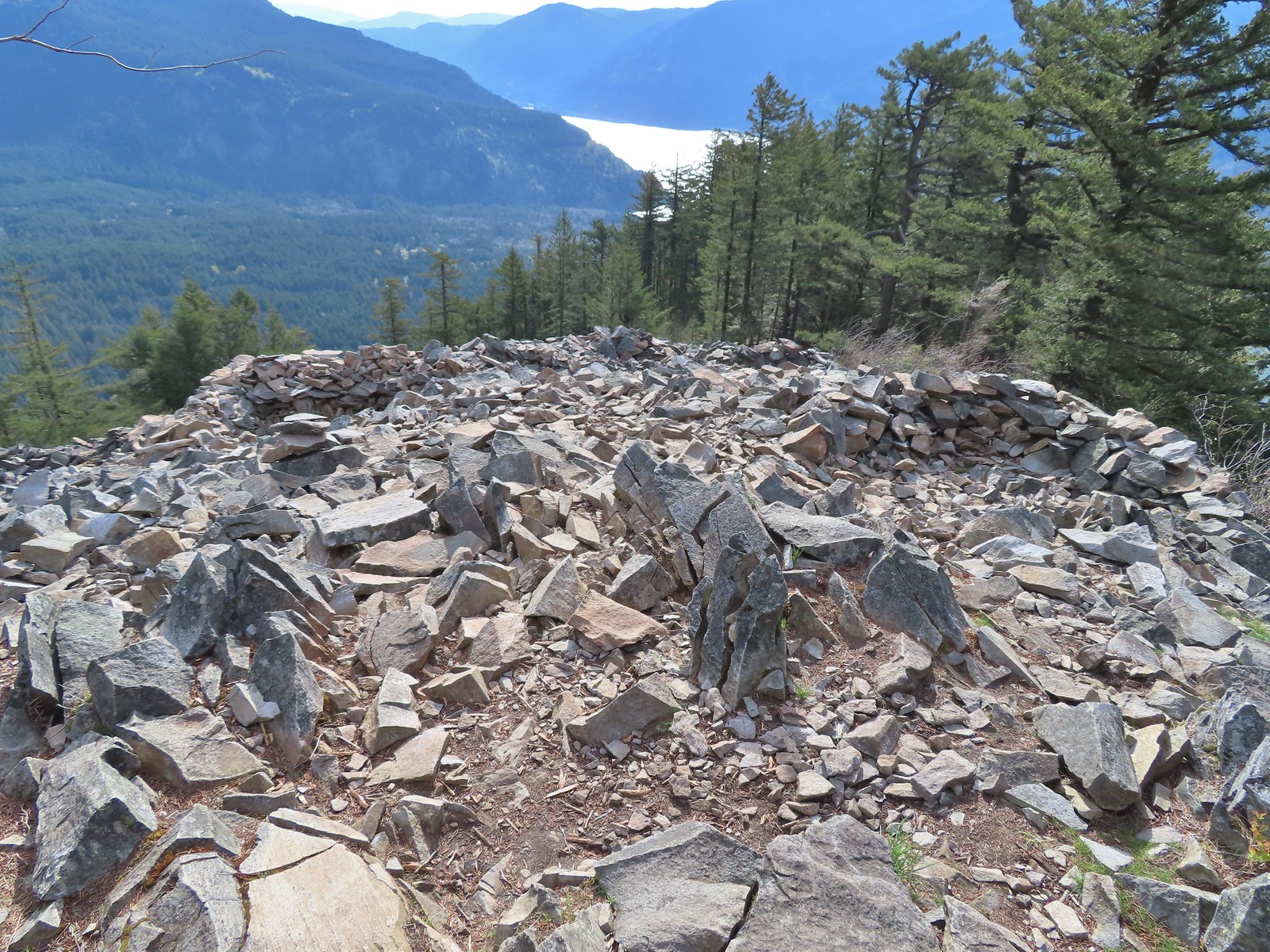 Vision quest pits on Wind Mountain.
Vision quest pits on Wind Mountain.
 Mt. Adams beyond Augspurger Mountain.
Mt. Adams beyond Augspurger Mountain.
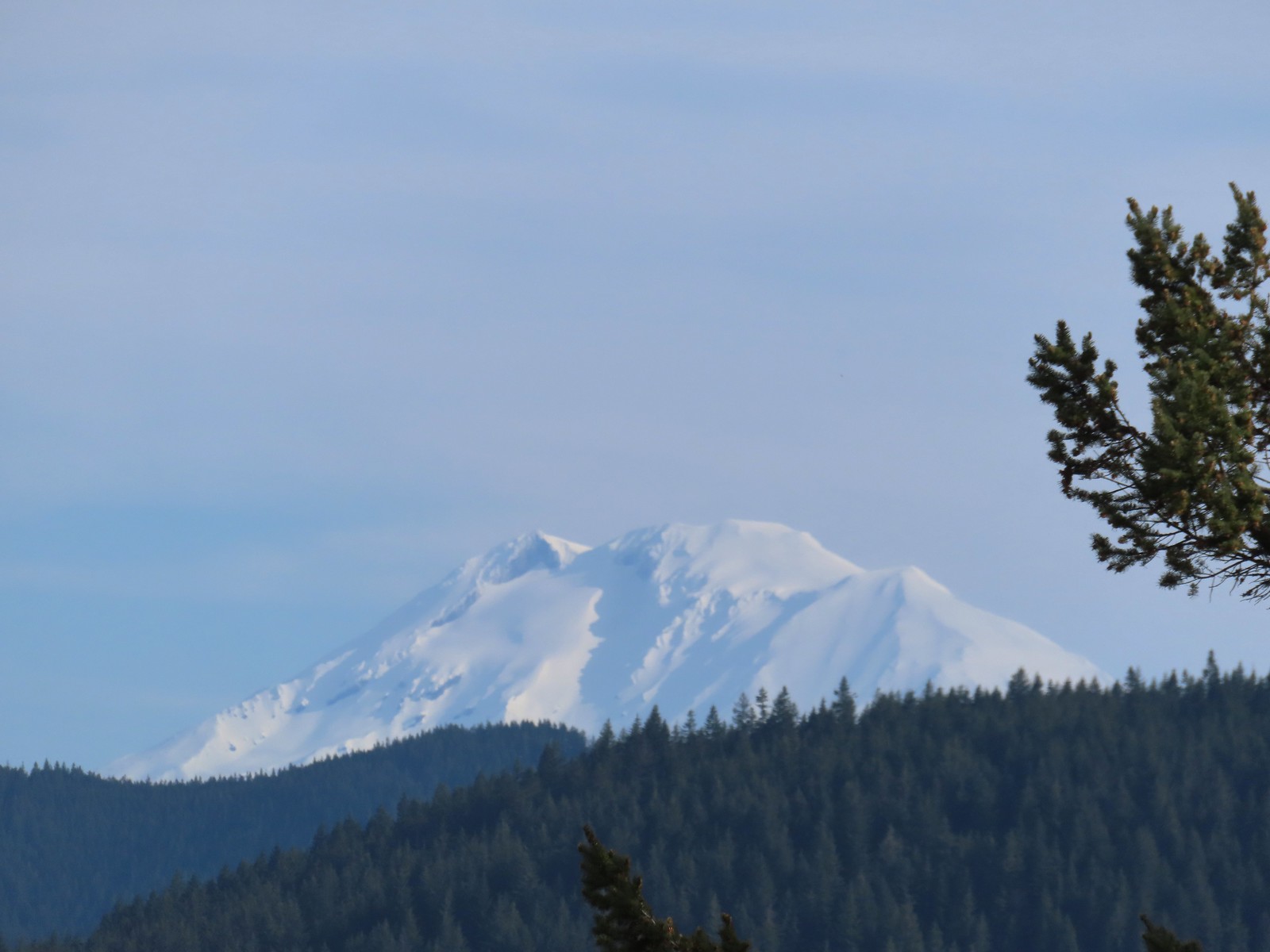 Mt. Adams
Mt. Adams
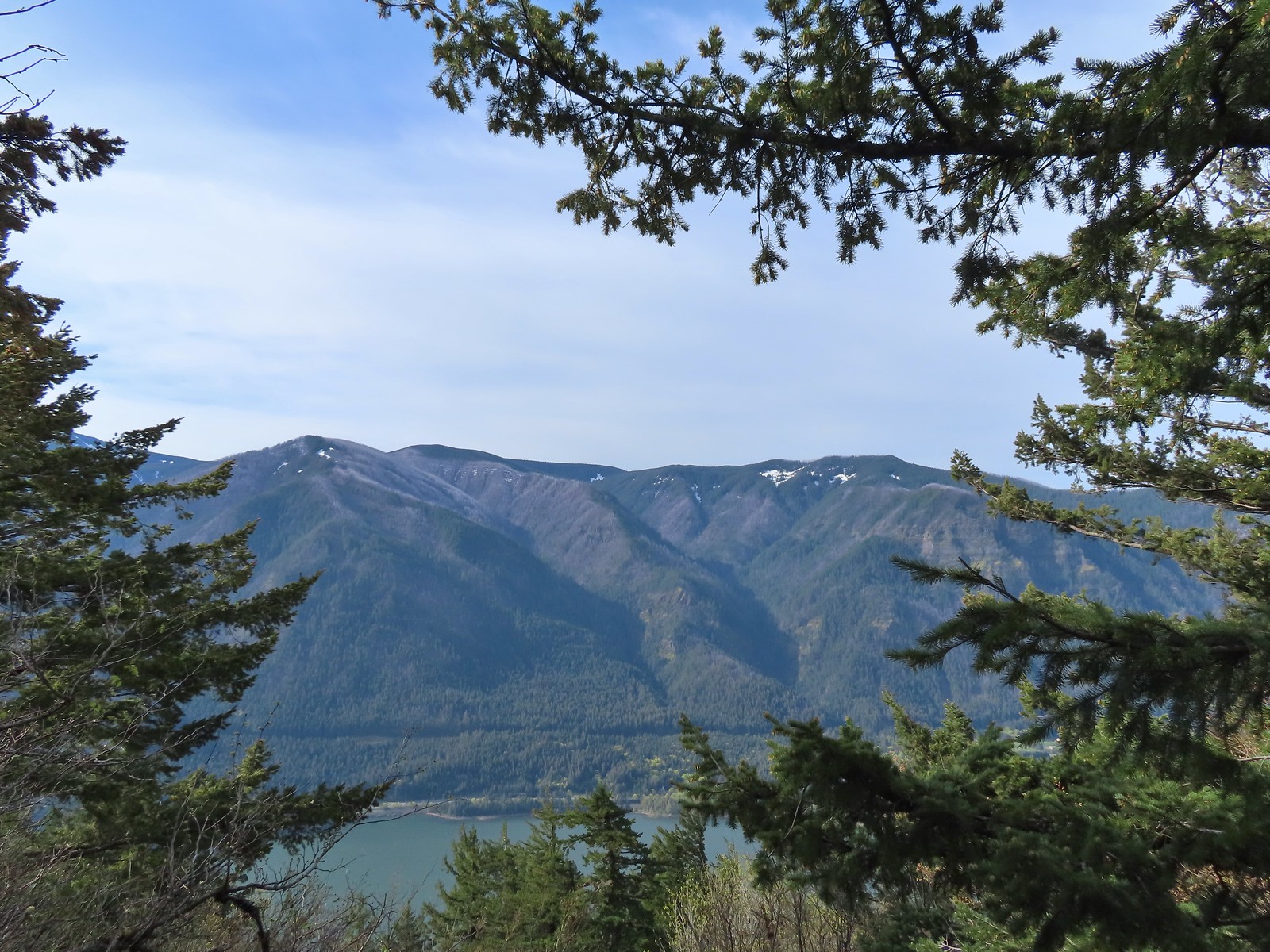 Looking across the Columbia River.
Looking across the Columbia River.
There was a nice breeze at the summit, and we took a well-earned break before heading down. Up till that point we’d only seen five other hikers all morning, but now that it was later we found ourselves stepping aside regularly to let the uphill traffic pass. From the quarry we headed back West to our next stop at the Sams-Walker Day Use Area.
Similar to the St. Cloud Day Use Area the area is a former homestead with picnic tables, a 1.1-mile loop trail, and vault toilet. We were surprised to find the small parking lot here almost entirely full. As it turned out group from the Friends of the Columbia River Gorge were out doing some planting.
We were able to park along the edge of the trailhead entrance and set off on the loop.
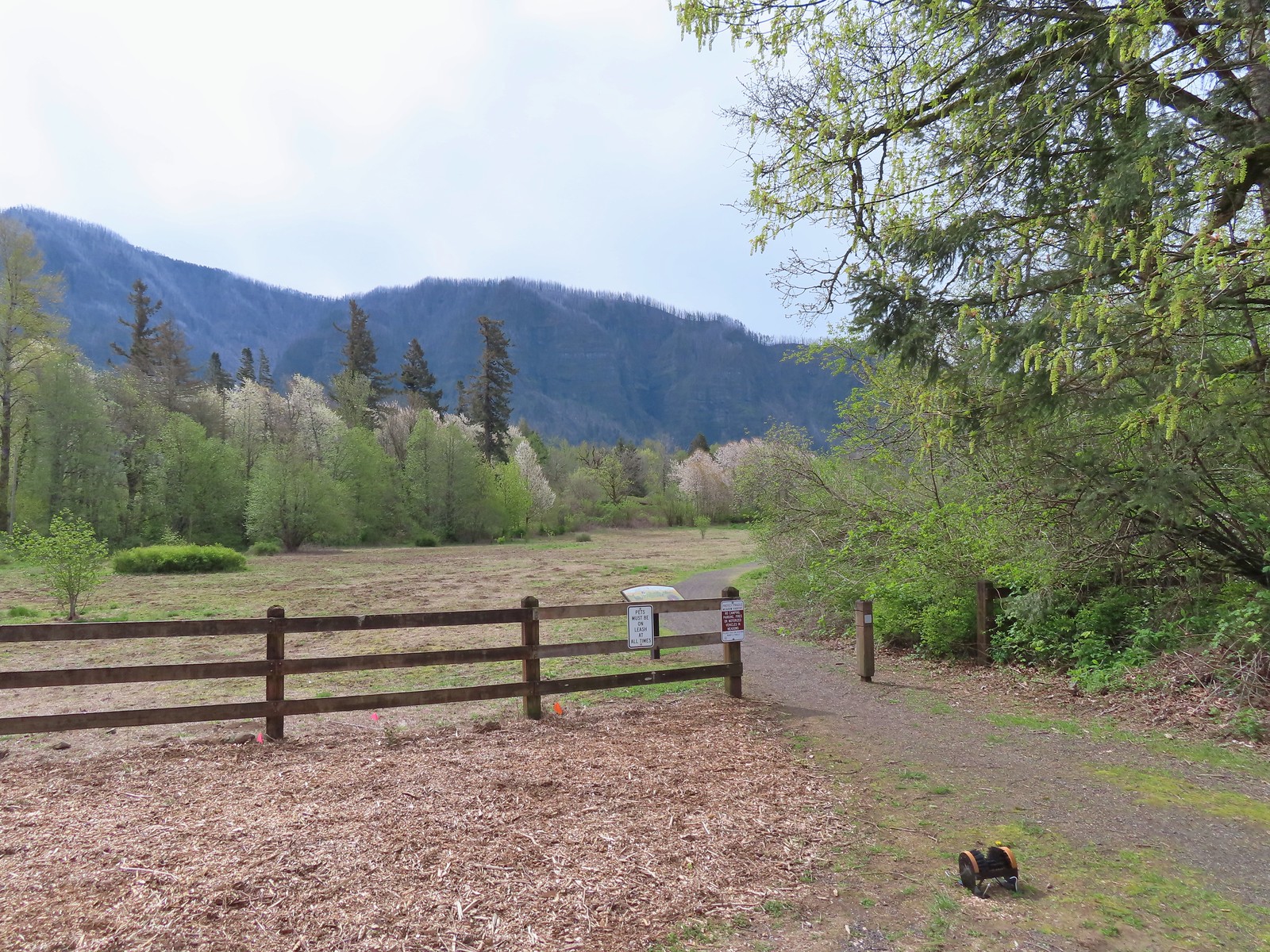
There are a couple of loop options here, but no maps to assist with navigation. We had our GPS map and a map from the Oregon Hikers Field Guide, but it turns out they are both outdated so when we veered right at the first split we planned on hiking the outer loop counterclockwise.
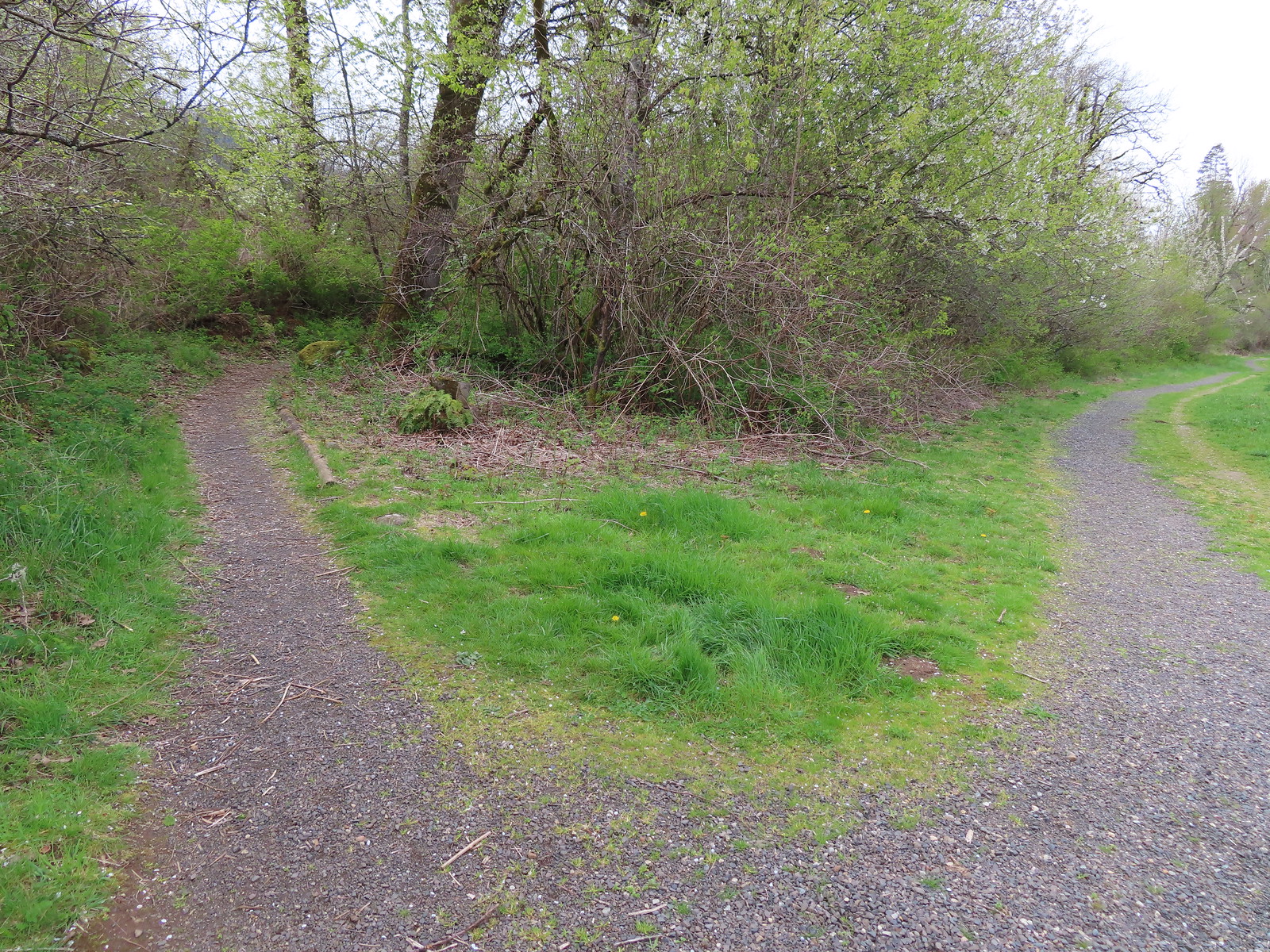 The first split where we went right.
The first split where we went right.
A tenth of a mile later we came to another split which managed to confuse us based on the maps we had available.
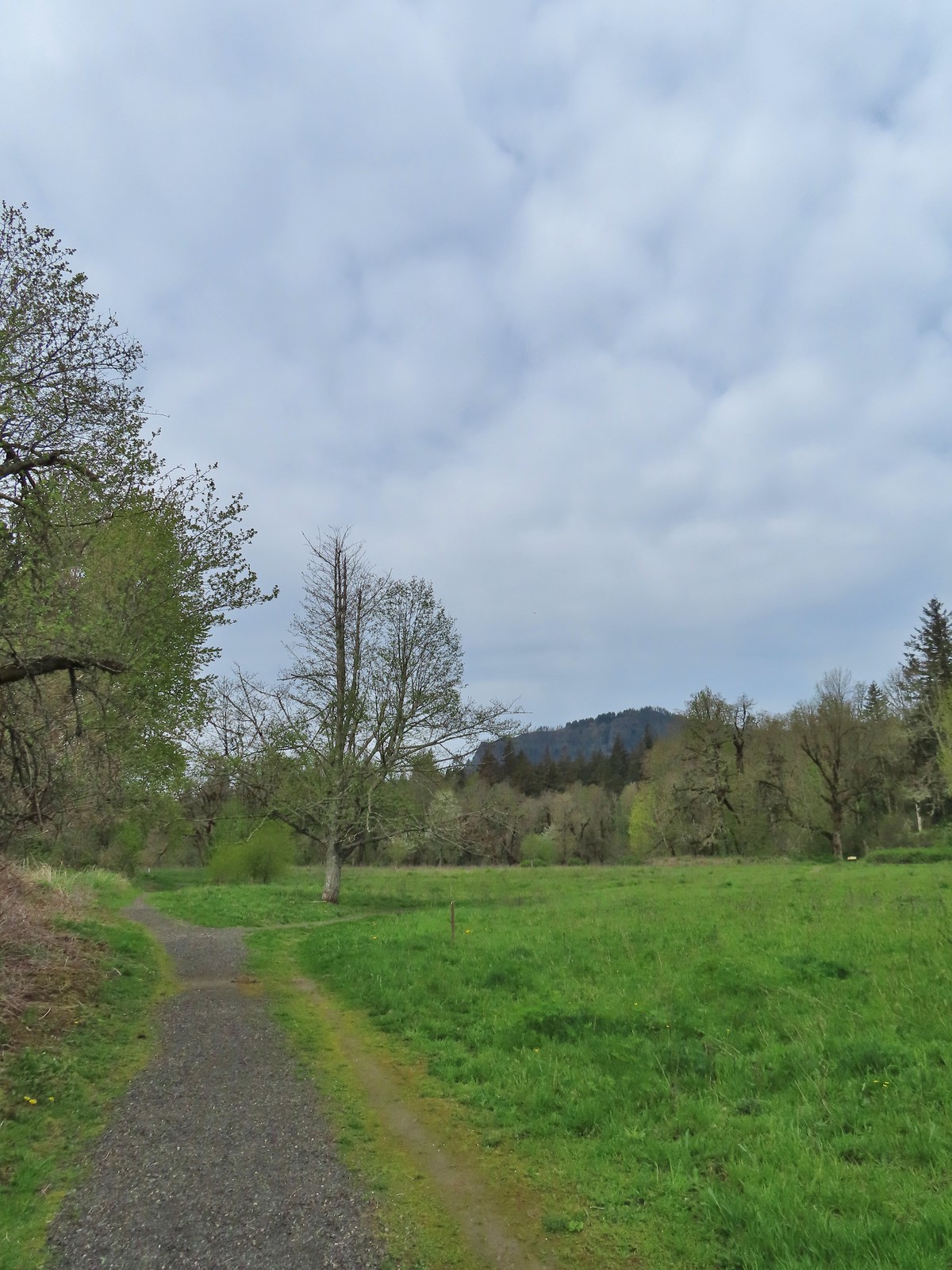 To continue on the counterclockwise loop we should have turned right at the junction ahead.
To continue on the counterclockwise loop we should have turned right at the junction ahead.
We veered left thinking that the righthand trail was a connector passing through the middle of the day use area. In another tenth of a mile though we arrived at “T” junction where we realized that the left at the first junction was the outer loop going in a clockwise rotation.
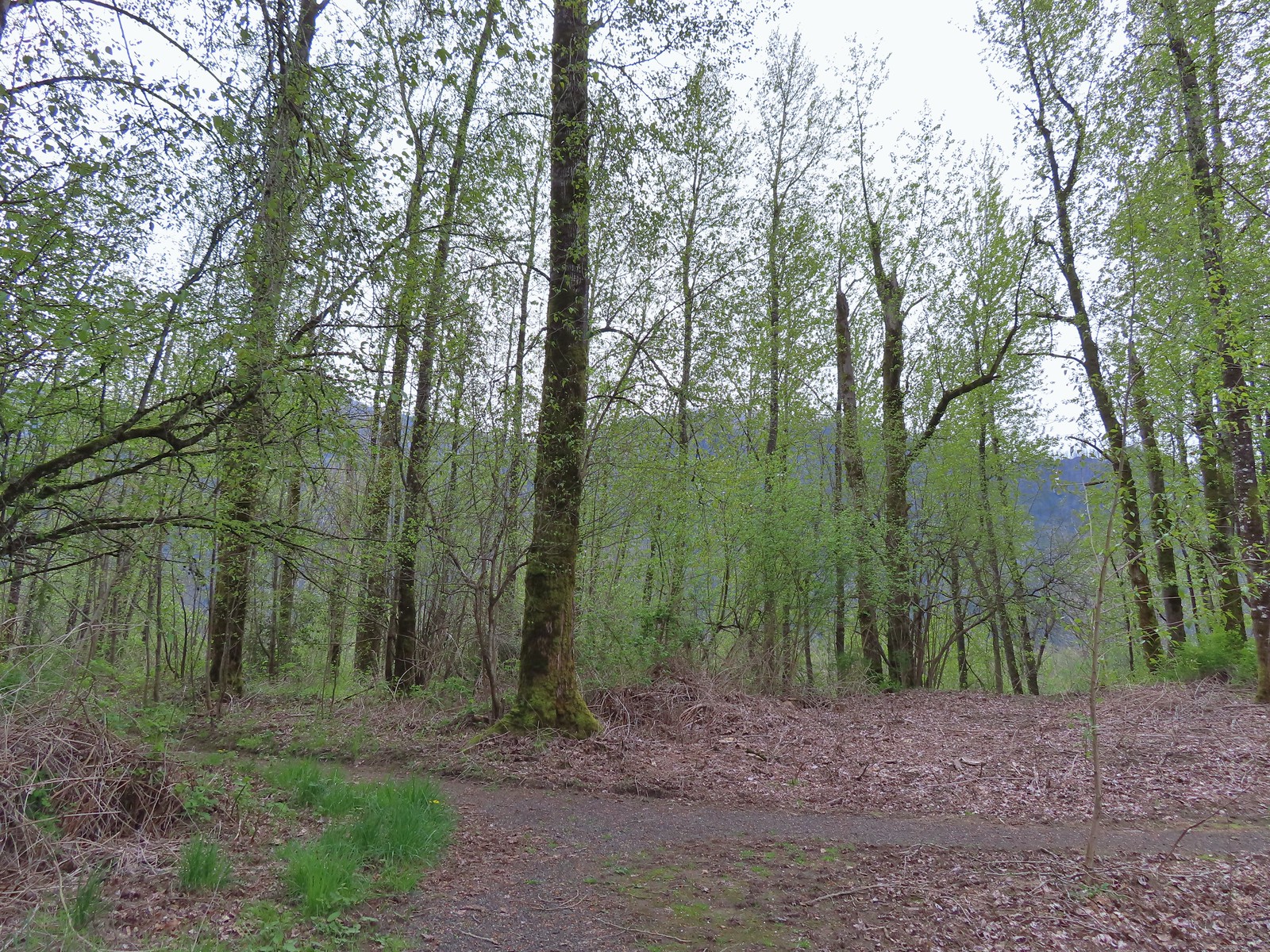 We turned right at the junction now doing the loop clockwise.
We turned right at the junction now doing the loop clockwise.
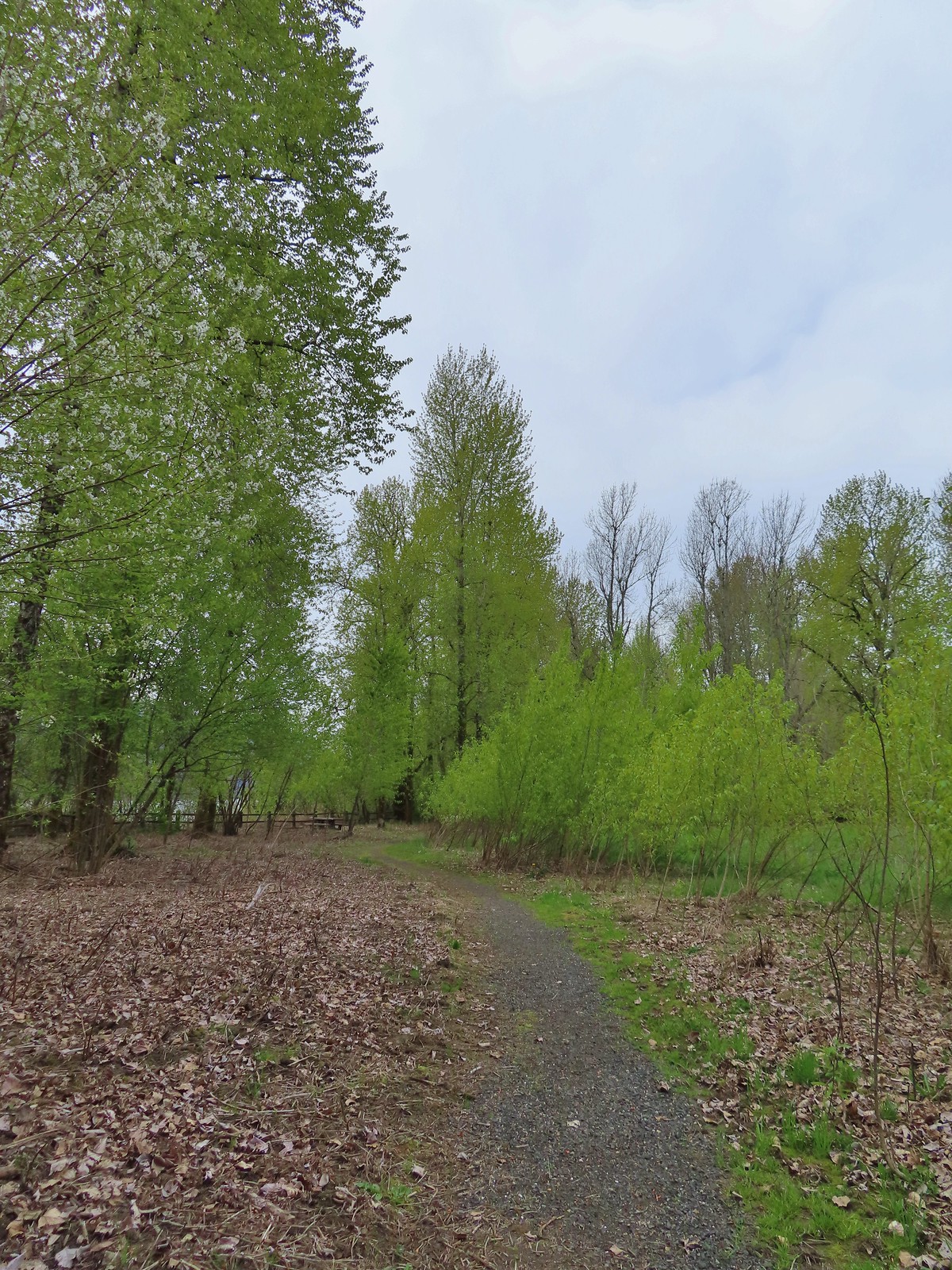 Coming up on one of the picnic tables along the loop.
Coming up on one of the picnic tables along the loop.
 The Columbia River from the picnic table.
The Columbia River from the picnic table.
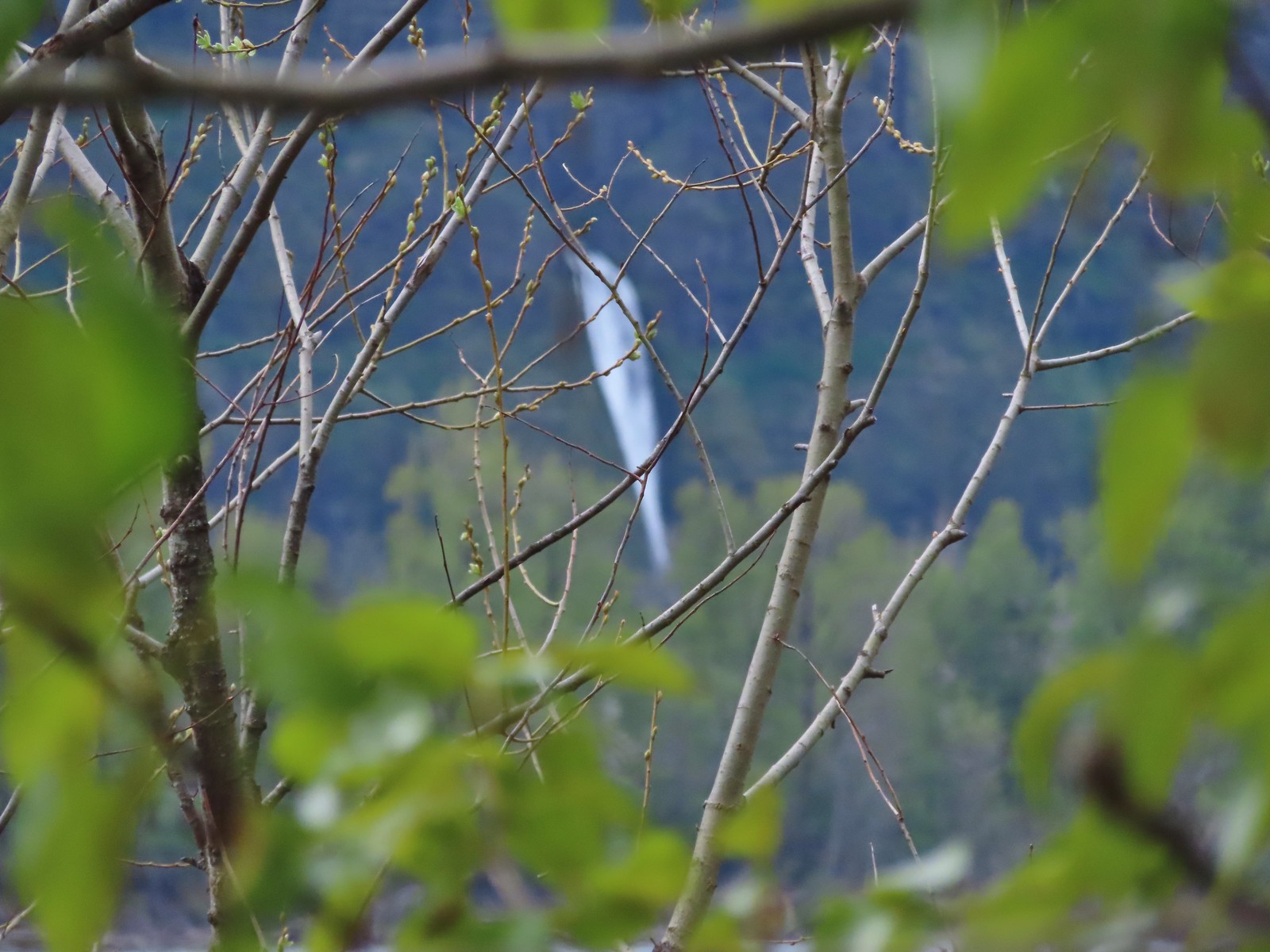 Horsetail Falls (post) from the picnic table.
Horsetail Falls (post) from the picnic table.
We continued on loop which eventually passed through a cedar grove before bringing us back to the second junction we’d passed.
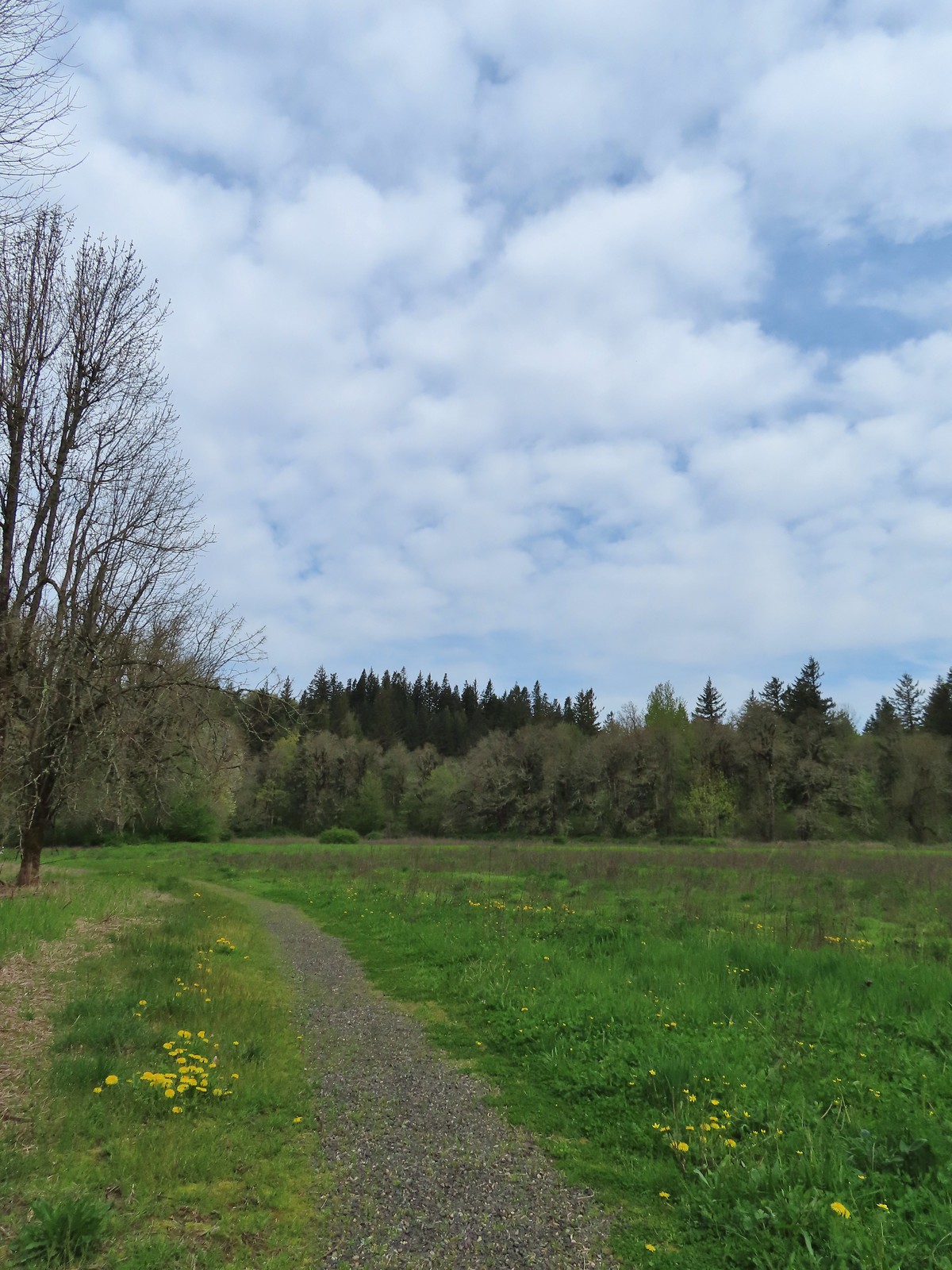
 Chipping sparrow
Chipping sparrow
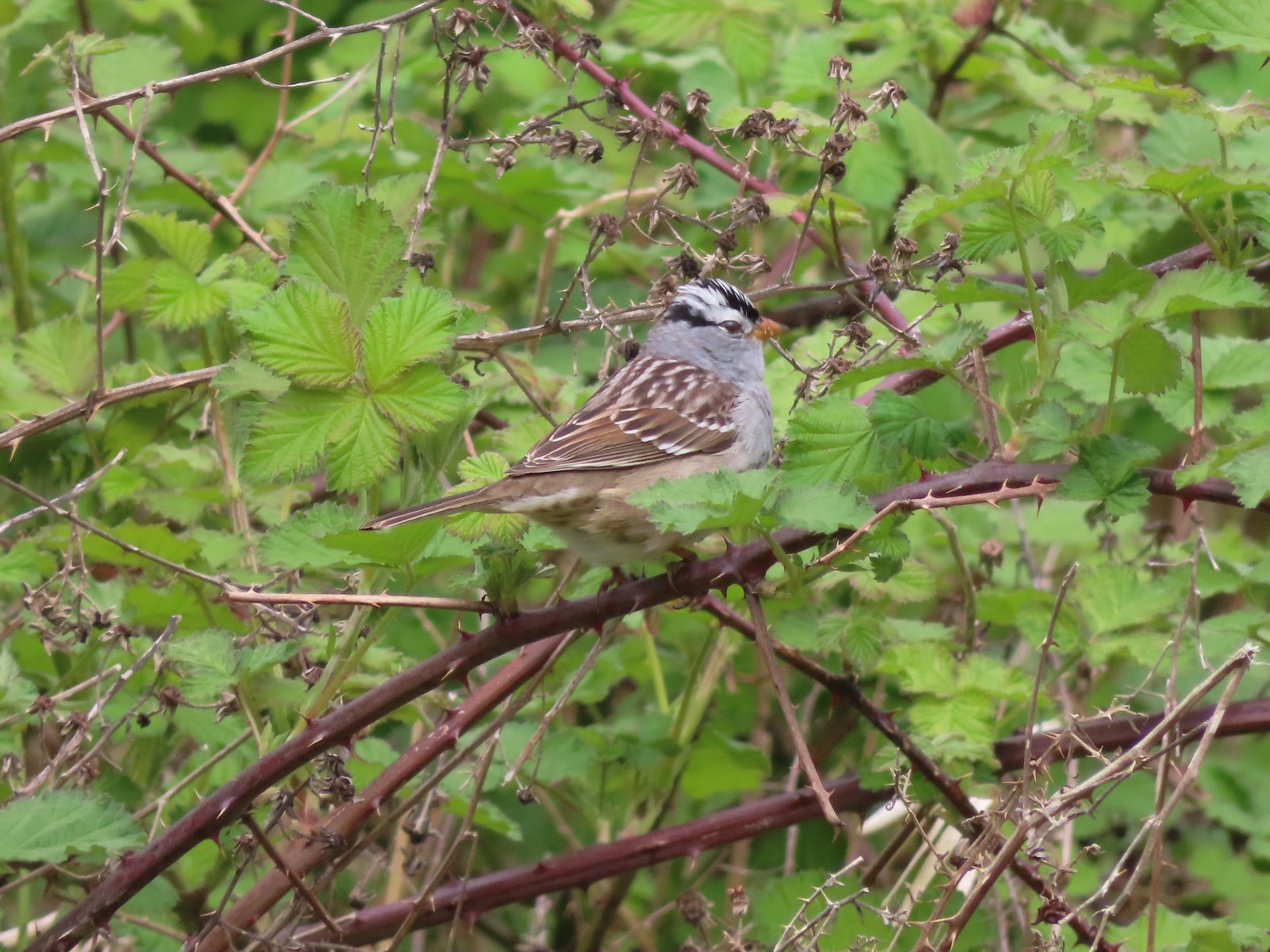 White-crowned sparrow
White-crowned sparrow
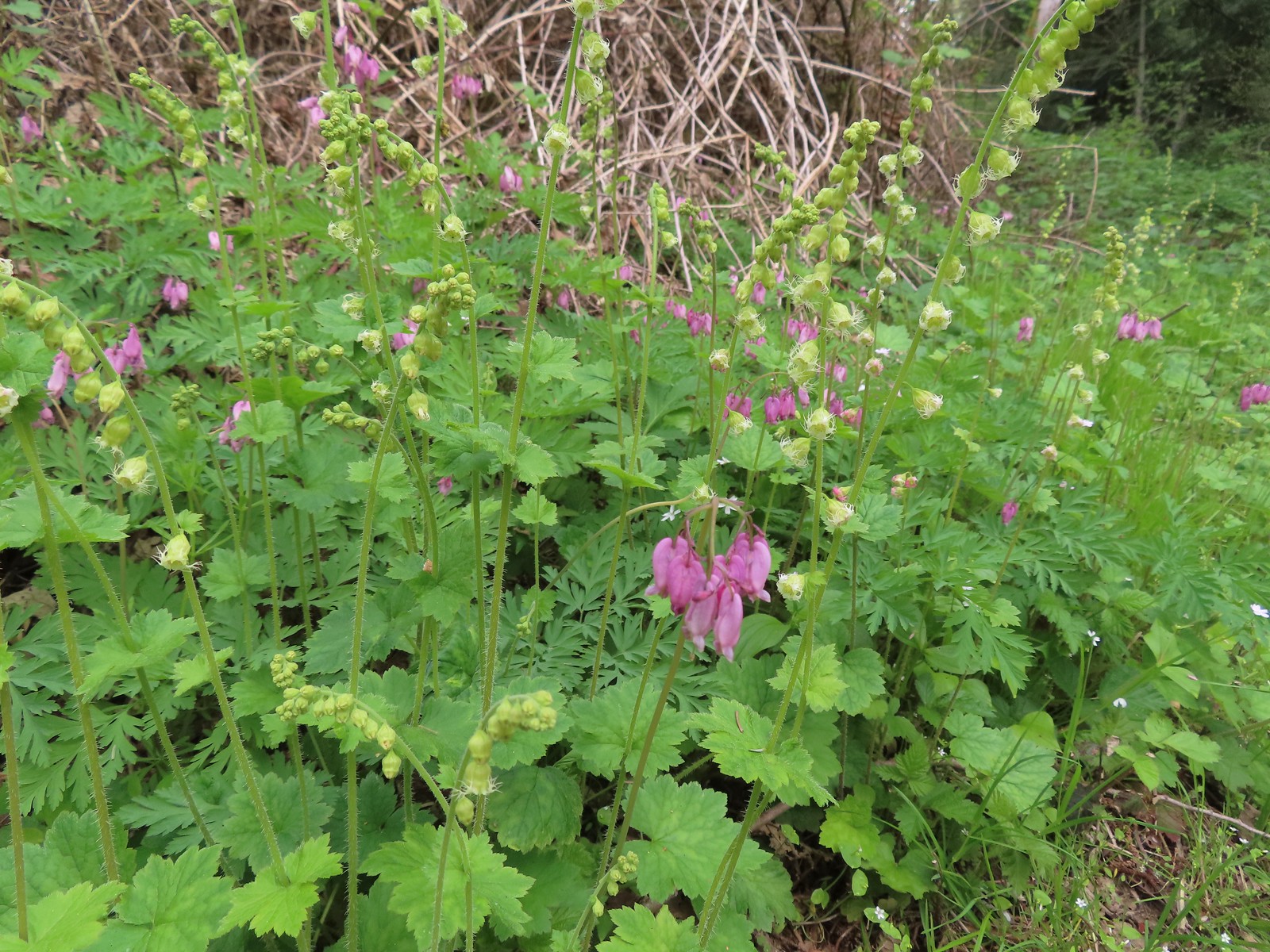 Bleeding heart and fringecup
Bleeding heart and fringecup
 The cedar grove
The cedar grove
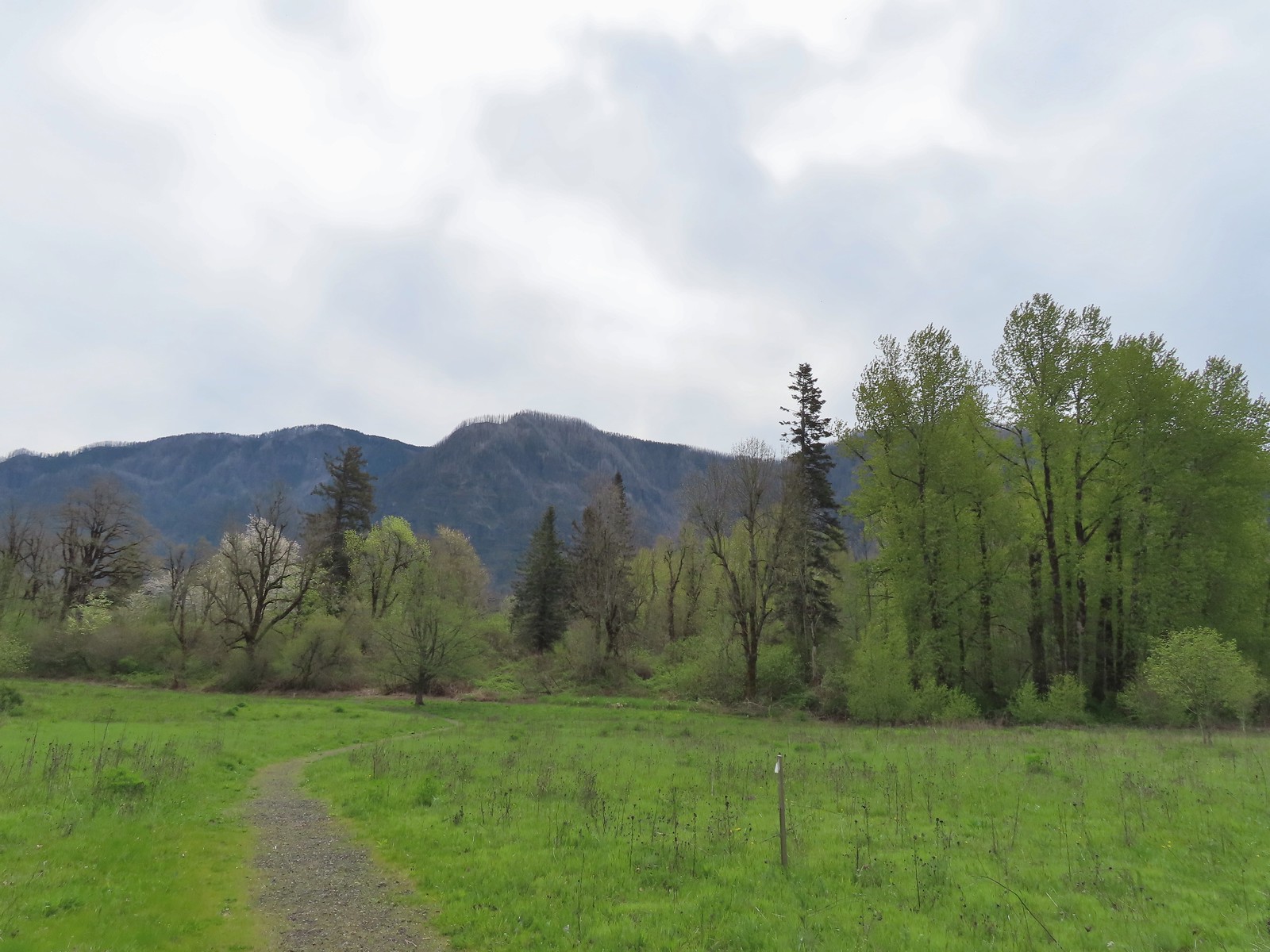 Completing the first loop.
Completing the first loop.
When we got back to the second junction we decided to go right and then take a left at the third junction to hike the portion of the outer loop that we’d missed. It was along this quarter mile section that we passed the group from Friends of the Columbia Gorge.
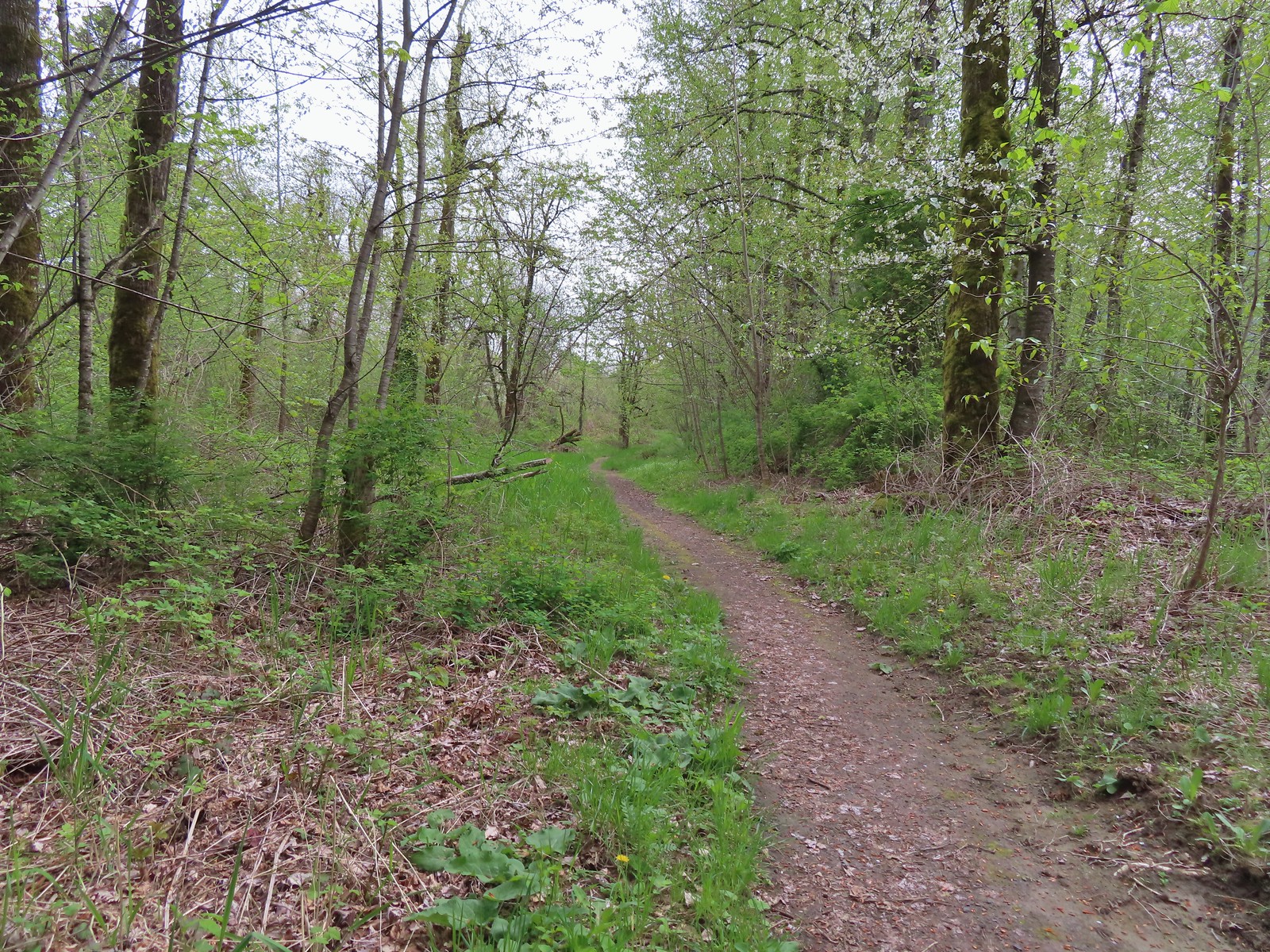
 Spider on perriwinkle
Spider on perriwinkle
After hiking all the trails here we returned to Highway 14 and drove 2 miles back to the east to turn into the Doetsch Ranch Day Use area of Beacon Rock State Park.
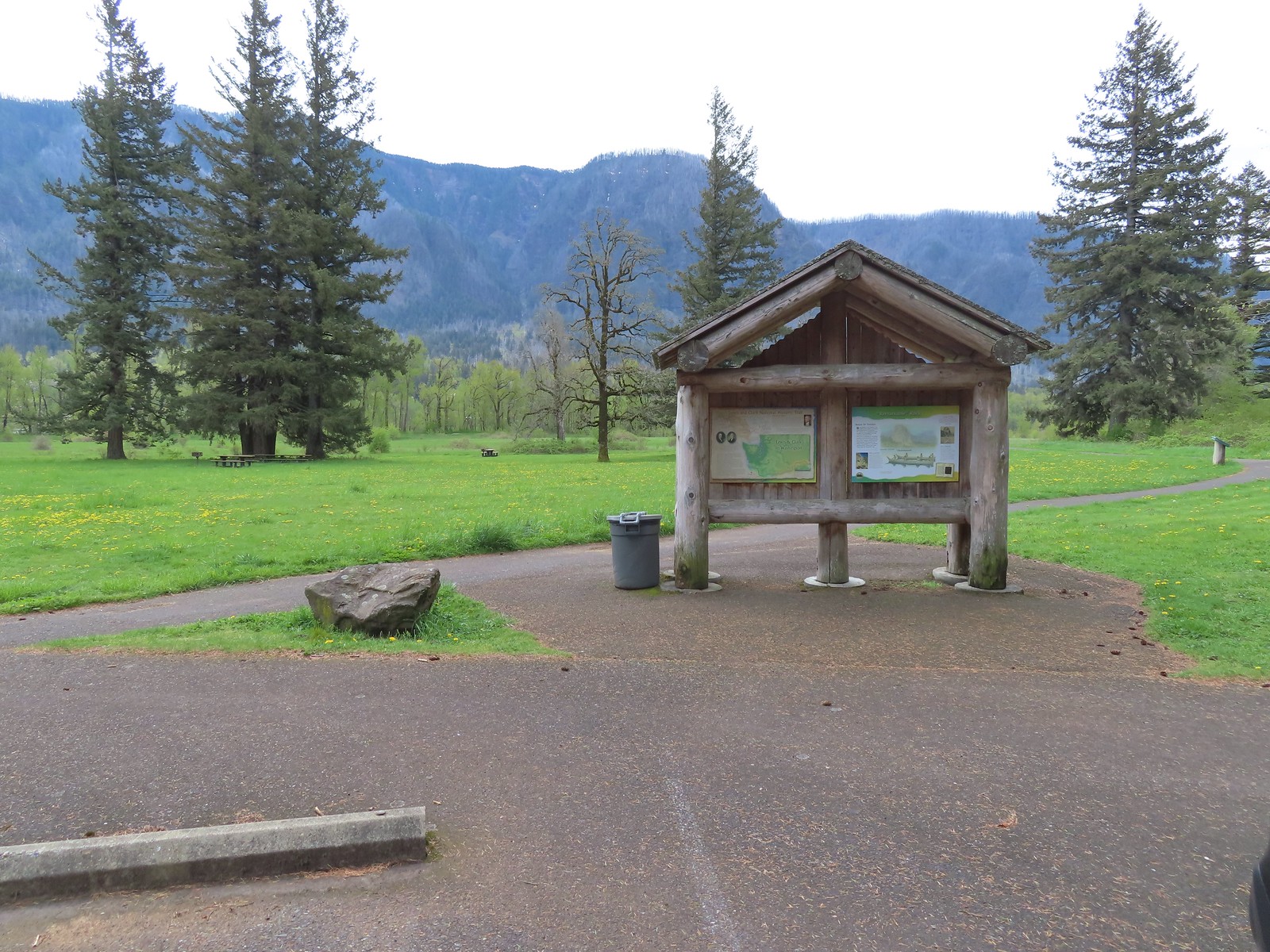 Kiosk at Doetsch Ranch.
Kiosk at Doetsch Ranch.
A 1.1-mile paved loop circles the picnic area. We set off counterclockwise from the kiosk following the paved path for a little over 3/4 of a mile to another parking area along Beacon Rock Moorage Road.
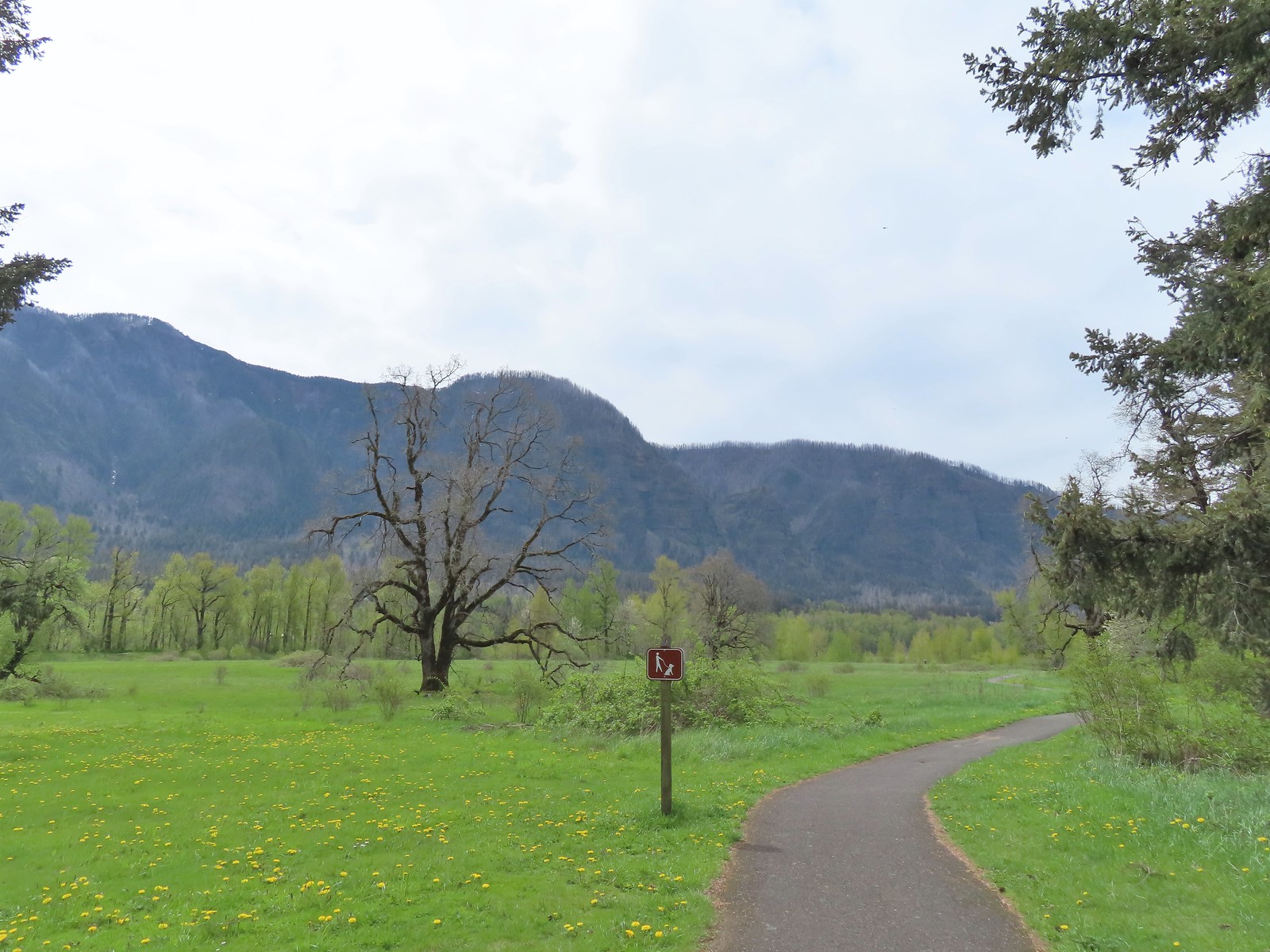
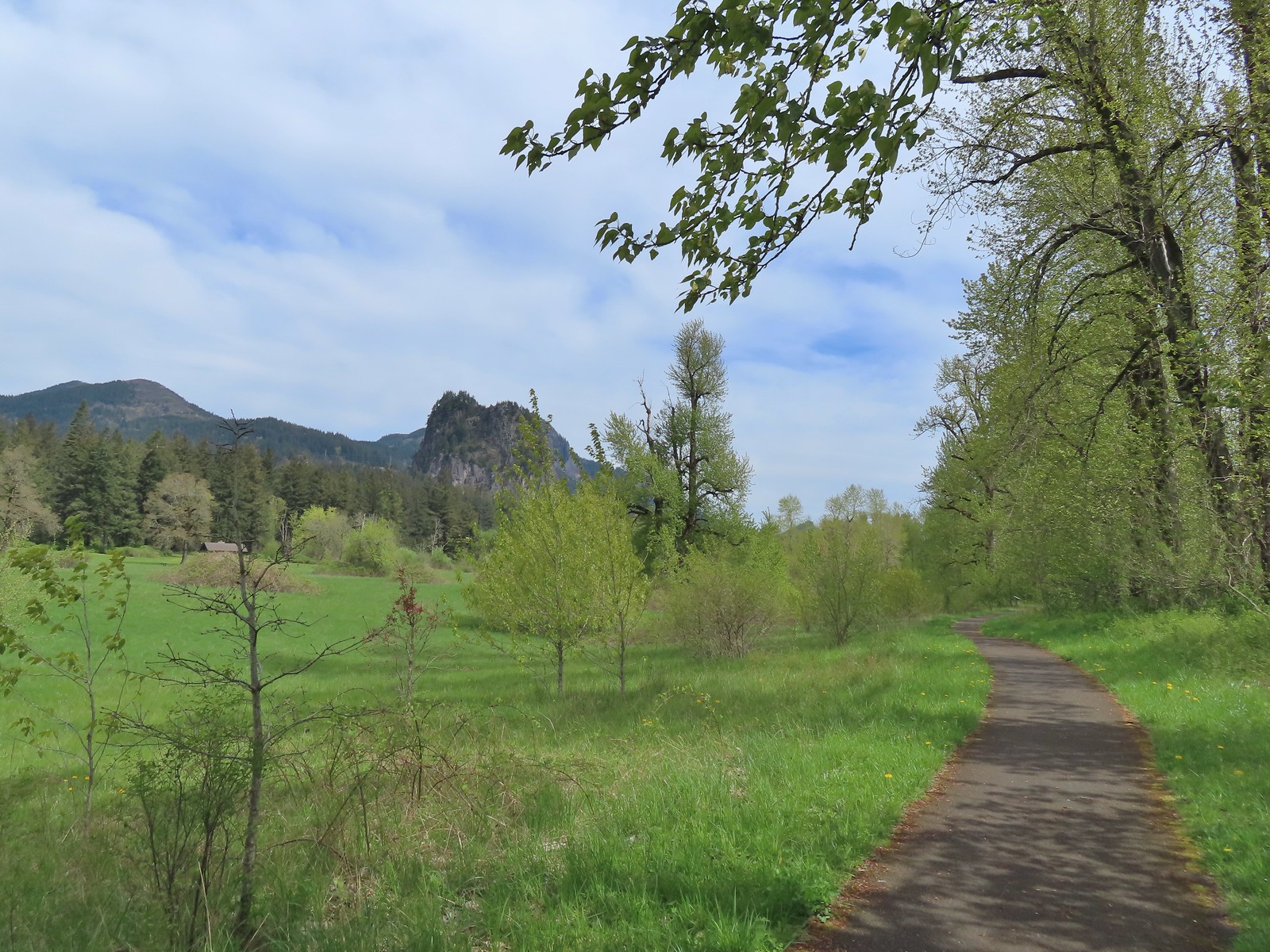 Beacon Rock (post) from the trail.
Beacon Rock (post) from the trail.
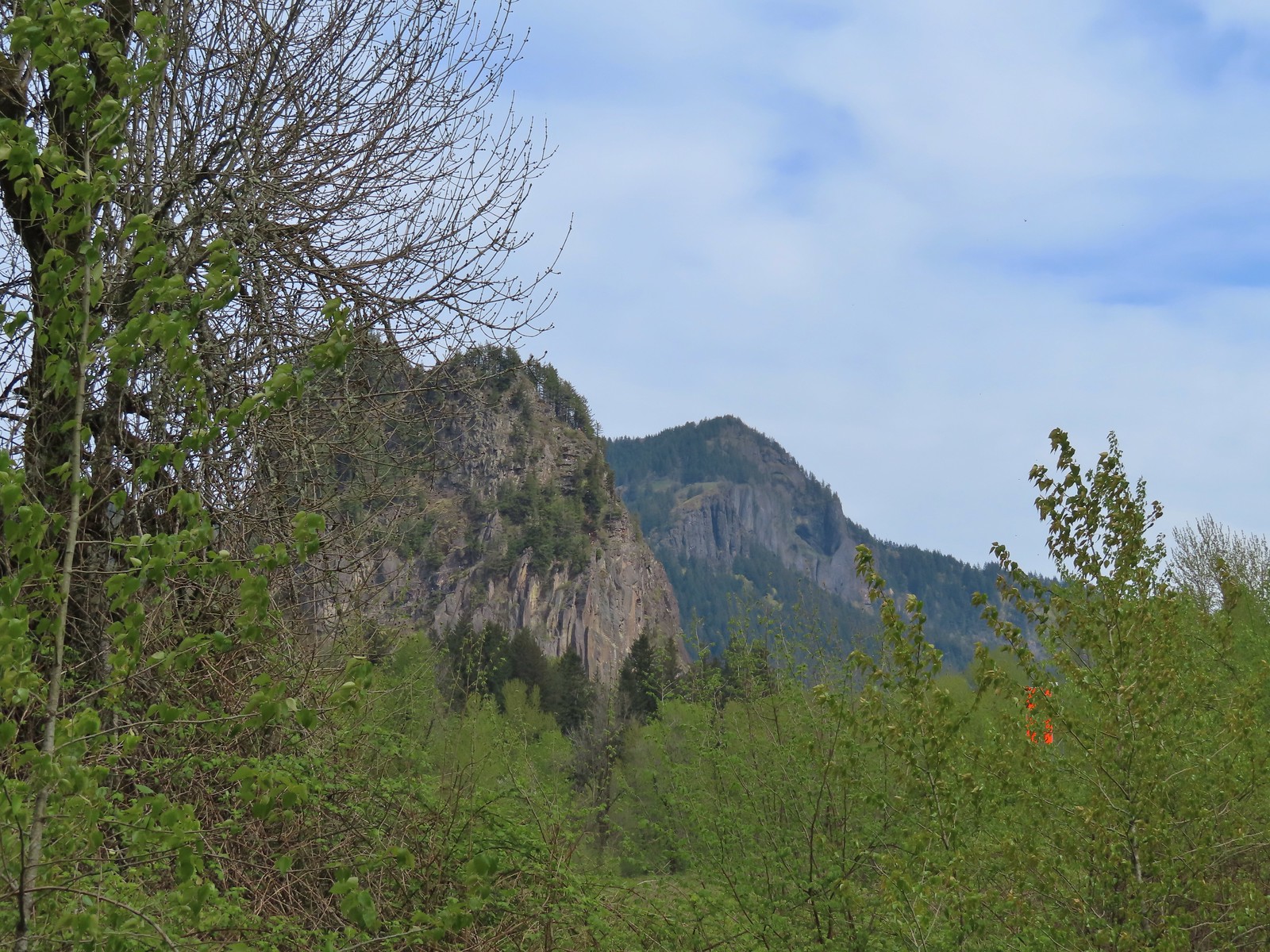 Beacon Rock and Hamilton Mountain.
Beacon Rock and Hamilton Mountain.
 Coming up on the other parking area.
Coming up on the other parking area.
We left the loop at the road and followed the road down to the river. Next we walked up the road passing under railroad tracks to find the start of the 0.75-mile River to Rock Trail.
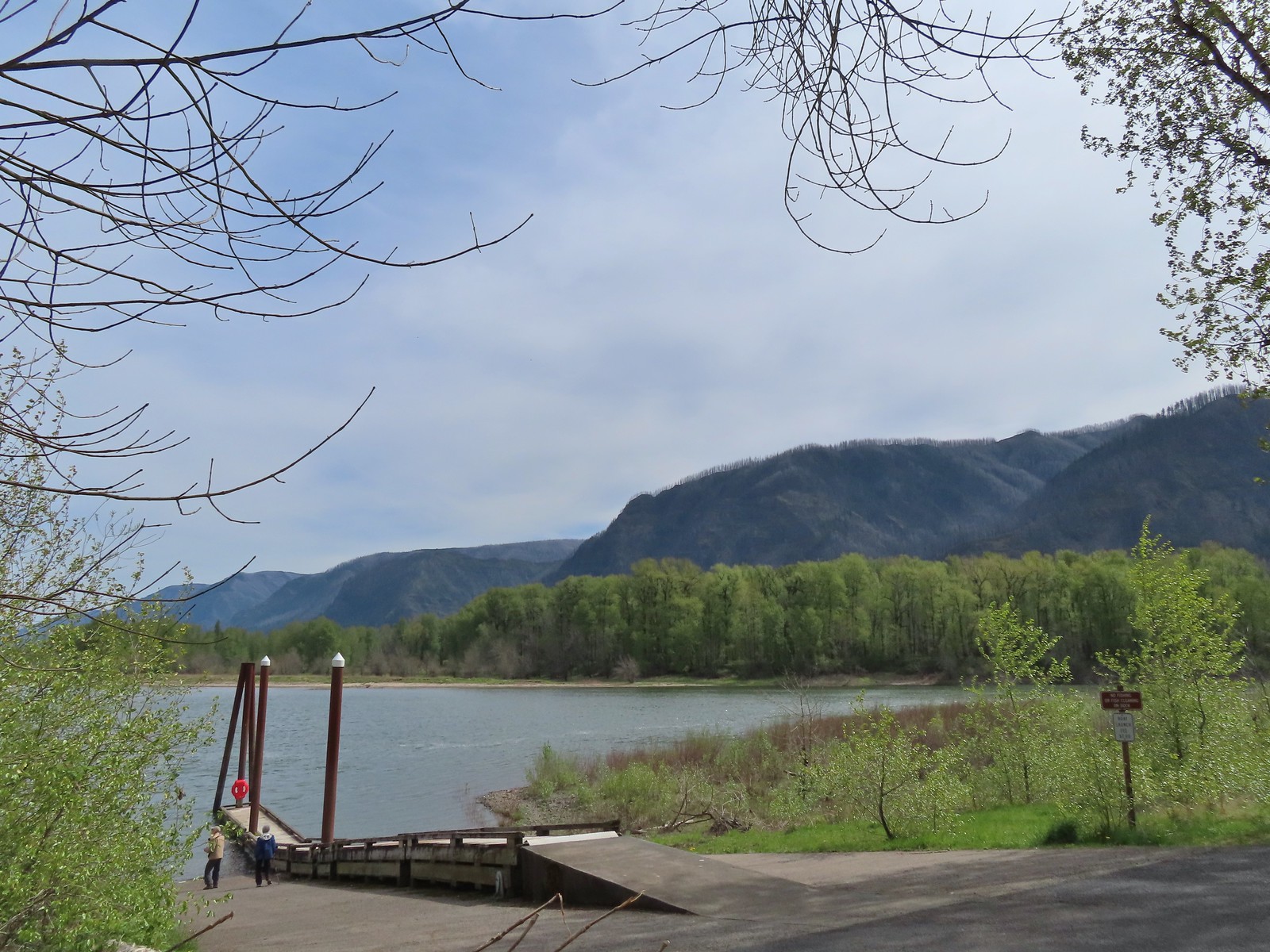

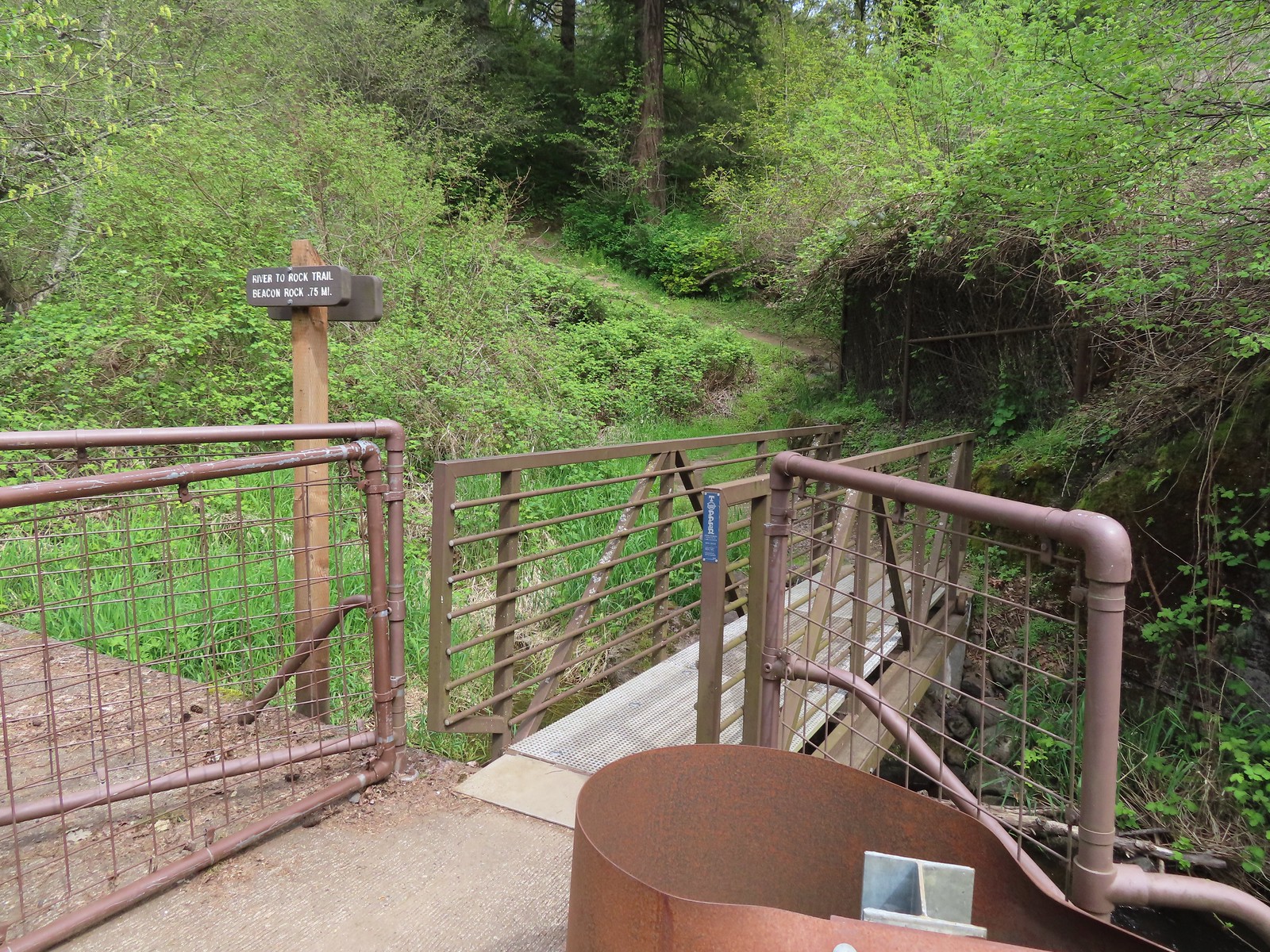
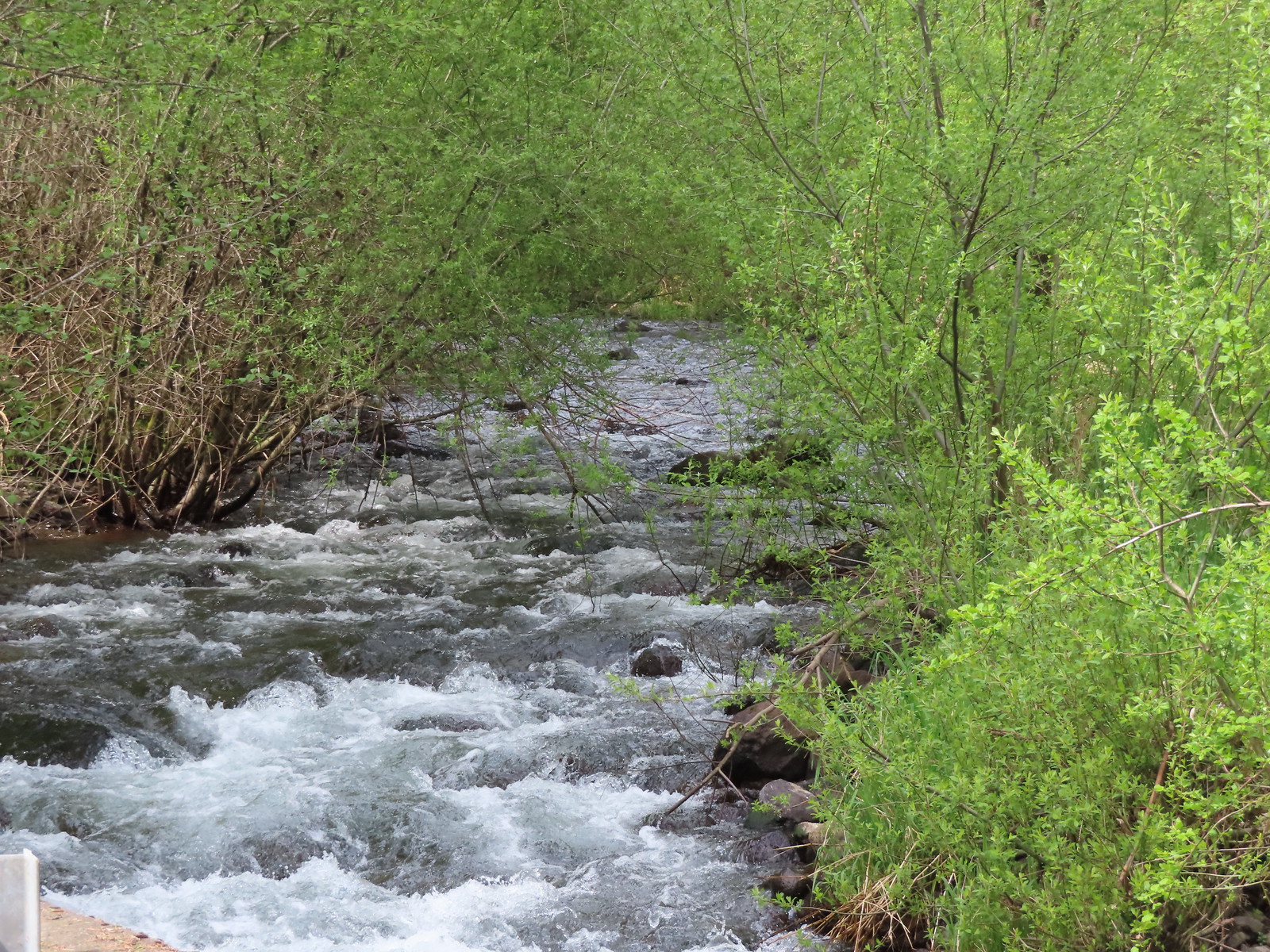 Woodward Creek
Woodward Creek
This trail climbs over 250′ before dropping to the River to Rock Trailhead. Along the way the trail passes around Riddle Lake and an old stone structure along with many wildflowers.
 Fairy bells, vine maple, and fringecup
Fairy bells, vine maple, and fringecup
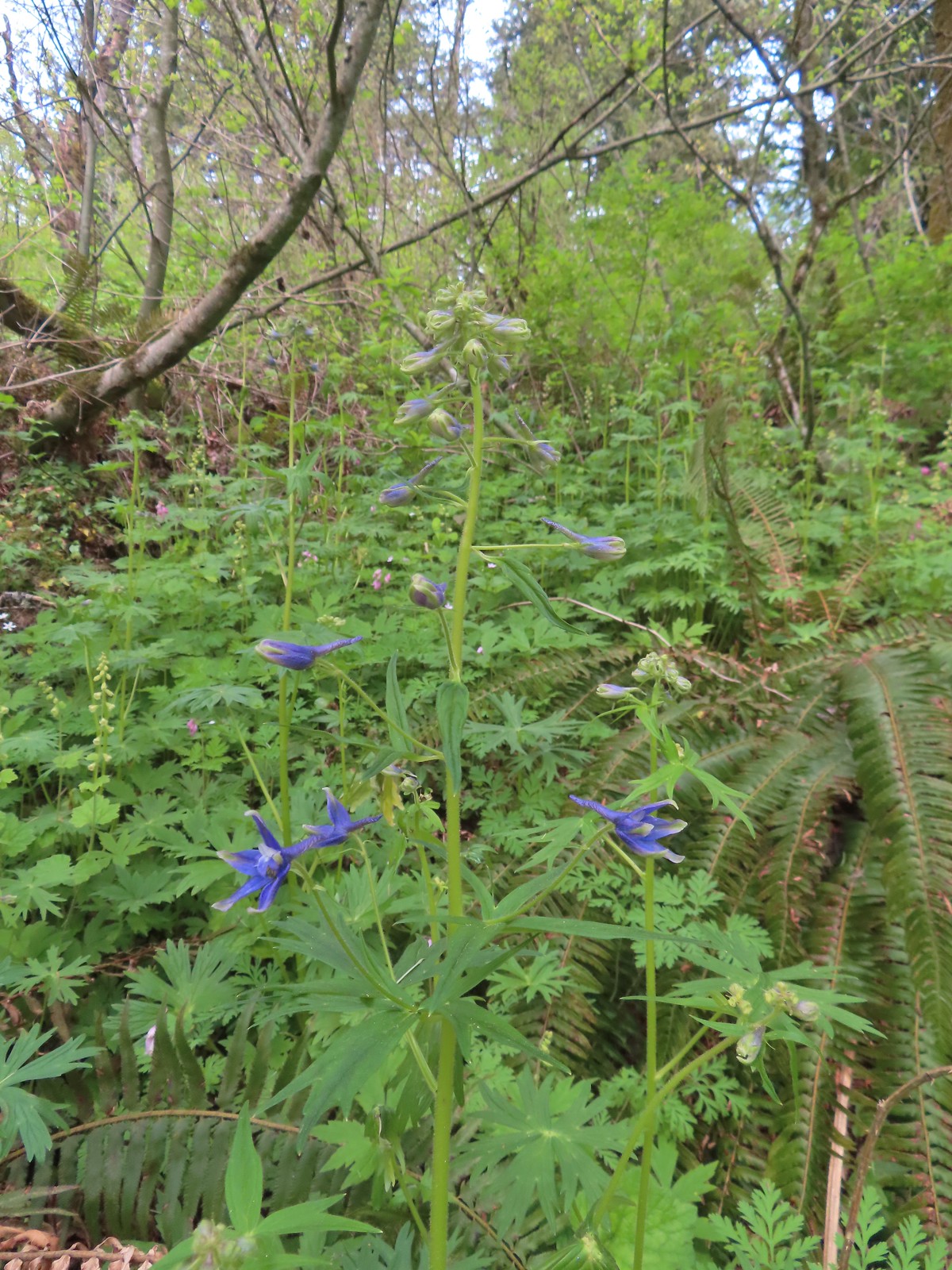 Columbian larkspur
Columbian larkspur
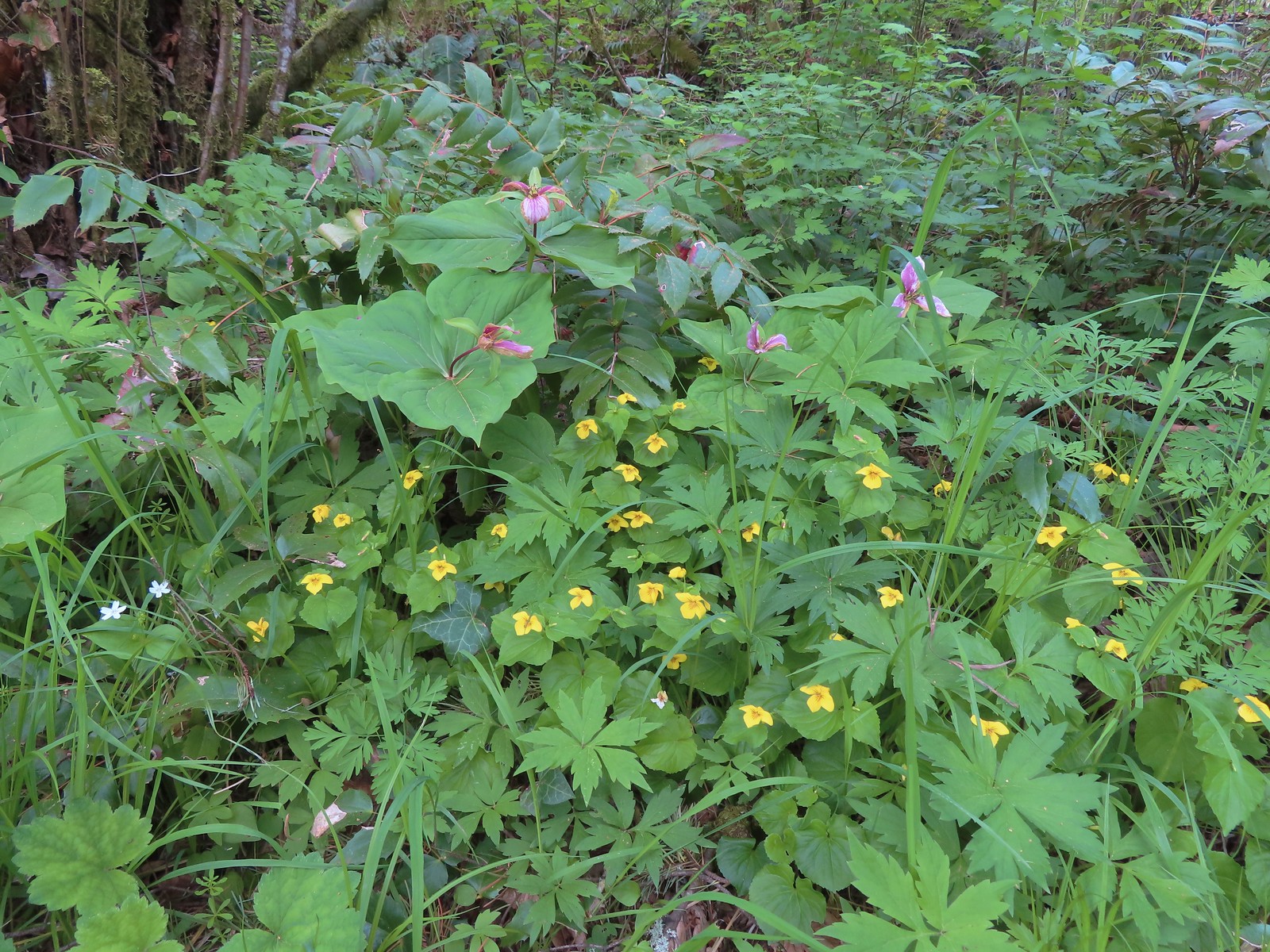 Trillium and voilets
Trillium and voilets
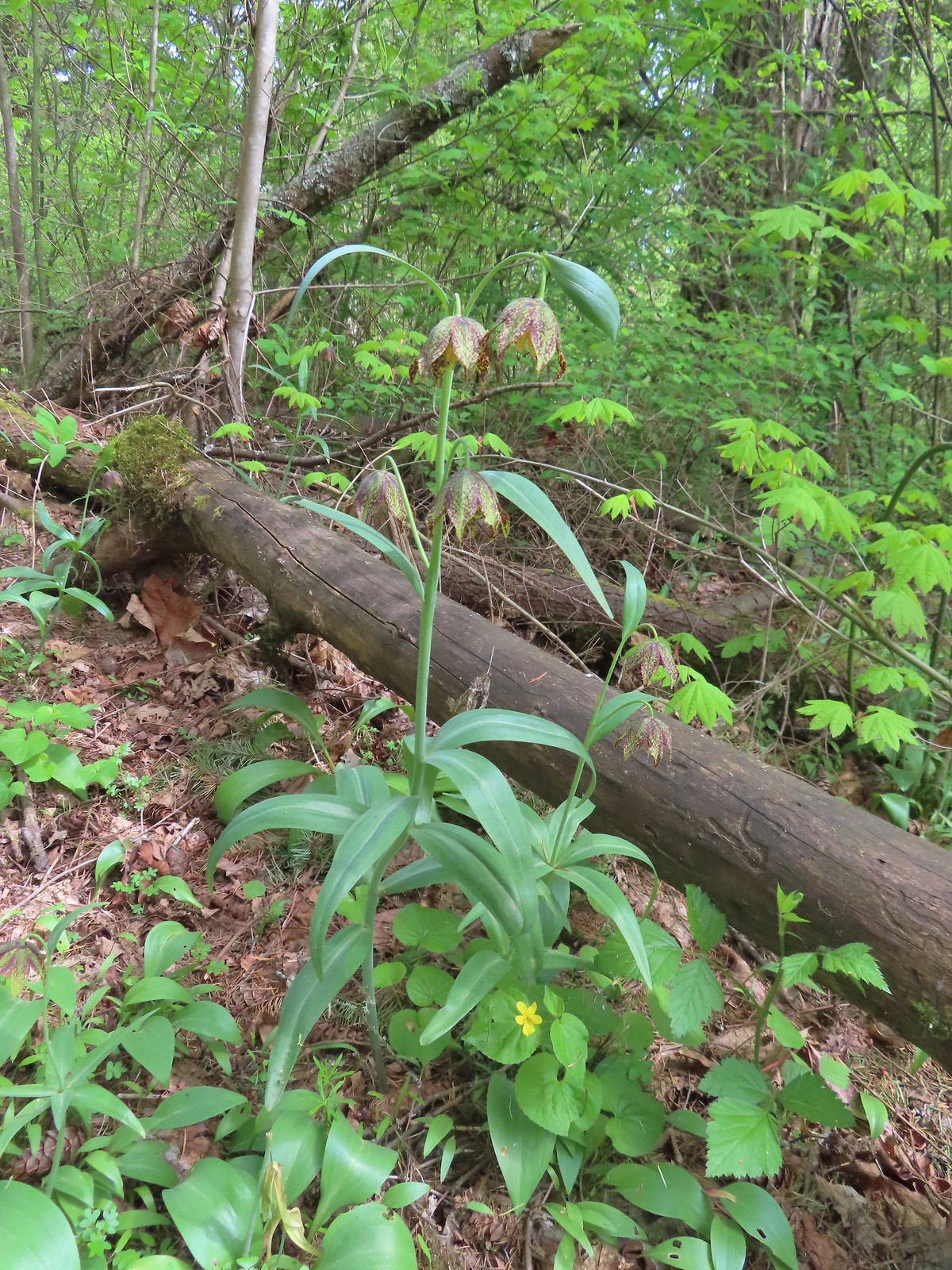 Checker (chocolate) lilies
Checker (chocolate) lilies
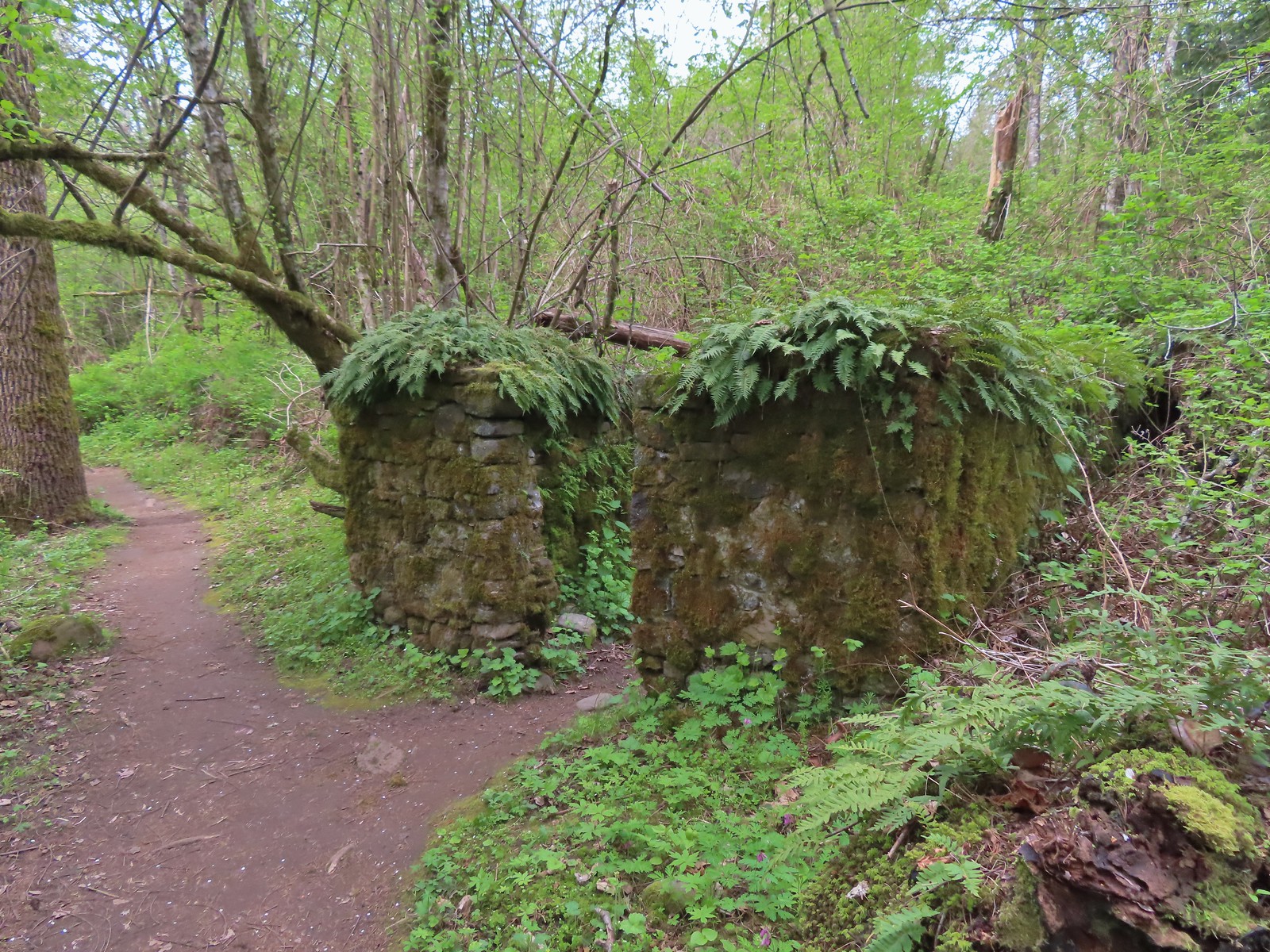

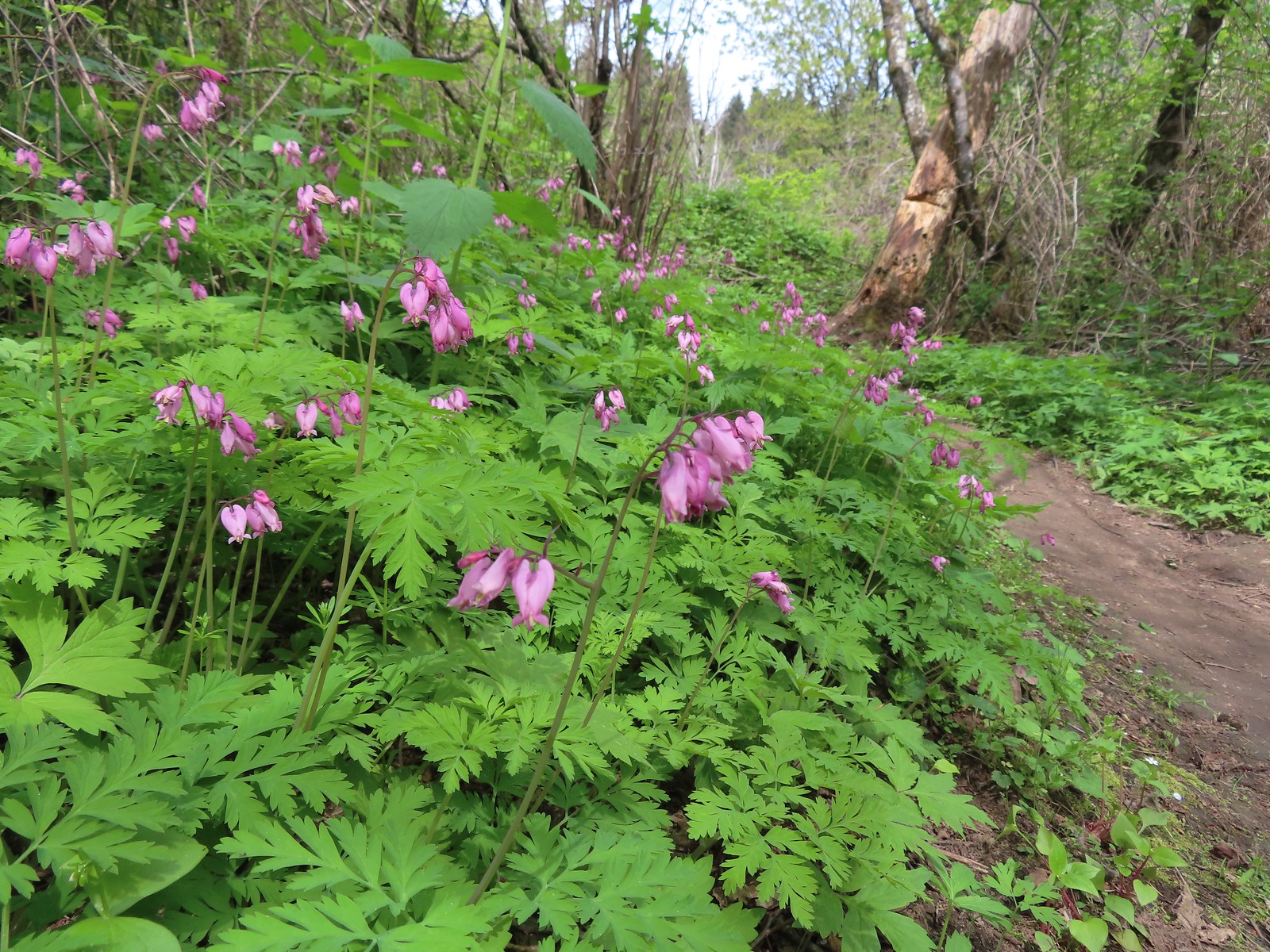 Bleeding heart
Bleeding heart
 This was just one part of the best display of chocolate lilies we’d ever seen.
This was just one part of the best display of chocolate lilies we’d ever seen.
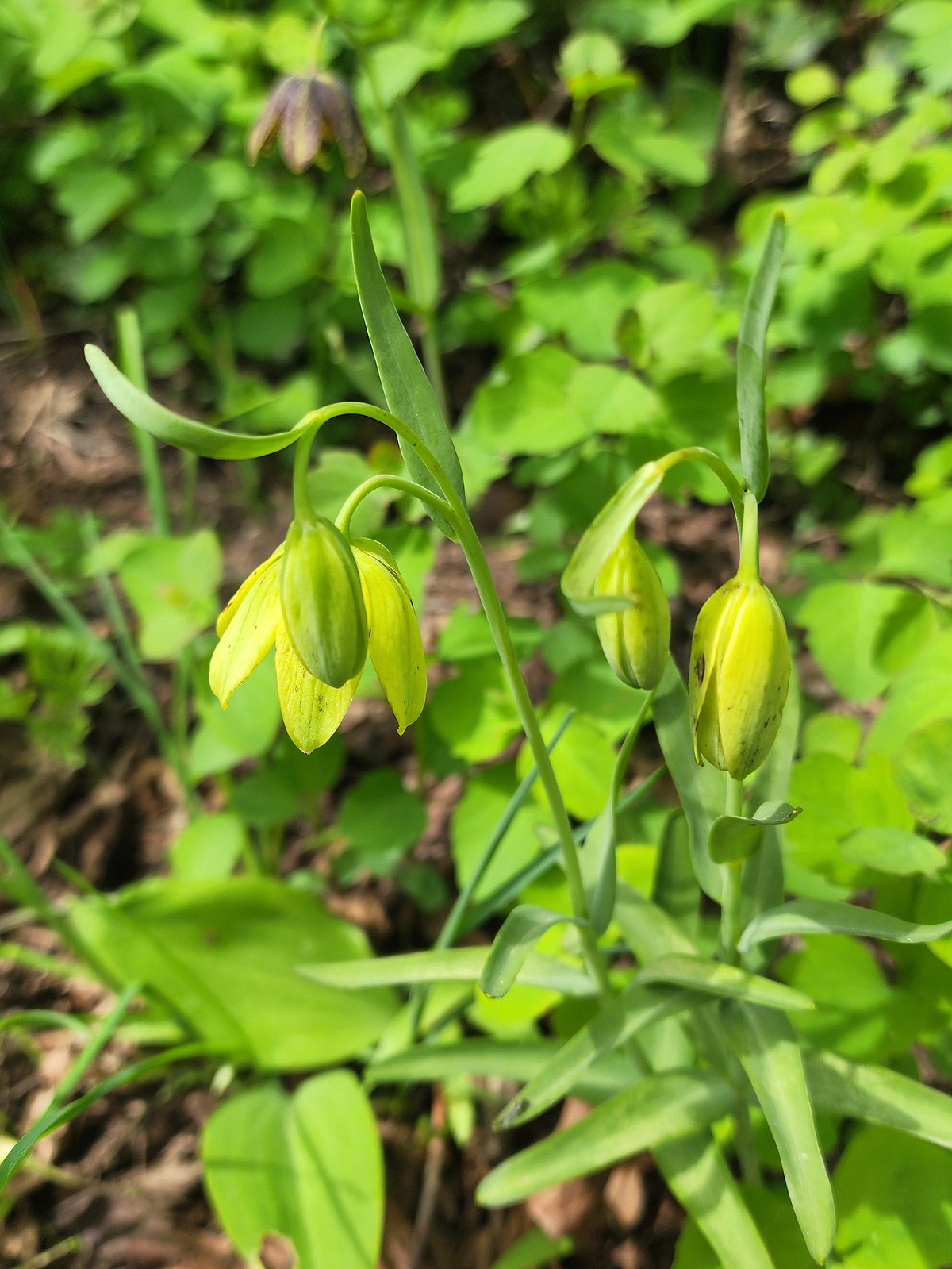 There were a couple of lilies with this coloration which was new to us.
There were a couple of lilies with this coloration which was new to us.
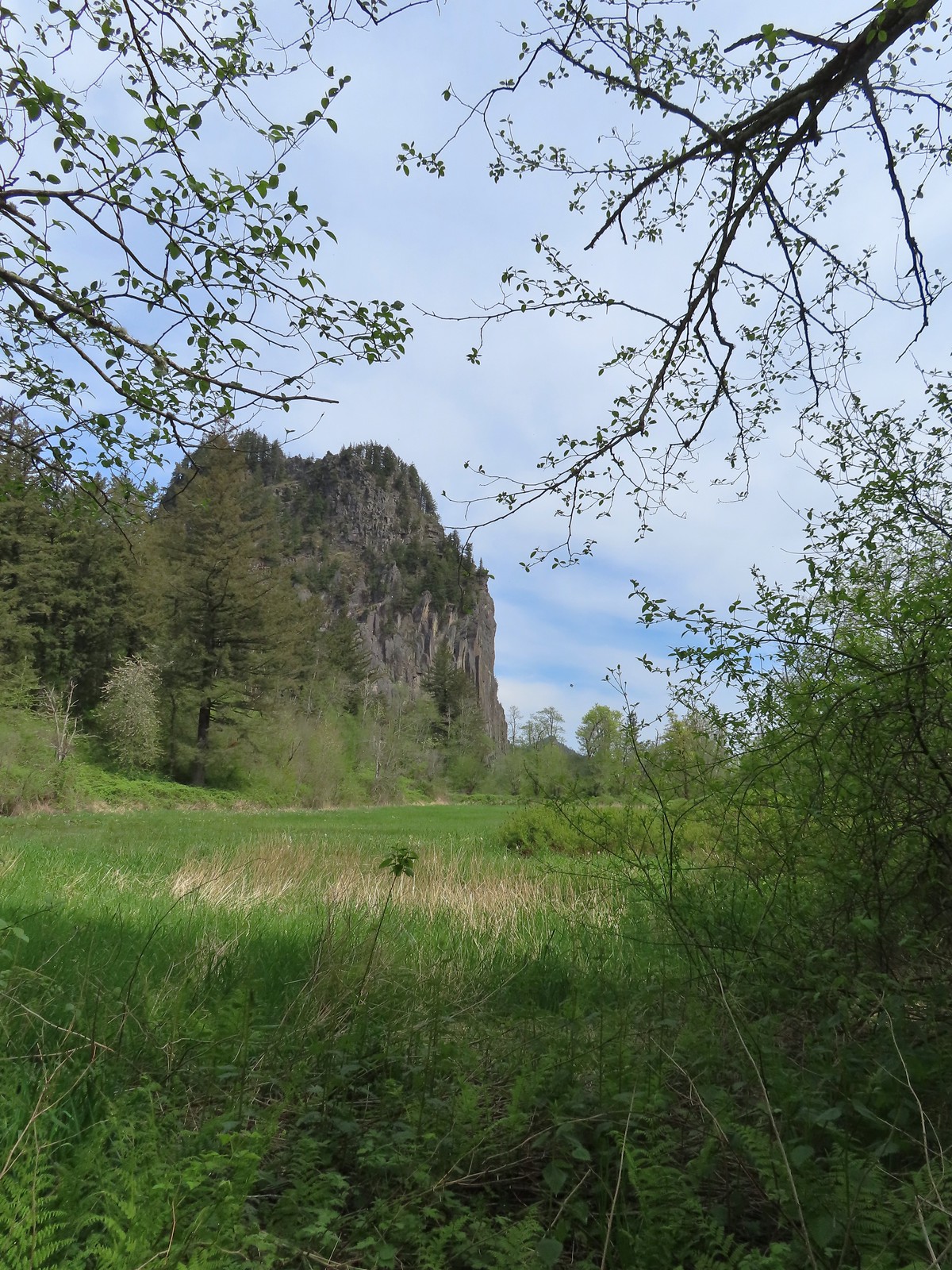 Riddle Lake
Riddle Lake
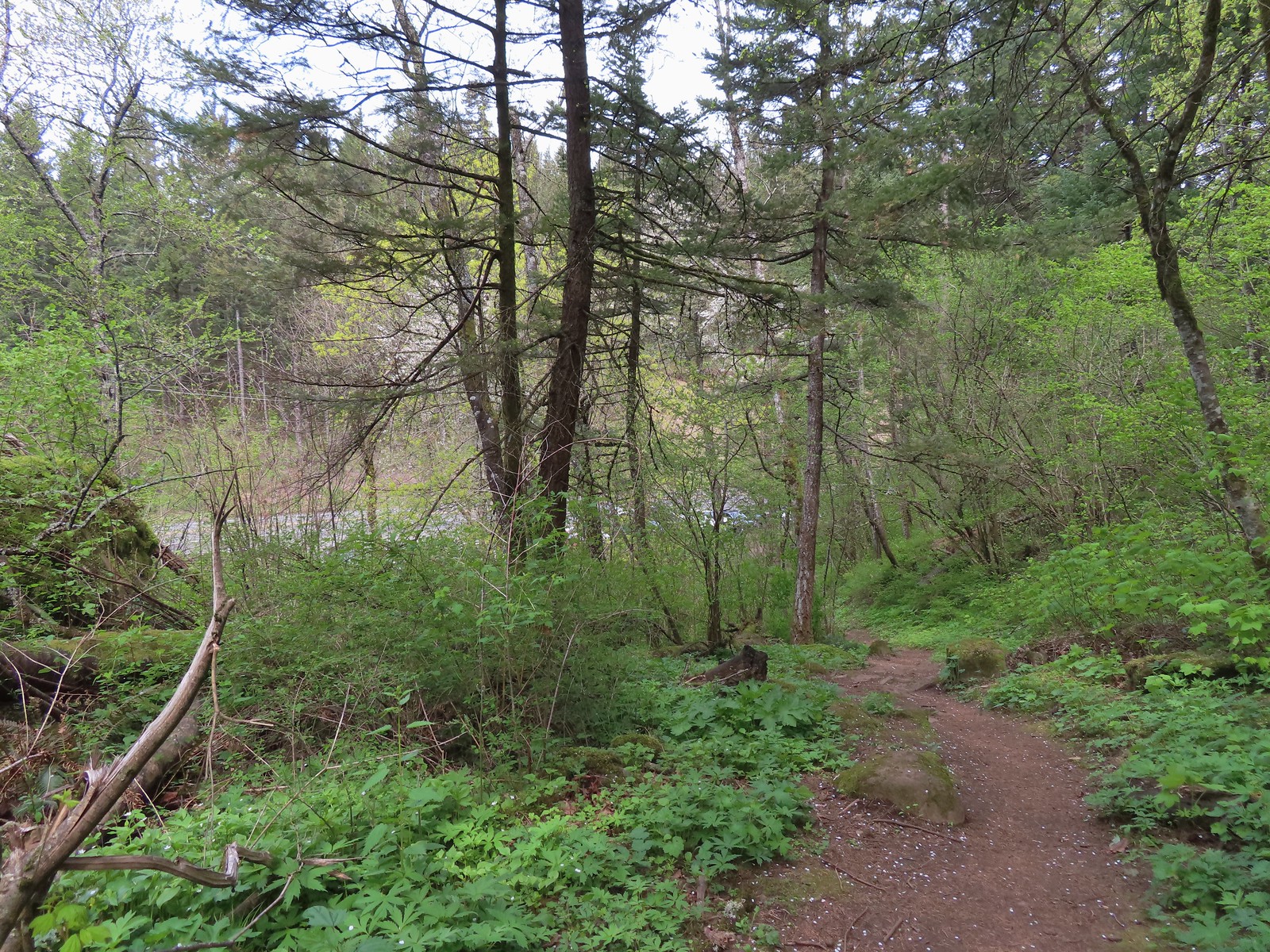 Dropping down to the River to Rock Trailhead.
Dropping down to the River to Rock Trailhead.
 Looking back up the River to Rock Trail.
Looking back up the River to Rock Trail.
We hadn’t planned on re-hiking Beacon Rock and the steady stream of people we could see from the trail going up and down the stairs reenforced that choice. We returned the way we’d come and then completed the paved loop at Doetsch Ranch to finish off our day.
 Passing back by the large patch of chocolate lilies.
Passing back by the large patch of chocolate lilies.
 Our first butterfly of 2024, an echo azure.
Our first butterfly of 2024, an echo azure.
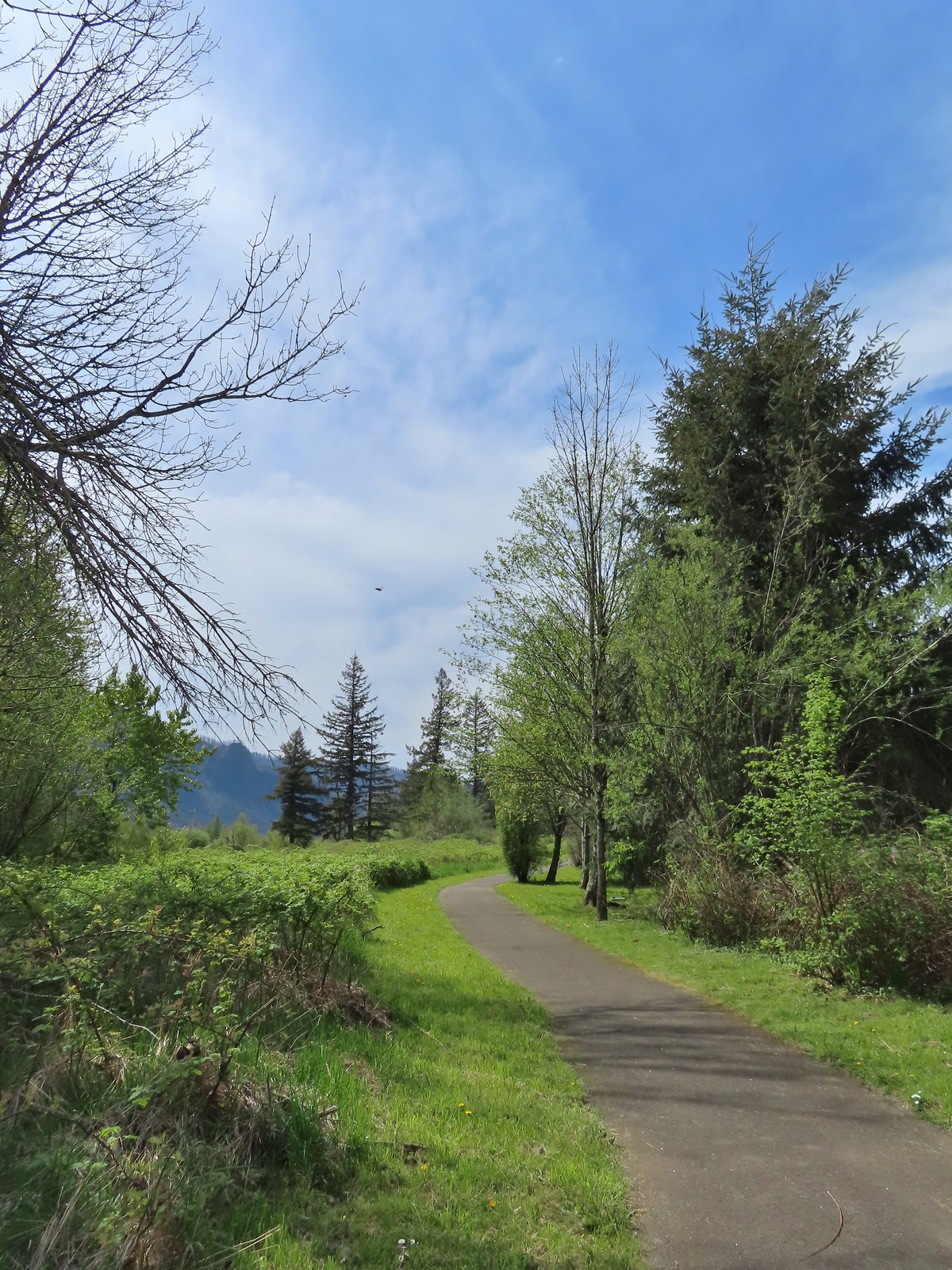
 Completing the loop.
Completing the loop.
Our mileage for the day came to 9.2 with 1.6 coming at each Sams-Walker and St. Cloud, 2.7 at Wind Mountain, and 3.3 at Doestch Ranch. The elevation total was a nearly 1700′ with nearly 1200′ coming at Wind Mountain, 185′ at St. Cloud, and 270′ on the River to Rock Trail.
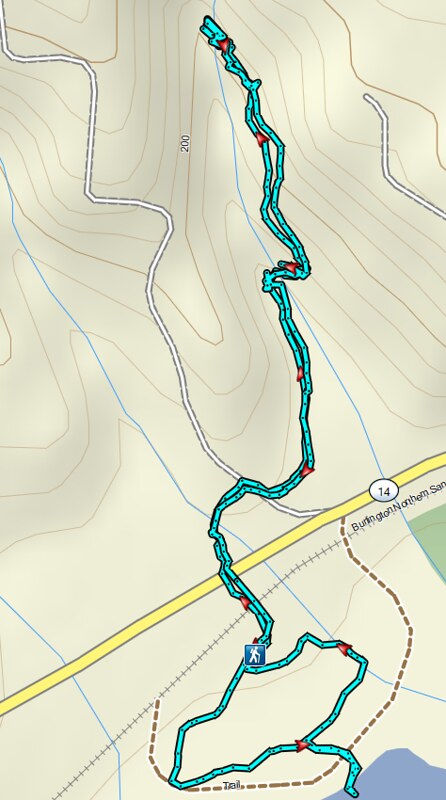 St. Cloud and Lower Archer Falls
St. Cloud and Lower Archer Falls
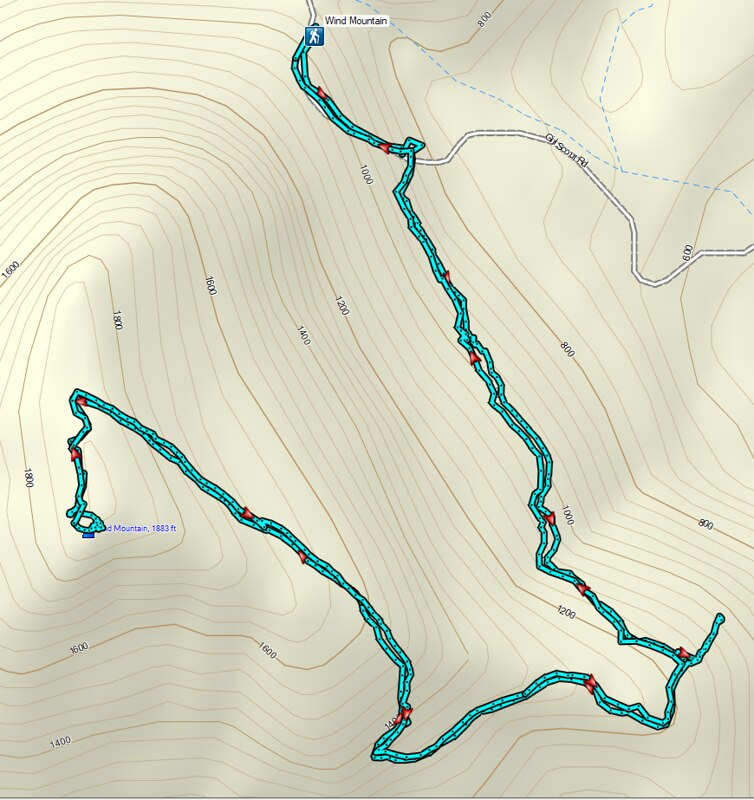 Wind Mountain
Wind Mountain
 Sams-Walker
Sams-Walker
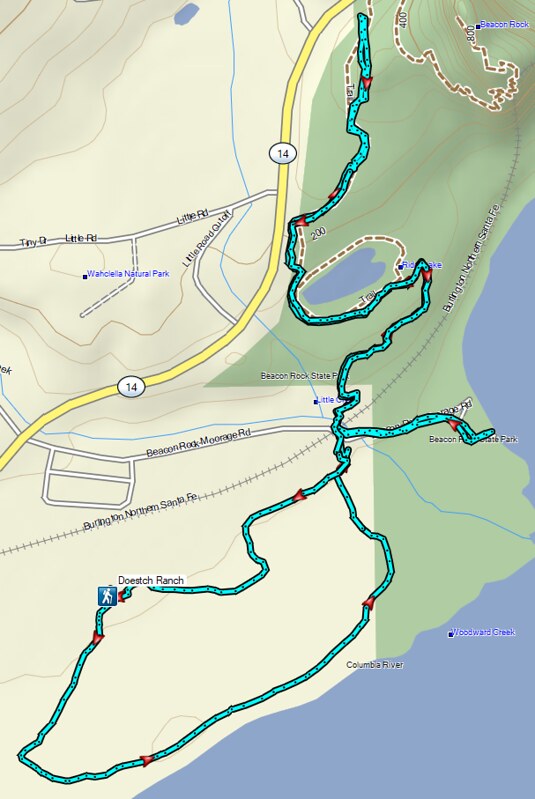 Doetsch Ranch
Doetsch Ranch
While none of the hikes were long enough to justify the 1:30 to 2hr drive from Salem combining them made for a more than worthy outing. When we got home it took me all of 5 minutes to remember where our annual forest pass was. I’d put in a shoebox on the work bench in our garage. Apparently 5am brain isn’t up to par with 3pm brain. Happy Trails!

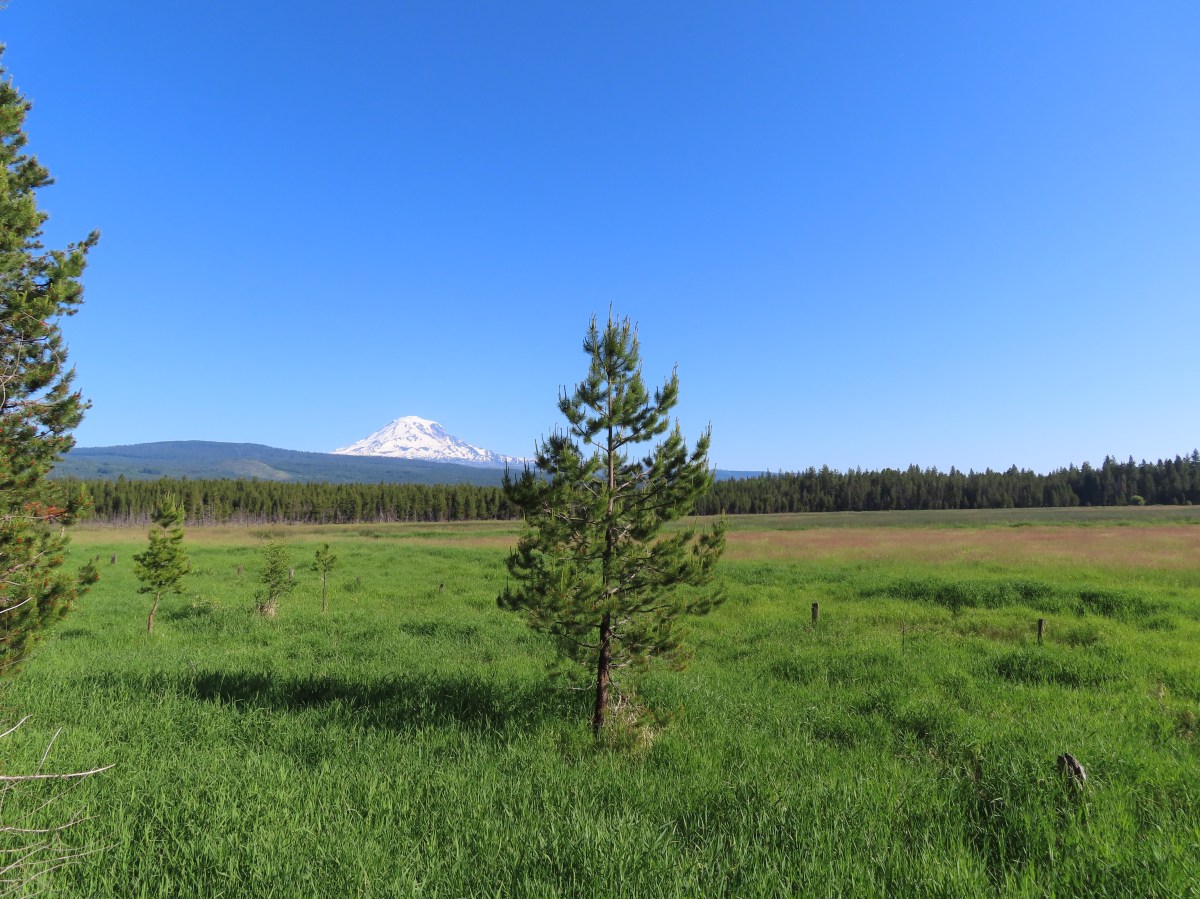
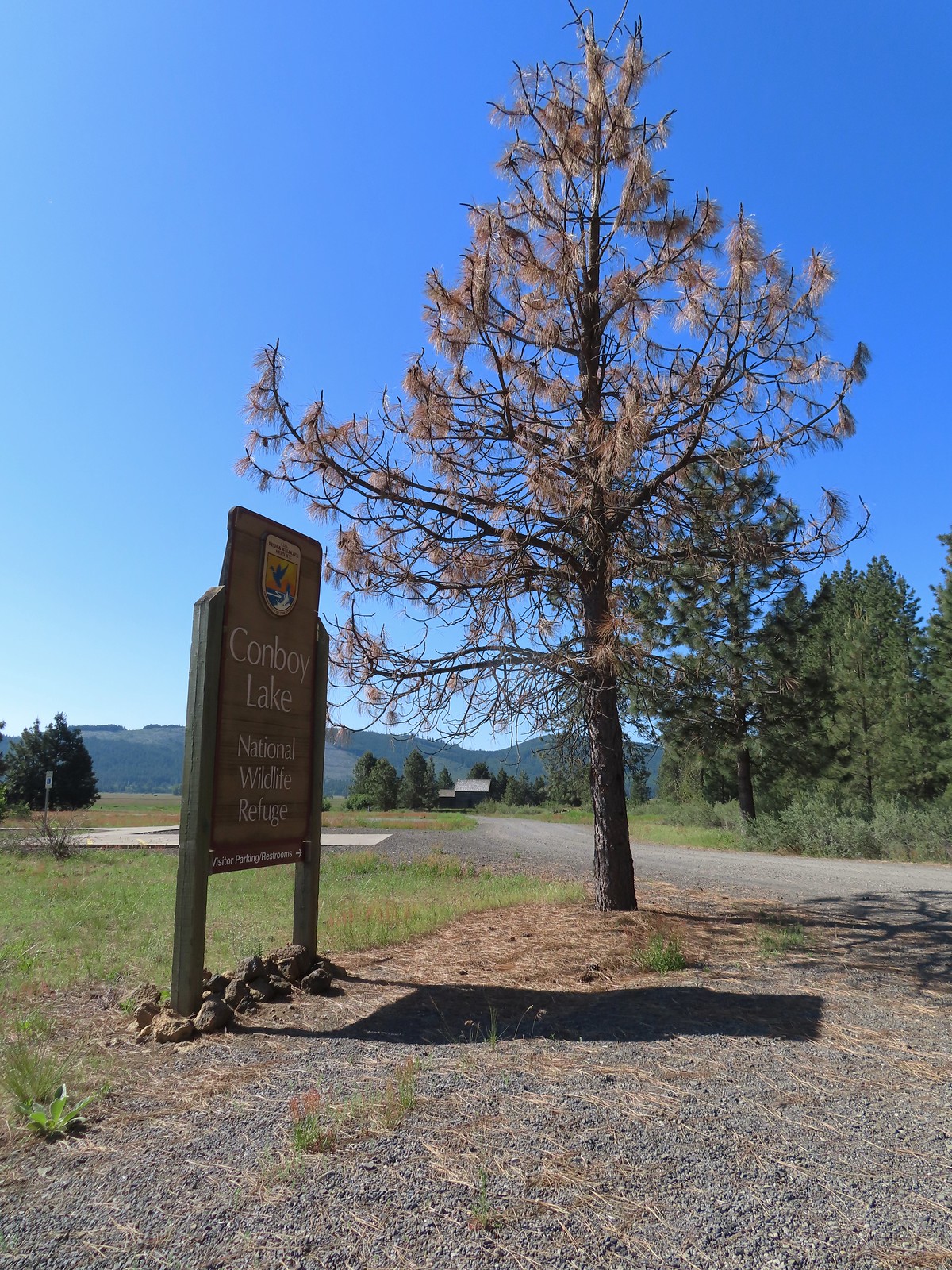
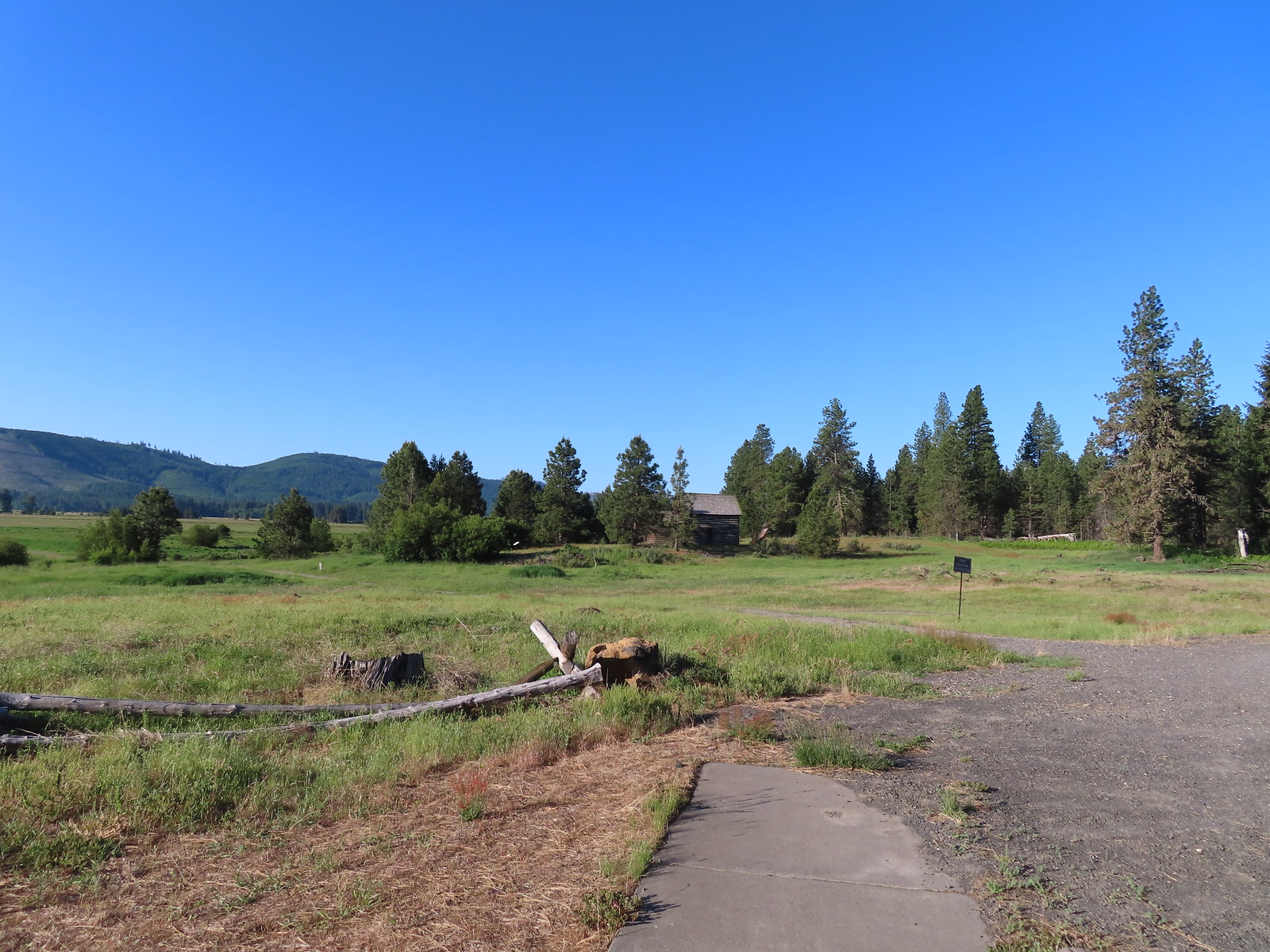
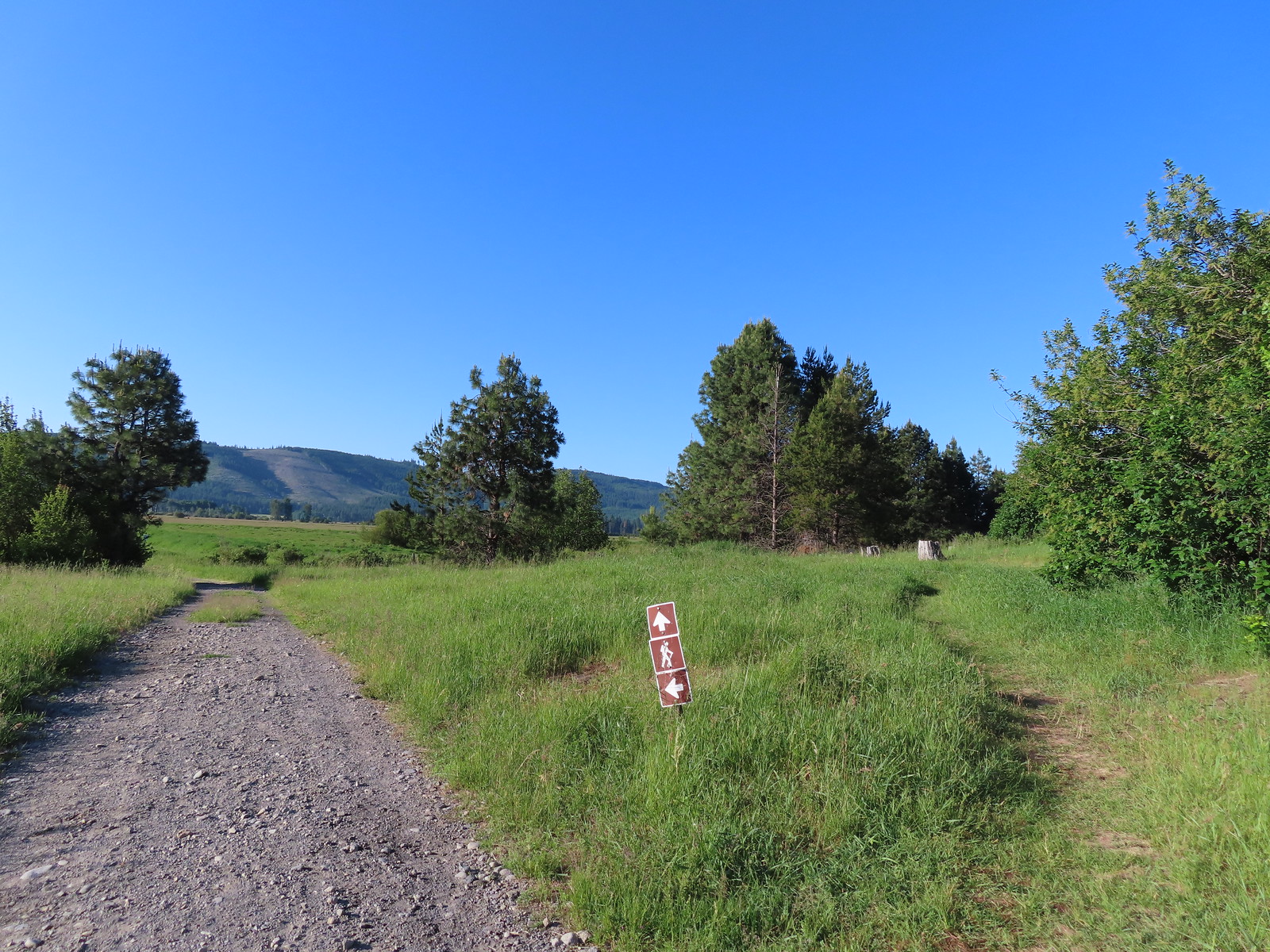 The path to the cabin on the right.
The path to the cabin on the right. Built in 1875 the cabin was moved from its original location in 1987.
Built in 1875 the cabin was moved from its original location in 1987.

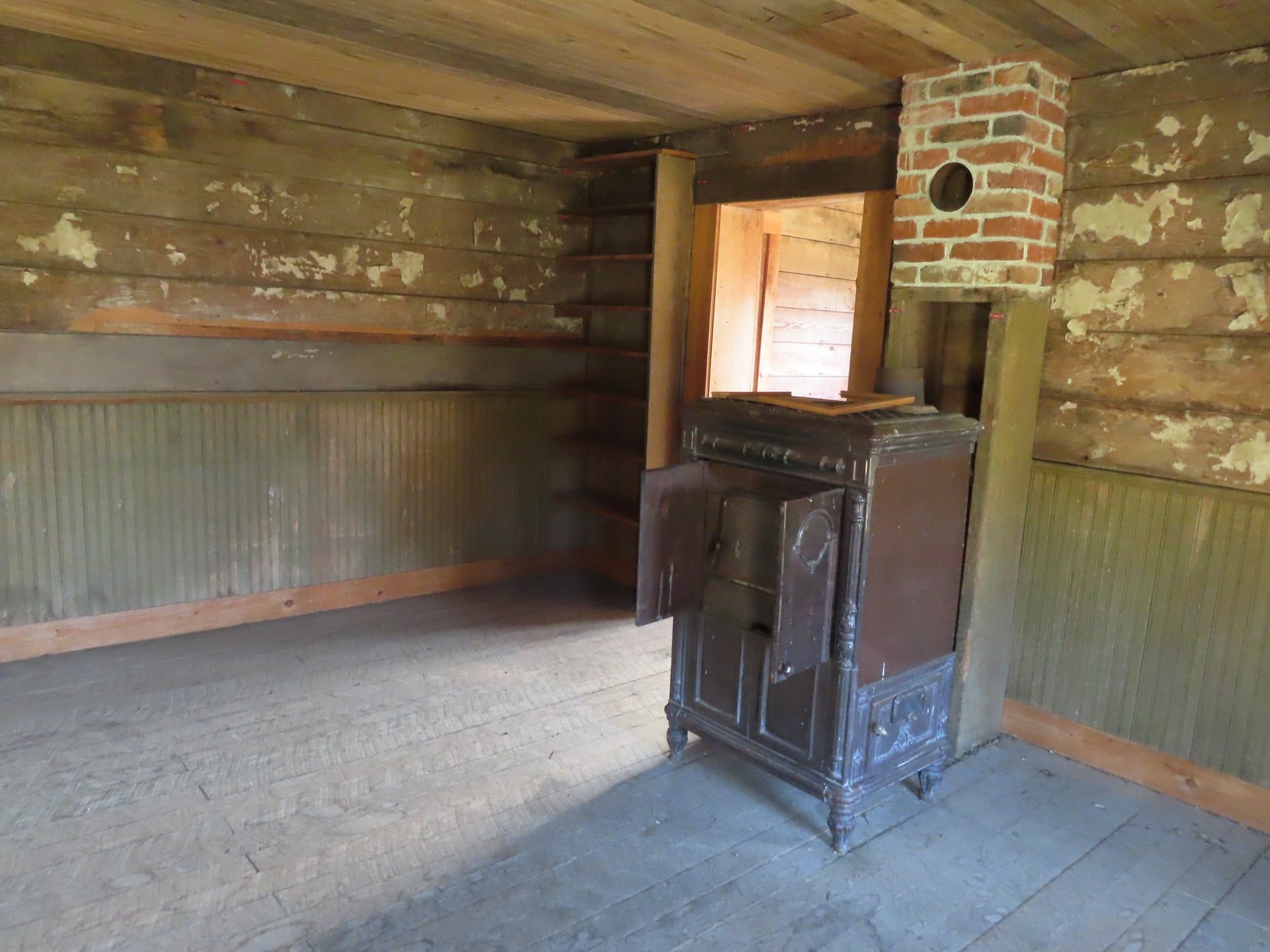
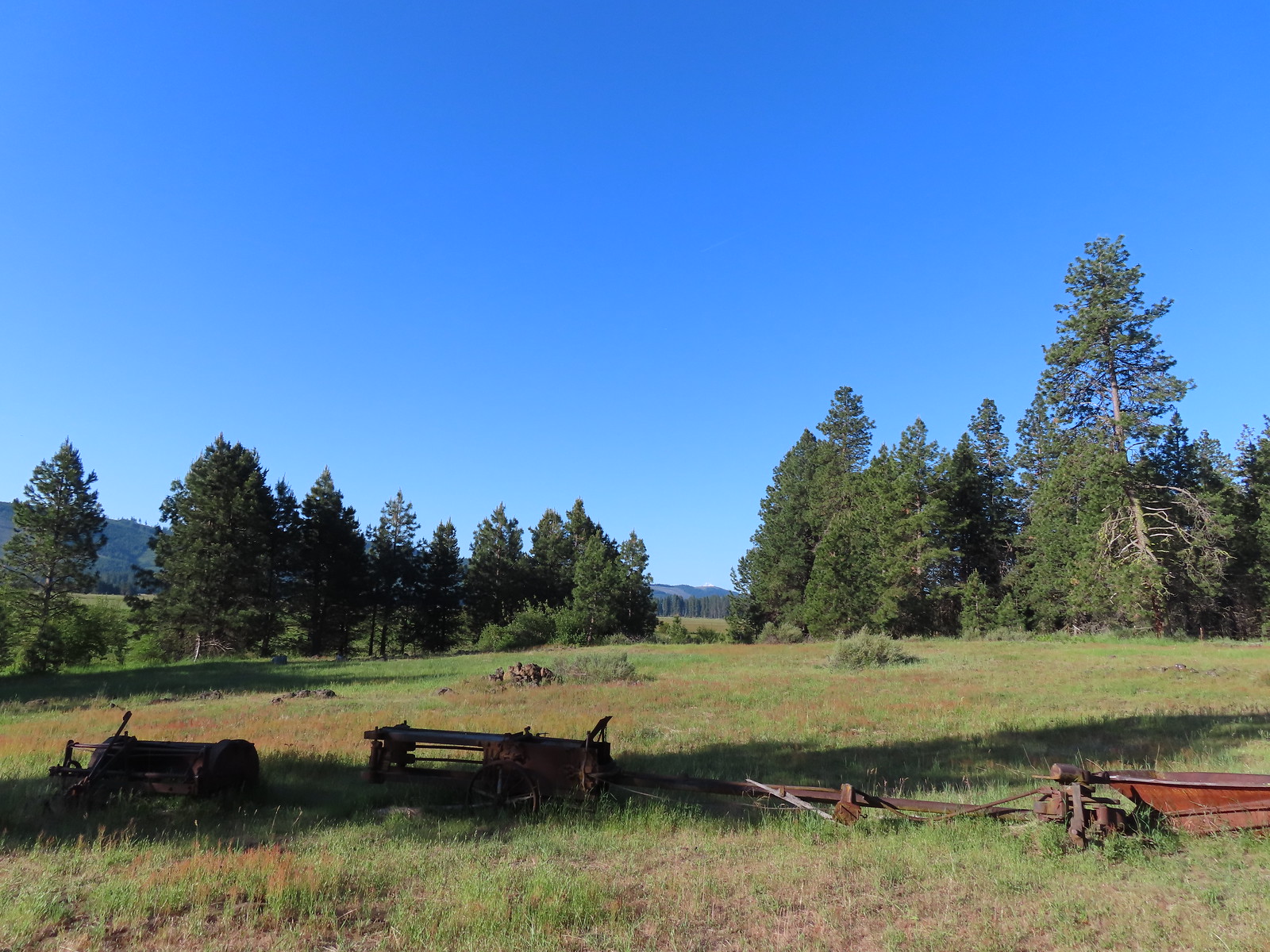 The snowy top of Mt. Hood from the cabin.
The snowy top of Mt. Hood from the cabin.

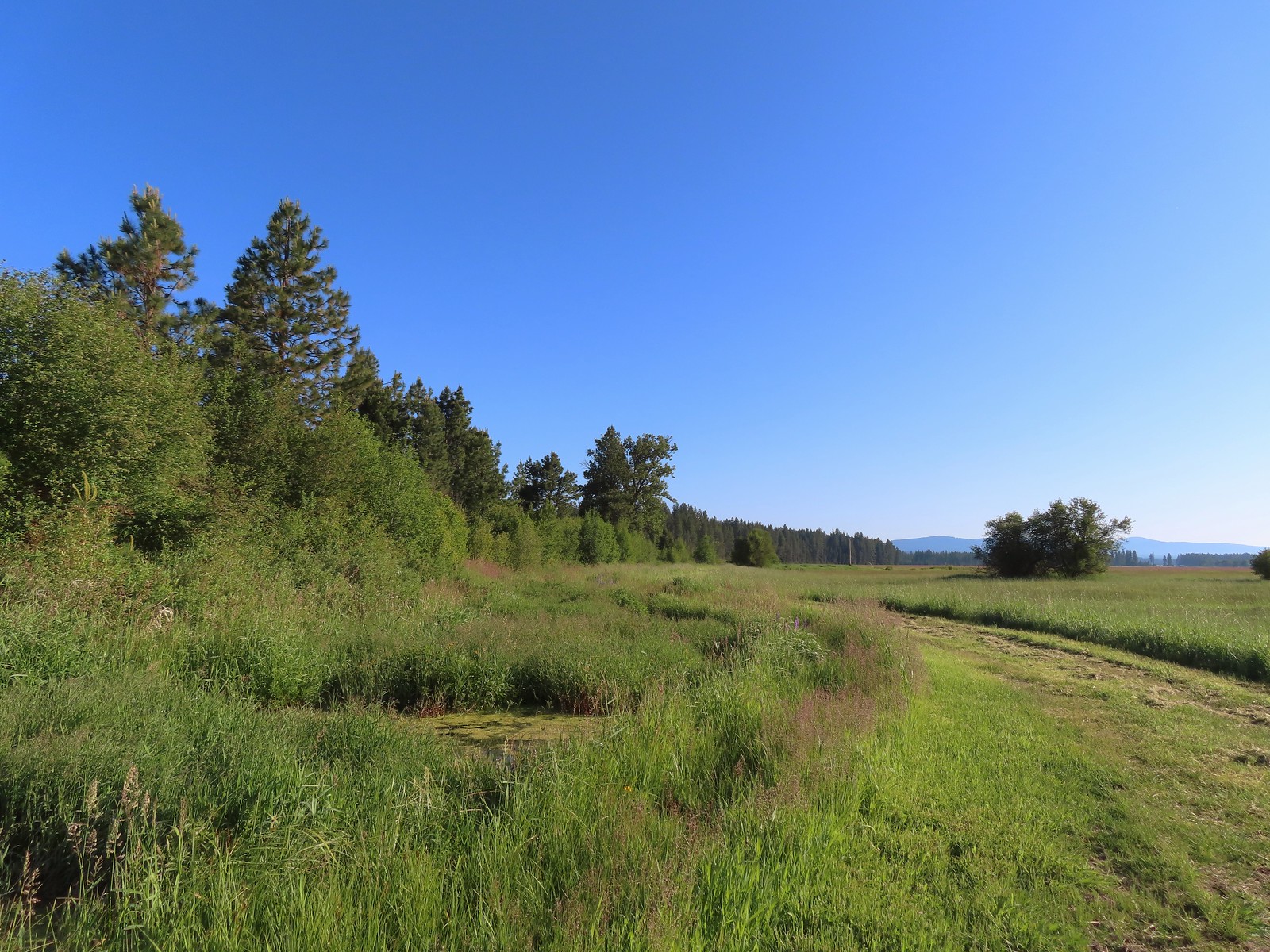
 There was a lot of monkeyflower in and along the ditch.
There was a lot of monkeyflower in and along the ditch. Lupine along the ditch.
Lupine along the ditch. Lazuli bunting
Lazuli bunting Robin
Robin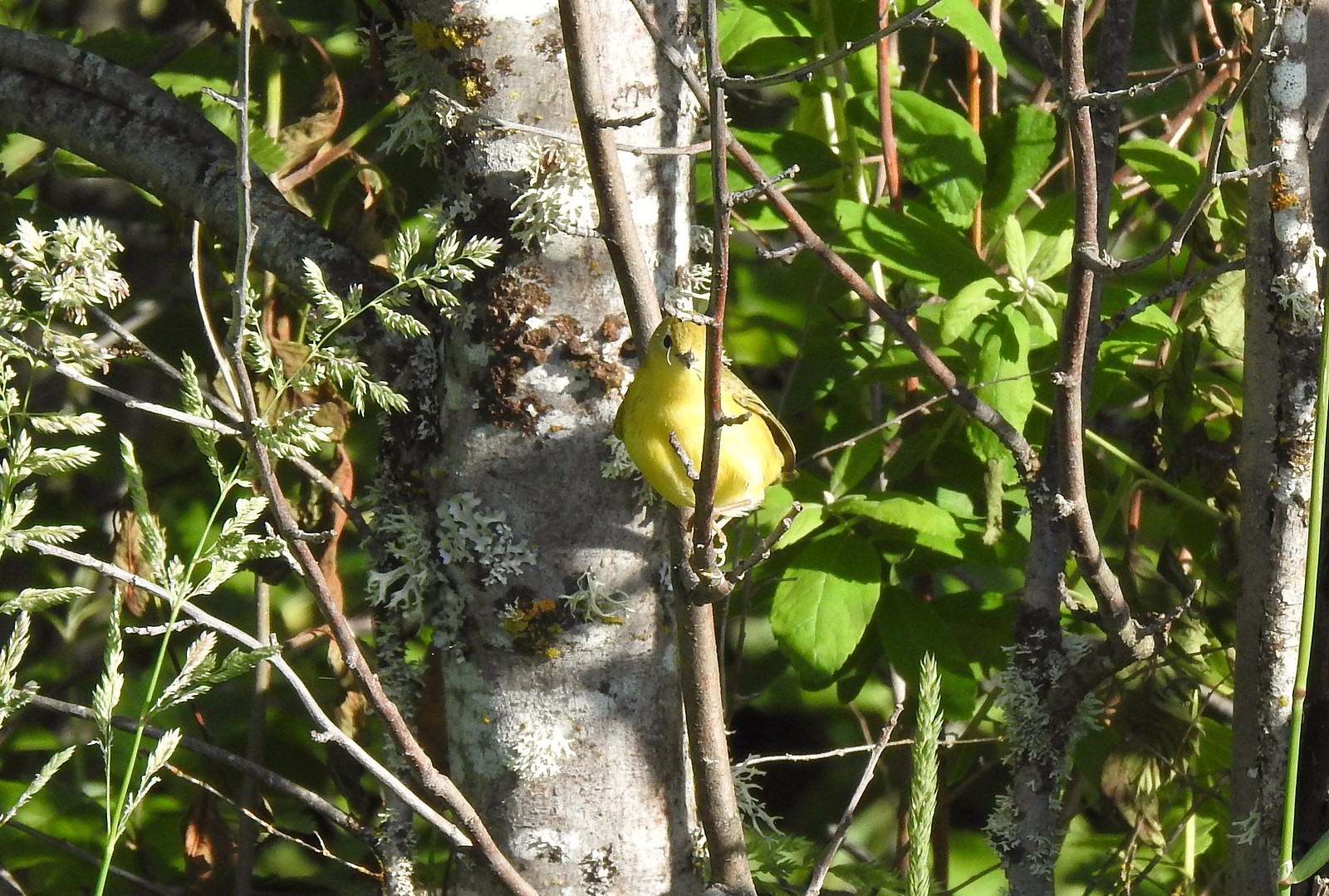 Yellow warbler (according to the Merlin app).
Yellow warbler (according to the Merlin app). Red-winged blackbird
Red-winged blackbird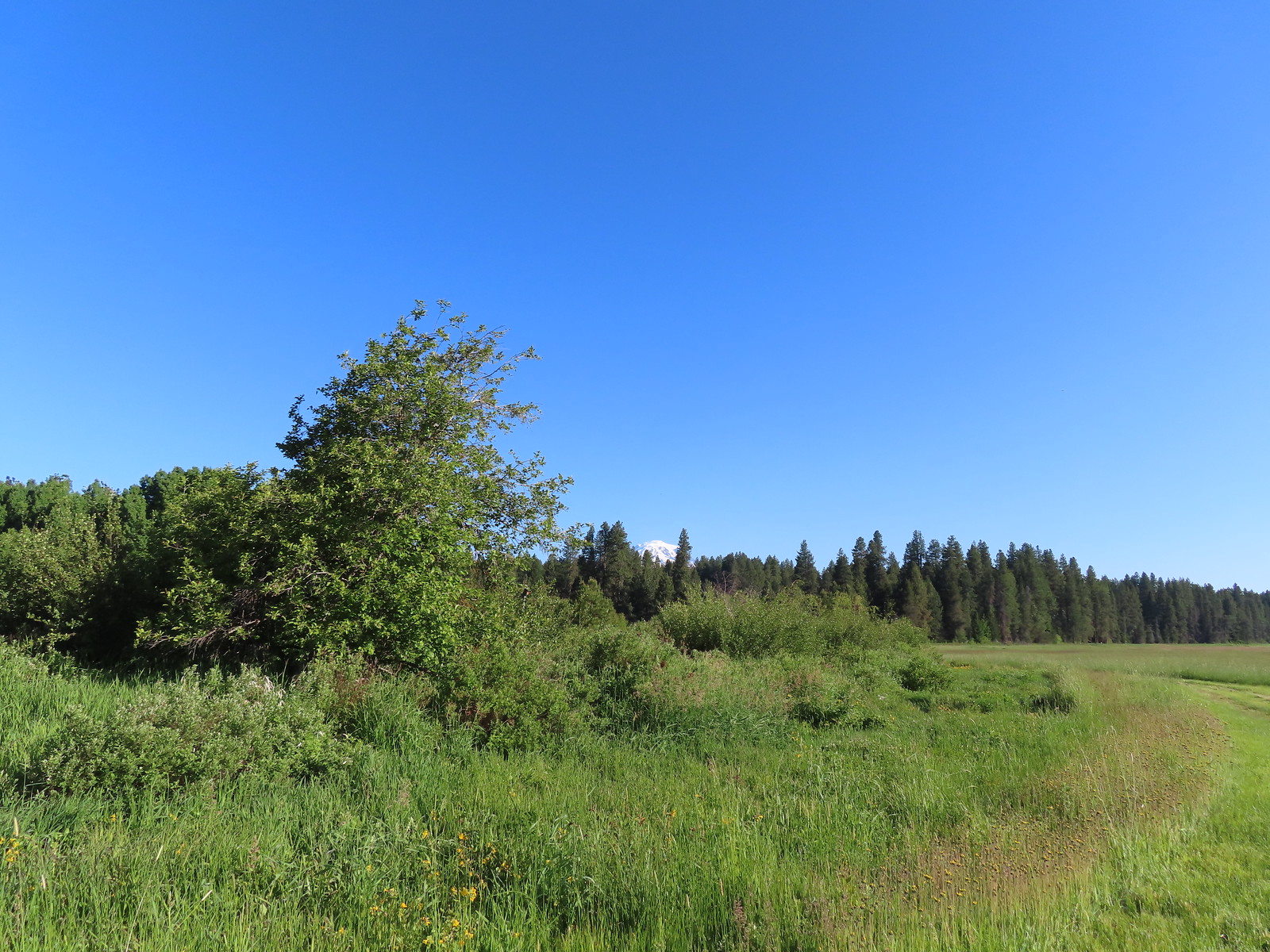 The top of Mt. Adams above the trees.
The top of Mt. Adams above the trees.

 Swallow
Swallow Western bluebirds
Western bluebirds

 Honeysuckle
Honeysuckle
 Columbine
Columbine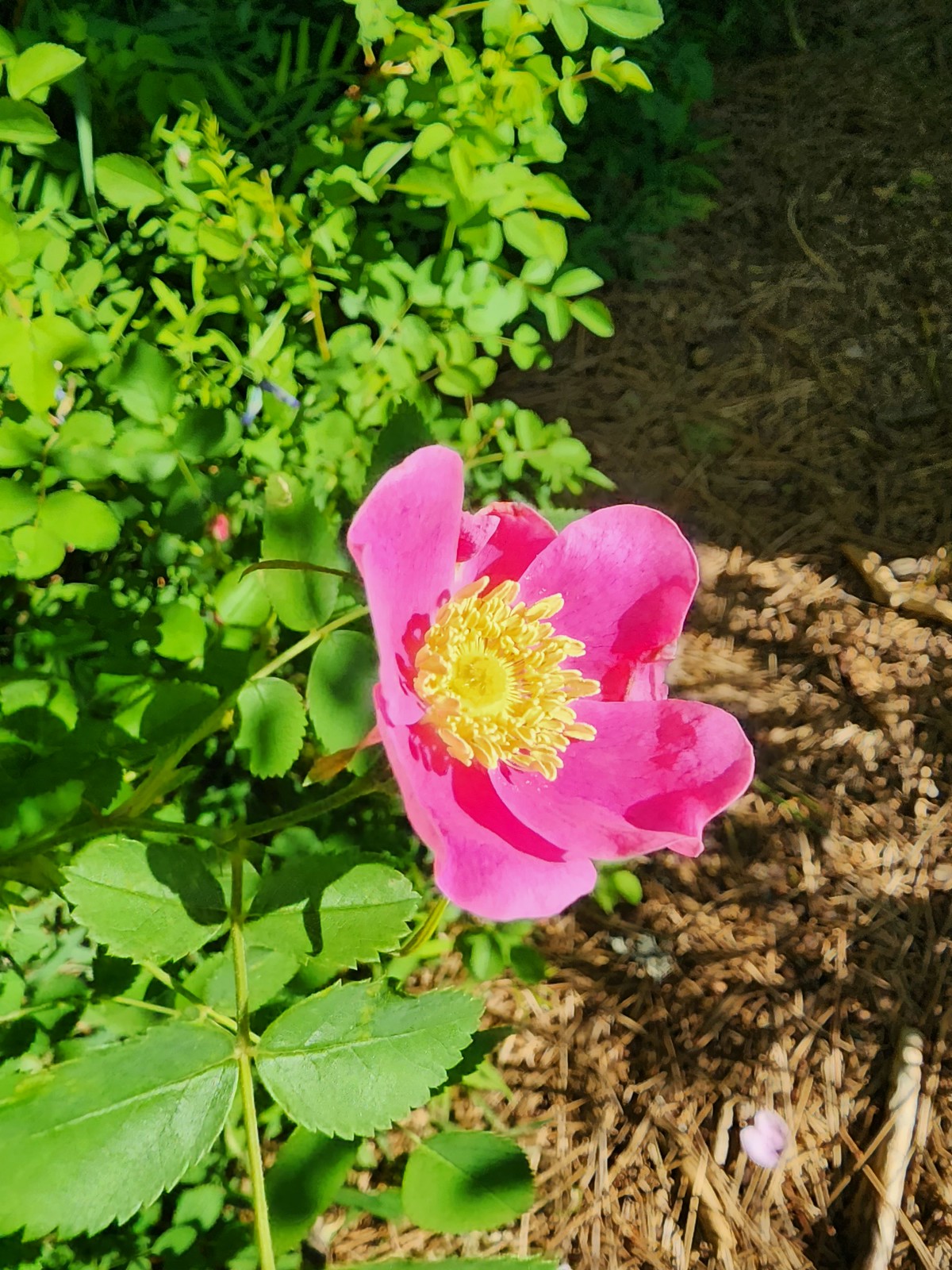 Rose
Rose

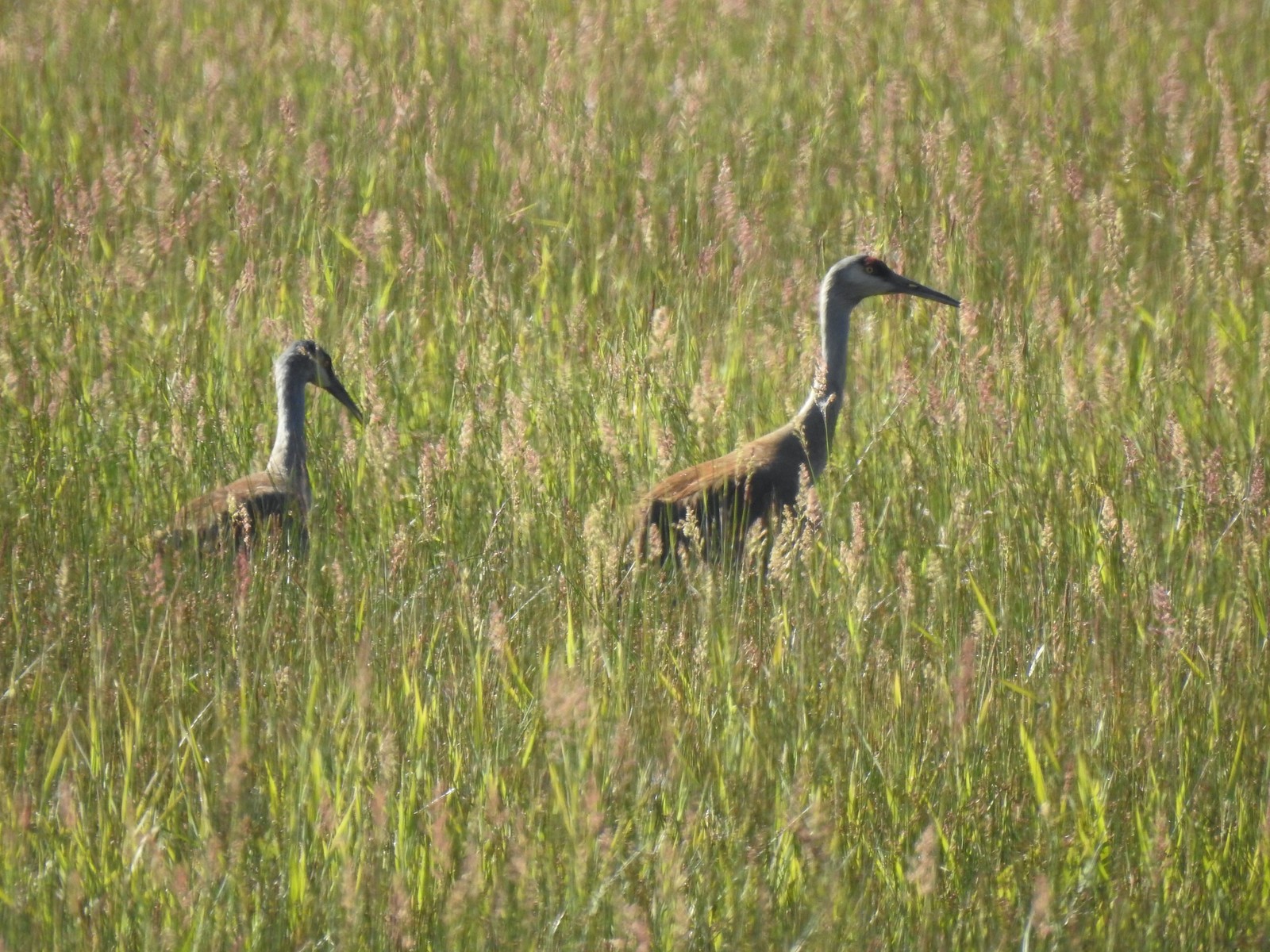


 Continuation of the Willard Springs Trail behind the sign.
Continuation of the Willard Springs Trail behind the sign.


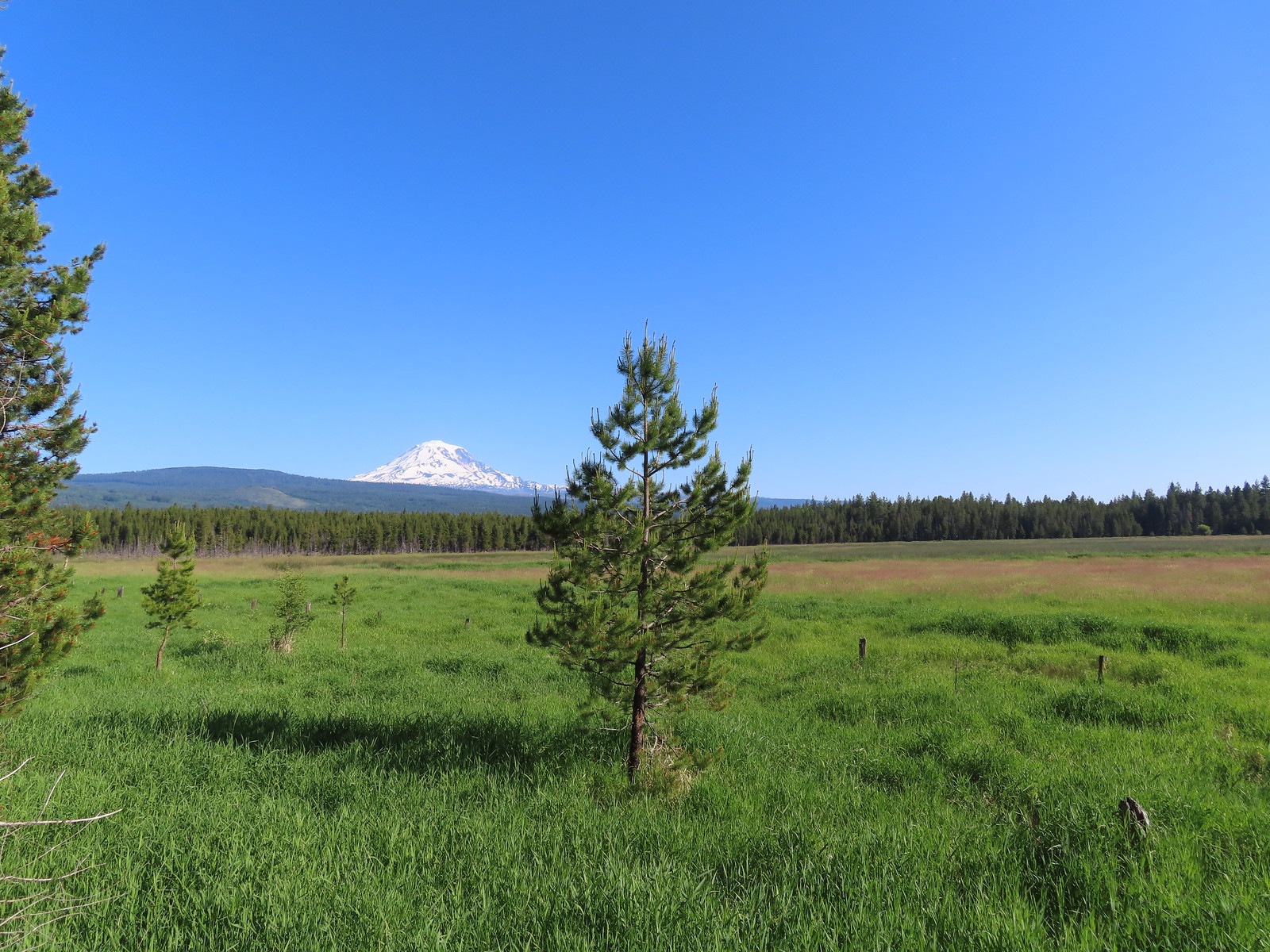

 We hung around long enough that this warbling vireo came to check on us.
We hung around long enough that this warbling vireo came to check on us.
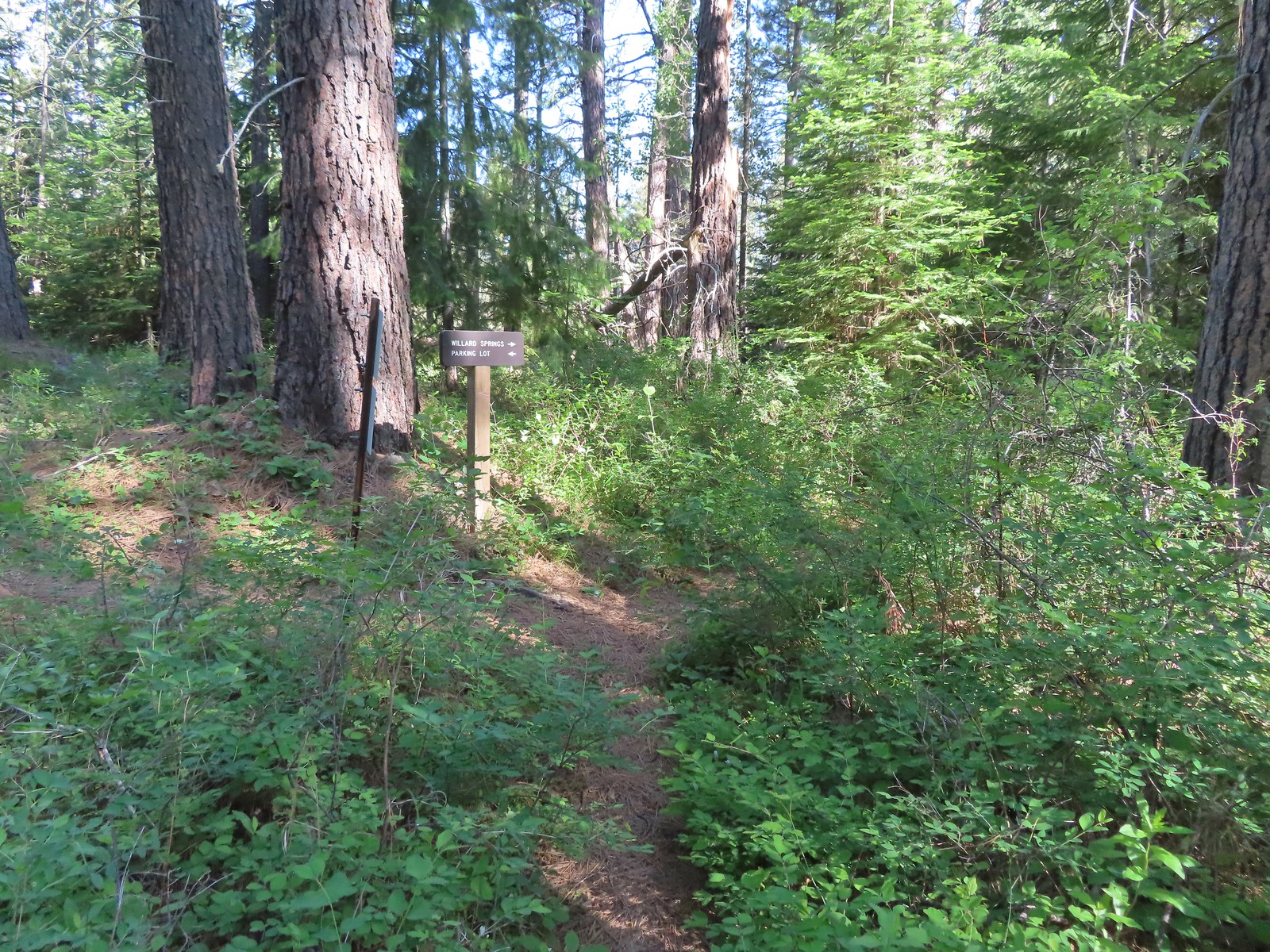


 Willard Sprins hidden in the vegetation. We could hear them better then we could see them.
Willard Sprins hidden in the vegetation. We could hear them better then we could see them. A healthy lupine near the springs.
A healthy lupine near the springs.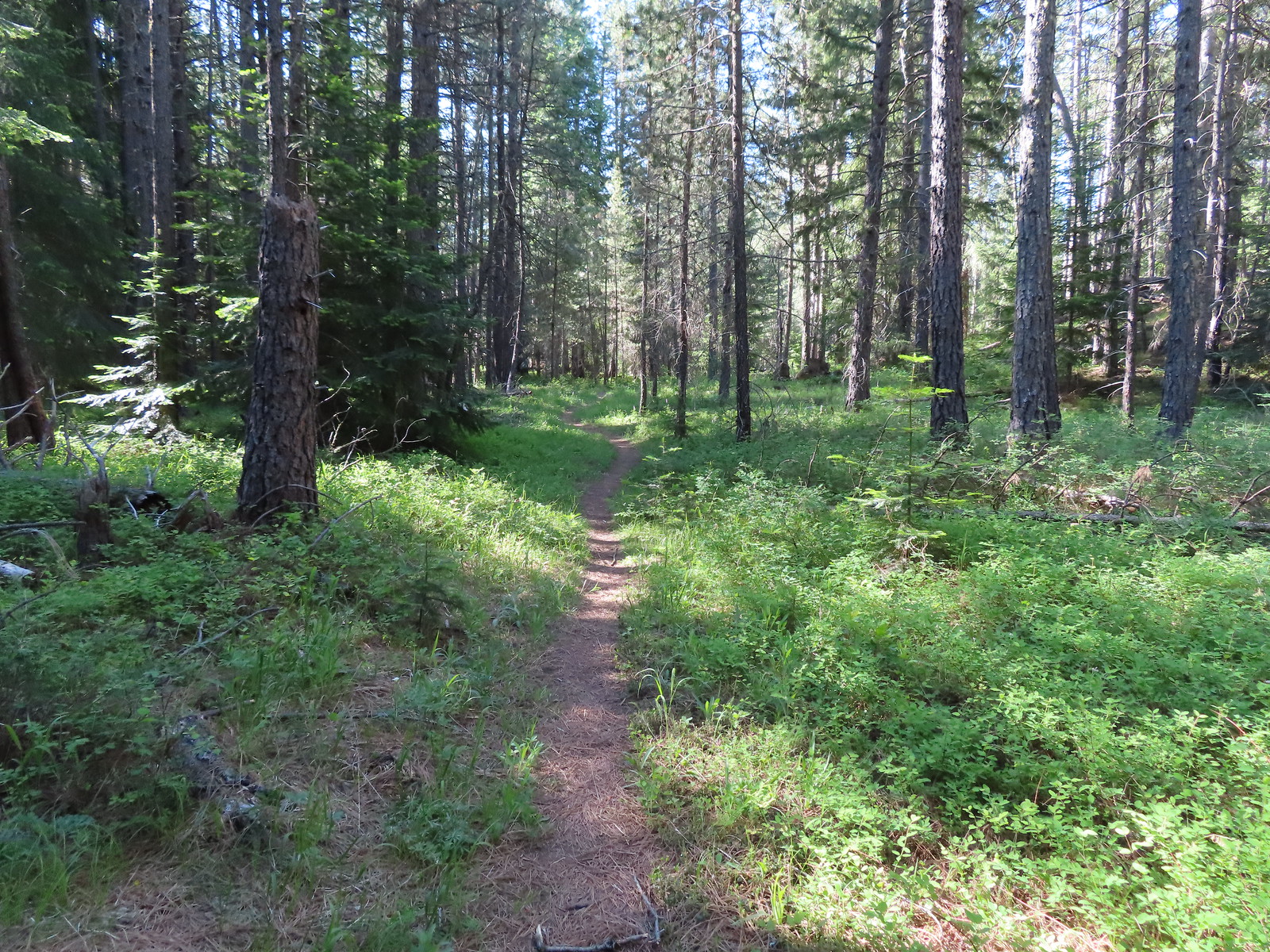
 Cat’s ear lily
Cat’s ear lily Hitchhiker
Hitchhiker Lupine along the trail.
Lupine along the trail. Golden-mantled ground squirrel
Golden-mantled ground squirrel Swallowtail
Swallowtail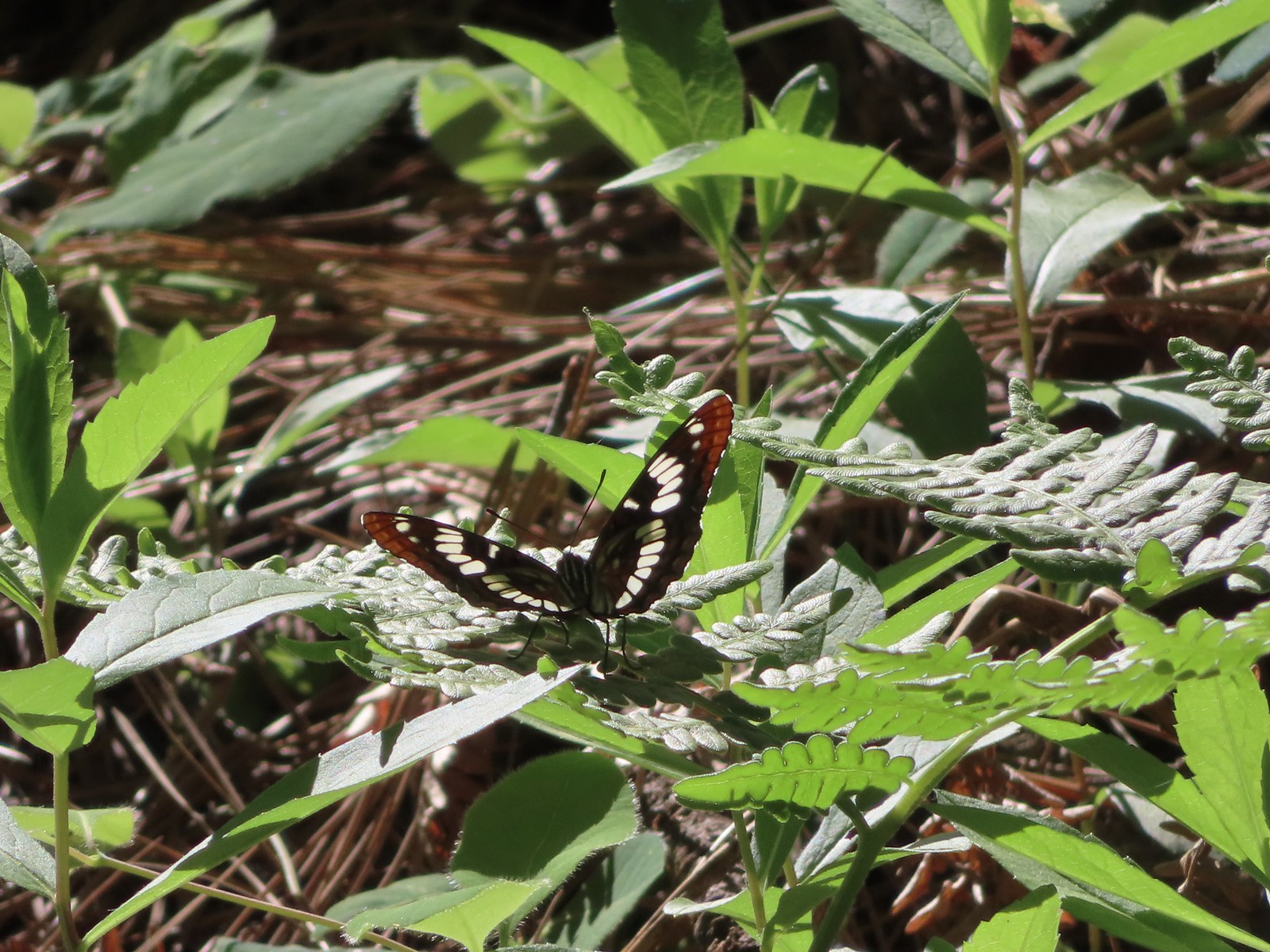 Lorquin’s admiral
Lorquin’s admiral Arriving back at the refuge headquarters.
Arriving back at the refuge headquarters. Trail map at the trailhead.
Trail map at the trailhead.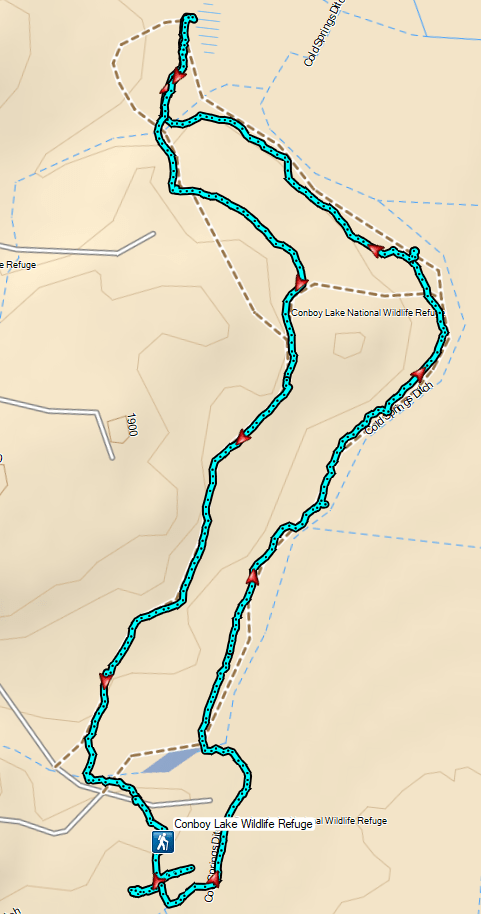
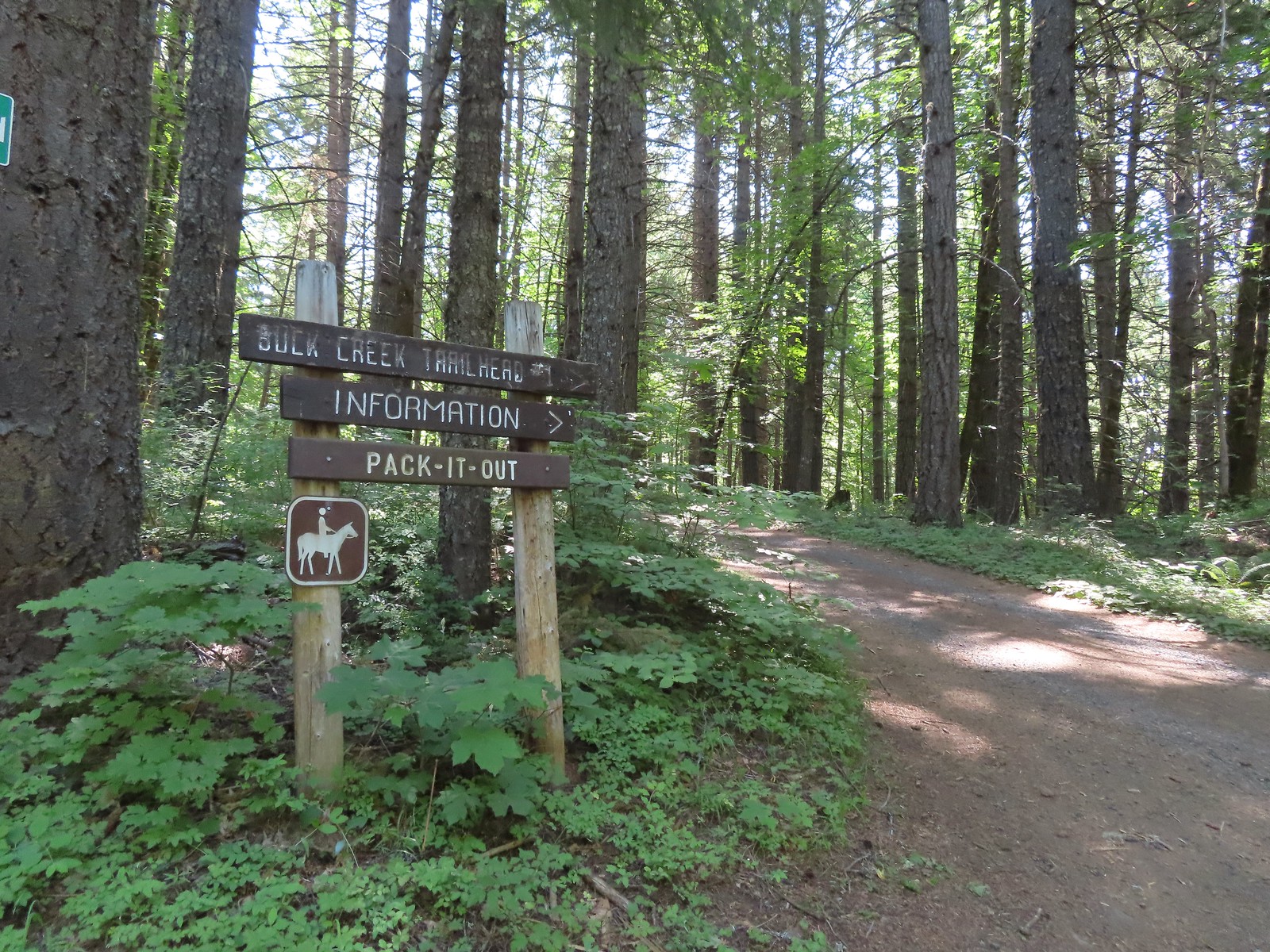


 There were lots of phantom orchids blooming along the lower sections of the hike.
There were lots of phantom orchids blooming along the lower sections of the hike.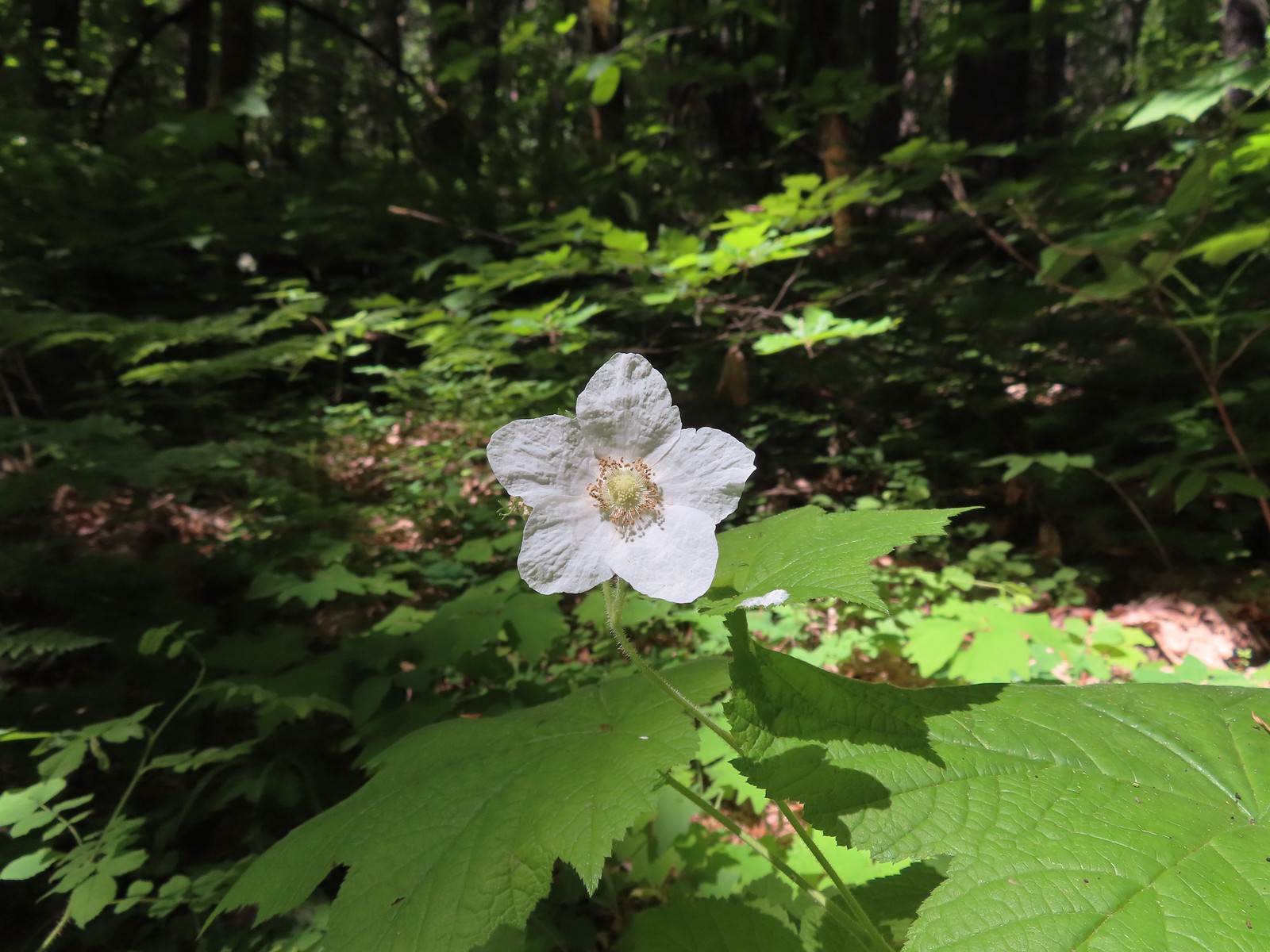 Thimbleberry
Thimbleberry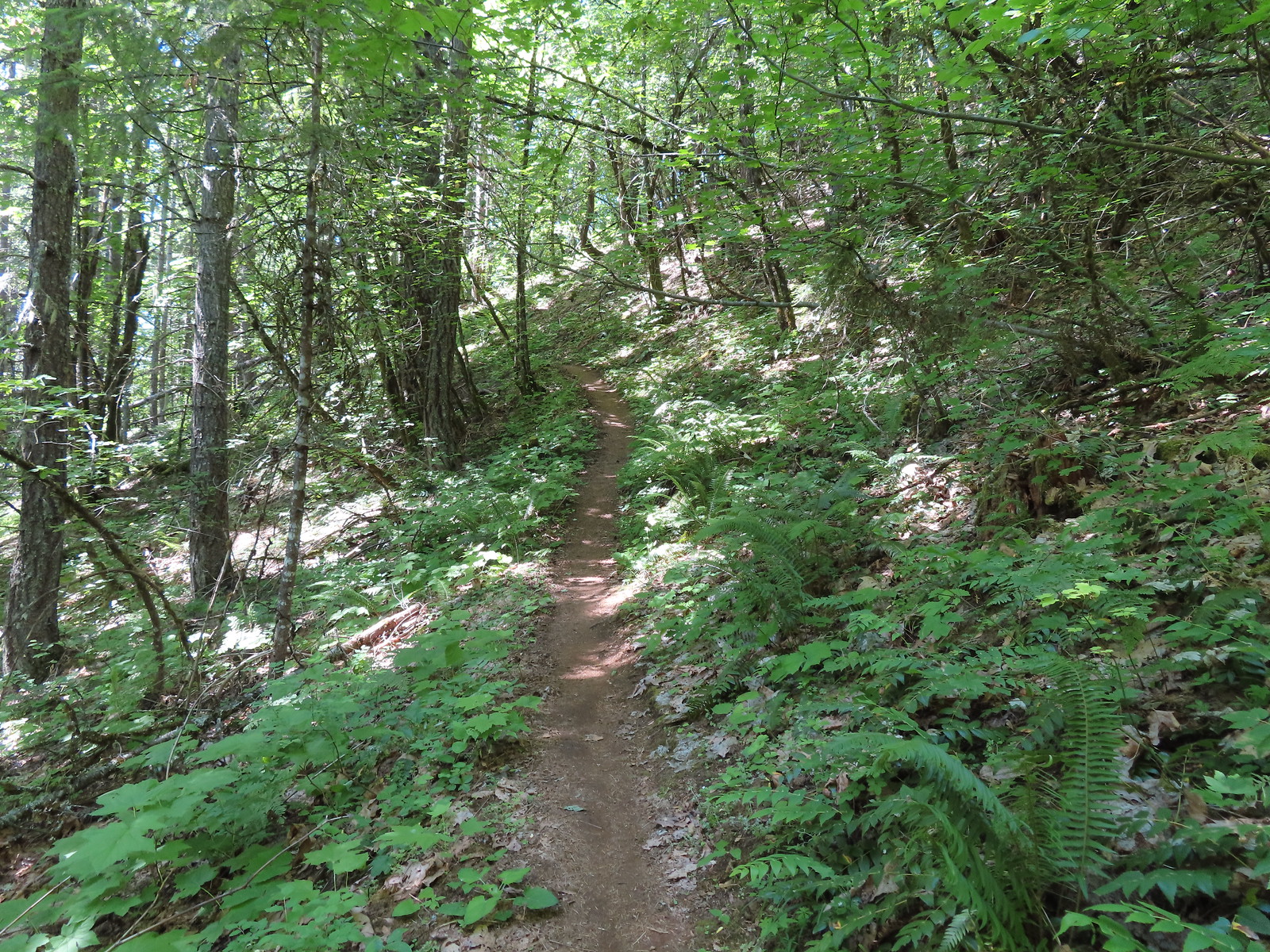
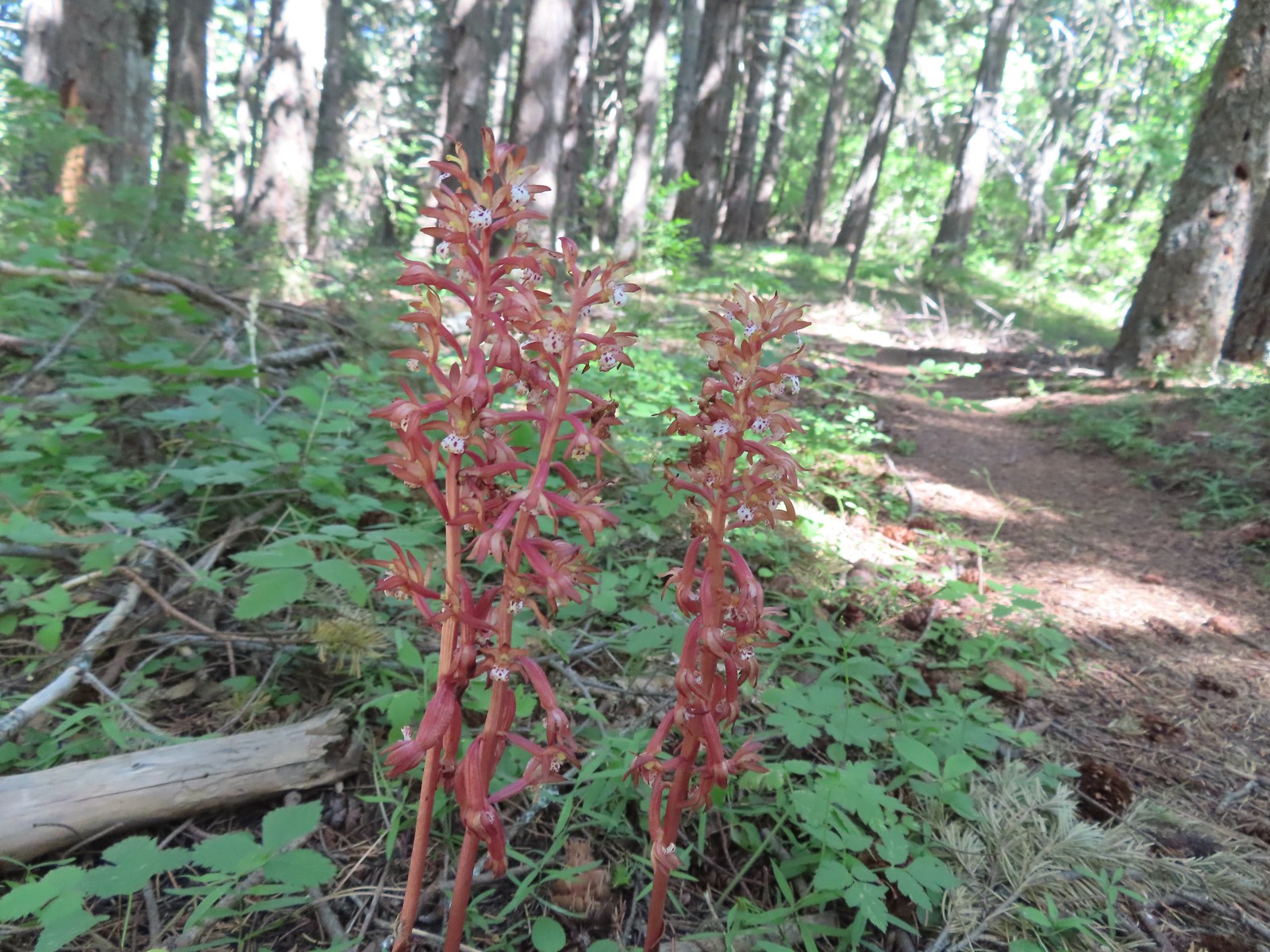 Spotted coralroot was also plentiful.
Spotted coralroot was also plentiful. Wallflower
Wallflower


 One of only two trees that were down over the trail, both were easily manageable.
One of only two trees that were down over the trail, both were easily manageable. The one small stream crossing.
The one small stream crossing. There was enough sunlight getting through to really heat up the trail.
There was enough sunlight getting through to really heat up the trail. While there wasn’t much there we did occasionally see poison oak throughout most of the lower 2/3rds of the hike.
While there wasn’t much there we did occasionally see poison oak throughout most of the lower 2/3rds of the hike.
 Sign above the switchbacks warning mountain bikers that they were ahead.
Sign above the switchbacks warning mountain bikers that they were ahead.
 Buck Creek Trail to the left near the roads end.
Buck Creek Trail to the left near the roads end.
 More spotted coralroot.
More spotted coralroot.

 Vanilla leaf
Vanilla leaf Queen’s cup
Queen’s cup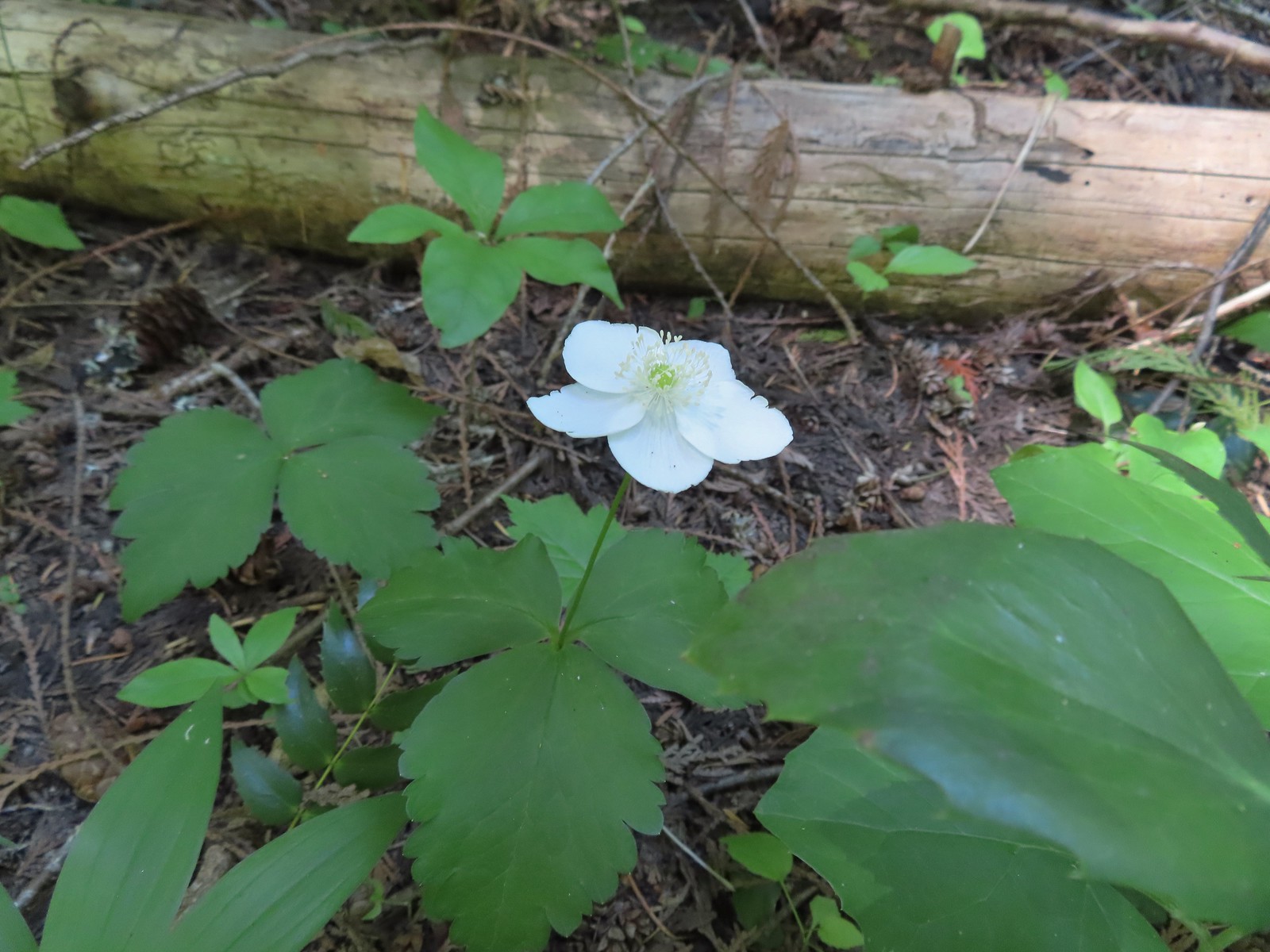 Anemone
Anemone
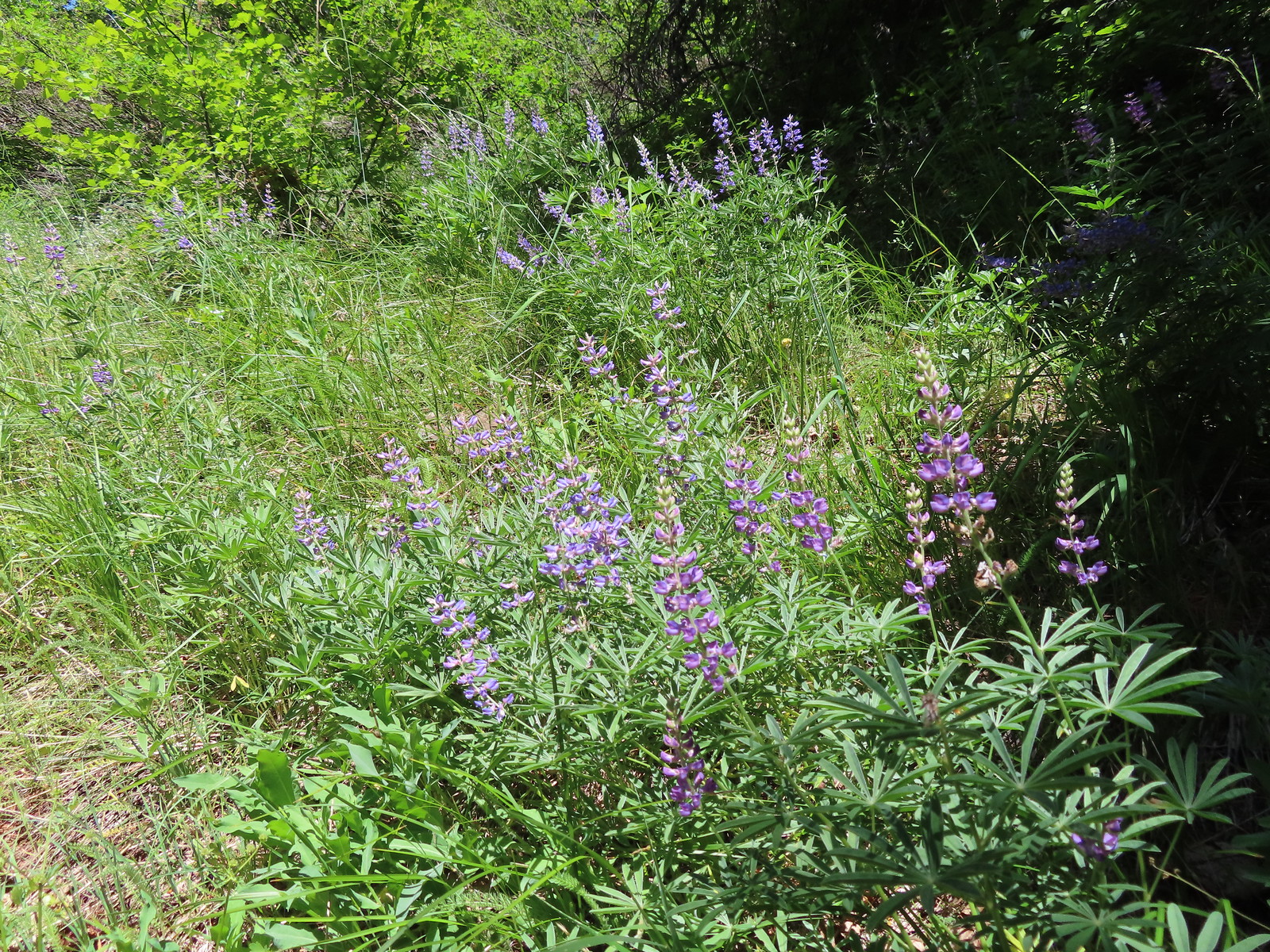 Lupine
Lupine Mt. Hood from the Buck Creek Trail.
Mt. Hood from the Buck Creek Trail. Mt. Hood
Mt. Hood Cedar hairstreak on yarrow.
Cedar hairstreak on yarrow. Paintbrush, lupine, penstemon, and balsamroot.
Paintbrush, lupine, penstemon, and balsamroot.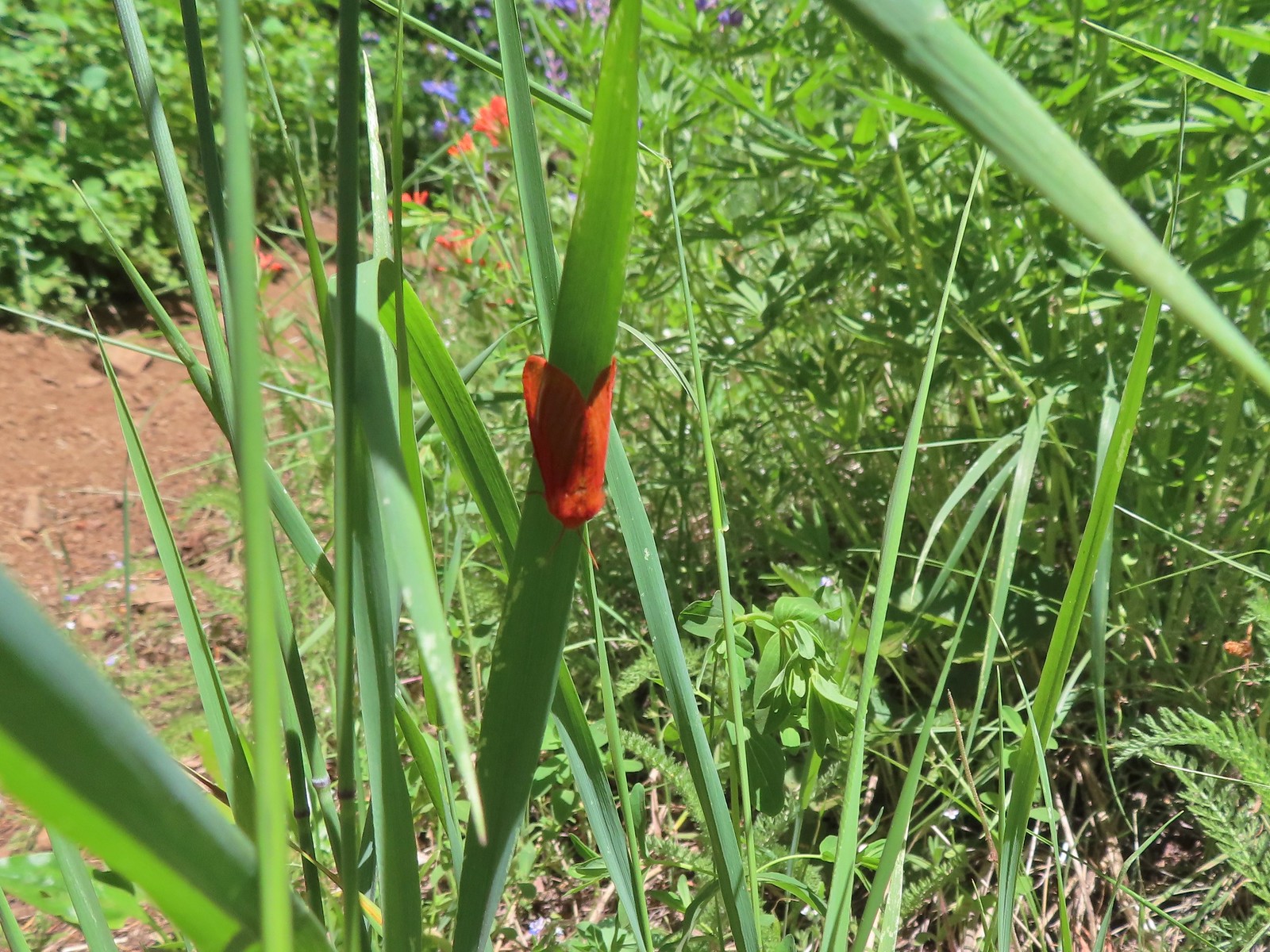 Moth
Moth Penstemon
Penstemon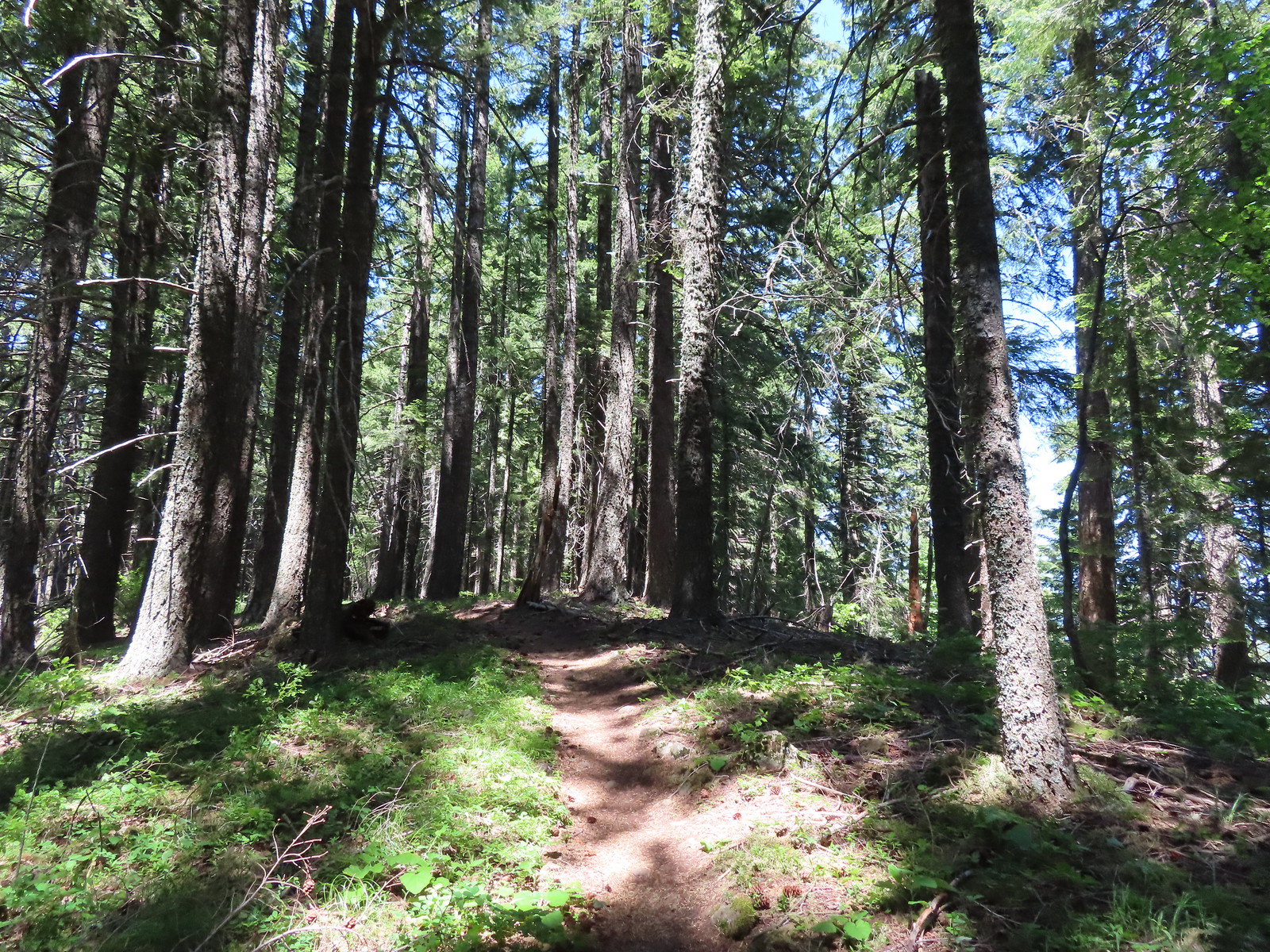 Gaining the ridge.
Gaining the ridge. Paintbrush
Paintbrush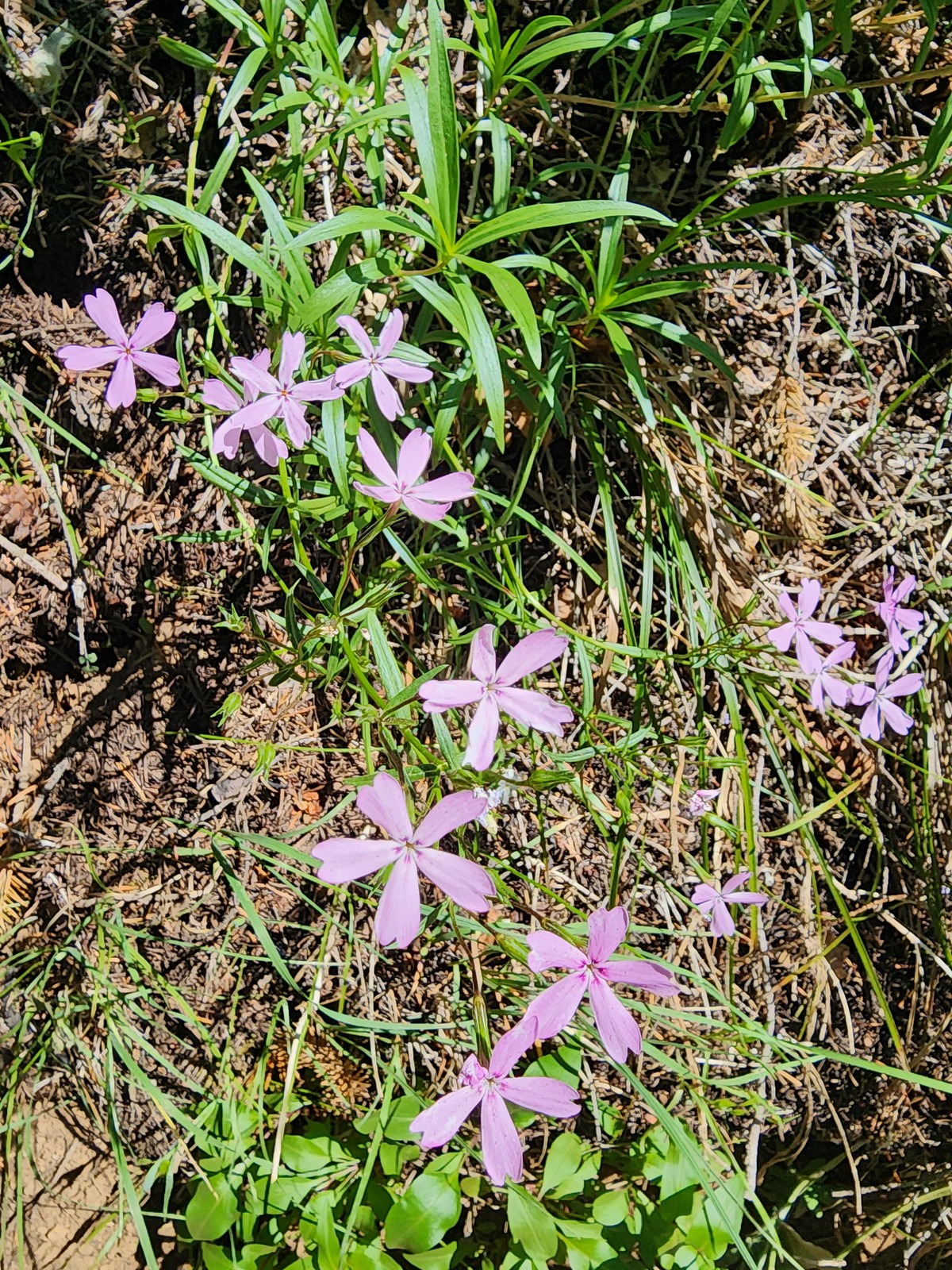 Showy phlox
Showy phlox Approaching the start of the final climb.
Approaching the start of the final climb.
 Sub-alpine mariposa lily
Sub-alpine mariposa lily
 Showy phlox
Showy phlox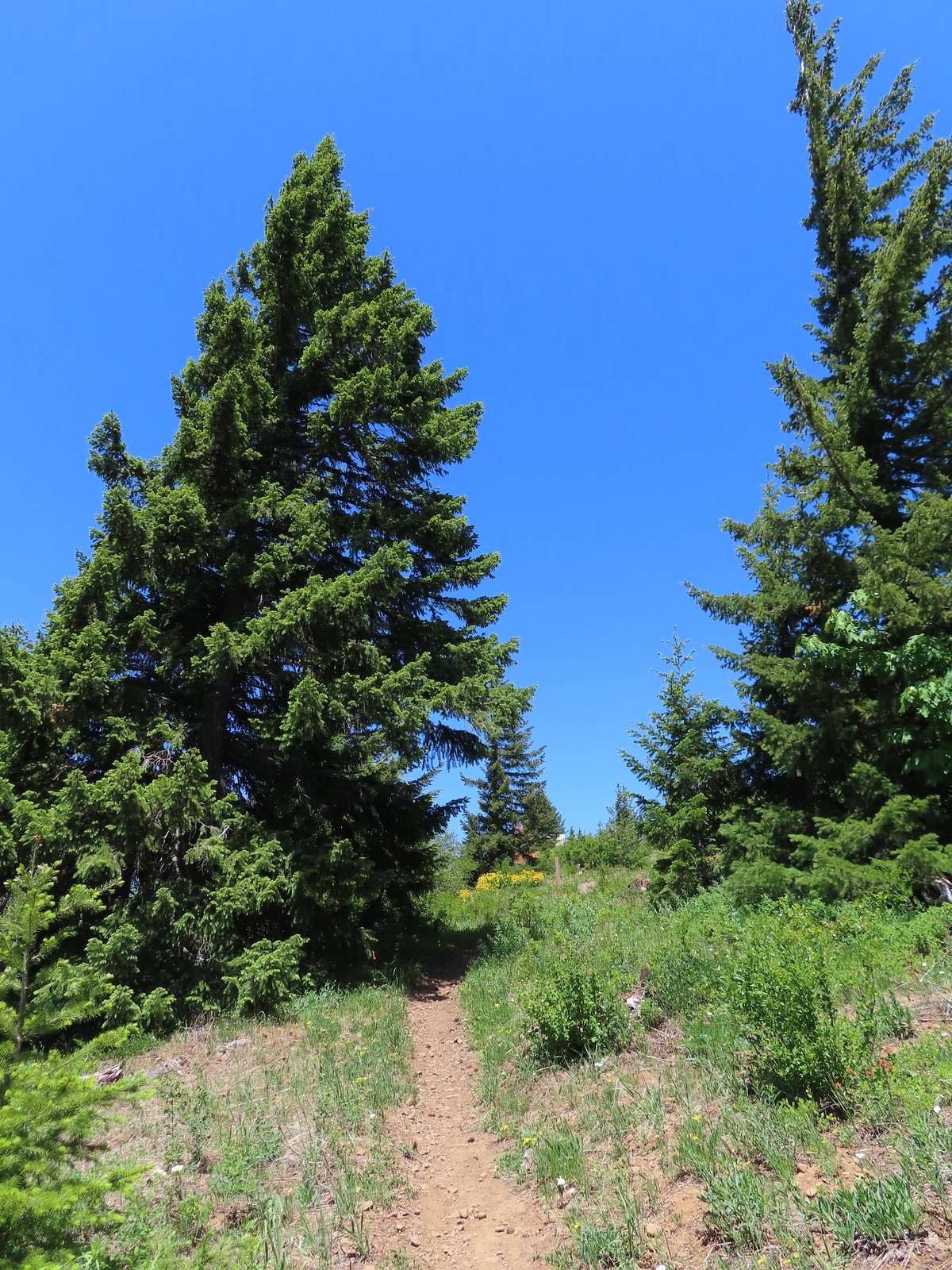
 Road N-1600.
Road N-1600.

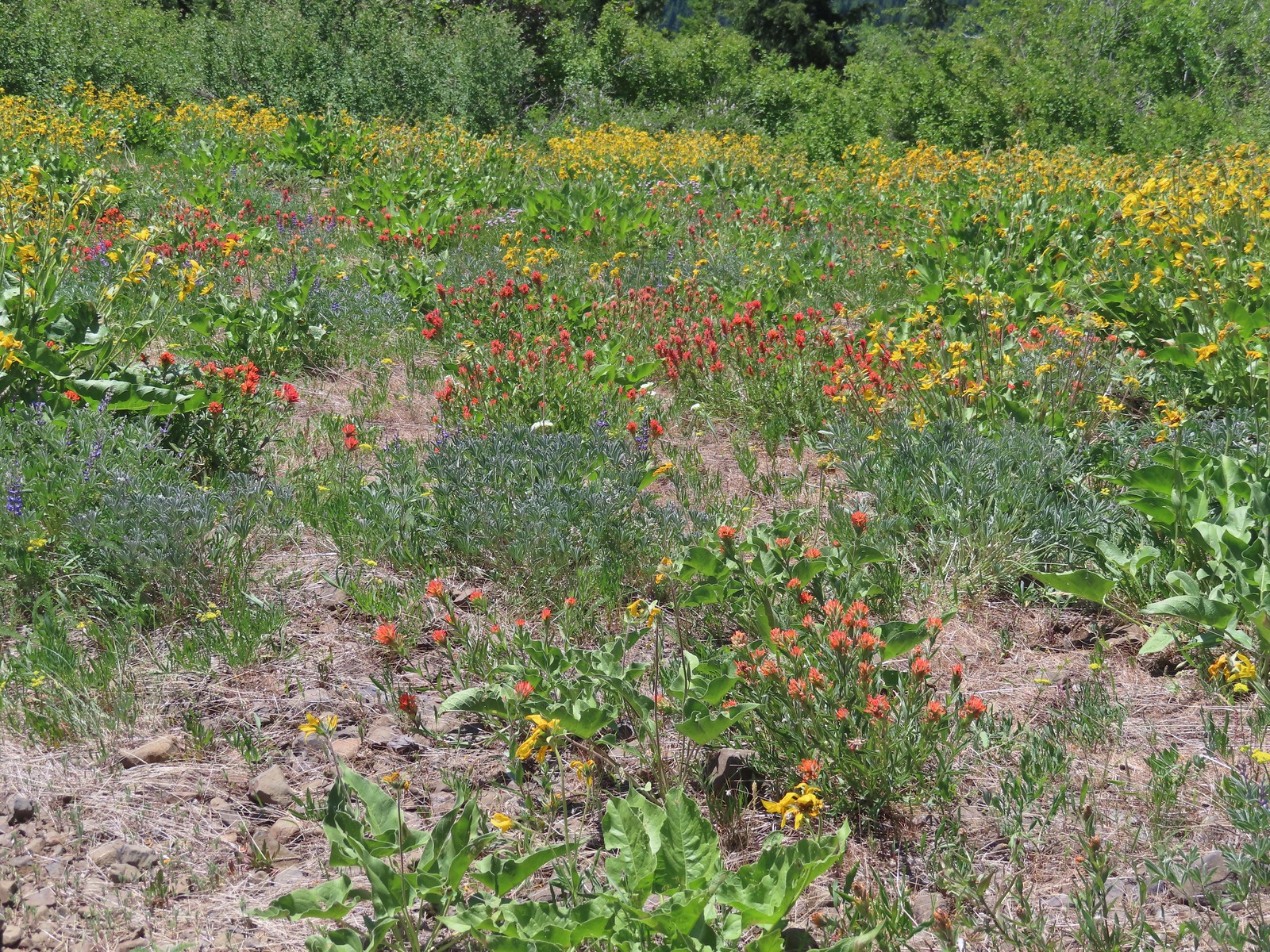
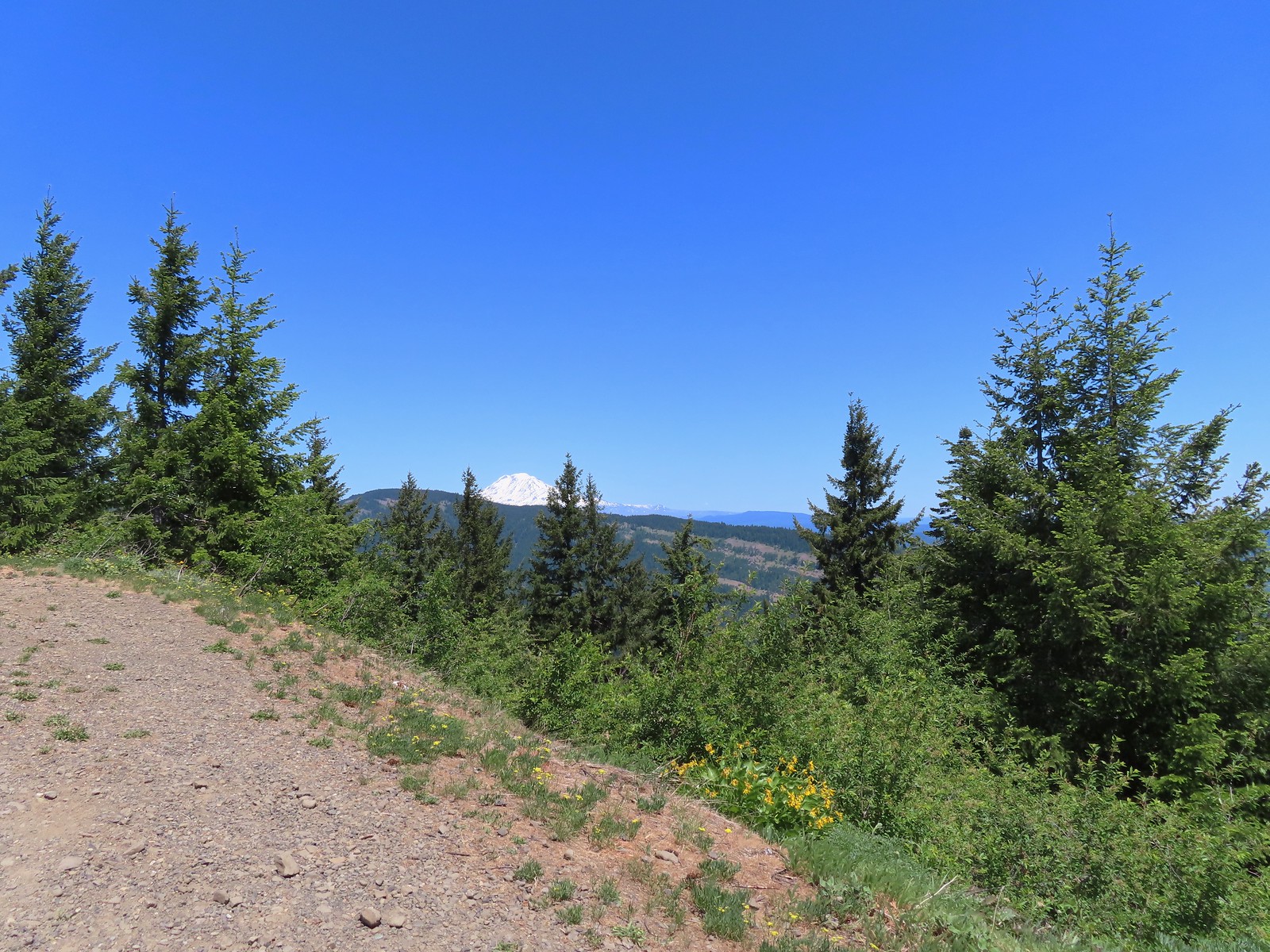
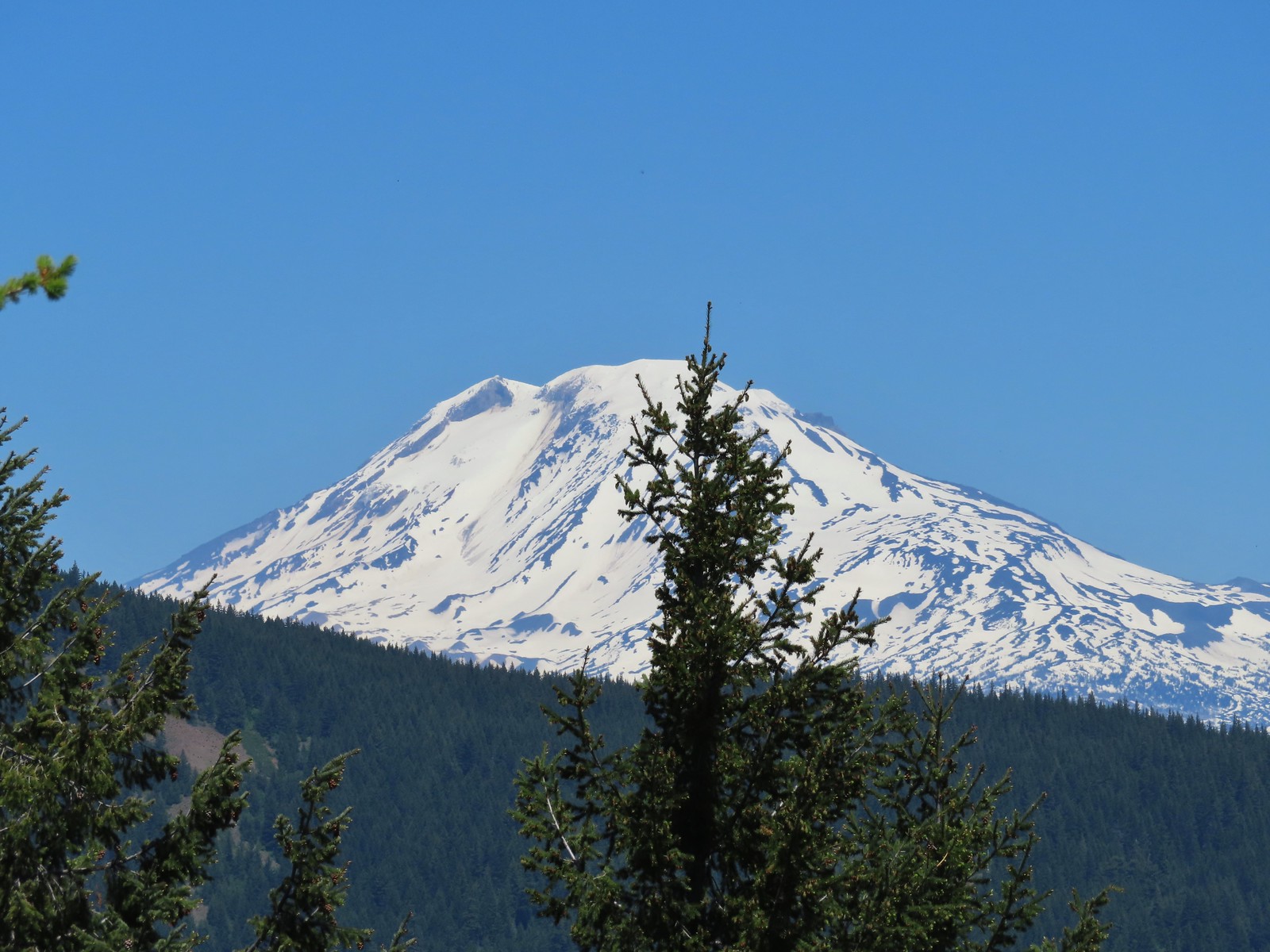

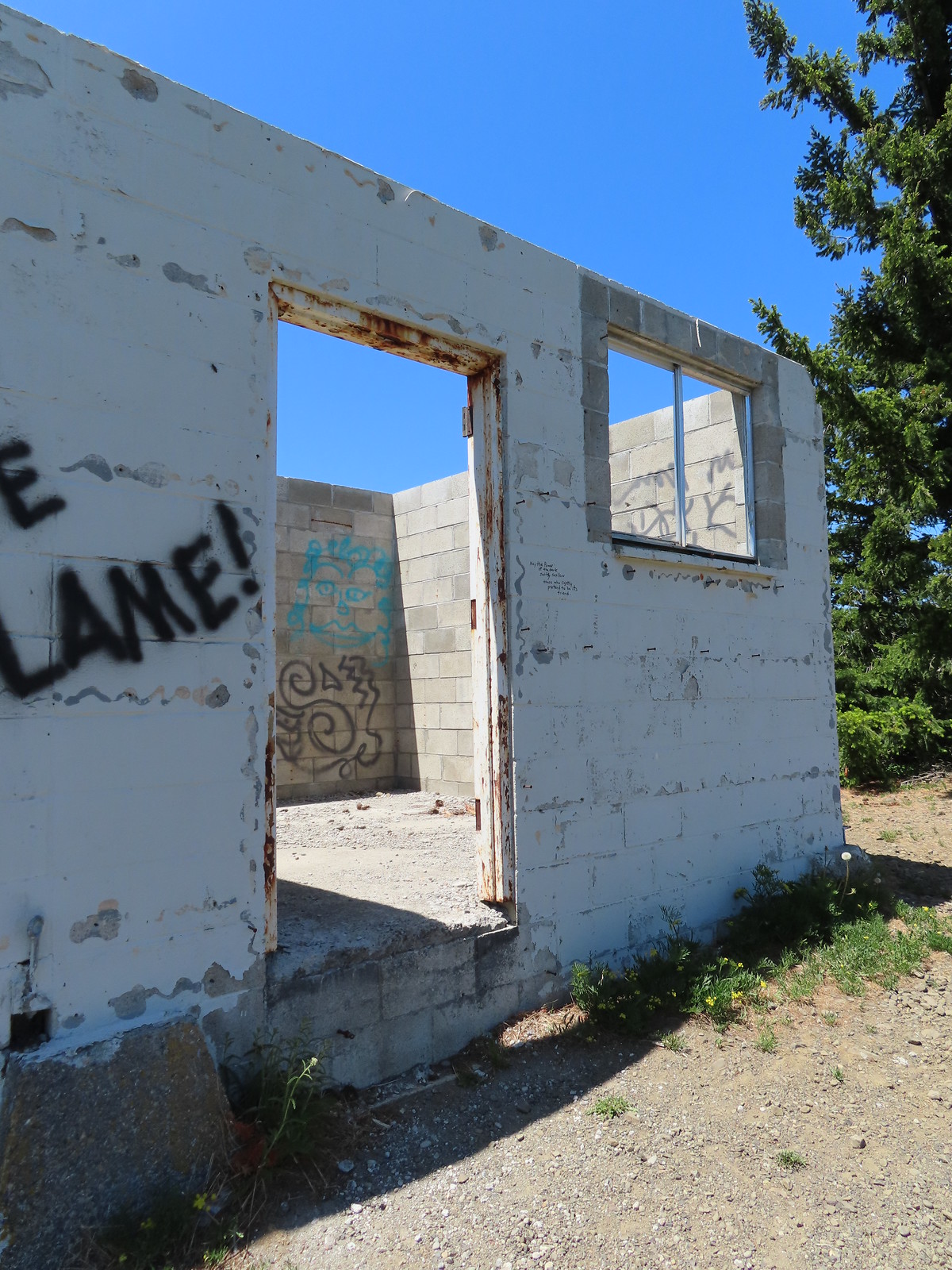 Unfortunate amount of graffiti on the old shed.
Unfortunate amount of graffiti on the old shed. Mt. Hood and balsamroot.
Mt. Hood and balsamroot. Mt. Hood
Mt. Hood Oregon sunshine
Oregon sunshine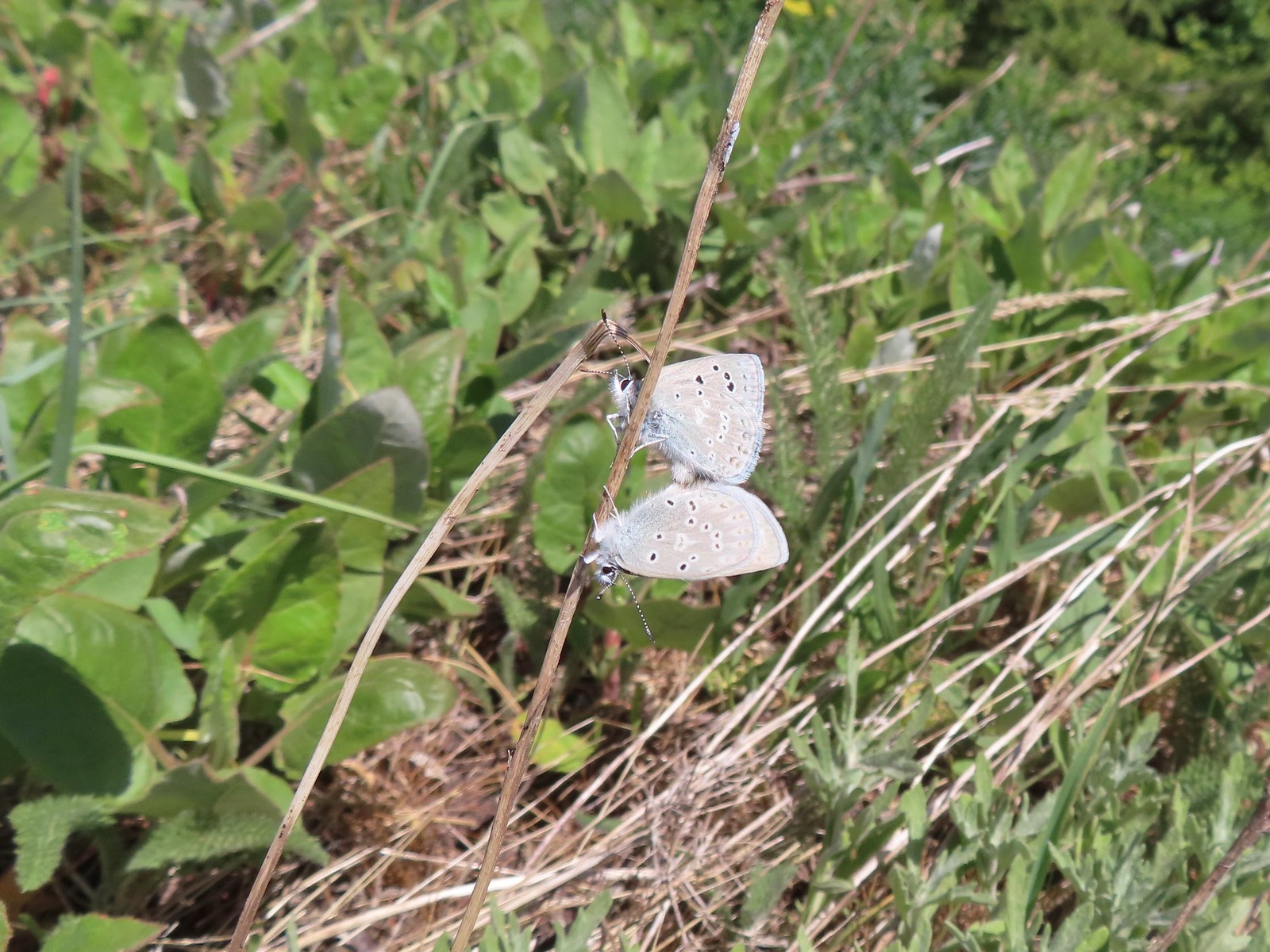 Boisduval blues
Boisduval blues Duskywing
Duskywing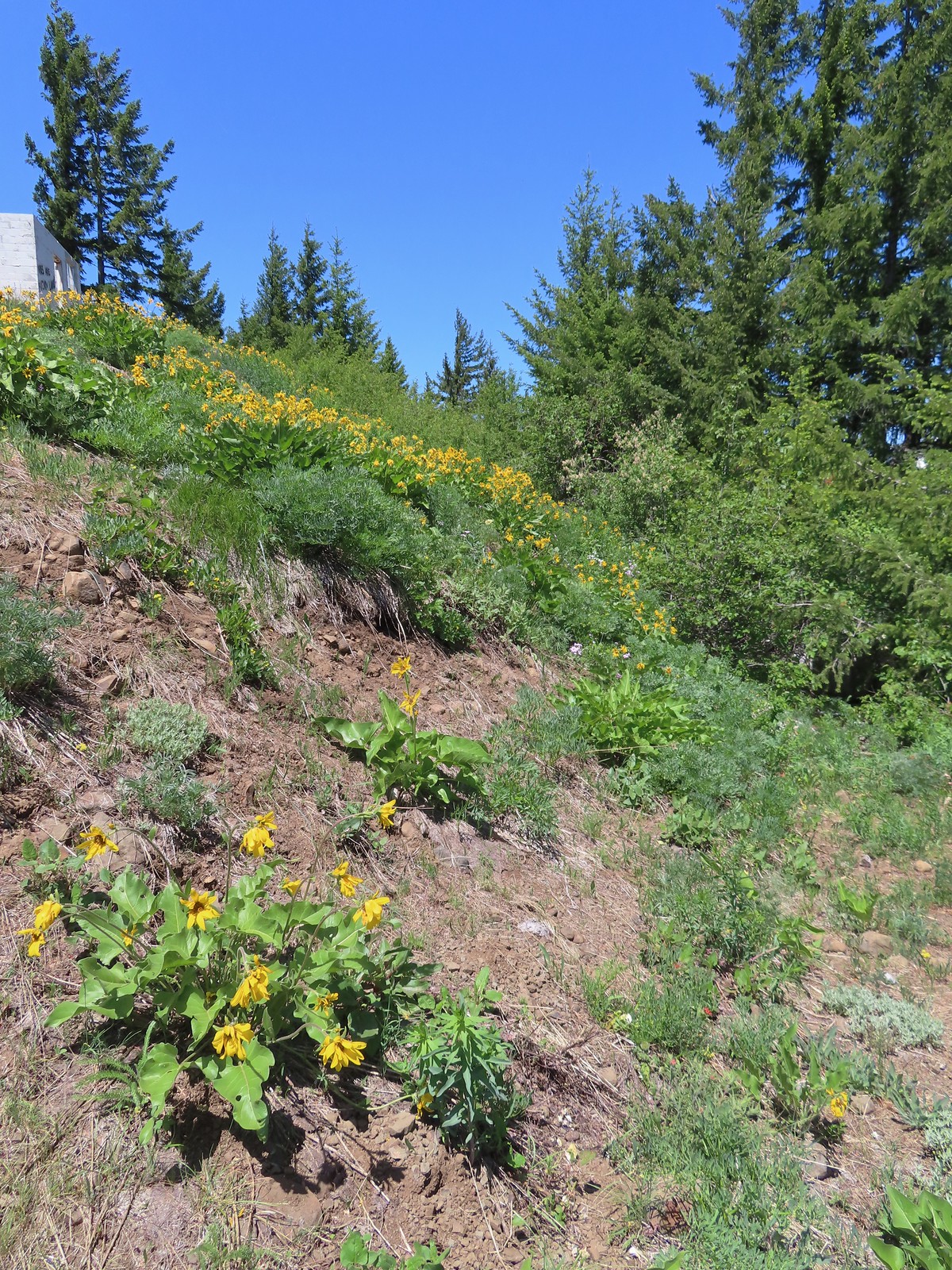 Balsamroot
Balsamroot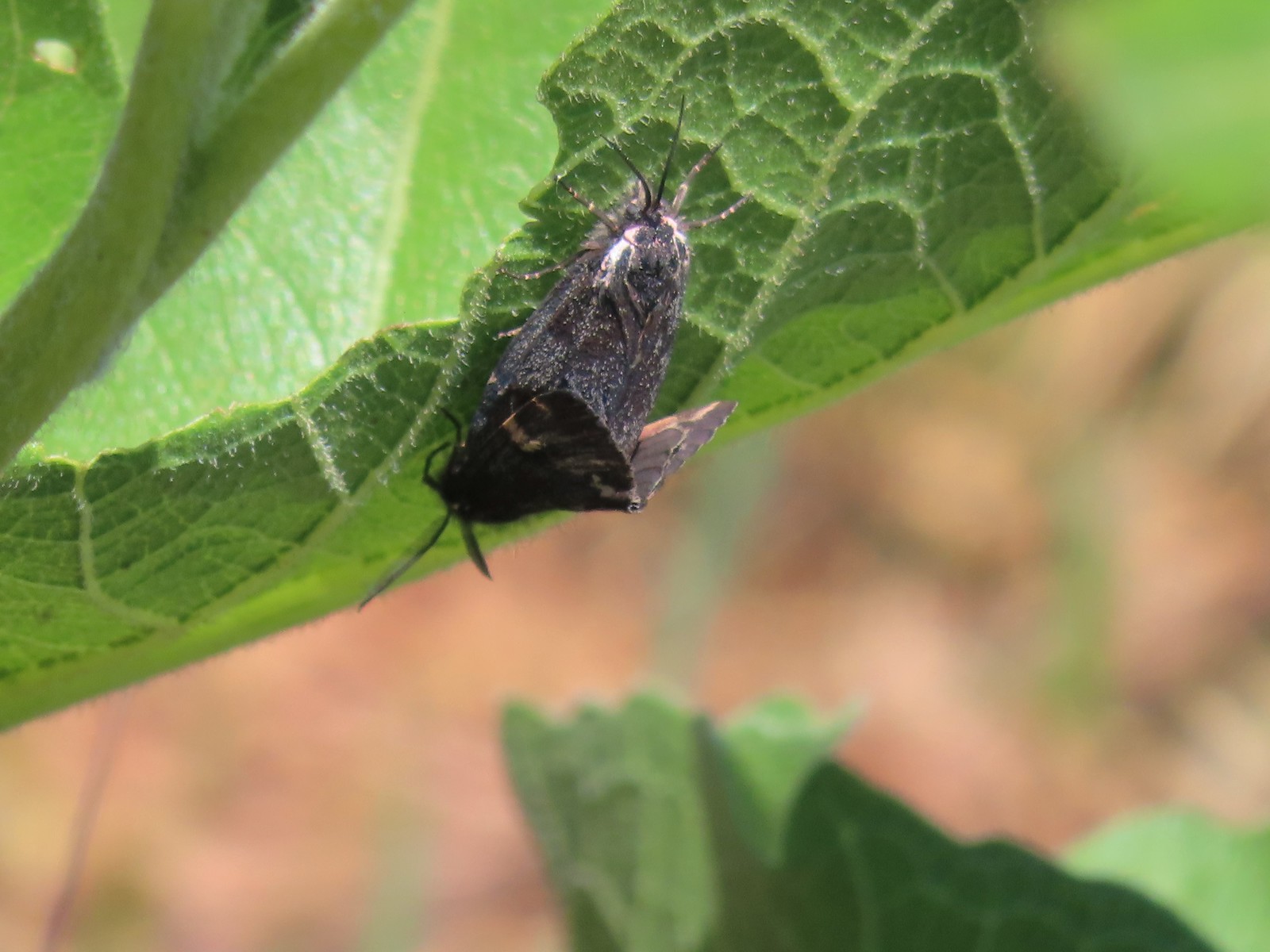 Moths
Moths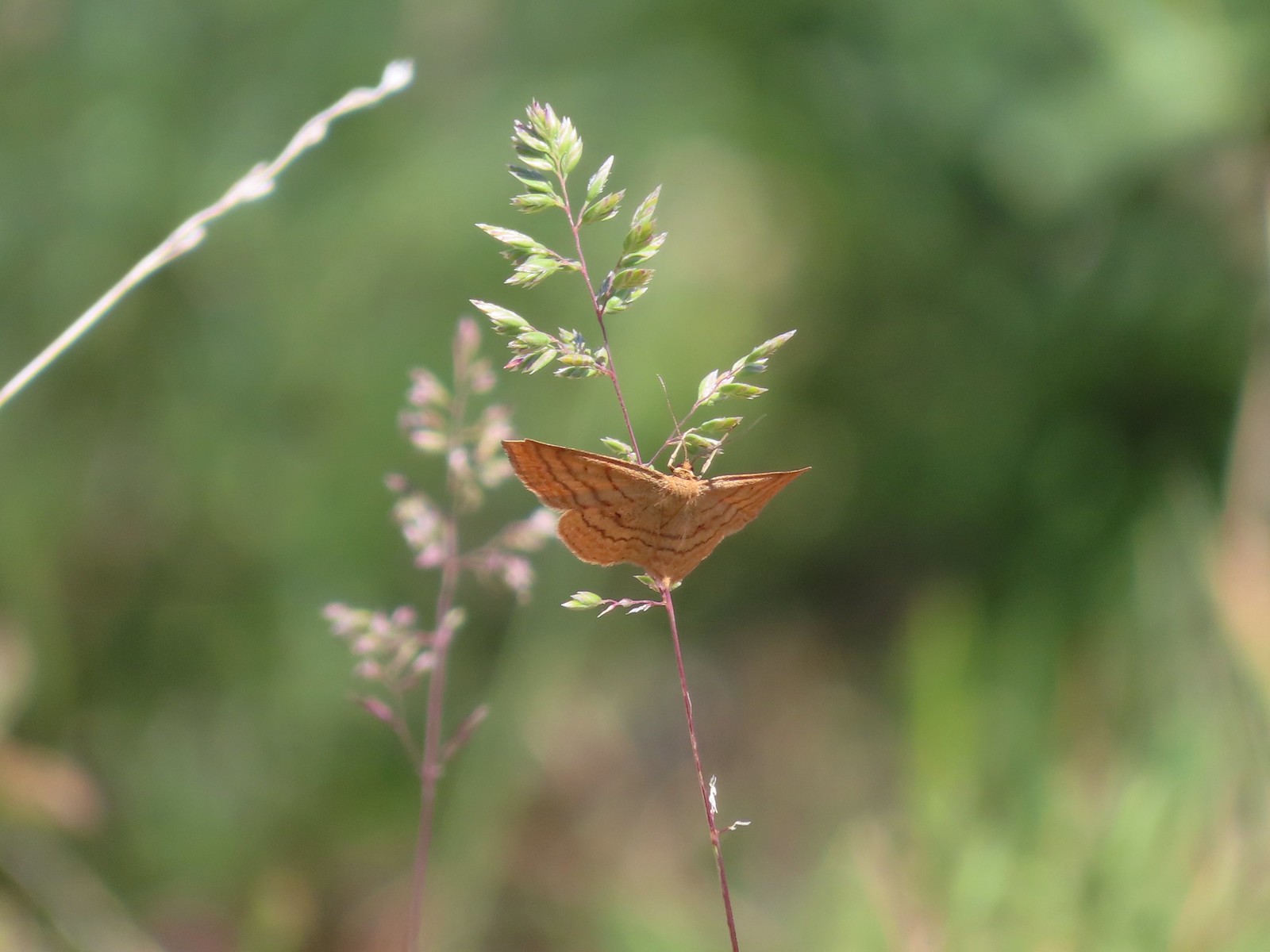 Moth
Moth Lupine
Lupine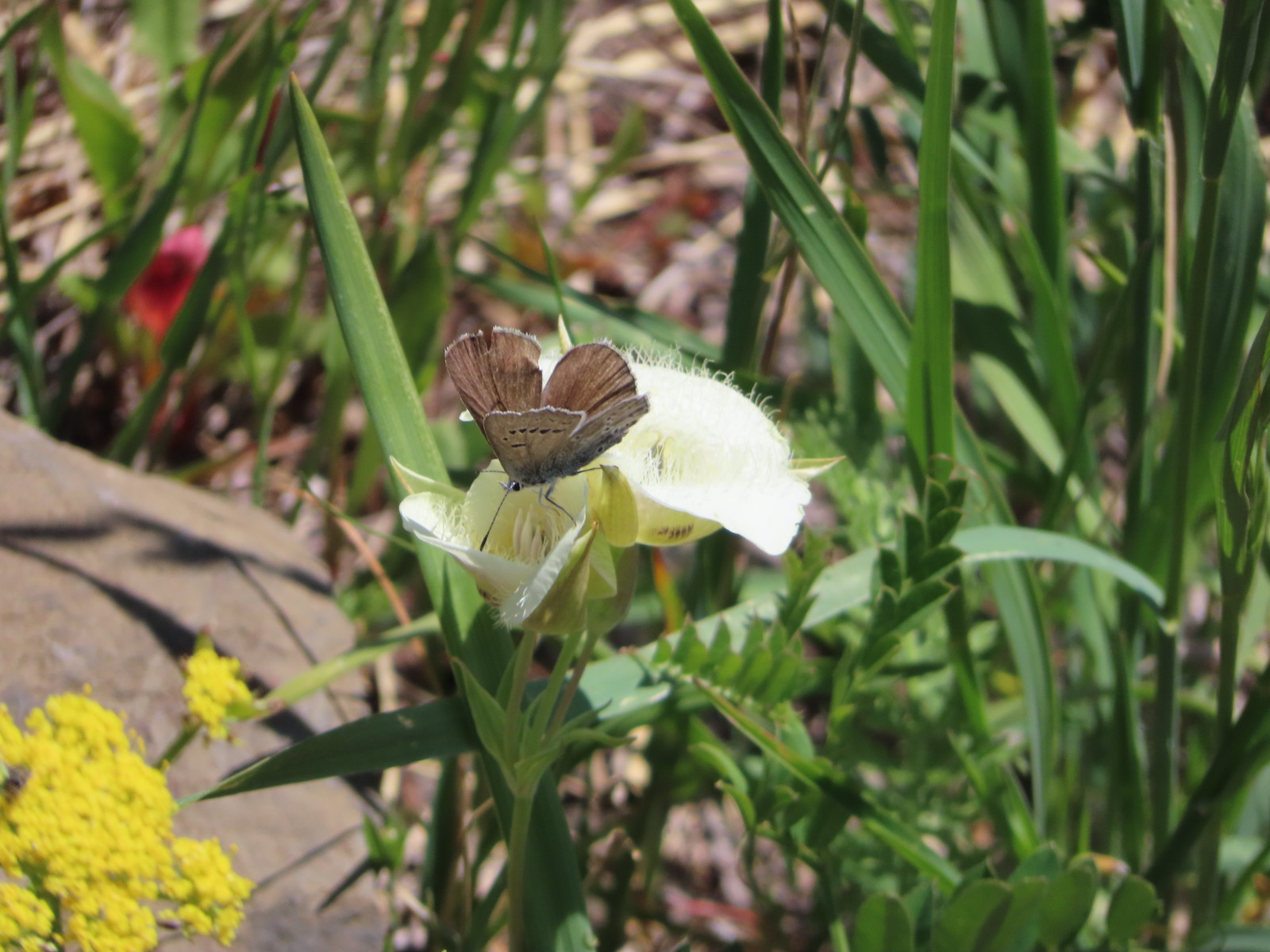 Butterfly on cat’s ear lily.
Butterfly on cat’s ear lily. Woodland stars
Woodland stars Paintbrush
Paintbrush
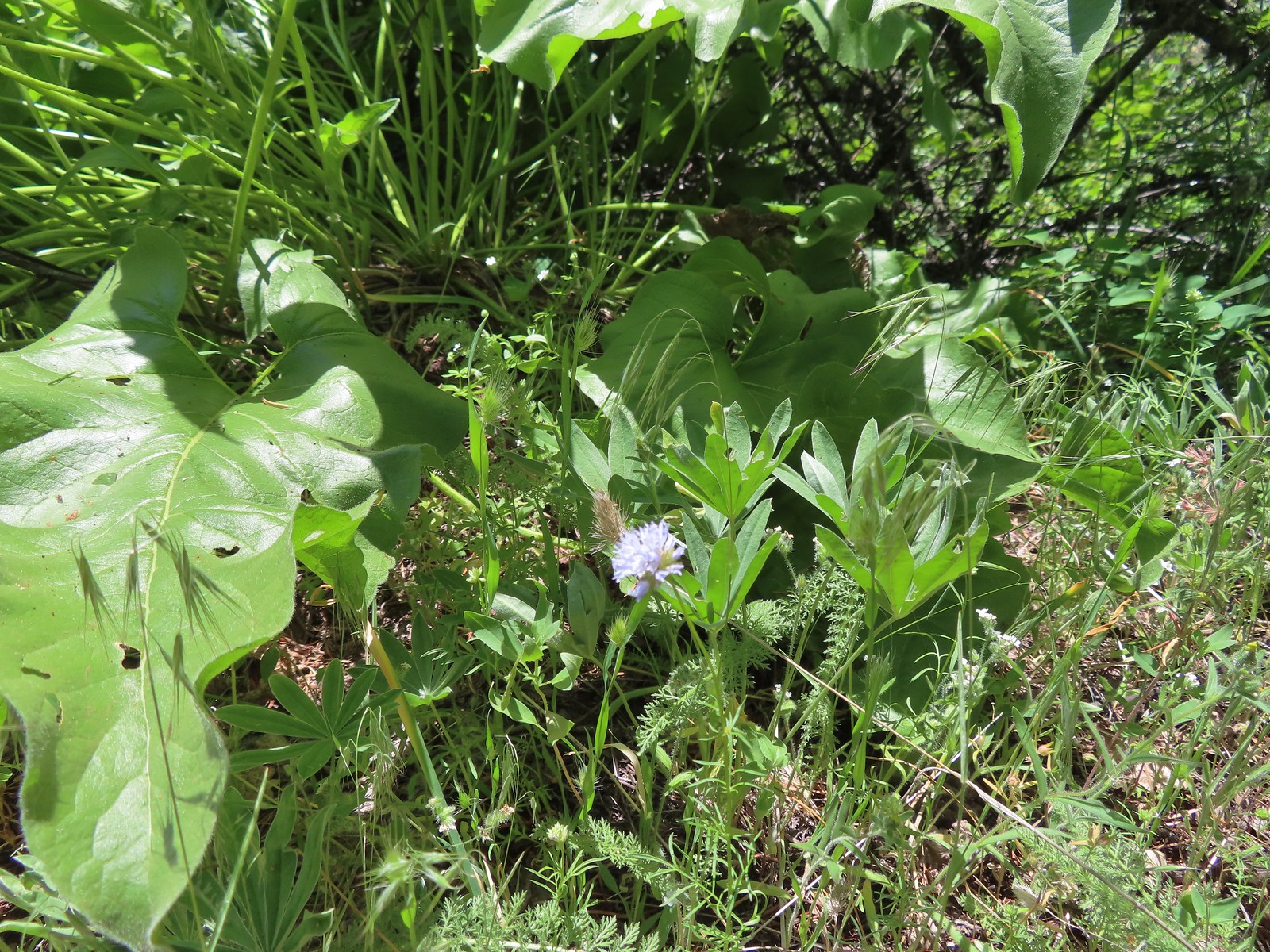 Blue-head gilia
Blue-head gilia Ookow
Ookow Winecup clarkia
Winecup clarkia Mountain lady slipper
Mountain lady slipper

 The Mountain View Trail is named so because of the view of Mt. Hood, which on this morning was hiding behind the clouds on the left side of the photo.
The Mountain View Trail is named so because of the view of Mt. Hood, which on this morning was hiding behind the clouds on the left side of the photo.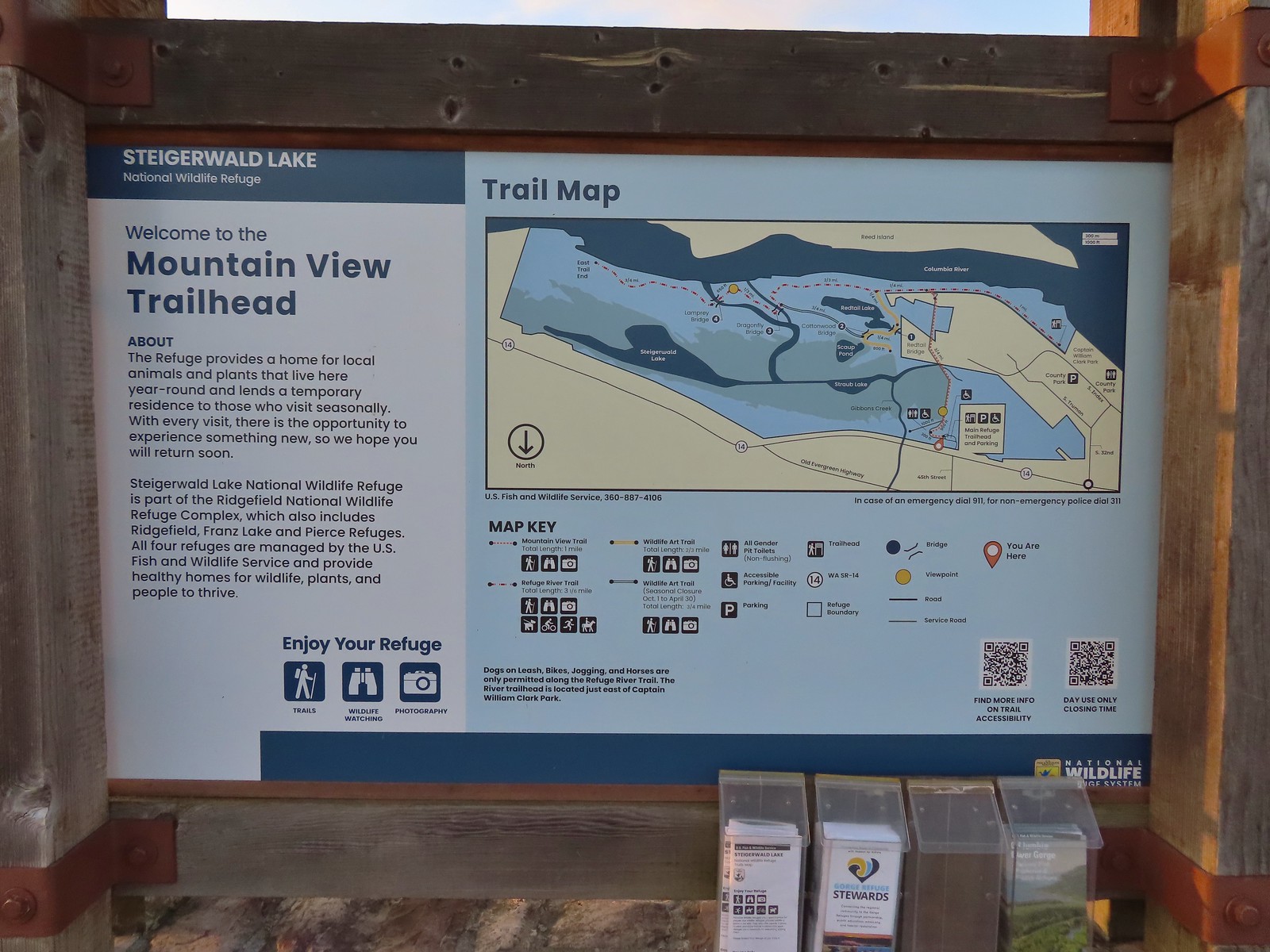 Map and information at the trailhead.
Map and information at the trailhead.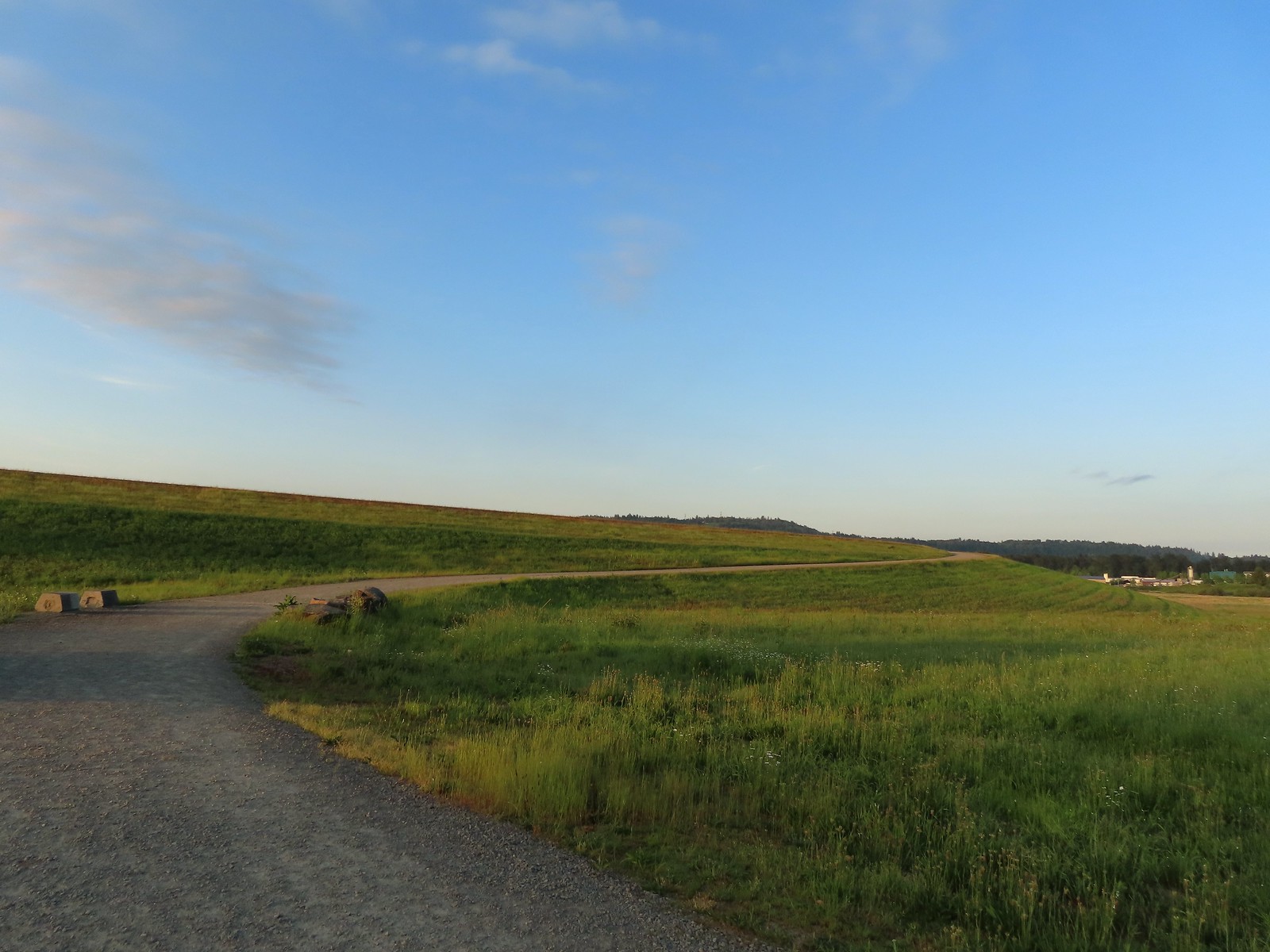
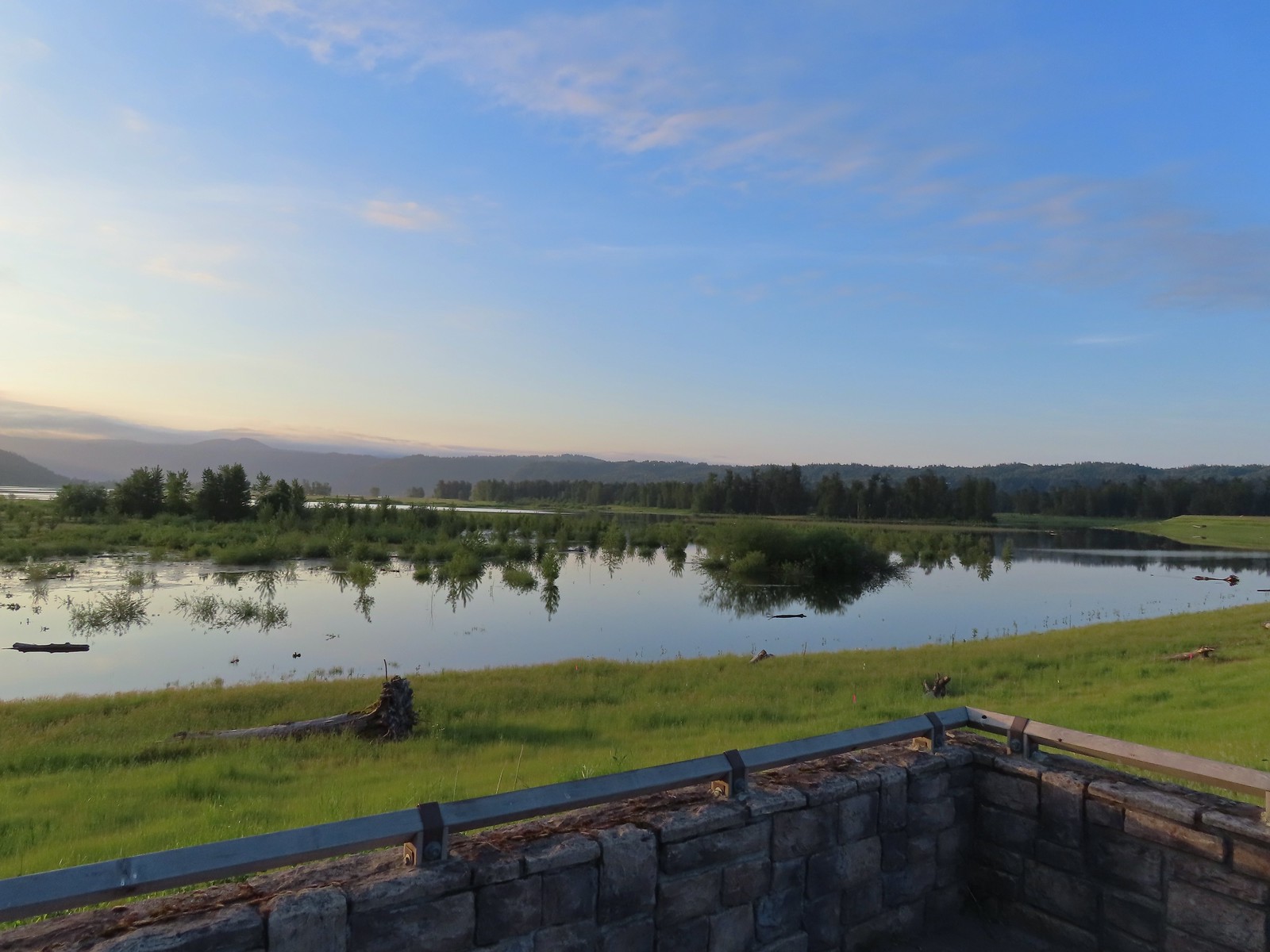 View to the East.
View to the East. Looking West toward Washougal.
Looking West toward Washougal.
 Mallards
Mallards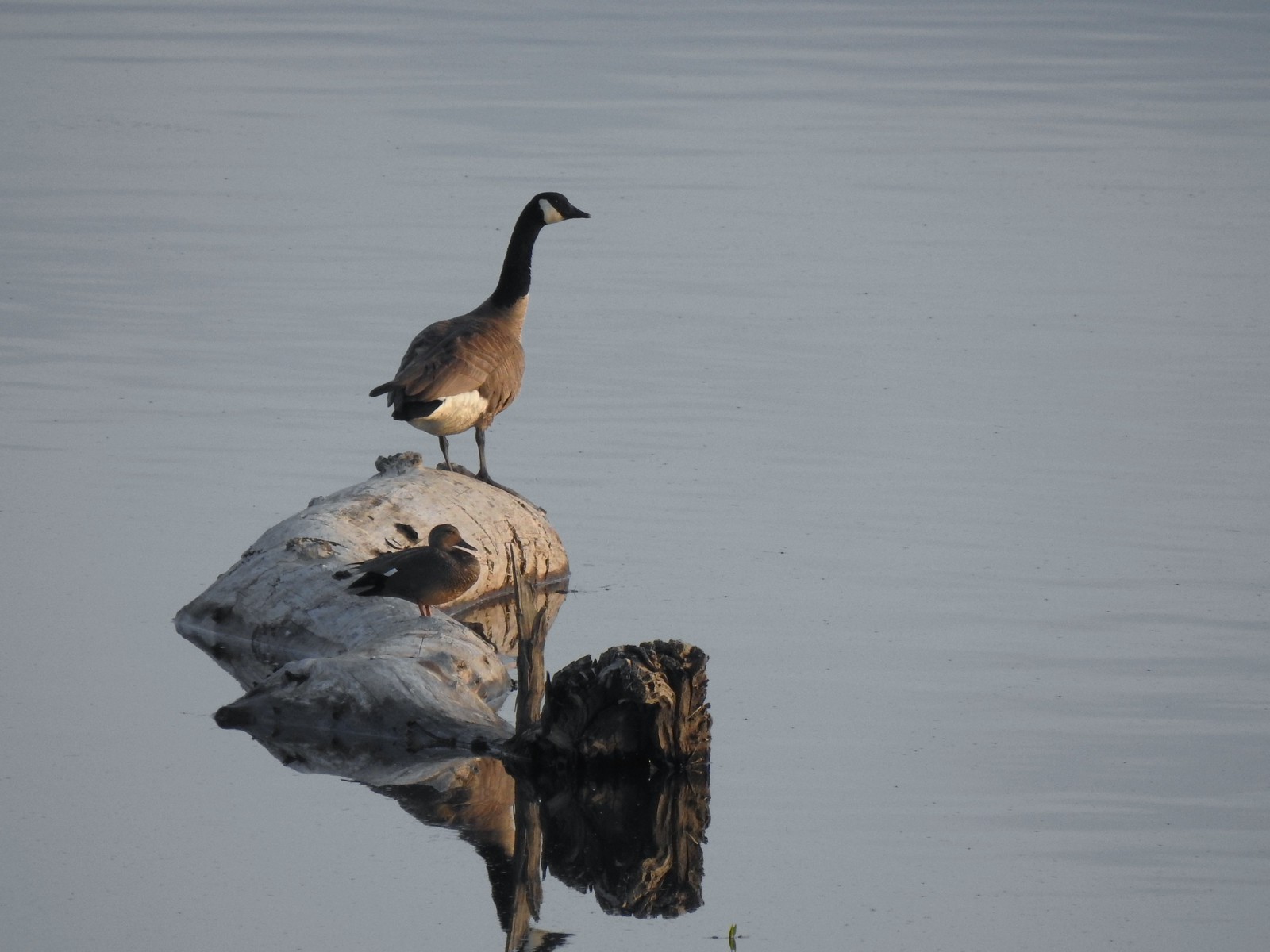 A duck and a goose sharing a log.
A duck and a goose sharing a log. A mallard and an egret in a channel to the West.
A mallard and an egret in a channel to the West.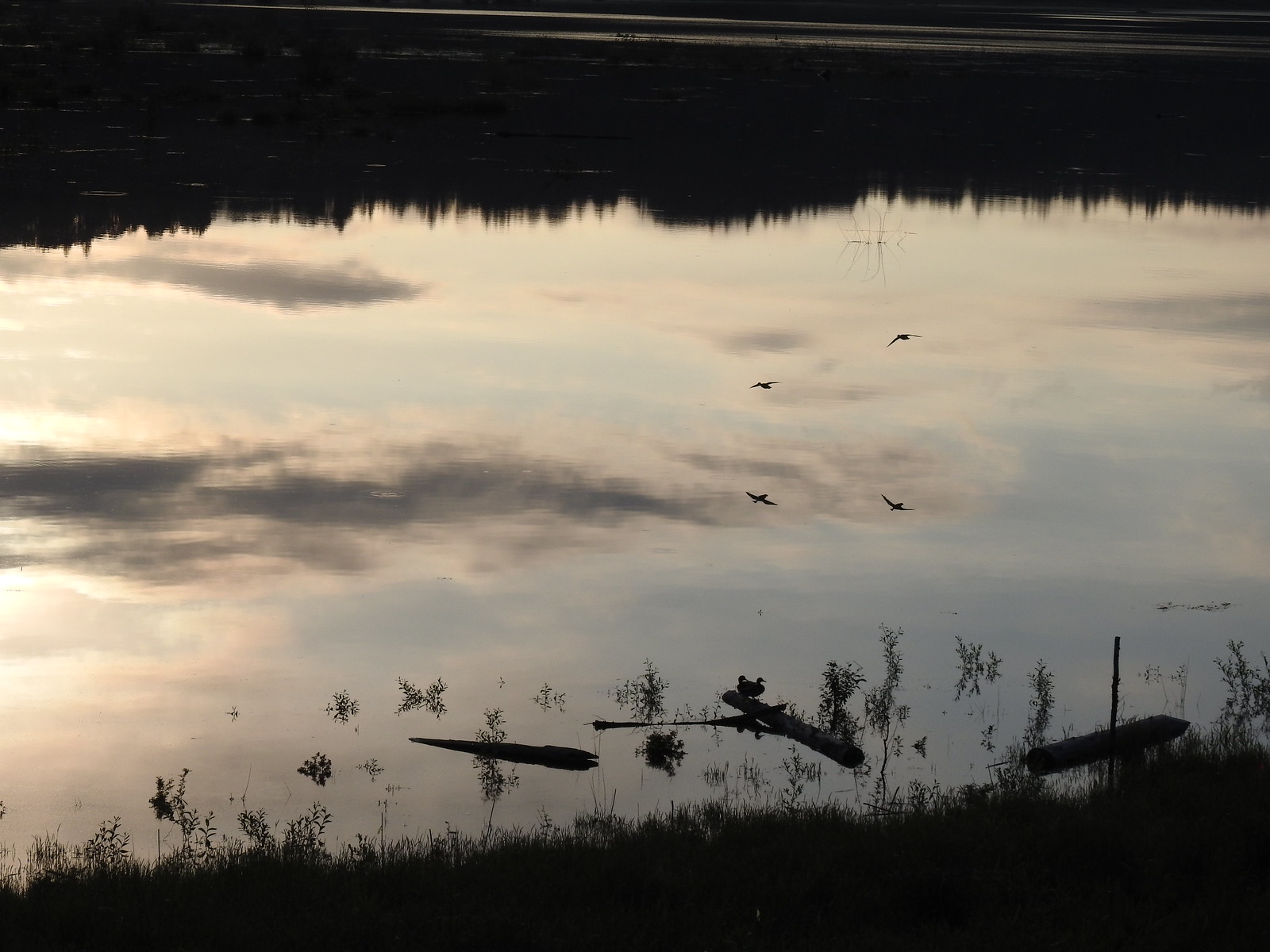 Ducks flying over the wetlands casting clear reflections.
Ducks flying over the wetlands casting clear reflections. Water dripping from a mallards bill.
Water dripping from a mallards bill.
 One of several rabbits we spotted to the West.
One of several rabbits we spotted to the West.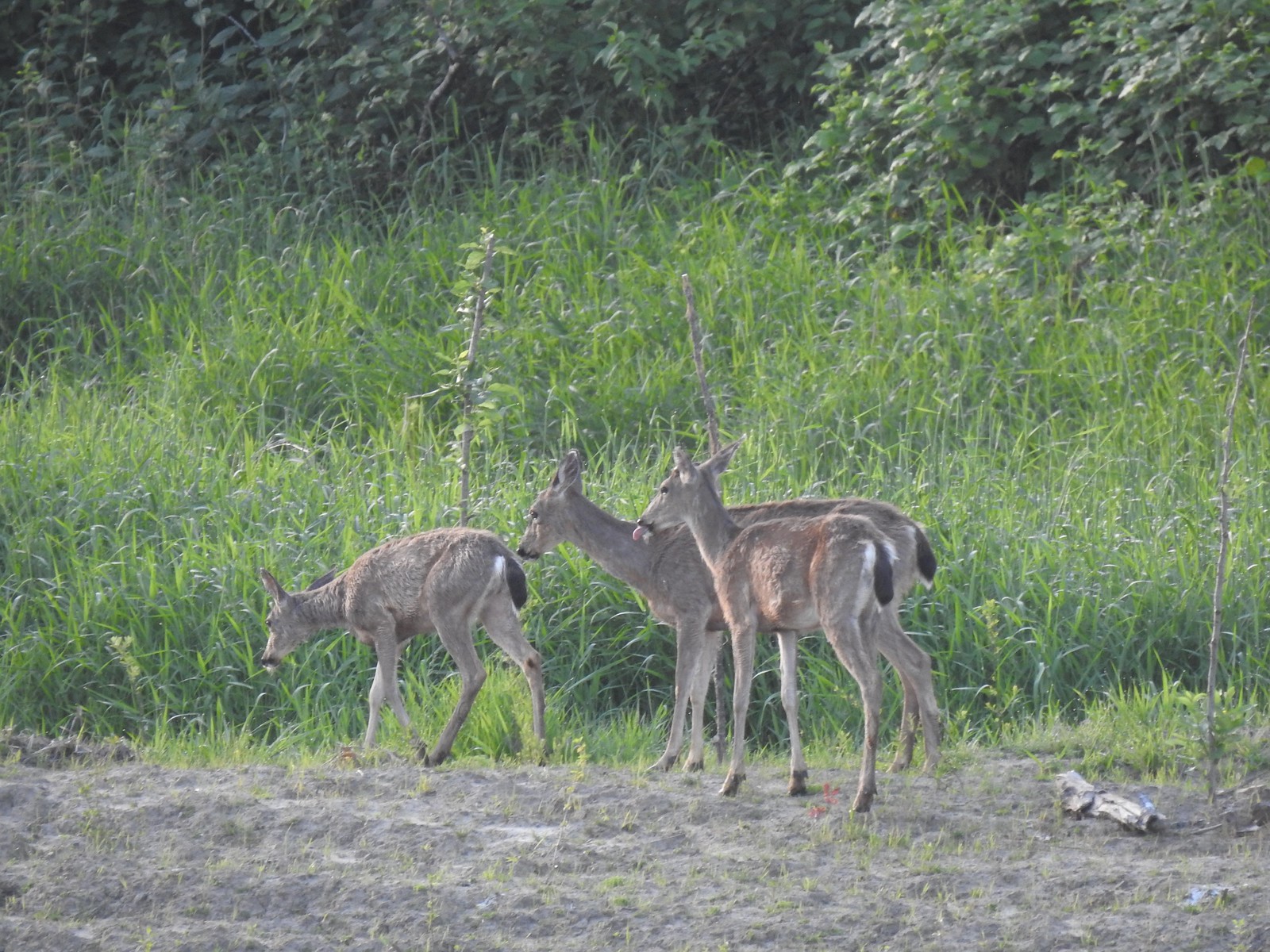 Deer across the wetlands. (The young buck may have been sticking his tongue out at us.)
Deer across the wetlands. (The young buck may have been sticking his tongue out at us.) Families of geese.
Families of geese.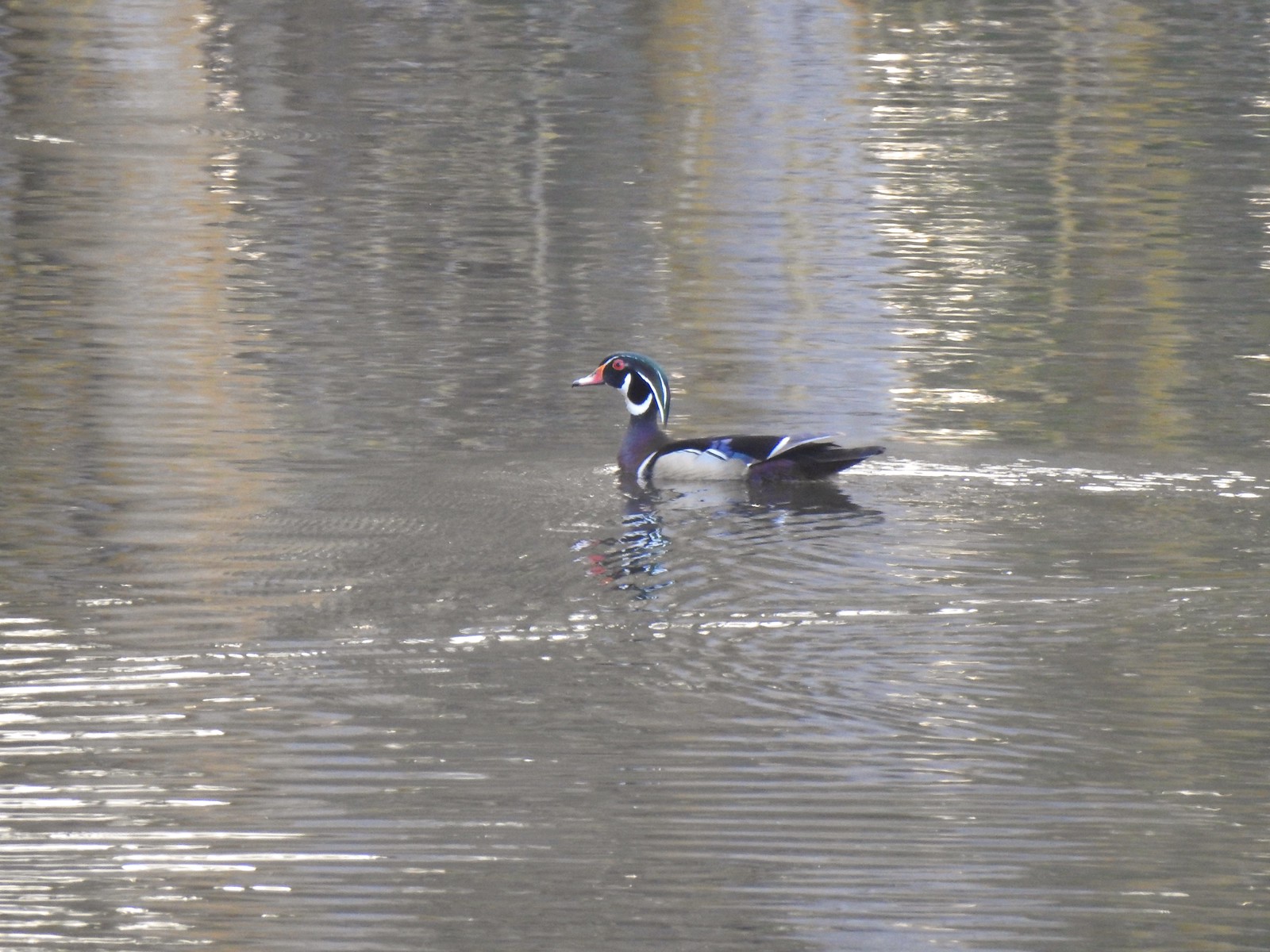 Wood duck mallard
Wood duck mallard
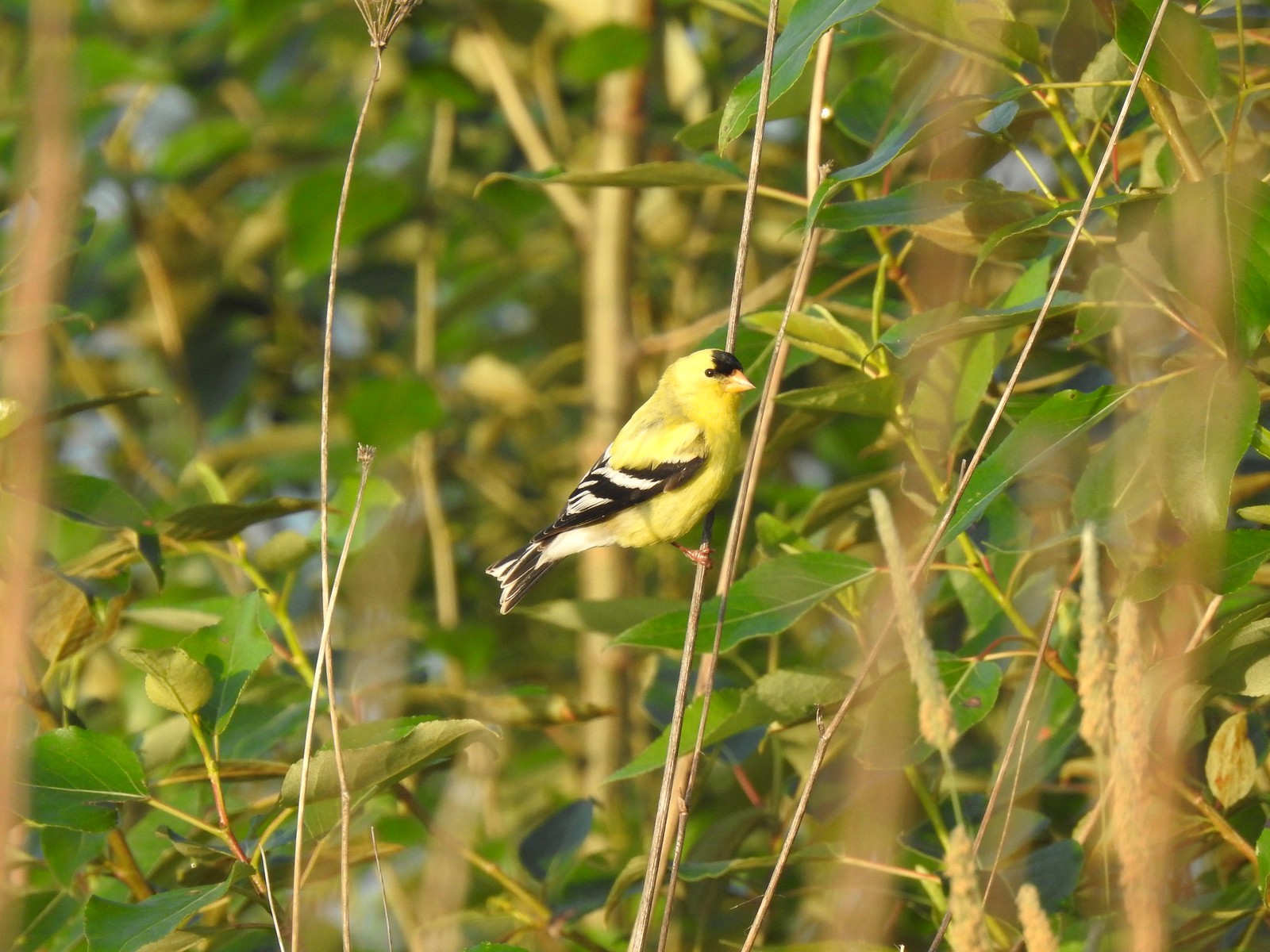
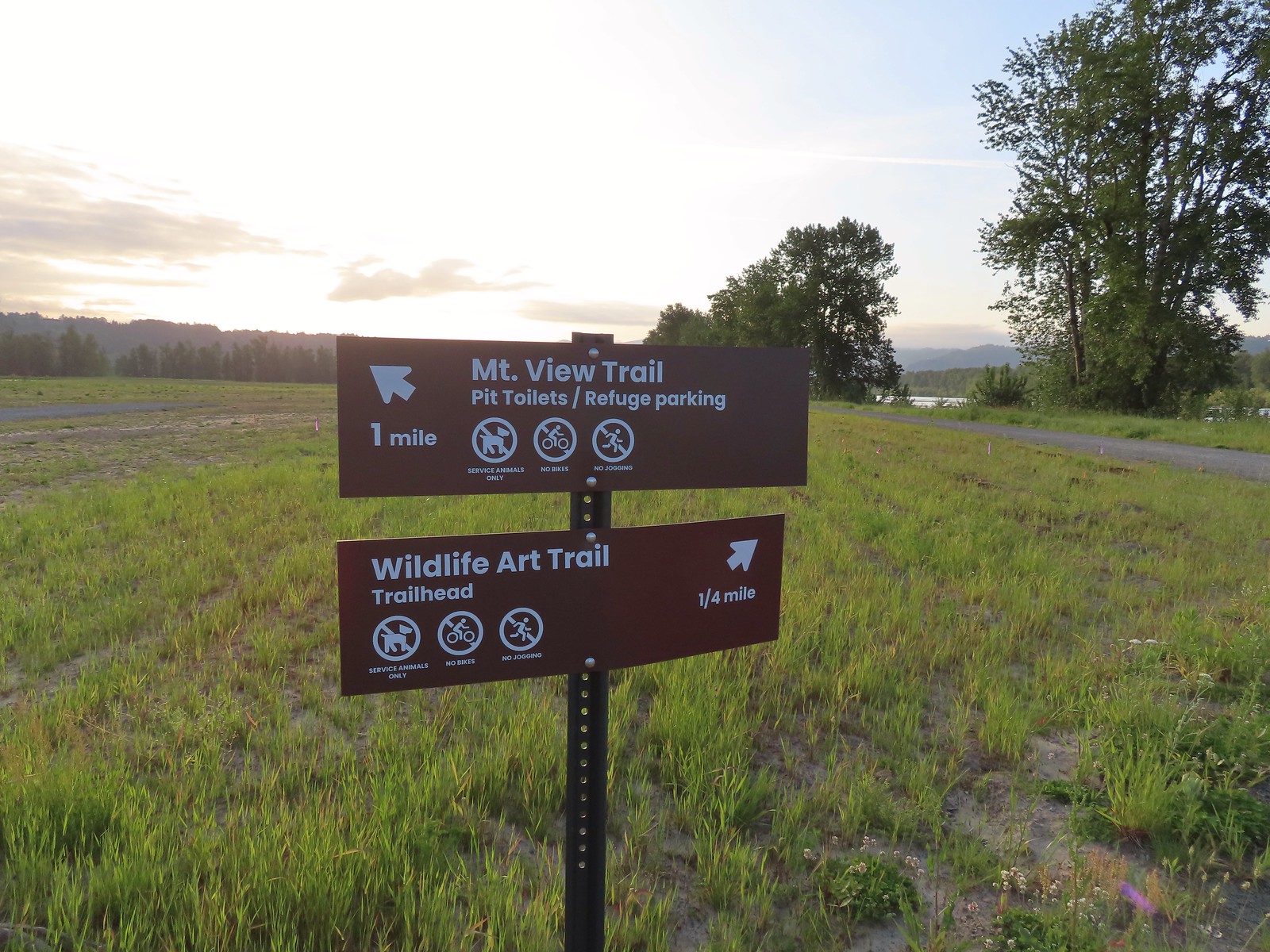 Trail sign at the junction with the Refuge River Trail.
Trail sign at the junction with the Refuge River Trail. Sparrow
Sparrow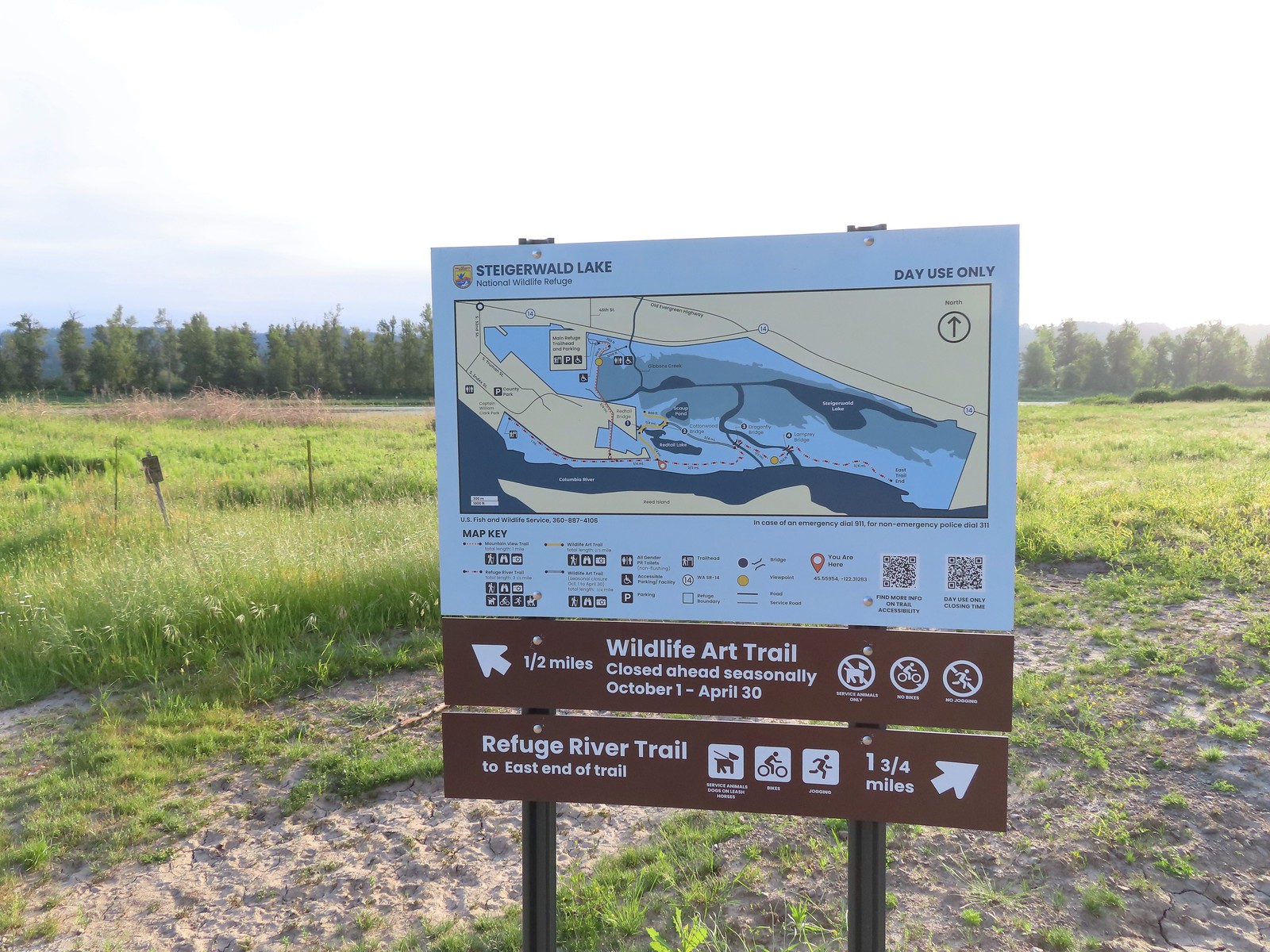
 Coming in for a landing.
Coming in for a landing.
 Red Tail Lake to the right of the Wildlife Art Trail.
Red Tail Lake to the right of the Wildlife Art Trail.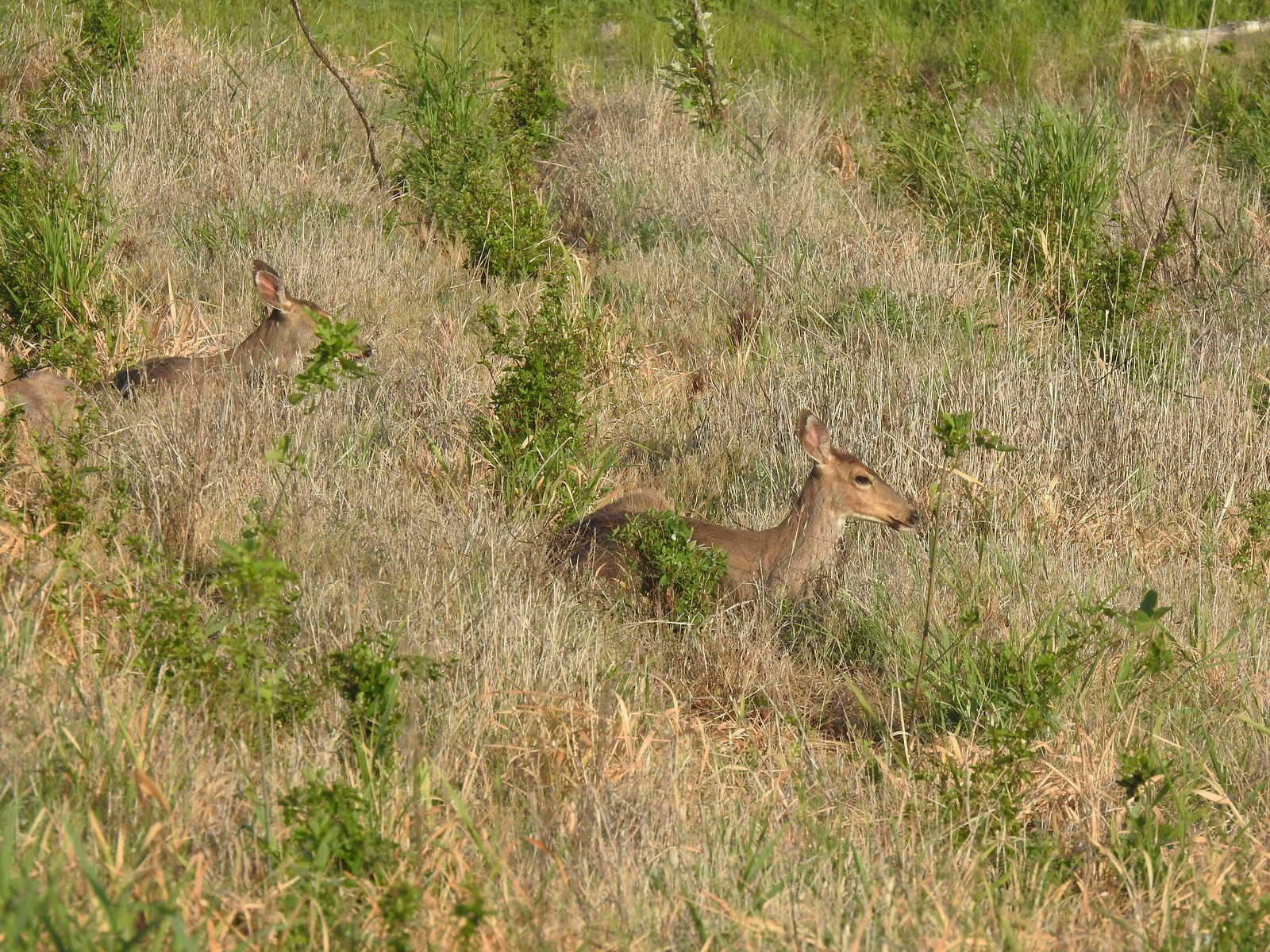 Pretty sure these are the same three we saw from the Mountain View Trail.
Pretty sure these are the same three we saw from the Mountain View Trail. This deer laying along the shore of Red Tail Lake was new though.
This deer laying along the shore of Red Tail Lake was new though.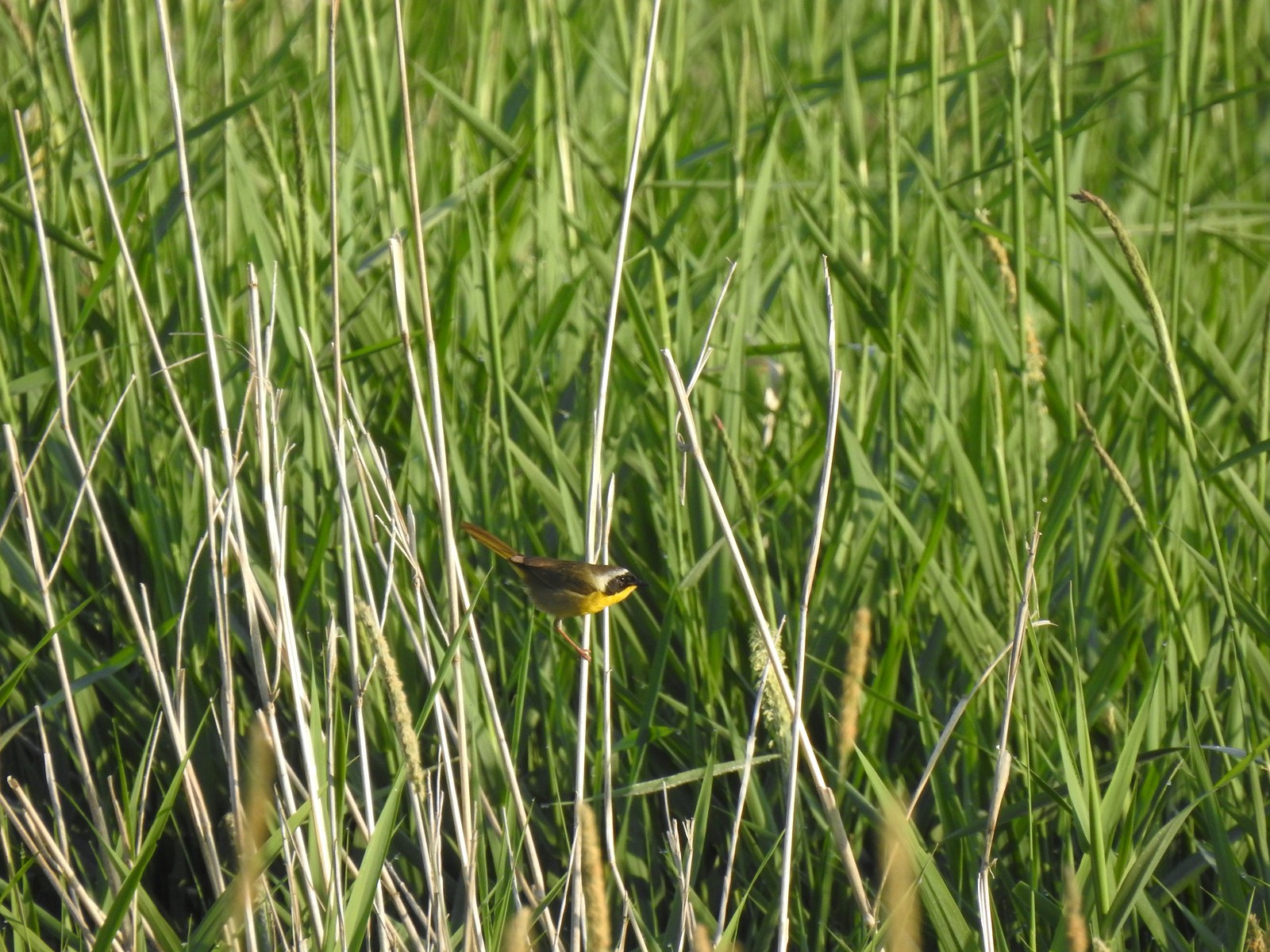 Common yellow throat
Common yellow throat One of many great blue herons that we watched fly overhead throughout the day.
One of many great blue herons that we watched fly overhead throughout the day. The Wildlife Art Trail passing around Redtail Lake.
The Wildlife Art Trail passing around Redtail Lake. Gibbons Creek is in that grass somewhere with at least one deer.
Gibbons Creek is in that grass somewhere with at least one deer.
 Killdeer along Redtail Lake.
Killdeer along Redtail Lake. Turns out the deer laying on the lake shore wasn’t alone.
Turns out the deer laying on the lake shore wasn’t alone. Roses
Roses Purple martins
Purple martins Just beyond the Cottonwood Bridge the trail forks. To the right is the seasonal section of the loop open May 1st through September 30th. The left-hand fork dead-ends in a tenth of a mile overlooking the wetlands.
Just beyond the Cottonwood Bridge the trail forks. To the right is the seasonal section of the loop open May 1st through September 30th. The left-hand fork dead-ends in a tenth of a mile overlooking the wetlands.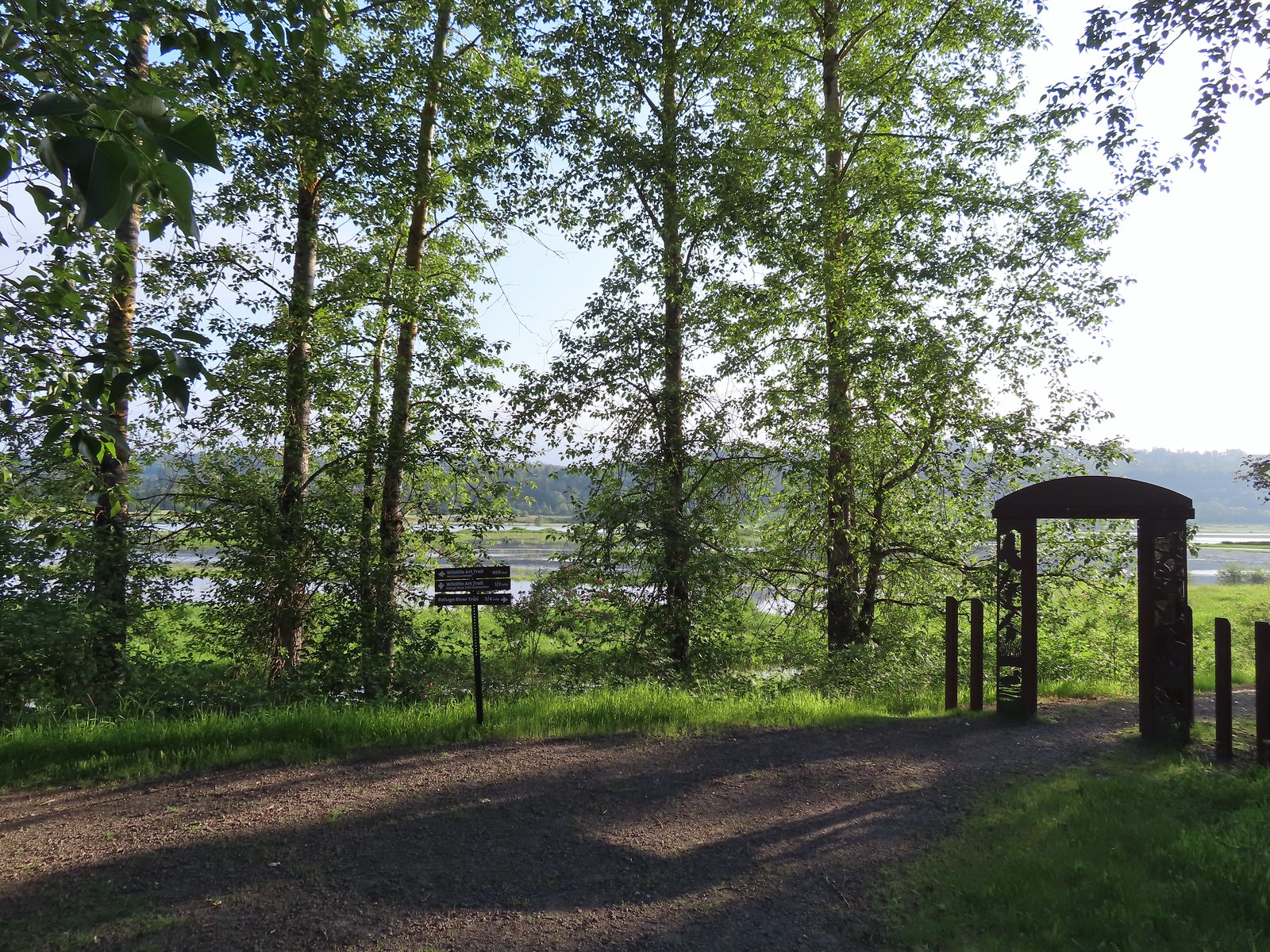 We headed left to the overlook before continuing on the loop.
We headed left to the overlook before continuing on the loop.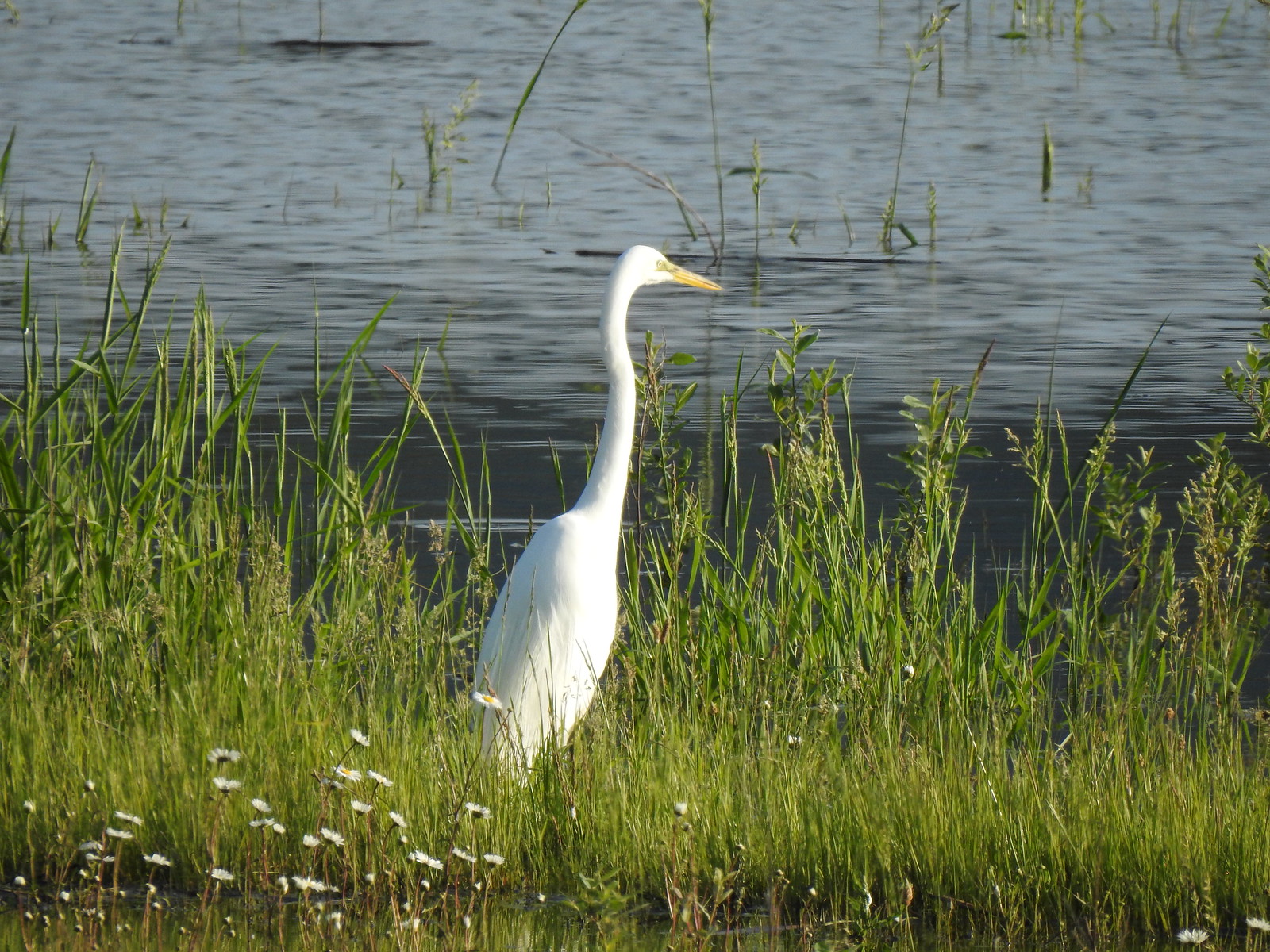 Egret at Scaup Pond.
Egret at Scaup Pond.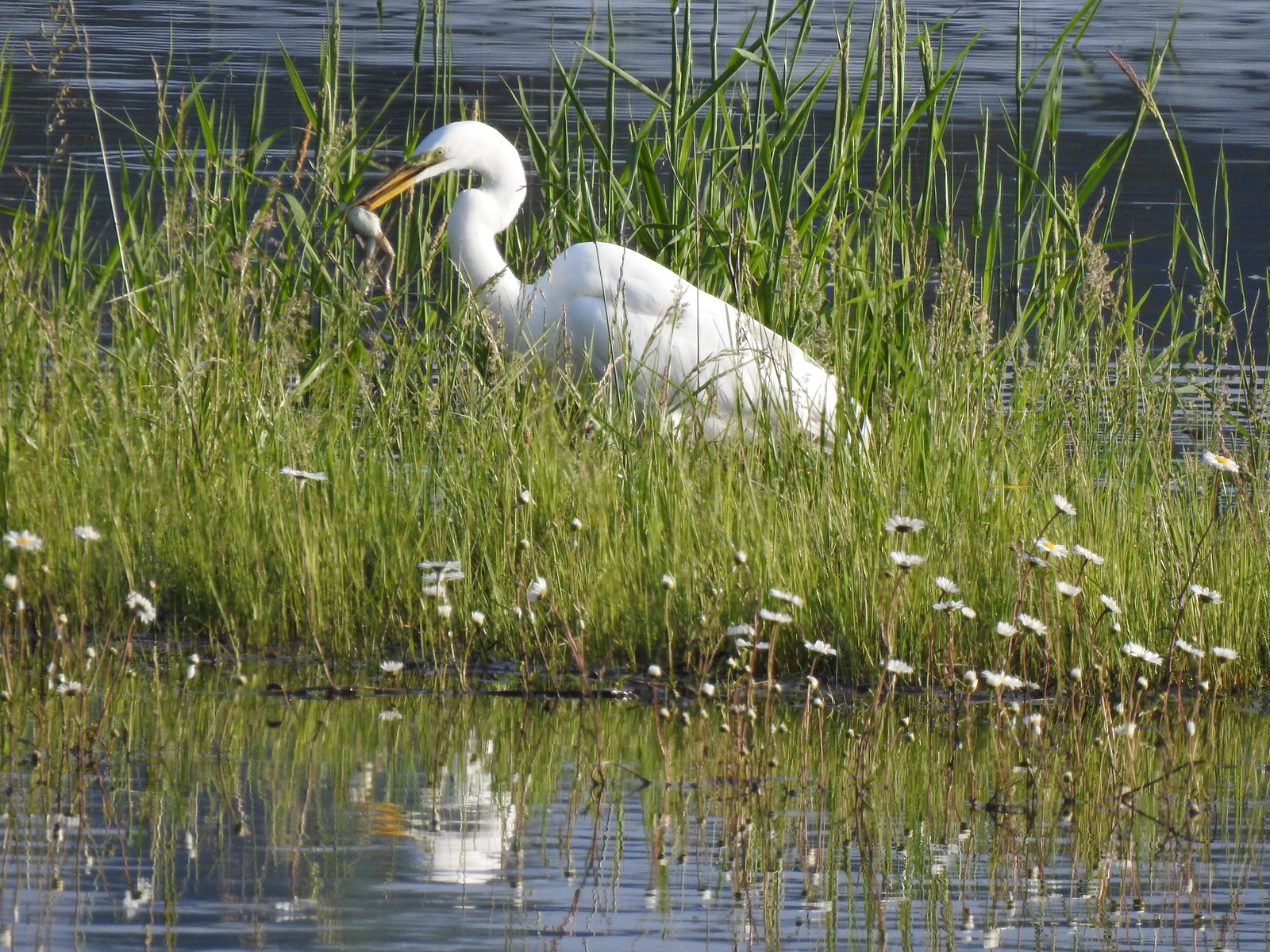 Egret with a frog meal.
Egret with a frog meal.
 Mushrooms
Mushrooms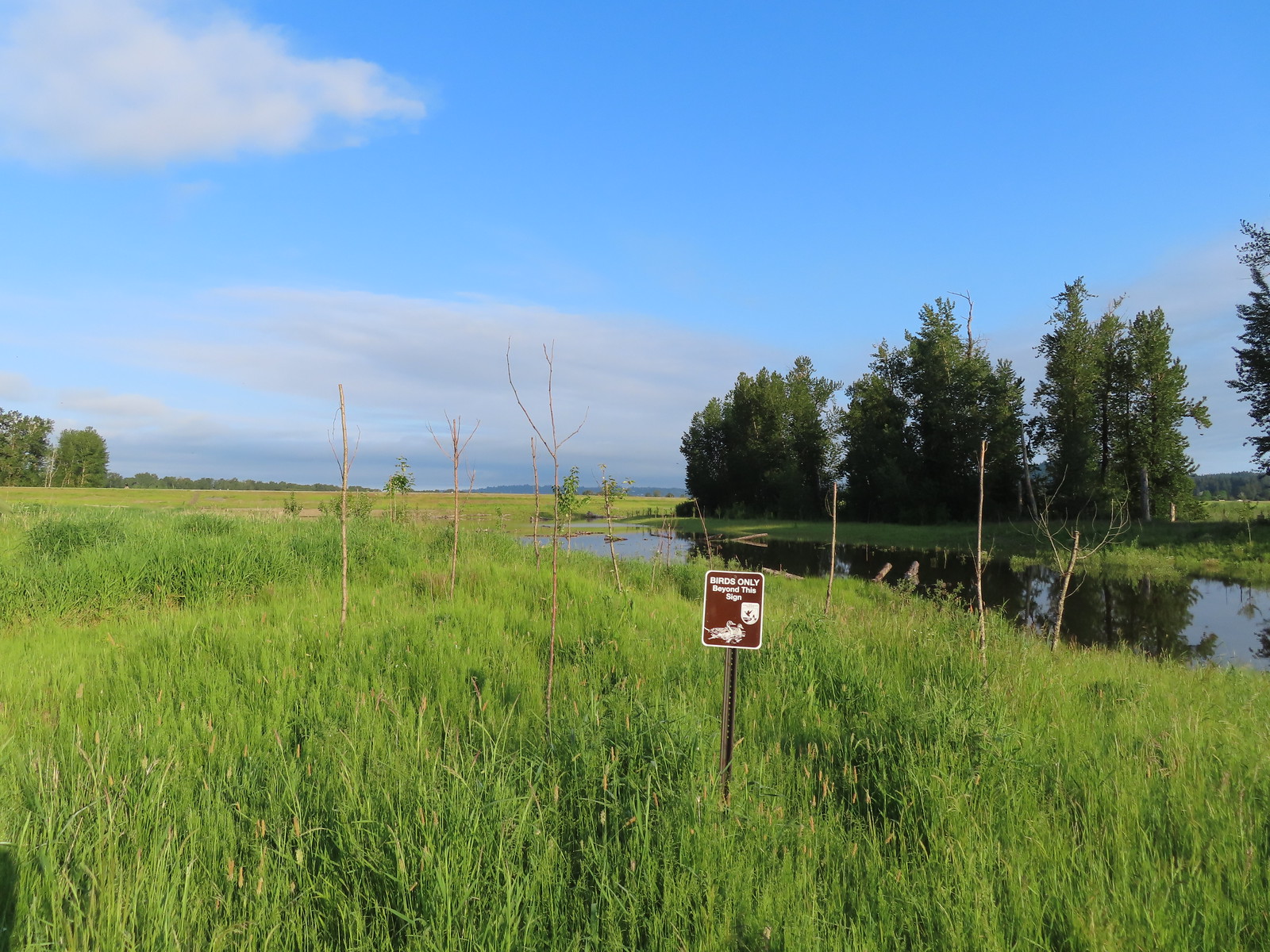 We got a kick out of the “Birds Only Beyond This Sign”.
We got a kick out of the “Birds Only Beyond This Sign”. Kingfisher
Kingfisher We’ve only seen two bitterns on our hikes and both times we only spotted them as they flew off from the grassy cover that they’d been hiding in so I was pretty disappointed when I realized I’d been duped, but kudos to the artist because it looked real at first glance to me.
We’ve only seen two bitterns on our hikes and both times we only spotted them as they flew off from the grassy cover that they’d been hiding in so I was pretty disappointed when I realized I’d been duped, but kudos to the artist because it looked real at first glance to me.

 You have something in your teeth.
You have something in your teeth. Spotted towhee
Spotted towhee At least two deer in the grass.
At least two deer in the grass. Another American goldfinch.
Another American goldfinch.


 Spotted sandpiper
Spotted sandpiper Oregon sunshine and yarrow
Oregon sunshine and yarrow The Columbia River ahead.
The Columbia River ahead.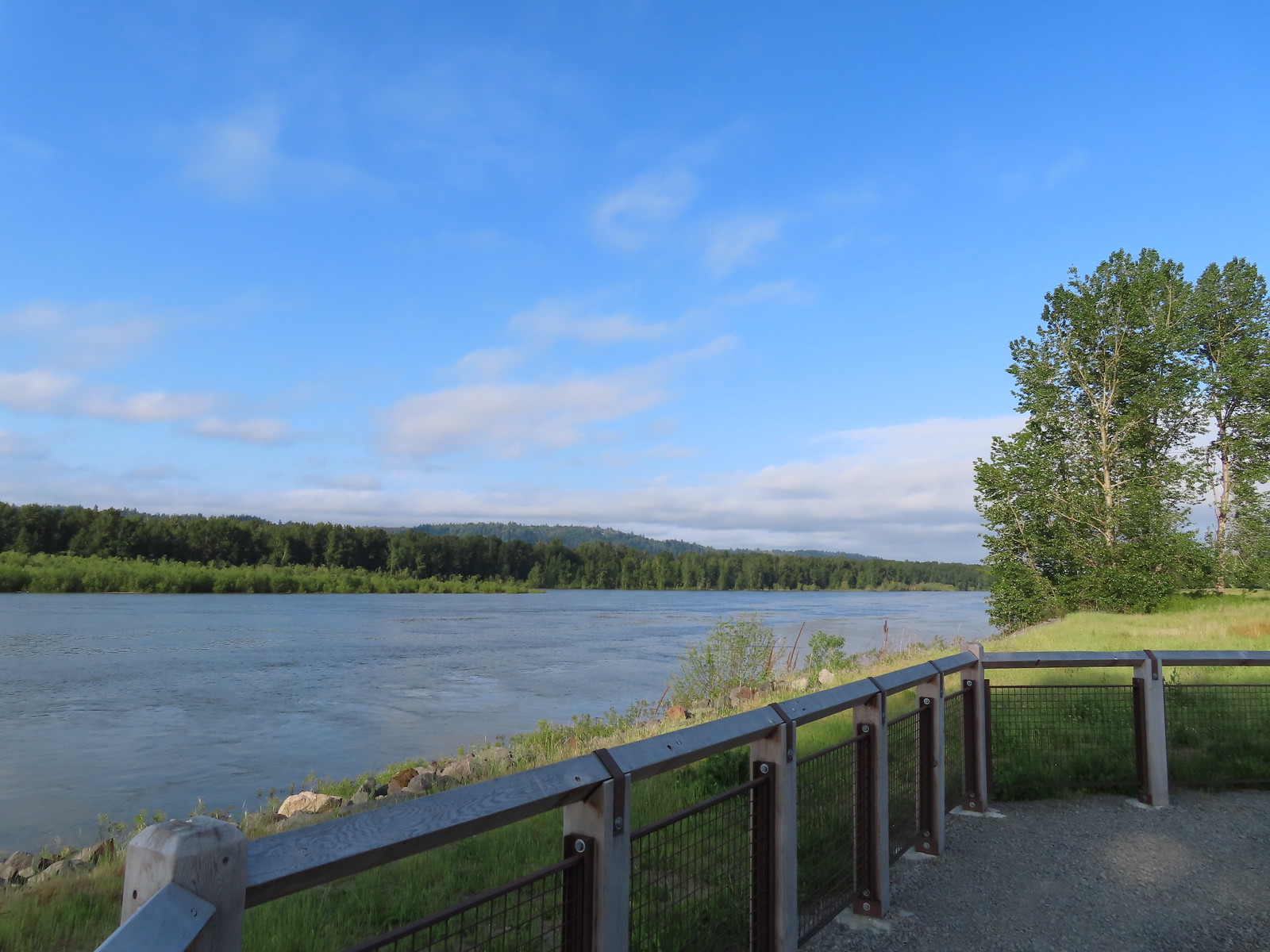 Viewpoint along the Columbia River.
Viewpoint along the Columbia River.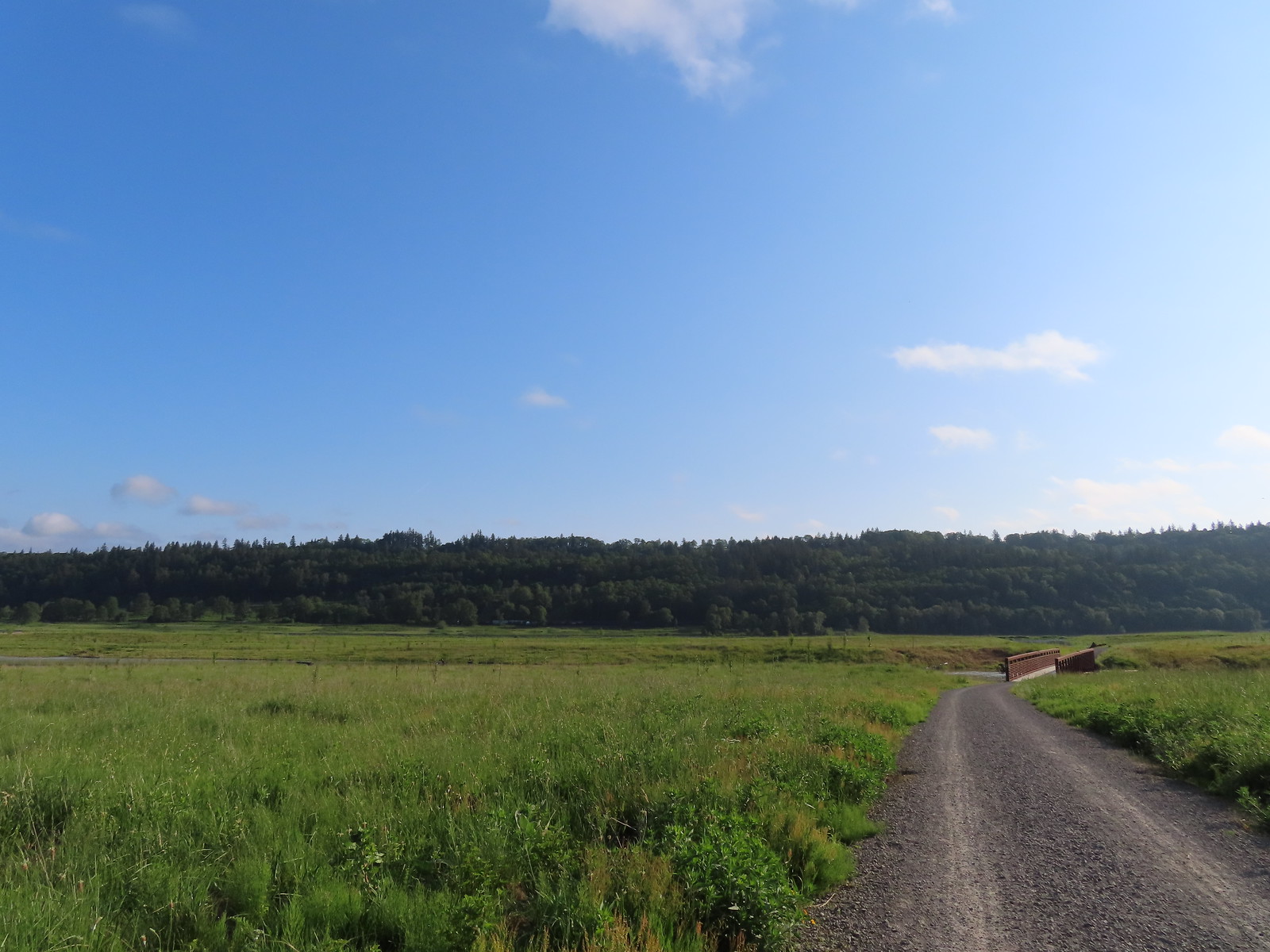 Approaching the Lampray Brdige.
Approaching the Lampray Brdige. Looking back from across the bridge there was a bald eagle in the dead snag along the river.
Looking back from across the bridge there was a bald eagle in the dead snag along the river.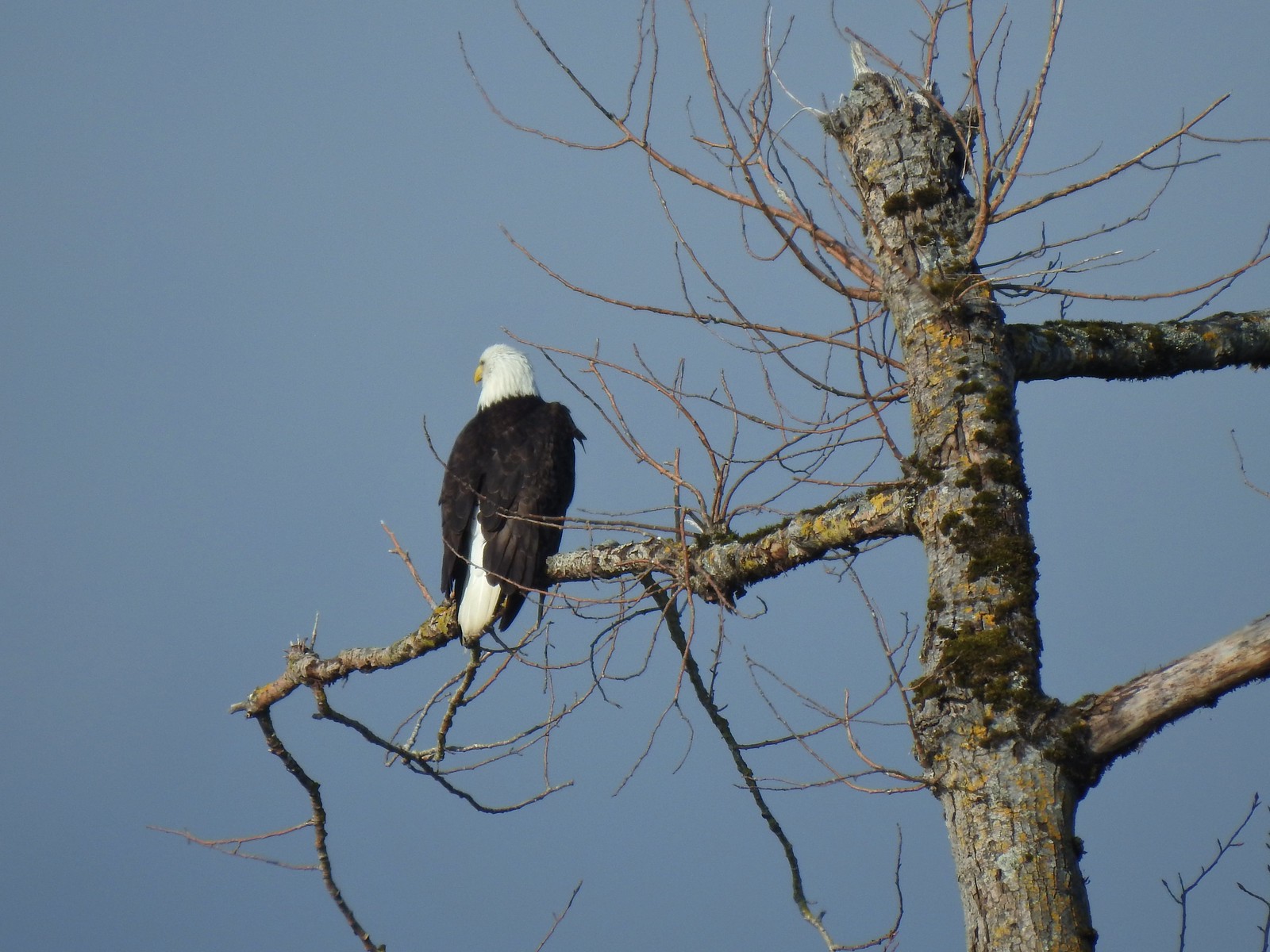
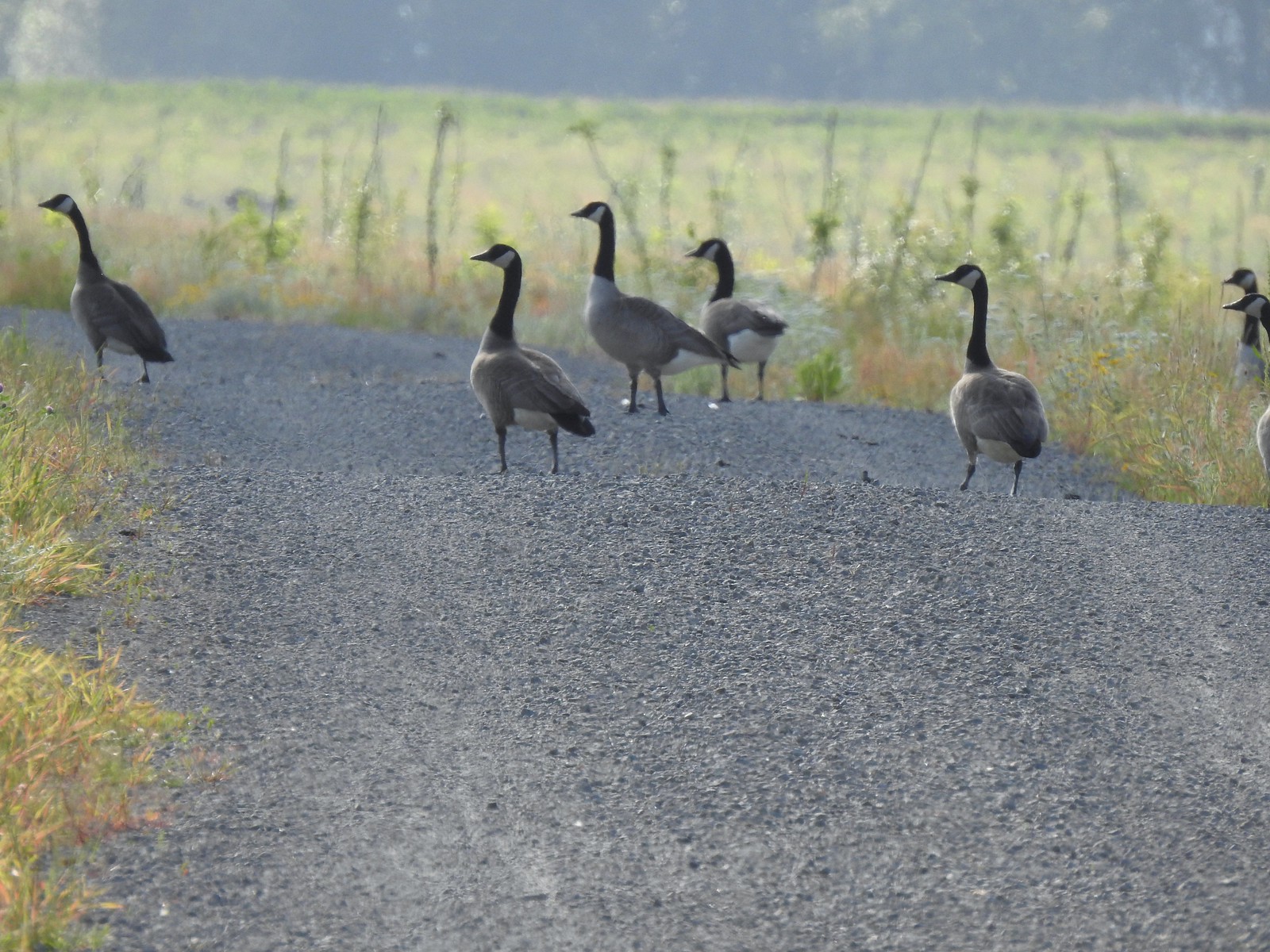 There were lots of geese along this section of trail.
There were lots of geese along this section of trail. Red clover in some Oregon sunshine
Red clover in some Oregon sunshine Another spotted sandpiper
Another spotted sandpiper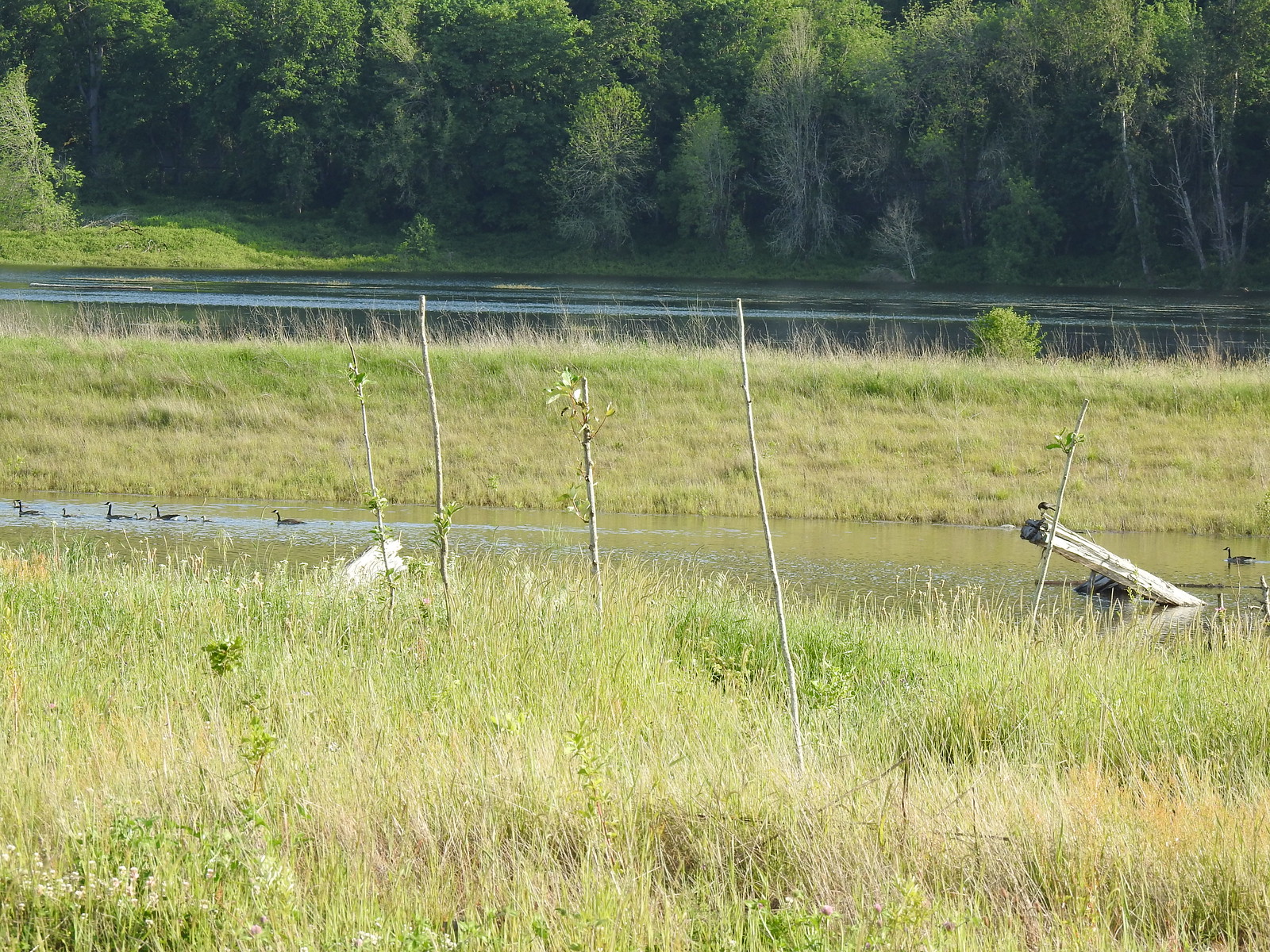 Steigerwald Lake in the distance with a family of geese and crow on a log in the near channel.
Steigerwald Lake in the distance with a family of geese and crow on a log in the near channel. End of the trail.
End of the trail. It was about 8:15am when we turned around and it was already feeling fairly warm, but there was relief on the way in the form of some clouds coming in from the Pacific.
It was about 8:15am when we turned around and it was already feeling fairly warm, but there was relief on the way in the form of some clouds coming in from the Pacific. Savannah sparrow
Savannah sparrow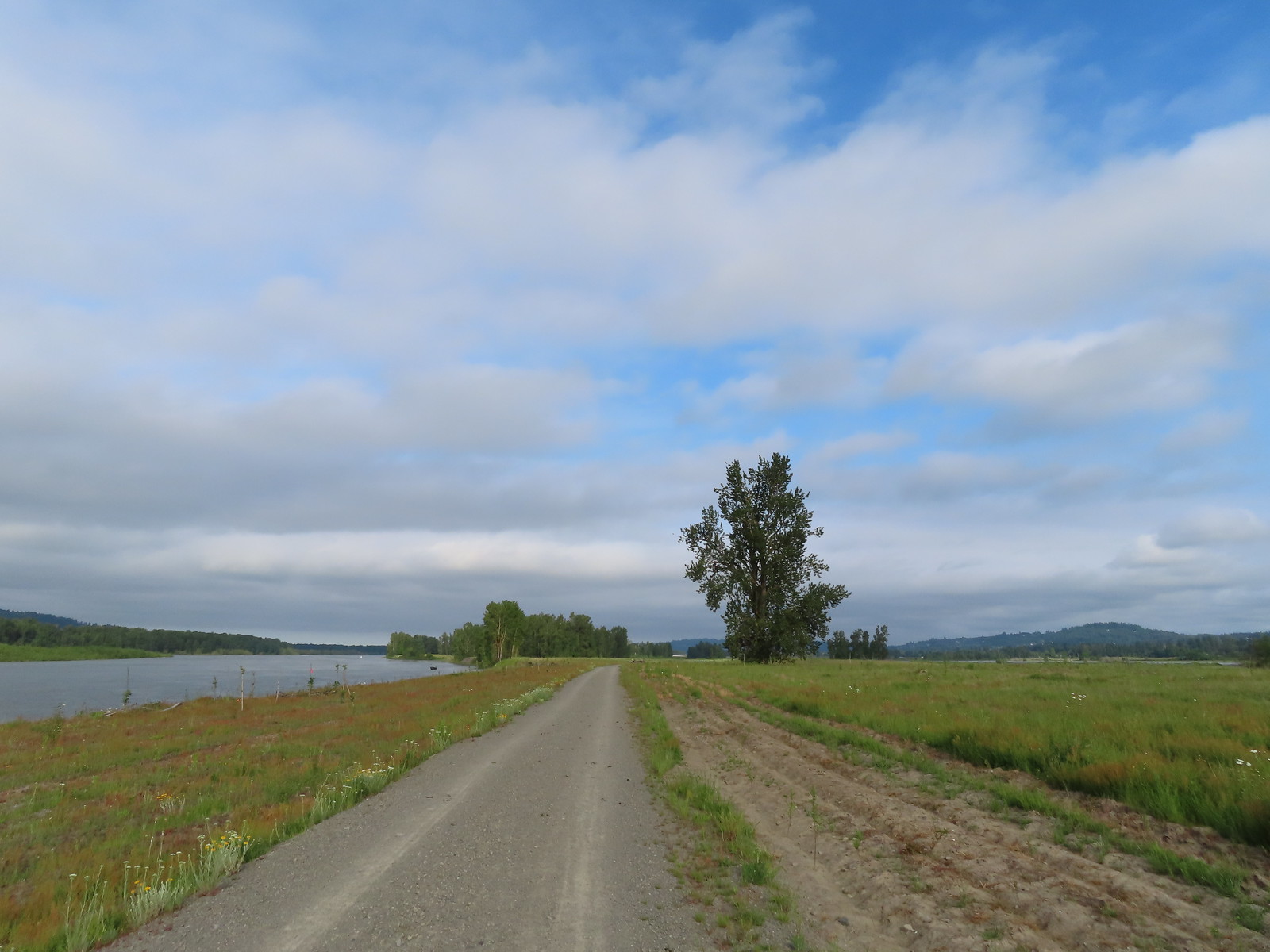 Here come the clouds.
Here come the clouds. Double the eagles.
Double the eagles.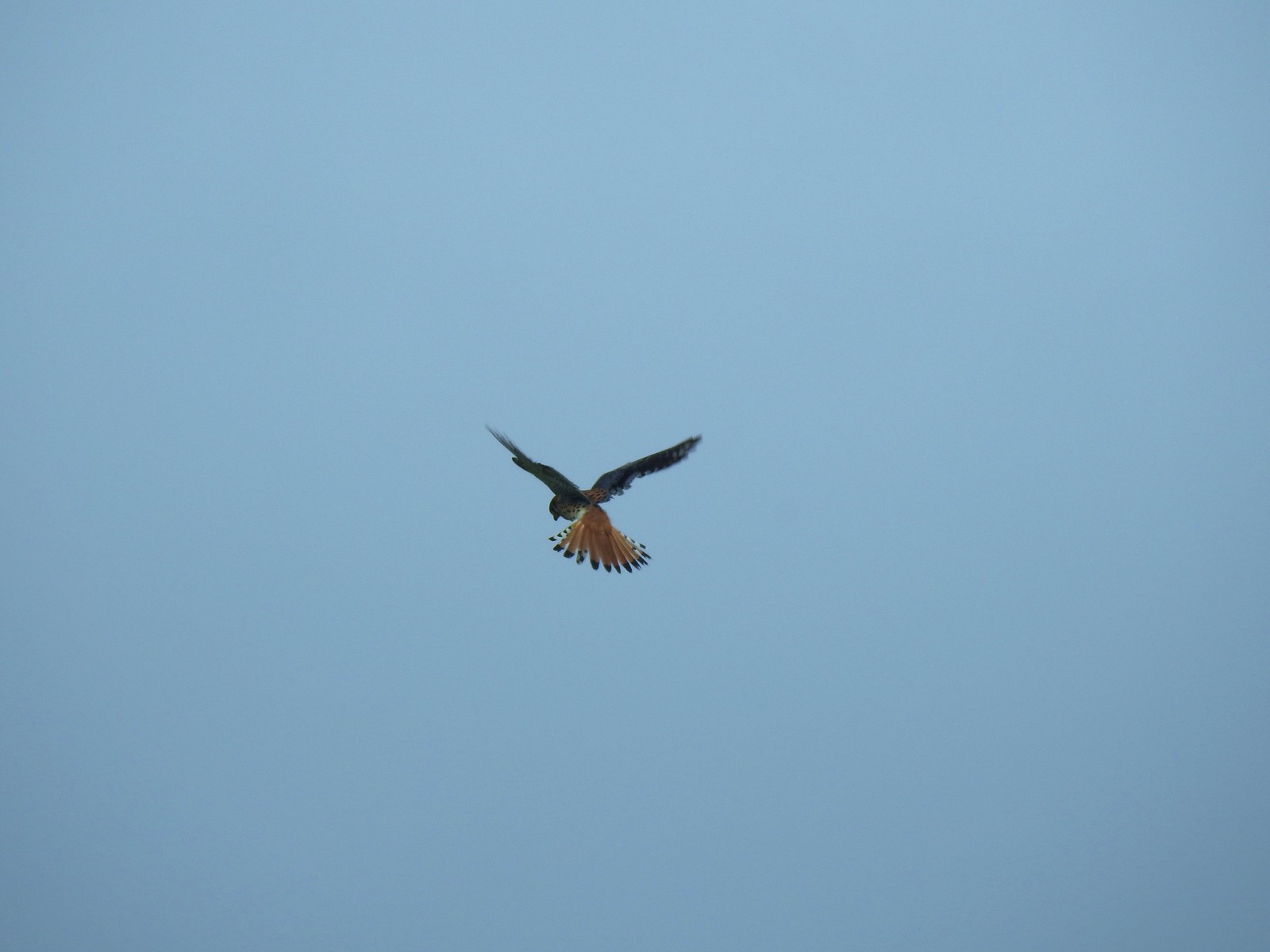 For the second week in a row we got to watch an American Kestral on the hunt.
For the second week in a row we got to watch an American Kestral on the hunt. Arriving back at the Dragon Fly Bridge and the junction with the Wildlife Art Trail.
Arriving back at the Dragon Fly Bridge and the junction with the Wildlife Art Trail.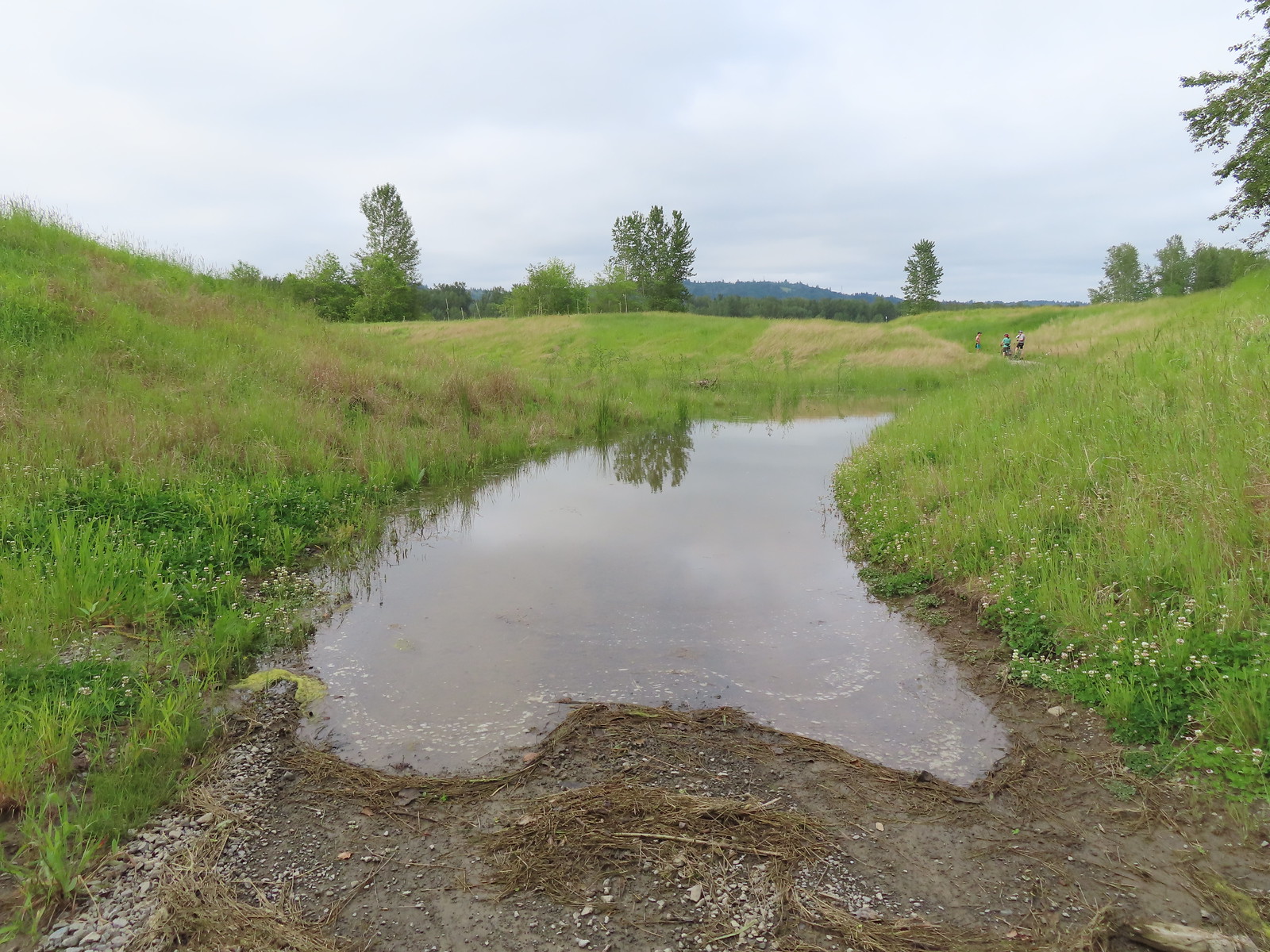

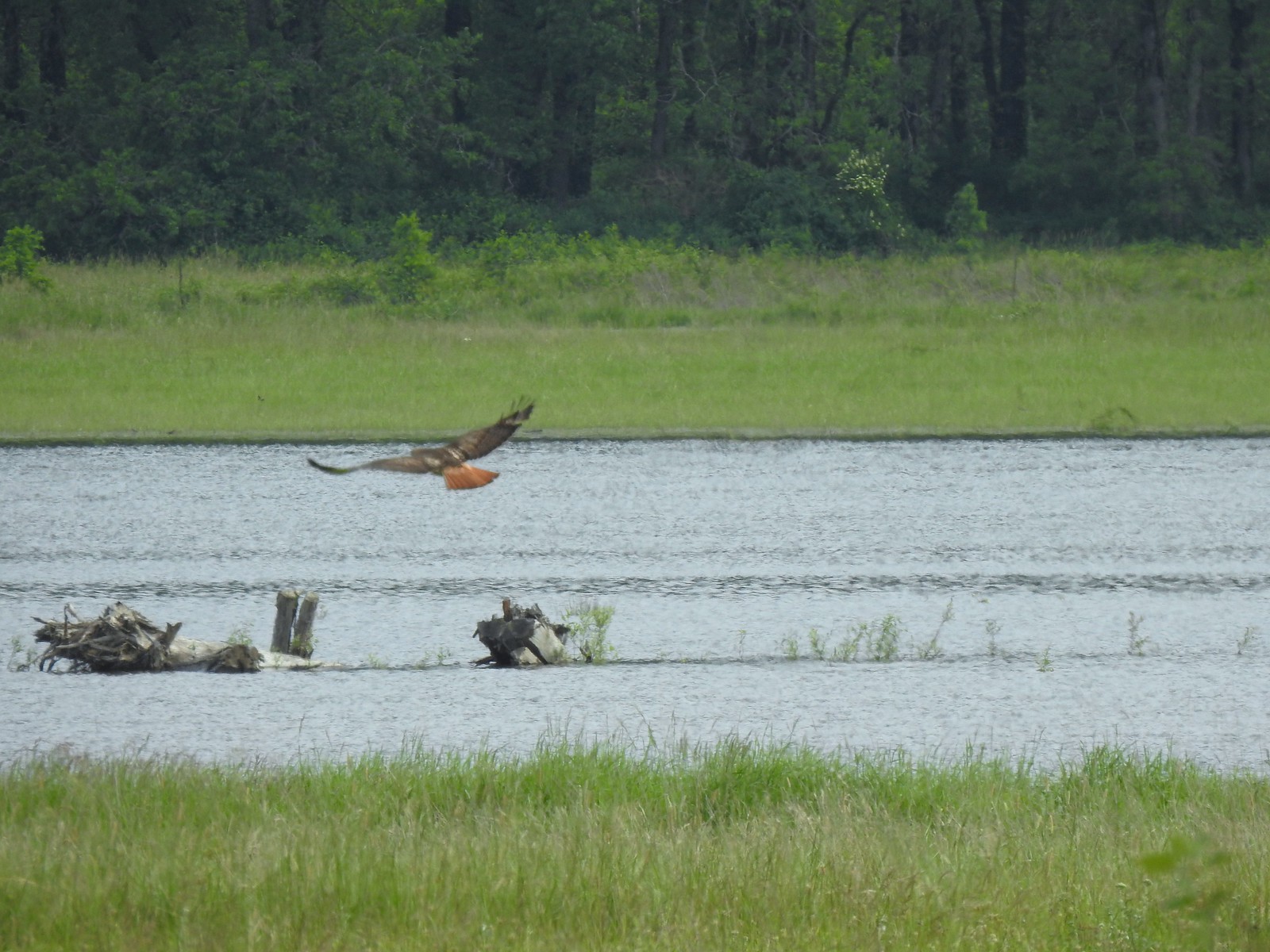 Red tailed hawk
Red tailed hawk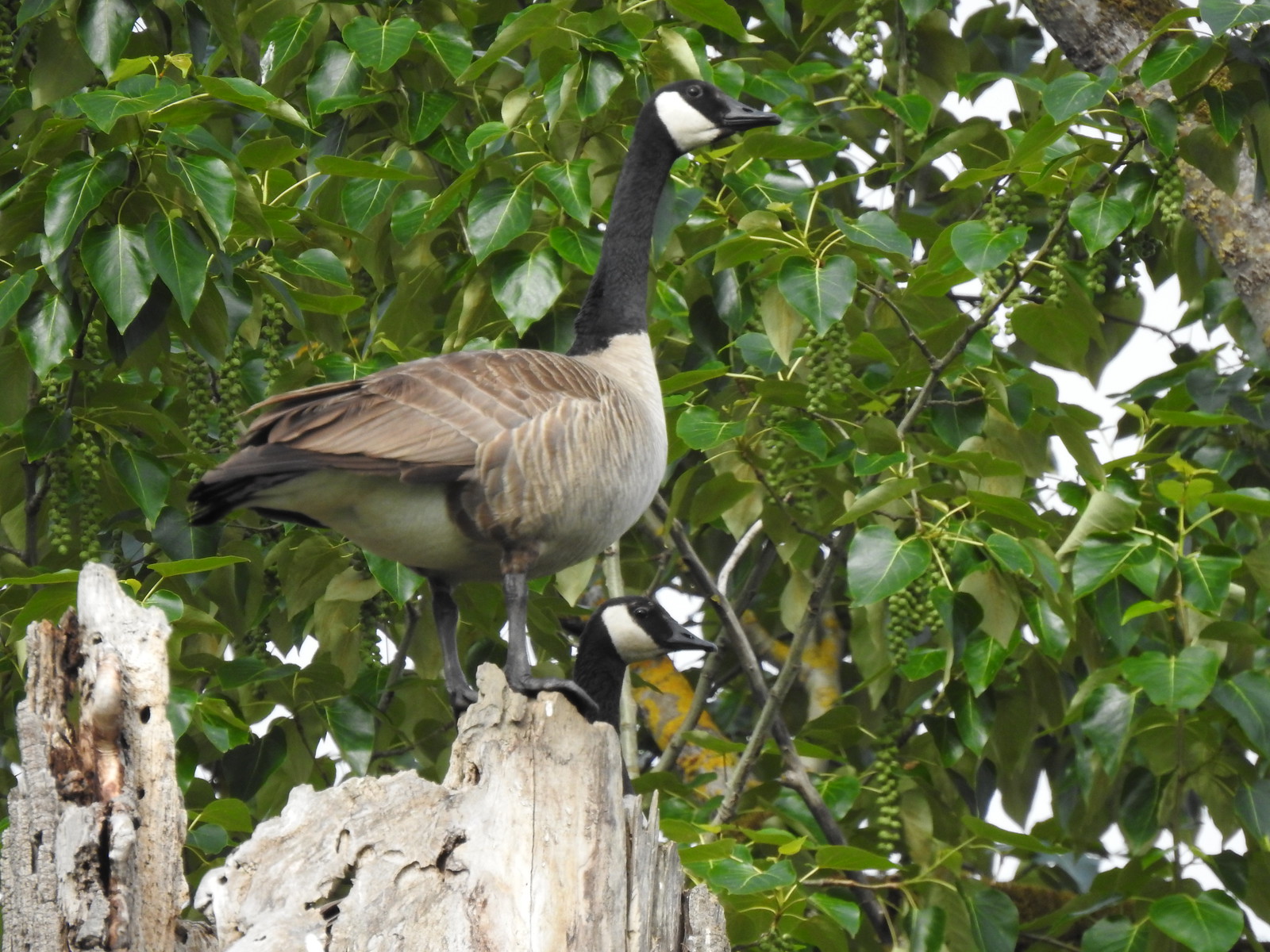 Geese nesting atop a snag.
Geese nesting atop a snag. More deer in the grass along Gibbons Creek.
More deer in the grass along Gibbons Creek. Egret at Redtail Lake.
Egret at Redtail Lake. Great blue heron at Redtail Lake.
Great blue heron at Redtail Lake.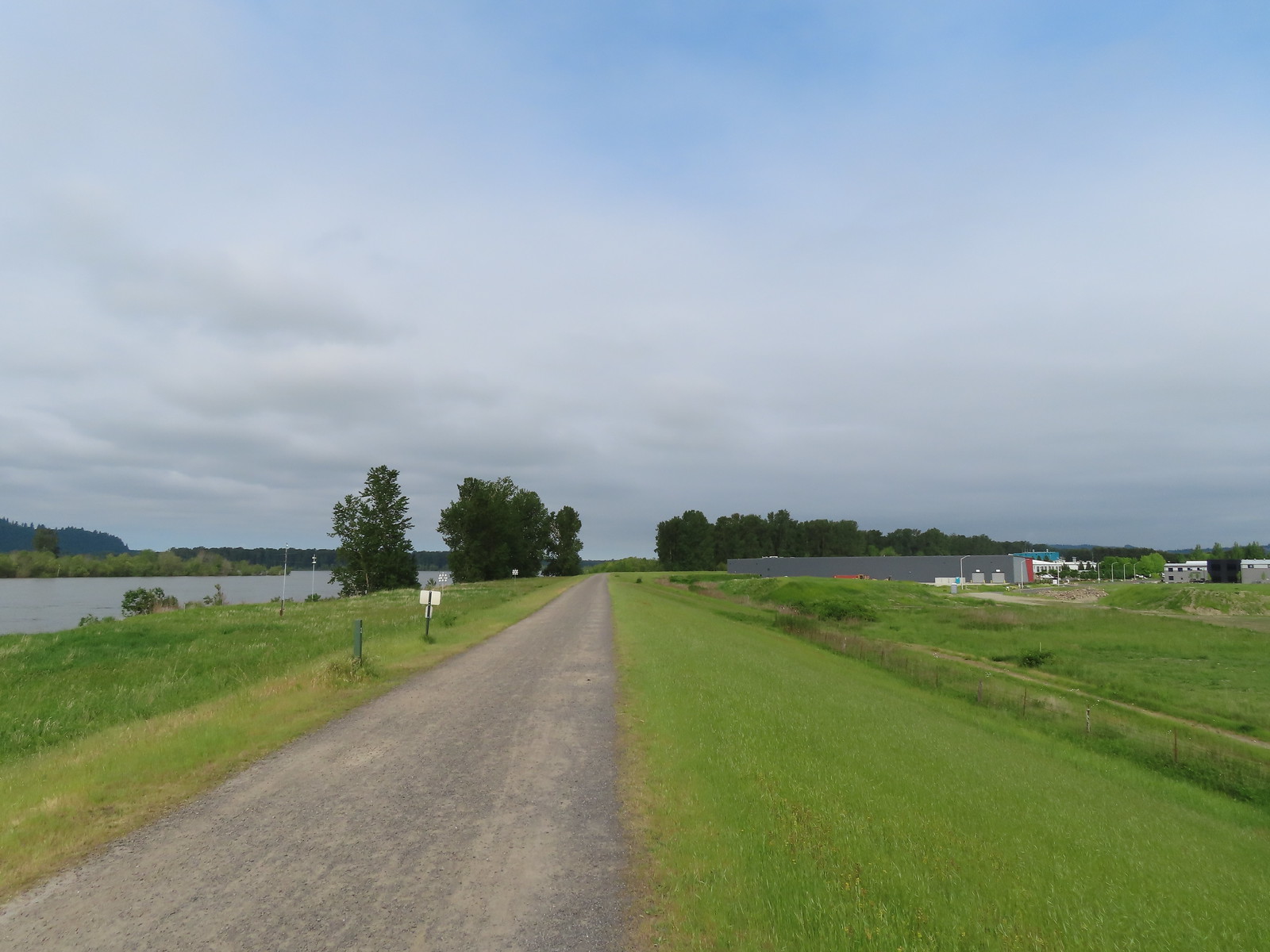
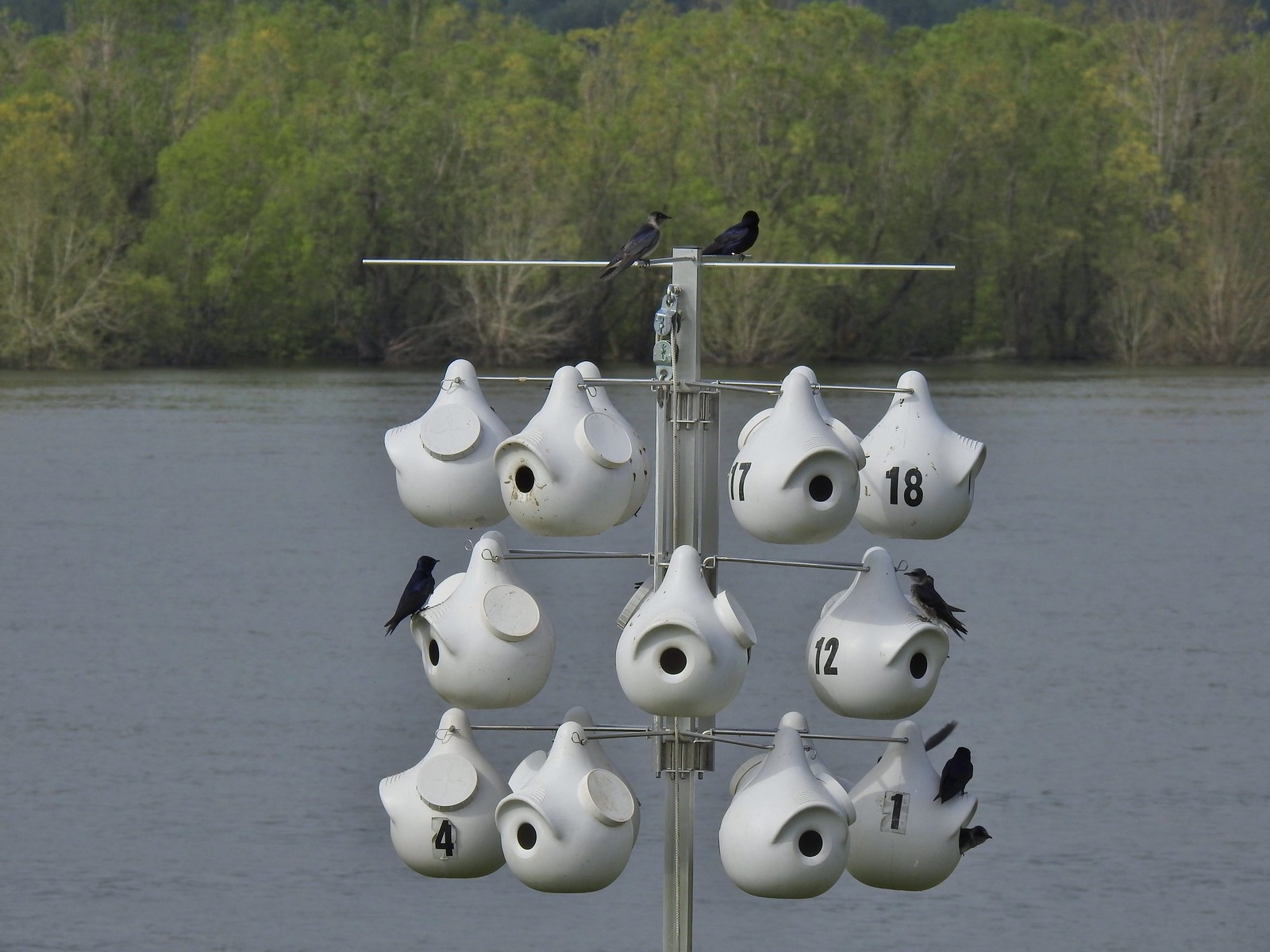 Purple martins
Purple martins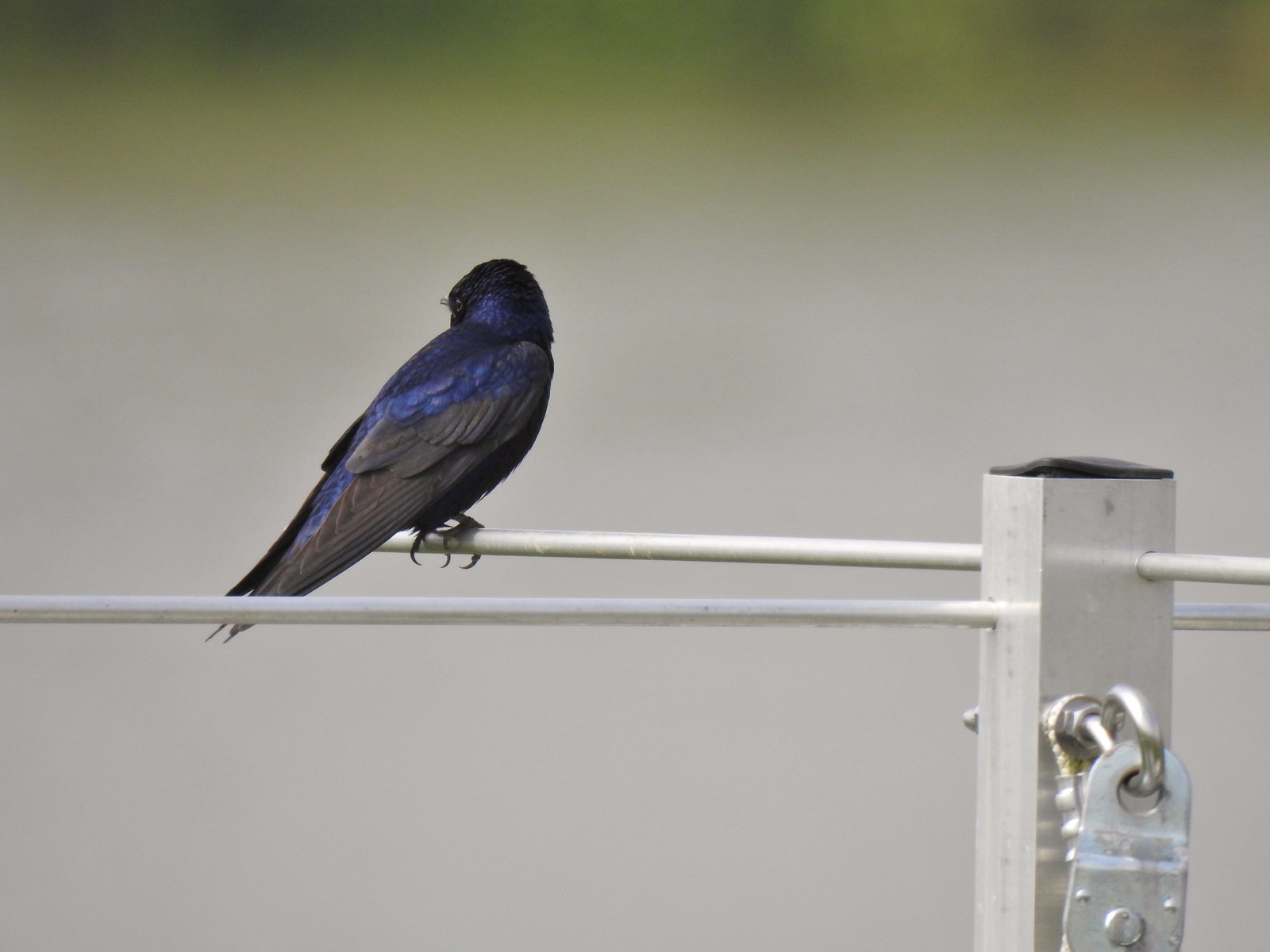 When the light catches the feathers right it’s obvious where the purple martin’s name comes from.
When the light catches the feathers right it’s obvious where the purple martin’s name comes from. Common yellowthroat
Common yellowthroat House finch
House finch A mile from the Mountain View Trail we arrived at the refuge boundary with Captain William Clark Park.
A mile from the Mountain View Trail we arrived at the refuge boundary with Captain William Clark Park.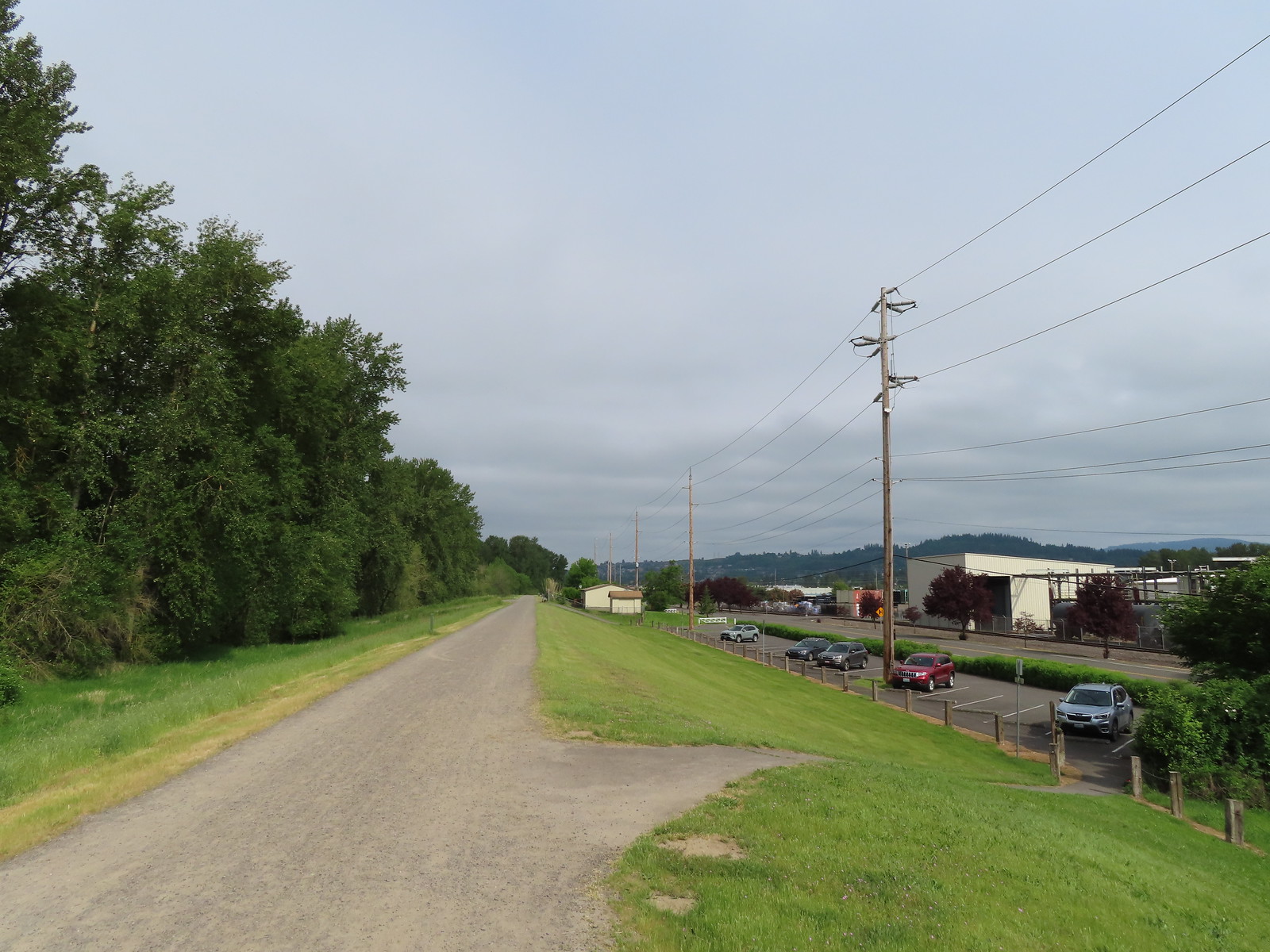 The trail follows a dike to Steamboat Landing.
The trail follows a dike to Steamboat Landing.
 The Provision Camp Trail
The Provision Camp Trail


 Northern flicker
Northern flicker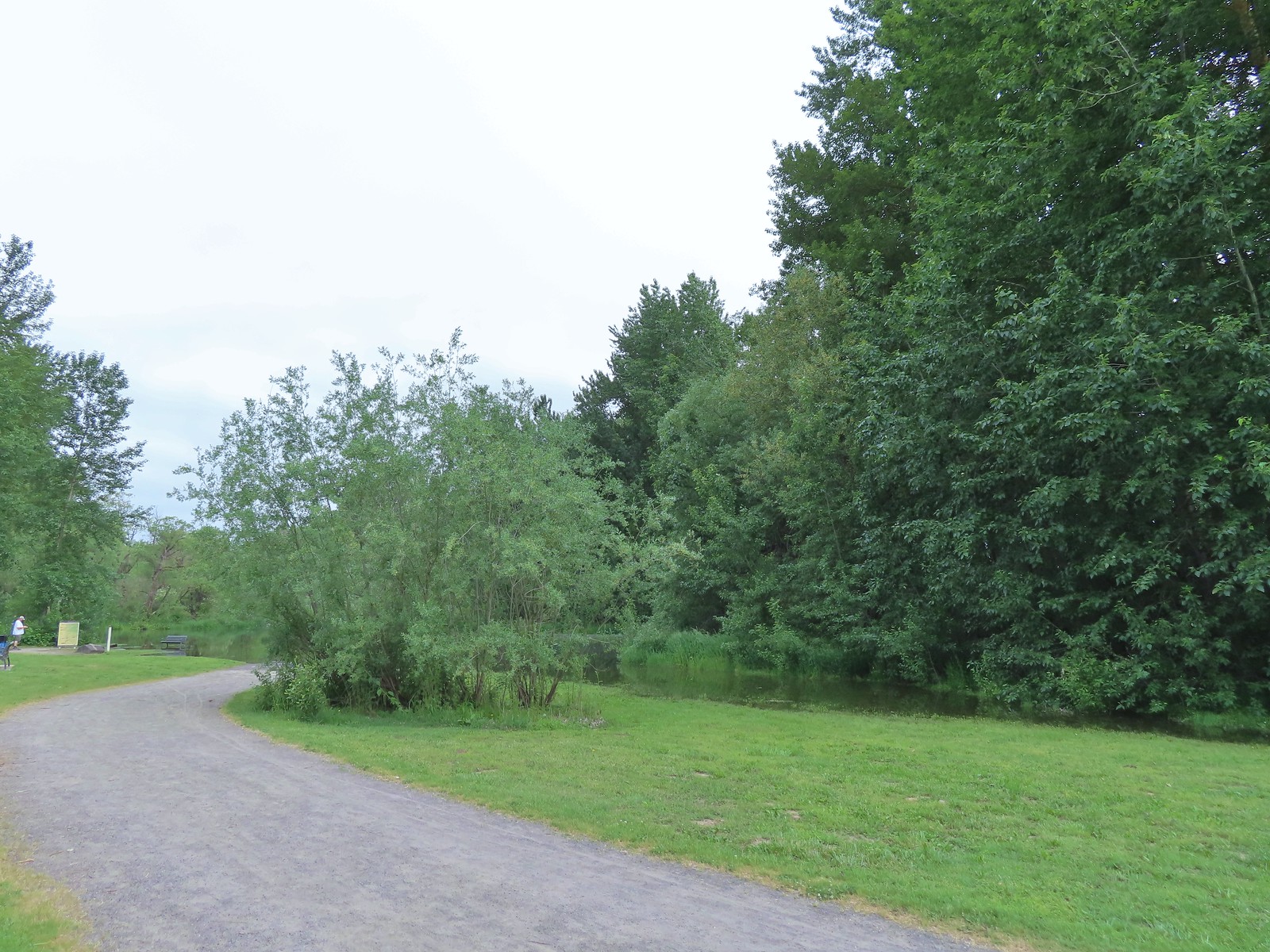 Flooded trail ahead.
Flooded trail ahead. Black headed grosbeak
Black headed grosbeak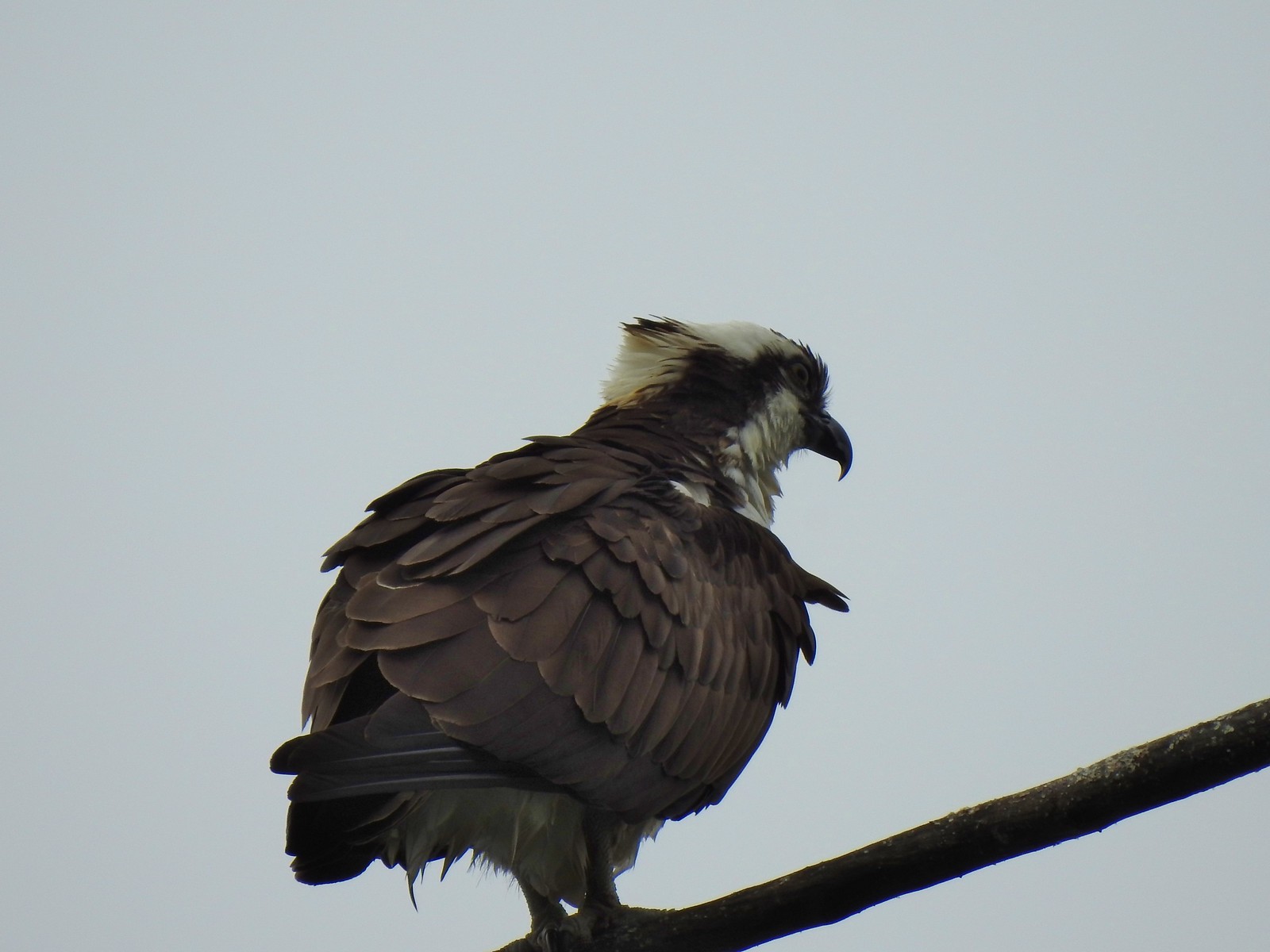 Osprey
Osprey Back on the dike.
Back on the dike.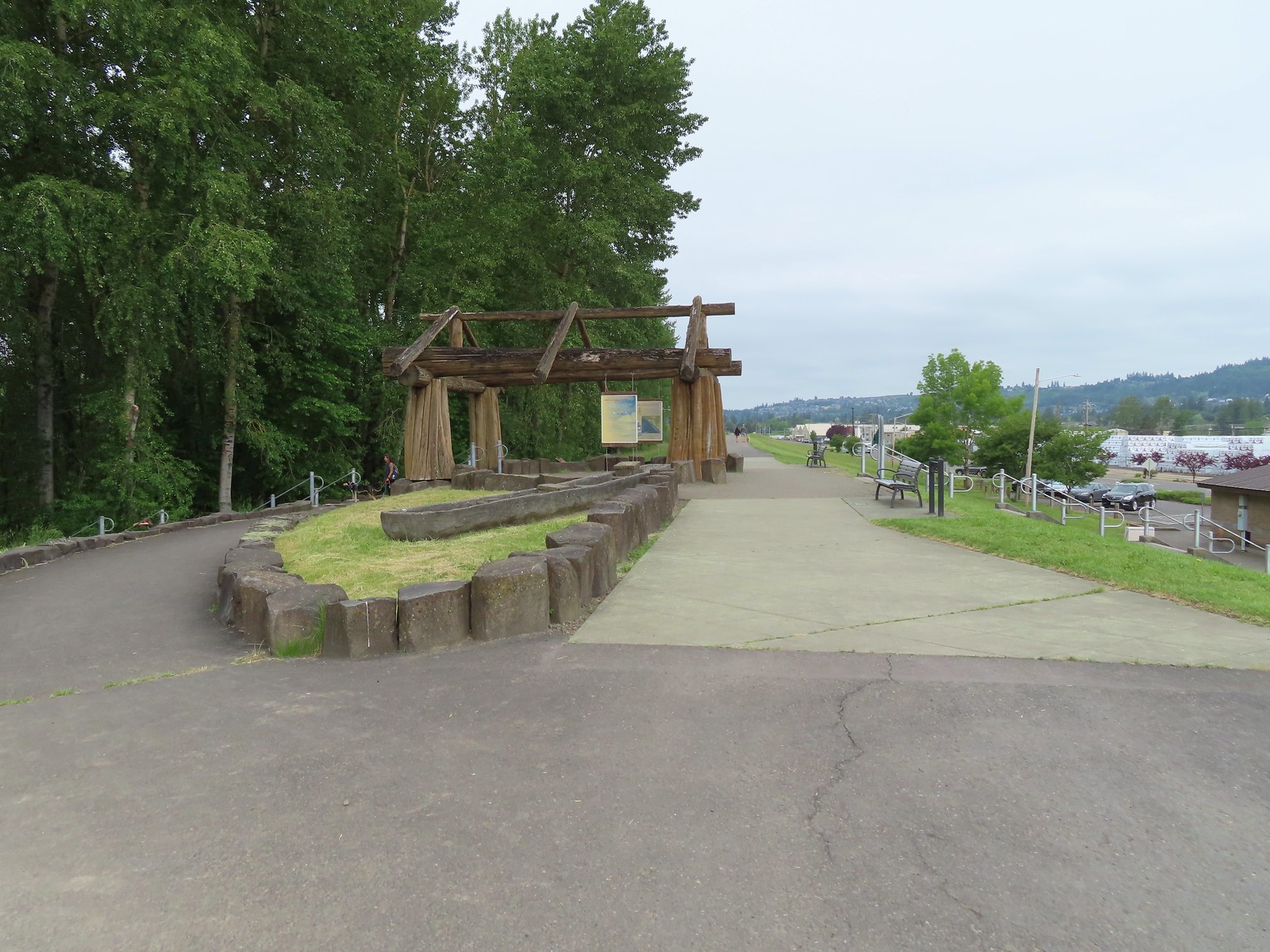
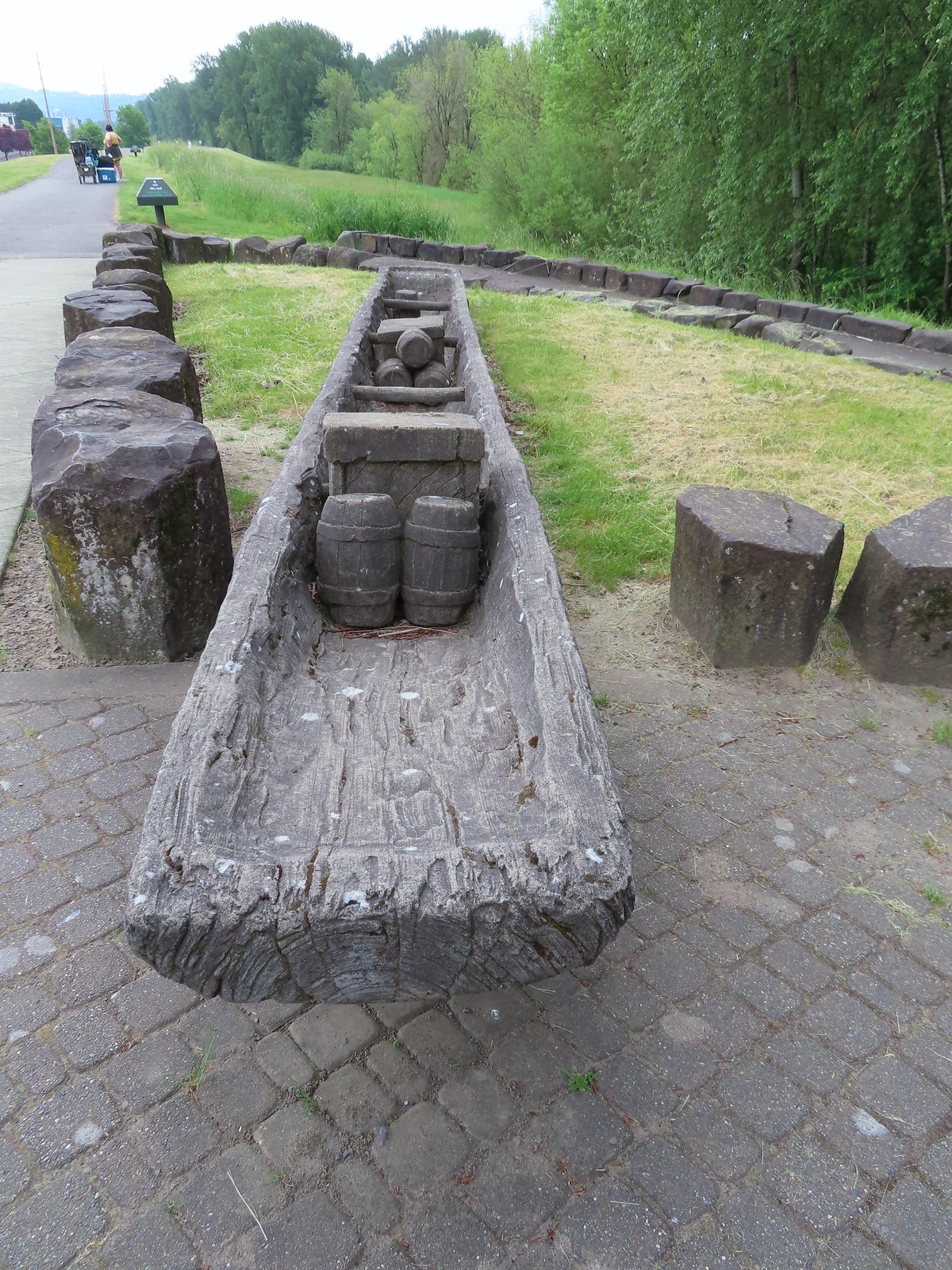

 The flooded section of trail from above.
The flooded section of trail from above.
 Turtles!
Turtles! Another turtle
Another turtle
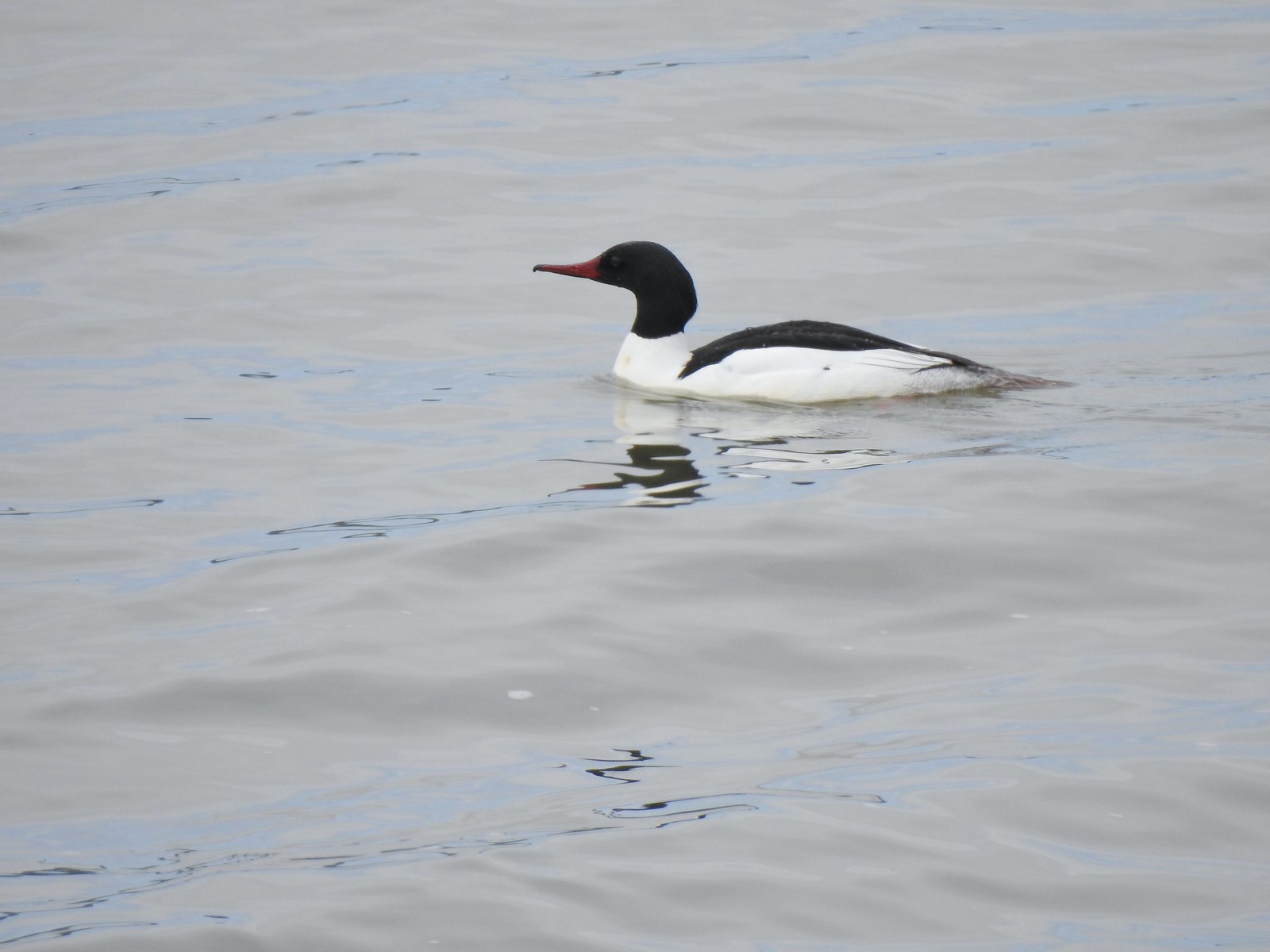 Common merganser
Common merganser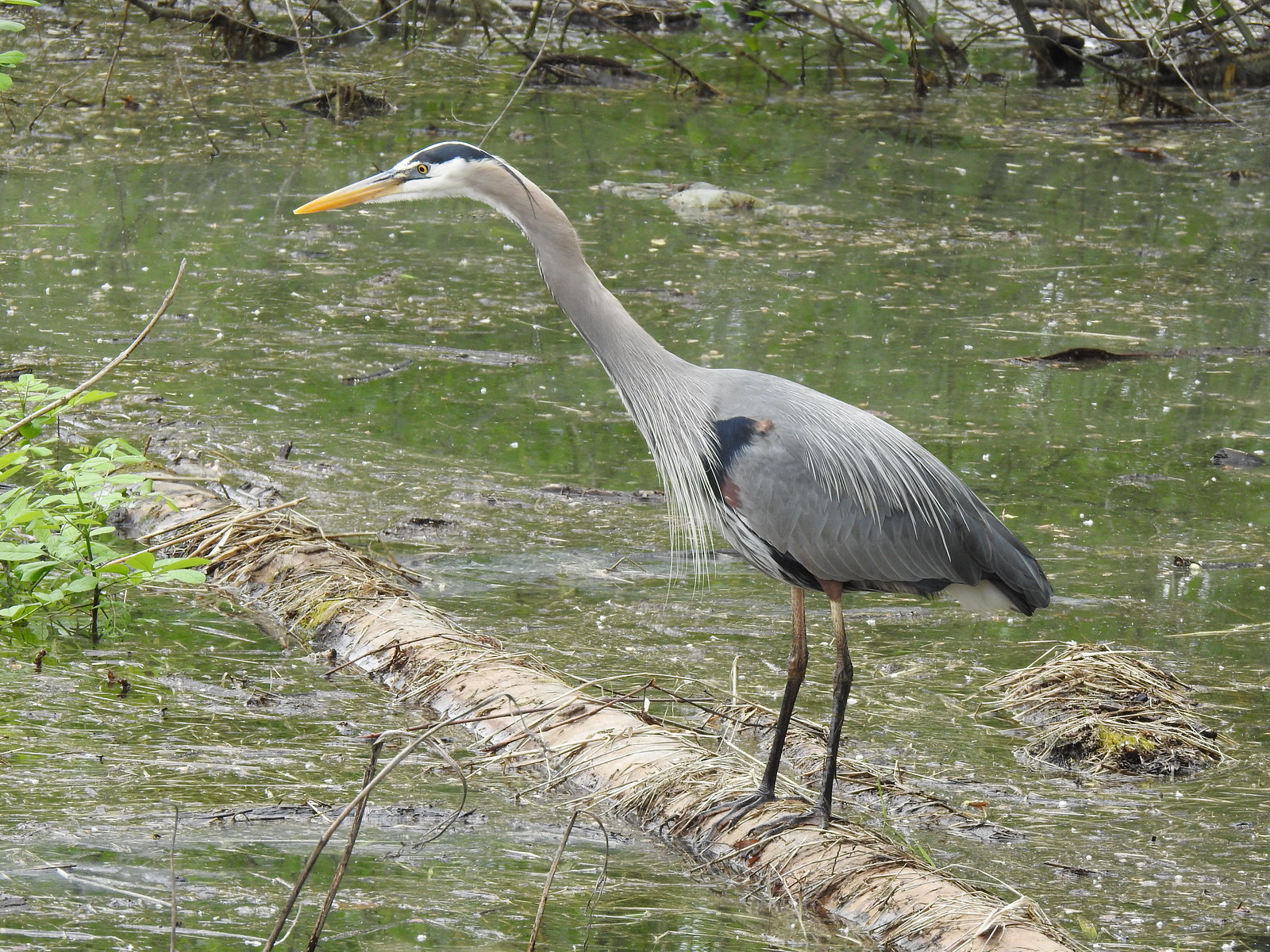 Great blue heron
Great blue heron Steamboat Landing
Steamboat Landing
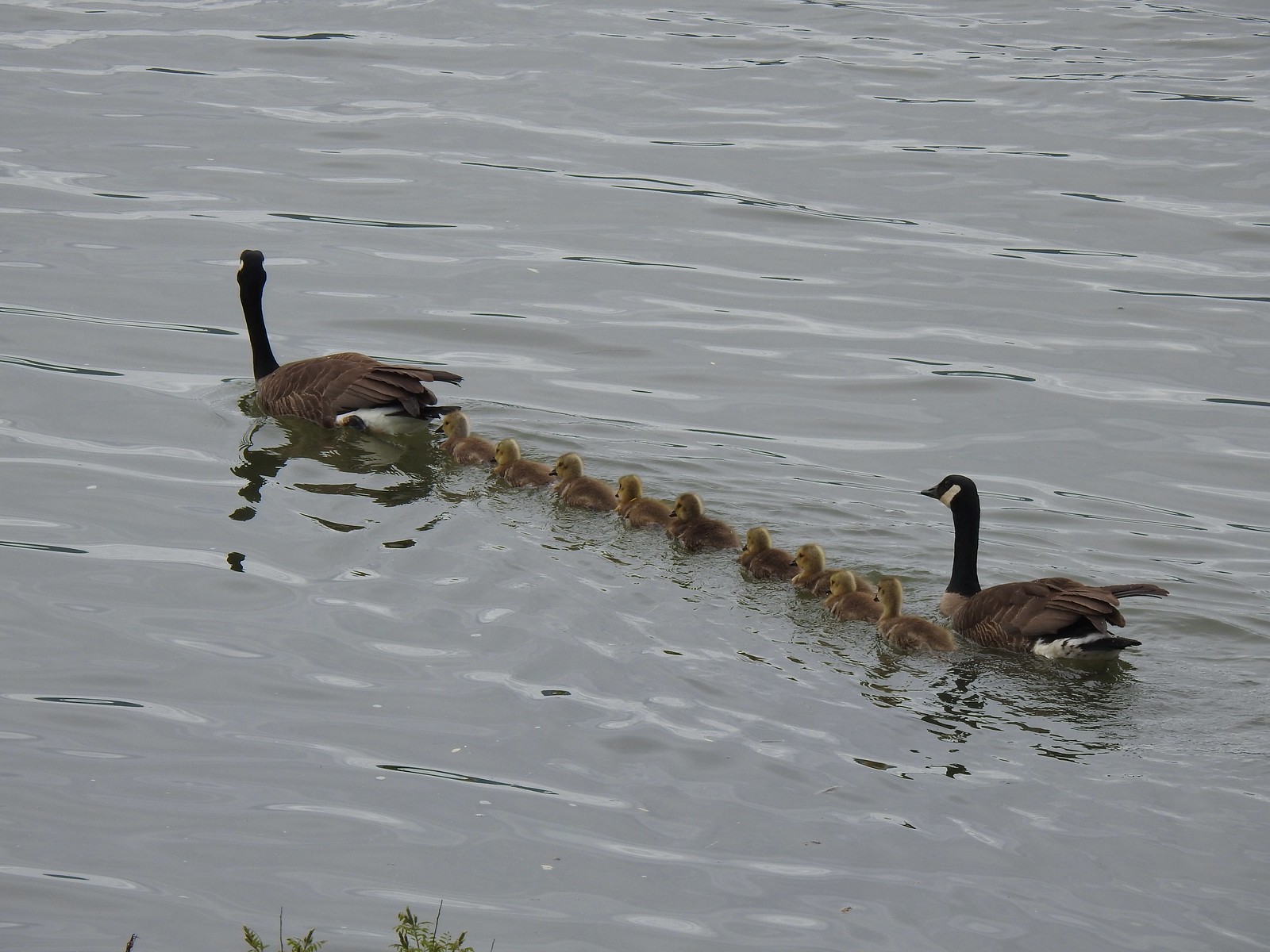 A family of geese out for a float.
A family of geese out for a float. The large “hump” ahead is Larch Mountain (
The large “hump” ahead is Larch Mountain ( Grainy proof of Mt. Hood’s existence.
Grainy proof of Mt. Hood’s existence.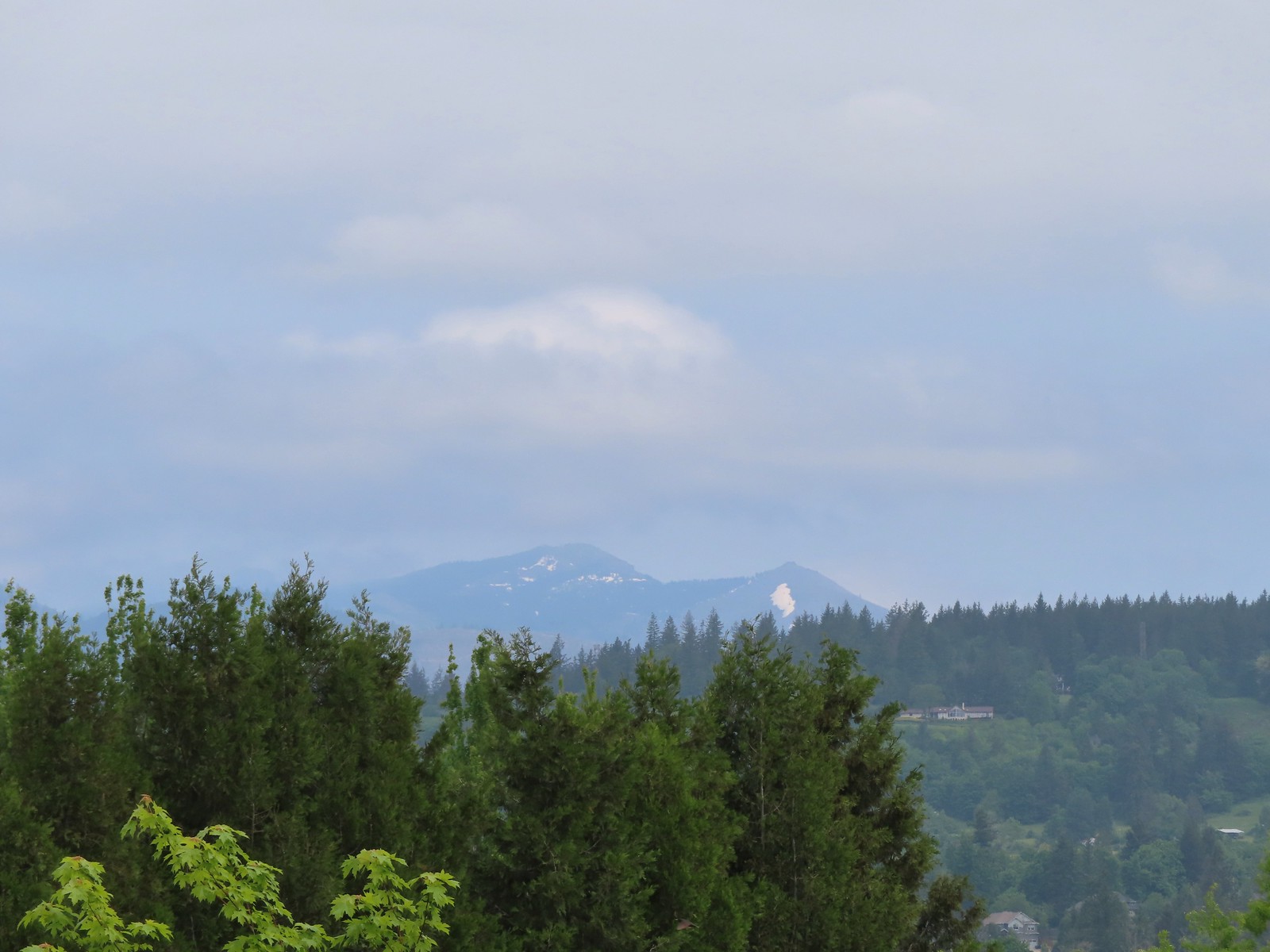 Silver Star Mountain (
Silver Star Mountain (
 The American bittern in the grass.
The American bittern in the grass.

 We’d been the first car in the lot that morning.
We’d been the first car in the lot that morning.



 Rowena Plateau and Tom McCall Point (
Rowena Plateau and Tom McCall Point (
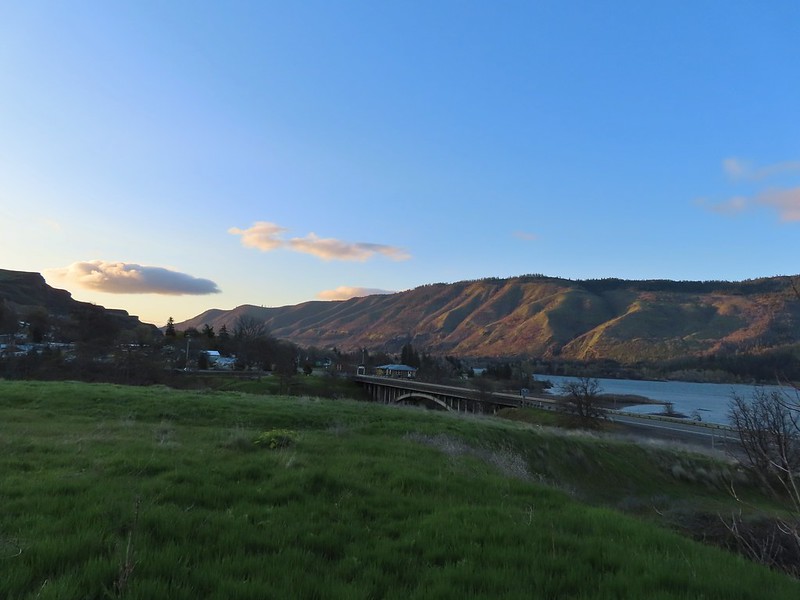

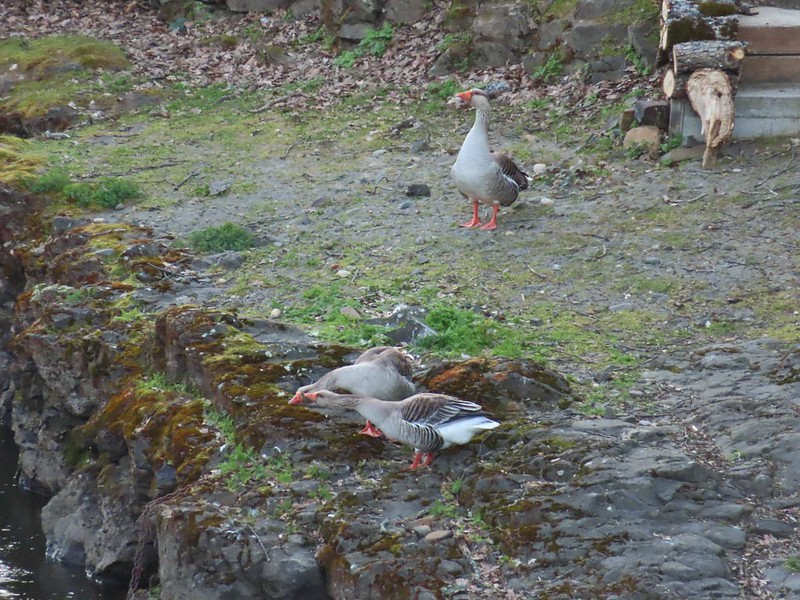

 A blurry heron along the river.
A blurry heron along the river. Acorn woodpecker
Acorn woodpecker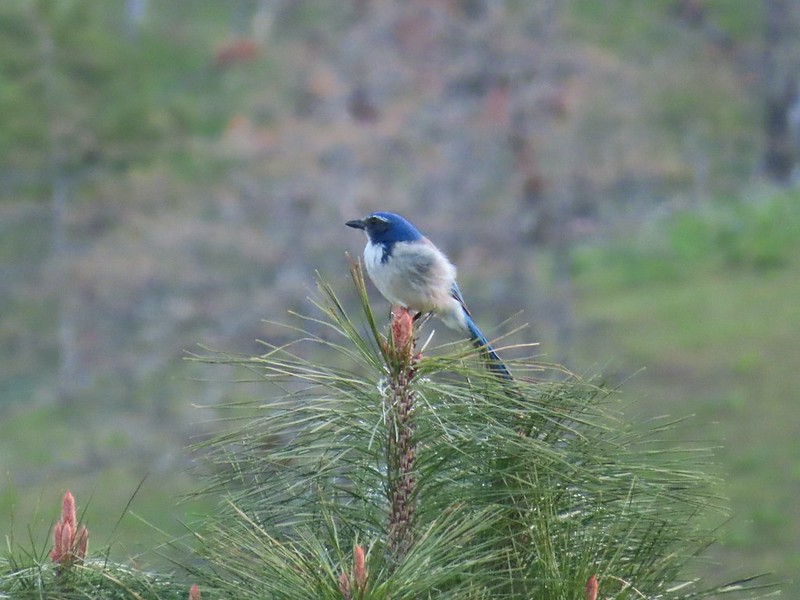 Scrub jay
Scrub jay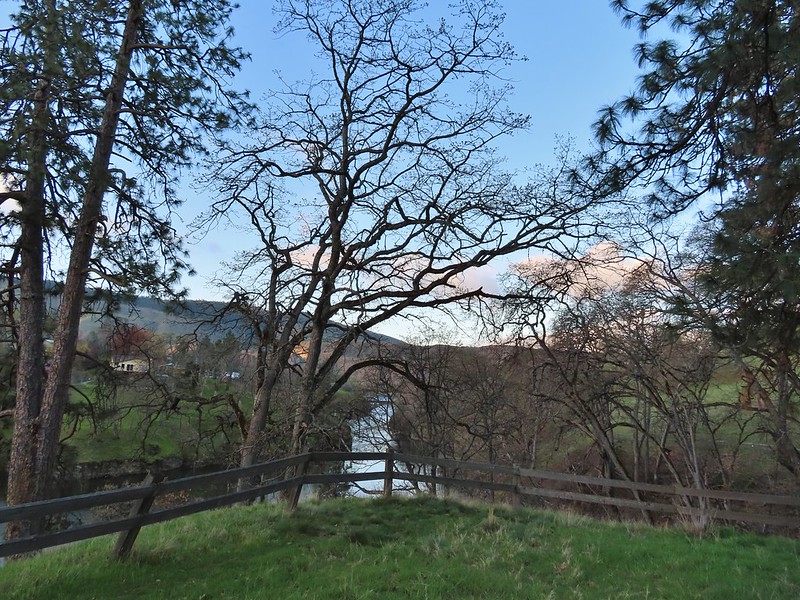 View from the picnic table.
View from the picnic table.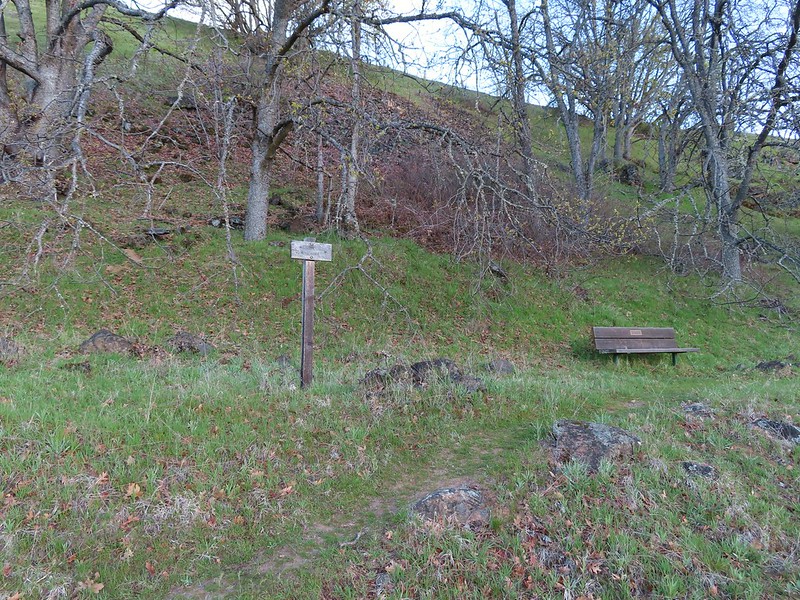
 This trail was not paved.
This trail was not paved. Woodland-stars
Woodland-stars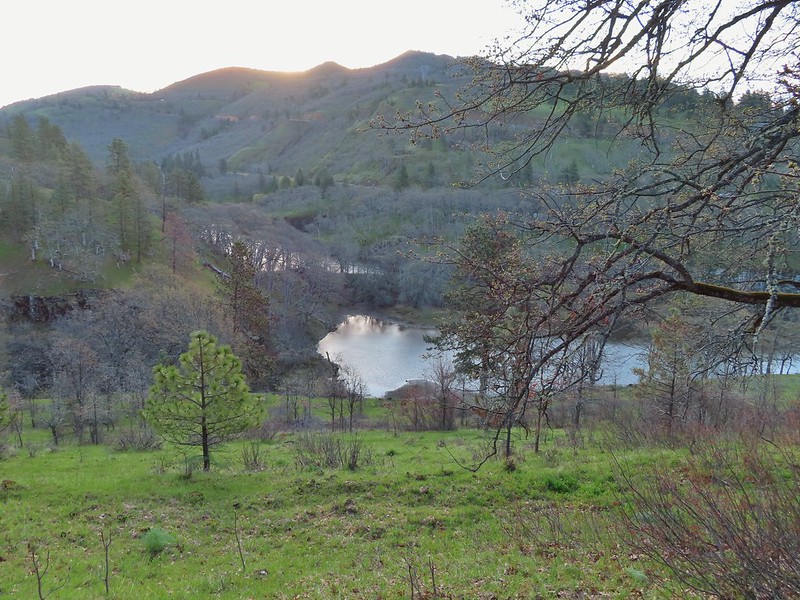 View from a bench at the end of the trail.
View from a bench at the end of the trail. Mallards on the water below.
Mallards on the water below.

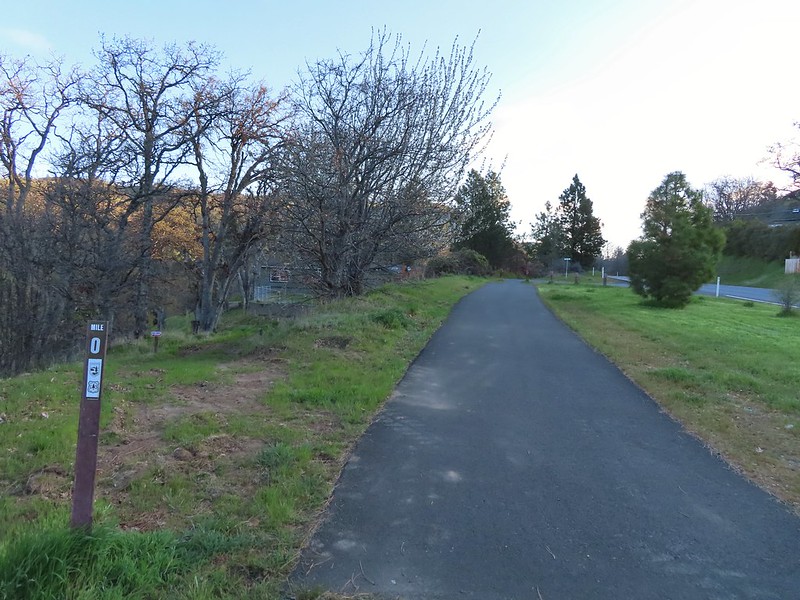 Starting at mile 0.
Starting at mile 0.
 Keep your eyes out for poison oak which was prevalent along the trail. Luckily the trail is nice and wide so avoiding it was easy enough.
Keep your eyes out for poison oak which was prevalent along the trail. Luckily the trail is nice and wide so avoiding it was easy enough. Heather spotted these three deer across the river.
Heather spotted these three deer across the river.
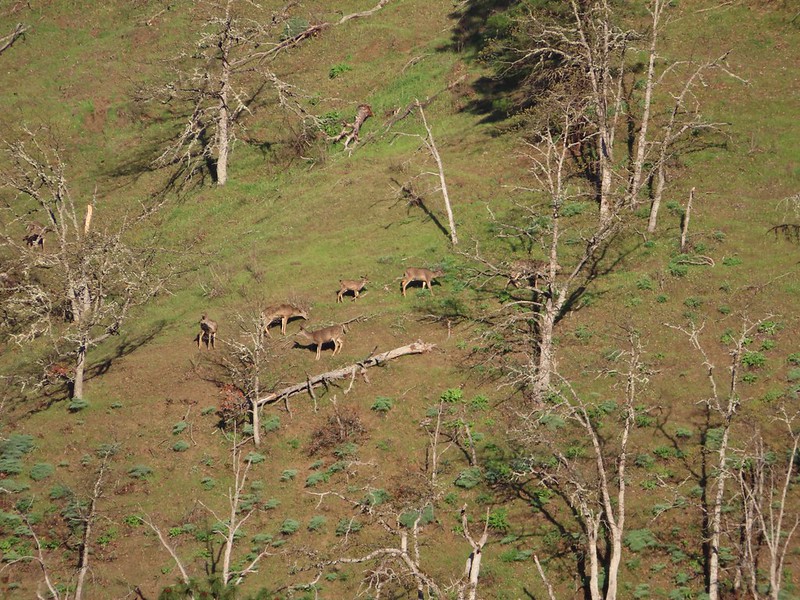 Another group of deer.
Another group of deer. Bald eagle
Bald eagle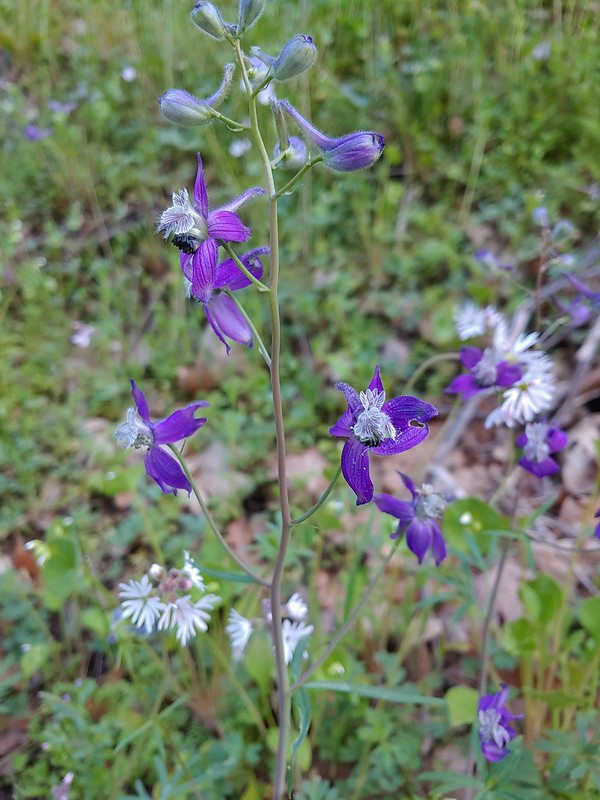 Larkspur and woodland-stars
Larkspur and woodland-stars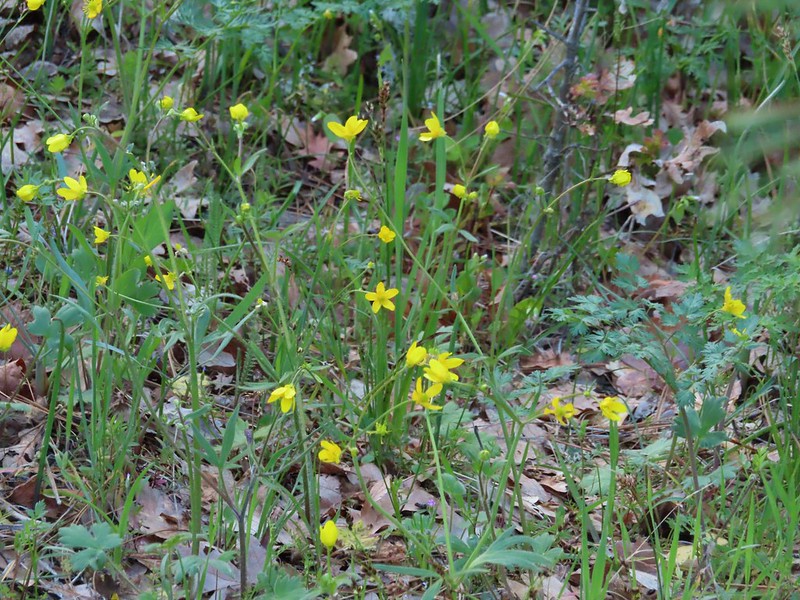 Buttercups
Buttercups Pacific hound’s tongue
Pacific hound’s tongue Milepost 1
Milepost 1 Saxifrage
Saxifrage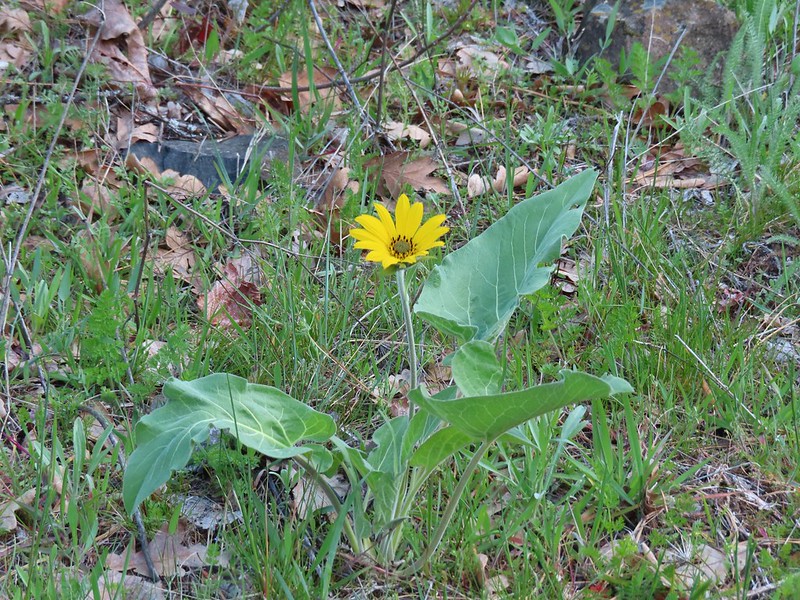 Balsamroot
Balsamroot
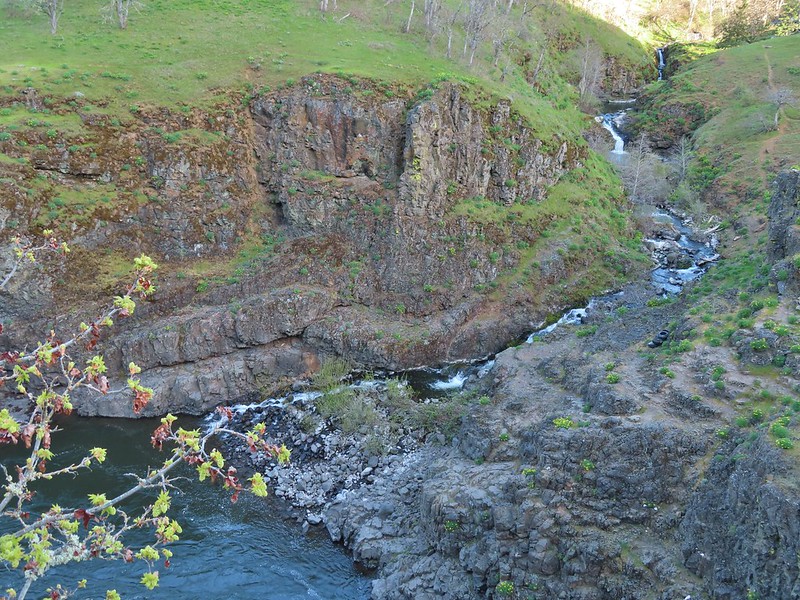 Silvas Creek
Silvas Creek
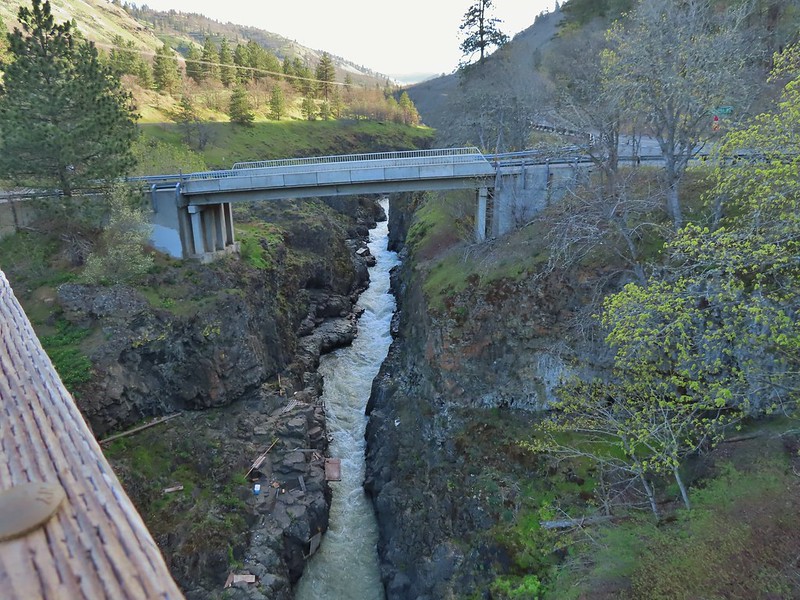


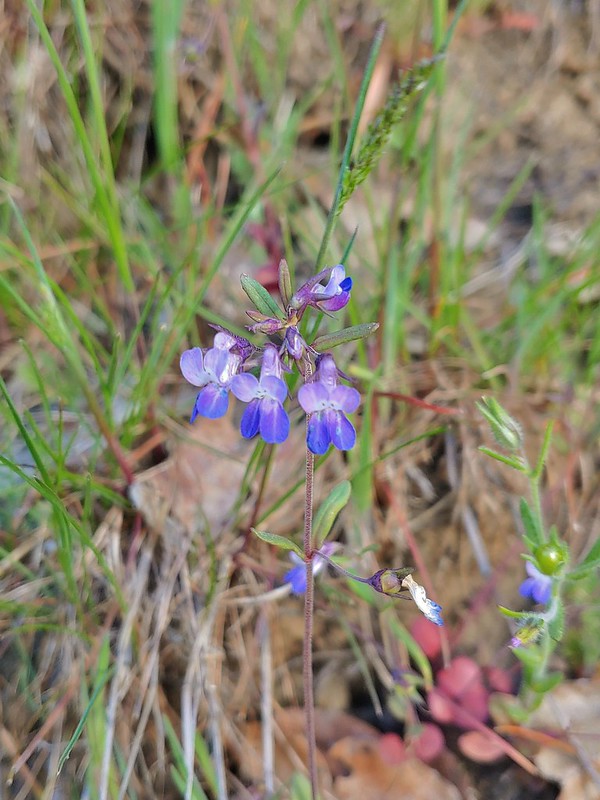 Blue-eyed Mary
Blue-eyed Mary

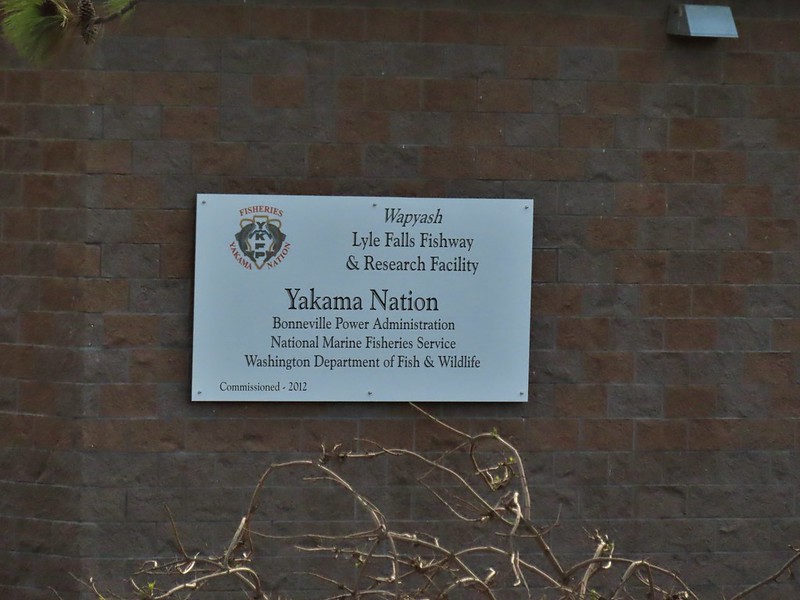


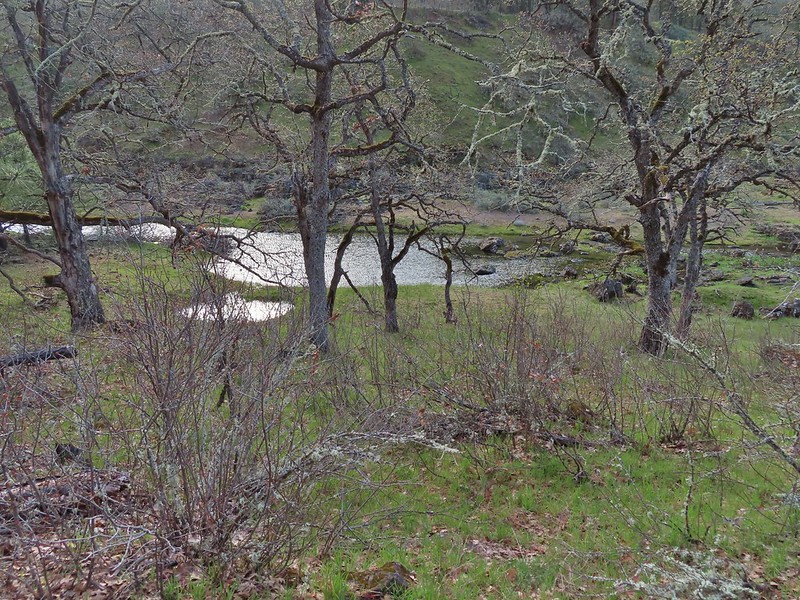 Seasonal pool along the trail.
Seasonal pool along the trail.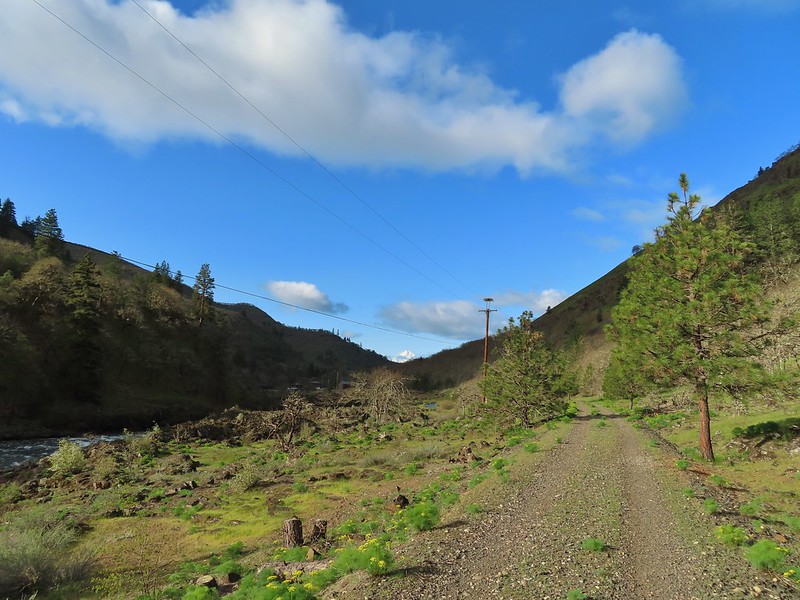
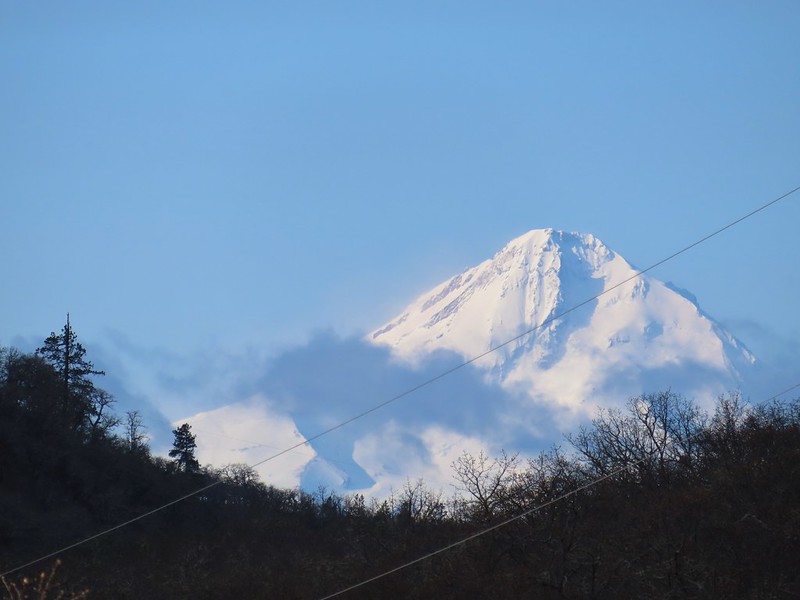
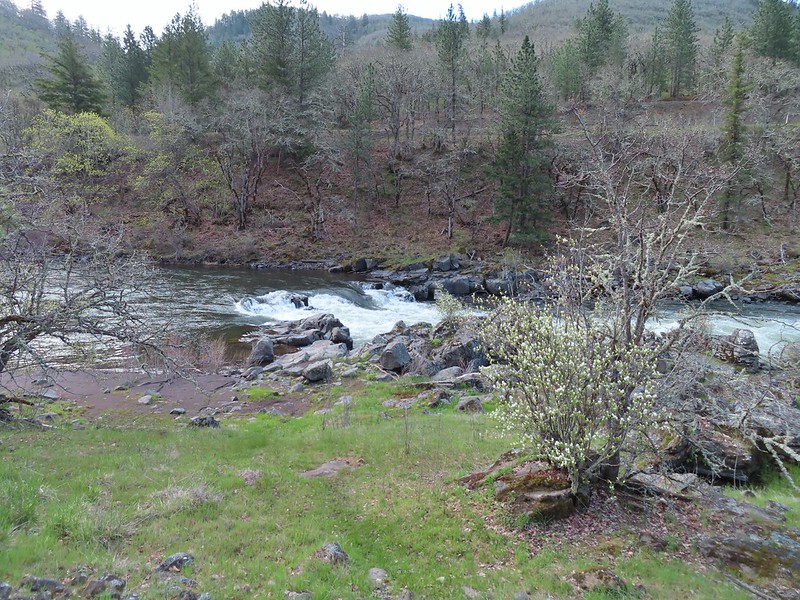
 Common mergansers
Common mergansers

 Popcorn flower
Popcorn flower Columbia desert parsley
Columbia desert parsley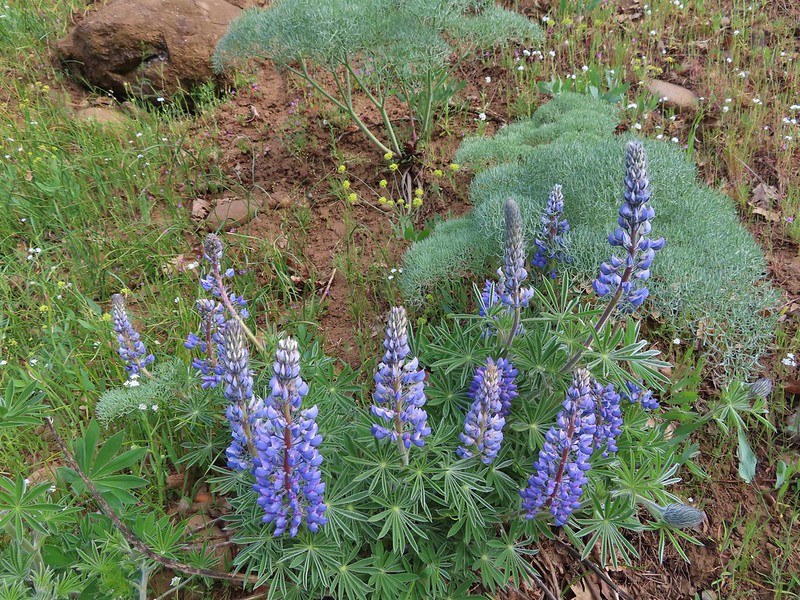 Lupine
Lupine Balsamroot
Balsamroot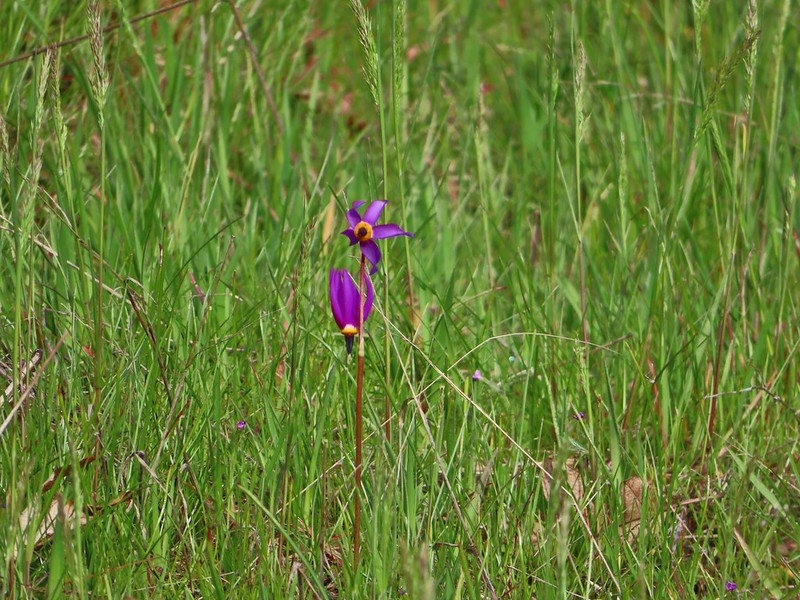 Shooting stars
Shooting stars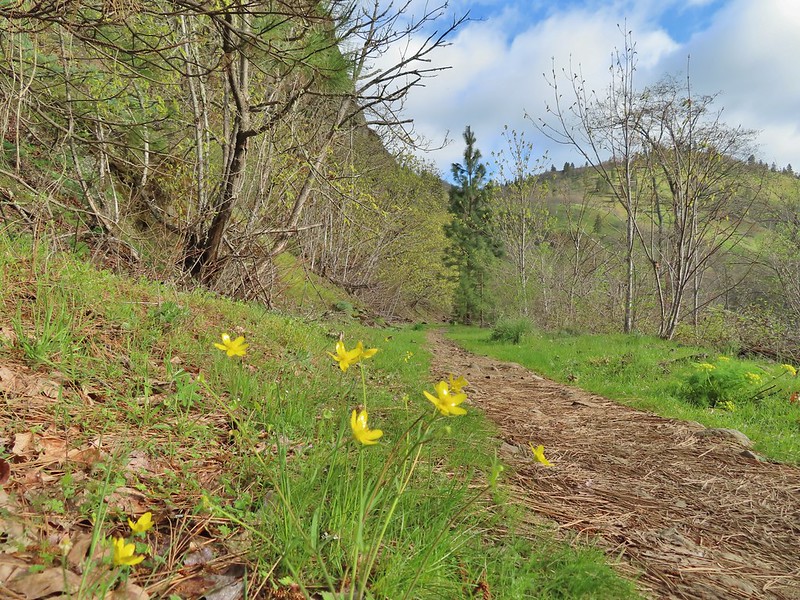 Buttercups
Buttercups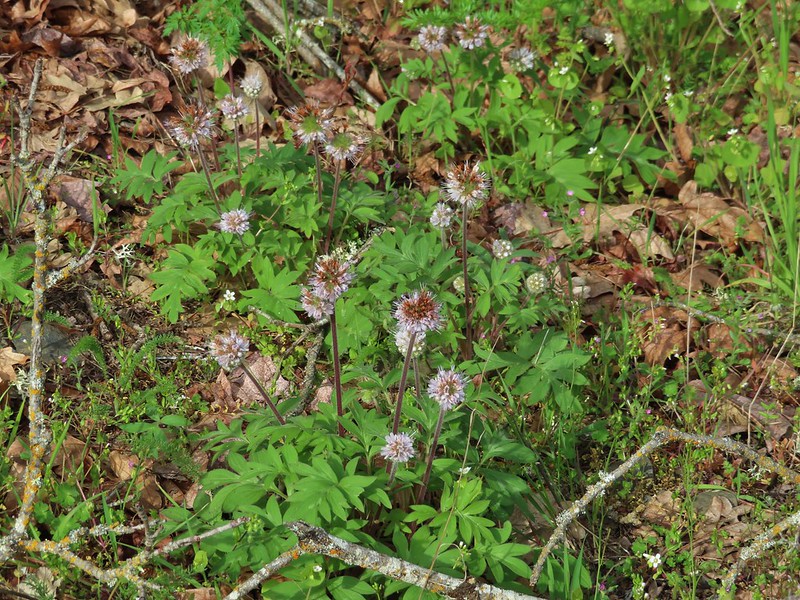 Waterleaf
Waterleaf A balsamroot amid pungent desert parsley
A balsamroot amid pungent desert parsley Big-leaf maple trees lining the trail.
Big-leaf maple trees lining the trail. Big-leaf maple blossoms
Big-leaf maple blossoms
 Gold stars
Gold stars Larkspur, poison oak, and buttercups
Larkspur, poison oak, and buttercups
 Spotted towhee
Spotted towhee
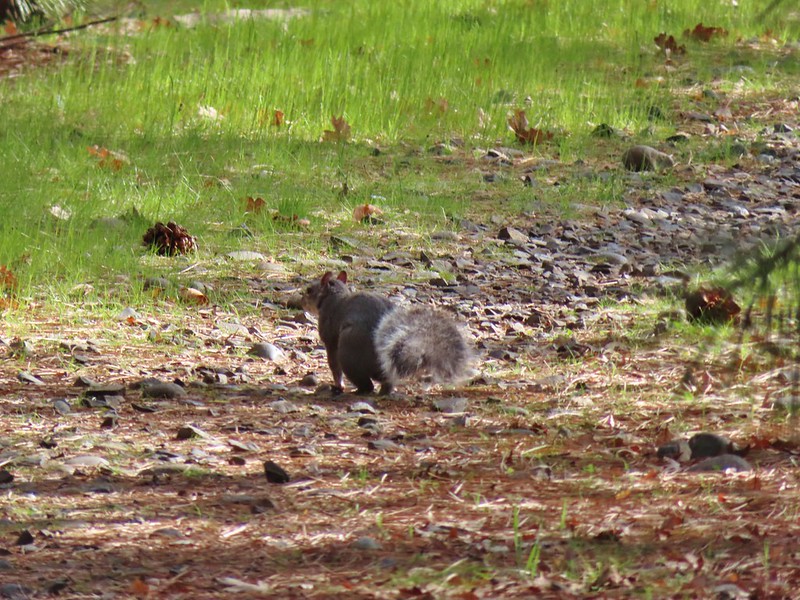 Squirrel
Squirrel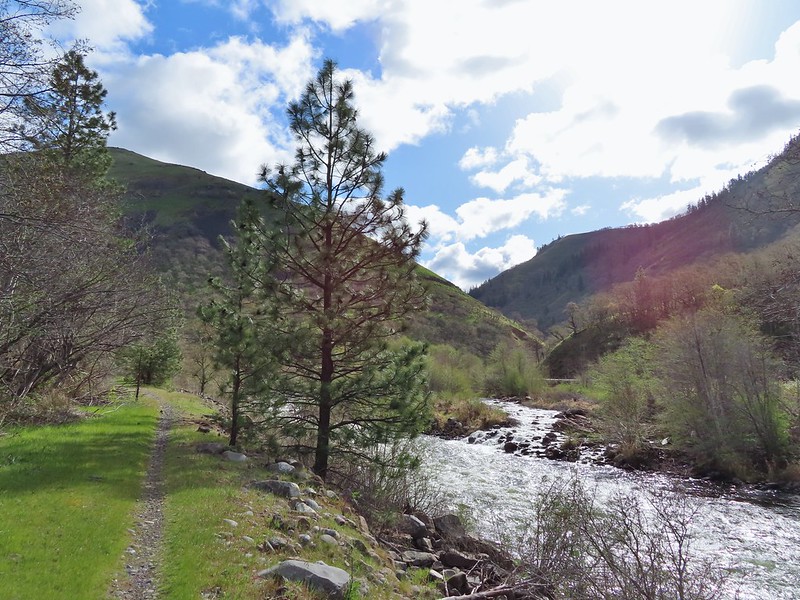 Dillacort Canyon
Dillacort Canyon Red-stem storksbill
Red-stem storksbill

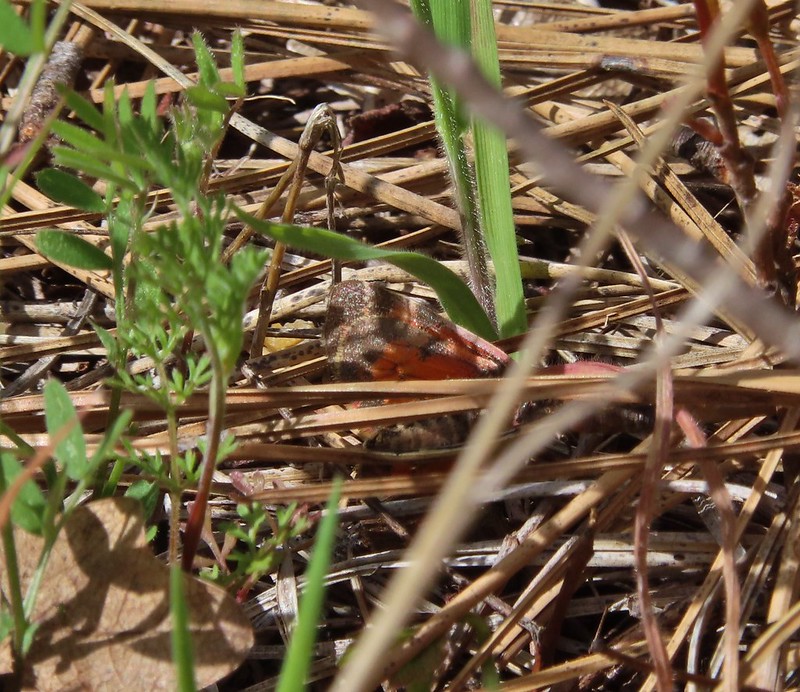 Couldn’t get a good look at this small moth but it was pretty.
Couldn’t get a good look at this small moth but it was pretty.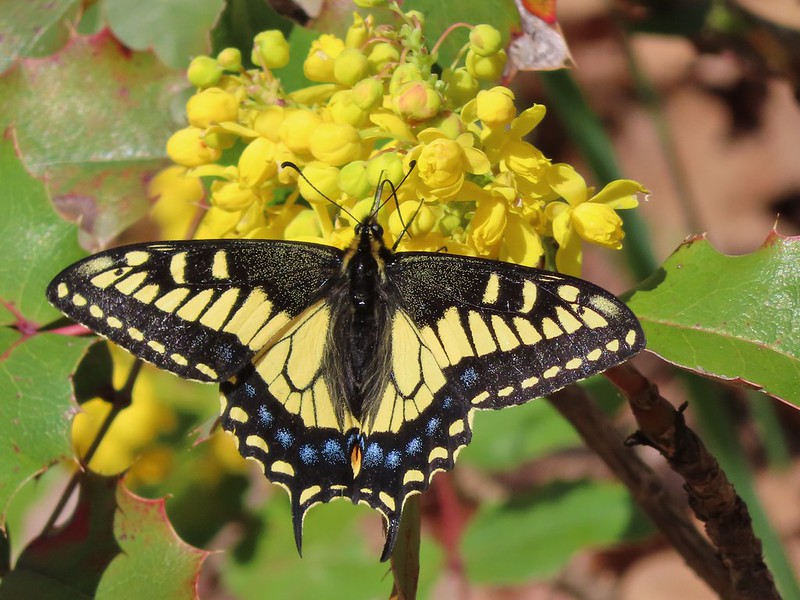 Anise swallowtail
Anise swallowtail Sara’s orangetip
Sara’s orangetip Grass widow
Grass widow Slender phlox
Slender phlox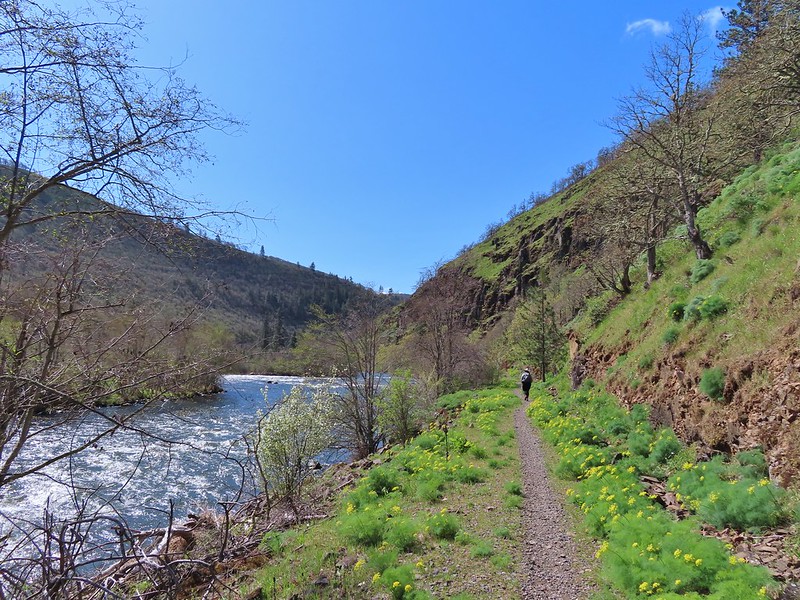 Heading back.
Heading back. Immature bald eagle
Immature bald eagle Propertius duskywing – Erynnis propertius
Propertius duskywing – Erynnis propertius The mergansers had moved to the near bank.
The mergansers had moved to the near bank.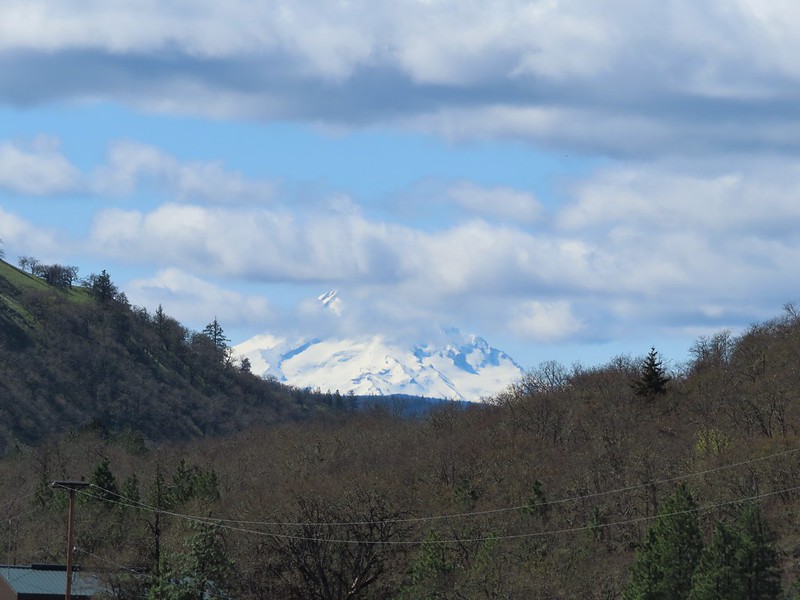 Hood behind some clouds.
Hood behind some clouds. Ground squirrel
Ground squirrel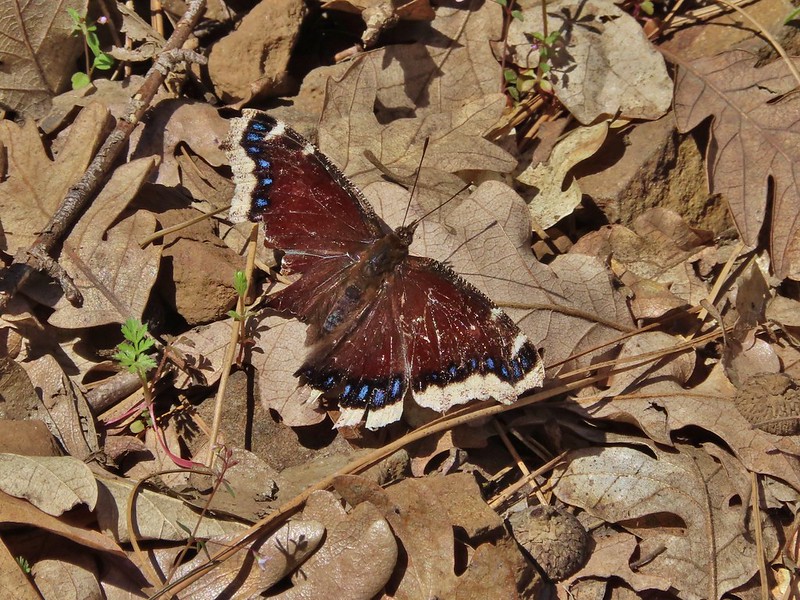 Mourning cloak
Mourning cloak Lizard
Lizard

 Arriving back at the Lyle Trailhead.
Arriving back at the Lyle Trailhead.

 Equestrian Trail at the trailhead.
Equestrian Trail at the trailhead.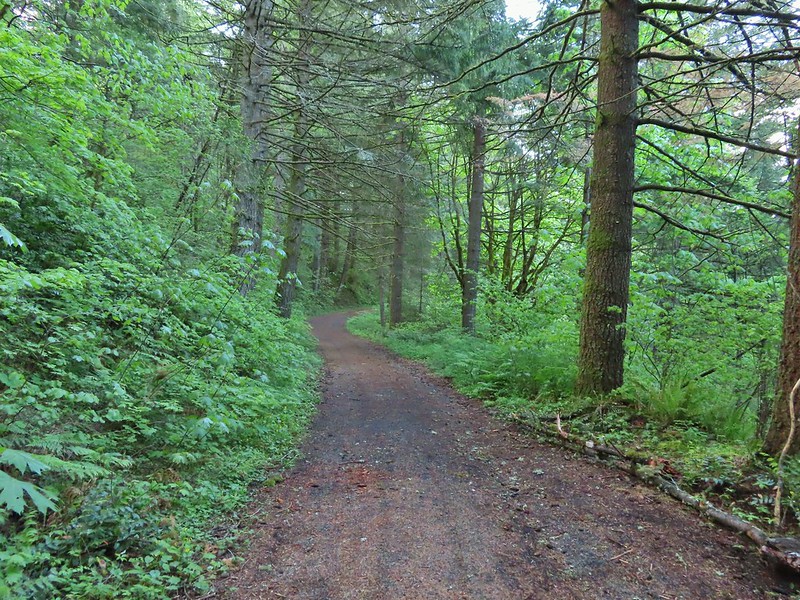 On the old roadbed/Equestrian Trail.
On the old roadbed/Equestrian Trail.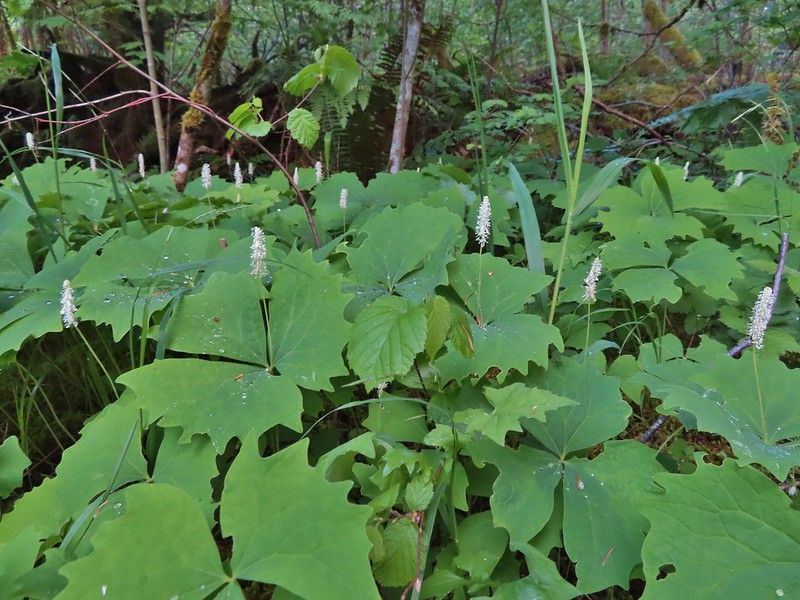 Vanilla leaf
Vanilla leaf Fairy bells
Fairy bells Violets
Violets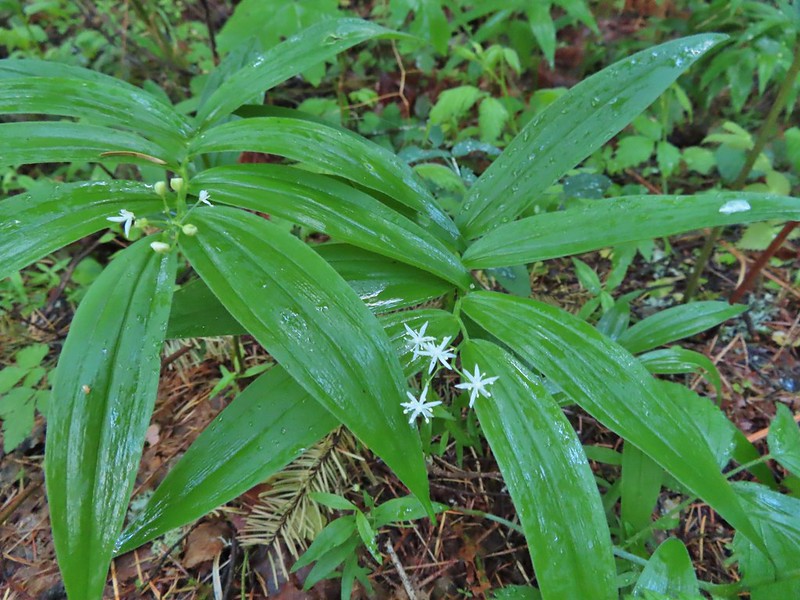 Star-flowered false solomon seal
Star-flowered false solomon seal Youth-on-age
Youth-on-age Possibly a cinquefoil
Possibly a cinquefoil Thimbleberry
Thimbleberry Fringecup
Fringecup At the 4-way jct the Equestrian Trial continued straight with the West Hardy Trail to the left and Lower Loop Trail to the right.
At the 4-way jct the Equestrian Trial continued straight with the West Hardy Trail to the left and Lower Loop Trail to the right.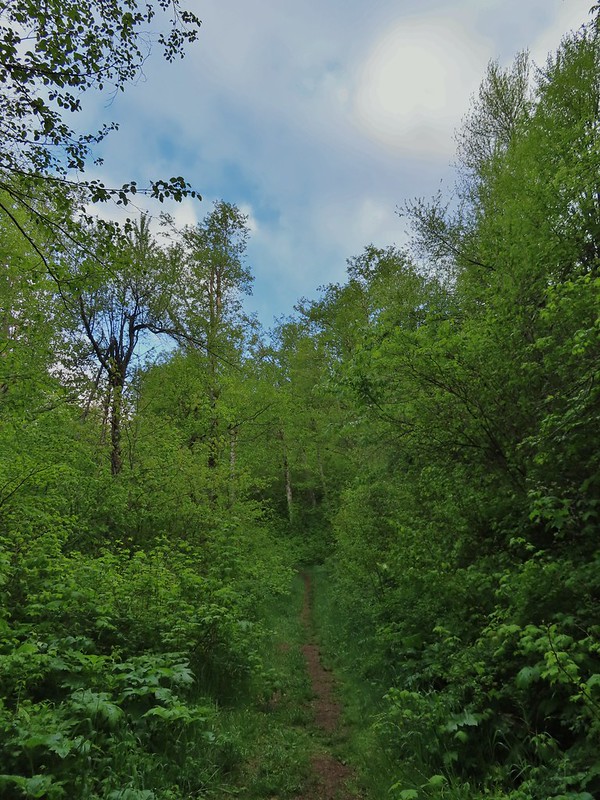

 Salmonberry
Salmonberry False solomon seal
False solomon seal Bleeding heart
Bleeding heart Here come the clouds.
Here come the clouds.

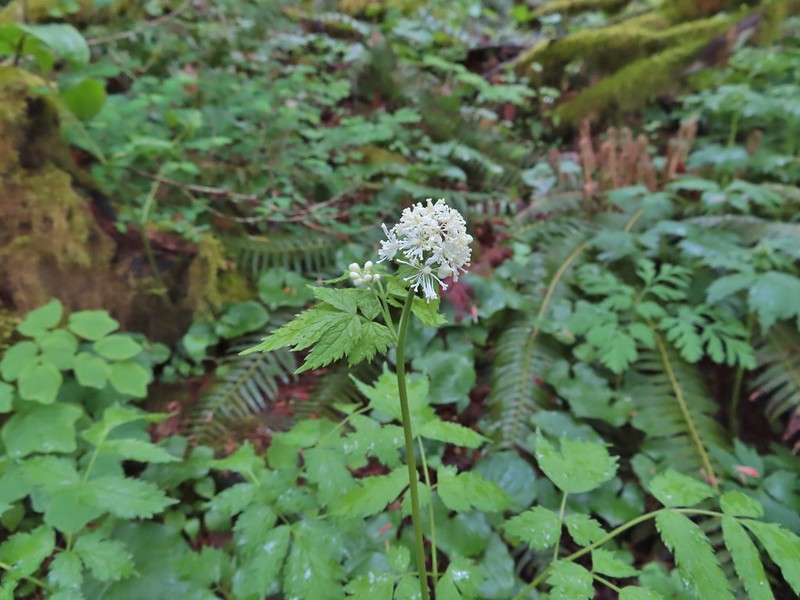 Baneberry
Baneberry Trillium
Trillium Paintbrush
Paintbrush Red flowering currant
Red flowering currant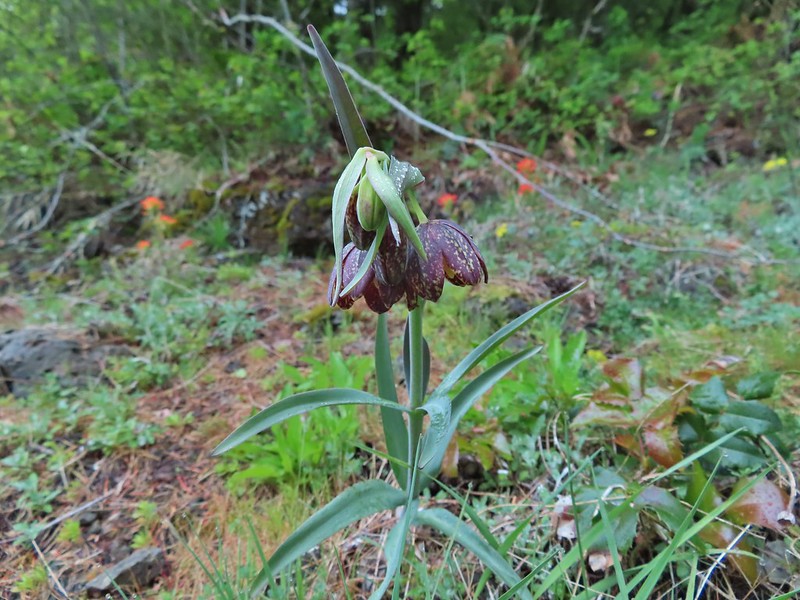 Chocolate lily
Chocolate lily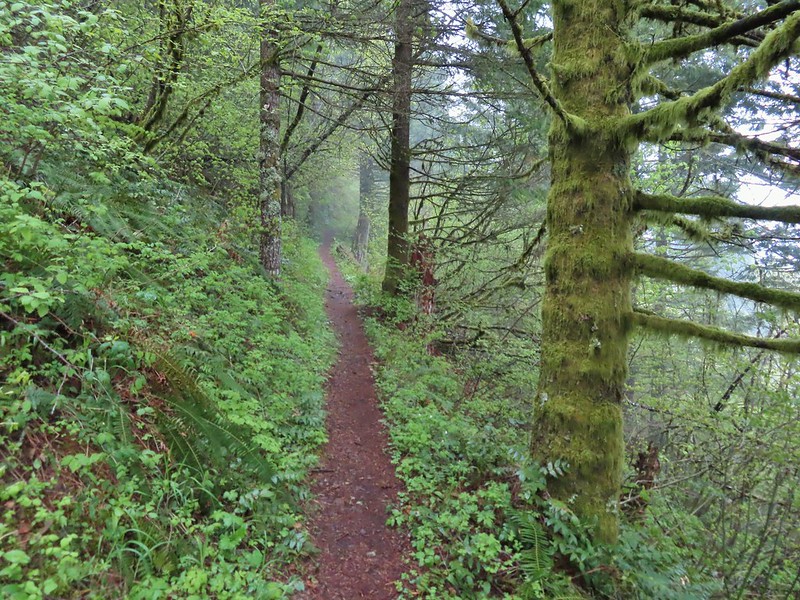
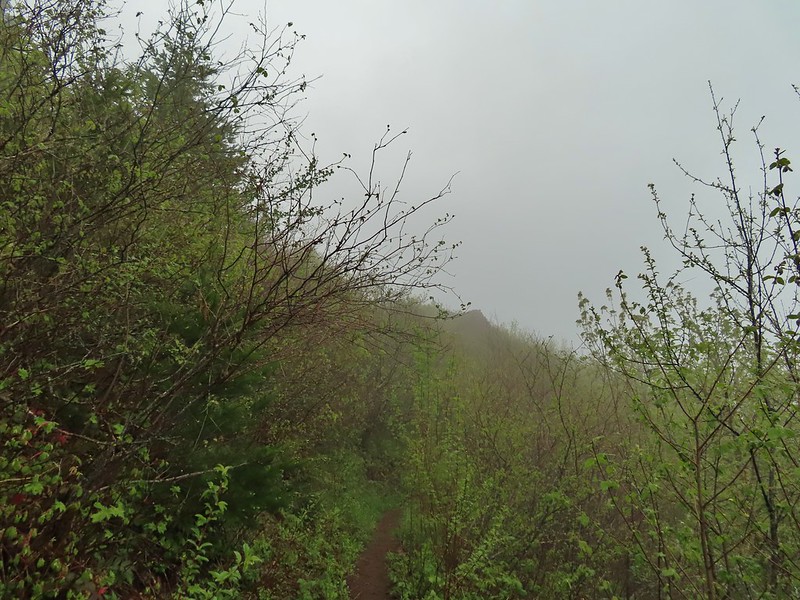
 Anemones
Anemones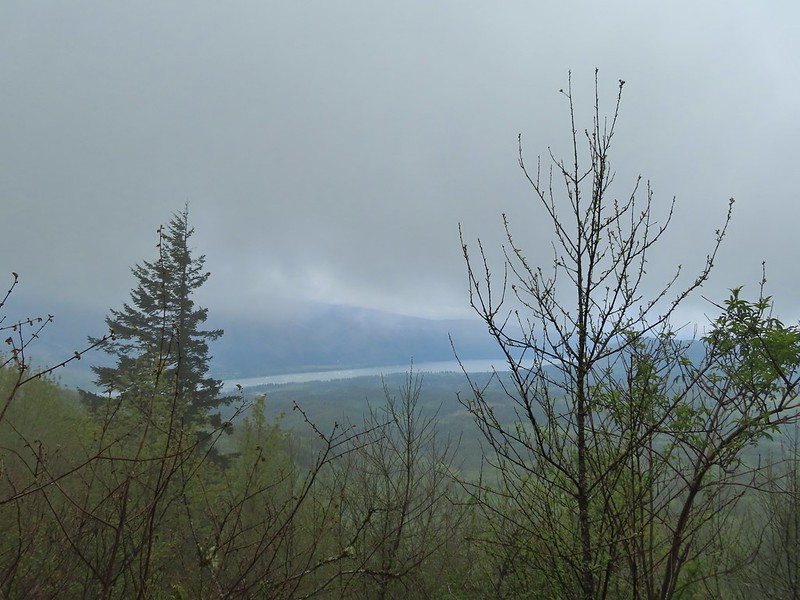 Looking across the Columbia River into Oregon.
Looking across the Columbia River into Oregon. Horsetail Falls (
Horsetail Falls ( Field chickweed and Oregon grape
Field chickweed and Oregon grape Junction at the saddle.
Junction at the saddle.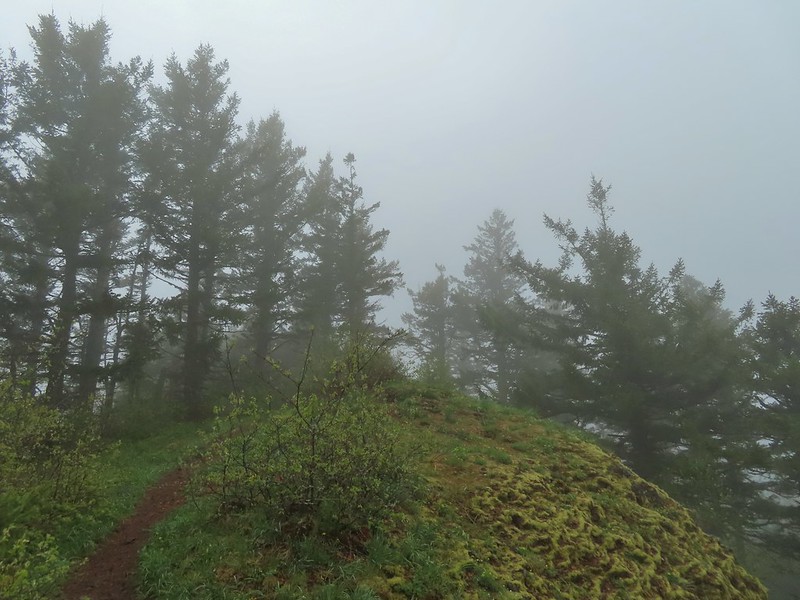
 Glacier lily
Glacier lily
 Trilliums
Trilliums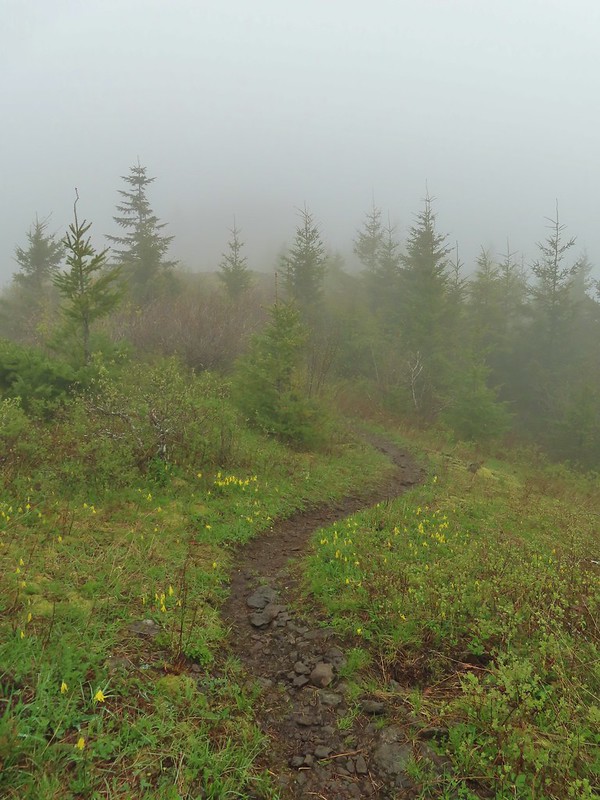 Glacier lilies along the trail.
Glacier lilies along the trail. Another hiker caught up to us at this rock field not far from the high point. It looked like the trail was going across the rocks for a bit and she decided to turn around but after just a few feet the trail resumed behind a bush.
Another hiker caught up to us at this rock field not far from the high point. It looked like the trail was going across the rocks for a bit and she decided to turn around but after just a few feet the trail resumed behind a bush.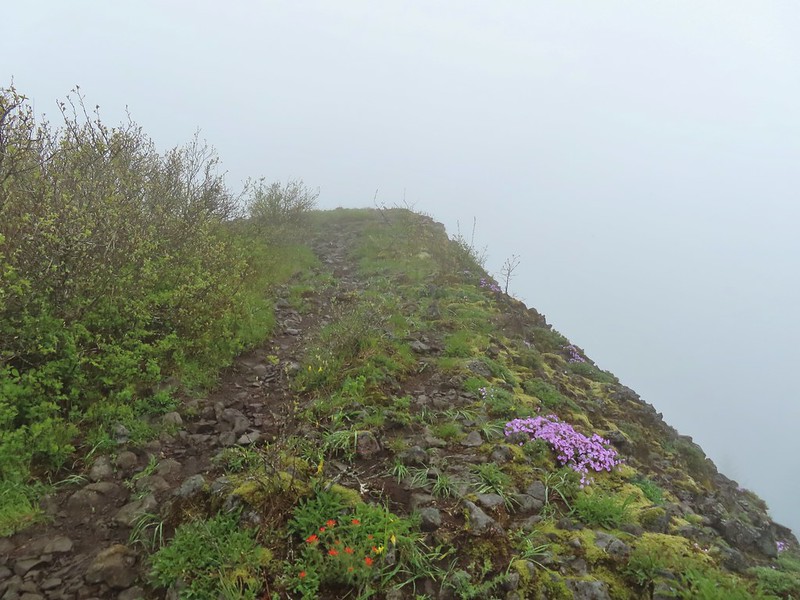
 Phlox
Phlox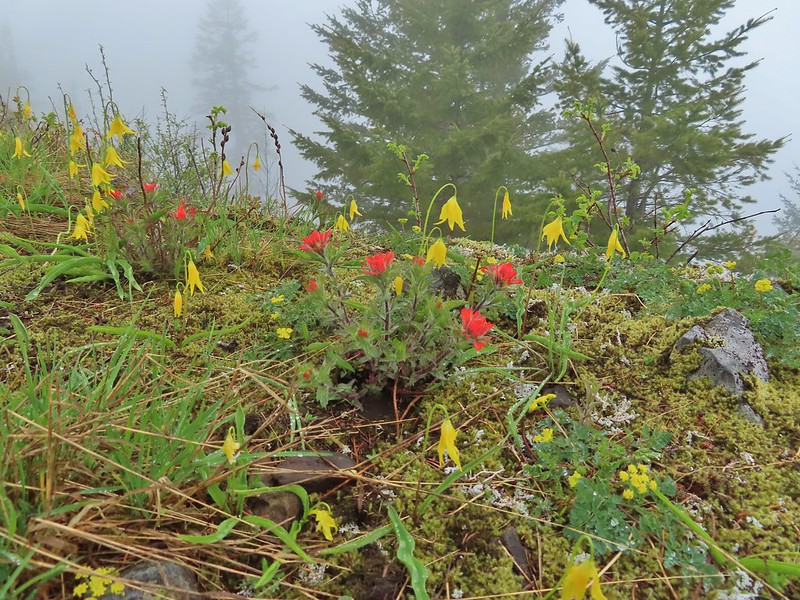 Paintbrush and glacier lilies.
Paintbrush and glacier lilies.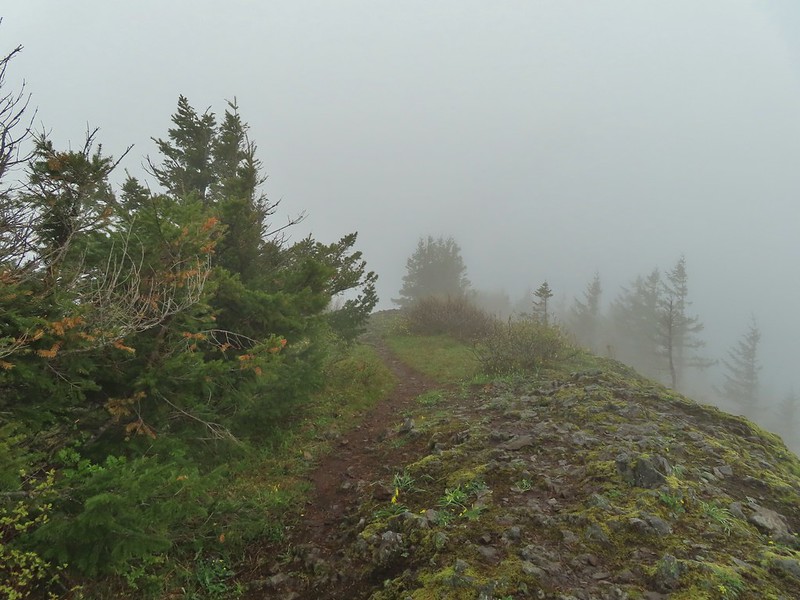 The high point.
The high point. Glacier lilies at the high point.
Glacier lilies at the high point.

 Hamilton Mountain (high point to the right) and the Columbia River.
Hamilton Mountain (high point to the right) and the Columbia River. Bonneville Dam and the Hamilton Mountain Trail crossing The Saddle.
Bonneville Dam and the Hamilton Mountain Trail crossing The Saddle.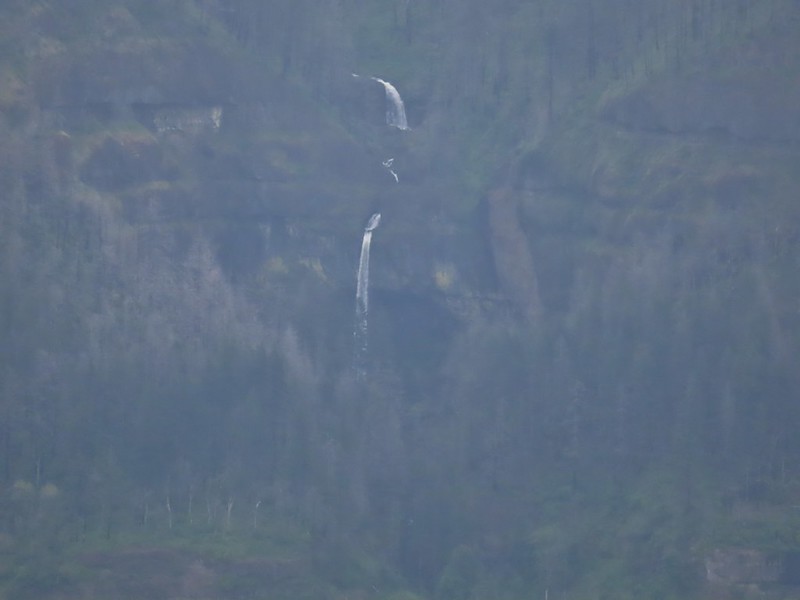 Upper McCord Creek Falls (
Upper McCord Creek Falls (
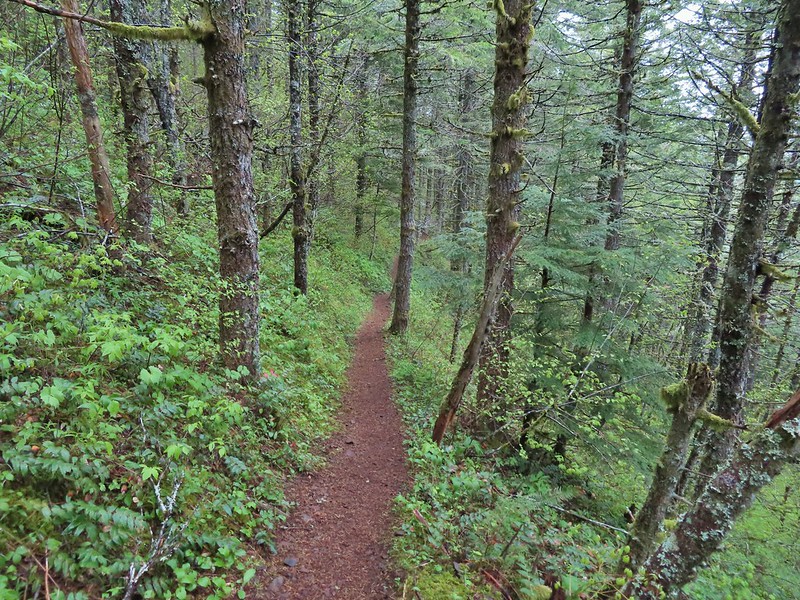
 Squirrel
Squirrel Snail
Snail

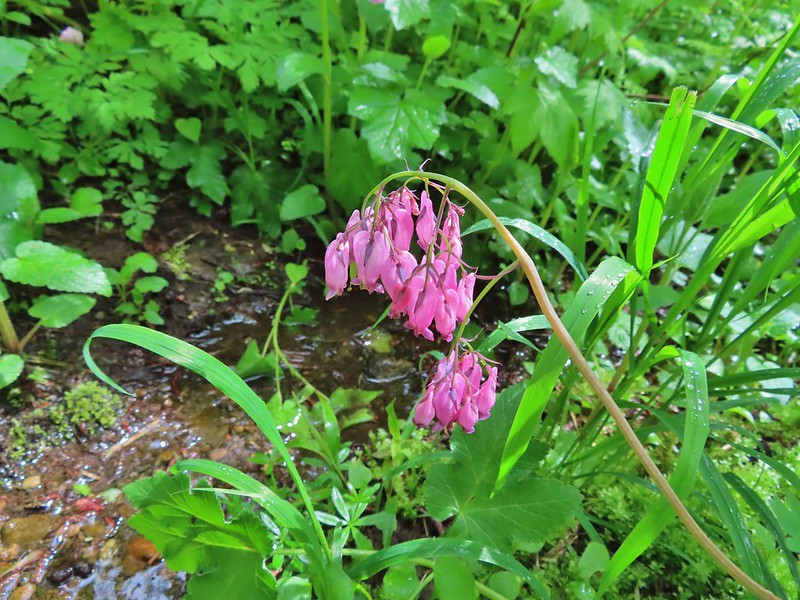 Bleeding heart along a little stream.
Bleeding heart along a little stream. False lily-of-the-valley getting ready to bloom.
False lily-of-the-valley getting ready to bloom.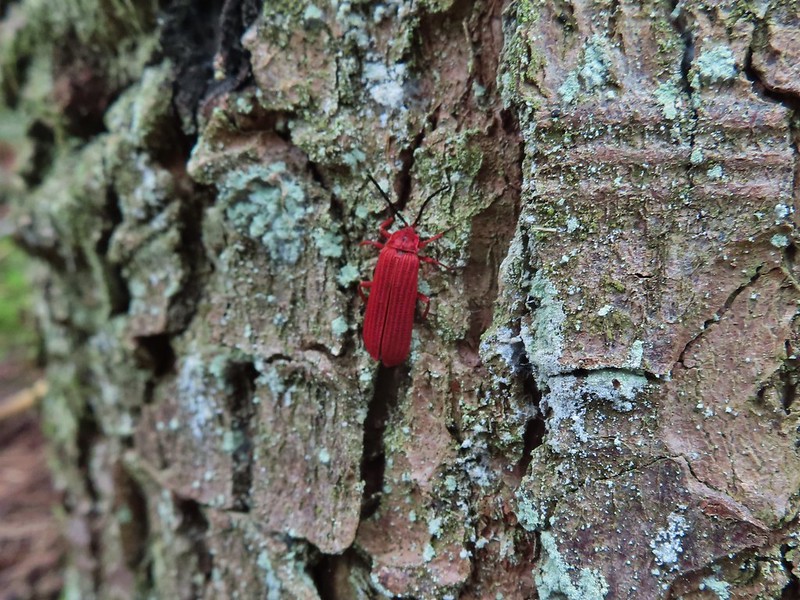 Possibly a Dictyoptera aurora (Golden net-winged beetle)
Possibly a Dictyoptera aurora (Golden net-winged beetle)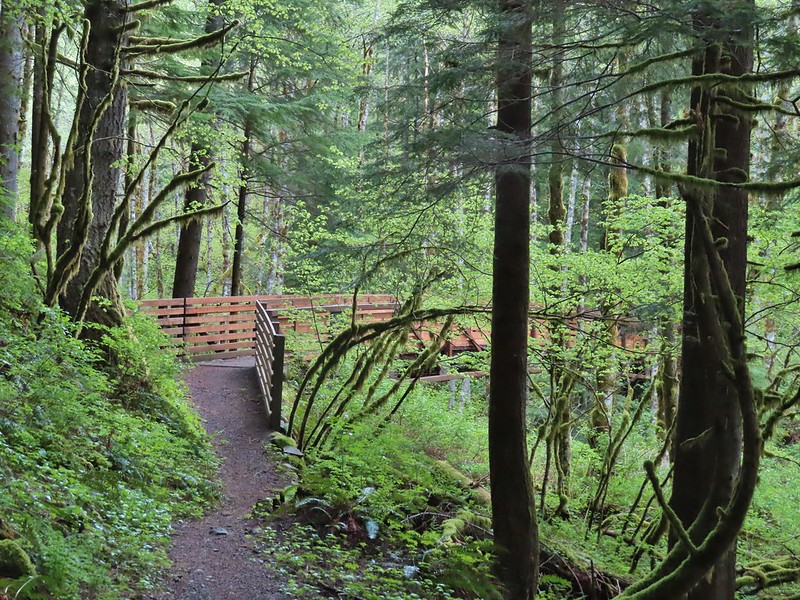
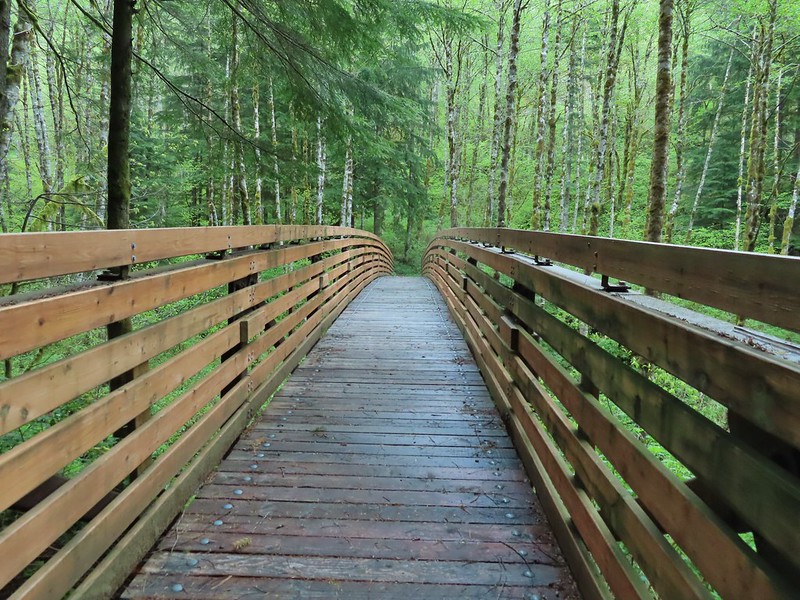

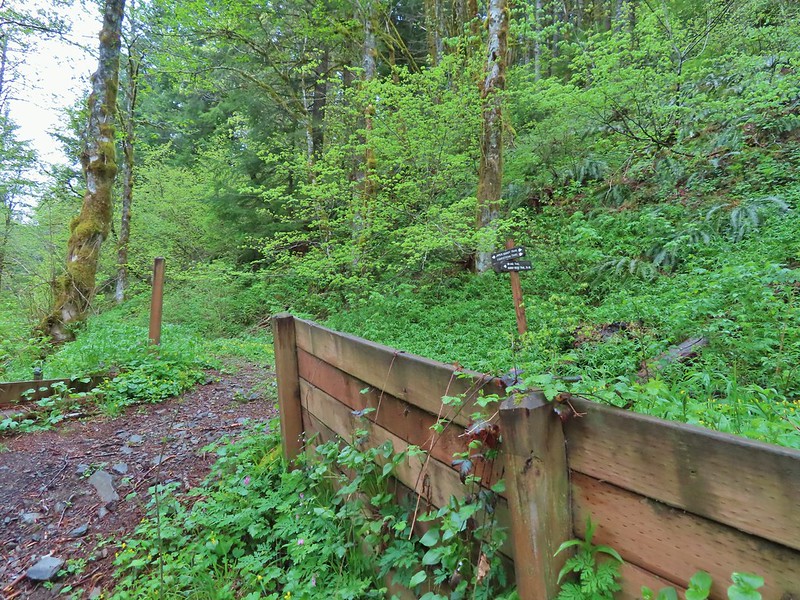

 Hardy Ridge from the Upper Hardy Trail.
Hardy Ridge from the Upper Hardy Trail. The left fork would have been slightly longer by leading us around the back side of a knoll and making a 180 degree turn following the east side of the ridge toward The Saddle.
The left fork would have been slightly longer by leading us around the back side of a knoll and making a 180 degree turn following the east side of the ridge toward The Saddle.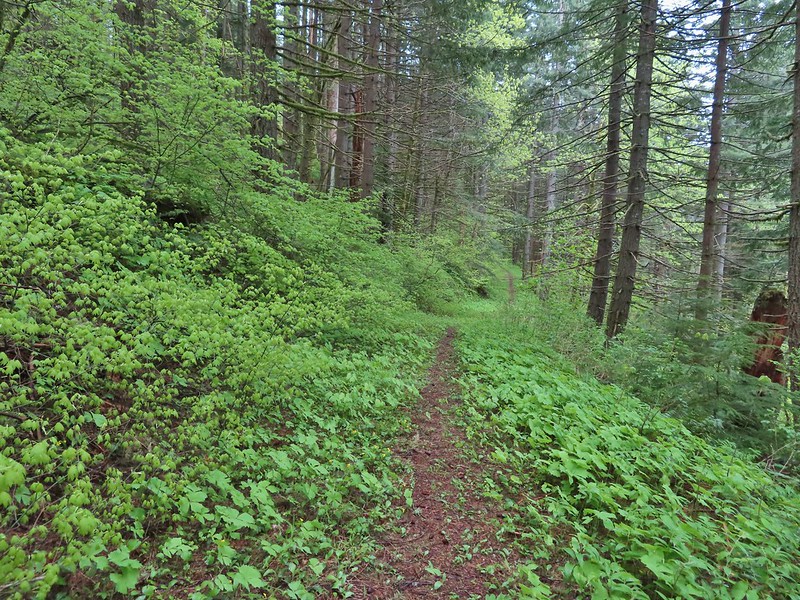 We turned right opting for the slightly shorter route to The Saddle.
We turned right opting for the slightly shorter route to The Saddle.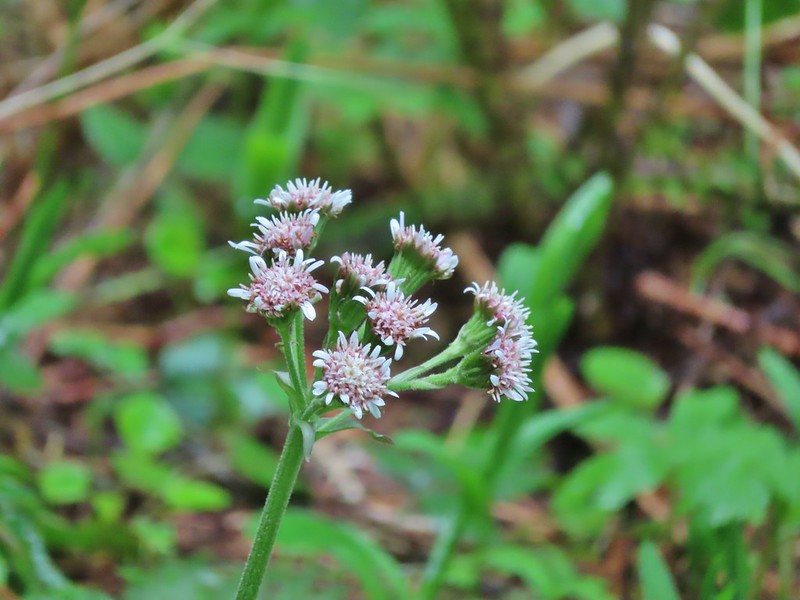 Coltsfoot
Coltsfoot Southern junction of the two forks of the Upper Hardy Trail.
Southern junction of the two forks of the Upper Hardy Trail.
 Hikers coming down from Hamilton Mountain.
Hikers coming down from Hamilton Mountain.

 Dons Cutoff Trail nearing the Upper Hardy Trail.
Dons Cutoff Trail nearing the Upper Hardy Trail. Upper Hardy Trail
Upper Hardy Trail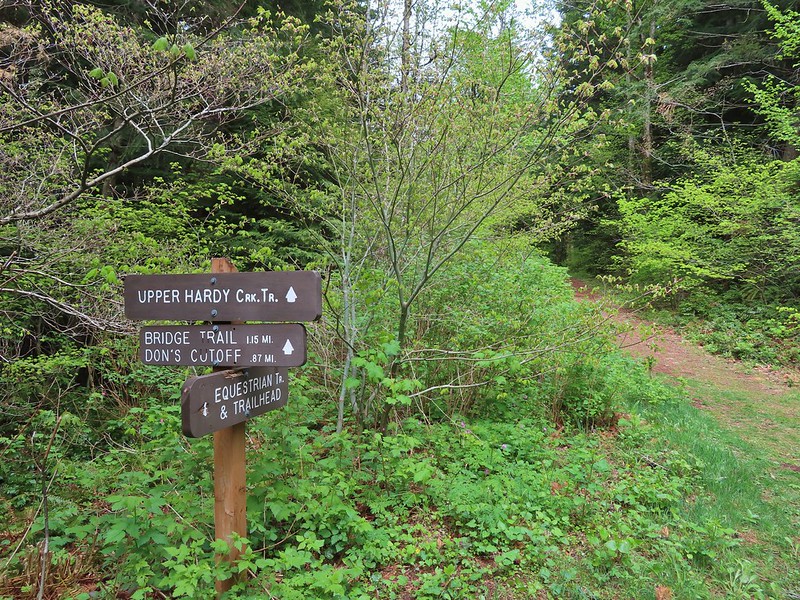
 Equestrian Trail
Equestrian Trail Hardy Creek
Hardy Creek
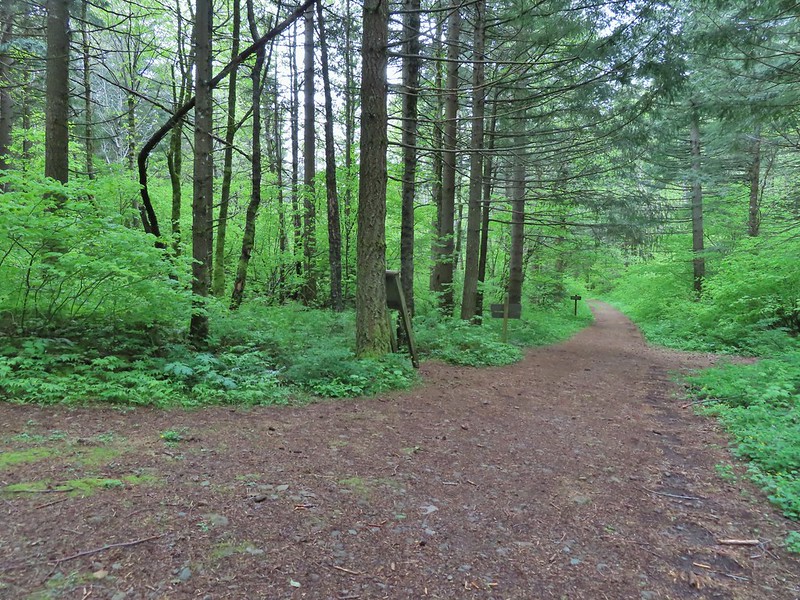

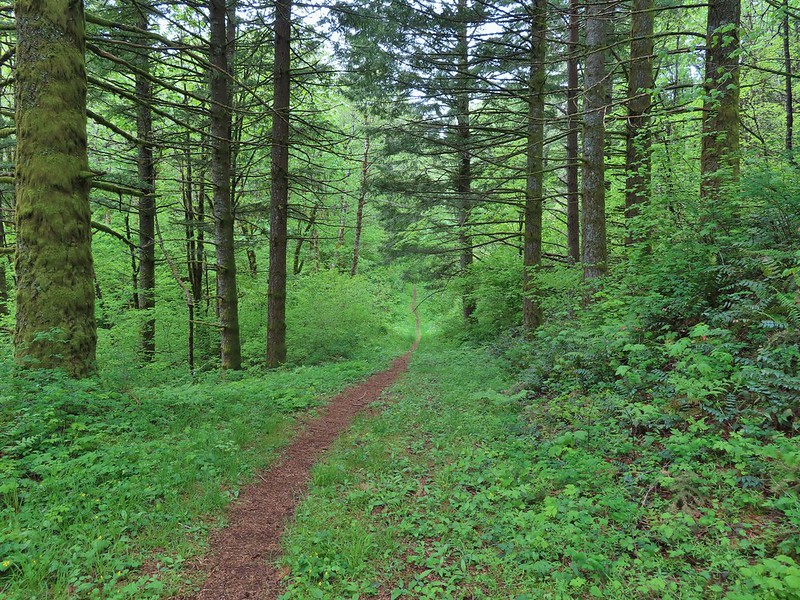


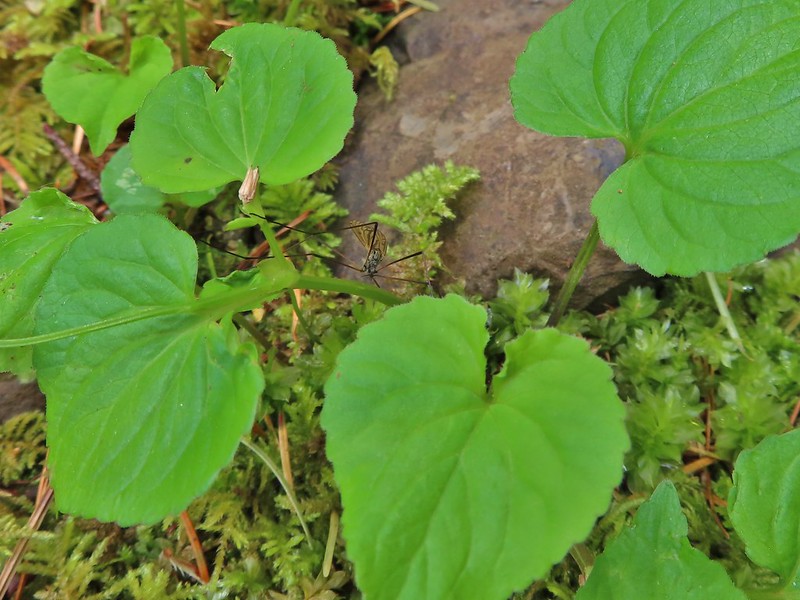 Spotted this guy while I was photographing the slug above. Not sure if it’s a crane fly or ?
Spotted this guy while I was photographing the slug above. Not sure if it’s a crane fly or ?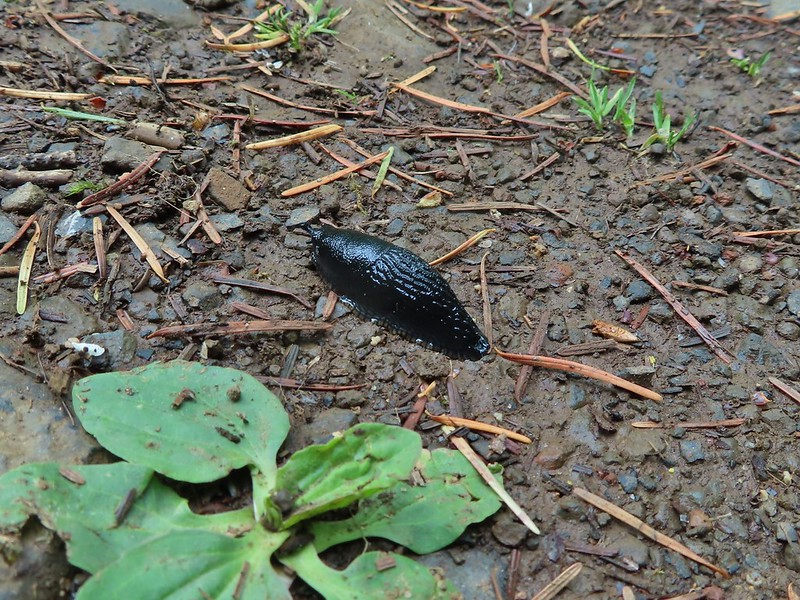

 Mt. Hood from the trailhead.
Mt. Hood from the trailhead.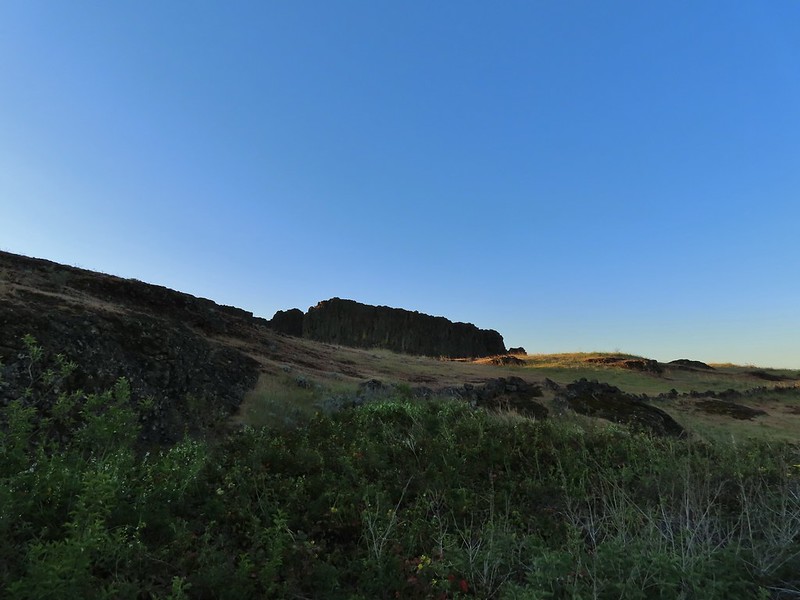
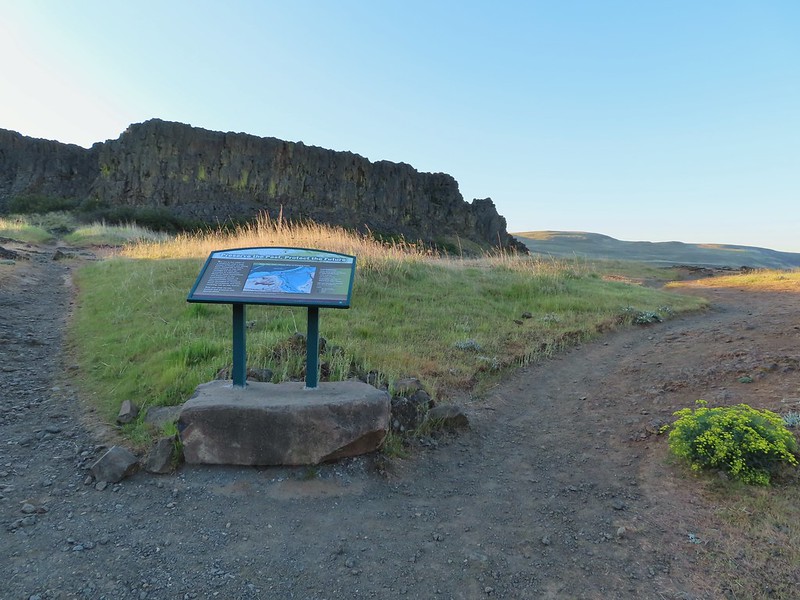
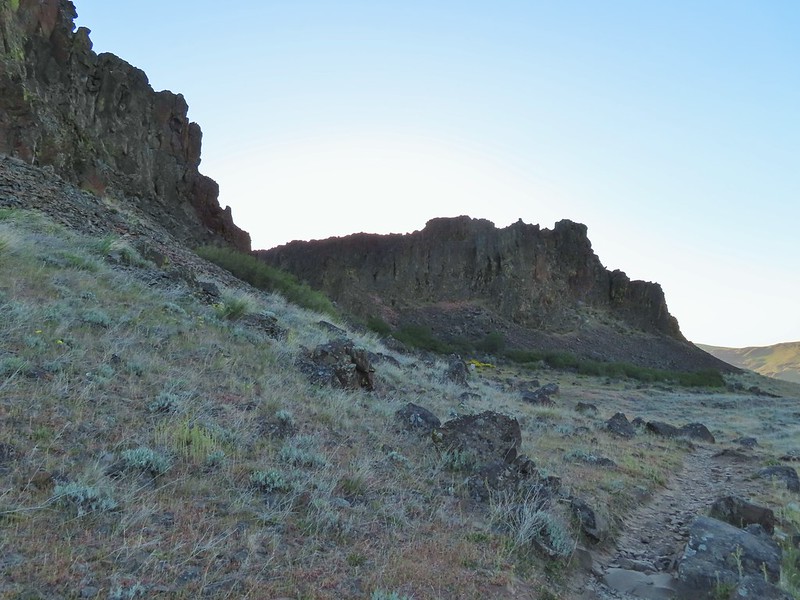
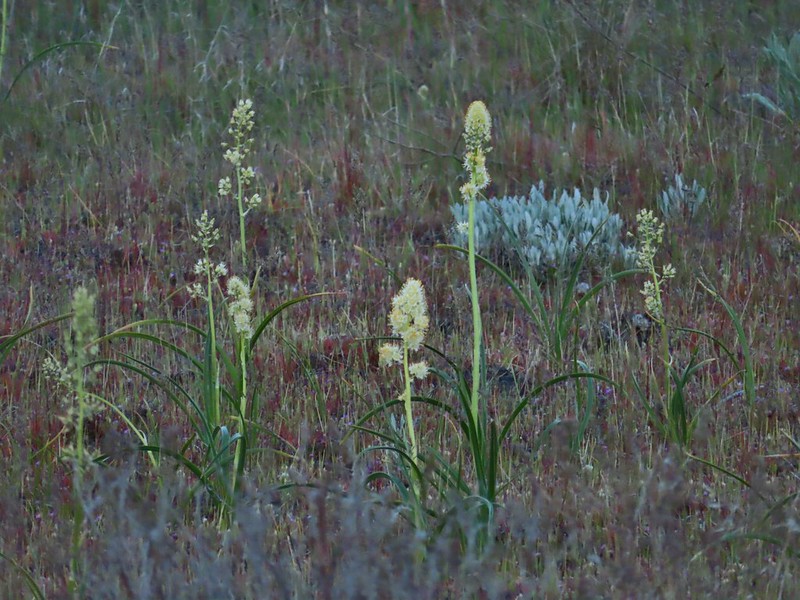 Death camas
Death camas Western stoneseed
Western stoneseed Fiddleneck
Fiddleneck Large-flower tritelia
Large-flower tritelia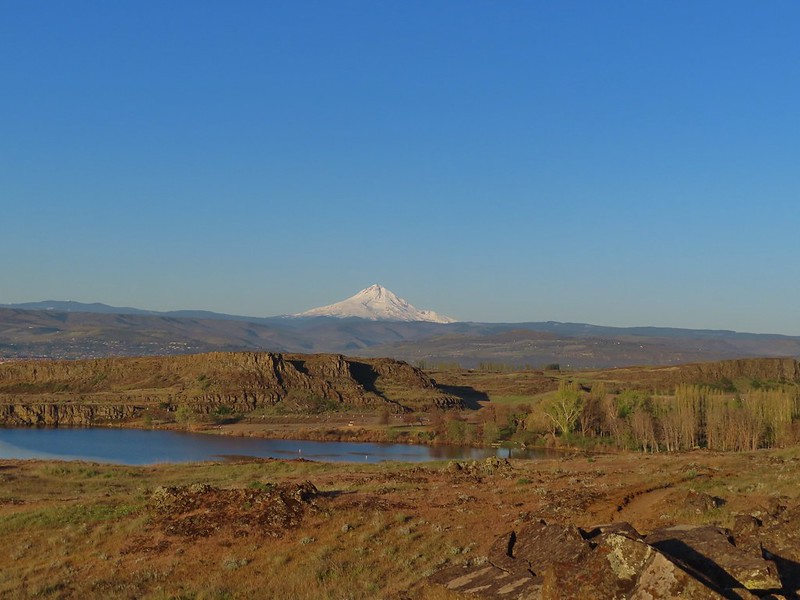 Mt. Hood beyond Horsethief Lake
Mt. Hood beyond Horsethief Lake Standing at the fence looking east.
Standing at the fence looking east. Wren
Wren Horsethief Butte
Horsethief Butte Lupine
Lupine
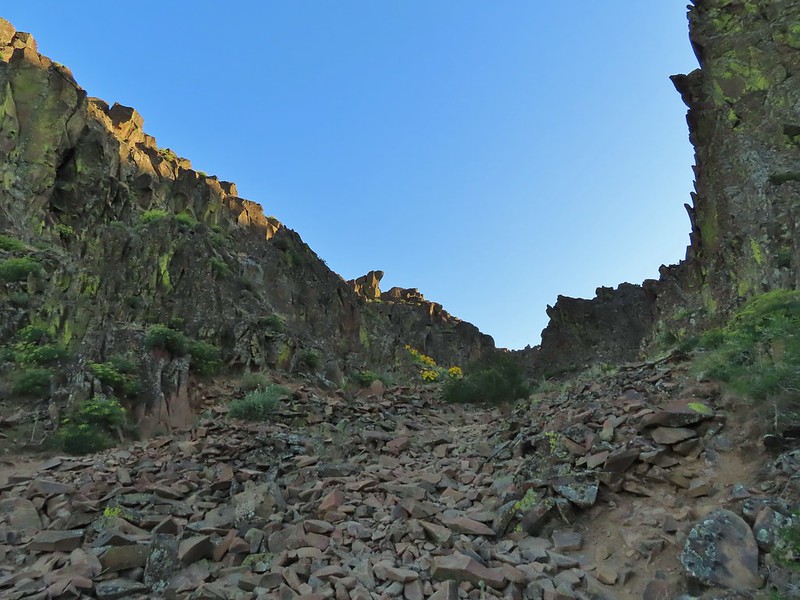


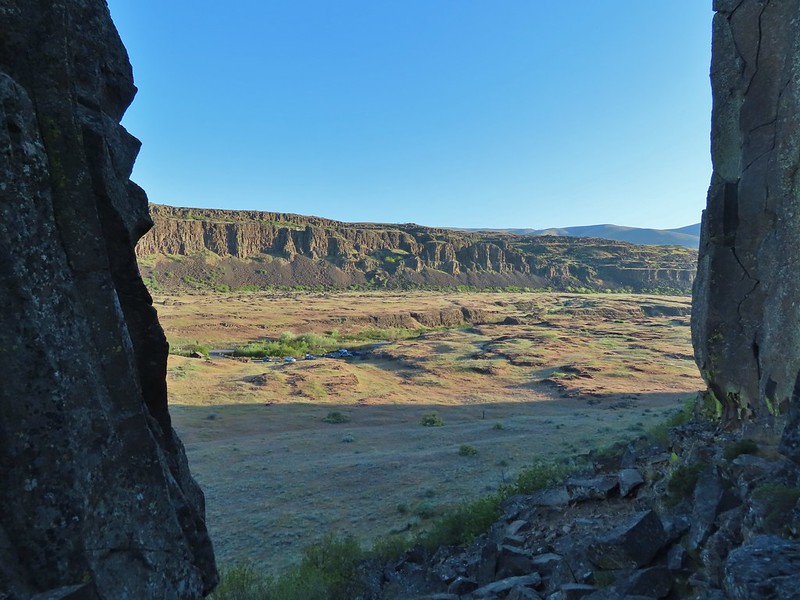

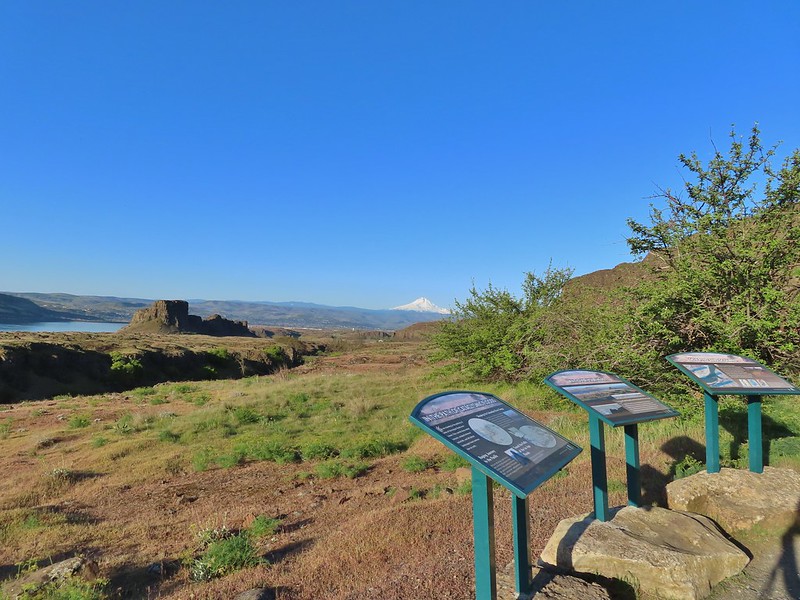 Horsethief Butte and Mt. Hood from the viewpoint.
Horsethief Butte and Mt. Hood from the viewpoint.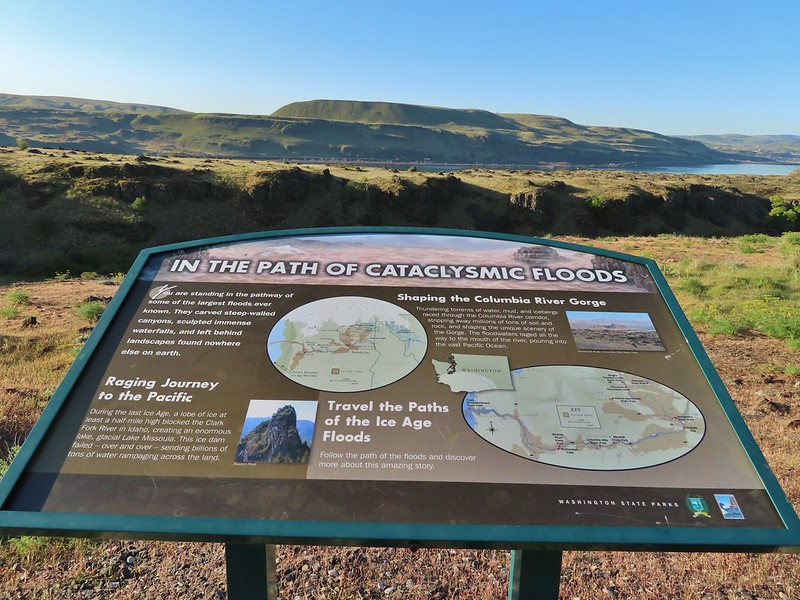

 Purple cushion fleabane
Purple cushion fleabane Balsamroot
Balsamroot
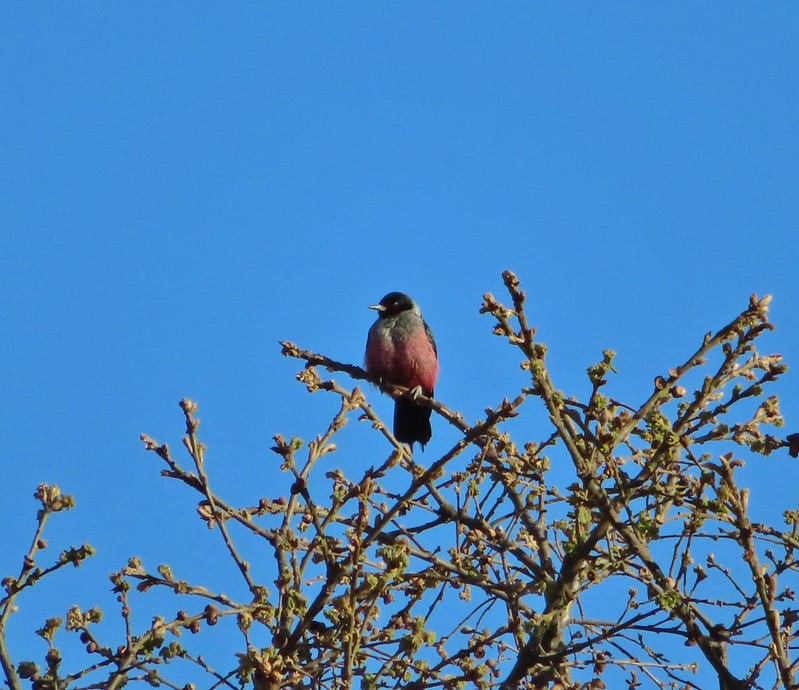

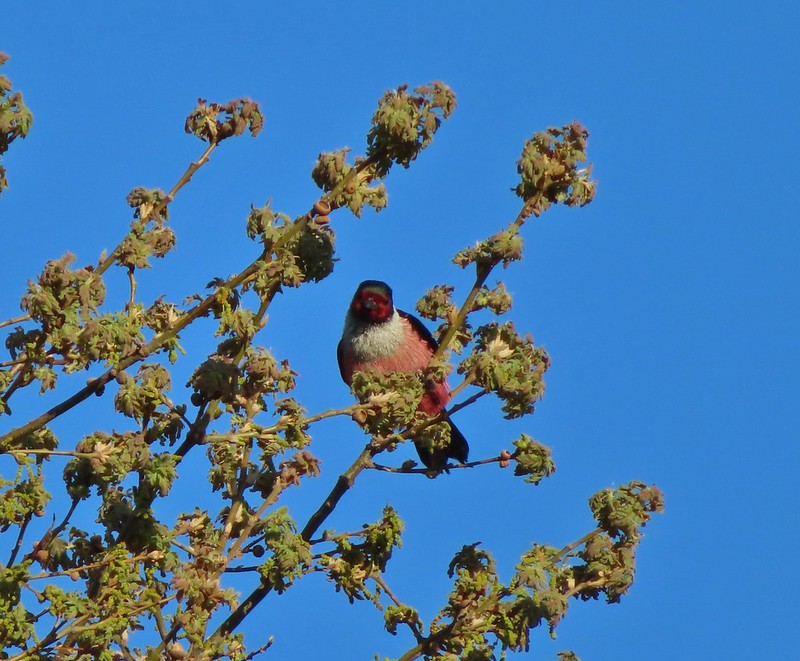
 Western bluebird
Western bluebird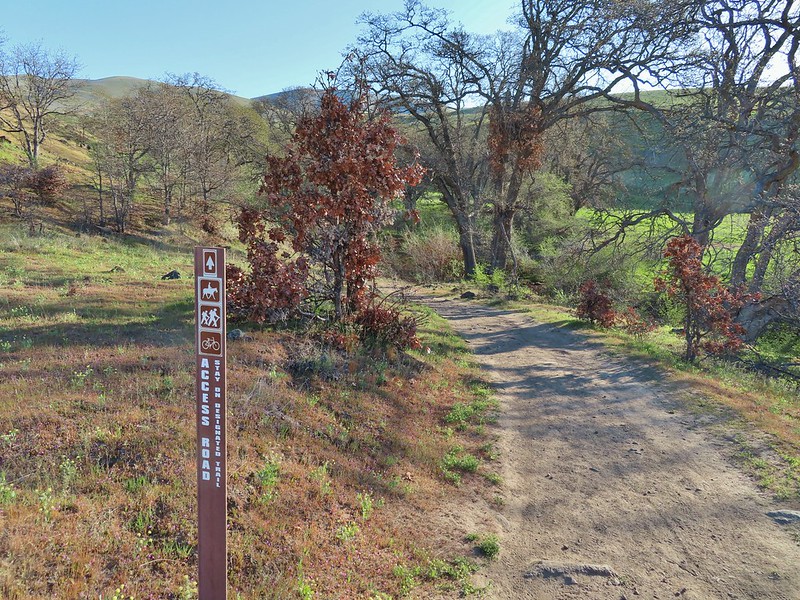
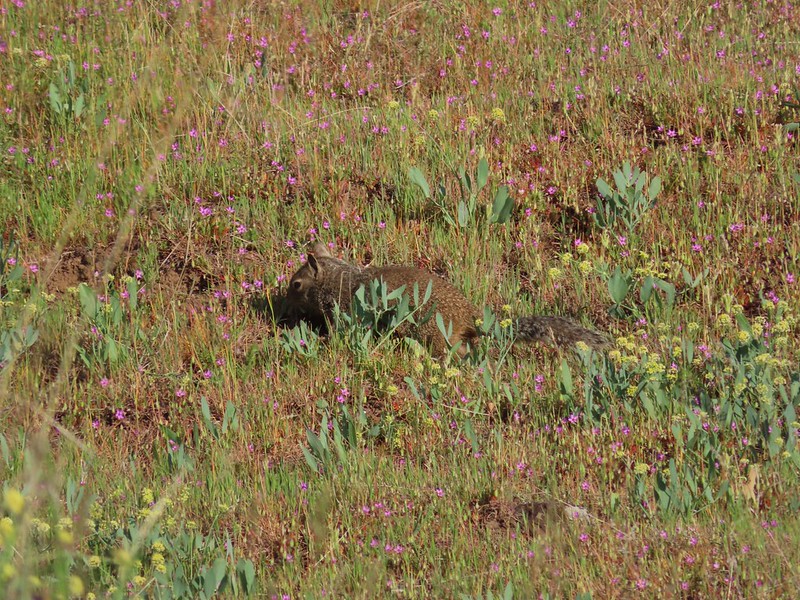 Ground squirrel
Ground squirrel


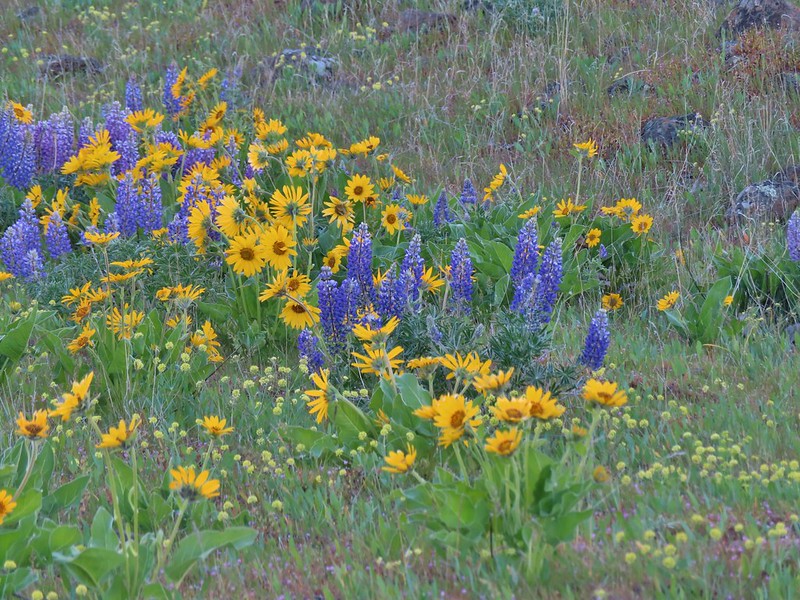 Lupine, balsamroot and parsley
Lupine, balsamroot and parsley The Crawford Ranch Complex ahead to the left.
The Crawford Ranch Complex ahead to the left. Phlox
Phlox
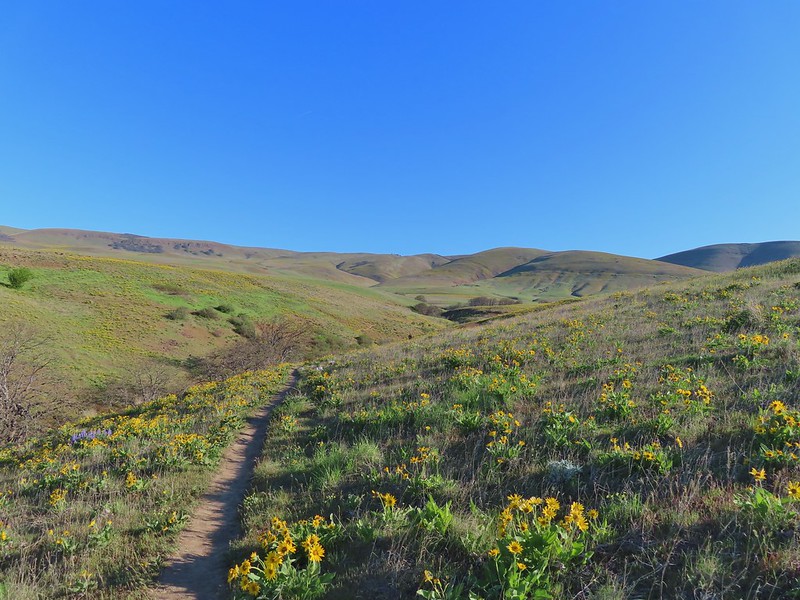


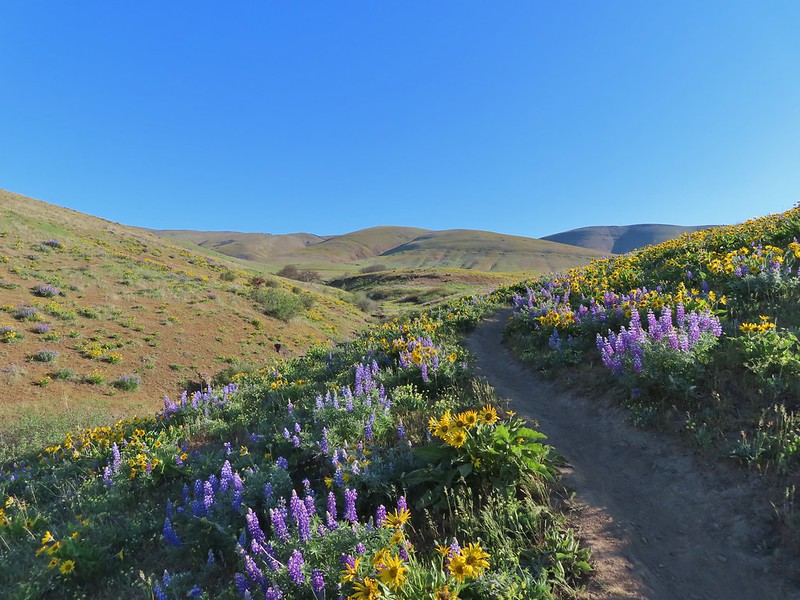



 Approaching the fence line.
Approaching the fence line.
 Yellow-rumped warbler
Yellow-rumped warbler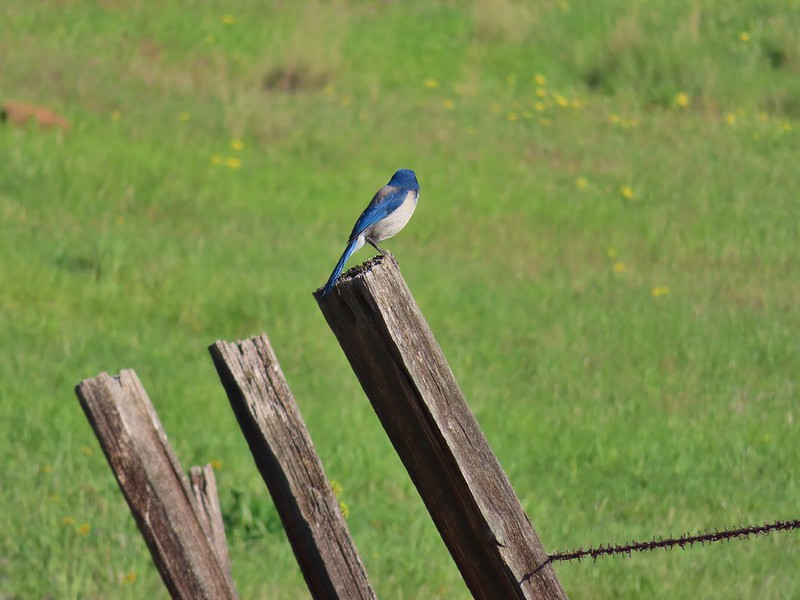 Back of a scrub jay
Back of a scrub jay
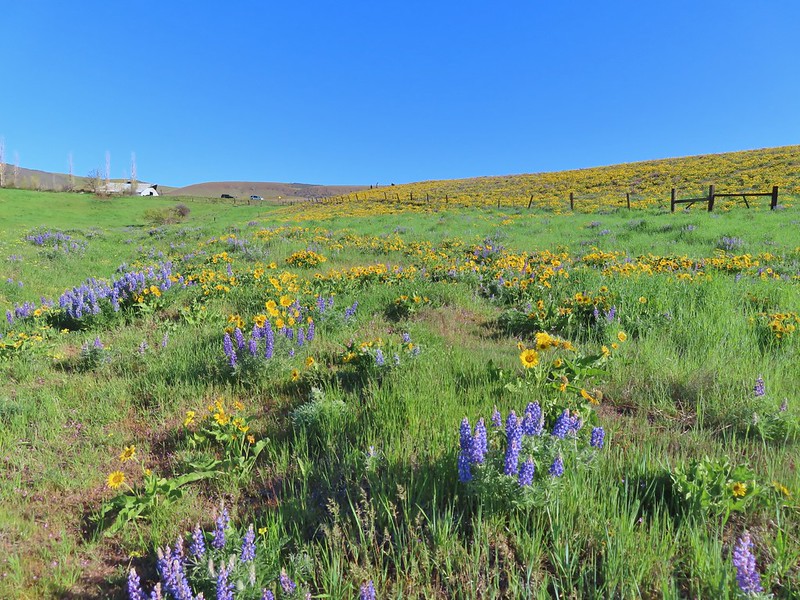
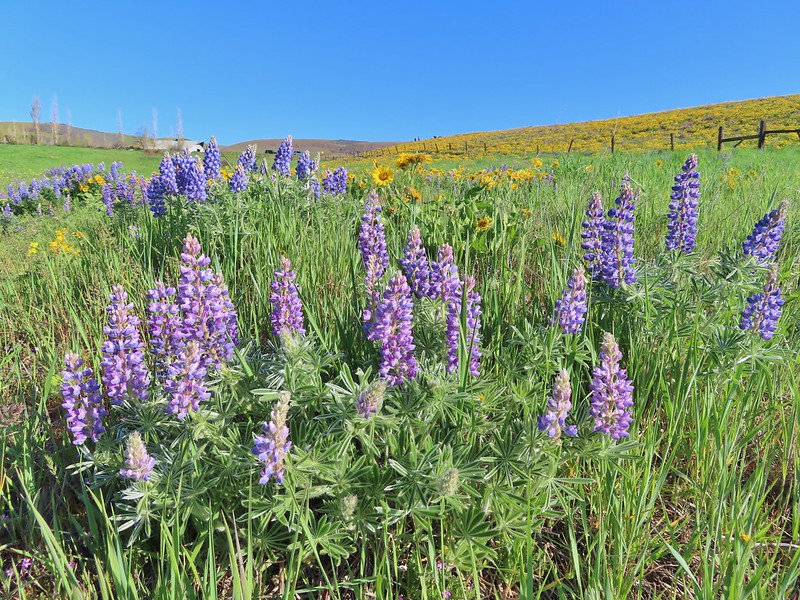


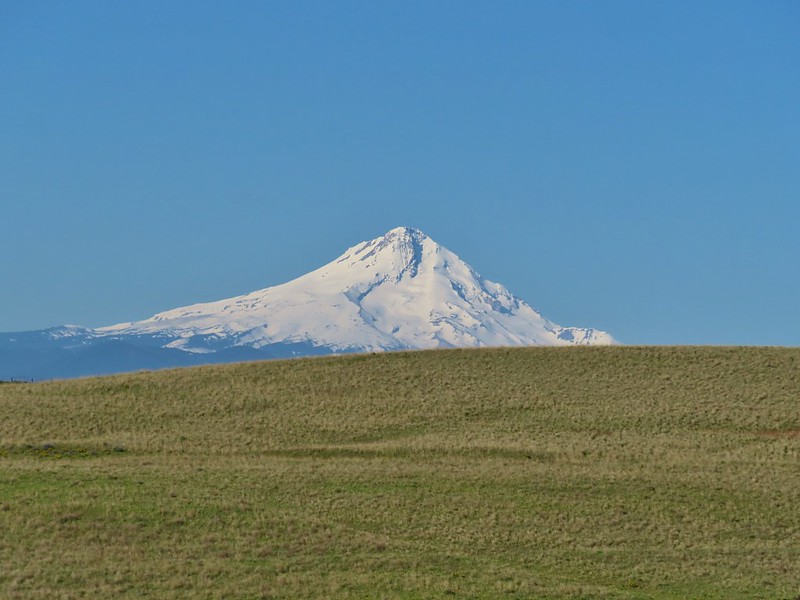 Mt. Hood
Mt. Hood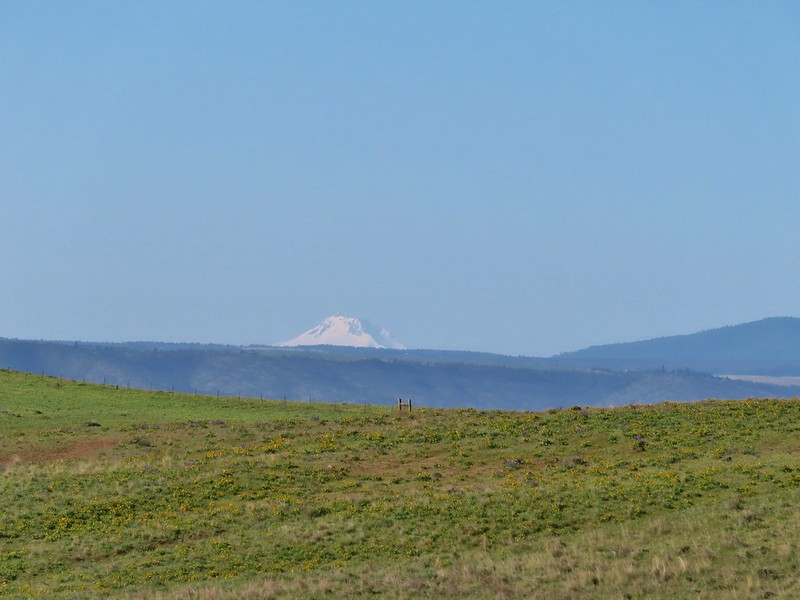 Mt. Jefferson
Mt. Jefferson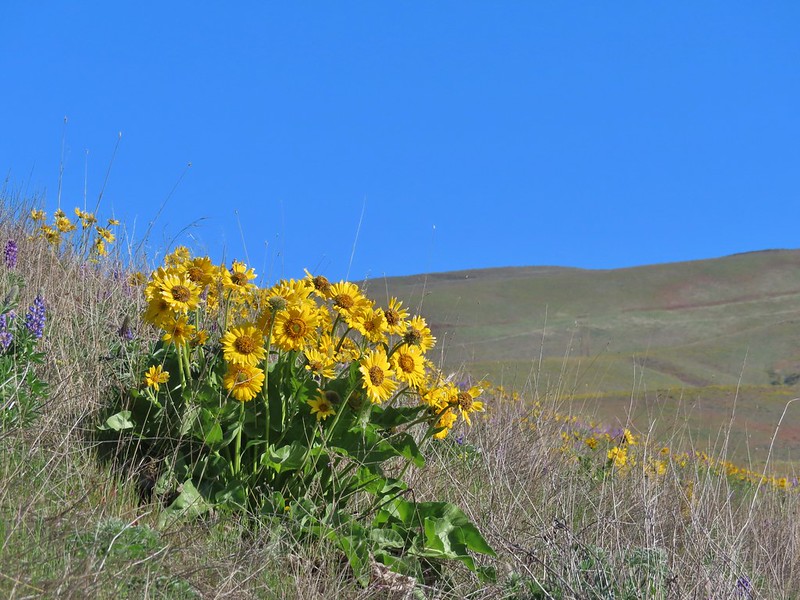

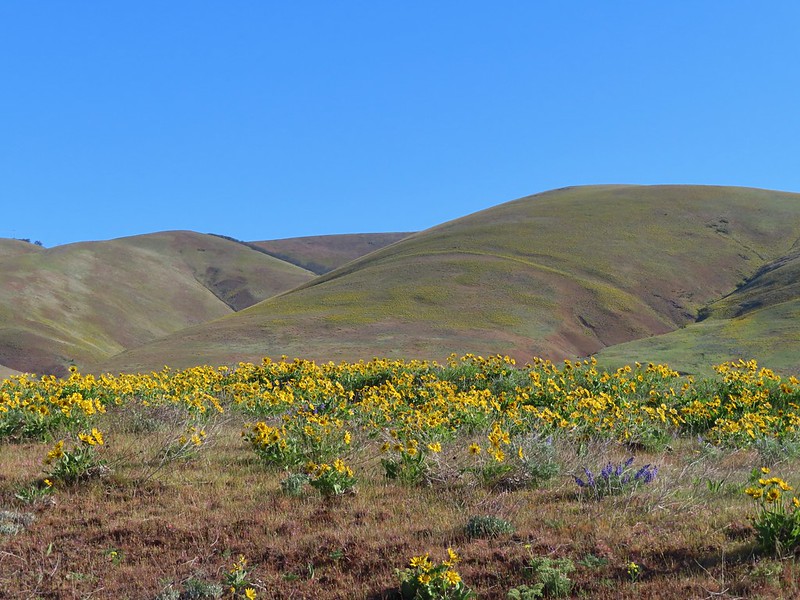


 Yakima milk-vetch
Yakima milk-vetch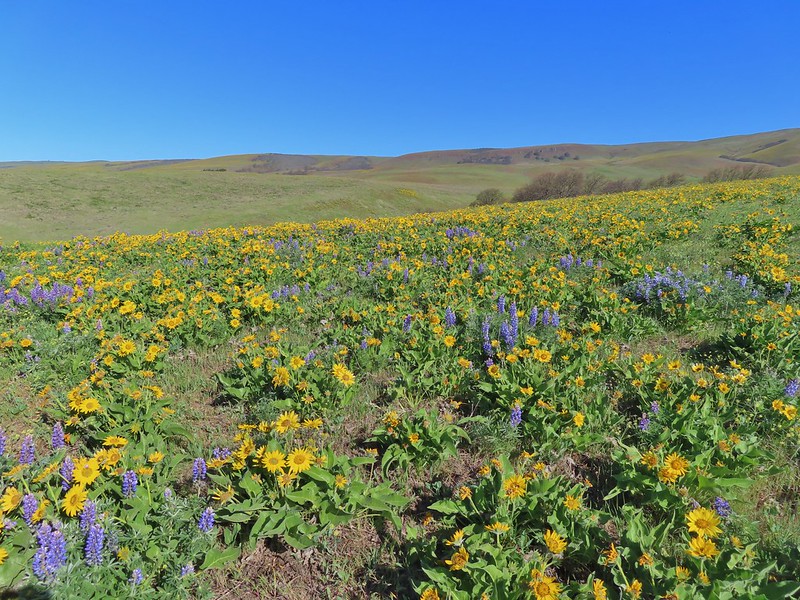


 The Columbia River, Horsethief Butte, and Mt. Hood
The Columbia River, Horsethief Butte, and Mt. Hood Death camas
Death camas Large head clover
Large head clover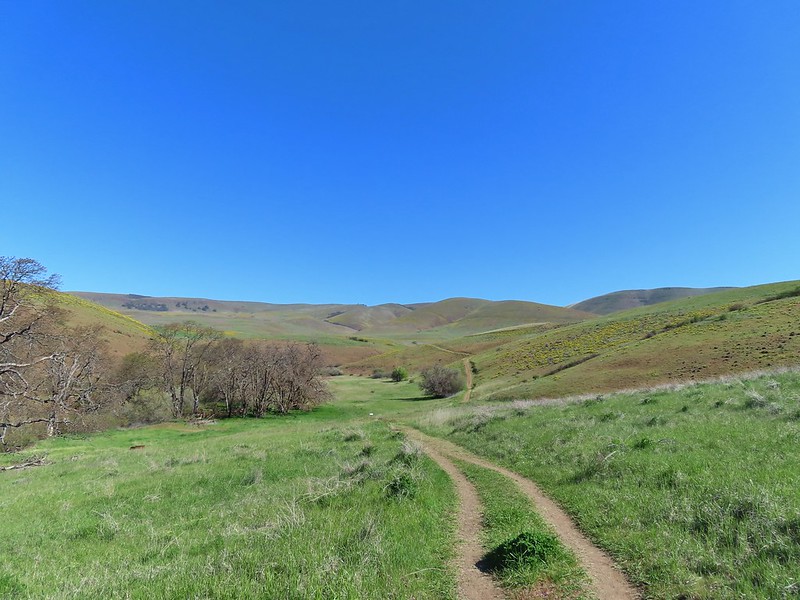 Approaching the junction.
Approaching the junction. Hawk watching all the hikers.
Hawk watching all the hikers.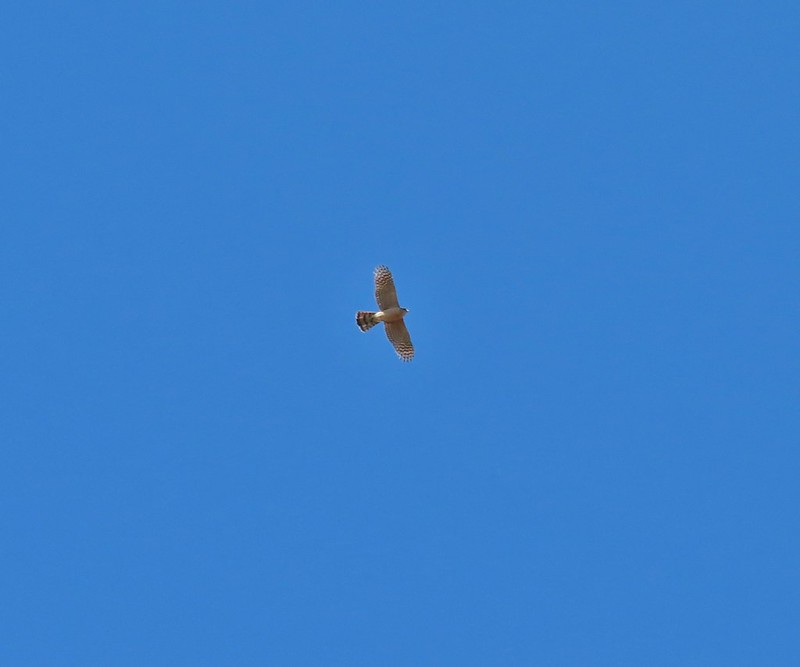 A different hawk? watching the goings on.
A different hawk? watching the goings on. Western fence lizard watching everything.
Western fence lizard watching everything. Poppy, manroot, and red-stemmed storksbill
Poppy, manroot, and red-stemmed storksbill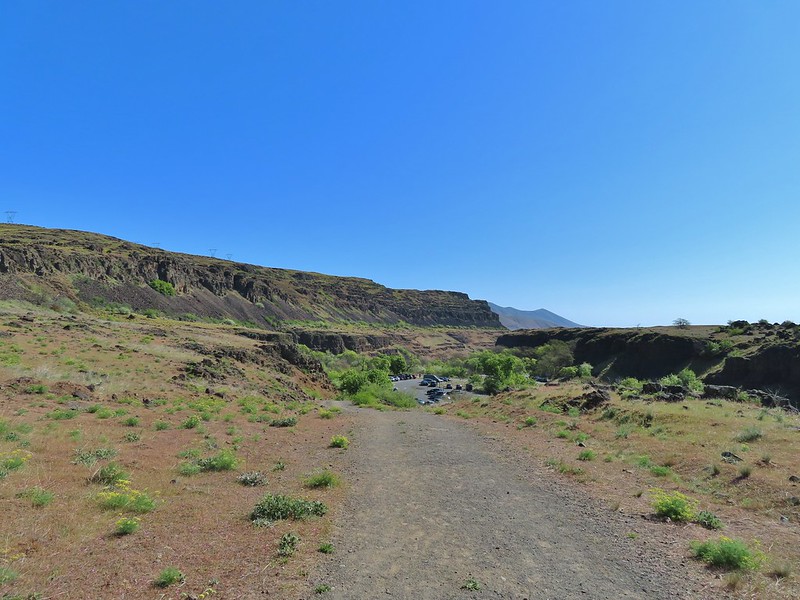 The crowded trailhead
The crowded trailhead

 While both were part of the Crawford Ranch, Stacker Butte is not part of the Columbia Hills State Park but is part of the Columbia Hills Natural Area Preserve.
While both were part of the Crawford Ranch, Stacker Butte is not part of the Columbia Hills State Park but is part of the Columbia Hills Natural Area Preserve.
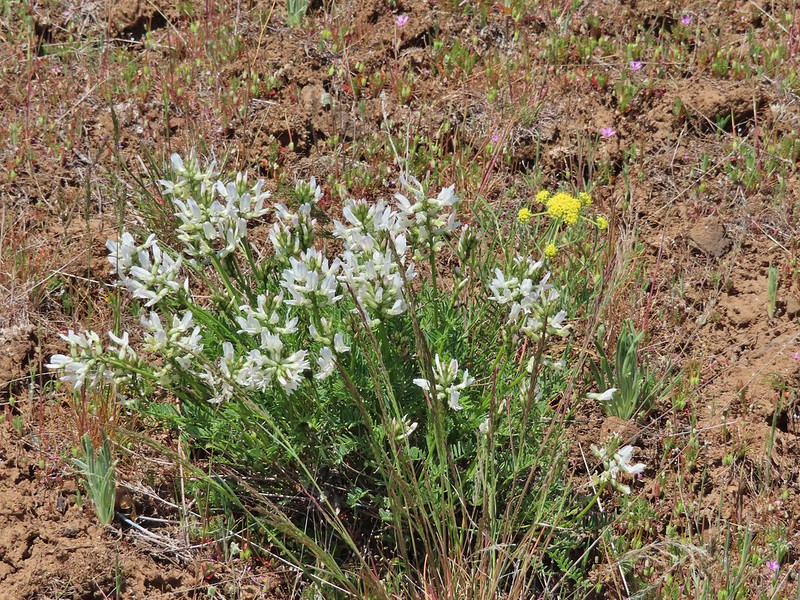 Yakima milk-vetch
Yakima milk-vetch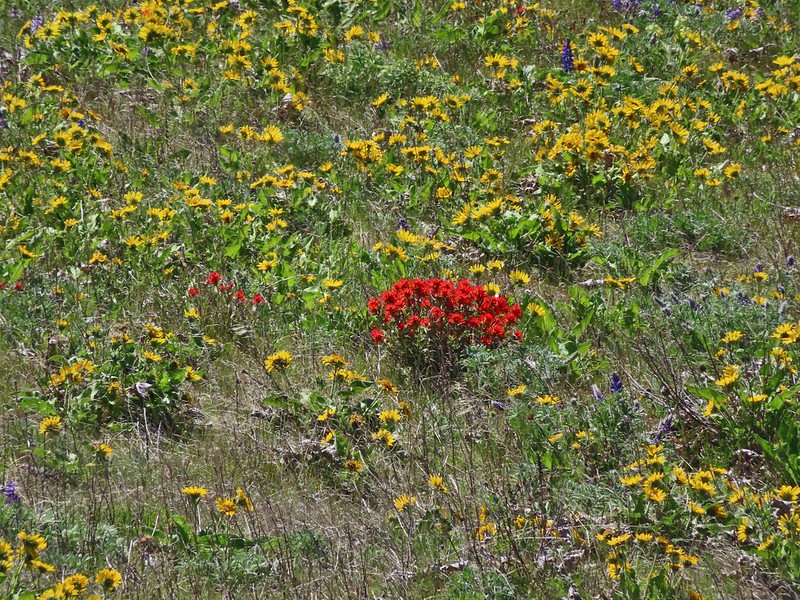 Paintbrush amid the balsamroot.
Paintbrush amid the balsamroot.
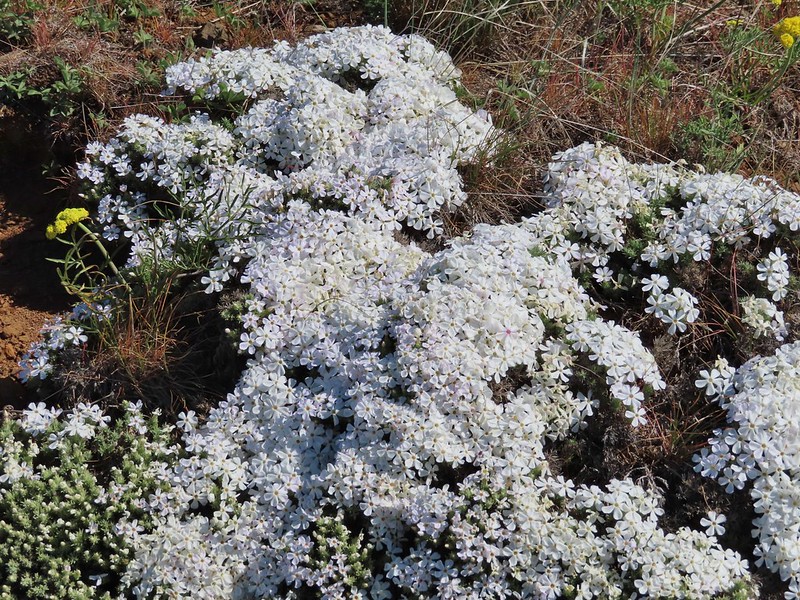 Phlox
Phlox
 Big-seed biscuitroot
Big-seed biscuitroot Sicklepod rockcress
Sicklepod rockcress
 Sagebrush false dandelions
Sagebrush false dandelions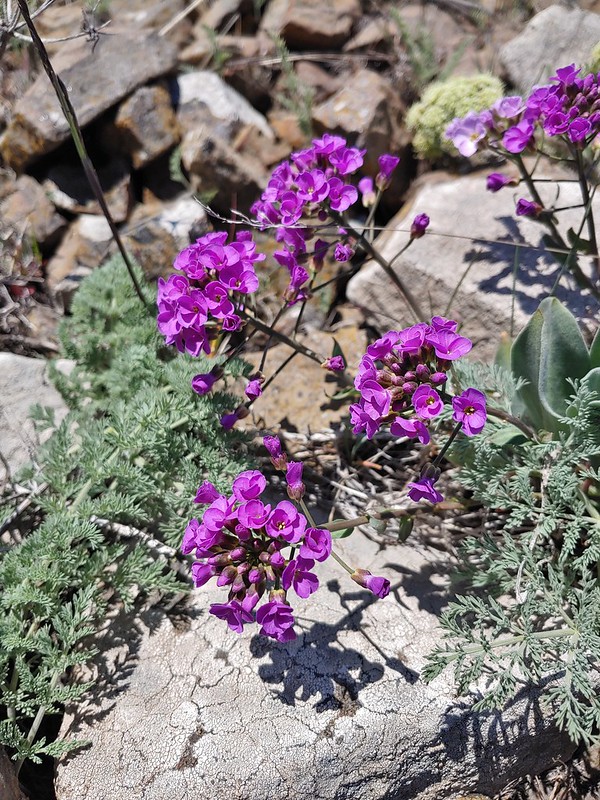 Daggerpod
Daggerpod Daggerpod
Daggerpod Slender toothwort?
Slender toothwort?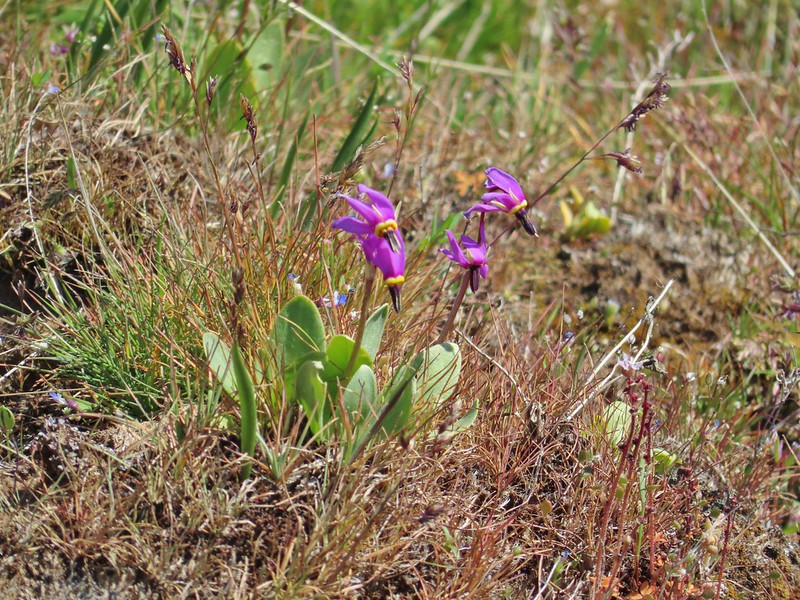 Shooting stars in front of a little blue-eyed Mary
Shooting stars in front of a little blue-eyed Mary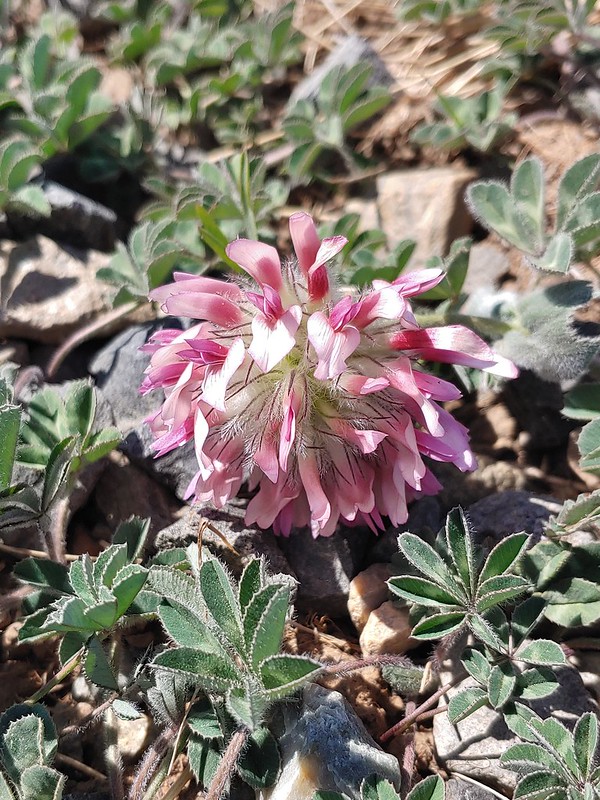 Large head clover
Large head clover Popcorn flower
Popcorn flower Larkspur
Larkspur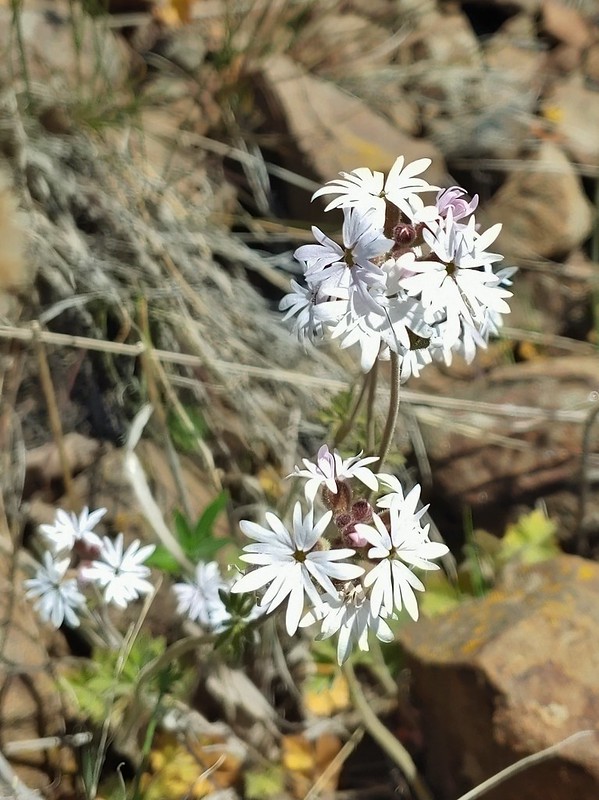 Woodland stars
Woodland stars Mt. Adams
Mt. Adams Mt. Rainier
Mt. Rainier Goat Rocks
Goat Rocks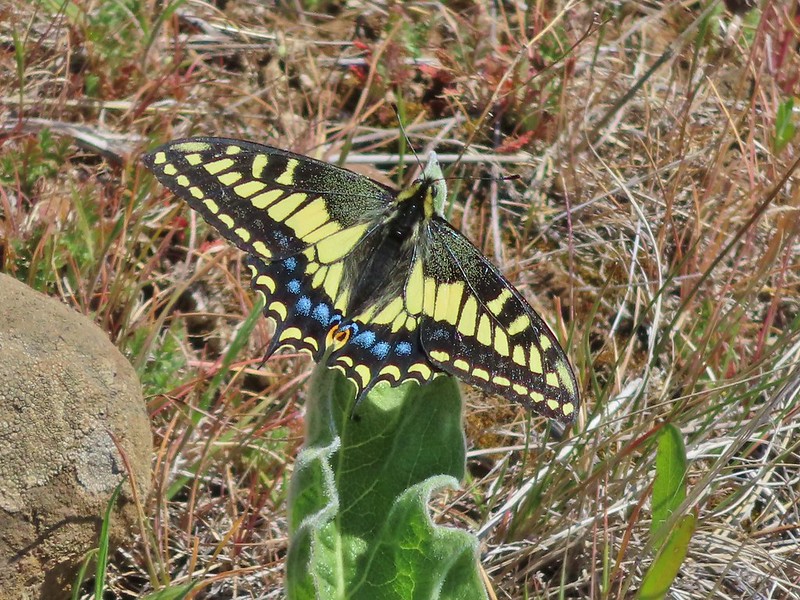 Swallowtail
Swallowtail Western fence lizards
Western fence lizards White crowned sparrow
White crowned sparrow Another sparrow
Another sparrow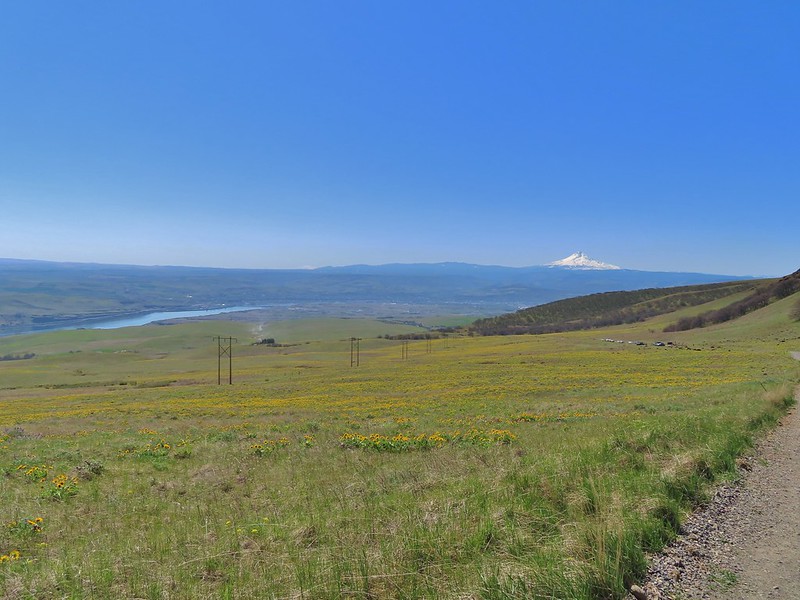 Mt. Jefferson and Mt. Hood as we neared the trailhead.
Mt. Jefferson and Mt. Hood as we neared the trailhead.
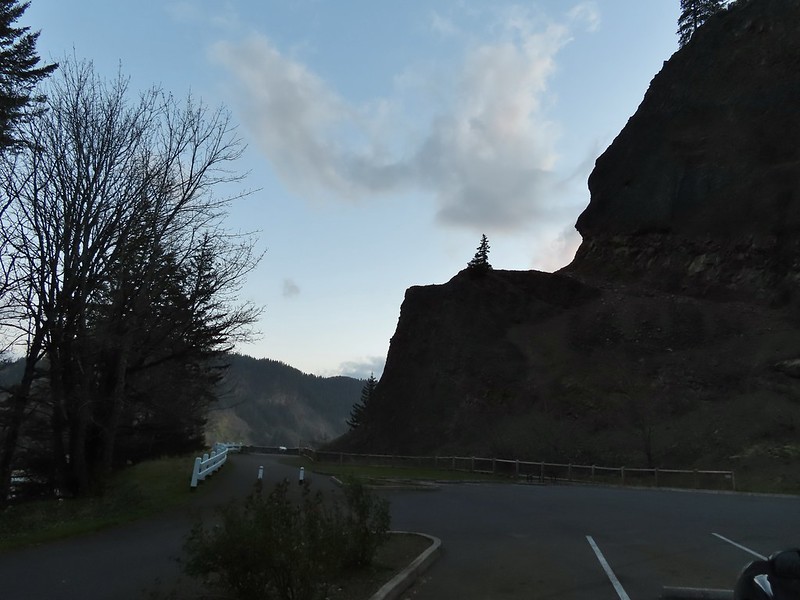

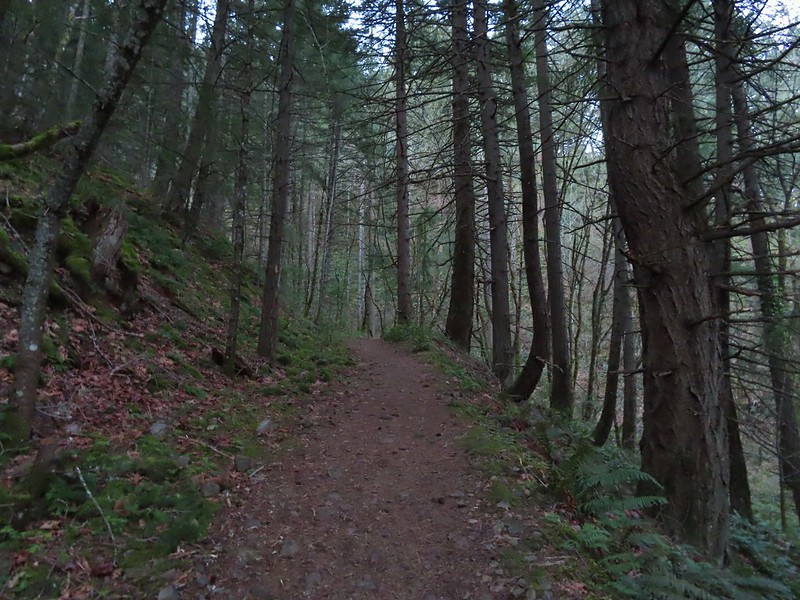
 Bench at a switchback.
Bench at a switchback.

 Reroute below Mitchell Point
Reroute below Mitchell Point
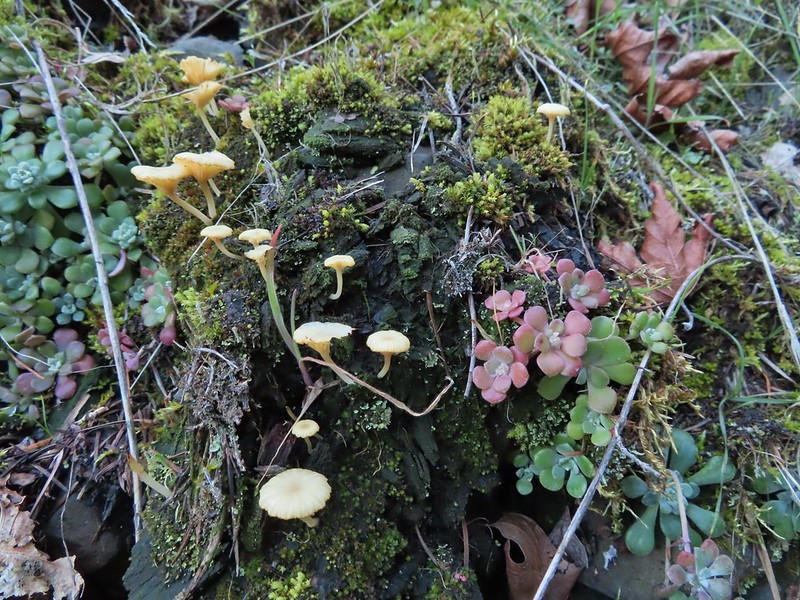 Mushrooms’ and some sedums.
Mushrooms’ and some sedums.

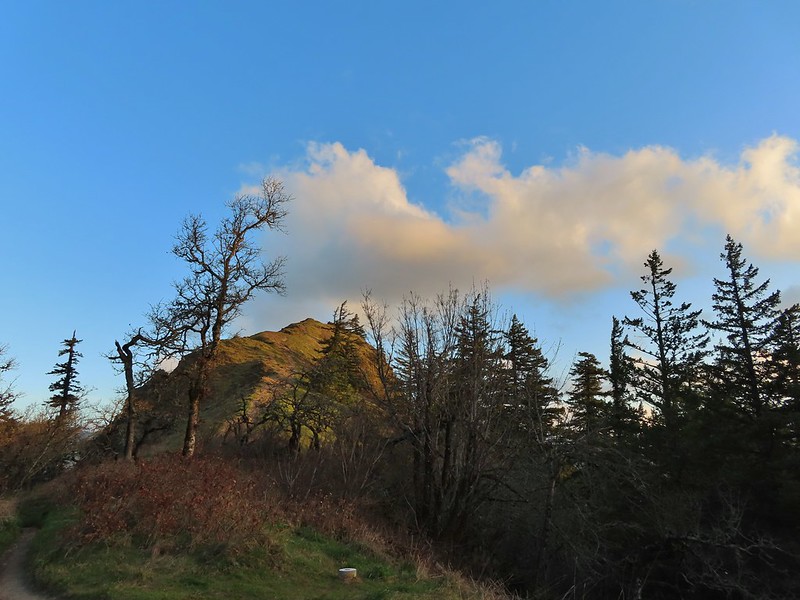
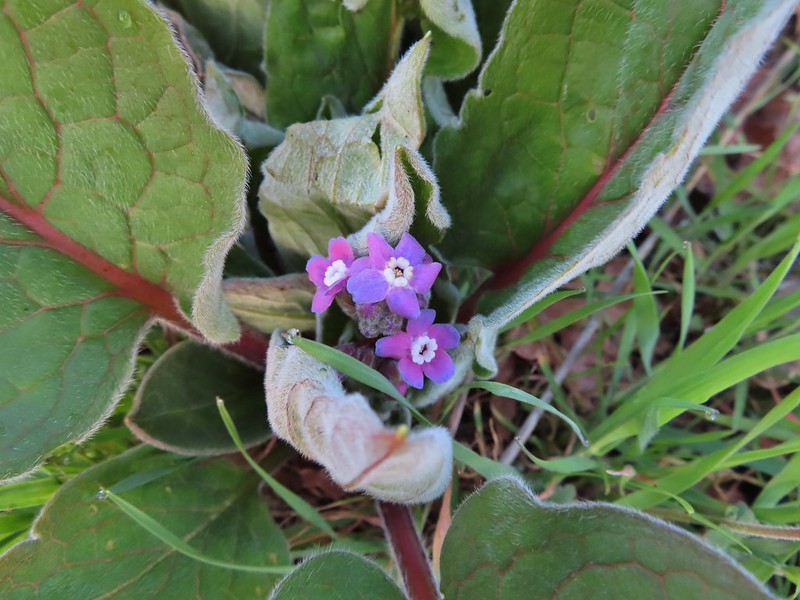 Houndstongue
Houndstongue
 Grass Widows
Grass Widows Woodland stars
Woodland stars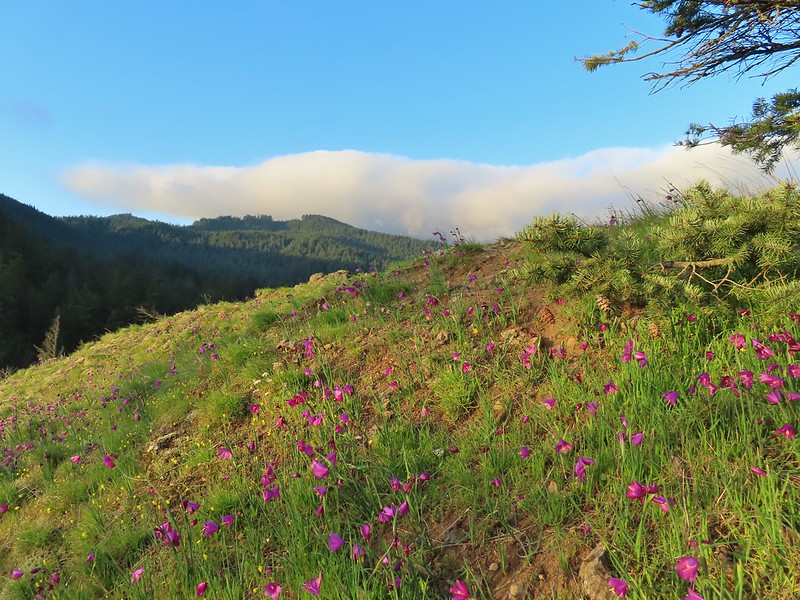
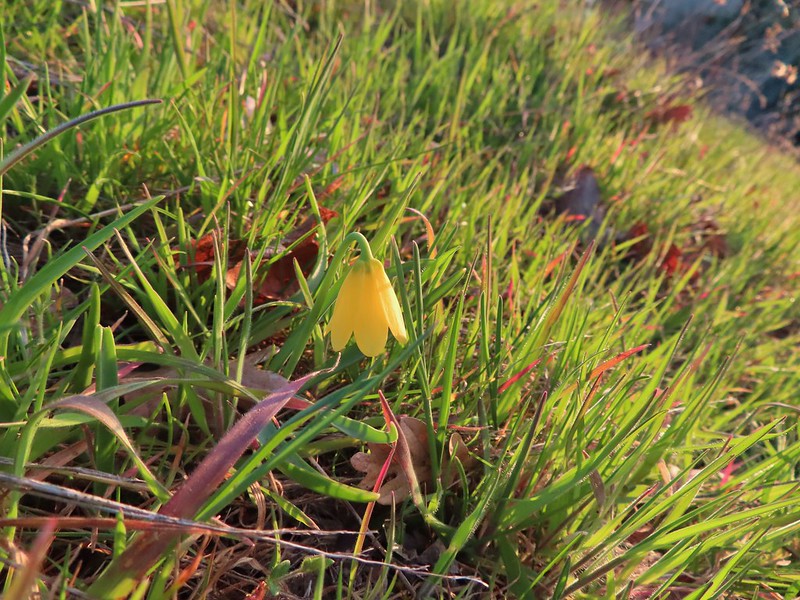 Yellow bell lily
Yellow bell lily Desert parsley and woodland stars
Desert parsley and woodland stars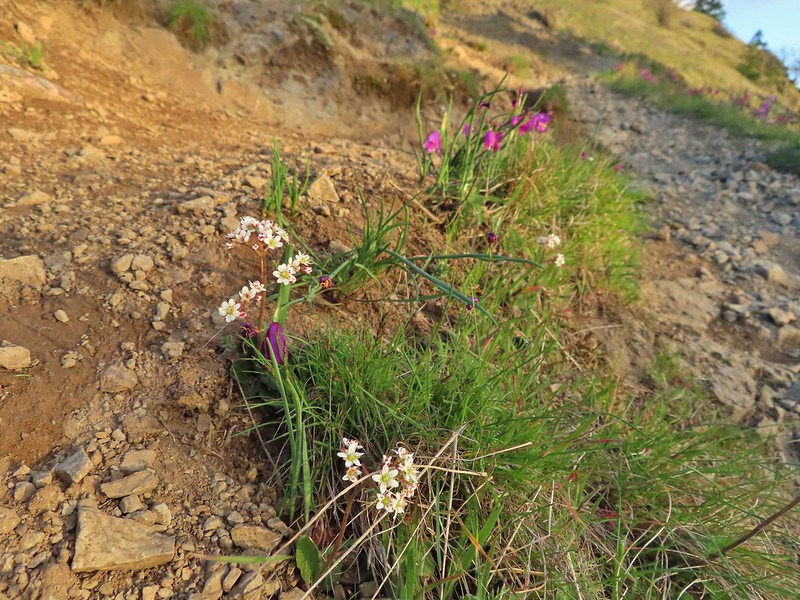 A saxifrage
A saxifrage Gold stars and woodland stars
Gold stars and woodland stars
 Looking west
Looking west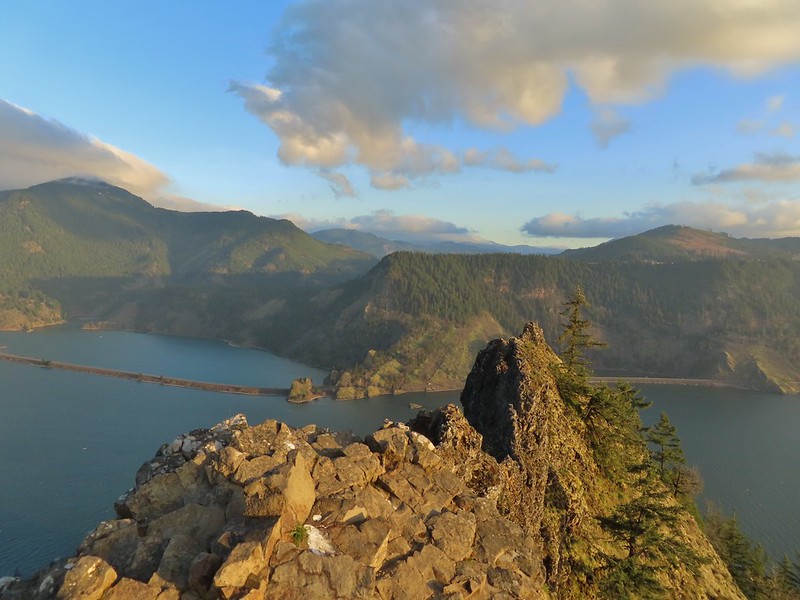 North across the Columbia River into Washington
North across the Columbia River into Washington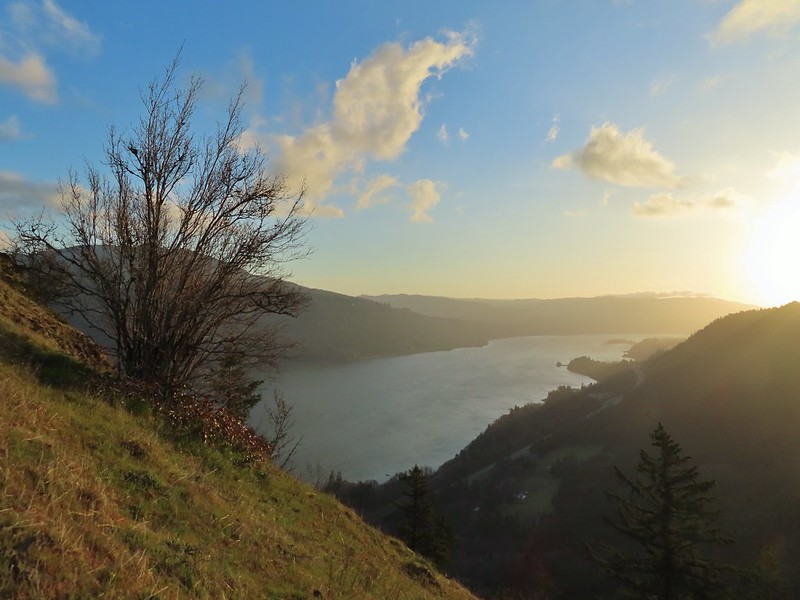 East
East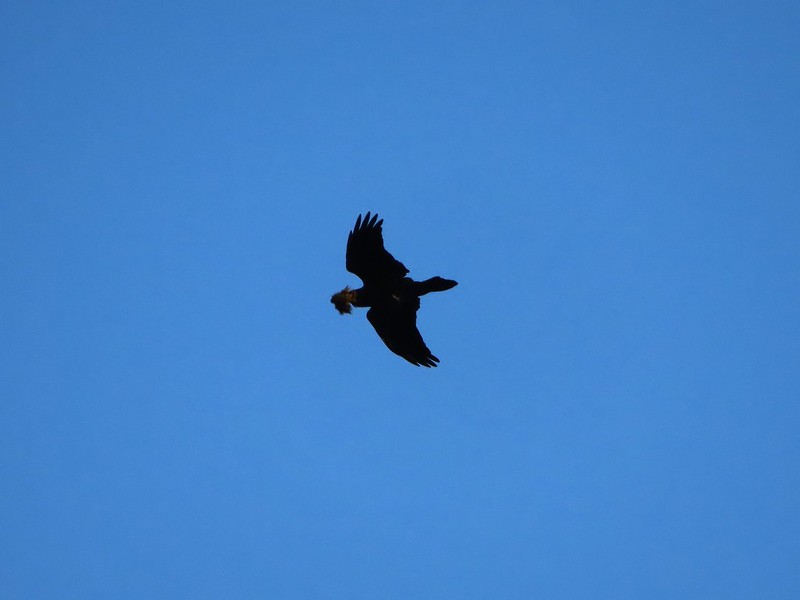 Looks like moss for a nest maybe?
Looks like moss for a nest maybe?
 Turkeys on the Wygant Trail
Turkeys on the Wygant Trail
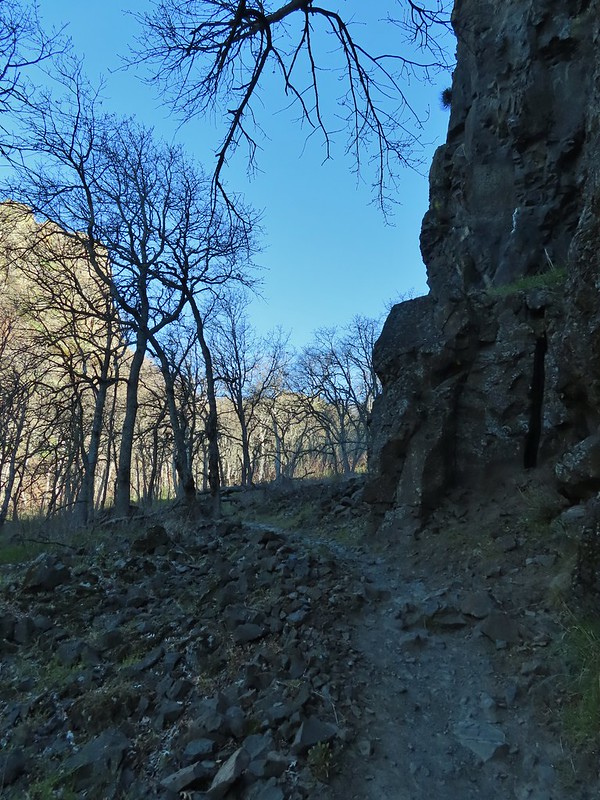
 Red leaves of poison oak behind a death camas
Red leaves of poison oak behind a death camas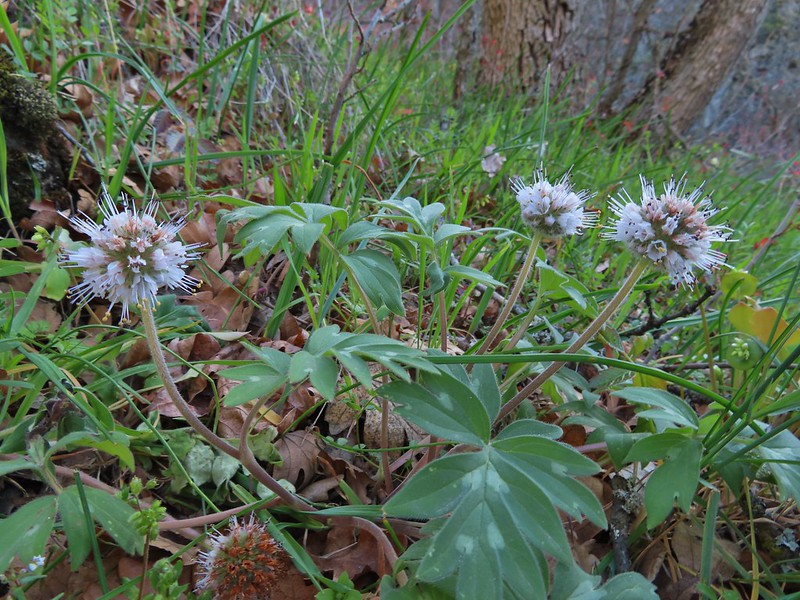 More poison oak behind a waterleaf
More poison oak behind a waterleaf Poison oak around some balsamroot
Poison oak around some balsamroot


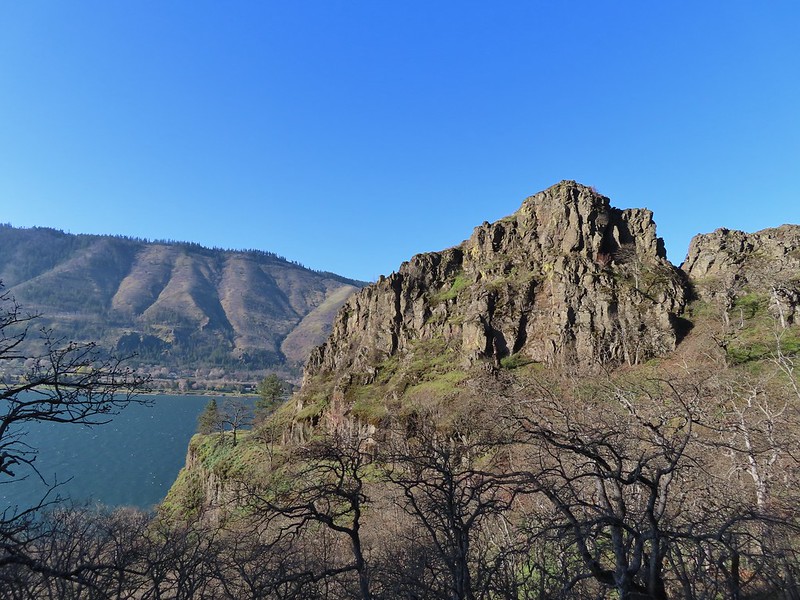
 Fiddleneck
Fiddleneck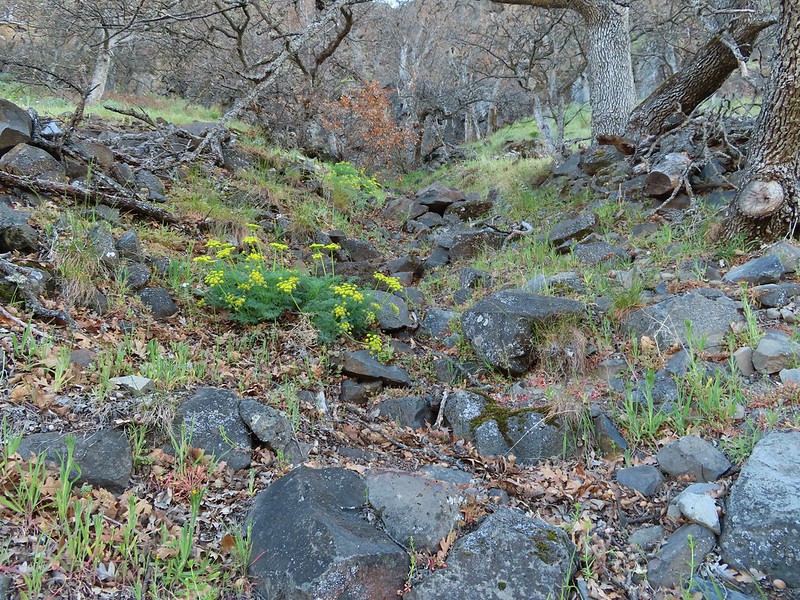 Desert parsley
Desert parsley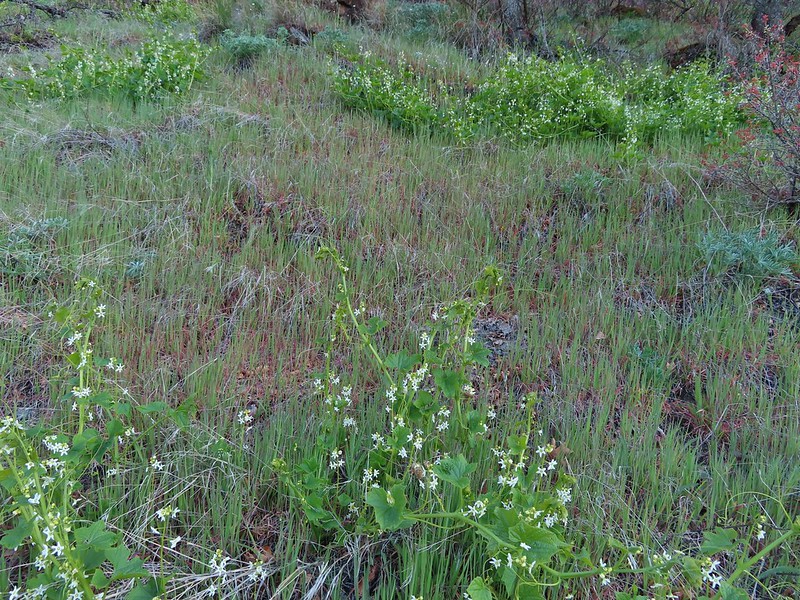 Manroot
Manroot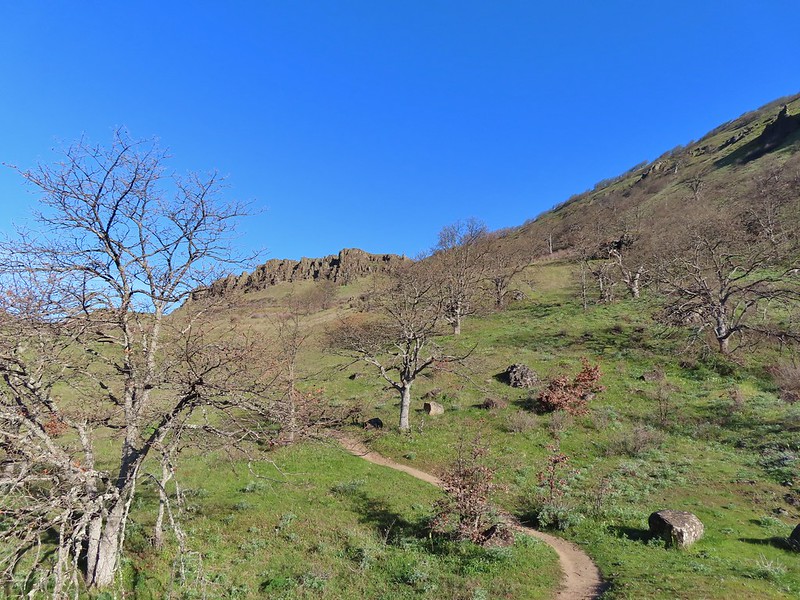
 Lots of death camas blooming on the plateau.
Lots of death camas blooming on the plateau.
 Looking up at the cliffs above.
Looking up at the cliffs above. Balsamroot blooming below the rim.
Balsamroot blooming below the rim.

 Balsamroot
Balsamroot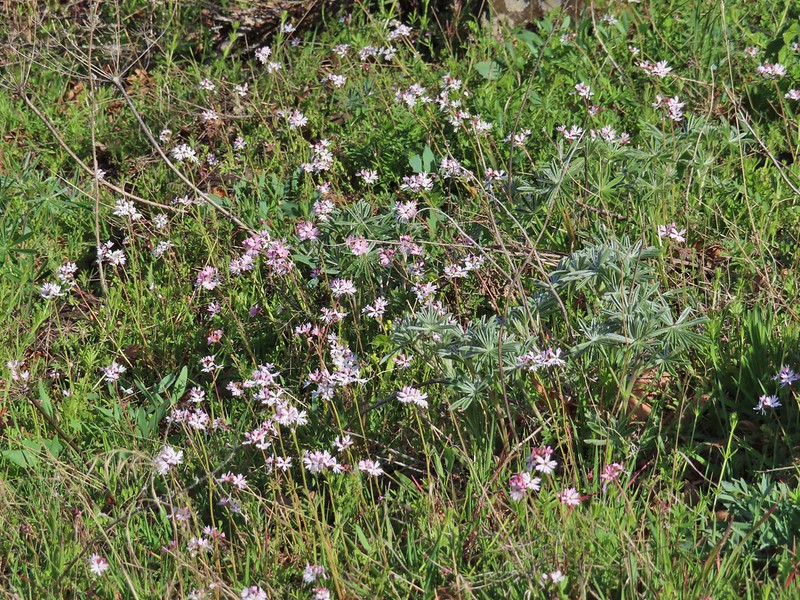 Woodland stars with some lupine leaves
Woodland stars with some lupine leaves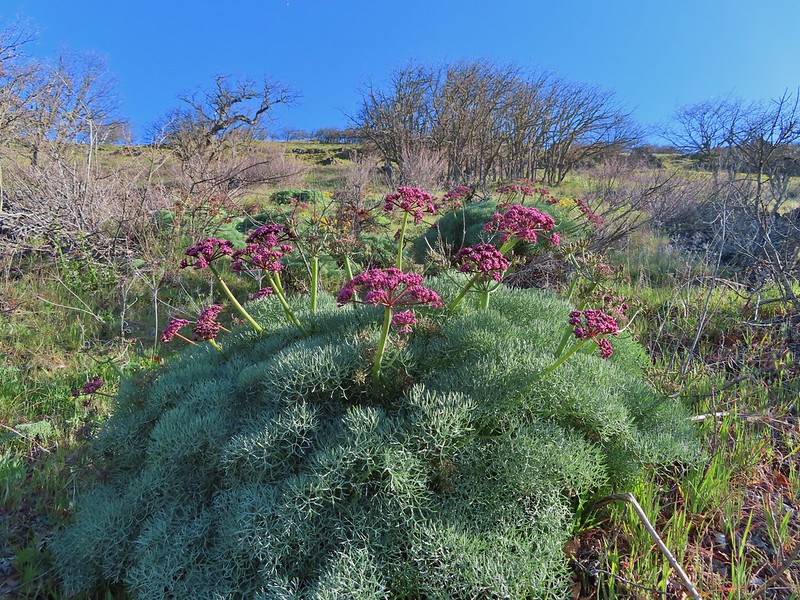 Columbia desert parsley
Columbia desert parsley A biscuitroot
A biscuitroot Balsamroot
Balsamroot Balsamroot
Balsamroot View west (With a snow capped Mt. Defiance (
View west (With a snow capped Mt. Defiance (
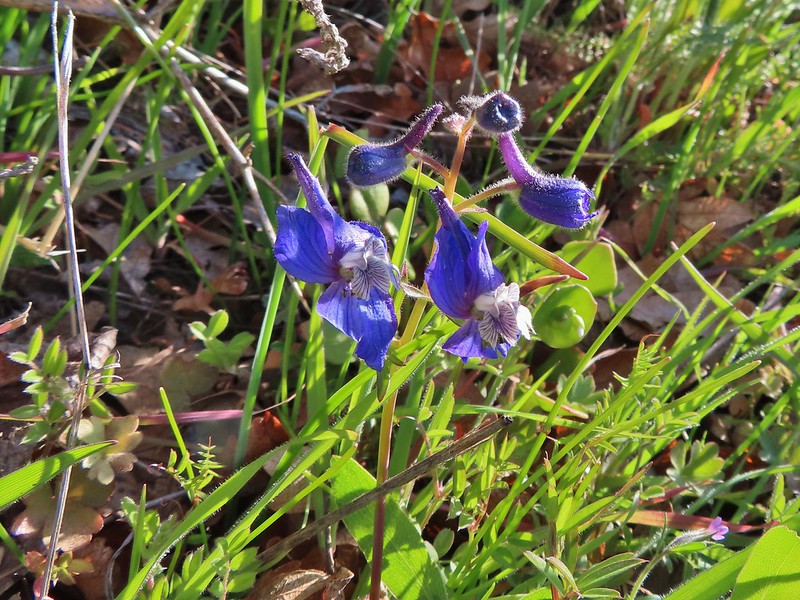 Larkspur
Larkspur Buttercups
Buttercups Glacier lilies
Glacier lilies Yellow bell lily, woodland stars, grass widows and shooting stars.
Yellow bell lily, woodland stars, grass widows and shooting stars. Yellow bell lilies
Yellow bell lilies
 Toothwort
Toothwort Sagebrush false dandelions
Sagebrush false dandelions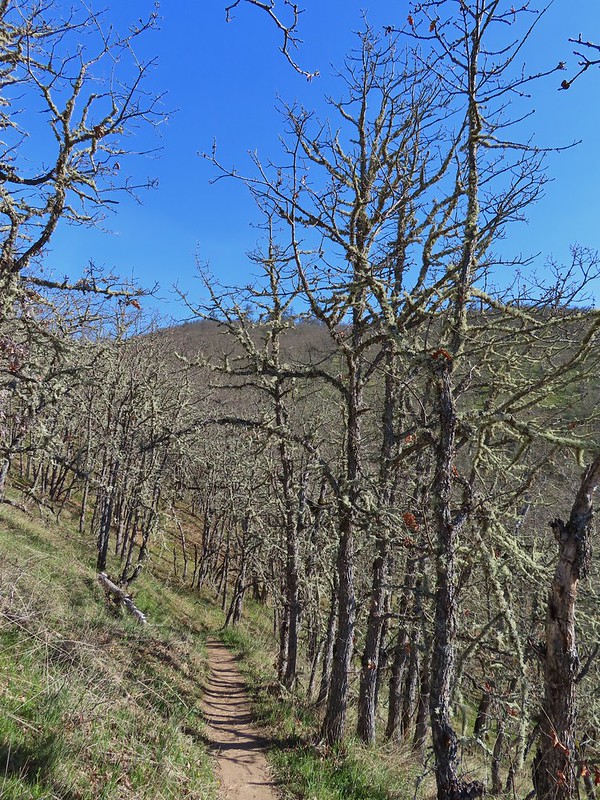
 Tortoiseshell butterfly
Tortoiseshell butterfly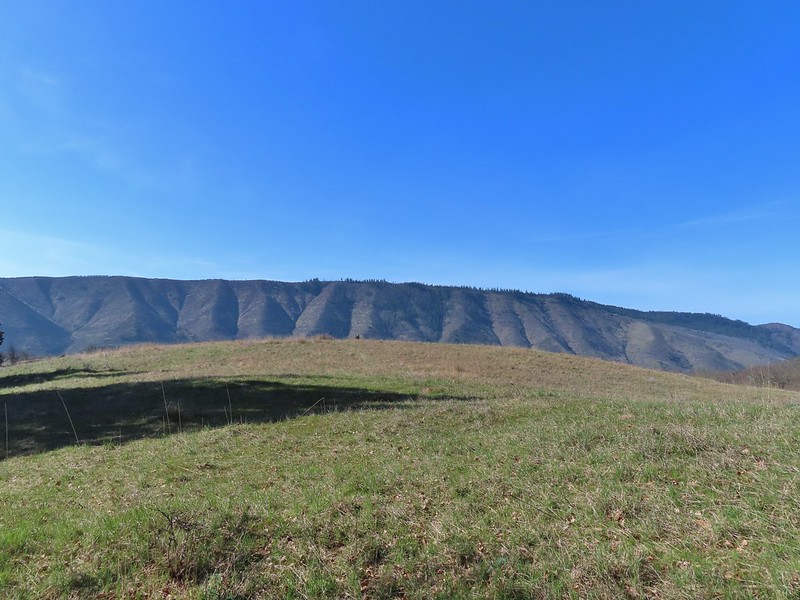



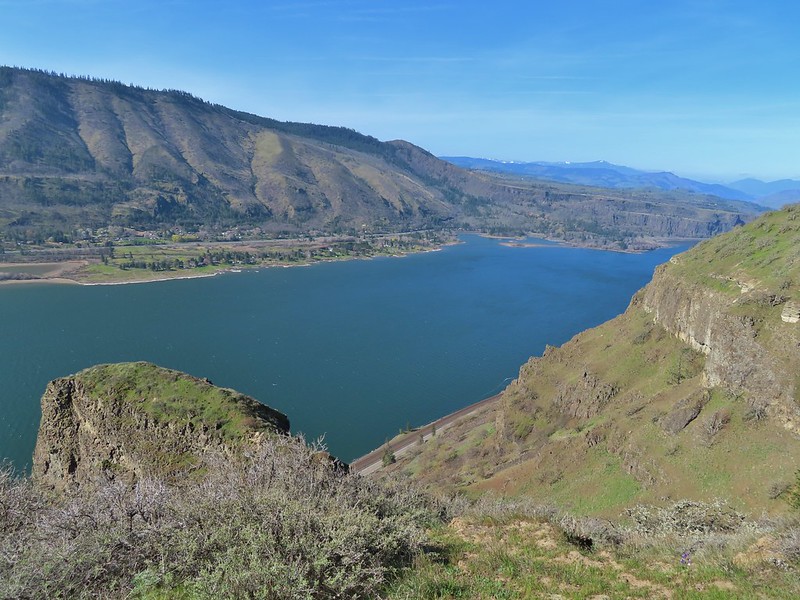 Tom McCall Point and the Rowena Plateau with Mt. Defiance in the distance.
Tom McCall Point and the Rowena Plateau with Mt. Defiance in the distance. Hikers on the trailhead and below.
Hikers on the trailhead and below. Just my third photo of an orange-tip.
Just my third photo of an orange-tip.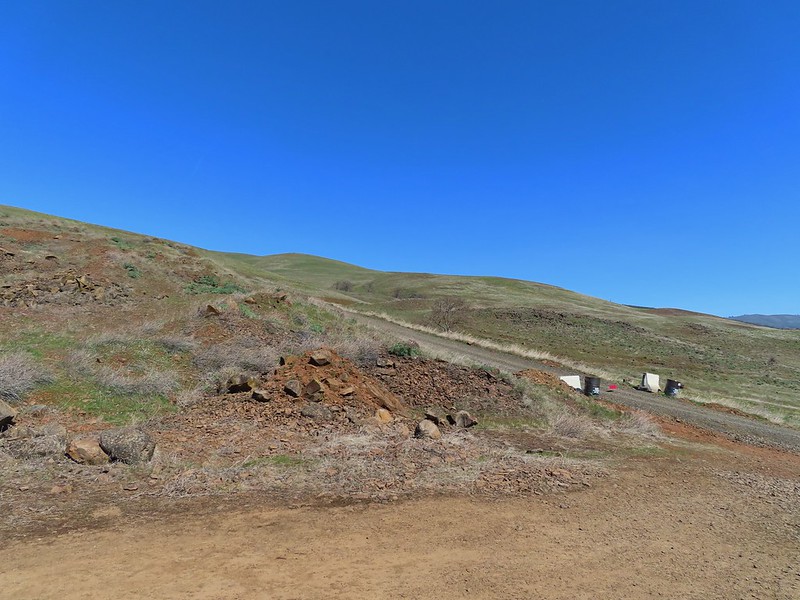
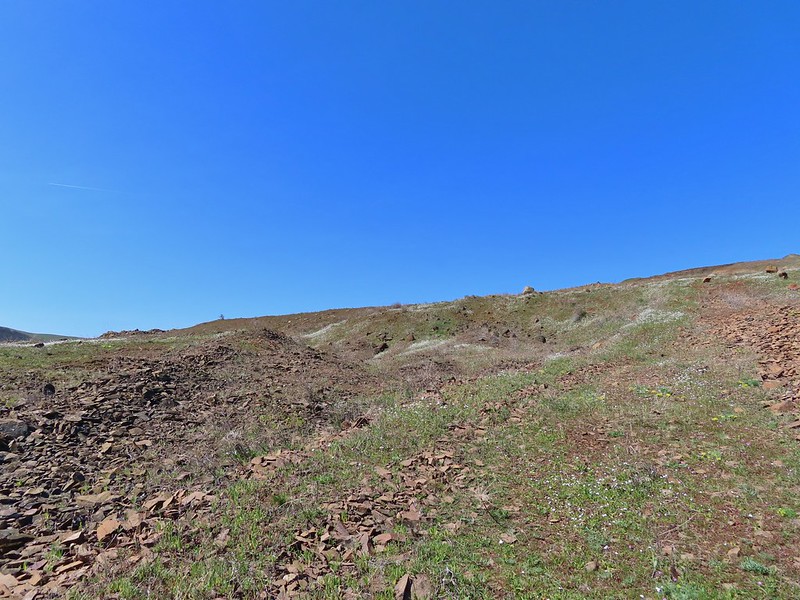
 Mt. Hood and Columbia desert parsley from the first knoll we tried.
Mt. Hood and Columbia desert parsley from the first knoll we tried. Top of knoll #1.
Top of knoll #1. A lone balsamroot blossom.
A lone balsamroot blossom.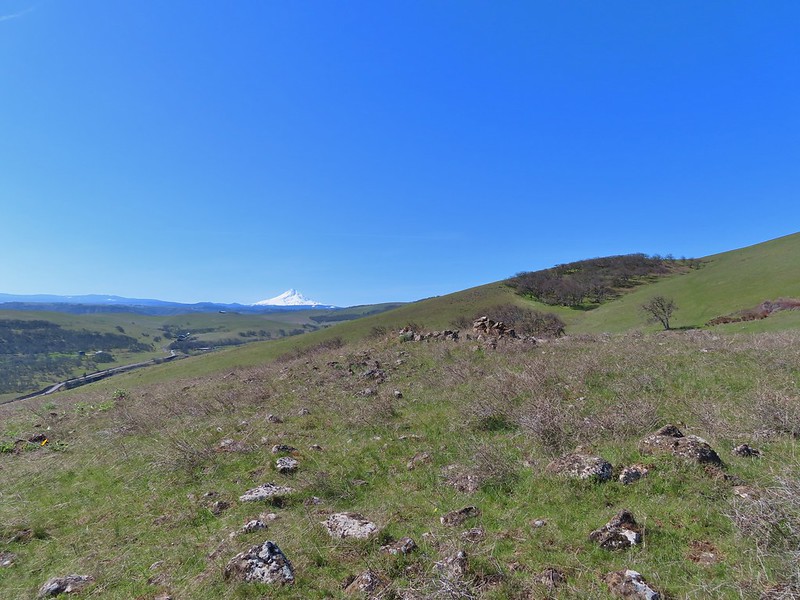
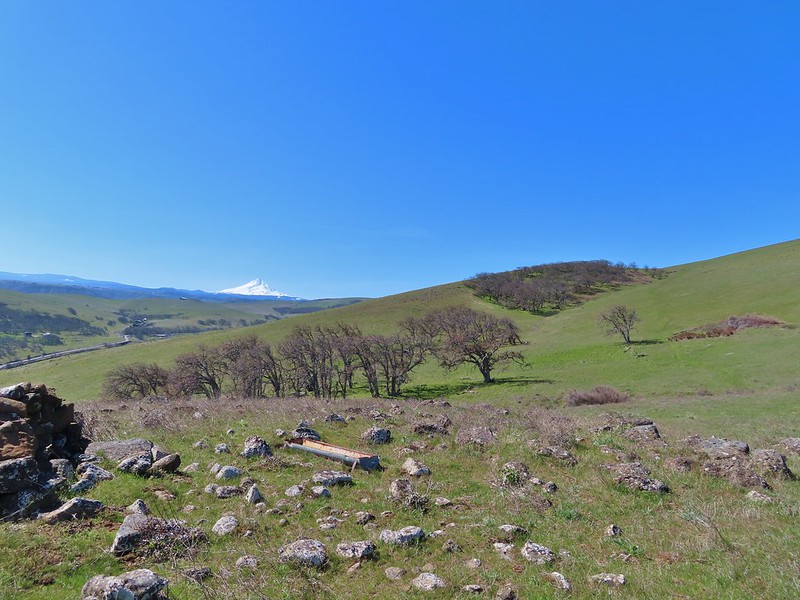
 The path leading past the spring to the oaks.
The path leading past the spring to the oaks. The spring
The spring
 Back on the right side
Back on the right side
 Balsamroot surrounded by some little white flowers.
Balsamroot surrounded by some little white flowers. Lupine thinking about blooming.
Lupine thinking about blooming. Larkspur
Larkspur Yellow bell lilies
Yellow bell lilies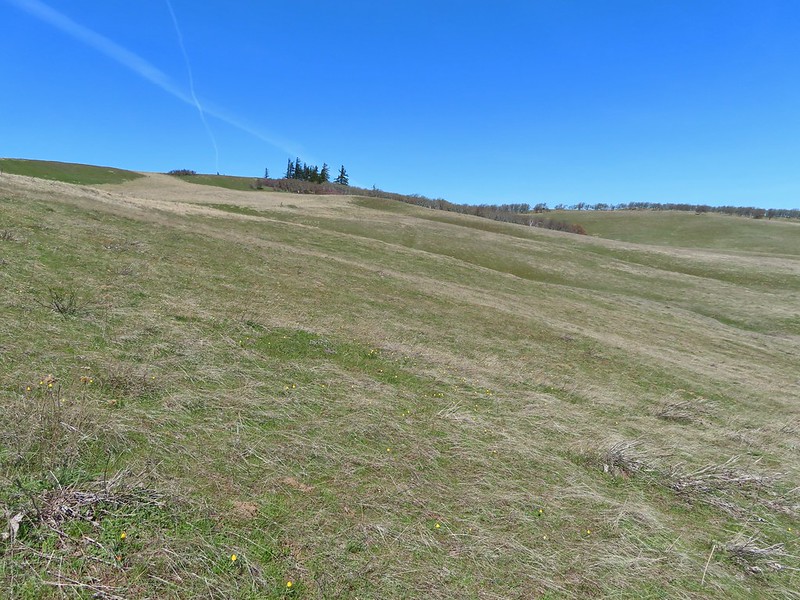
 We didn’t notice any poison oak here.
We didn’t notice any poison oak here.
 A grass widow at the viewpoint.
A grass widow at the viewpoint. Mt. Adams
Mt. Adams Mt. Hood over the oak stand.
Mt. Hood over the oak stand.
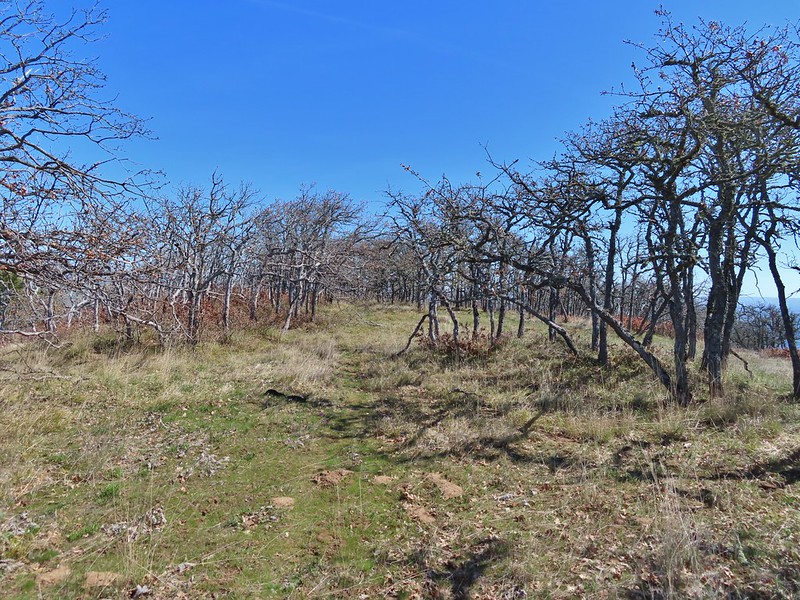


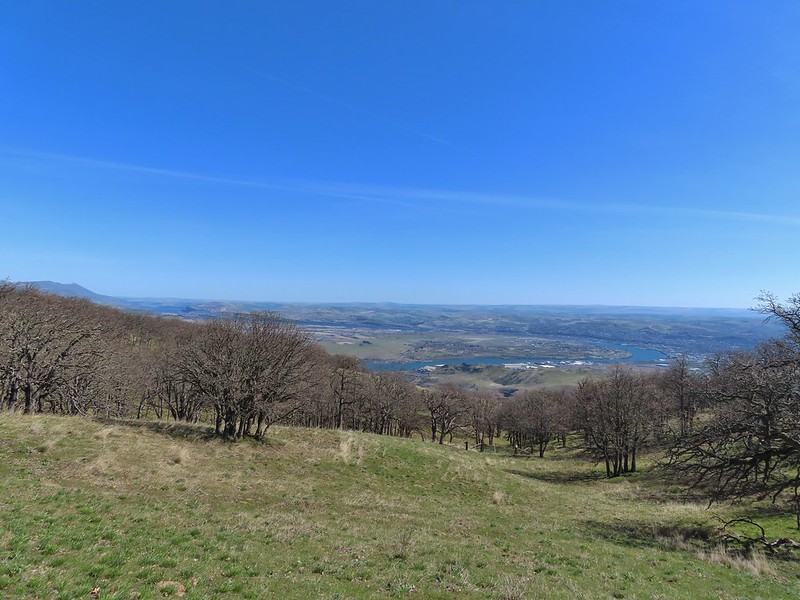 The Dalles beyond the fence line.
The Dalles beyond the fence line.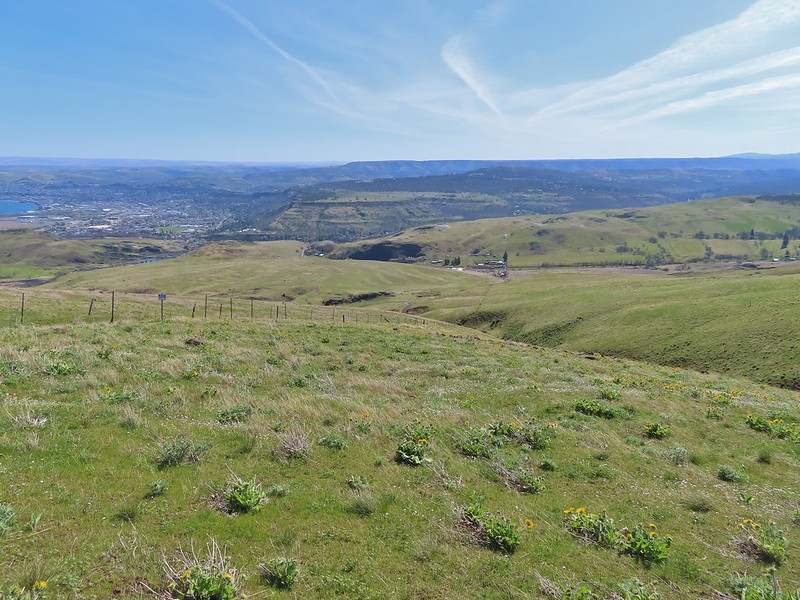 Heading down the fence line.
Heading down the fence line.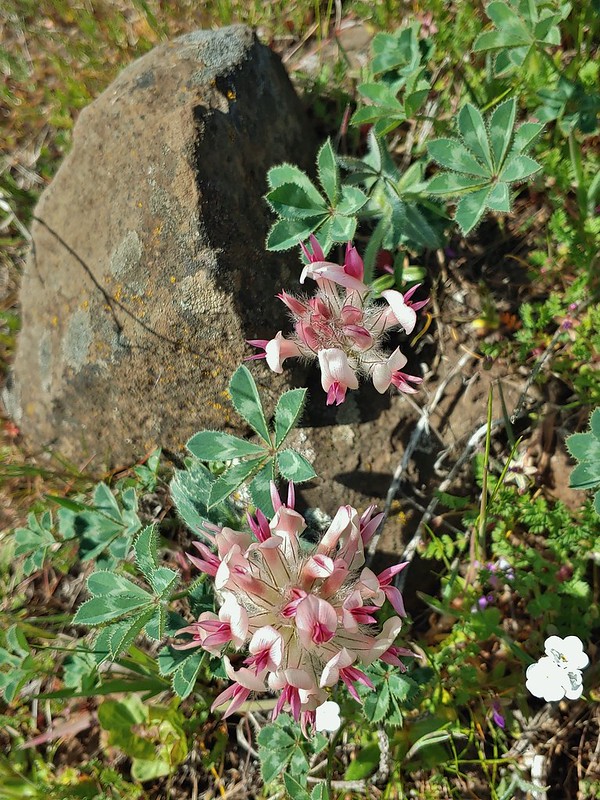 Large head clover
Large head clover
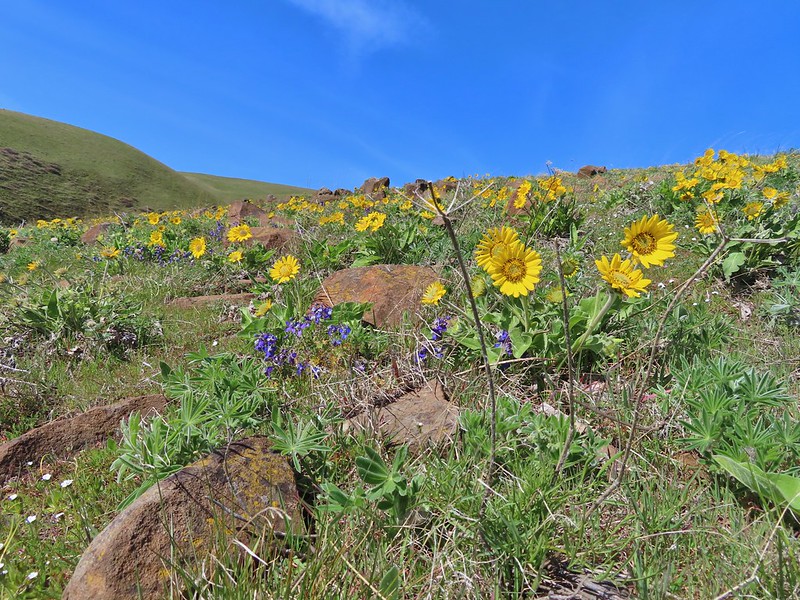
 A lupine with blossoms.
A lupine with blossoms. Hillside covered in Columbia desert parsley
Hillside covered in Columbia desert parsley Our car had been joined by one other. (middle left of photo)
Our car had been joined by one other. (middle left of photo) Gooseberry Creek
Gooseberry Creek

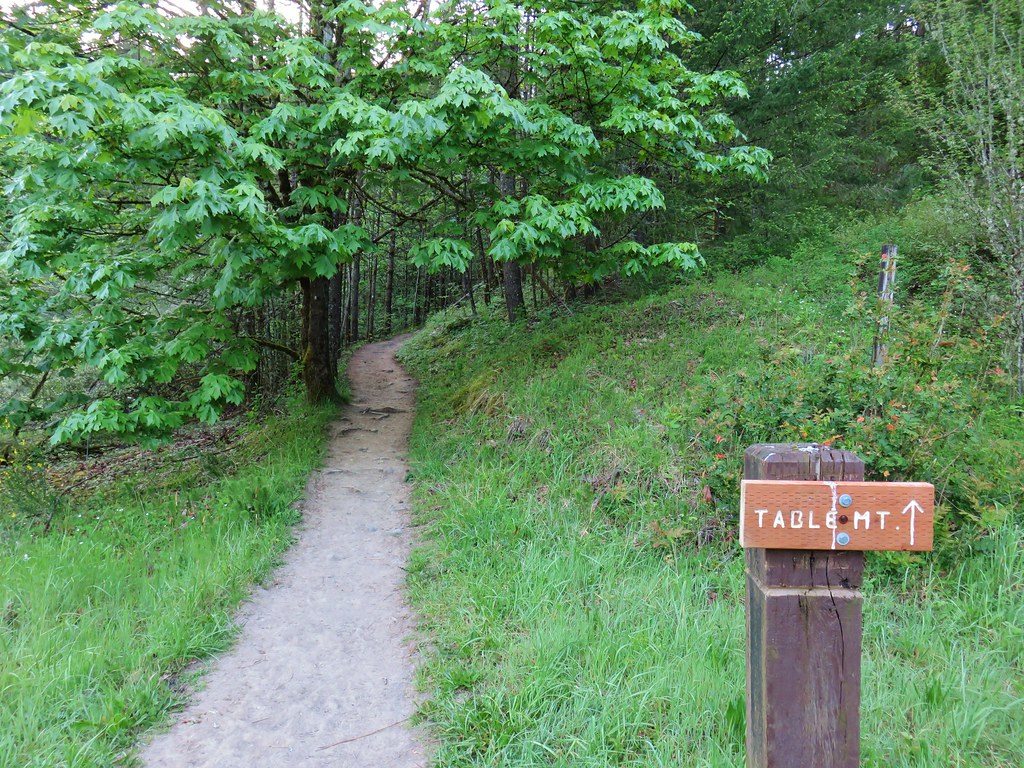
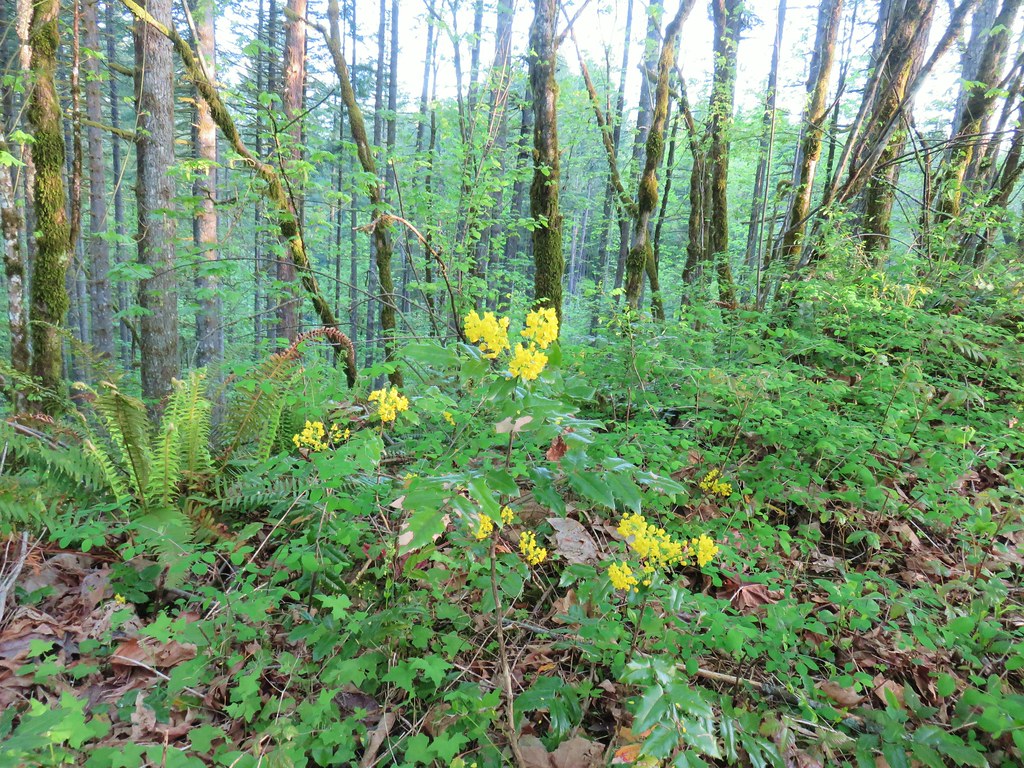 Oregon grape
Oregon grape Dogwood
Dogwood Large solomonseal
Large solomonseal Trillium
Trillium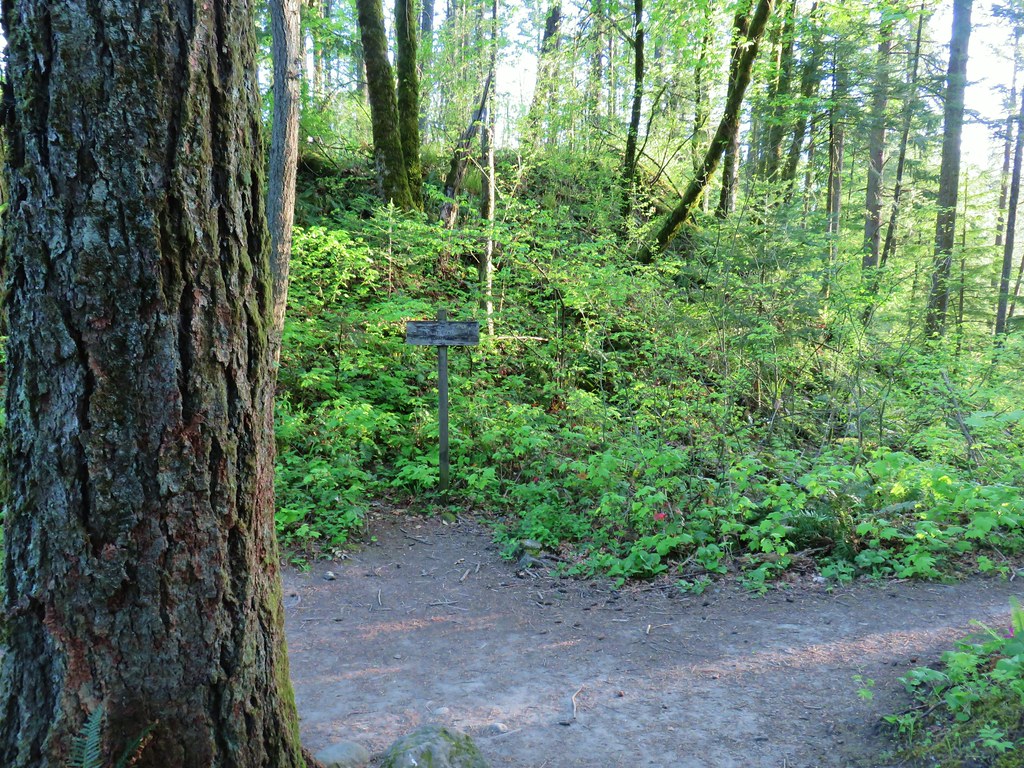
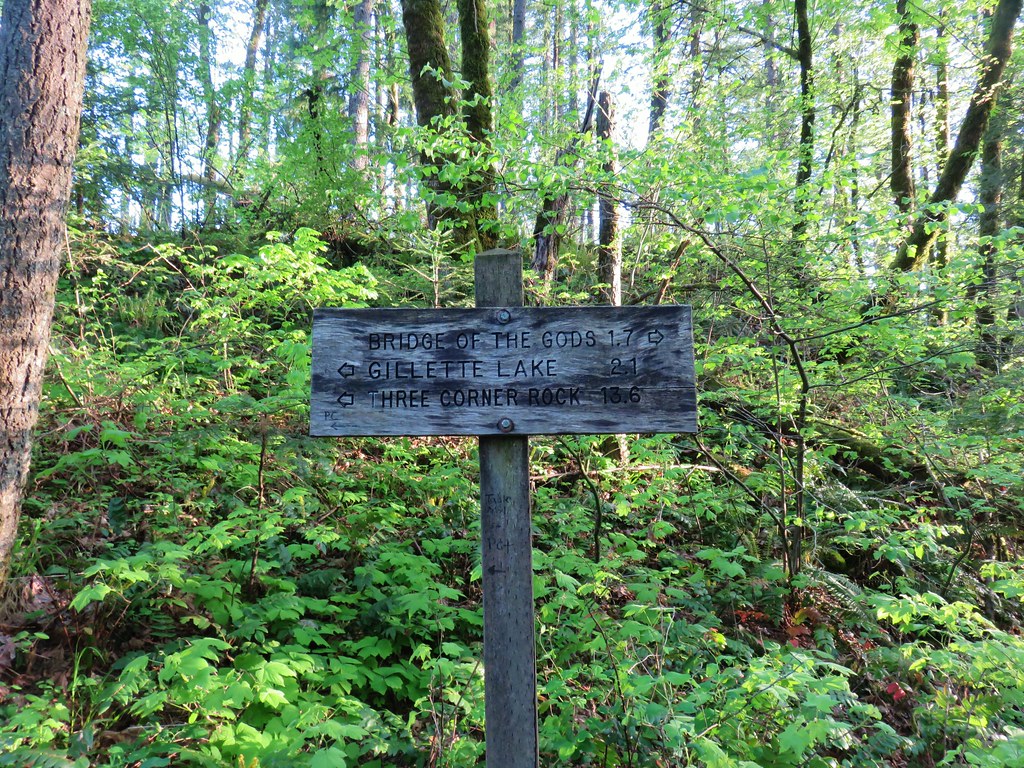




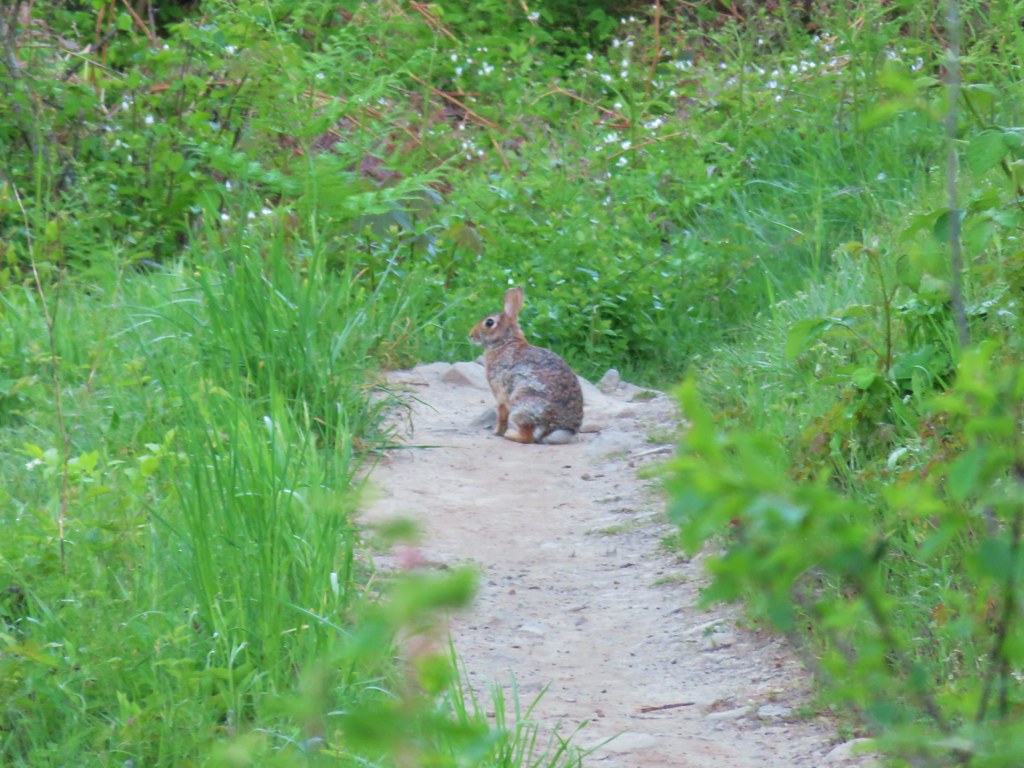



 Hamilton Mountain (
Hamilton Mountain ( Sacagawea and Pappose Rocks
Sacagawea and Pappose Rocks Indian paintbrush
Indian paintbrush

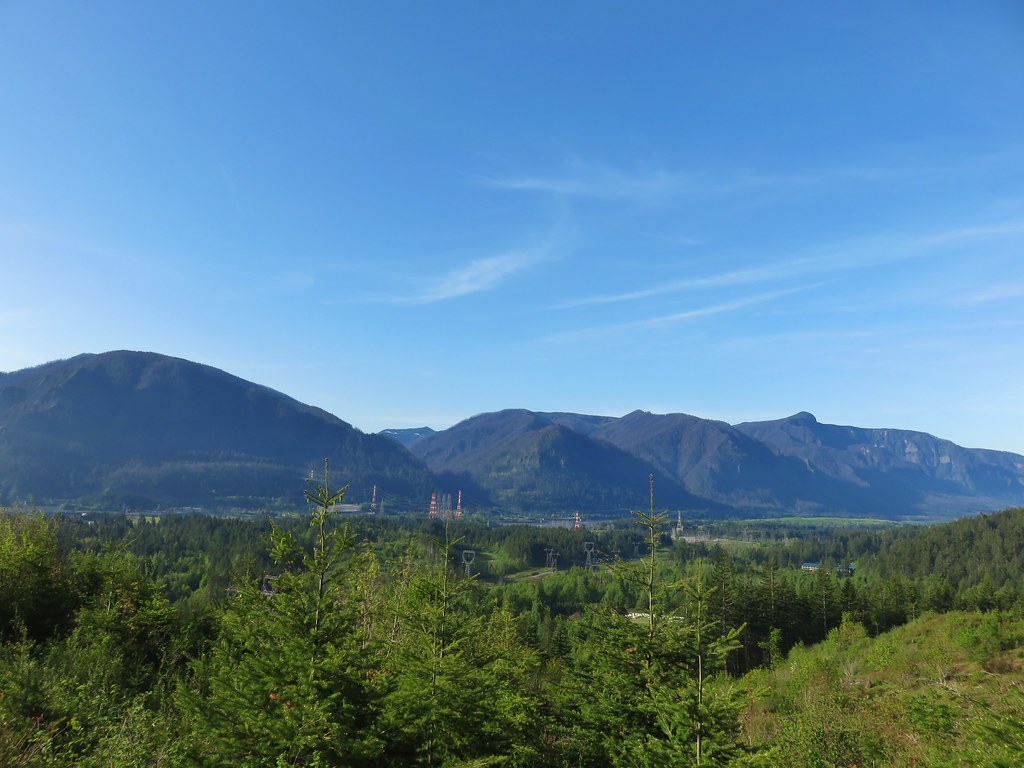 Bonneville Dam on the Columbia River. Nesmith Point (
Bonneville Dam on the Columbia River. Nesmith Point ( Unnamed lake through the trees.
Unnamed lake through the trees.
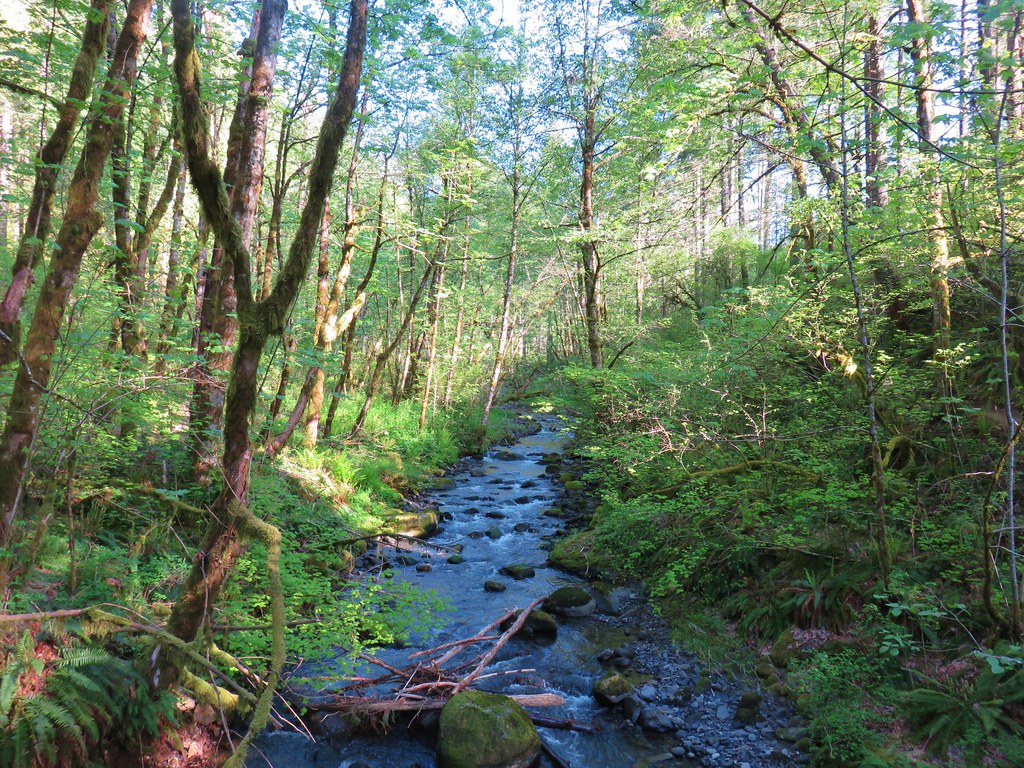




 Bleeding heart
Bleeding heart Vanilla leaf
Vanilla leaf

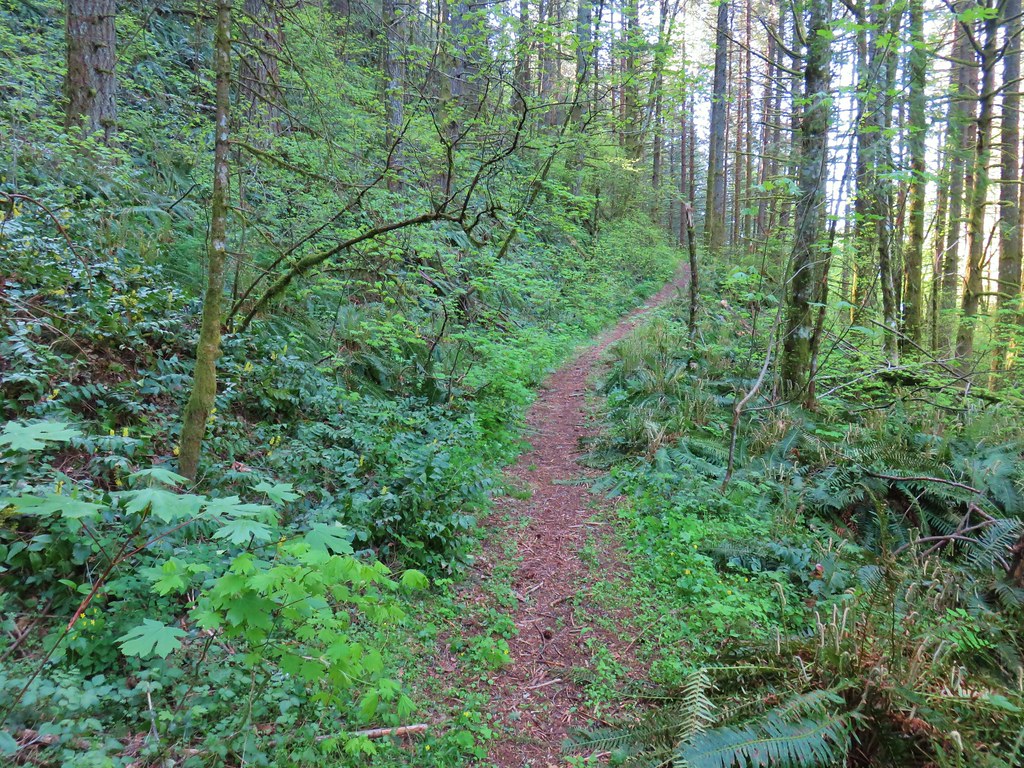
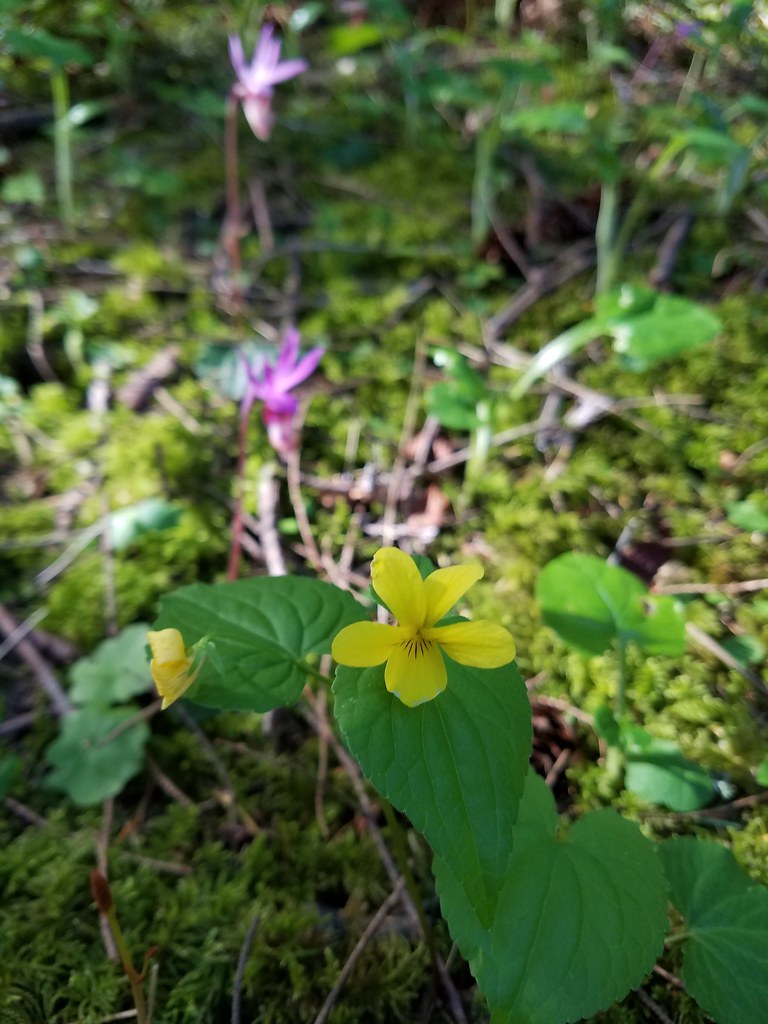 Wood violet
Wood violet Fairy slipper
Fairy slipper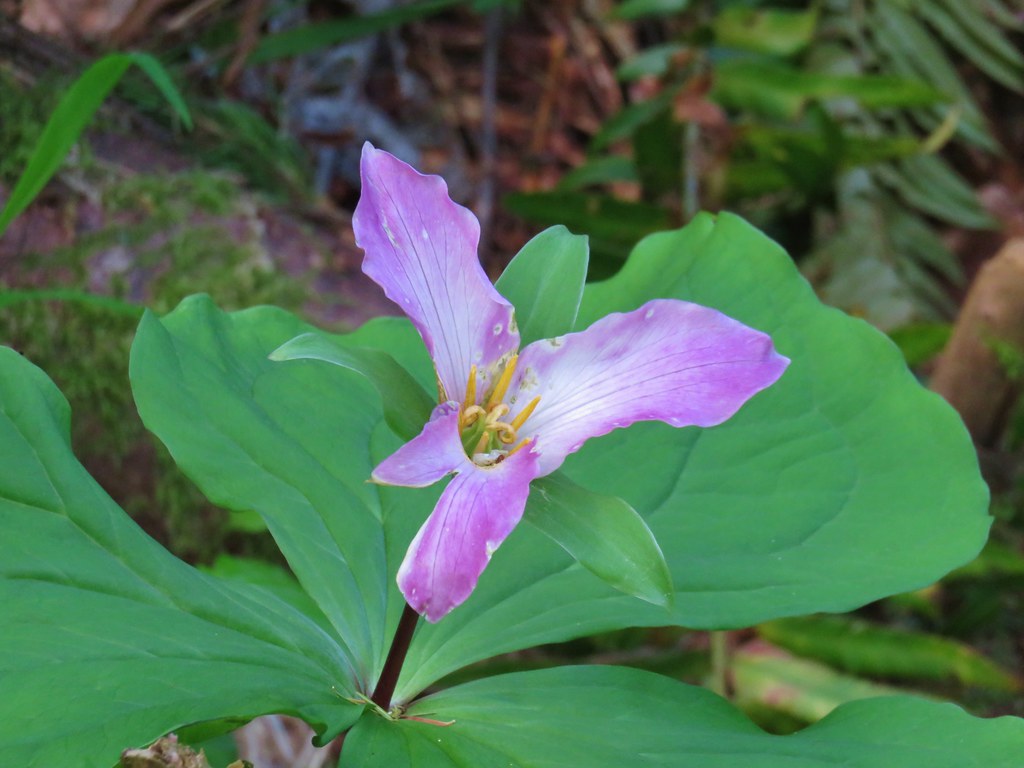 Trillium
Trillium
 The Two Chiefs on the left and Table Mountain on the right.
The Two Chiefs on the left and Table Mountain on the right.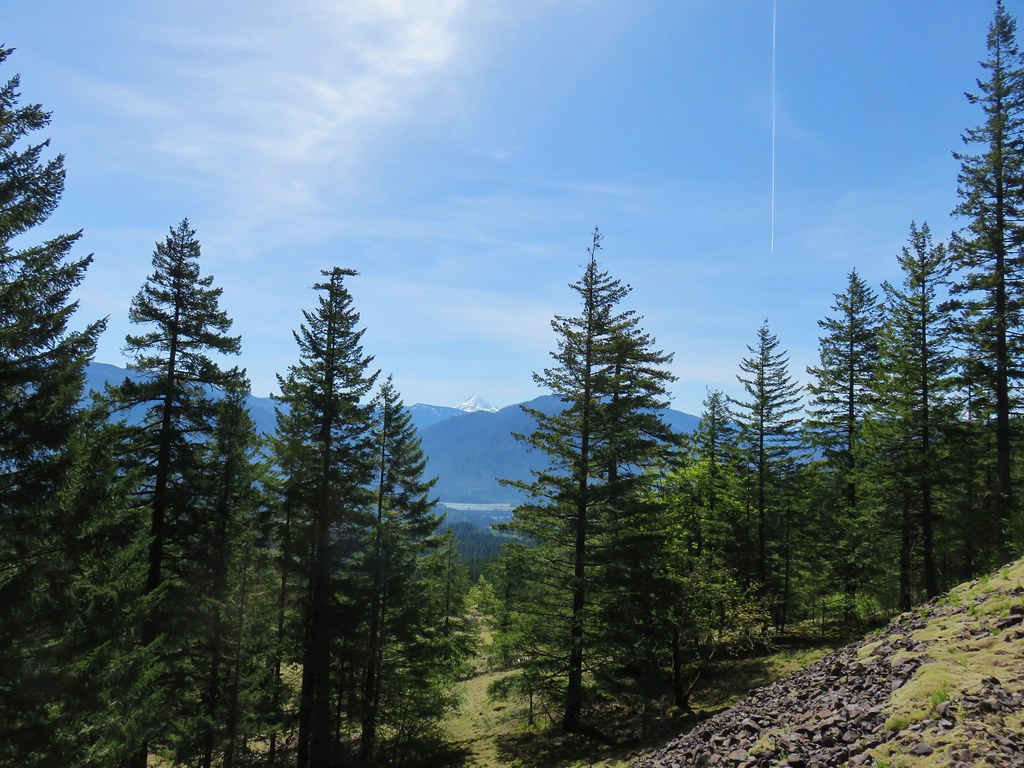
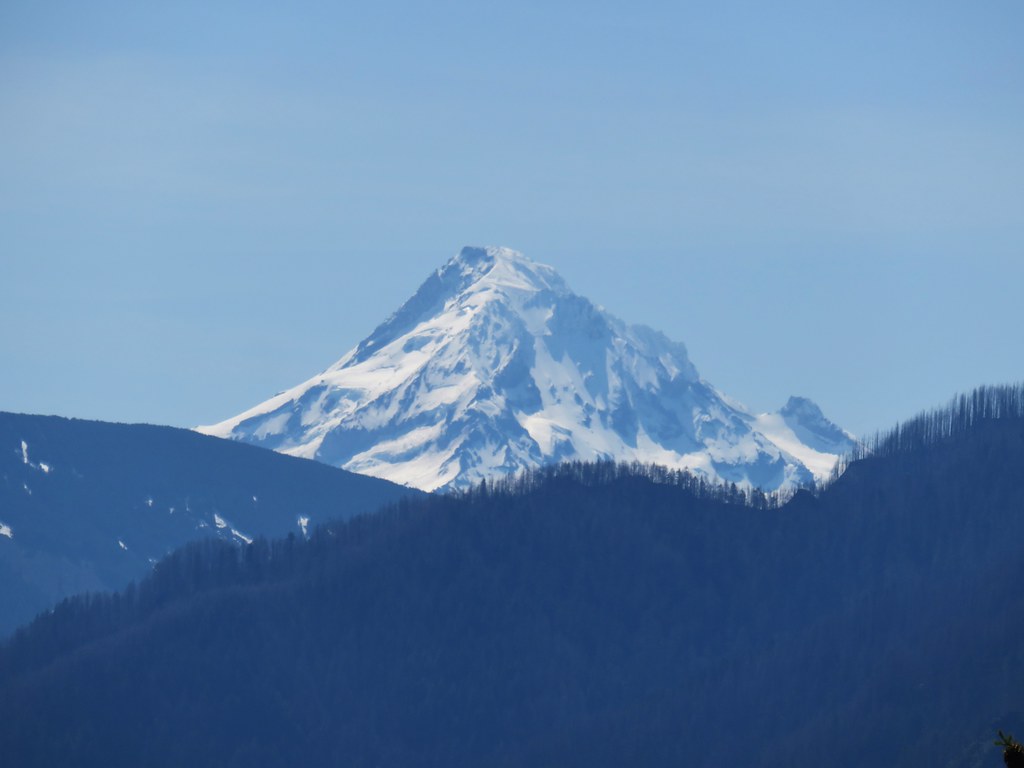
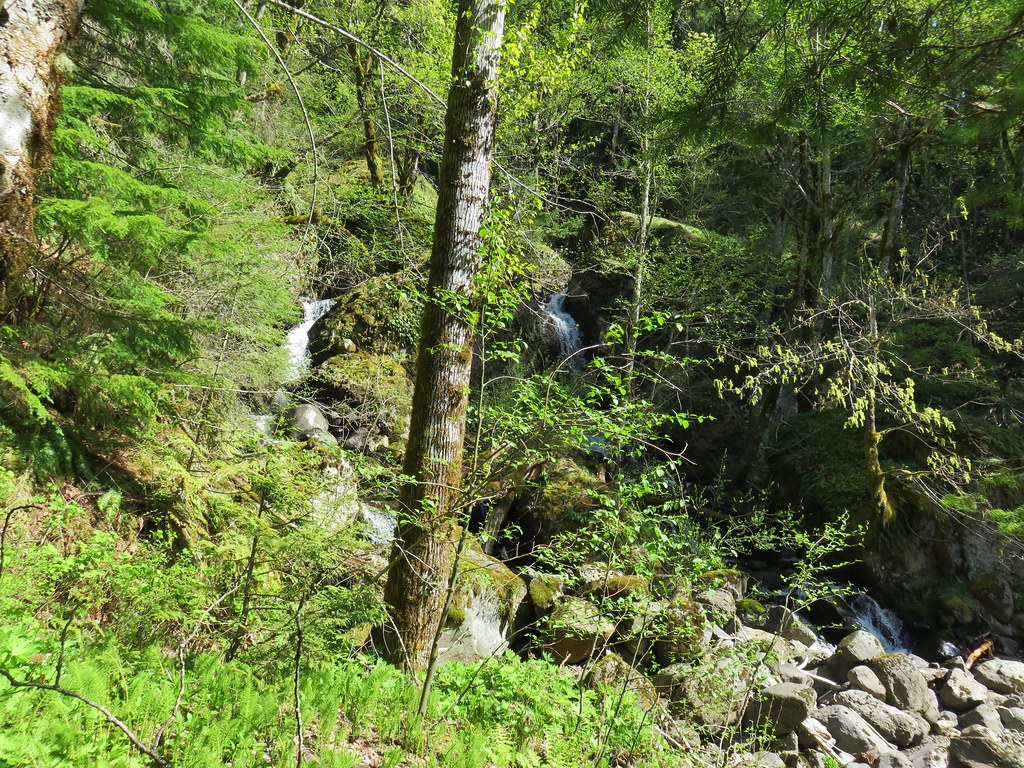

 Left side
Left side Right side
Right side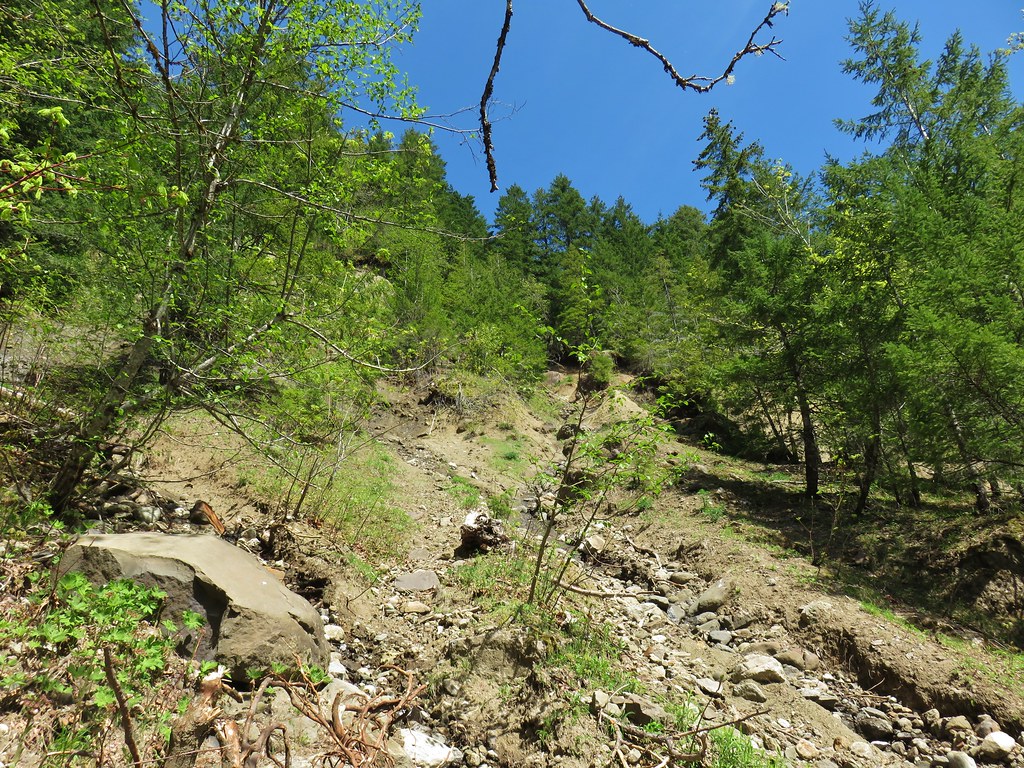
 The highest tier that I was able to see.
The highest tier that I was able to see. A middle section of Greenleaf Falls
A middle section of Greenleaf Falls Cascades along Greenleaf Falls just above the ones visible from the trail.
Cascades along Greenleaf Falls just above the ones visible from the trail.


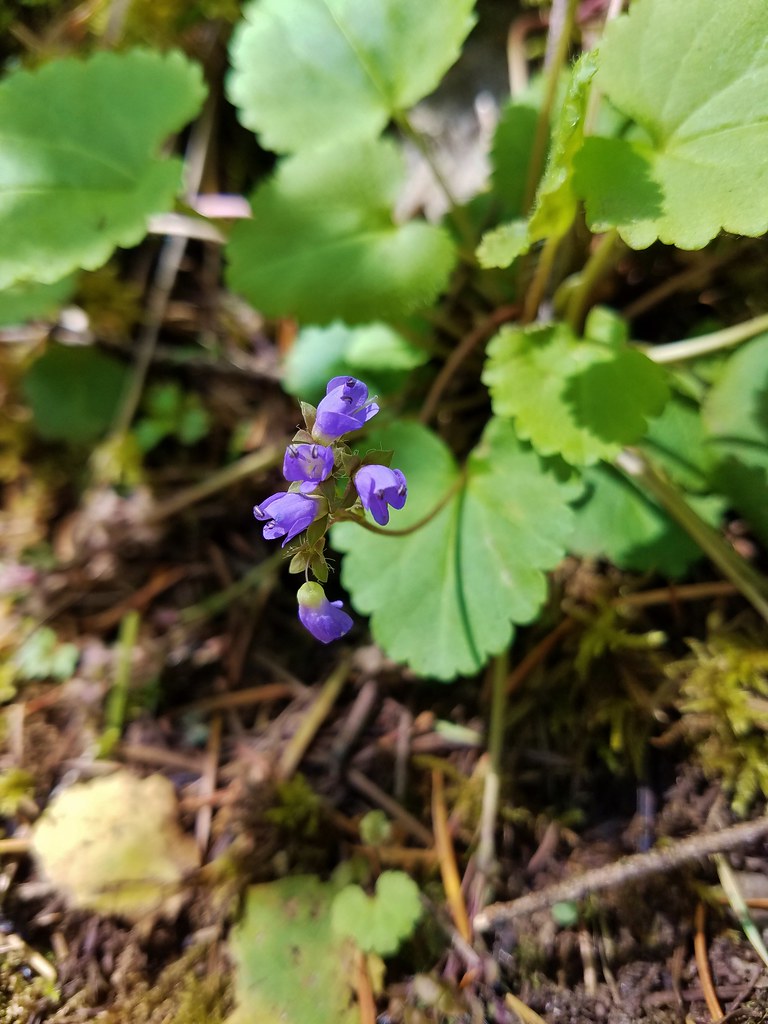 Snow queen
Snow queen Wild strawberry
Wild strawberry Butterfly landing on leafy pea
Butterfly landing on leafy pea
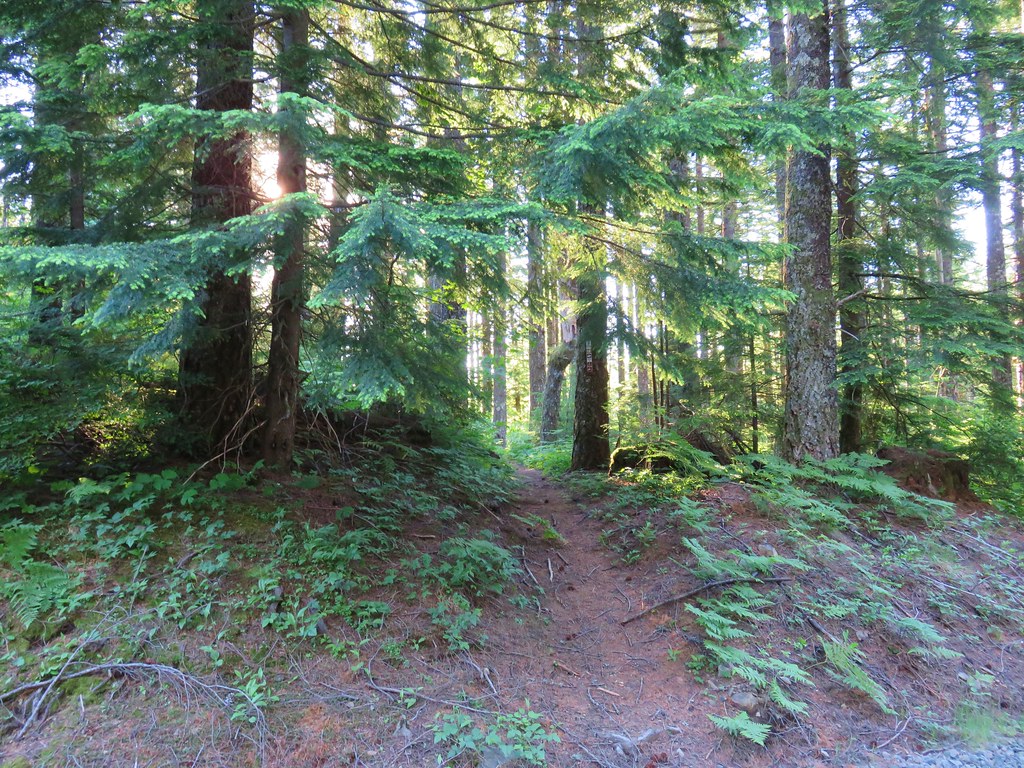
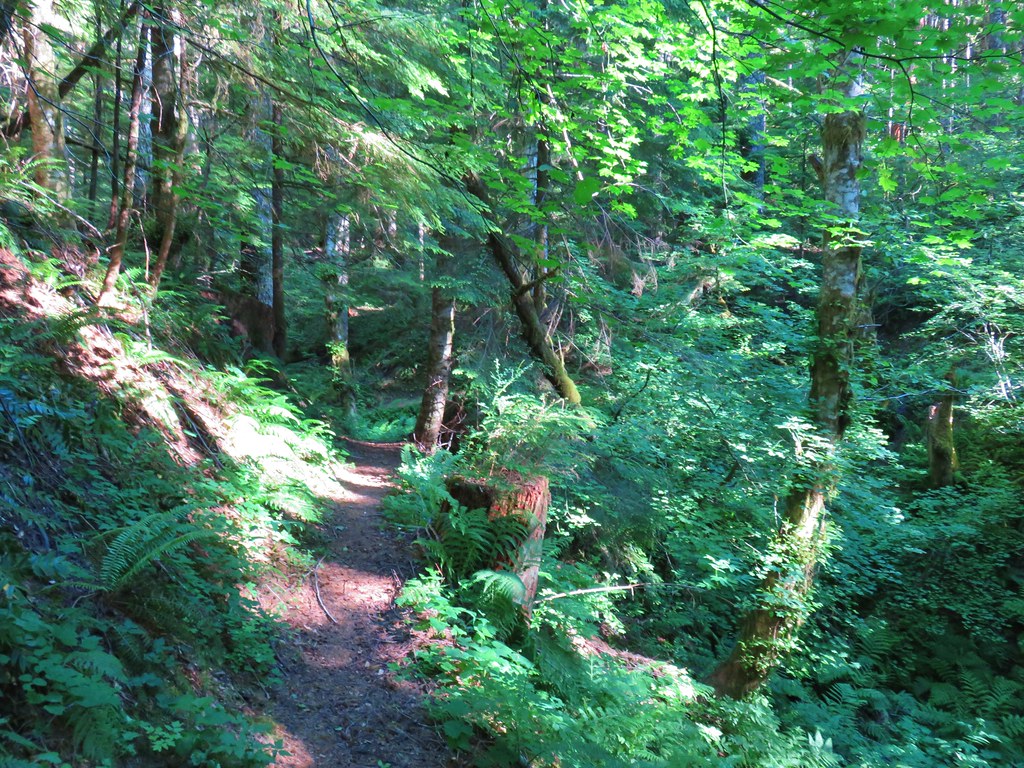

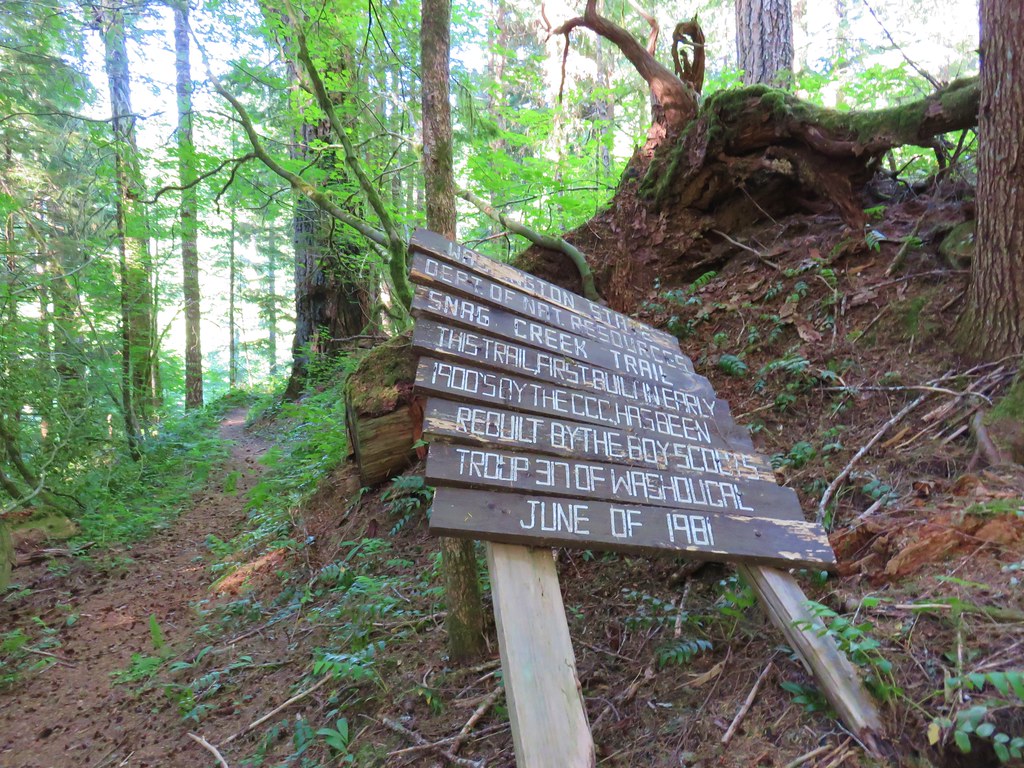
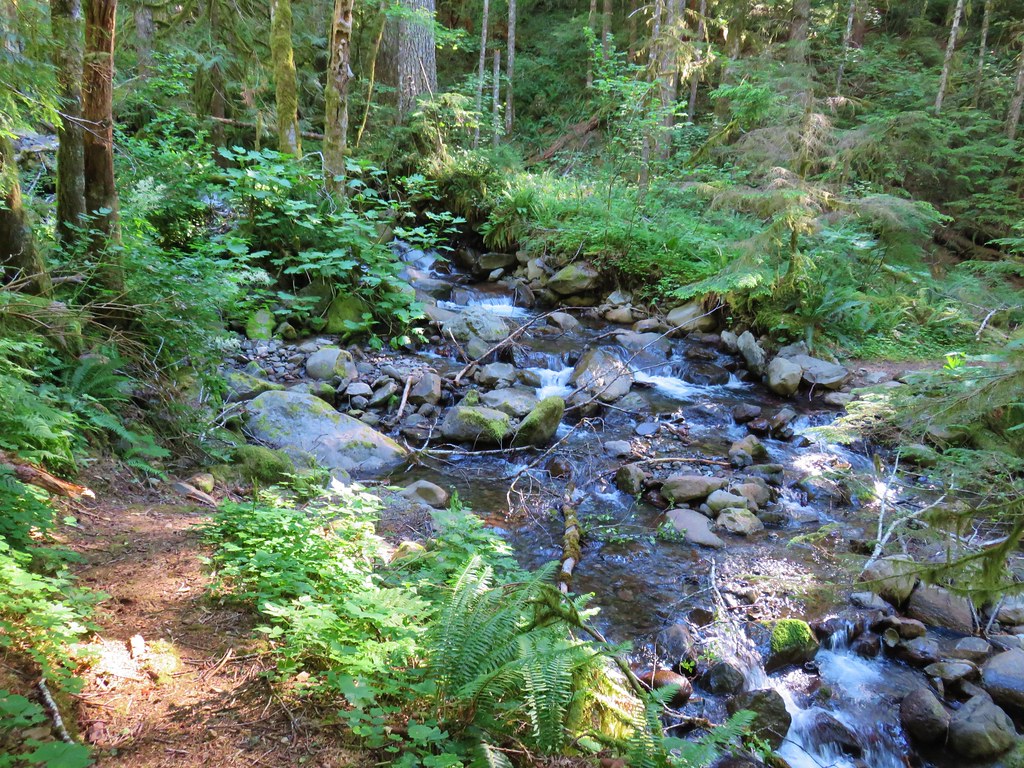


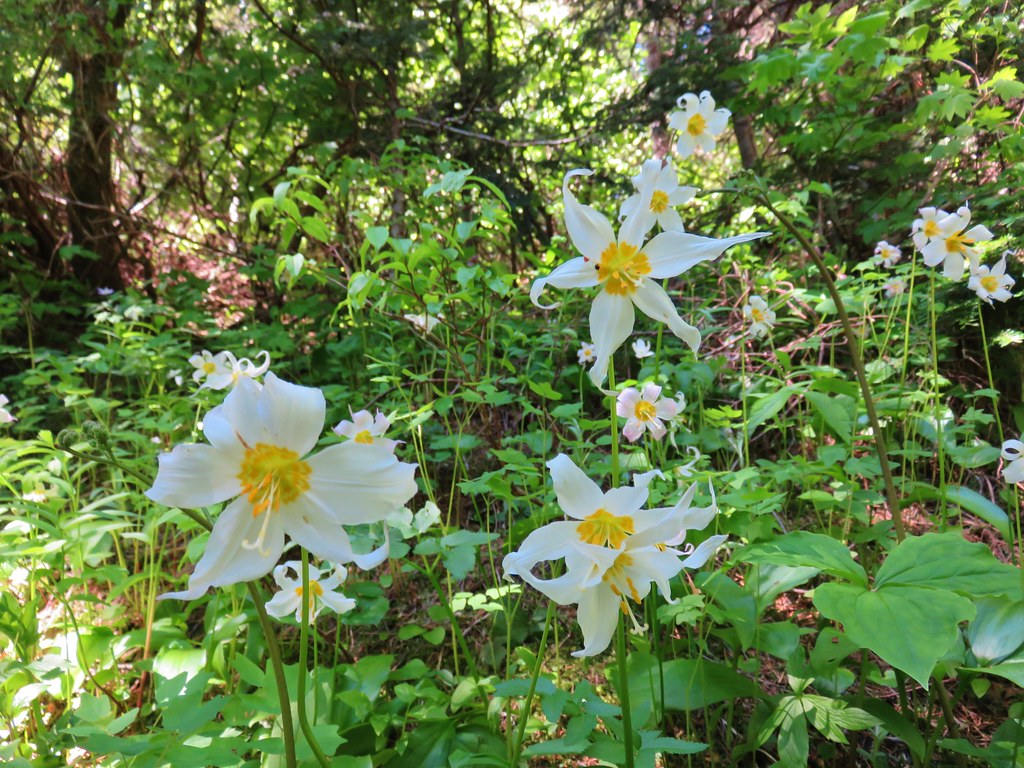
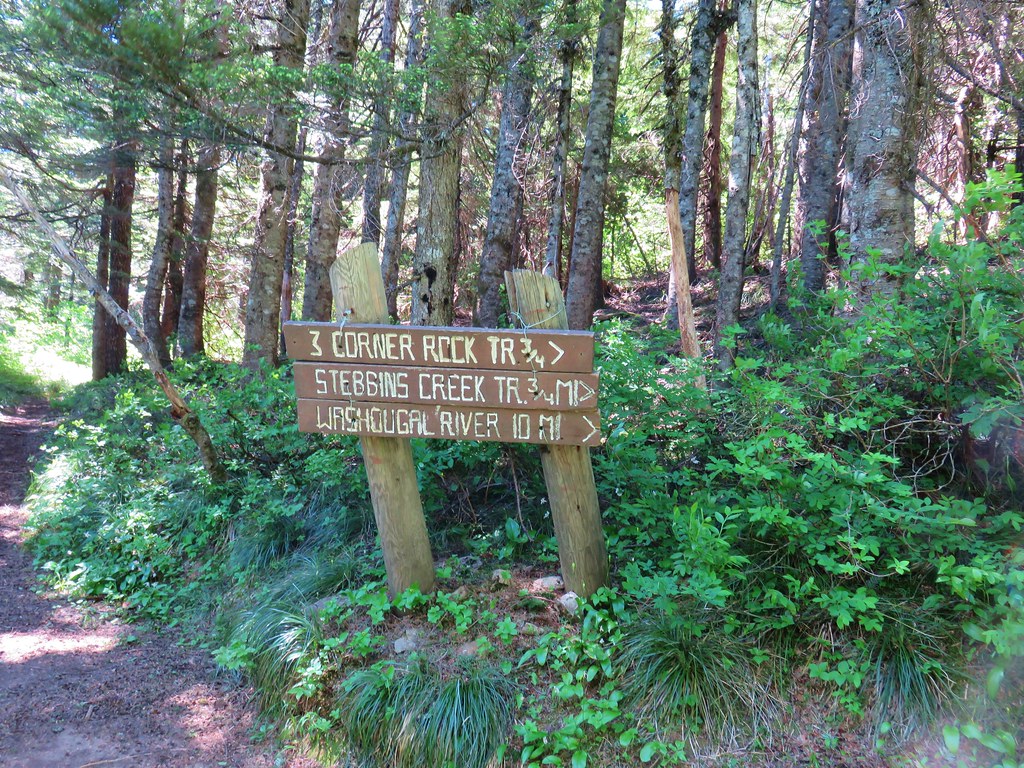
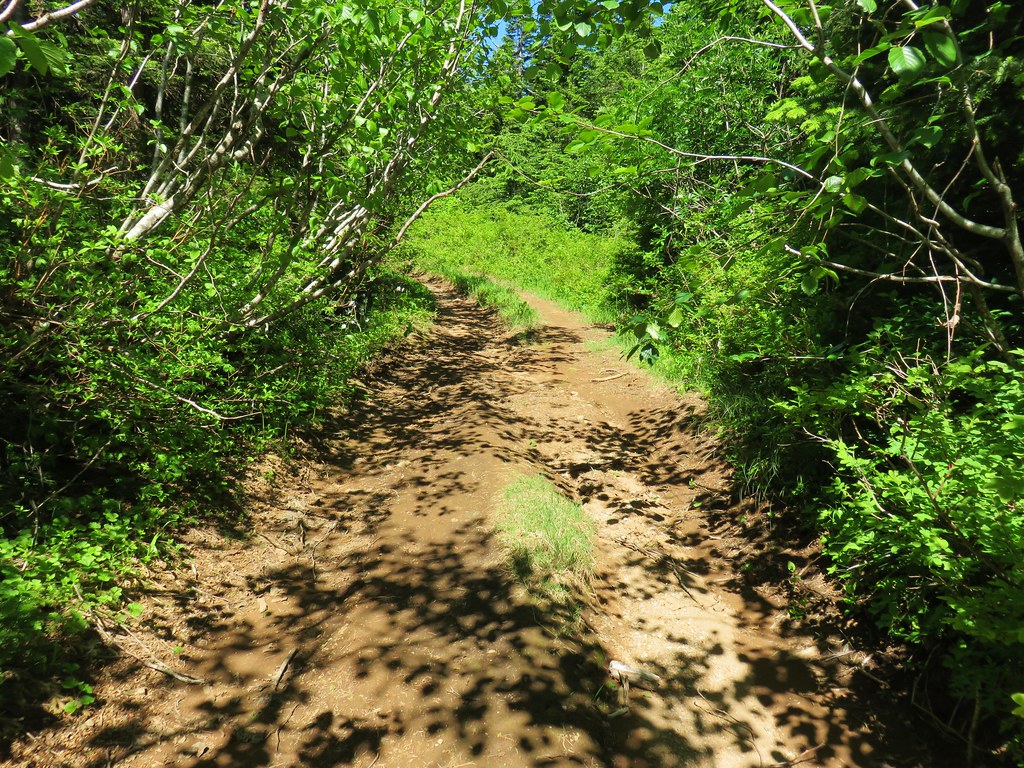

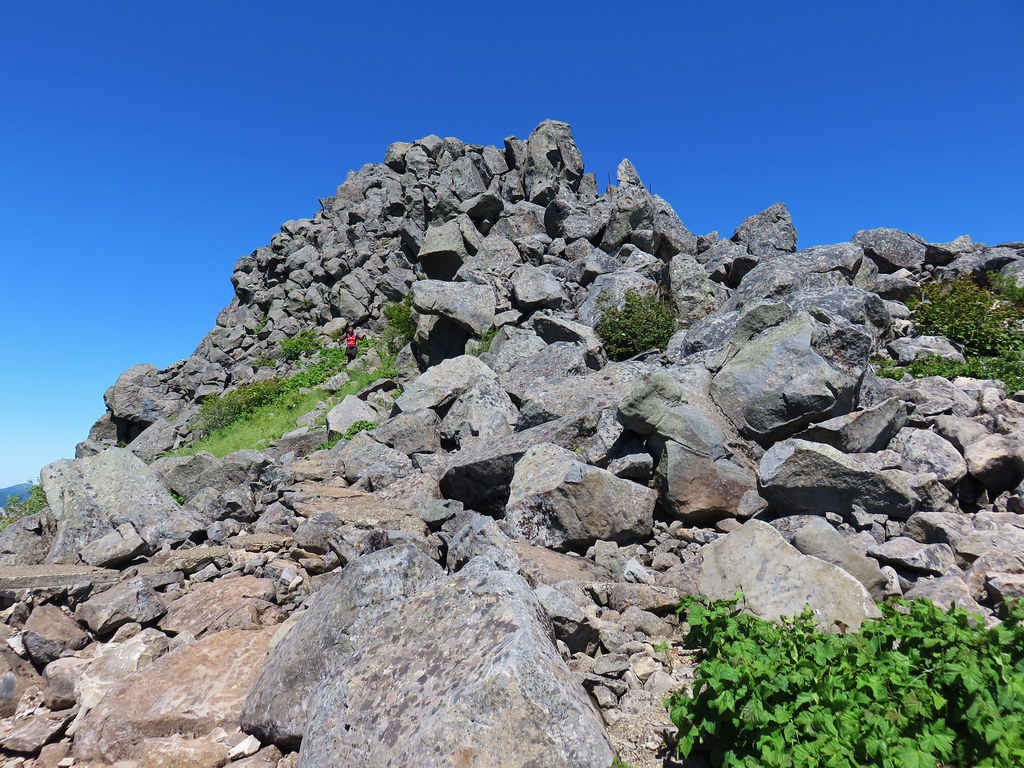

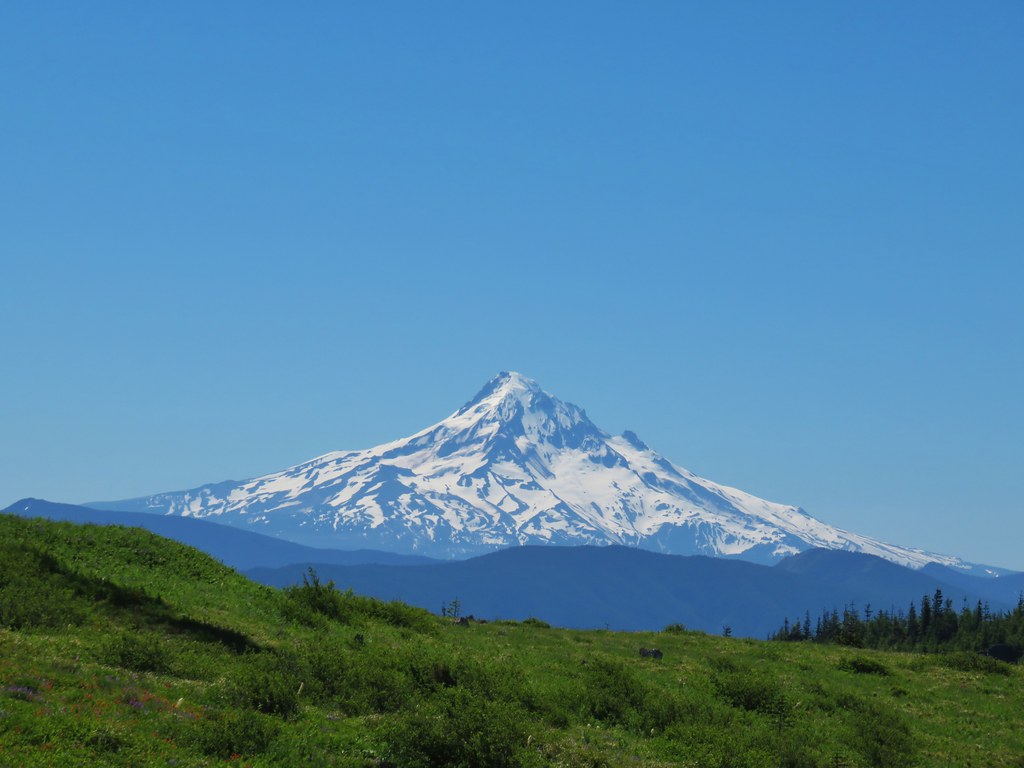 Mt. Hood
Mt. Hood Mt. Jefferson
Mt. Jefferson Mt. St. Helens
Mt. St. Helens Mt. Rainier
Mt. Rainier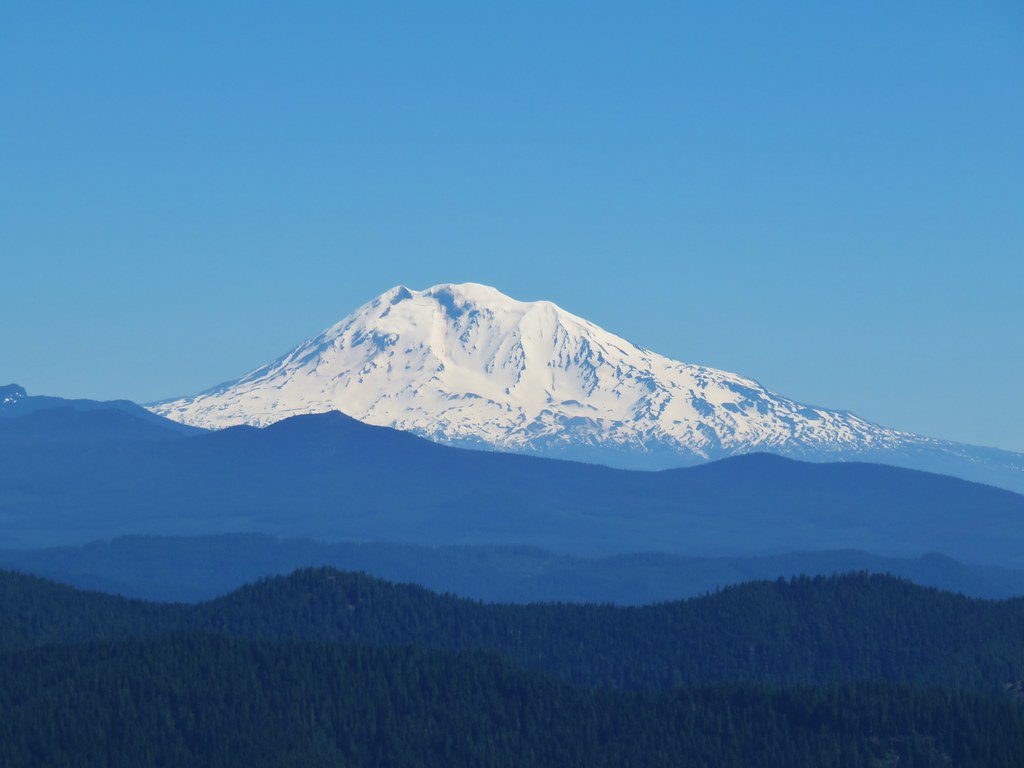 Mt. Adams
Mt. Adams Goat Rocks
Goat Rocks